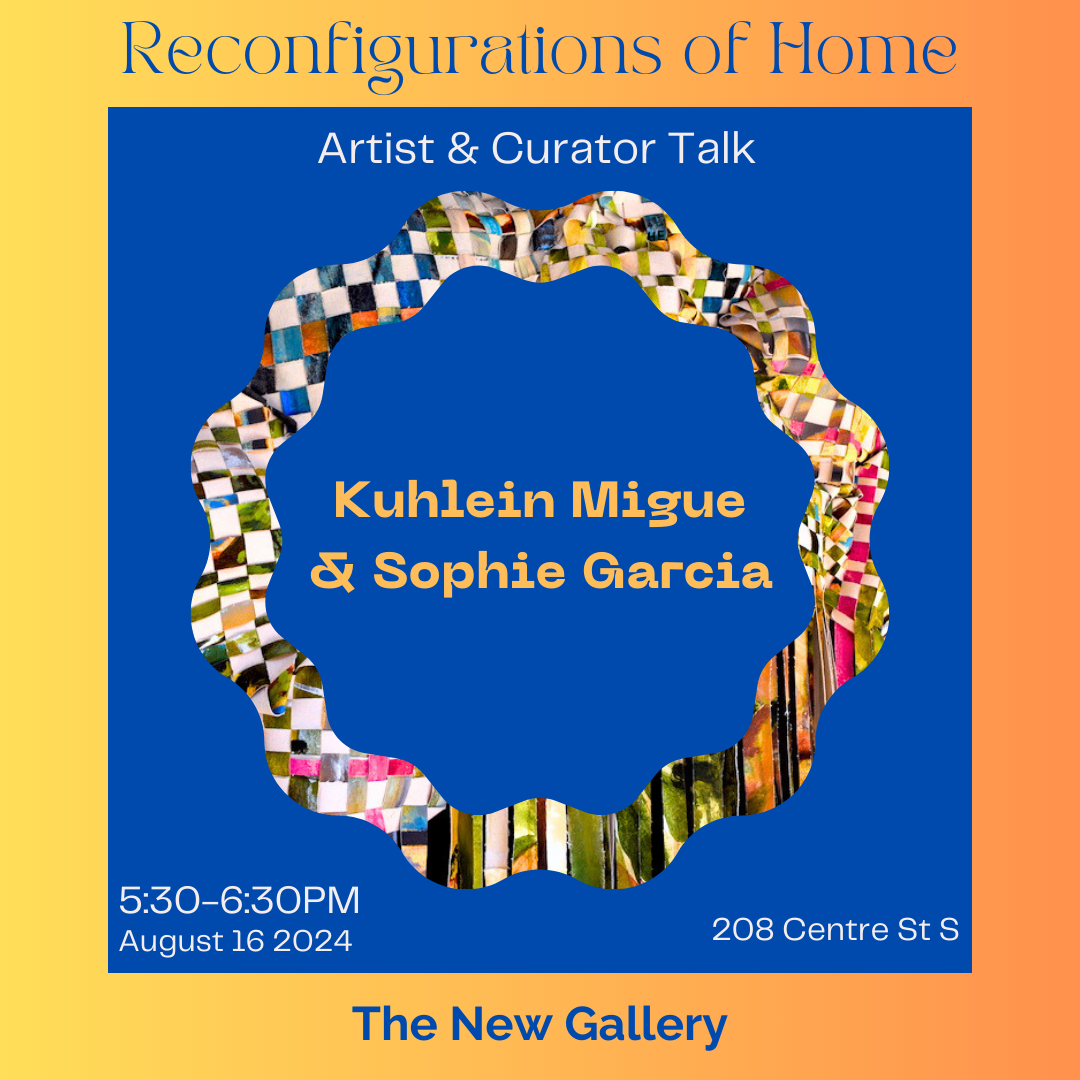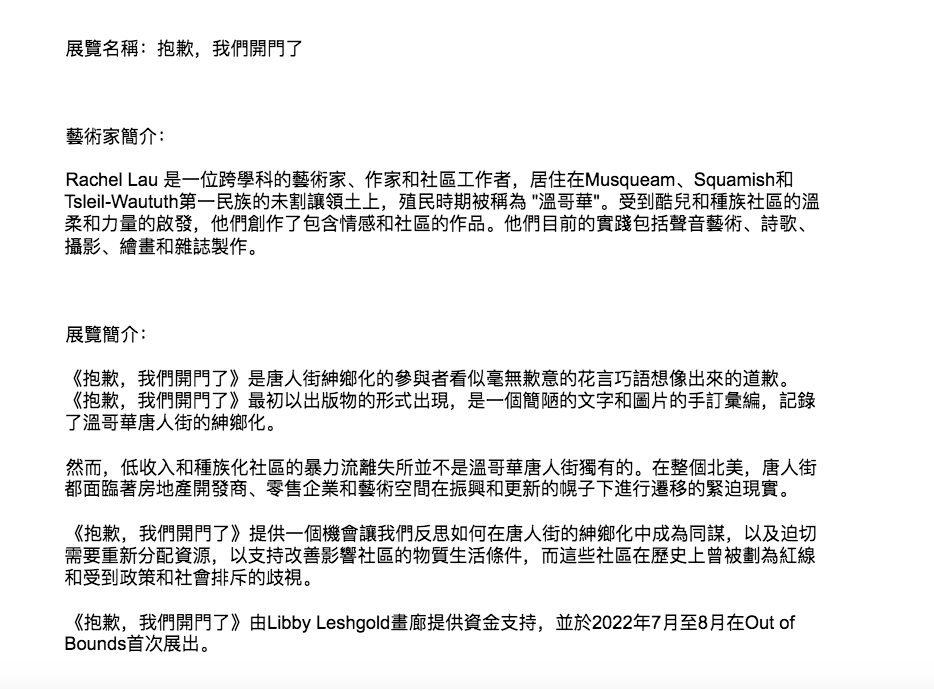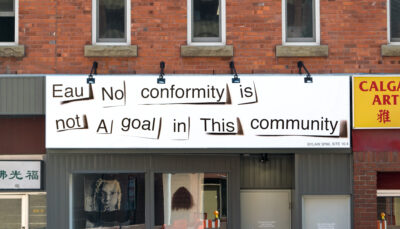Guide to Archival Holdings /
Our collection has been coming into being
as long as our organization has. Holdings include anything relating to The New
Gallery that staff saw value in preserving, including ephemera from our
programming, internal communications, correspondence between our staff or
volunteers and artists, and reference material on artist issues gathered by TNG
members since 1975. Visit the evolving finding aids below ︎︎︎ for an idea of what
is available.
In 2008, a collection of documentation relating to The New Gallery’s founding, organization, board materials, histories and reports, was deaccessioned to the Glenbow Archive for custody. If you are interested in material pertaining to the founding and early organization of TNG, visit the page for this collection at Alberta On Record.
Our most extensive collection is our artist and exhibition files. These files are continuously updated, with a folder added for every new exhibition. These collections are also in the process of being made fully available online. You can browse those already digitized by artist, year or exhibition location and type by using the links on the search page. If you browse by artist name, you will also find folder numbers corresponding to the physical archival files we hold about that artist. Occasionally, everything in that folder has been digitized, but often, further material is available for perusal in the physical file. If you’d like to browse the contents of these archives, please make an appointment by contacting one of our staff. They will pull the files you are interested in for your visit. Please cite the collection in your research with: [folder number], The New Gallery Archive, The New Gallery, Calgary.
In 2008, a collection of documentation relating to The New Gallery’s founding, organization, board materials, histories and reports, was deaccessioned to the Glenbow Archive for custody. If you are interested in material pertaining to the founding and early organization of TNG, visit the page for this collection at Alberta On Record.
Our most extensive collection is our artist and exhibition files. These files are continuously updated, with a folder added for every new exhibition. These collections are also in the process of being made fully available online. You can browse those already digitized by artist, year or exhibition location and type by using the links on the search page. If you browse by artist name, you will also find folder numbers corresponding to the physical archival files we hold about that artist. Occasionally, everything in that folder has been digitized, but often, further material is available for perusal in the physical file. If you’d like to browse the contents of these archives, please make an appointment by contacting one of our staff. They will pull the files you are interested in for your visit. Please cite the collection in your research with: [folder number], The New Gallery Archive, The New Gallery, Calgary.
Finding Aids
Library /
The resource centre library is currently
open for browsing and undergoing an organizational process. Books acquired by
The New Gallery have a focus on visual art, and can be used for artistic
inspiration, reference, or curatorial context. Books include art history
surveys, craft typologies, monographs on artists, and artist books, both small
and large. This collection occupies two shelves in the resource centre. The
library also holds a variety of art magazines, collected by staff and
associates throughout TNG’s history. An updating spreadsheet detailing our
magazine collection and book collection may be downloaded below ︎︎︎
Our library is still very small, so we do not currently have a program in place for borrowing from our collection. We also currently do not have a full list of holdings for our library, but our small collection is meant to be browsed. All are welcome to book the resource centre during office hours to explore our library and archive. To book time in the resource centre please email our Programming Coordinator, Jasmine at Jasmine@TheNewGallery.org
Our library is still very small, so we do not currently have a program in place for borrowing from our collection. We also currently do not have a full list of holdings for our library, but our small collection is meant to be browsed. All are welcome to book the resource centre during office hours to explore our library and archive. To book time in the resource centre please email our Programming Coordinator, Jasmine at Jasmine@TheNewGallery.org

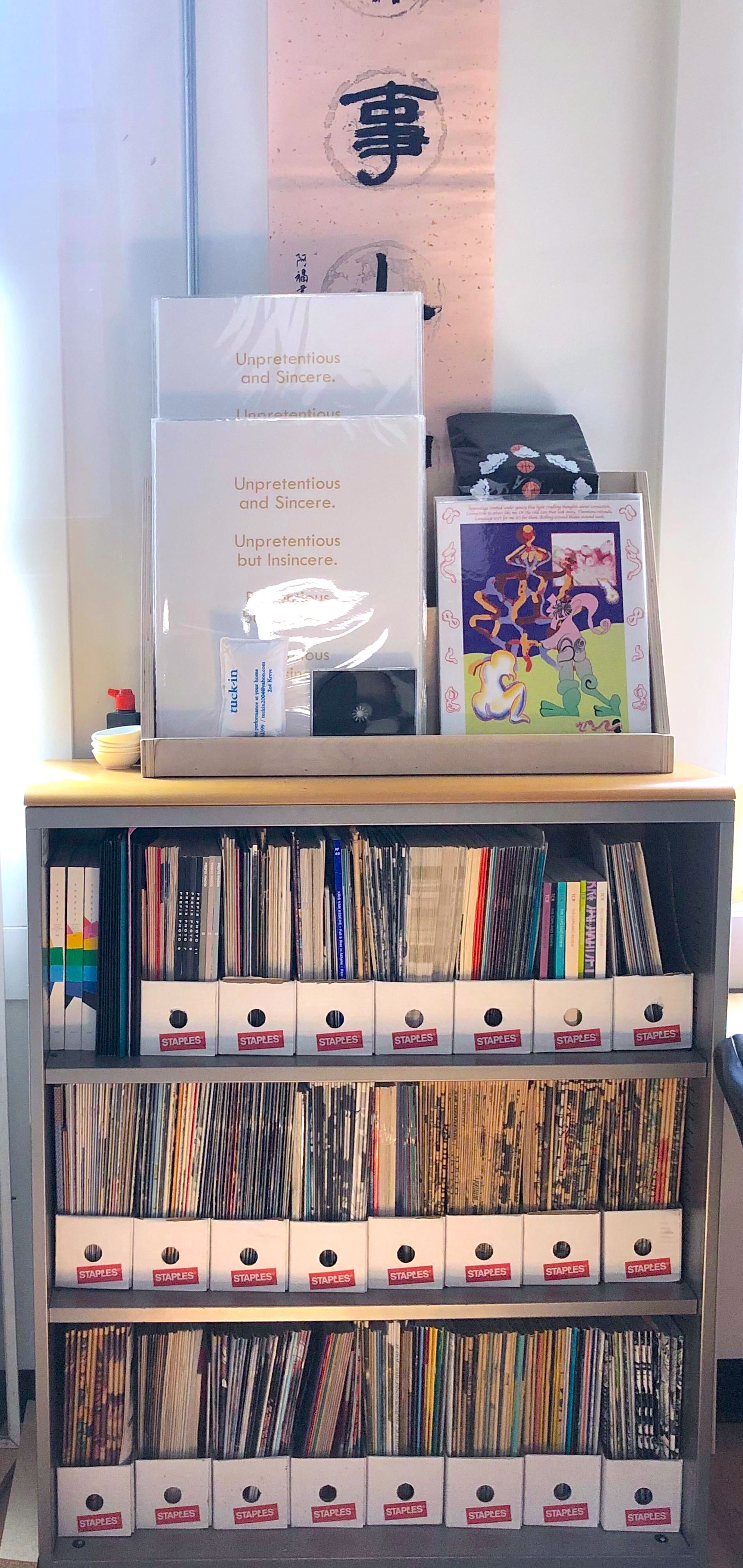

The New Gallery / Archive
Exhibitions by Location:
︎Main Space
︎Billboard 208
︎Mainframe
︎Offsite
︎+15 Window Exhibitions
︎Artist Trading Cards
Search Exhibitions:
︎Programming by Artist (Surname or Group)
︎Programming By Year
Programming by type:
︎Events
︎Public Programs
︎Artist Residencies
︎Fundraisers
Archival Guide
Collection
The New Gallery’s collection is a repository of materials dating from the founding of Clouds ‘n’ Water Gallery in 1975 that encompasses gallery activities, reference materials, artist correspondence, and exhibition ephemera. Over the course of our history, records have been retained and organized by an always-rotating, and always small, base of arts workers, leading to an archive that reflects the volatile fluctuations of artist run culture in both its contents and its methods of care.
Our collection may be useful for artistic or curatorial inspiration, and we encourage you to browse our material for ideas, provocations, and fruitful gaps, errors, or faults. Individual artist files may also be helpful for researchers interested in primary sources written or created by artists.
The New Gallery’s collection includes archival holdings, which encompasses our large artist and exhibition files, as well as other material, as well as our library, which contains a collection of books, magazines, and pamphlets.
Our collection documents the functions of our organization from 1975 to the present day, and continues to update with each exhibition. We are currently undergoing a digitization process, making selected exhibition materials and born-digital exhibition material content available online. Other born-digital material is being retained on our google drive archive.
If you are searching for a specific artist or show, please browse our search terms above. To learn more about our archival collection, please consult our finding aids. If you would like to request to view material from our archive in person, or if you would like more information about part of our collection, don’t hesitate to contact a member of our staff.
Artist Trading Cards
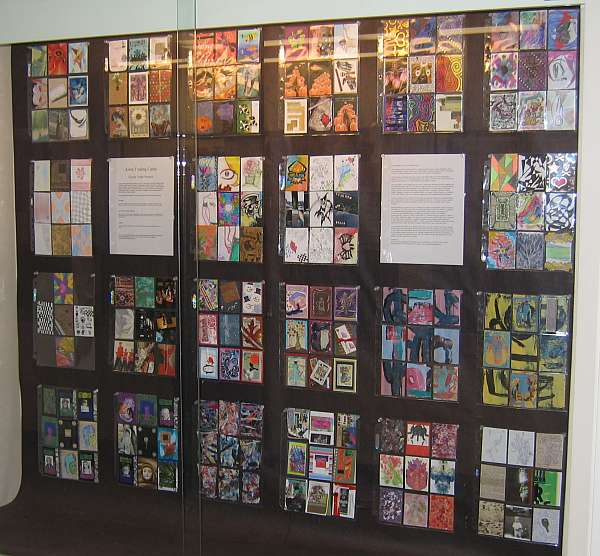
Artist Trading Cards (ATCs) are part of an effort to increase the public’s acceptance of art as an aspect of daily life, and to encourage artistic production not just consumption. ATCs encourage Calgarians, regardless of background, to become active in the local arts community. TNG began supporting ATCs in 1997 and used to support its activities by hosting Trading Card Sessions on the last Saturday of each month from 5:00 – 7:00 PM and by promoting ATCs provincially, with a touring ATC exhibition and workshop program through The Alberta Society of Artists (ASA) as part of Alberta Foundation of the Arts Travelling Exhibition Program (AFATEP).
ATCs are miniature works of art, created on 2.5 x 3.5 inch card stock. There are no restrictions as to medium (they run the gamut from painting to collage to rubberstamps to found images to the limits of your imagination), subject matter or number; they may be 2D or 3D, original, a series, an edition or a multiple.
Regular Trading Sessions were held on the last Saturday of every month from 5:00 to 7:00 PM at The New Gallery. Whatever your age or art background, you were invited to attend the Trading Sessions. (Observe for the first time if you like, but we guarantee you will be making your own cards soon after!)
History
The concept of Artist Trading Cards (ATC) was initiated by Zürich artist m. vänçi stirnemann and developed/promoted by himself and artist Cat Schick through INK.art&text in Zürich. In September 1997 Don Mabie (a.k.a. Chuck Stake) brought the first ATC session to Calgary at The New Gallery. Since that time regular Trading Sessions have been held every month. As many as 75 individuals have attended the monthly trading sessions with a core group of 30-35 people in regular attendance. The participants include artists, art students and members of the general public ranging from six to sixty years of age. The democratic and free exchange involved in trading these cards creates a space for the production of a vernacular art form outside of the hierarchical high-art world. In addition to the in-person trading sessions where artists meet to discuss and trade works the phenomena of ATCs continues to spread across the globe through trades via mail.
ATC Committee
Previously a Committee of The New Gallery, Artist Trading Cards Calgary is now an independent team and the organizing group which keeps ATCs going in Calgary and aids in growth of the ATC movement world wide. The official members of the committee were Paul Brown, Theo Nelson, June Hills, and now also Eija Koskinen, Kira Fowell. Honorary members are Chuck Stake (aka Don Mabie), Melody Nayler Keller, and Georgie Stone.
Links
http://www.artisttradingcards.org/
Follow Artist Trading Cards Calgary on instagram: @atccalgary
& use the hashtag #atcyyc
Archive
The New Gallery’s Resource Centre (208 Centre St. SE, upstairs) holds our Artist Trading Cards archive. Included in the collection are ATC event posters from 1998-2001, administrative files relating to ATC events and the ATC committee, programming materials from ATC events held at TNG, and TNG’s own collection of 225 ATCs. To view the collection or request more information, please contact our team.
Archive / By Artist or Curator Surname
#
2Bears, Jackson- A.100
A
Abel, Michael -G.100
Abeleva, Olga
Abson, Jill -G.113
Action Hero
Action Terroriste Socialement Acceptable (ATSA)
Adams, Adrienne -A.101, G.263
Adler, Dan
Adrian, Robert -A.102
Aebi, Iréne -A.422
Al-Issa, Asmaa -A.394
Alberta Now (EAG) -G.105
Albrecht, Hans -G.114
Alfon, Alden -G.278
Alexander, Maddie -A102.5
Alkalay, Andrea
Allard, Pierre -G.104
Allen, Wendy -A.103
Allikas, Barry -A.104
Allison, Carrie
Alvarado, Dan
Amantea, Gisele -A.105
Ambivalently Yours -A.440
Amir, Sefi -A.106
Amos, Barbara -G.110, G.247
Anderson, Colleen -A.107
Anderson, Jack -A.108, G.123, G.135, G.162.100, G.162.101, G.162.102
Anderson, Joseph -A.109
Anderson, Randy -A.110
Andresen, Kim -A.111
Anzola, Laura
Arberry, Dan -A.112
Archinuk, Tracy -G.303
Armitage-Ferguson, Stephanie -A.113
Armstrong, Leila -A.114
Armstrong, Neil -A.115
Arnott, Ryan - A.115.100
Arroyo, Victor
Art Tour Detour -G.115
asinnajaq
Askren, Patricia - G.114.100, G.124.100, G.215
Attoe, Karen
Authier, Melanie -A.116
Aust, Konrad
Ayling, Carl -A.117, G.149
Azad, Madeleine - A.117.100, G.114.100
Aziz, Sylvat -A.118, A.118.1, G.103
Abeleva, Olga
Abson, Jill -G.113
Action Hero
Action Terroriste Socialement Acceptable (ATSA)
Adams, Adrienne -A.101, G.263
Adler, Dan
Adrian, Robert -A.102
Aebi, Iréne -A.422
Al-Issa, Asmaa -A.394
Alberta Now (EAG) -G.105
Albrecht, Hans -G.114
Alfon, Alden -G.278
Alexander, Maddie -A102.5
Alkalay, Andrea
Allard, Pierre -G.104
Allen, Wendy -A.103
Allikas, Barry -A.104
Allison, Carrie
Alvarado, Dan
Amantea, Gisele -A.105
Ambivalently Yours -A.440
Amir, Sefi -A.106
Amos, Barbara -G.110, G.247
Anderson, Colleen -A.107
Anderson, Jack -A.108, G.123, G.135, G.162.100, G.162.101, G.162.102
Anderson, Joseph -A.109
Anderson, Randy -A.110
Andresen, Kim -A.111
Anzola, Laura
Arberry, Dan -A.112
Archinuk, Tracy -G.303
Armitage-Ferguson, Stephanie -A.113
Armstrong, Leila -A.114
Armstrong, Neil -A.115
Arnott, Ryan - A.115.100
Arroyo, Victor
Art Tour Detour -G.115
asinnajaq
Askren, Patricia - G.114.100, G.124.100, G.215
Attoe, Karen
Authier, Melanie -A.116
Aust, Konrad
Ayling, Carl -A.117, G.149
Azad, Madeleine - A.117.100, G.114.100
Aziz, Sylvat -A.118, A.118.1, G.103
B
Baars, Ab
Bachmann, Ingrid -A.119
Baczynski Ryan & Smith -A.120
Badrin, Omar -A.122
Baigent, Jane -G.244, G.244.1
Baily, Derek -A.121
Baker, Cindy -A.124, G.193, G.200, G.256.100
Baker, Griffith Aaron -A.123
Bakker, Conrad -G.256
Balcaen, Jo-Anne -A.124.100
Balfour, Barbara McGill -A.125
Balz, Suzan Dionne -G.130
Bampton, Brooke -A.127, G.149
Banana, Anna -A.126, G.187, G.257.2, G.304
Bandura, Phillip -A.128
Bankey, Miriam -A.129
Bannerman, James -A.130
Bannerman, Maja -A.131
Barbáchano, Pedro -A.132.5
Barbier, Sally -A.133, A.134, G.204.100
Barbour, Dave -G.234.100
Bareham, Dean -G.171
Baril, Celine -A.135
Barker, Charlotte - A.135.100
Barnson, Kathy -A.136
Bartholomew, Sophia -A.137
Bartol, Alana -A.138
Barua, Kiki -G.291
Battle, Christina
Baxter, Iain -G.198, G.238, G.311
Baylon, Jordan
Beal, Kyle
Beam, Robert -A.139
Beauchamps, Ron -A.139.100
beaulieu, derek -A.140, G.267
Beck, Sarah -G.290
Beckly, Steven -A.141
Beef, Joe (Michael Haslam) -A.142
Belanger, Erin -G.291
Belcourt, David -A.143
Bell, Wade -G.172
Bellas, Benjamin -A.141
Belliveau, Elisabeth -A.144
Bender, Arnold -G.106
Benesiinaabandan, Scott
Bennett, Brent - G.124.100, G.234.300
Bennett, Rick -G.234.100
benni
Berg, Eddie -A.145
Berg, Nowell -A.145.100
Berquist, Douglas -A.145.100
Berry, Melissa -G.291
Berscheid, Helen -A.146
Besant, Derek
Bessette, Myriam -G.129.100
Bethune-Leamen, Katie
Bewley, Jon -A.147
Bickel, Barbara -A.148
Biebrich, Tamara Rae -G.265
Biedak, Louis -G.108
Bienvenue, Marcella -A.149, G.148, G.162.100, G.162.101, G.162.102, G.198, G.224, G.224.1
Bierk, David -G.113
Bigras-Burrogano, Frederic
Bill
Bilsen, Joke Van -A.665
Binder-Ouellette, Alison -G.130
Birhanu, Eva
Birnie, Colin -A.150
Birse, Ian -A.151, G.149, G.211
Bishop, James -A.152
Black, Anthea -G.193
Black, Byron -A.153
Black, Lascelles -A.154, G.310
Black, Liam
Blackwell, Adrian -A.155, G.208.200
Blanchard, Sam -A.156
Blatherwick, David -A.157
Blom, Monique -A.158
Bloom, Tony -G.124.50
Blouin, René -A.159
Blyth, Michael -A.160
Boisvert, Cynthia -G.198
Bök, Christian
Bond, Eleanor -A.161, G.207, G.301
Bondaroff, Carole -G.101, G.114.100, G.120
Borch, Gerald -A.162
Bote, Tivadar -G.118
Bouabane, Kotama
Bourgault, Rébecca -G.244, G.244.1
Bowers, Harry - G.234.200
Boyne, Chris -A.163
Boyle, Hannah -G.117
Boyle, John -G.113
Bozic, Susan -A.164
Bozdarov, Atanas -A.163.5
bp, Nichol -A.540
Brace, Brad -A.165
Bradley, Maureen - G.158
Brady, Lee -G.174.200
Brant, Jennifer
Brawley, Dawn -G.118
Brawn, Lisa -A.166
Brdar, Nick -A.167
Brennan, Blair
Brent, Rodney “Guitarsplat” - G.149
Bresnahan, Keith
Bristol, Joanne -G.256.100
Brodie, Jim -G.124.100, G.145.100
Brookes, Chris -A.168
Brouwers, Stephen -A.169
Brown, Caitlind -G.291, G.292
Brown, Collin
Brown, Dennis -A.170
Brown, Janet -G.303.100
Brownoff, Alan -A.171
Bruckner, Gary -G.106
Bruneau, Serge -G.113
Brunel, Cookie
Brunel, Nicole
Buckland, Michael -A.172
Buchanan, Heather -G.100
Bucknell, Lea
Budsberg, Brent -G.309
Buis, Doug -A.173
Bunnell, Alexa
Bureau, Patrick L. -G.102
Burger, Steve -A.174, G.216
Burisch, Nicole -G.193
Burnett, Murdoch -A.175, G.103
Burns, Kay -A.176, G.278
Burroughs, William S. -A.177
Busby, Billie Ray -G.253.100
Bush, Dana -G.253.100
Butler, Jack
Butler, Sheila -A.178, G.207, G.302
Butters, Thomas J
Byrne, Peter -A.179
Bachmann, Ingrid -A.119
Baczynski Ryan & Smith -A.120
Badrin, Omar -A.122
Baigent, Jane -G.244, G.244.1
Baily, Derek -A.121
Baker, Cindy -A.124, G.193, G.200, G.256.100
Baker, Griffith Aaron -A.123
Bakker, Conrad -G.256
Balcaen, Jo-Anne -A.124.100
Balfour, Barbara McGill -A.125
Balz, Suzan Dionne -G.130
Bampton, Brooke -A.127, G.149
Banana, Anna -A.126, G.187, G.257.2, G.304
Bandura, Phillip -A.128
Bankey, Miriam -A.129
Bannerman, James -A.130
Bannerman, Maja -A.131
Barbáchano, Pedro -A.132.5
Barbier, Sally -A.133, A.134, G.204.100
Barbour, Dave -G.234.100
Bareham, Dean -G.171
Baril, Celine -A.135
Barker, Charlotte - A.135.100
Barnson, Kathy -A.136
Bartholomew, Sophia -A.137
Bartol, Alana -A.138
Barua, Kiki -G.291
Battle, Christina
Baxter, Iain -G.198, G.238, G.311
Baylon, Jordan
Beal, Kyle
Beam, Robert -A.139
Beauchamps, Ron -A.139.100
beaulieu, derek -A.140, G.267
Beck, Sarah -G.290
Beckly, Steven -A.141
Beef, Joe (Michael Haslam) -A.142
Belanger, Erin -G.291
Belcourt, David -A.143
Bell, Wade -G.172
Bellas, Benjamin -A.141
Belliveau, Elisabeth -A.144
Bender, Arnold -G.106
Benesiinaabandan, Scott
Bennett, Brent - G.124.100, G.234.300
Bennett, Rick -G.234.100
benni
Berg, Eddie -A.145
Berg, Nowell -A.145.100
Berquist, Douglas -A.145.100
Berry, Melissa -G.291
Berscheid, Helen -A.146
Besant, Derek
Bessette, Myriam -G.129.100
Bethune-Leamen, Katie
Bewley, Jon -A.147
Bickel, Barbara -A.148
Biebrich, Tamara Rae -G.265
Biedak, Louis -G.108
Bienvenue, Marcella -A.149, G.148, G.162.100, G.162.101, G.162.102, G.198, G.224, G.224.1
Bierk, David -G.113
Bigras-Burrogano, Frederic
Bill
Bilsen, Joke Van -A.665
Binder-Ouellette, Alison -G.130
Birhanu, Eva
Birnie, Colin -A.150
Birse, Ian -A.151, G.149, G.211
Bishop, James -A.152
Black, Anthea -G.193
Black, Byron -A.153
Black, Lascelles -A.154, G.310
Black, Liam
Blackwell, Adrian -A.155, G.208.200
Blanchard, Sam -A.156
Blatherwick, David -A.157
Blom, Monique -A.158
Bloom, Tony -G.124.50
Blouin, René -A.159
Blyth, Michael -A.160
Boisvert, Cynthia -G.198
Bök, Christian
Bond, Eleanor -A.161, G.207, G.301
Bondaroff, Carole -G.101, G.114.100, G.120
Borch, Gerald -A.162
Bote, Tivadar -G.118
Bouabane, Kotama
Bourgault, Rébecca -G.244, G.244.1
Bowers, Harry - G.234.200
Boyne, Chris -A.163
Boyle, Hannah -G.117
Boyle, John -G.113
Bozic, Susan -A.164
Bozdarov, Atanas -A.163.5
bp, Nichol -A.540
Brace, Brad -A.165
Bradley, Maureen - G.158
Brady, Lee -G.174.200
Brant, Jennifer
Brawley, Dawn -G.118
Brawn, Lisa -A.166
Brdar, Nick -A.167
Brennan, Blair
Brent, Rodney “Guitarsplat” - G.149
Bresnahan, Keith
Bristol, Joanne -G.256.100
Brodie, Jim -G.124.100, G.145.100
Brookes, Chris -A.168
Brouwers, Stephen -A.169
Brown, Caitlind -G.291, G.292
Brown, Collin
Brown, Dennis -A.170
Brown, Janet -G.303.100
Brownoff, Alan -A.171
Bruckner, Gary -G.106
Bruneau, Serge -G.113
Brunel, Cookie
Brunel, Nicole
Buckland, Michael -A.172
Buchanan, Heather -G.100
Bucknell, Lea
Budsberg, Brent -G.309
Buis, Doug -A.173
Bunnell, Alexa
Bureau, Patrick L. -G.102
Burger, Steve -A.174, G.216
Burisch, Nicole -G.193
Burnett, Murdoch -A.175, G.103
Burns, Kay -A.176, G.278
Burroughs, William S. -A.177
Busby, Billie Ray -G.253.100
Bush, Dana -G.253.100
Butler, Jack
Butler, Sheila -A.178, G.207, G.302
Butters, Thomas J
Byrne, Peter -A.179
Cabri, Louis
Cairns, Cassie - G.123.200
Caldwell, Alex -G.240
Caldwell, Molly JF -A.179.100
Calgary Chinese Community Service Association (CCCSA)
Campbell, Blaine
Campbell, Carol -A.474, G.129
Campbell, Colleen -G.124.100
Campbell, Kasie -A.179.15
Campbell, Michael -A.180, A.181, G.256
Campbell, Tim -G.145, G.205, G.205.1, G.205.2, G.239, G.286, G.303
Canadien, Bruno -A.182
Capune, Simone -G.117
Cardiff, Janet -A.183, G.190
Cardinal-Schubert, Joane -A.183.100, G.103, G.160, G.197, G.280
Carlos, Marbella -G.292
Carlson, William
Caron, Quentin -A.105, G.162.100, G.162.101, G.162.102
Carrión, Ulises -A.184, G.159
Carson, Bob -A.262
Carte, Suzanne
Carter, Kent -A.422
Carwadine, Mary -G.118
Casey, Dave -A.185, G.194
Cassells, Laara -A.186
Castrée, Genevieve -A.187
Caulfield, Sean -A.188
Celli, Joseph -A.189
Center for Tactical Magic -G.256
Centofanti, Melissa -A.190
Century, Michael -A.190.100
Chadbourne, Eugene -A.191, G.255
Chalke, John -A.658, G.204.100, G.257, G.257.1
Chambers, Jonathon -G.106
Chan, Ed -G.109
Chan, Stephen
Charles, Jayden
Charron, Robert -A.192
Charzewski, Jarod -A.193
Chaykowski, Natasha
Che, Kaili
Chellas, Merry -A.194
Cheney, David -A.195, G.240
Cheng, Qian
Cherniavsky, Pippa -A.196, G.186
Cheta, Bogdan
Cheung, Christine -A.197
Cheung, Joni “Snack-Witch” -G. 168.05
Cheung, Raeann Kit-Yee -G.315.5
Chitty, Elizabeth - G.300
Cho, Diana Un-Jin -A.198
Chordalone, Max -A.199
Christiansen, Cam -A.200
Christianson, Shirley - A.225.100
Christopher, Gordon -A.474, G.129
Chu, Josie -A.201, G.156, G.257, G.257.1
Clamp, Alannah -G.146
Clark, David -A.202, A.203.1
Clark, Elizabeth -A.203, G.118, G.119, G.257, G.257.1
Clark, Joe -A.204
Clark, Robert -A.204.100
Clarke, Michèle Pearson -A.204.15
Claxton, Dana
Clément, Jacques -A.205
Clintberg, Mark -G.278
Clover Living -G.315.5
Coleman, Victor -A.207, G.182
Coles, Maury -A.476
Colín, Carlos -A.207.5
Commanda, Marcel -G.245, G.245.1
Connor, Linda - G.234.200
Connolly, Brian -A.208
Connolly, R.P. -A.209
Conway, Jenny -A.210
Cook, Christine -G.171, G.221
Cook, Jo -A.211
Cooley, Alison
Coolidge, Michael
Corless, Marianne -A.212
Corry, Corrine -A.213
Cottingham, Steven
Coultas, Stella -G.124.100
Cousins, Charles (C.K.) -A.214, G.106, G.190, G.257, G.257.1
Coutts-Smith, Kenneth -A.215, G.112
Craig, Ken -A.216, G.134, G.194
Cram, Paul -A.216.100, G.191
Cran, Chris - A.216.200, G.163, G.198
Creighton-Kelly, Chris -A.217, G.103, G.160
Crespin, Augusto -G.245, G.245.1
Crighton, Jennifer
Crispin, Sterling
Crop Eared Wolf, Marjie -A.219
Crozier, Lorna (Uher) -A.220
Curnoe, Greg -G.113
Curry, Derek
Cuthland, Ruth -A.275
Curtis, David -A.221, G.198
Curwin, Will -A.222
Curzon, Daniel -A.223
Cairns, Cassie - G.123.200
Caldwell, Alex -G.240
Caldwell, Molly JF -A.179.100
Calgary Chinese Community Service Association (CCCSA)
Campbell, Blaine
Campbell, Carol -A.474, G.129
Campbell, Colleen -G.124.100
Campbell, Kasie -A.179.15
Campbell, Michael -A.180, A.181, G.256
Campbell, Tim -G.145, G.205, G.205.1, G.205.2, G.239, G.286, G.303
Canadien, Bruno -A.182
Capune, Simone -G.117
Cardiff, Janet -A.183, G.190
Cardinal-Schubert, Joane -A.183.100, G.103, G.160, G.197, G.280
Carlos, Marbella -G.292
Carlson, William
Caron, Quentin -A.105, G.162.100, G.162.101, G.162.102
Carrión, Ulises -A.184, G.159
Carson, Bob -A.262
Carte, Suzanne
Carter, Kent -A.422
Carwadine, Mary -G.118
Casey, Dave -A.185, G.194
Cassells, Laara -A.186
Castrée, Genevieve -A.187
Caulfield, Sean -A.188
Celli, Joseph -A.189
Center for Tactical Magic -G.256
Centofanti, Melissa -A.190
Century, Michael -A.190.100
Chadbourne, Eugene -A.191, G.255
Chalke, John -A.658, G.204.100, G.257, G.257.1
Chambers, Jonathon -G.106
Chan, Ed -G.109
Chan, Stephen
Charles, Jayden
Charron, Robert -A.192
Charzewski, Jarod -A.193
Chaykowski, Natasha
Che, Kaili
Chellas, Merry -A.194
Cheney, David -A.195, G.240
Cheng, Qian
Cherniavsky, Pippa -A.196, G.186
Cheta, Bogdan
Cheung, Christine -A.197
Cheung, Joni “Snack-Witch” -G. 168.05
Cheung, Raeann Kit-Yee -G.315.5
Chitty, Elizabeth - G.300
Cho, Diana Un-Jin -A.198
Chordalone, Max -A.199
Christiansen, Cam -A.200
Christianson, Shirley - A.225.100
Christopher, Gordon -A.474, G.129
Chu, Josie -A.201, G.156, G.257, G.257.1
Clamp, Alannah -G.146
Clark, David -A.202, A.203.1
Clark, Elizabeth -A.203, G.118, G.119, G.257, G.257.1
Clark, Joe -A.204
Clark, Robert -A.204.100
Clarke, Michèle Pearson -A.204.15
Claxton, Dana
Clément, Jacques -A.205
Clintberg, Mark -G.278
Clover Living -G.315.5
Coleman, Victor -A.207, G.182
Coles, Maury -A.476
Colín, Carlos -A.207.5
Commanda, Marcel -G.245, G.245.1
Connor, Linda - G.234.200
Connolly, Brian -A.208
Connolly, R.P. -A.209
Conway, Jenny -A.210
Cook, Christine -G.171, G.221
Cook, Jo -A.211
Cooley, Alison
Coolidge, Michael
Corless, Marianne -A.212
Corry, Corrine -A.213
Cottingham, Steven
Coultas, Stella -G.124.100
Cousins, Charles (C.K.) -A.214, G.106, G.190, G.257, G.257.1
Coutts-Smith, Kenneth -A.215, G.112
Craig, Ken -A.216, G.134, G.194
Cram, Paul -A.216.100, G.191
Cran, Chris - A.216.200, G.163, G.198
Creighton-Kelly, Chris -A.217, G.103, G.160
Crespin, Augusto -G.245, G.245.1
Crighton, Jennifer
Crispin, Sterling
Crop Eared Wolf, Marjie -A.219
Crozier, Lorna (Uher) -A.220
Curnoe, Greg -G.113
Curry, Derek
Cuthland, Ruth -A.275
Curtis, David -A.221, G.198
Curwin, Will -A.222
Curzon, Daniel -A.223
D
Dajczer, Brigitte -A.224, G.263
Dalziel, Frank - A.224.100, G.114.100, G.124.50, G.124.100
Dancers’ Studio West
Dang, Qui Dac -G.124.100
Danker, Carl -G.120
David, Paul -G.106
Davidson, Sarah
Davis, Judy -A.225, A.225.100, G.101, G.216
Davis, Karrie -A.226
Day, Kevin
Deacon, Peter -A227
Dean, John -G.215, G.257, G.257.1, G.303.100
Decker, Ken -A228, A288.100
DeHaan, Jason -A.229
Delage, Guy -A.229.100
Delve, Ryan
Demchuk, Kristin -A.230
Demkiw, Janis -A.231
Dempsey, Shawna -A.232, G.199, G.265
Demuth, Michel -A.233, G.160
Dennett, Derek
Dennis, Danièle -A.234
Dennis, Sheila -A.235
Dennison, Noland -A.236, G.234
Denoon, Amber -A.237, G.257, G.257.1
DesChene, Wendy -G.212
Deslile, Cindy
De Souza, Shyra -A.238
Diamond, Dallas -A.239
Dicey, Mark -A.240, G.106, G.107, G.118, G.119, G.122, G.134, G.162.100, G.162.101, G.162.102, G.174.100, G.187, G.214.100, G.218.100, G.226, G.232, G.238,
G.257, G.257.1, G.306, G.307
Dickson, Jennifer -G.113
Diduch, Luba -A.241
Diep, Vi An -G.149, G.263
Dierdorff, Brooks -A.139, A.242
Doerksen, Hannah -G.100
Donahue, Mary -G.244, G.244.1
Dong, Chun Hua Catherine -A.243
Dong, Qui Dac - G.114.100
Dong, Yuxiang -G.271.100
Donoghue, Lynn -G.113
Doremus, Ernest - G.75, G.114.100, G.124.50
Dorrer, Angela - A.244
Doucet, Hannah -A.245
Doyle, Dan (sam d.d. iiguana) -A.246
Doyle, Keith H. -A.246.100, G.181
Dragan, Miruna
Dragojevic, Vuk
Dragu, Margaret -A.247
Drummond, Jeremy -A.248
Duchesne, Corrine -A.253
Dueck, Jonathan -A.249
Duff, Tagny -A.250
Dufour, Garry -A.251
Dufresne, Leah -G.118
Dufresne, Martin
Dugas, Daniel -G.304.100
Dunning, Alan -A.252, G.162.100, G.162.101, G.162.102, G.176, G.239, G.257, G.257.1, G.273, G.274
Dupuis, Robin -G.129.100
Dutton, Paul
Dalziel, Frank - A.224.100, G.114.100, G.124.50, G.124.100
Dancers’ Studio West
Dang, Qui Dac -G.124.100
Danker, Carl -G.120
David, Paul -G.106
Davidson, Sarah
Davis, Judy -A.225, A.225.100, G.101, G.216
Davis, Karrie -A.226
Day, Kevin
Deacon, Peter -A227
Dean, John -G.215, G.257, G.257.1, G.303.100
Decker, Ken -A228, A288.100
DeHaan, Jason -A.229
Delage, Guy -A.229.100
Delve, Ryan
Demchuk, Kristin -A.230
Demkiw, Janis -A.231
Dempsey, Shawna -A.232, G.199, G.265
Demuth, Michel -A.233, G.160
Dennett, Derek
Dennis, Danièle -A.234
Dennis, Sheila -A.235
Dennison, Noland -A.236, G.234
Denoon, Amber -A.237, G.257, G.257.1
DesChene, Wendy -G.212
Deslile, Cindy
De Souza, Shyra -A.238
Diamond, Dallas -A.239
Dicey, Mark -A.240, G.106, G.107, G.118, G.119, G.122, G.134, G.162.100, G.162.101, G.162.102, G.174.100, G.187, G.214.100, G.218.100, G.226, G.232, G.238,
G.257, G.257.1, G.306, G.307
Dickson, Jennifer -G.113
Diduch, Luba -A.241
Diep, Vi An -G.149, G.263
Dierdorff, Brooks -A.139, A.242
Doerksen, Hannah -G.100
Donahue, Mary -G.244, G.244.1
Dong, Chun Hua Catherine -A.243
Dong, Qui Dac - G.114.100
Dong, Yuxiang -G.271.100
Donoghue, Lynn -G.113
Doremus, Ernest - G.75, G.114.100, G.124.50
Dorrer, Angela - A.244
Doucet, Hannah -A.245
Doyle, Dan (sam d.d. iiguana) -A.246
Doyle, Keith H. -A.246.100, G.181
Dragan, Miruna
Dragojevic, Vuk
Dragu, Margaret -A.247
Drummond, Jeremy -A.248
Duchesne, Corrine -A.253
Dueck, Jonathan -A.249
Duff, Tagny -A.250
Dufour, Garry -A.251
Dufresne, Leah -G.118
Dufresne, Martin
Dugas, Daniel -G.304.100
Dunning, Alan -A.252, G.162.100, G.162.101, G.162.102, G.176, G.239, G.257, G.257.1, G.273, G.274
Dupuis, Robin -G.129.100
Dutton, Paul
E
Edgar, Linda -A.254, G.124.50
Edmonson, Greg
Edmundson, Grier-A.255
Edwards, Richard - G.162.100, G.162.101, G.162.102, G.198, G.216
Eggermont, Marjan -A.256, G.120
Ehrenworth, Daniel -A.106, A.257
Eigenkind, Heidi -G.265
Eisen, Johnnie -A.258
Eisler, John -A.259, G.230
Elder, Bruce -G.113
Eliot, Elyse -A.260, A.261
Ellis, Alyssa
Ellis, Lyle -A.476, A.216.100
Ellison, Coby -G.256
Ely, Roger -A.262, G.204
Enns, Maureen -A.262.100
Erban, Daniel -A.263, G.186
Erfanian, Eshrat -A.264
Escribano, Mark -G.309
Esguerra, Marilou
Espinoza, Nery -G.245, G.245.1
Esteban, Jason -A265
Eurich, Liza
Evans, Daniel -A266
Evans, Jane -G.205, G.205.1, G.205.2, G.241
Ewasiuk, Jennifer
Edmonson, Greg
Edmundson, Grier-A.255
Edwards, Richard - G.162.100, G.162.101, G.162.102, G.198, G.216
Eggermont, Marjan -A.256, G.120
Ehrenworth, Daniel -A.106, A.257
Eigenkind, Heidi -G.265
Eisen, Johnnie -A.258
Eisler, John -A.259, G.230
Elder, Bruce -G.113
Eliot, Elyse -A.260, A.261
Ellis, Alyssa
Ellis, Lyle -A.476, A.216.100
Ellison, Coby -G.256
Ely, Roger -A.262, G.204
Enns, Maureen -A.262.100
Erban, Daniel -A.263, G.186
Erfanian, Eshrat -A.264
Escribano, Mark -G.309
Esguerra, Marilou
Espinoza, Nery -G.245, G.245.1
Esteban, Jason -A265
Eurich, Liza
Evans, Daniel -A266
Evans, Jane -G.205, G.205.1, G.205.2, G.241
Ewasiuk, Jennifer
F
Fabijan, Miriam -A.267
Fabre-Dimsdale, Anyes -A.268
Fagan, Christine -A.269, A.307
Faulkner, Norman -A.270, G.204.100, G.252, G.252.1
Fawcett, Brian -A.271
Fearon, Elizabeth -A.271
Feimo, Fung Ling -A.436.5
Ferguson, Gordon -A.273, G.162.100, G.162.101, G.162.102, G.205, G.205.1, G.257, G.257.1, G.307
Ferron -A.274
Festa, Angelika -A.275
Feucht, Johann - G.114.100
Fiegal, Murray -G.309.100
Filewych, Gordon - A.354.100
Filliou, Robert -A.276
Filman, Sonya -A.276.5
Fineday, Kylie -G.315.5
Finlayson, Lesley -A.277, G.253, G.286
Finney, Halie
Fisher, Kyra -A.278, G.118, G.119, G.252, G.252.1, G.253, G.286
FitzGerald, Pamma -G.291
Fitzpatrick, Jason W. Fowler -A.278.100
Fleck, Jillian -G.146
Florian, Mark -A.279
Flower, Chris -A.258
Flynn, Maggie
Forcade, Tim -A.290
Ford, Peter -G.117
Forkert, Kirsten
Forrest, Julian
Forster, Andrew -A.291, G.201
Fowler, Richard -A.281
Fowler, Skai -A.280
Fox, Charlie -A.282, G.162.100, G.162.101, G.162.102, G.215
Franceschini, Amy -G.256
Fraser, Joshua -G.253.100
Fraser, Joyce -A.283, G.134, G.176, G.251, G.314
Fredrickson, Denton
Freeman, Paul -A.284
Frenken, Susanne -G.114
Friedman, Ken -A.285
Friel, Chris -A.286
Friesen, Shaun -A.287
Friesen, Wayne -G.174.200
Frizzell, Jason E. -A.288
Frosst, Andrew
Frosst, John -A.289
Fuglem, Karilee -G.130
Fullerton, Brady -A.258.5
Fulmer, Mary-Jo -A.292
Fulton, Jack - G.234.200
Fabre-Dimsdale, Anyes -A.268
Fagan, Christine -A.269, A.307
Faulkner, Norman -A.270, G.204.100, G.252, G.252.1
Fawcett, Brian -A.271
Fearon, Elizabeth -A.271
Feimo, Fung Ling -A.436.5
Ferguson, Gordon -A.273, G.162.100, G.162.101, G.162.102, G.205, G.205.1, G.257, G.257.1, G.307
Ferron -A.274
Festa, Angelika -A.275
Feucht, Johann - G.114.100
Fiegal, Murray -G.309.100
Filewych, Gordon - A.354.100
Filliou, Robert -A.276
Filman, Sonya -A.276.5
Fineday, Kylie -G.315.5
Finlayson, Lesley -A.277, G.253, G.286
Finney, Halie
Fisher, Kyra -A.278, G.118, G.119, G.252, G.252.1, G.253, G.286
FitzGerald, Pamma -G.291
Fitzpatrick, Jason W. Fowler -A.278.100
Fleck, Jillian -G.146
Florian, Mark -A.279
Flower, Chris -A.258
Flynn, Maggie
Forcade, Tim -A.290
Ford, Peter -G.117
Forkert, Kirsten
Forrest, Julian
Forster, Andrew -A.291, G.201
Fowler, Richard -A.281
Fowler, Skai -A.280
Fox, Charlie -A.282, G.162.100, G.162.101, G.162.102, G.215
Franceschini, Amy -G.256
Fraser, Joshua -G.253.100
Fraser, Joyce -A.283, G.134, G.176, G.251, G.314
Fredrickson, Denton
Freeman, Paul -A.284
Frenken, Susanne -G.114
Friedman, Ken -A.285
Friel, Chris -A.286
Friesen, Shaun -A.287
Friesen, Wayne -G.174.200
Frizzell, Jason E. -A.288
Frosst, Andrew
Frosst, John -A.289
Fuglem, Karilee -G.130
Fullerton, Brady -A.258.5
Fulmer, Mary-Jo -A.292
Fulton, Jack - G.234.200
G
Gabor, Lana Ing -A.293
Gajda, Stefan -G.205, G.205.1, G.205.2
Gallie, Tommy -G.124.50, G.214, G.214.1
Gammon, Lynda -A.293.100
Garcia, Sophie
Gardner-Popovac, Jasmine -A.294
Garlicki, Elizabeth -G.265
Garneau, David -A.295, G.109, G.149, G.234, G.242.100, G.278, G.279
Garrard, Rose -A.296
Garrett, Wayne
Gartley, Vera -A.297
Gaysek, Fred -A.298
Gerber, Natalie
Gerin, Annie -A.299
Gerz, Jochen -A.300
Geuer, Juan -A.301
Giammarino, Lorenzo -G.108.100
Giang, Paul -A.436.5
Gibson, Rick -A.302
Gibson, William -A.303
Gilbert, Gerry -A.304, G.182
Giles, Ken -A.305
Giles, Wayne - G.119, G.131, G.257, G.257.1, G.162.100, G.162.101, G.162.102
Gillon, Annette -A.306
Gläser, Christine -G.114
Glenn, Allyson - A.269, A.307
Glenn, Mat
Godberson, Celine -G.158
Goertz, Jim -G.106
Gogal, Janice -G.117.100
Gogarty, Amy-A.308, G.117, G.244, G.244.1, G.257, G.257.1, G.261, G.266, G.277, G.278
Goldberg, Whoopi -A.309
Golden, Anne -G.158
Göllner, Adrian -A.310
Gooden, Tom - G.123.200
Goreas, Lee -A.311
Gorris, Susan -G.117.100
Gosselin, Marcel -A.312, G.299
Gossen, Cecelia -A.313, A.494
Grabinsky, Marliyn -A.314
Gradecki, Jennifer
Graham, Rocio
Graham, Sara -A.315, A.316, G.267
Granberg, Janice -G.117
Grant, Vicki -A.317
Green, Frank -A.318
Green, Michael -G.205, G.205.1, G.205.2, G.229
Greenwood, Vera -A.318.100
Greenspan, Shlomi -G.290
Gregson, Sandra -A.319
Groat, Maggie
Gronau, Anna -A.320
Grootveld, Belinda -A.107
Grunwald, Bettina -A.321, G.242.100
The GTA Collective
Guan, Yong Fei
Gueourguieva, Dafina -A.322
Guha-Thakurta, Anu -A.323
Gundersen, Bruce -A.204.100
Gundersen, Jesper -G.293
Gustafson, Anna
Guttman, Freda -A.324
Gajda, Stefan -G.205, G.205.1, G.205.2
Gallie, Tommy -G.124.50, G.214, G.214.1
Gammon, Lynda -A.293.100
Garcia, Sophie
Gardner-Popovac, Jasmine -A.294
Garlicki, Elizabeth -G.265
Garneau, David -A.295, G.109, G.149, G.234, G.242.100, G.278, G.279
Garrard, Rose -A.296
Garrett, Wayne
Gartley, Vera -A.297
Gaysek, Fred -A.298
Gerber, Natalie
Gerin, Annie -A.299
Gerz, Jochen -A.300
Geuer, Juan -A.301
Giammarino, Lorenzo -G.108.100
Giang, Paul -A.436.5
Gibson, Rick -A.302
Gibson, William -A.303
Gilbert, Gerry -A.304, G.182
Giles, Ken -A.305
Giles, Wayne - G.119, G.131, G.257, G.257.1, G.162.100, G.162.101, G.162.102
Gillon, Annette -A.306
Gläser, Christine -G.114
Glenn, Allyson - A.269, A.307
Glenn, Mat
Godberson, Celine -G.158
Goertz, Jim -G.106
Gogal, Janice -G.117.100
Gogarty, Amy-A.308, G.117, G.244, G.244.1, G.257, G.257.1, G.261, G.266, G.277, G.278
Goldberg, Whoopi -A.309
Golden, Anne -G.158
Göllner, Adrian -A.310
Gooden, Tom - G.123.200
Goreas, Lee -A.311
Gorris, Susan -G.117.100
Gosselin, Marcel -A.312, G.299
Gossen, Cecelia -A.313, A.494
Grabinsky, Marliyn -A.314
Gradecki, Jennifer
Graham, Rocio
Graham, Sara -A.315, A.316, G.267
Granberg, Janice -G.117
Grant, Vicki -A.317
Green, Frank -A.318
Green, Michael -G.205, G.205.1, G.205.2, G.229
Greenwood, Vera -A.318.100
Greenspan, Shlomi -G.290
Gregson, Sandra -A.319
Groat, Maggie
Gronau, Anna -A.320
Grootveld, Belinda -A.107
Grunwald, Bettina -A.321, G.242.100
The GTA Collective
Guan, Yong Fei
Gueourguieva, Dafina -A.322
Guha-Thakurta, Anu -A.323
Gundersen, Bruce -A.204.100
Gundersen, Jesper -G.293
Gustafson, Anna
Guttman, Freda -A.324
H
Haas, Alyssa -A.394
Habermiller, Bart -A.325, G.219, G.227, G.251, G.257, G.257.1, G.277, G.311
Hadala, Helen - A.326, G.124.100
Haglund, Susan Fae -A.327
Hall, David
Hall, John -A.328, G.151, G.162.100, G.162.101, G.162.102, G.163, G.176, G.198, G.235, G.250, G.250.1, G.250.2, G.251, G.252, G.252.1
Hall, Joice -A.329, G.162.100, G.162.101, G.162.102, G.277
Hall, Pam -A.330
Hall, Shirley -A.331
Halley, Caroline -G.146
Hamilton, Reginald -A.332
Handleigh, Ursula -A.333
Hanscom, Jay -A.334
Hansen, Mike -A.335
Harcsa, Lenke -A.336
Harding, Noel - A.337, G.113
Hardy, Ann - A.338
Hardy, Patricia -G.118, G.196, G.196.1
Hargrave, David -A.339
Harmsen, Alexander -G.106
Harris, Gail -A.340
Harrison, Amy -A.697
Hassall, Matt -A.201
Hauf, Hans-Peter -G.114
Hawke, Linda
Hawkins, Paulette -A.474, G.129
Heap of Birds, Hachivi Edgar A. -A.341
Heavyshield, Faye -A.342
Hebert, Amber -A.343
Heimbecker, Steve -A.217, A.344.1, A.344.5, G.205, G.205.1, G.214.100
Heintz, John L. -A.354.100
Heisler, Franklyn - A.345
Henderson, Clark Nikolai -A.346
Henderson, Jill -A.347
Henricks, Nelson -A.348, G.106, G.190, G.206, G.214.100, G.238, G.251, G.252, G.252.1, G.257,
G.257.1 G.257.2, G.277, G.311
Herbert, Simon -A.349
Hewes, Jane -A.217
Hewson, Paul -A.350, G.301
Heyd, Thomas -G.244, G.244.1
Hiebert, Ted -A.351, A.351.1
Higgins, Dick -A.352
Hill, Blair David
Hill, Gabrielle L’Hirondelle
Hill, Gail -A.353
Hinchliffe, Ian -G.204
Ho, Carol -G.186
Ho-You, Jill
Hockenhull, James -A.354
Hodgan-Christiansen, Maureen -A.354.100
Hoey, Brian
Hoiberg, Joshua -A.354.200
Holm, Signy
Holmes, Charlie -A.355
Holt, Timothy
von Holtz, Lucretia -G.259.100
Holzer, Jenny
Horowitz, Marc -G.256
Horowitz, Risa S. -A.356
HORSE Collective
Hoszko, Sheena -A.357
Houde, Marie-Andrée -A.358
Houle, Robert -A.359
Houle, Terrance -A.360
Housley, Kirk -G.102
Howard, Keith -G.145.100
Howes, Mary -G.205, G.205.1, G.205.2
Hoy, Declan
Hu, Brubey -G.271.100
Hu, Helen
Hudson, Dan
Hughes, Chuck
Hughes, Lynn -A.361
Hume, Brent -A.362
Hume, Vern -A.363, A.363.1, G.135, G.162.100, G.162.101, G.162.102, G.206, G.274, G.295
Humniski, Dara
Hung, Roselina -A.364
Hunter, Geoffrey -A.365, G.174.100, G.176, G.252, G.252.1 G.257, G.257.1, G.266
Huot, Claire -A.368
Hushlak, Gerald - G.50, G.135
Hutchinson, Lynne -G.245, G.245.1
Hutchinson (Hutch), M. -A.366
Hutton, Jen -A.367
Hutton, Randy - G.137
Huxtable, Tamara -A.369
Huynh, Kim -A.370
Huysman, Adrian -A.371
Habermiller, Bart -A.325, G.219, G.227, G.251, G.257, G.257.1, G.277, G.311
Hadala, Helen - A.326, G.124.100
Haglund, Susan Fae -A.327
Hall, David
Hall, John -A.328, G.151, G.162.100, G.162.101, G.162.102, G.163, G.176, G.198, G.235, G.250, G.250.1, G.250.2, G.251, G.252, G.252.1
Hall, Joice -A.329, G.162.100, G.162.101, G.162.102, G.277
Hall, Pam -A.330
Hall, Shirley -A.331
Halley, Caroline -G.146
Hamilton, Reginald -A.332
Handleigh, Ursula -A.333
Hanscom, Jay -A.334
Hansen, Mike -A.335
Harcsa, Lenke -A.336
Harding, Noel - A.337, G.113
Hardy, Ann - A.338
Hardy, Patricia -G.118, G.196, G.196.1
Hargrave, David -A.339
Harmsen, Alexander -G.106
Harris, Gail -A.340
Harrison, Amy -A.697
Hassall, Matt -A.201
Hauf, Hans-Peter -G.114
Hawke, Linda
Hawkins, Paulette -A.474, G.129
Heap of Birds, Hachivi Edgar A. -A.341
Heavyshield, Faye -A.342
Hebert, Amber -A.343
Heimbecker, Steve -A.217, A.344.1, A.344.5, G.205, G.205.1, G.214.100
Heintz, John L. -A.354.100
Heisler, Franklyn - A.345
Henderson, Clark Nikolai -A.346
Henderson, Jill -A.347
Henricks, Nelson -A.348, G.106, G.190, G.206, G.214.100, G.238, G.251, G.252, G.252.1, G.257,
G.257.1 G.257.2, G.277, G.311
Herbert, Simon -A.349
Hewes, Jane -A.217
Hewson, Paul -A.350, G.301
Heyd, Thomas -G.244, G.244.1
Hiebert, Ted -A.351, A.351.1
Higgins, Dick -A.352
Hill, Blair David
Hill, Gabrielle L’Hirondelle
Hill, Gail -A.353
Hinchliffe, Ian -G.204
Ho, Carol -G.186
Ho-You, Jill
Hockenhull, James -A.354
Hodgan-Christiansen, Maureen -A.354.100
Hoey, Brian
Hoiberg, Joshua -A.354.200
Holm, Signy
Holmes, Charlie -A.355
Holt, Timothy
von Holtz, Lucretia -G.259.100
Holzer, Jenny
Horowitz, Marc -G.256
Horowitz, Risa S. -A.356
HORSE Collective
Hoszko, Sheena -A.357
Houde, Marie-Andrée -A.358
Houle, Robert -A.359
Houle, Terrance -A.360
Housley, Kirk -G.102
Howard, Keith -G.145.100
Howes, Mary -G.205, G.205.1, G.205.2
Hoy, Declan
Hu, Brubey -G.271.100
Hu, Helen
Hudson, Dan
Hughes, Chuck
Hughes, Lynn -A.361
Hume, Brent -A.362
Hume, Vern -A.363, A.363.1, G.135, G.162.100, G.162.101, G.162.102, G.206, G.274, G.295
Humniski, Dara
Hung, Roselina -A.364
Hunter, Geoffrey -A.365, G.174.100, G.176, G.252, G.252.1 G.257, G.257.1, G.266
Huot, Claire -A.368
Hushlak, Gerald - G.50, G.135
Hutchinson, Lynne -G.245, G.245.1
Hutchinson (Hutch), M. -A.366
Hutton, Jen -A.367
Hutton, Randy - G.137
Huxtable, Tamara -A.369
Huynh, Kim -A.370
Huysman, Adrian -A.371
I
Ibghy, Richard -A.431
Ifko, Levin -A.371.5
Iga, Yuriko -A.372
Ingalls, Tomo -G.315.5
Inuzuka, Sadashi -A.373
Iranzo, Irma -G.245, G.245.1
Ireland, Jennifer
Irwin, Jed -A.374, G.311, G.314
Isabella, Nadya
Ivall, Lynn -A.375
Ivey, Kristin -A.376
Ifko, Levin -A.371.5
Iga, Yuriko -A.372
Ingalls, Tomo -G.315.5
Inuzuka, Sadashi -A.373
Iranzo, Irma -G.245, G.245.1
Ireland, Jennifer
Irwin, Jed -A.374, G.311, G.314
Isabella, Nadya
Ivall, Lynn -A.375
Ivey, Kristin -A.376
J
Jackson, Paul -A.377
Jacob, Luis - A.378
Jacobson, Melody - A.379, G.174.100
Jahraus, Audrey
James, Rachel
Janvier, Alex -G.280
Jarvis, Aaron -A.381
Jenkins, Adrienne -A.382
Jennings, Packard -G.256
Jim, Calvin D.
Jivraj, Christophe -A.383
Jodoin, André -A.384, G.50, G.241
John, Sarah -G.118
Johnson, Eve M
Johnson, Luke -G. 168.05
Johnson, Marcia -A.386
Johnson, Oliver -A.422
Johnston, Teresa -A.387
Jolicoeur, Nicole
Jones, Colby -G.178.100
Jonsson, Tomas -A.388, A.428, G.125, G.200, G.215, G.149, G.228.100, G.256, G.304.100
Jorritsma, Marijke -G.256
Joseph, Clifton -A.206
Juan, Gever -A.301
Jule, Walter -A.389
Juliusson, Svava -A.389.100
Jupitter-Larsen, Gerald -A.390
Jacob, Luis - A.378
Jacobson, Melody - A.379, G.174.100
Jahraus, Audrey
James, Rachel
Janvier, Alex -G.280
Jarvis, Aaron -A.381
Jenkins, Adrienne -A.382
Jennings, Packard -G.256
Jim, Calvin D.
Jivraj, Christophe -A.383
Jodoin, André -A.384, G.50, G.241
John, Sarah -G.118
Johnson, Eve M
Johnson, Luke -G. 168.05
Johnson, Marcia -A.386
Johnson, Oliver -A.422
Johnston, Teresa -A.387
Jolicoeur, Nicole
Jones, Colby -G.178.100
Jonsson, Tomas -A.388, A.428, G.125, G.200, G.215, G.149, G.228.100, G.256, G.304.100
Jorritsma, Marijke -G.256
Joseph, Clifton -A.206
Juan, Gever -A.301
Jule, Walter -A.389
Juliusson, Svava -A.389.100
Jupitter-Larsen, Gerald -A.390
K
Kabatoff, Mathew -A.391
Kablusiak -A.440
Kalisch, Edward -G.242.100
Kalmenson, Felix -A.392
Kantor, Istvan -A.393, G.200, G.201
Karsten, Jayda -A.394
Kavanaugh, Laura -G.149, G.211, G.263
Kawamura, Toyo -G.165
Keim, Alexandra - A.354.100
Kelly, Joe -A.395
Kelly, Michael -A.396
Ken, Steph Wong
Kennedy, Kathy -A.397
Kennedy, Shauna -A.398
Kerbel, Janice -A.399
Kerr, Colleen -A.400, G.206, G.214.100, G.238, G.242.100, G.257.2, G.272, G.274
Khan, Nazeer -G.245, G.245.1
Kick, Urs -A.401
Kidd, Jane - G.204.100
Kierspel, Jürgen -A.402, G.114, G.237, G.114, G.114.1
Kim, Mary -A.403, G.102
King, Pam -A.404, G.286
King, Romana -A.405
Kinsella, Fiona -A.406
Kisseleva, Olga -A.407
KIT - G.192, G.249
Kite, Suzanne -A.408
Kiyooka, Harry -A.409
Klassen, Christine -A.201
Klimek, Lylian -A.410
Knelman, Sara
Kneubühler, Thomas
Kniss, Garry -G.184.100, G.253.200, G.310
Ko, Jinhan -A.411
Koh, Germaine -A.399
Kokoska, Mary-Ann -A.412
Kolijn, Eveline
Koller, George -A.413
Konadu, Luther -A.413.15
Kongsuwan, Irena M.
Konyves, Tom -A.414, A.528
Koop, Wanda -A.417
Koprek, Cheryl -G.106
Koschzek, Rai -A.154, A.415, G.123.200, G.124.50, G.215, G.253.200
Kotlaris, Johanna
Kottmann, Don -A.416, G.176, G.198
Kramer, Mark
Krulis, Kamil -A.418, G.252, G.252.1
Krynski, Bryce
‘Ksan Performing Arts
Kubota, Nobuo
Kupka, Michael -A.139.100, G.75
Kuras, Christian -A.419
Kwandibens, Nadya -G.283
Kwong, Alex
Kyba, Matthew -A.419.5
Kablusiak -A.440
Kalisch, Edward -G.242.100
Kalmenson, Felix -A.392
Kantor, Istvan -A.393, G.200, G.201
Karsten, Jayda -A.394
Kavanaugh, Laura -G.149, G.211, G.263
Kawamura, Toyo -G.165
Keim, Alexandra - A.354.100
Kelly, Joe -A.395
Kelly, Michael -A.396
Ken, Steph Wong
Kennedy, Kathy -A.397
Kennedy, Shauna -A.398
Kerbel, Janice -A.399
Kerr, Colleen -A.400, G.206, G.214.100, G.238, G.242.100, G.257.2, G.272, G.274
Khan, Nazeer -G.245, G.245.1
Kick, Urs -A.401
Kidd, Jane - G.204.100
Kierspel, Jürgen -A.402, G.114, G.237, G.114, G.114.1
Kim, Mary -A.403, G.102
King, Pam -A.404, G.286
King, Romana -A.405
Kinsella, Fiona -A.406
Kisseleva, Olga -A.407
KIT - G.192, G.249
Kite, Suzanne -A.408
Kiyooka, Harry -A.409
Klassen, Christine -A.201
Klimek, Lylian -A.410
Knelman, Sara
Kneubühler, Thomas
Kniss, Garry -G.184.100, G.253.200, G.310
Ko, Jinhan -A.411
Koh, Germaine -A.399
Kokoska, Mary-Ann -A.412
Kolijn, Eveline
Koller, George -A.413
Konadu, Luther -A.413.15
Kongsuwan, Irena M.
Konyves, Tom -A.414, A.528
Koop, Wanda -A.417
Koprek, Cheryl -G.106
Koschzek, Rai -A.154, A.415, G.123.200, G.124.50, G.215, G.253.200
Kotlaris, Johanna
Kottmann, Don -A.416, G.176, G.198
Kramer, Mark
Krulis, Kamil -A.418, G.252, G.252.1
Krynski, Bryce
‘Ksan Performing Arts
Kubota, Nobuo
Kupka, Michael -A.139.100, G.75
Kuras, Christian -A.419
Kwandibens, Nadya -G.283
Kwong, Alex
Kyba, Matthew -A.419.5
L
L’Hirondelle, Cheryl -A.420
Labovitz, Vikki -A.154, A.421
Lacy, Steve -A.422
Ladies’ Invitational Deadbeat Society (LIDS)
Ladner-Zech, Sami -A.424
Laiwint, Jennifer -A.423
Lam, Amy
Lambert, Mathieu
Lambert, Steve -G.256
Landin, Aurora
Landry, Paméla -A.425, A.538
Langford, Jon -A.426
Larsen, Anna-Marie -G.107
Larson, Nare -A.427
Larsson, Rina -A.428
Latitude 53
Latour, Toni -A.428
Lau, Rachel -A.428.5
Lauchlan, Natalie
Layzell, Richard -A.429
Learn, Beth
LeBlanc, Valerie -G.304.100
Lee, Ahreum
Lee, Serena
Lee, Su-Ying
Leeming, Frances -A.430, A.590
Leffler-Akill, Wanda -A.474, G.129
Lemecha, Vera - G.241
Lemieux, Lisette -G.130
Lemmens, Marilou -A.431
Lennox, Sheena - A.354.100
Lepley, Debbie
Lessard, Denis -A.332
Levesque, Anita -A.433
Levy, Bill -A.434
Lewis, Marien
Lewis, Michael -A.435
Lexier, Micah -A.436
Li, Simon -G.271.100
Li, Wei -A.436.2
Liang, Kev -A.436.5
Licht, David
Ligtvoet, Kiona Callihoo -A.436.100
Lim, Milton
Lindenberg, Mat
Linklater, Duane -A.437, G.283
Linklater, Tanya Lukin
Lipton, Lisa -A.438
Lister, Ardele -A.439
Liu, An Te
Livedalen, Rachel -A.440
Loban, Conrad -G.165.100
Loban, Gillian -G.165.100
Lockwood, Frank -A.441
Loeffler, Carl -A.442
Lomow, Robert -A.443, G.314
Lord, Erica
Los-Jones, Tyler -A.487
Loschuk, Vicki -A.444
Louis-Adams, F. -A.669.1
Low Horn, Sikapinakii
Lowe, Larry Blackhorse -G.283
Lu, Henry Heng
Lukacs, Attila Richard
Lukeman, Paul -A.413, G.174
Lum, Maymee Ying -A.445
Lum, Morris
Lund, Ginette
Lundeen, Patrick -G.109
Lundeen, Stacy -A.364
Luong, Alvin
Luong, Danny
Lupypciw, Wednesday - G.231.100, G.193
Lyon, George -A.446
Lytle, Donna -A.228
Labovitz, Vikki -A.154, A.421
Lacy, Steve -A.422
Ladies’ Invitational Deadbeat Society (LIDS)
Ladner-Zech, Sami -A.424
Laiwint, Jennifer -A.423
Lam, Amy
Lambert, Mathieu
Lambert, Steve -G.256
Landin, Aurora
Landry, Paméla -A.425, A.538
Langford, Jon -A.426
Larsen, Anna-Marie -G.107
Larson, Nare -A.427
Larsson, Rina -A.428
Latitude 53
Latour, Toni -A.428
Lau, Rachel -A.428.5
Lauchlan, Natalie
Layzell, Richard -A.429
Learn, Beth
LeBlanc, Valerie -G.304.100
Lee, Ahreum
Lee, Serena
Lee, Su-Ying
Leeming, Frances -A.430, A.590
Leffler-Akill, Wanda -A.474, G.129
Lemecha, Vera - G.241
Lemieux, Lisette -G.130
Lemmens, Marilou -A.431
Lennox, Sheena - A.354.100
Lepley, Debbie
Lessard, Denis -A.332
Levesque, Anita -A.433
Levy, Bill -A.434
Lewis, Marien
Lewis, Michael -A.435
Lexier, Micah -A.436
Li, Simon -G.271.100
Li, Wei -A.436.2
Liang, Kev -A.436.5
Licht, David
Ligtvoet, Kiona Callihoo -A.436.100
Lim, Milton
Lindenberg, Mat
Linklater, Duane -A.437, G.283
Linklater, Tanya Lukin
Lipton, Lisa -A.438
Lister, Ardele -A.439
Liu, An Te
Livedalen, Rachel -A.440
Loban, Conrad -G.165.100
Loban, Gillian -G.165.100
Lockwood, Frank -A.441
Loeffler, Carl -A.442
Lomow, Robert -A.443, G.314
Lord, Erica
Los-Jones, Tyler -A.487
Loschuk, Vicki -A.444
Louis-Adams, F. -A.669.1
Low Horn, Sikapinakii
Lowe, Larry Blackhorse -G.283
Lu, Henry Heng
Lukacs, Attila Richard
Lukeman, Paul -A.413, G.174
Lum, Maymee Ying -A.445
Lum, Morris
Lund, Ginette
Lundeen, Patrick -G.109
Lundeen, Stacy -A.364
Luong, Alvin
Luong, Danny
Lupypciw, Wednesday - G.231.100, G.193
Lyon, George -A.446
Lytle, Donna -A.228
M
Mabie, Don -A.447, A.447.1, G.122, G.123, G.124.100, G.149, G.151, G.159, G.162.100, G.162.101, G.162.102, G.176, G.187,
G.215, G.216, G.224, G.224.1, G.225, G.227, G.232, G.238, G.242.100,
G.257, G.257.1, G.260, G.277, G.296, G.305, G.306, G.312, G.312.1, G.314
MacDonald, Jody -A.449
MacDonnell, William -A.448
MacEachern, Scott - G.234.300
Maciejko, Kaylee
MacInnis, Neil -A.450
MacKay, Allan Harding -A.451
MacKinnon, Angus -A.452, G.311
MacKinnon, Shannon -A.453
MacLean, Laurie -G.124.100
MacLennan, Alistair -A.454
Macleod, Myfawny -A.455
Magpie -A.397
Mahovsky, Trevor -A.456
Mahr, Sigrid
Majer, Juli
Majzels, Robert -A.368
Mandseth, Chris -G.292
Mansell, Alice -A.457, G.198
ManWoman -A.458, G.176, G.257, G.257.1
mantis mei
Mark, Matthew -A.487
Markotic, Yvonne -A.459, G.239
Mars, Tanya -A.460, G.298
Marsden, Scott -A.461
Marsh, Lynne -A.462
Marsh, Ruth -A.463
Marshall, Gregory - G.242.100
Marshall, Teresa - G.270, G.270.1
Martin, Annie -A.464
Martin, Messi -A.465
Martin, Tony -A.465.100, G.75, G.114.100, G.124.50, G.124.100
Martineau, Luanne -A.354.100, A.466
Martinis, Dalibor -A.467
Mass, Sherrill -A.468
Masters, Chris -A.469
Mathis, Jason -A.470
Mathur, Ashok -A.471, A.472, G.242.100
Matta-Clark, Gordon
Mawani, Selma - G.242.100
May, Walter -A.473, A.474, A.475, G.129, G.132, G.134, G.162.100, G.162.101, G.162.102, G.163, G.196, G.196.1, G.205, G.214, G.214.1, G.215, G.216, G.257, G.257.1, G.260, G.277
Mayer, Jillian
Mayes, Malcolm -A.474, G.129
Mayes, Michael -A.474, G.129
Mayr, Suzette -A.166
Mayrhofer, Ingrid -G.245, G.245.1
Mazinani, Sanaz
McAffee, Dionne
McCabe, Penny -G.245, G.245.1
McCaffery, Steve
McCaffrey, Gregg -A.233, A.495
McCall, Khadejha -G.130
McCallum, Kirstie -A.496
McCan, Shana -A.498
McCann, CB
McCarroll, Billy -A.497, G.181.100, G.234
McCaw, Shana -G.309
McClure, Robert -A.499, G.131, G.260
McConnell, Clyde -A.500
McCullough, Jane -G.309
McDonald, Fred -A.501
McDougall, James -A.502, G.120
McFadden, Kegan -G.284, G.285
McFaul, George -A.503, G.196, G.196.1
McGrath, Tammy
McGregor, Kathryn -A.148
McGregor, Wade -A.481, G.136, G.162.100, G.162.101, G.162.102, G.258
McHugh, Bryan -A.352
McKenna, Brian -A.482
McKenzie, Lesley -G.265
McKeough, Frank -A.483
McKeough, Rita -A.484, A.485, G.162.100, G.162.101, G.162.102, G.198, G.210, G.258, G.307
McKinnon, John - A.485.100
McKinven, Alastair -A.477
McLaren, Andrew A.
McLaren, Paul -A.486
McLean, Michaelle -A.478, G.166
McLeod, Nate -A.487
McMackon, Jennifer -A.488, A.504
McNab, Anthony
McNeil, Joan -A.479
McPhail, Andrew -A.505
McQueen, Kari -A.489
McQuitty, Jane -A.490
McSherry, Fred -G.130
McTrowe, Mary-Anne -A.491, A.492
McVeigh, Don -A.473, G.132
McVeigh, Jennifer -A.493, G.228.100
Meade, Celia -A.494
Mehra, Divya -A.506
Meichel, Dan - G.263
Melnyk, Doug -A.507, G.301
Menard, Cindy -G.102
Mendelson Joe -A.385
Merchant, Rithika
Mersault, JD -A.508
Mesquita, Ivo Costa -A.509
Meuwissen, Roy -G.230
Mia & Eric
Michelena, Miguel
Middleton, Rory -A.510
Migue, Kuhlein
Mikols, Lauren -G.291
Miles, Kirk -A.503, A.511, G.196, G.196.1, G.229
Millan, Lorri -G.199
Millar, Cam
Millard, Laura -G.240
Miller, Juliana -A.513, G. 281.100
Miller, Rebekah -A.512
Miller, Shanna -A.514
Mills, Royden -A.188
Milo, Michael - A.514.100, G.106, G.205, G.205.1, G.205.2
Milthorp, Robert -A.515, A.516, A.517, G.118, G.127, G.162.100, G.162.101, G.162.102, G.206, G.219, G.227, G.257,
G.257.1, G.295, G.311
Minh-Ha, Trinh T. -A.518
Mitchell, Charles - G.75, G.114.100, G.124.50, G.124.100, G.308
Mitchell, Jackson -A.519
Mochizuki, Cindy
Modigliani, Leah
Moffat, Ellen -A.520
Moller, Peter -A.521, G.101, G.137, G.181.100, G.257, G.257.1
Monk, Meredith -A.522
Monkman, Kent -A.523
Monroe, Deanne - G.123, G.162.100, G.162.101, G.162.102, G.295
Montadas, Antonio -A.532
Moody, Robyn -A524, A.525
Mootoo, Shani -A.526
Moppett, Carroll
Moppett, Ron-G.118, G.119, G.151, G.162.100, G.162.101, G.162.102, G.198, G.215, G.236, G.250, G.250.1, G.250.2 Mora, Cris -A.525
Morosoli, Joélle -A.527
Morris, Ken -A.528
Morstad, Julie -A. 269, A.307, A.529
Mortimer, Karly -G.146
Moschopedis, Eric -A.530
Mosher, Jay -A.510
Mountain, Harry -A.531
Mueller, Stephen -A.533
Mühleck, Georg -G.114
Murphy, Craig -A.534, G.148
G.215, G.216, G.224, G.224.1, G.225, G.227, G.232, G.238, G.242.100,
G.257, G.257.1, G.260, G.277, G.296, G.305, G.306, G.312, G.312.1, G.314
MacDonald, Jody -A.449
MacDonnell, William -A.448
MacEachern, Scott - G.234.300
Maciejko, Kaylee
MacInnis, Neil -A.450
MacKay, Allan Harding -A.451
MacKinnon, Angus -A.452, G.311
MacKinnon, Shannon -A.453
MacLean, Laurie -G.124.100
MacLennan, Alistair -A.454
Macleod, Myfawny -A.455
Magpie -A.397
Mahovsky, Trevor -A.456
Mahr, Sigrid
Majer, Juli
Majzels, Robert -A.368
Mandseth, Chris -G.292
Mansell, Alice -A.457, G.198
ManWoman -A.458, G.176, G.257, G.257.1
mantis mei
Mark, Matthew -A.487
Markotic, Yvonne -A.459, G.239
Mars, Tanya -A.460, G.298
Marsden, Scott -A.461
Marsh, Lynne -A.462
Marsh, Ruth -A.463
Marshall, Gregory - G.242.100
Marshall, Teresa - G.270, G.270.1
Martin, Annie -A.464
Martin, Messi -A.465
Martin, Tony -A.465.100, G.75, G.114.100, G.124.50, G.124.100
Martineau, Luanne -A.354.100, A.466
Martinis, Dalibor -A.467
Mass, Sherrill -A.468
Masters, Chris -A.469
Mathis, Jason -A.470
Mathur, Ashok -A.471, A.472, G.242.100
Matta-Clark, Gordon
Mawani, Selma - G.242.100
May, Walter -A.473, A.474, A.475, G.129, G.132, G.134, G.162.100, G.162.101, G.162.102, G.163, G.196, G.196.1, G.205, G.214, G.214.1, G.215, G.216, G.257, G.257.1, G.260, G.277
Mayer, Jillian
Mayes, Malcolm -A.474, G.129
Mayes, Michael -A.474, G.129
Mayr, Suzette -A.166
Mayrhofer, Ingrid -G.245, G.245.1
Mazinani, Sanaz
McAffee, Dionne
McCabe, Penny -G.245, G.245.1
McCaffery, Steve
McCaffrey, Gregg -A.233, A.495
McCall, Khadejha -G.130
McCallum, Kirstie -A.496
McCan, Shana -A.498
McCann, CB
McCarroll, Billy -A.497, G.181.100, G.234
McCaw, Shana -G.309
McClure, Robert -A.499, G.131, G.260
McConnell, Clyde -A.500
McCullough, Jane -G.309
McDonald, Fred -A.501
McDougall, James -A.502, G.120
McFadden, Kegan -G.284, G.285
McFaul, George -A.503, G.196, G.196.1
McGrath, Tammy
McGregor, Kathryn -A.148
McGregor, Wade -A.481, G.136, G.162.100, G.162.101, G.162.102, G.258
McHugh, Bryan -A.352
McKenna, Brian -A.482
McKenzie, Lesley -G.265
McKeough, Frank -A.483
McKeough, Rita -A.484, A.485, G.162.100, G.162.101, G.162.102, G.198, G.210, G.258, G.307
McKinnon, John - A.485.100
McKinven, Alastair -A.477
McLaren, Andrew A.
McLaren, Paul -A.486
McLean, Michaelle -A.478, G.166
McLeod, Nate -A.487
McMackon, Jennifer -A.488, A.504
McNab, Anthony
McNeil, Joan -A.479
McPhail, Andrew -A.505
McQueen, Kari -A.489
McQuitty, Jane -A.490
McSherry, Fred -G.130
McTrowe, Mary-Anne -A.491, A.492
McVeigh, Don -A.473, G.132
McVeigh, Jennifer -A.493, G.228.100
Meade, Celia -A.494
Mehra, Divya -A.506
Meichel, Dan - G.263
Melnyk, Doug -A.507, G.301
Menard, Cindy -G.102
Mendelson Joe -A.385
Merchant, Rithika
Mersault, JD -A.508
Mesquita, Ivo Costa -A.509
Meuwissen, Roy -G.230
Mia & Eric
Michelena, Miguel
Middleton, Rory -A.510
Migue, Kuhlein
Mikols, Lauren -G.291
Miles, Kirk -A.503, A.511, G.196, G.196.1, G.229
Millan, Lorri -G.199
Millar, Cam
Millard, Laura -G.240
Miller, Juliana -A.513, G. 281.100
Miller, Rebekah -A.512
Miller, Shanna -A.514
Mills, Royden -A.188
Milo, Michael - A.514.100, G.106, G.205, G.205.1, G.205.2
Milthorp, Robert -A.515, A.516, A.517, G.118, G.127, G.162.100, G.162.101, G.162.102, G.206, G.219, G.227, G.257,
G.257.1, G.295, G.311
Minh-Ha, Trinh T. -A.518
Mitchell, Charles - G.75, G.114.100, G.124.50, G.124.100, G.308
Mitchell, Jackson -A.519
Mochizuki, Cindy
Modigliani, Leah
Moffat, Ellen -A.520
Moller, Peter -A.521, G.101, G.137, G.181.100, G.257, G.257.1
Monk, Meredith -A.522
Monkman, Kent -A.523
Monroe, Deanne - G.123, G.162.100, G.162.101, G.162.102, G.295
Montadas, Antonio -A.532
Moody, Robyn -A524, A.525
Mootoo, Shani -A.526
Moppett, Carroll
Moppett, Ron-G.118, G.119, G.151, G.162.100, G.162.101, G.162.102, G.198, G.215, G.236, G.250, G.250.1, G.250.2 Mora, Cris -A.525
Morosoli, Joélle -A.527
Morris, Ken -A.528
Morstad, Julie -A. 269, A.307, A.529
Mortimer, Karly -G.146
Moschopedis, Eric -A.530
Mosher, Jay -A.510
Mountain, Harry -A.531
Mueller, Stephen -A.533
Mühleck, Georg -G.114
Murphy, Craig -A.534, G.148
N
Nachtigal, Conroy -A.536, G.242.100
Nagata, Kerry -A.354.100
Nakagawa, Ann Marie -A.535, G.149
Nam, Hwayeon
Nelles, Tammy -A.537
Neu, Noreen -G.117
Neufeld, Grant -G.228.100
Newman, Holly - A.540.100, G.256.100
Newman, Les -A.425, A.538
Newton, Alma -A.541
Ng, Petrina -A.542.5
Nguyen, Jacqueline Hoang -A.542
Nguyen, My Le -A.543
Nicol, Nancy -A.539
Nigro, Richard -G.113
NIK
Niro, Shelley -G.245, G.245.1
Nisbet, Nancy
Nishimura, Arthur - G.162.100, G.162.101, G.162.102, G.257, G.257.1
Noguchi, Louise -A.544
Norgren, Jeff -A.545, A.545.1, G.241
Nordlund, Ryan -A.155, G.208.200
Normoyle, Michelle -A.547
Norouzi, Anahita -A.547.5
Nothing, Peter -A.548, G.196, G.196.1
Notzold, Paul -A.549
Nowatschin, Liz -A.550
Nowicka, Aneta -A.551
Nunoda, Steven - G.50, G.205, G.205.1, G.205.2, G.244, G.244.1, G.270, G.270.1
Nagata, Kerry -A.354.100
Nakagawa, Ann Marie -A.535, G.149
Nam, Hwayeon
Nelles, Tammy -A.537
Neu, Noreen -G.117
Neufeld, Grant -G.228.100
Newman, Holly - A.540.100, G.256.100
Newman, Les -A.425, A.538
Newton, Alma -A.541
Ng, Petrina -A.542.5
Nguyen, Jacqueline Hoang -A.542
Nguyen, My Le -A.543
Nicol, Nancy -A.539
Nigro, Richard -G.113
NIK
Niro, Shelley -G.245, G.245.1
Nisbet, Nancy
Nishimura, Arthur - G.162.100, G.162.101, G.162.102, G.257, G.257.1
Noguchi, Louise -A.544
Norgren, Jeff -A.545, A.545.1, G.241
Nordlund, Ryan -A.155, G.208.200
Normoyle, Michelle -A.547
Norouzi, Anahita -A.547.5
Nothing, Peter -A.548, G.196, G.196.1
Notzold, Paul -A.549
Nowatschin, Liz -A.550
Nowicka, Aneta -A.551
Nunoda, Steven - G.50, G.205, G.205.1, G.205.2, G.244, G.244.1, G.270, G.270.1
O
O’Donnell, Jaynus -A.552
Ochiena, Rob -A.157
Oellers, Jeanette -G.114
Olaniyi-Davies, Nike -A.553
Olbrich, Jürgen O. -A.554, G.159, G.187, G.225, G.227, G.232, G.312, G.312.1
Oliveira, Susy
Oliver, Cody -G.110
Ollenberger, Leanne -A.555
Olson, Daniel -A.556, G.249
O’Neill, Kathleen - G.142
Ono, Yoko -A.557
Osborne, B.G. -A.557.100
Osuntokun, Keyede
Ouchi, Conrad -G.109
Oullet, Shelley -A.558, G.218.100
Ouellette, Kim -A.559
Oyawale, Christina -A.559.100
Oxenbury, Glen -G.174.200, G.310
Ozeri, Moshe - G.124, G.160, G.206, G.242.100, G.295
Ochiena, Rob -A.157
Oellers, Jeanette -G.114
Olaniyi-Davies, Nike -A.553
Olbrich, Jürgen O. -A.554, G.159, G.187, G.225, G.227, G.232, G.312, G.312.1
Oliveira, Susy
Oliver, Cody -G.110
Ollenberger, Leanne -A.555
Olson, Daniel -A.556, G.249
O’Neill, Kathleen - G.142
Ono, Yoko -A.557
Osborne, B.G. -A.557.100
Osuntokun, Keyede
Ouchi, Conrad -G.109
Oullet, Shelley -A.558, G.218.100
Ouellette, Kim -A.559
Oyawale, Christina -A.559.100
Oxenbury, Glen -G.174.200, G.310
Ozeri, Moshe - G.124, G.160, G.206, G.242.100, G.295
P
Painchaud, Dan -A.560
Paleczny, Catherine -A.561
Papp, Shannell B. -A.562
Park, Sora
Parker, Evan -A.121
Pashuk, Robert - A.354.100
Passmore, Heather -A.563
Patience, Alexandria -A.564
Patry, Réal -A.565
Patterson, Andrew James
Patterson, Jim -G.124.50
Patterson, Justin
Paul, Cassandra -A.487
Paulus-Maly, Jan -G.118
Pavka, Jeremy
Pearson, James -A.262
Pellerin, Lee Ann -A.566
Penny, Evan -A.567, A.568
Pepper, Gordon - G.205, G.205.1, G.205.2
Perkins, Marcia -A.569, G.198, G.252, G.252.1
Perreault, Carrie
Perron, Mireille -A.570, G.50, G.242.100, G.273, G.274, G.278
Peters, Ethan
Peterson, Stephen -G.162.100, G.162.101, G.162.102
Phelps, Stan -G.101
Philipsen, Neal -A.394
The Pidgin Collective
Pike, Bev -A.571, G.207
Pillar, Peter (Loys Egg) -A.572
Pink Flamingo
Pinter, Leslie -A.573
Piper, Danielle Elizabeth -A.573.5
Pisio, Lyle - G.263
Pitch, Marcia -A.574
Plimley, Paul -A.476
Poier, Grant -A.575, G.123, G.150, G.162.100, G.162.101, G.162.102, G.198, G.205, G.206, G.227, G.241, G.242.100,
G.257, G.257.1, G.257.2, G.278, G.295, G.312, G.312.1
Poitras, Edward -A.576, A.643, G.302
Pond -G.256
Pope, Laura -G.110
Possberg Denne, Morgan -A.576.5
Potter-Mael, Brigitte -A.577
Potts, Steve -A.422
Predika, Arion -A.578
Prent, Mark -G.113
Prentice, David -A.132
Priegert, Portia
Prize, Turner
Proskow, Deborah -A.354.100
Provost, Guillaume Adjutor
Ptak, Sylvia
Puchala, Diane - G.123.200
Puchala, Dolores - G.123.200
Puddle Popper
Puhach, Dan -G.118
Pura, Gregory -A.579
Paleczny, Catherine -A.561
Papp, Shannell B. -A.562
Park, Sora
Parker, Evan -A.121
Pashuk, Robert - A.354.100
Passmore, Heather -A.563
Patience, Alexandria -A.564
Patry, Réal -A.565
Patterson, Andrew James
Patterson, Jim -G.124.50
Patterson, Justin
Paul, Cassandra -A.487
Paulus-Maly, Jan -G.118
Pavka, Jeremy
Pearson, James -A.262
Pellerin, Lee Ann -A.566
Penny, Evan -A.567, A.568
Pepper, Gordon - G.205, G.205.1, G.205.2
Perkins, Marcia -A.569, G.198, G.252, G.252.1
Perreault, Carrie
Perron, Mireille -A.570, G.50, G.242.100, G.273, G.274, G.278
Peters, Ethan
Peterson, Stephen -G.162.100, G.162.101, G.162.102
Phelps, Stan -G.101
Philipsen, Neal -A.394
The Pidgin Collective
Pike, Bev -A.571, G.207
Pillar, Peter (Loys Egg) -A.572
Pink Flamingo
Pinter, Leslie -A.573
Piper, Danielle Elizabeth -A.573.5
Pisio, Lyle - G.263
Pitch, Marcia -A.574
Plimley, Paul -A.476
Poier, Grant -A.575, G.123, G.150, G.162.100, G.162.101, G.162.102, G.198, G.205, G.206, G.227, G.241, G.242.100,
G.257, G.257.1, G.257.2, G.278, G.295, G.312, G.312.1
Poitras, Edward -A.576, A.643, G.302
Pond -G.256
Pope, Laura -G.110
Possberg Denne, Morgan -A.576.5
Potter-Mael, Brigitte -A.577
Potts, Steve -A.422
Predika, Arion -A.578
Prent, Mark -G.113
Prentice, David -A.132
Priegert, Portia
Prize, Turner
Proskow, Deborah -A.354.100
Provost, Guillaume Adjutor
Ptak, Sylvia
Puchala, Diane - G.123.200
Puchala, Dolores - G.123.200
Puddle Popper
Puhach, Dan -G.118
Pura, Gregory -A.579
Q
Querner, Andrew -A.580
R
Radul, Judy -A.581
Randolph, Jeanne
Raponi, Maria -A.582
Ratkay, Sonja
Rauscher, Colleen -A.583
Realica, Margaret
Rehman, Amin -A.583.50
Reid, Judy -G.118
Reid, Tony -A.474, G.129
Reimer, Julia -A.583.100
Reiter, Shawna -A.584
Renpenning, Robert -A.283, A.585, G.251
Rezaei, Mohammad -G.178.100
Riddle, Jeanie -A.585.100
Rimmer, David -A.585.200
Ris
Risk, Amy -A.586
Ritter, Celine
Rob, Bruce -A.587
Robert, Paul
Robertson, Clive -A.589, A.590, A.591, G.162.100, G.162.101, G.162.102
Robertson, Diane -G.130
Robertson, Don - G.176
Robertson, Genevieve
Robertson, Mitch -A.592
Robertson, Valerie -G.165
Robinson, Spider -A.303
Robles, Paul -A.588
Rodger, Elsbeth -A.594
Rodgers, Bill -A.595, G.162.100, G.162.101, G.162.102, G.198
Rodriguez, Pablo
Rogers, Honor Kever -A.597
Rogers, Lia -A.598
Rogers, Scott -A.593, A.596
Rojo Nuevo Collective -G.245, G.245.1
Rolfe, Nigel -A.599
Roneau, Brigitte -G.242.100
Ross, Bev -A.217
Ross, Will -A.600
Rothenberg, David -G.244, G.244.1
Rothlisberger, Mary -A.601
Rousseau, Chantal -A.602
Rowley, Rebecca -A.603
Roy, Annie -G.104
Ruschiensky, Carmen -A.605
Rushfeldt, Debra -A.604, G.117, G.118, G.119, G.134, G.216, G.277
Rusnak, Tanya -G.270, G.270.1
Russell, Charles -A.262.100
Rusted, Brian -G.206, G.273, G.274, G.295
Randolph, Jeanne
Raponi, Maria -A.582
Ratkay, Sonja
Rauscher, Colleen -A.583
Realica, Margaret
Rehman, Amin -A.583.50
Reid, Judy -G.118
Reid, Tony -A.474, G.129
Reimer, Julia -A.583.100
Reiter, Shawna -A.584
Renpenning, Robert -A.283, A.585, G.251
Rezaei, Mohammad -G.178.100
Riddle, Jeanie -A.585.100
Rimmer, David -A.585.200
Ris
Risk, Amy -A.586
Ritter, Celine
Rob, Bruce -A.587
Robert, Paul
Robertson, Clive -A.589, A.590, A.591, G.162.100, G.162.101, G.162.102
Robertson, Diane -G.130
Robertson, Don - G.176
Robertson, Genevieve
Robertson, Mitch -A.592
Robertson, Valerie -G.165
Robinson, Spider -A.303
Robles, Paul -A.588
Rodger, Elsbeth -A.594
Rodgers, Bill -A.595, G.162.100, G.162.101, G.162.102, G.198
Rodriguez, Pablo
Rogers, Honor Kever -A.597
Rogers, Lia -A.598
Rogers, Scott -A.593, A.596
Rojo Nuevo Collective -G.245, G.245.1
Rolfe, Nigel -A.599
Roneau, Brigitte -G.242.100
Ross, Bev -A.217
Ross, Will -A.600
Rothenberg, David -G.244, G.244.1
Rothlisberger, Mary -A.601
Rousseau, Chantal -A.602
Rowley, Rebecca -A.603
Roy, Annie -G.104
Ruschiensky, Carmen -A.605
Rushfeldt, Debra -A.604, G.117, G.118, G.119, G.134, G.216, G.277
Rusnak, Tanya -G.270, G.270.1
Russell, Charles -A.262.100
Rusted, Brian -G.206, G.273, G.274, G.295
S
Saar, Allison -A.606
SAD LTD
Saldana, Zöe Sheehan -G.256
Salzl, Tammy
Sampson, Leslie - G.204.100
Sasaki, Jon -A.607
Sato, Teak -G.278
Saucier, Robert -A.607.100
Saunders, Zachary -A.190
Sauvé, Eric
Savage-Hughes, Carlan
Savage, Uii
Sawatsky-Cariou, Sandra -G.118
Sawyer, Carol -A.608
Schäffler, Edith -G.114
Schein, David -A.309
Schick, Cathy (Cat) -A.609, A.609.1
Schmid Esler, Annmarie -A.133, A.610, G.163, G.165
Schmuki, Jeff -G.212
Schoenberg, Alice
Schofield, Stephen -A.612
Schoppel, Amanda -A.613, G.256.100
Schraenen, Guy -A.614
Schulz, Lynne -G.265
Scott, Mary -G.163, G.278, G.314
Scott, Ryan McClure
Sebelius, Helen -A.225, A.615, G.101, G.162.100, G.162.101, G.162.102, G.163, G.165, G.252, G.252.1, G.257, G.257.1
Semple, Glen -A.616, A.617, G.198, G.286
Senini, Blake -A.251, G.162.100, G.162.101, G.162.102, G.205, G.205.1, G.205.2, G.257, G.257.1 Sepúlveda, Dámarys -G.245, G.245.1
Shahab, Alia -G.178.100
Shatzky, Melanie -A.618
Shaw, Christine -A.619, G.208.200
Shecky Formé - G.121.100
The Shell Projects -A.619.5
Sherlock, Diana -G.244, G.244.1, G.242.100, G.278
Shikitani, Gerry -A.620
Shimamoto, Shozo -A.621
Shin, TJ
Shindelman, Marni -A.427
Shortt, Stephen -A.622
Sidarous, Celia Perrin
Sidorowicz, Anetta -G.102
Siebens, Evann -A.246.100
Simmonds, Wright -A.623
Simpson, Gregg -A.216.100, G.191
Sinotte, Michelle -A.624
Sitcomm
Skelton, Carl -A.625
Slams, Zac
Sleziak, Zofia -A.626
Slopek, Edward Renouf -A.627, G.234, G.273
Sloten, Sarah van
Smibert, Evan -G.100, G.178.100
Smith, Clint Adam
Smith, Jason B. -A.586
Smith, Leo -A.628
Smith, Rosemary
Smith, Whitney -A.207
SMOLinski, Richard -A.629, G.149
Smylie, Barry -A.500, G.108.100, G.114.100, G.124.50, G.124.100
Snow, John -A.630, G.222
Snow, Michael -A.631, A.636, G.113
Snowden, Mike -A.632
Snyder, Achim -A.611
Snyder, Brett -G.110
Snyder, Nikko -A.615
Soerensen, William -A.633
Sokol, Casey -A.634
Somers, Sandi -A.224, G.158
Sorell, Lindsay -A.634.1
Sosnowski, Kasia -A.440
Souliere, Rolande -A.634.100
Spain, Maeve -G.118
Spanhake, Shannon -G.256
Spencer, Karen -A.635, A.636
Spencer, Kellen
Spindler, Chris -A.637, G.196, G.196.1, G.226
Spiteri, Ed -G.174.200, G.310
Sprouse, Grant -G.124.100
St. James, Marty -A.638
Stach, Eric -A.170, A.639
Stamp, Arlene -A.568, A.640
Starr, Riel -A.639.5
Statz, Ryan -A.641
Steen, Harry -A.642
Stein, Don -A.643, G.173, G.174
Stellick, Jeff -G.162.100, G.162.101, G.162.102, G.303
Stephen, Roberta -A.645
Stephens, Dave -A.644
Stephens, Lincoln - G.108.100, G,124.100
Stewart, Krista Belle -A.646
Stewart, Nick -A.647
Stewart, Tracy -A.387
Stilwell, Lawrence -A.649, G.257, G.257.1
Stinson, Peter -A.648, G.171, G.241, G.257.2, G.268
stirnemann, m. vänçi -A.650, G.225, G.227, G.237, G.312, G.312.1
Stitch, A. Vanilla -G.158
Stone, Tamara -A.651
Strang, Su Ying -G.287
Strohmeier, Eva -G.256
Stromsmoe, Gary - G.205, G.205.1, G.205.2
Struble, Brad -A.652, A.652.1, G.136, G.162.100, G.162.101, G.162.102, G.196, G.196.1, G.215, G.216, G.258, G.257, G.257.1, G.260 Sujir, Leila -G.206, G.295
Sun-Ergos - A.652.25
Sutherland, Julia Rose -A.652.30
Sutherland, W. Mark
Swalling, Doug - A.365
Swift, Jenna -G.253.100
Swithenback, Gail -A.652.50
Switzer, Maynard -G.124.100
Szeto, Jessica
SAD LTD
Saldana, Zöe Sheehan -G.256
Salzl, Tammy
Sampson, Leslie - G.204.100
Sasaki, Jon -A.607
Sato, Teak -G.278
Saucier, Robert -A.607.100
Saunders, Zachary -A.190
Sauvé, Eric
Savage-Hughes, Carlan
Savage, Uii
Sawatsky-Cariou, Sandra -G.118
Sawyer, Carol -A.608
Schäffler, Edith -G.114
Schein, David -A.309
Schick, Cathy (Cat) -A.609, A.609.1
Schmid Esler, Annmarie -A.133, A.610, G.163, G.165
Schmuki, Jeff -G.212
Schoenberg, Alice
Schofield, Stephen -A.612
Schoppel, Amanda -A.613, G.256.100
Schraenen, Guy -A.614
Schulz, Lynne -G.265
Scott, Mary -G.163, G.278, G.314
Scott, Ryan McClure
Sebelius, Helen -A.225, A.615, G.101, G.162.100, G.162.101, G.162.102, G.163, G.165, G.252, G.252.1, G.257, G.257.1
Semple, Glen -A.616, A.617, G.198, G.286
Senini, Blake -A.251, G.162.100, G.162.101, G.162.102, G.205, G.205.1, G.205.2, G.257, G.257.1 Sepúlveda, Dámarys -G.245, G.245.1
Shahab, Alia -G.178.100
Shatzky, Melanie -A.618
Shaw, Christine -A.619, G.208.200
Shecky Formé - G.121.100
The Shell Projects -A.619.5
Sherlock, Diana -G.244, G.244.1, G.242.100, G.278
Shikitani, Gerry -A.620
Shimamoto, Shozo -A.621
Shin, TJ
Shindelman, Marni -A.427
Shortt, Stephen -A.622
Sidarous, Celia Perrin
Sidorowicz, Anetta -G.102
Siebens, Evann -A.246.100
Simmonds, Wright -A.623
Simpson, Gregg -A.216.100, G.191
Sinotte, Michelle -A.624
Sitcomm
Skelton, Carl -A.625
Slams, Zac
Sleziak, Zofia -A.626
Slopek, Edward Renouf -A.627, G.234, G.273
Sloten, Sarah van
Smibert, Evan -G.100, G.178.100
Smith, Clint Adam
Smith, Jason B. -A.586
Smith, Leo -A.628
Smith, Rosemary
Smith, Whitney -A.207
SMOLinski, Richard -A.629, G.149
Smylie, Barry -A.500, G.108.100, G.114.100, G.124.50, G.124.100
Snow, John -A.630, G.222
Snow, Michael -A.631, A.636, G.113
Snowden, Mike -A.632
Snyder, Achim -A.611
Snyder, Brett -G.110
Snyder, Nikko -A.615
Soerensen, William -A.633
Sokol, Casey -A.634
Somers, Sandi -A.224, G.158
Sorell, Lindsay -A.634.1
Sosnowski, Kasia -A.440
Souliere, Rolande -A.634.100
Spain, Maeve -G.118
Spanhake, Shannon -G.256
Spencer, Karen -A.635, A.636
Spencer, Kellen
Spindler, Chris -A.637, G.196, G.196.1, G.226
Spiteri, Ed -G.174.200, G.310
Sprouse, Grant -G.124.100
St. James, Marty -A.638
Stach, Eric -A.170, A.639
Stamp, Arlene -A.568, A.640
Starr, Riel -A.639.5
Statz, Ryan -A.641
Steen, Harry -A.642
Stein, Don -A.643, G.173, G.174
Stellick, Jeff -G.162.100, G.162.101, G.162.102, G.303
Stephen, Roberta -A.645
Stephens, Dave -A.644
Stephens, Lincoln - G.108.100, G,124.100
Stewart, Krista Belle -A.646
Stewart, Nick -A.647
Stewart, Tracy -A.387
Stilwell, Lawrence -A.649, G.257, G.257.1
Stinson, Peter -A.648, G.171, G.241, G.257.2, G.268
stirnemann, m. vänçi -A.650, G.225, G.227, G.237, G.312, G.312.1
Stitch, A. Vanilla -G.158
Stone, Tamara -A.651
Strang, Su Ying -G.287
Strohmeier, Eva -G.256
Stromsmoe, Gary - G.205, G.205.1, G.205.2
Struble, Brad -A.652, A.652.1, G.136, G.162.100, G.162.101, G.162.102, G.196, G.196.1, G.215, G.216, G.258, G.257, G.257.1, G.260 Sujir, Leila -G.206, G.295
Sun-Ergos - A.652.25
Sutherland, Julia Rose -A.652.30
Sutherland, W. Mark
Swalling, Doug - A.365
Swift, Jenna -G.253.100
Swithenback, Gail -A.652.50
Switzer, Maynard -G.124.100
Szeto, Jessica
T
Takahashi, Yasufumi -A.652.100
Takashima, Yoko -A.653
Tam, Ho
Tam, Teresa -A.436.5
Tamano, Huroko -G.108
Tamano, Koichi -G.108
Tang, Brendan -A.654
Tangent Collective -G.271.100
TAPS -G.106
Tarnowski, Candice -A.655, A.655.1
Tate, Jordan -A.655.100
Taylor, James -G.123.200
Te, Sahar
Tellier, Jennifer
Terada, Ron -A.656, A.656.1
Thachek, Cynthia -A.657
Thibodeau, Melanie
Thinn, Christopher
This is My City Art Society
Thomas, Aislinn
Thompson, Nicole
thurairajah, geetha
Tice, Nancy -A.658, G.162.100, G.162.101, G.162.102, G.165, G.277
Tiggelers, Larissa -A.487
Tindale, Adam
Tipton, Barbara - G.204.100
Todd, Brad -A.332
Tokaryk, Wendy -A.659
Toogood, Wendy -A.660, G.134, G.139, G.162.100, G.162.101, G.162.102, G.198, G.215, G.216, G.238, G.252, G.252.1, G.257, G.257.1, G.260, G.277, G.296 Torrell, Ehryn
Tourbin, Dennis -A.661
Tousignant, Serge -A.662
Tousley, Nancy -A.663
Toye, Chester
Trueman, Dawn -A.456
Trusch, Christopher - A.663.100
Tsang, Henry - G.270, G.270.1
Tsui, Ben HF
Tsui, Jadda
Tucker, Gary -A.664, G.196, G.196.1
TV Baby
Tyson, Alana -A.664.100
Tzeng, Pam -A.664.150
Takashima, Yoko -A.653
Tam, Ho
Tam, Teresa -A.436.5
Tamano, Huroko -G.108
Tamano, Koichi -G.108
Tang, Brendan -A.654
Tangent Collective -G.271.100
TAPS -G.106
Tarnowski, Candice -A.655, A.655.1
Tate, Jordan -A.655.100
Taylor, James -G.123.200
Te, Sahar
Tellier, Jennifer
Terada, Ron -A.656, A.656.1
Thachek, Cynthia -A.657
Thibodeau, Melanie
Thinn, Christopher
This is My City Art Society
Thomas, Aislinn
Thompson, Nicole
thurairajah, geetha
Tice, Nancy -A.658, G.162.100, G.162.101, G.162.102, G.165, G.277
Tiggelers, Larissa -A.487
Tindale, Adam
Tipton, Barbara - G.204.100
Todd, Brad -A.332
Tokaryk, Wendy -A.659
Toogood, Wendy -A.660, G.134, G.139, G.162.100, G.162.101, G.162.102, G.198, G.215, G.216, G.238, G.252, G.252.1, G.257, G.257.1, G.260, G.277, G.296 Torrell, Ehryn
Tourbin, Dennis -A.661
Tousignant, Serge -A.662
Tousley, Nancy -A.663
Toye, Chester
Trueman, Dawn -A.456
Trusch, Christopher - A.663.100
Tsang, Henry - G.270, G.270.1
Tsui, Ben HF
Tsui, Jadda
Tucker, Gary -A.664, G.196, G.196.1
TV Baby
Tyson, Alana -A.664.100
Tzeng, Pam -A.664.150
U
V
Valverde, Nano -G.245, G.245.1
Van Dinh, Andy -G.100
Van Dyck, Yolanda -G.118
Varga, Vincent -A.666, A.666.1
Varney, Ed -A.667, G.187, G.238, G.304
Varvara & Mar
Varvis, Esmé -A.365
Vaughan, Lantry - G.123.200
Veldhoen, Scott
Vermaas, Lydia -A.668
Vickerson, Laura -A.669, A.669.1, G.176, G.257, G.257.1
Vida, Sandra (formerly Tivy) -A.460, A.670, G.122, G.127, G.162.100, G.162.101, G.162.102, G.187, G.198, G.206, G.214.100, G.216, G.232, G.236, G.238, G.257, G.257.1, G.260, G.266, G.277, G.280, G.296
Vieira, Alvin -A.354.100
Ville, Harri de -A.670.100
Villeneuve, Mario -A.671
Viner, Jeff -A.672, G.107, G.251, G.281.100
Vivenza, Francesca
Volkman, Marilyn -A.673, A.673.1
Vostell, Wolf -A.675
Van Dinh, Andy -G.100
Van Dyck, Yolanda -G.118
Varga, Vincent -A.666, A.666.1
Varney, Ed -A.667, G.187, G.238, G.304
Varvara & Mar
Varvis, Esmé -A.365
Vaughan, Lantry - G.123.200
Veldhoen, Scott
Vermaas, Lydia -A.668
Vickerson, Laura -A.669, A.669.1, G.176, G.257, G.257.1
Vida, Sandra (formerly Tivy) -A.460, A.670, G.122, G.127, G.162.100, G.162.101, G.162.102, G.187, G.198, G.206, G.214.100, G.216, G.232, G.236, G.238, G.257, G.257.1, G.260, G.266, G.277, G.280, G.296
Vieira, Alvin -A.354.100
Ville, Harri de -A.670.100
Villeneuve, Mario -A.671
Viner, Jeff -A.672, G.107, G.251, G.281.100
Vivenza, Francesca
Volkman, Marilyn -A.673, A.673.1
Vostell, Wolf -A.675
W
Waddell, Matthew
Wagner, Kyle -G.135, G.173, G.174
Wagner, Ryan -G.173, G.174
Waldron-Blain, Adam -A.676, G.146
Walker, Linda Marie -A.350, G.301
Walker, Petere -A.677
Walkes, Irvin -A.474, G.129
Walkes, Kevin -A.474, G.129
Wall, Denis -A.678
Walsh, Wendy -A.225.100
Wang, Chih-Chien -A.678.100
Wang, Cristina
Wanke, Angelika -A.679
Ware, Syrus Marcus
Washington, Patrice Renee
Watkins, Mel -A.681
Watkins, Tim -A.682, G.162.100, G.162.101, G.162.102, G.219, G.227, G.257, G.257.1, G.311
Watson, Morley -A.680
Webb, Ken -A.465.100, G.162.100, G.162.101, G.162.102
Webber, Kristen
Weber, Steph -G.315.5, G.287
Weir, Sky -G.117
Weir, Thomas
Weisgerber, Sean
Welburn, Ken - G.123.200
Welch, Wendy
Wells, C. -A.683
Wellze, Elzze -A.684
Wenberg, Teresa -G.116
Weppler, Rhonda -A.685
Werden, Dyana -G.130
Wershler-Henry, Darren
Westbury, Tim V.S. -G.106, G.241
Westman, Nicole Kelly
Wharton, Tracy Leigh -A.686
White, Carl -A.686.100
White, Jay
White, Norman D. -G.118, G.119, G.134, G.244, G.244.1, G.314
White, Stephanie -G.111
The WhiteBoxPainters -G.309
Whitecalf, Azby - A.686.5
Wickramasinghe, Pavitra
Wiegers, Yvonne -A.687
Wiggle, Dr. B.W. -A.688, G.159
Wilcke, Jonathon -A.688.100
Wildrick, Chris -A.689
Will, John -A.517, A.690, G.162.100, G.162.101, G.162.102, G.179, G.196, G.196.1, G.239, G.257, G.257.1, G.286, G.295, G.311
Williams, James -A.691
Williams, Tara -G.102
Williamson, Andrea -A.692
Williamson, Hector -A.693
Williamson, Jason -A.694
Williamson, Louise -A.695, G.257, G.257.1
Wilson, Anne -A.638
Wilson, Chris -A.157
Wilson, Clint -A.696
Wilson, Grant -A.697
Wilson, Ian -G.205, G.205.1, G.205.2
Wilson, Megan -A.157, A.698
Wilson, Rebecca - G.259.100
Winet, Jon - G.190
Wolf, Carla - G.158
Wolters, Ryan -A.699
Wong, Amy
Wong, Annie
Wong, Cheryl Wing-Zi
Wong, Paul -A.700, G.160
Wood, Kelly Lynne -A.258
Wood, Susan -A.297
Woodrow, Paul -A.701, G.50, G.181.100, G.242.100
Workman, Lenni
Wostenberg, Jacinta
WP Puppet Theatre
Wren, Jacob
Wright, Helen -G.112
Wybert, Donna-Lee -A.702
Wagner, Kyle -G.135, G.173, G.174
Wagner, Ryan -G.173, G.174
Waldron-Blain, Adam -A.676, G.146
Walker, Linda Marie -A.350, G.301
Walker, Petere -A.677
Walkes, Irvin -A.474, G.129
Walkes, Kevin -A.474, G.129
Wall, Denis -A.678
Walsh, Wendy -A.225.100
Wang, Chih-Chien -A.678.100
Wang, Cristina
Wanke, Angelika -A.679
Ware, Syrus Marcus
Washington, Patrice Renee
Watkins, Mel -A.681
Watkins, Tim -A.682, G.162.100, G.162.101, G.162.102, G.219, G.227, G.257, G.257.1, G.311
Watson, Morley -A.680
Webb, Ken -A.465.100, G.162.100, G.162.101, G.162.102
Webber, Kristen
Weber, Steph -G.315.5, G.287
Weir, Sky -G.117
Weir, Thomas
Weisgerber, Sean
Welburn, Ken - G.123.200
Welch, Wendy
Wells, C. -A.683
Wellze, Elzze -A.684
Wenberg, Teresa -G.116
Weppler, Rhonda -A.685
Werden, Dyana -G.130
Wershler-Henry, Darren
Westbury, Tim V.S. -G.106, G.241
Westman, Nicole Kelly
Wharton, Tracy Leigh -A.686
White, Carl -A.686.100
White, Jay
White, Norman D. -G.118, G.119, G.134, G.244, G.244.1, G.314
White, Stephanie -G.111
The WhiteBoxPainters -G.309
Whitecalf, Azby - A.686.5
Wickramasinghe, Pavitra
Wiegers, Yvonne -A.687
Wiggle, Dr. B.W. -A.688, G.159
Wilcke, Jonathon -A.688.100
Wildrick, Chris -A.689
Will, John -A.517, A.690, G.162.100, G.162.101, G.162.102, G.179, G.196, G.196.1, G.239, G.257, G.257.1, G.286, G.295, G.311
Williams, James -A.691
Williams, Tara -G.102
Williamson, Andrea -A.692
Williamson, Hector -A.693
Williamson, Jason -A.694
Williamson, Louise -A.695, G.257, G.257.1
Wilson, Anne -A.638
Wilson, Chris -A.157
Wilson, Clint -A.696
Wilson, Grant -A.697
Wilson, Ian -G.205, G.205.1, G.205.2
Wilson, Megan -A.157, A.698
Wilson, Rebecca - G.259.100
Winet, Jon - G.190
Wolf, Carla - G.158
Wolters, Ryan -A.699
Wong, Amy
Wong, Annie
Wong, Cheryl Wing-Zi
Wong, Paul -A.700, G.160
Wood, Kelly Lynne -A.258
Wood, Susan -A.297
Woodrow, Paul -A.701, G.50, G.181.100, G.242.100
Workman, Lenni
Wostenberg, Jacinta
WP Puppet Theatre
Wren, Jacob
Wright, Helen -G.112
Wybert, Donna-Lee -A.702
X
Y
Yang, Yi
Yao, Christina -G.315.5, G.287
Yates, Richard -A.703
Yee, Angela -A.704
Yee, Lan “Florence” -A.704.001, G.271.100
Yee, Wil
Yin, Livien
Yoon, Jin-Me -A.704.1
Young-Ing, Greg -A.471
Young, Nathan -A.705
Yao, Christina -G.315.5, G.287
Yates, Richard -A.703
Yee, Angela -A.704
Yee, Lan “Florence” -A.704.001, G.271.100
Yee, Wil
Yin, Livien
Yoon, Jin-Me -A.704.1
Young-Ing, Greg -A.471
Young, Nathan -A.705
Z
Zadler, Christine -A.706
Zak, Aaron -A.707
Zamkotowich, Frank -A.708
Zarovich, Jave Von -A.674
Zaumseil, Andrea -G.114
Zech, Doug - A.354.100
Zeindler, Mike - A.709, G.303
Zhang, Beichen -G.271.100
Zhang, Shellie -G.271.100
Zheng, Andong -G.271.100
Ziemann, Sylvia -A.710, G.185
Zimmerman, Walter -A.711
Zingeler, Kristine -A.712, G.100, A.664.200
Zinkan, Judith -A.713, G.117, G.261, G.311
Zsako, Balint -A.714
Zurek, Eva -A.715
Zak, Aaron -A.707
Zamkotowich, Frank -A.708
Zarovich, Jave Von -A.674
Zaumseil, Andrea -G.114
Zech, Doug - A.354.100
Zeindler, Mike - A.709, G.303
Zhang, Beichen -G.271.100
Zhang, Shellie -G.271.100
Zheng, Andong -G.271.100
Ziemann, Sylvia -A.710, G.185
Zimmerman, Walter -A.711
Zingeler, Kristine -A.712, G.100, A.664.200
Zinkan, Judith -A.713, G.117, G.261, G.311
Zsako, Balint -A.714
Zurek, Eva -A.715
Public Programming Archive /
Event Archive /
Fundraiser Archive /
+15 Window Archive /
Billboard 208 Archive /
2026
More Than a Statistic
Branka Rosie Cavar
Curated by Alisa Serebrianaia & Jade Iwata
of The Pentimento Collective
TNG Window Exhibition
Dec 17, 2025 - Jan 8, 2026
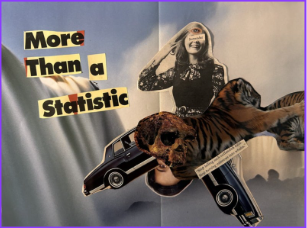
The act of collaging and flipping through magazines is like a search for the self. Living with a psychotic disorder impacts the way I see myself and interact with the world. Collaging is a way for me to make sense of the world I engage with, which at times can feel like a dreamscape where anything is possible. My practice celebrates the absurd through cutting and pasting interesting images that capture how it feels to live in a world that no one sees in the same way I do. My greatest hope is that my collages will generate conversations about mental illnesses less commonly discussed, and call audiences to question what they think they know about the capabilities of the human mind.
I am eternally grateful for the people I have met on the path to becoming an honest artist, as well as the family friends who have shown me unwavering support on my journey. This is a story that is very close to my heart, and it is a story that I want to share with others to increase awareness and empathy across communities as a whole. - Branka Rosie Cavar
![]()
![]()
![]()
![]()
![]()
![]()
![]()
Branka Rosie Cavar’s artistic practice is informed by her lived experiences with mental health and wellness. Relevant themes in her practice include but are not limited to, art as a form of therapy, discovery, and the exploration of identity. As an interdisciplinary artist, her work is shifting and changing, reflecting the constant flux and movement individuals undergo throughout their lives.
Alisa Serebrianaia is an emerging museum educator and curator in Mohkinstsis, within Treaty 7 territory. Alisa has been organizing student-led exhibitions in Calgary with the Pentimento Collective, which focuses on showcasing and promoting undergraduate student-artists. She is currently finishing her Bachelor of Arts in Art History with a minor in Museum and Heritage Studies from the University of Calgary.
With a background in teaching and museum interpretation, Alisa focuses on how art and heritage spaces can foster dialogue, promote inclusivity, and ensure accessibility for everyone. She is especially drawn to projects that bring people together through engaging approaches, such as workshops, artist talks, and other creative opportunities that invite audiences to connect with the art and the artist.
The Pentimento Collective is a student-run arts collective dedicated to amplifying undergraduate voices through curated exhibitions. The Pentimento Collective’s aims are to create an artistic community that will enable artists to engage and connect with other artists and the public, while building their relevant experiences.
Our name, “Pentimento”, comes from the Italian 'pentirsi', which means to repent or change your mind. “Pentimento” itself is a change made by the artist during the process of an artwork. We chose this name to reflect the history and ongoing process of the PUSH and PULL exhibitions.
I am eternally grateful for the people I have met on the path to becoming an honest artist, as well as the family friends who have shown me unwavering support on my journey. This is a story that is very close to my heart, and it is a story that I want to share with others to increase awareness and empathy across communities as a whole. - Branka Rosie Cavar
Branka Rosie Cavar’s artistic practice is informed by her lived experiences with mental health and wellness. Relevant themes in her practice include but are not limited to, art as a form of therapy, discovery, and the exploration of identity. As an interdisciplinary artist, her work is shifting and changing, reflecting the constant flux and movement individuals undergo throughout their lives.
Alisa Serebrianaia is an emerging museum educator and curator in Mohkinstsis, within Treaty 7 territory. Alisa has been organizing student-led exhibitions in Calgary with the Pentimento Collective, which focuses on showcasing and promoting undergraduate student-artists. She is currently finishing her Bachelor of Arts in Art History with a minor in Museum and Heritage Studies from the University of Calgary.
With a background in teaching and museum interpretation, Alisa focuses on how art and heritage spaces can foster dialogue, promote inclusivity, and ensure accessibility for everyone. She is especially drawn to projects that bring people together through engaging approaches, such as workshops, artist talks, and other creative opportunities that invite audiences to connect with the art and the artist.
The Pentimento Collective is a student-run arts collective dedicated to amplifying undergraduate voices through curated exhibitions. The Pentimento Collective’s aims are to create an artistic community that will enable artists to engage and connect with other artists and the public, while building their relevant experiences.
Our name, “Pentimento”, comes from the Italian 'pentirsi', which means to repent or change your mind. “Pentimento” itself is a change made by the artist during the process of an artwork. We chose this name to reflect the history and ongoing process of the PUSH and PULL exhibitions.

Oasis | You're Late
Gaptooth Sweatsuit
Curated by Allie Baillie
Curated by Allie Baillie

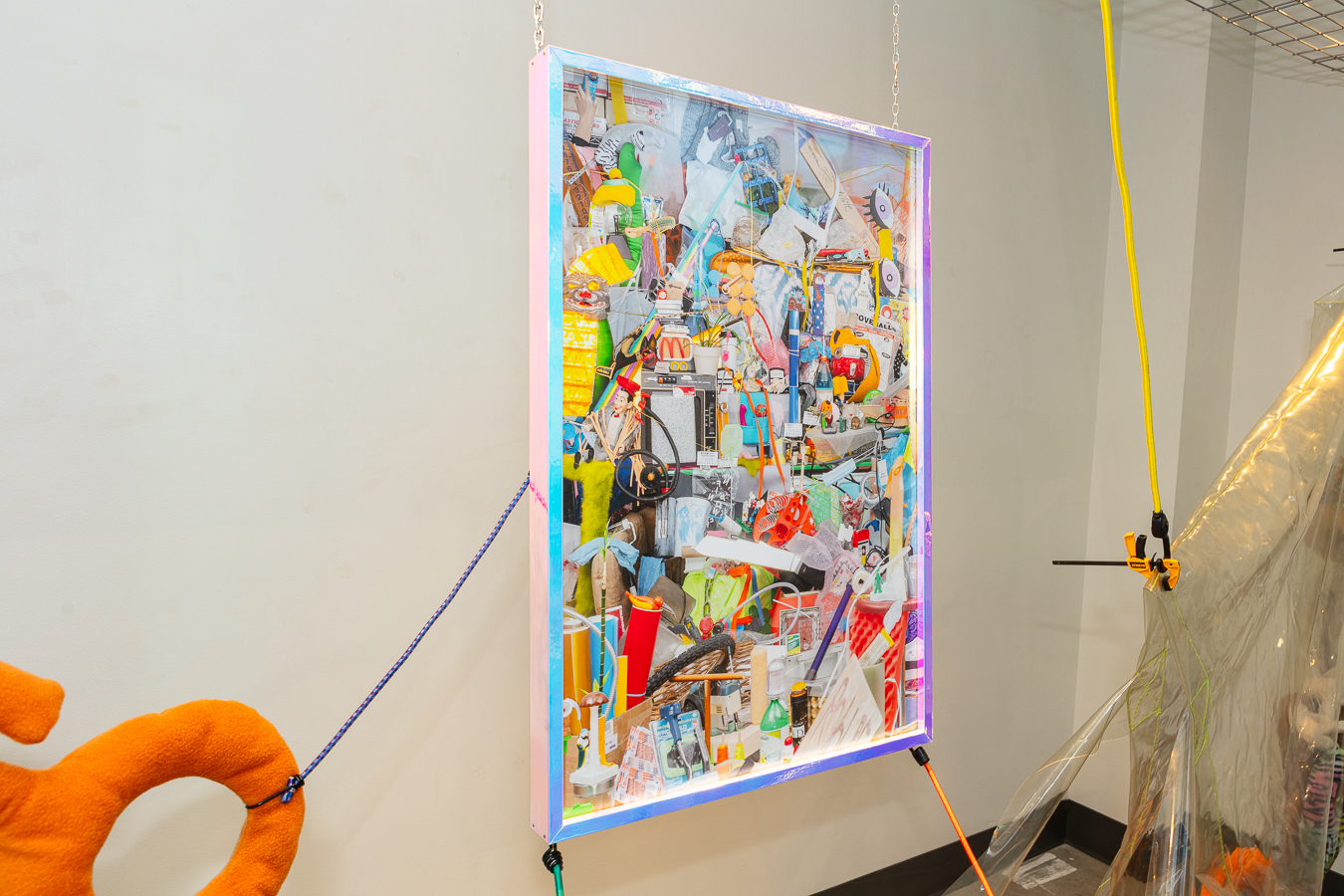
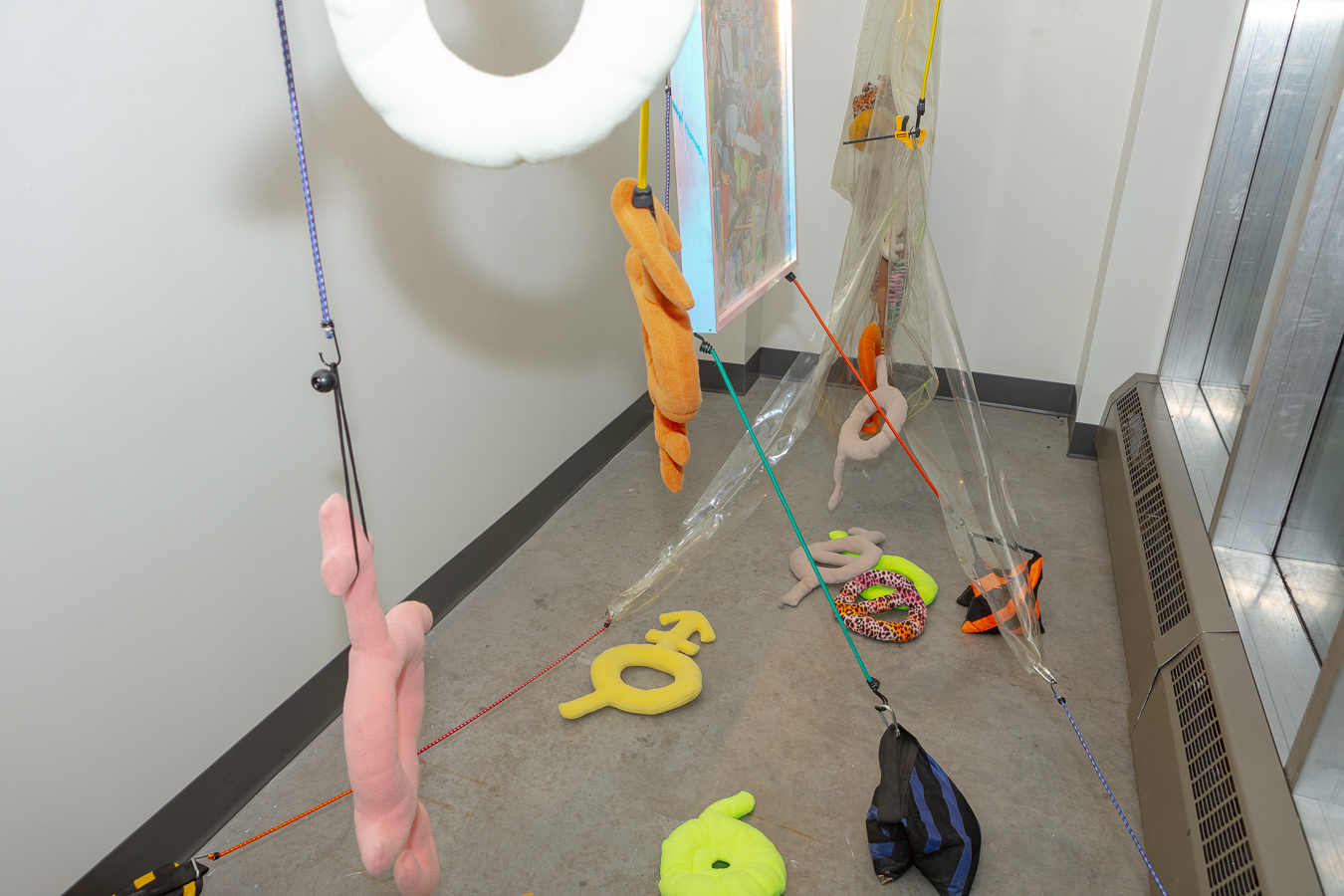
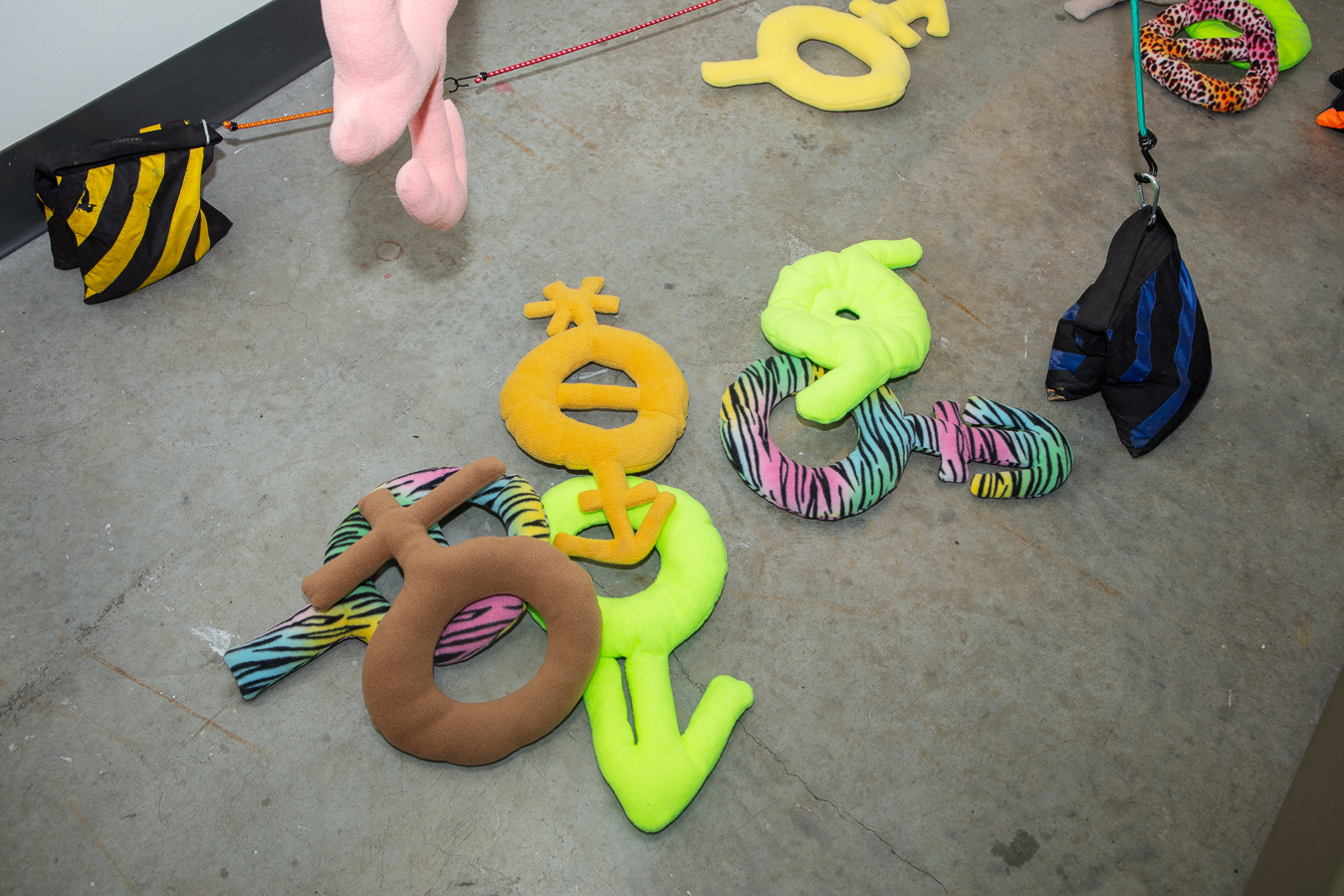


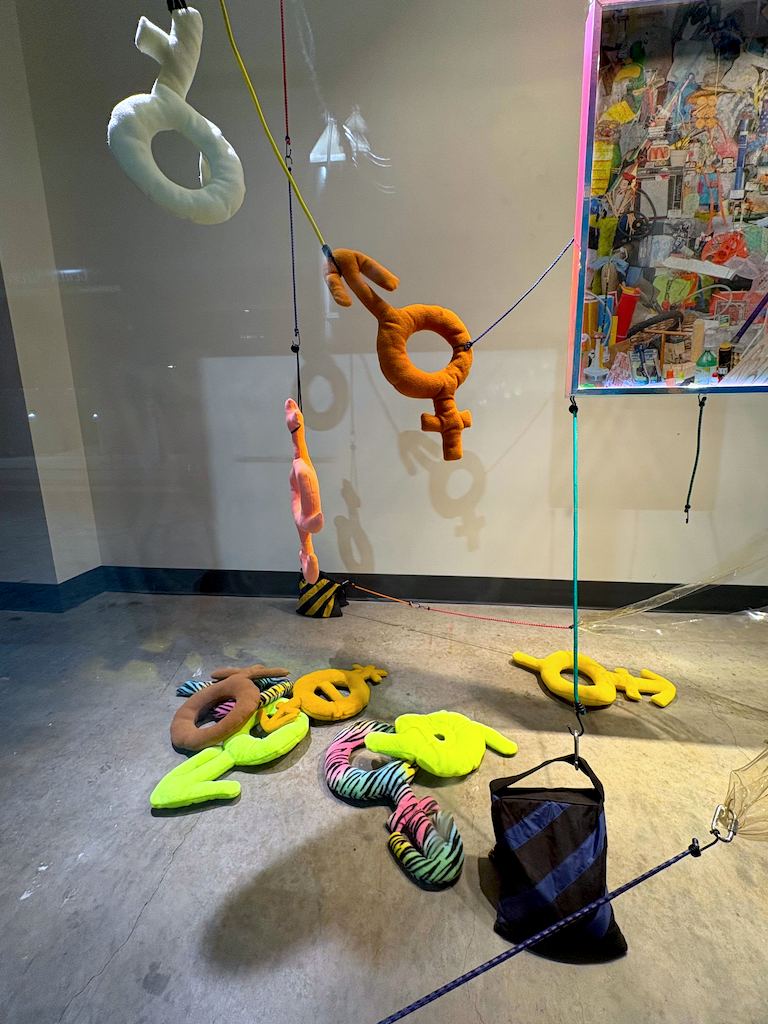

Photos courtesy of the artists
Curatorial Statement
Allie Baillie
This exhibition aims to provide a space for the public to consider societal overconsumption on an individual level. In a place like downtown Calgary, hustle culture is extremely prevalent, and the fast-paced, crowded atmosphere creates a lingering tension. Oddly, these traits make this the perfect atmosphere for reflection. A mix of pop-culture references, familiar household items, discarded fragments, and what some might simply call “junk,” constructs the controlled chaos of Oasis. However, this work requires a viewer to slow down and take a minute to contemplate the content of the piece. Exploring the complexities of Oasis allows viewers to make unique personal connections to whatever objects, colours, or themes interest them, and to reflect on the individual desires that comprise our collective habits. Oasis mirrors the layered and often contradictory relationships we have with consumption, our attachment to objects, and our accumulation of material objects that both comfort and overwhelm us.
For many of us, our first connection to material culture comes through stuffed animals and soft toys as children. We cherished these objects dearly as they became a part of our selves and helped build our identity piece by piece. Unfortunately though, material culture will always have its own agenda, and in the case of toys, they are usually split into things ‘fit’ for boys and girls exclusively. From a young age, this not only pushes expectations of what society considers appropriate gender appearances and activities, but also excludes anyone who feels they don’t fit into these roles. You’re Late uses the materiality of bright plush toys to reject these gender cliches that for so many queer kids have only restricted and repressed their true identity. Each plush represents a different gender identity, playing with the traditional symbols of male and female, and creating completely new and distinctive symbols that take on their own meaning. In a political climate that does not support younger queer people, this sculpture serves as a whimsical representation of life, showing how it is filled with our individual experiences and identities, but also how material culture affects these parts of us. It’s hard to notice, but the keys buried in this bag also serve as a reminder that under a capitalistic society, there will always be the pressure to keep working and keep hustling. Tying back into Oasis, the chaos and expectations of the money centered society we live in is present even in the most intimate parts of our identity. Essentially, this piece is a bright display of queer joy and discovery, with the small interruption of cold, hard reality.
For many of us, our first connection to material culture comes through stuffed animals and soft toys as children. We cherished these objects dearly as they became a part of our selves and helped build our identity piece by piece. Unfortunately though, material culture will always have its own agenda, and in the case of toys, they are usually split into things ‘fit’ for boys and girls exclusively. From a young age, this not only pushes expectations of what society considers appropriate gender appearances and activities, but also excludes anyone who feels they don’t fit into these roles. You’re Late uses the materiality of bright plush toys to reject these gender cliches that for so many queer kids have only restricted and repressed their true identity. Each plush represents a different gender identity, playing with the traditional symbols of male and female, and creating completely new and distinctive symbols that take on their own meaning. In a political climate that does not support younger queer people, this sculpture serves as a whimsical representation of life, showing how it is filled with our individual experiences and identities, but also how material culture affects these parts of us. It’s hard to notice, but the keys buried in this bag also serve as a reminder that under a capitalistic society, there will always be the pressure to keep working and keep hustling. Tying back into Oasis, the chaos and expectations of the money centered society we live in is present even in the most intimate parts of our identity. Essentially, this piece is a bright display of queer joy and discovery, with the small interruption of cold, hard reality.
Gaptooth Sweatsuit is the visual art duo of Megan Kirk and Stephen Harper. Gaptooth Sweatsuit primarily works with local businesses, bands and artists to produce high-quality silkscreened products and limited edition print runs. They also maintain individual art practices under Jane Trash and Photomawf.
Allie Baillie is a student at the University of Calgary, currently in her last year of an Art History degree with a minor in Museum and Heritage Studies. Allie is passionate about giving current artists the chance to share their work and unique experiences with the public. While studying and curating art is her passion, she also loves creating art as a form of love and expression.
For the past five years, crocheting has been her medium of choice. She describes her projects as a labour of love, as this time-consuming and often frustrating medium is almost always done in appreciation for someone or something. Through her love of crochet, she developed a deep appreciation and interest in fibre arts and textiles generally, which she hopes to continue exploring in graduate studies.
By studying societal reactions to art, Allie has concluded that exposure is the greatest gift we can offer the public. She has assisted in the preparation and curation of exhibitions at Nickle Galleries and started her journey into creating her own curatorial goals and style. She strives to devote her professional life to creating and nurturing artistic spaces in which underrepresented voices can be exhibited.
Archive / 2025

Beatnik Clothing Swap
December 13th
12PM - 6PM
The New Gallery, 208 Centre St S
Does your closet need a reset? Join us on December 13th for a clothing swap! Bring your used clothing + books and swap them with others! All the left over clothes will be donated to Good Neighbour.
︎ Accessibility Notes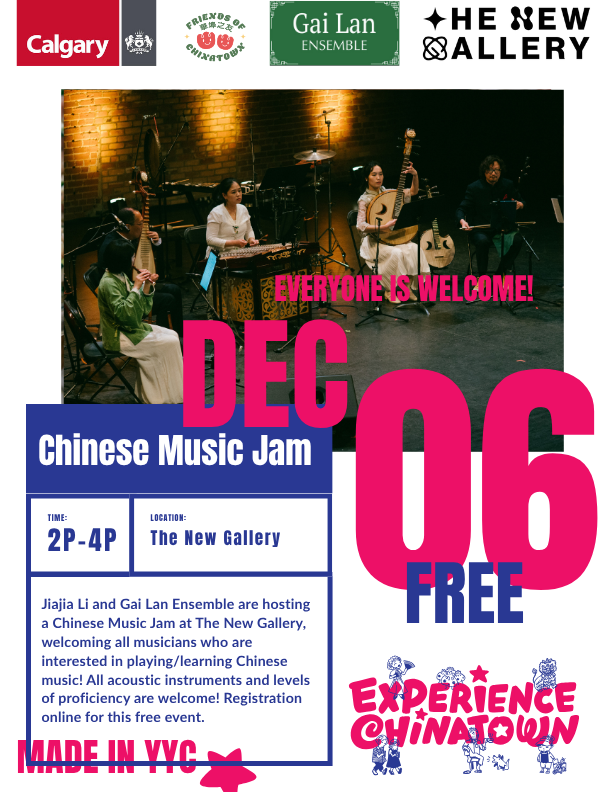
Chinese Music Jam
Jiajia Li and Gai lan Ensemble are hosting a Chinese Music Jam at The New Gallery, welcoming all musicians who are interested in playing/learning Chinese music! All acoustic instruments and levels of proficiency are welcome!

Calgary Chinatown:
Past, Present & Future
Book Launch & Art Exhibition
December 3rd 2:00PM - 4:30PM
208 Centre St S
Calgary, AB
︎ RSVP HERE
Join us in celebrating the launch of Calgary Chinatown: Past, Present and Future -- a collaborative publication exploring the history, present and future of one of Calgary's most vibrant cultural communities.
Written by Jasper Zhao (Haskayne School of Business) and illustrated by Anne Kwon (Alberta University of the Arts), the book captures Chinatown through the eyes of emerging creators, blending storytelling and art to reflect its enduring spirit and transformation. The book is designed by Alex Wong.
Enjoy an afternoon of art, conversation, and community. Meet the student creators, view original illustrations from the book, and take home a complimentary copy of the publication.
Hosted by the Chinatown Business Improvement Area (BIA).
In partnership with The New Gallery.
Funded by the City of Calgary.
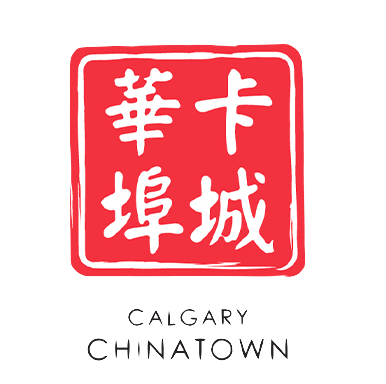

November - December 2025
Fascination Station is a satellite exhibition coinciding with Arianna Richardson’s main space exhibition “Surface all the way through” in the CADA Open Spaces gallery located at the Centre Street LRT platform. This extension of the work (supported by TNG, CADA, and STEPS Public Art) includes fascinators created by members of the public during the Fascination Station Workshop at TNG (graciously funded by STEPS Public Art).
Arianna Richardson is a sculptor, performance artist, sewist, and mother from Lethbridge, AB in Treaty 7 territory. She is a lifelong crafter and thrift-store enthusiast, constantly collecting plastic-based trash and discarded craft materials. Richardson sometimes performs under the pseudonym, The Hobbyist, taking her hobby-craft pursuits outdoors to activate public spaces and talk to people about trash. While she isn’t making art, Arianna works as Lead Prepator at the Southern Alberta Art Gallery and as a sessional instructor teaching Spatial Practice at the University of Lethbridge.
Richardson holds a BFA (2013) in Studio Arts from the University of Lethbridge and an MFA (2018) from NSCAD in Halifax, NS. Her first artist book, Garbage Party: A Collection of Thoughts About Trash, was self-released in March 2021.
STEPS Public Art is a Canadian charity and social enterprise fostering vibrant communities through public art. They offer public art services and run charitable programs that support equity-deserving artists and engage communities across the country.



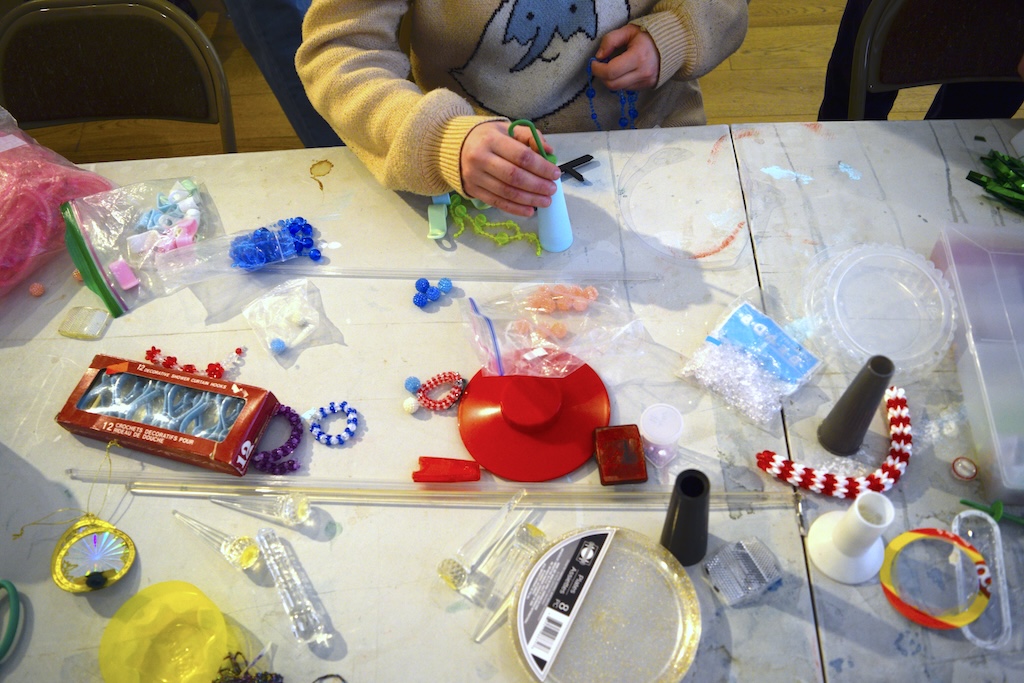

Jia Yang Wang, Beck Irvine, Sarah Almquist, Evan Brien, Ling Zhou, Kae A Liu, Miya Nishi, Nina Belcourt, Rovylinda Rodriguez, Adarah Bentley, Camryn Carnell, Logan Waldo, Chelsea Schwartz, Dianne Miranda and Melisa Centofanti
Fascination Station Workshop
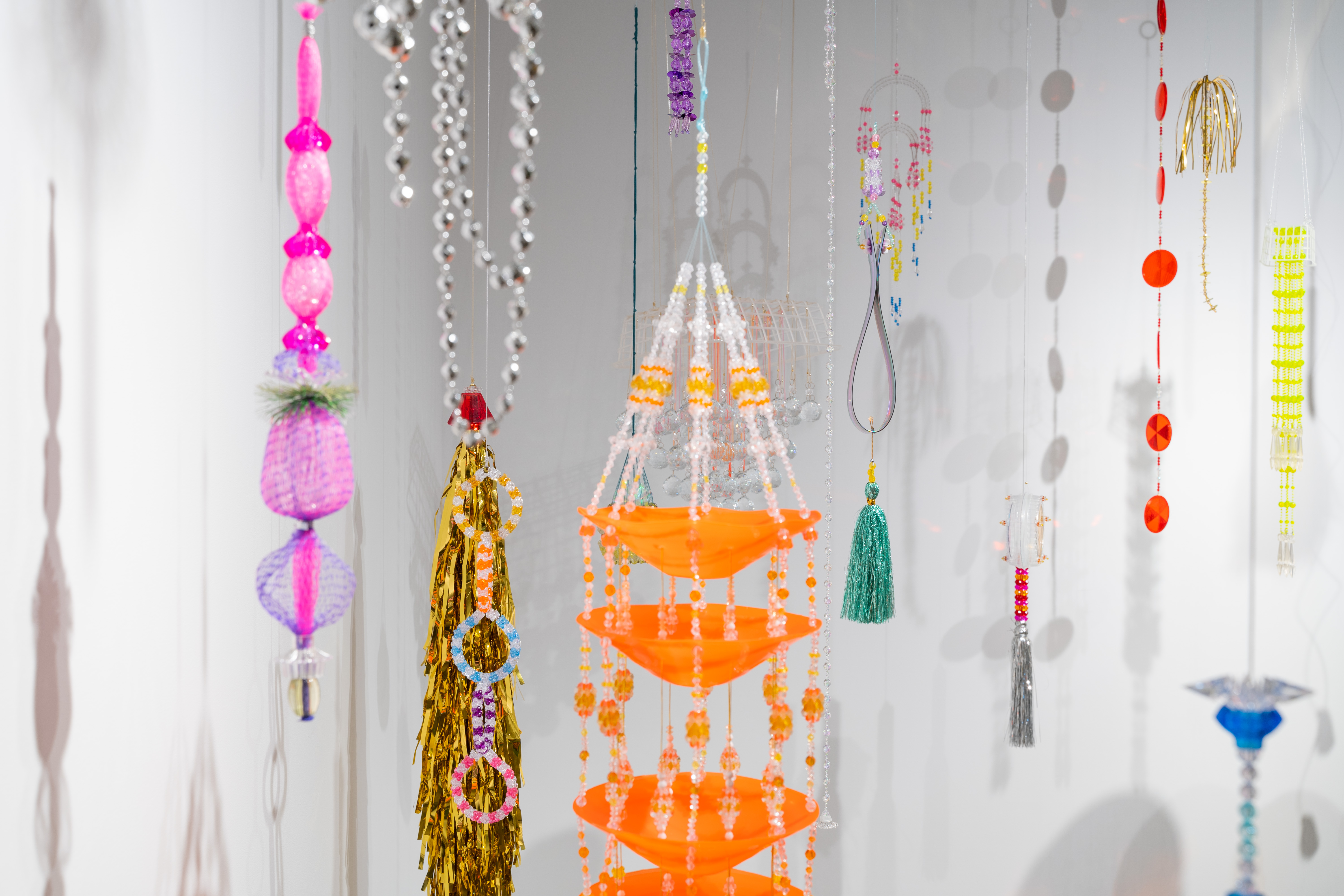
In this workshop participants will be crafting their own Fascinators, dangling, hangable artworks, from a selection of strange and exciting bits of plastic trash, thrift store craft supplies, decorations, and broken household gadgets/toys. All ages and skill levels are welcome! There will be many exciting materials to use but feel free to bring your own collected objects if you have them.
Facilitated by Arianna Richardson, coinciding with her exhibition “Surface all the way through”.
Artworks made during this workshop will be displayed in the CADA exhibition space at the Centre street LRT platform, Open Spaces: Windows to a View from November 9th-December 7th, 2025. This project was made possible in partnership with STEPS Public Art.
Archive / 2024
Main Space Exhibition /


careworn & coil
Christina Oyawale
November 1 – December 19, 2024
My body moves on crip time, meaning, it decides when it wants to move, it decides when I need to slow down and when it’s time to go. I experience space and time in a completely different way than most do. I’ve learned to live through the discomfort, but this is my attempt at being vulnerable with you. Let’s reevaluate our perceptions of private versus public life. I want you to understand that it’s not pretty, it’s raw and it’s ugly. In the words of Mia Mingus, I would rather be “ugly—magnificently ugly” than “beautiful” because I am flawed and sometimes need the space to remember that. I move on crip time, as breathing hurts from my ribs that have been inflamed for weeks. I move on crip time because I am too anxious to face the world today. So I stay in my space until I feel it is time to leave.
I watch the seasons change from my window, I watch the sun kiss my pigmented skin.
I've built my world for you, I’ve reconstructed my space.
I watch the seasons change from my window, I watch the sun kiss my pigmented skin.
I've built my world for you, I’ve reconstructed my space.
– Christina Oyawale
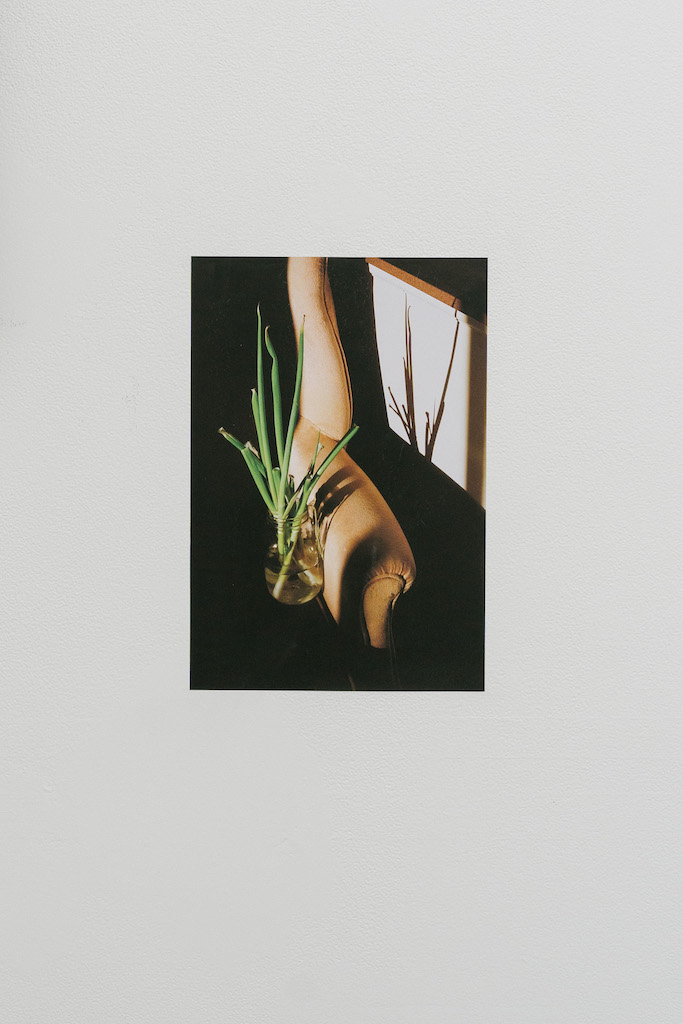



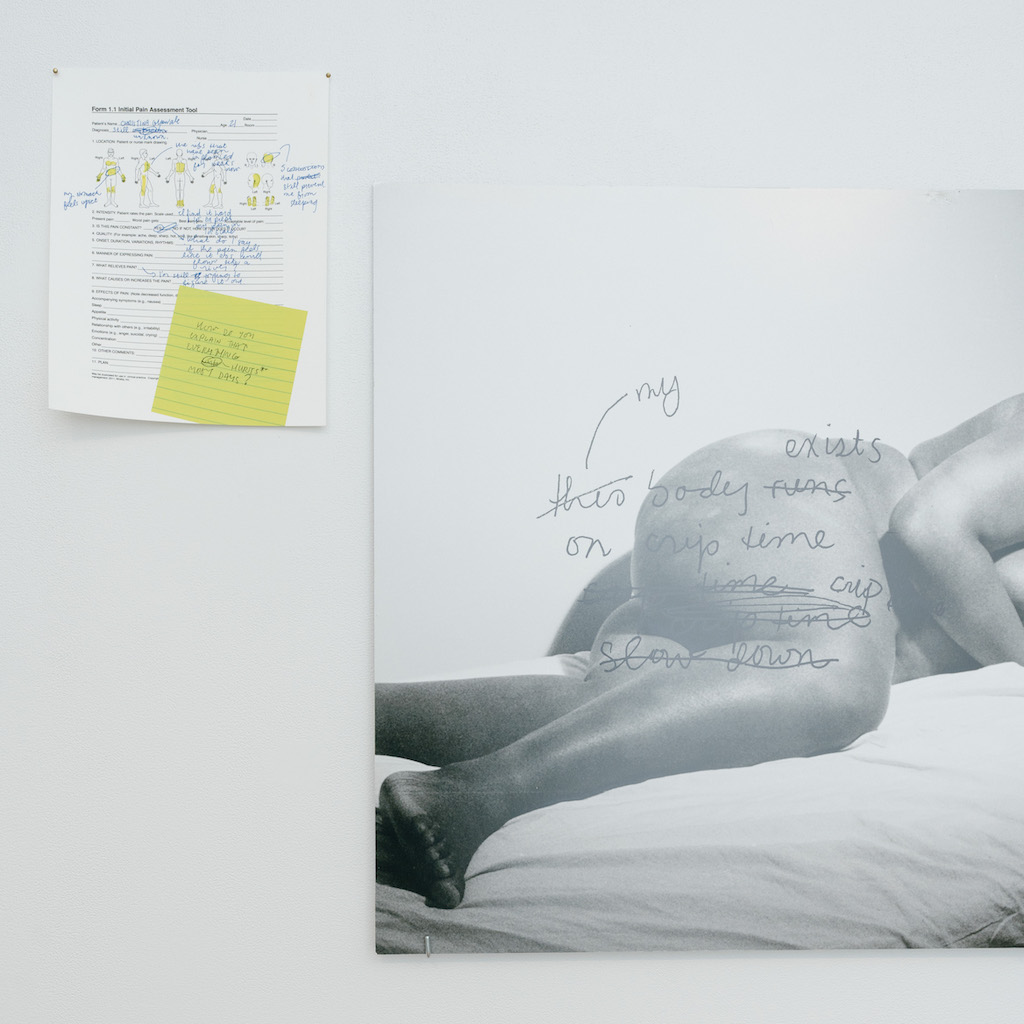


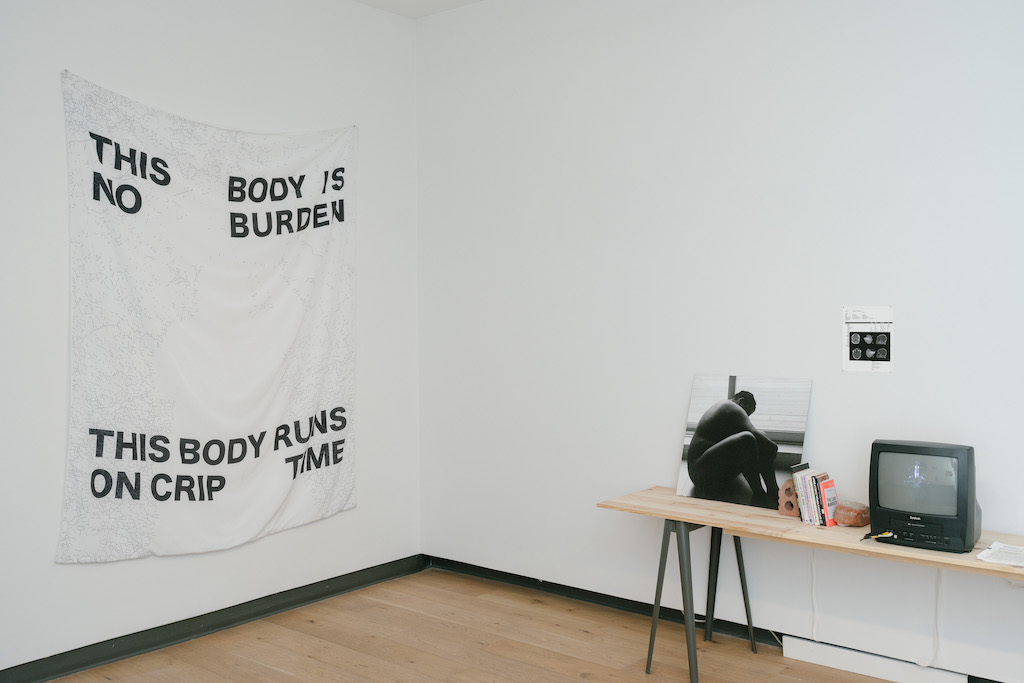
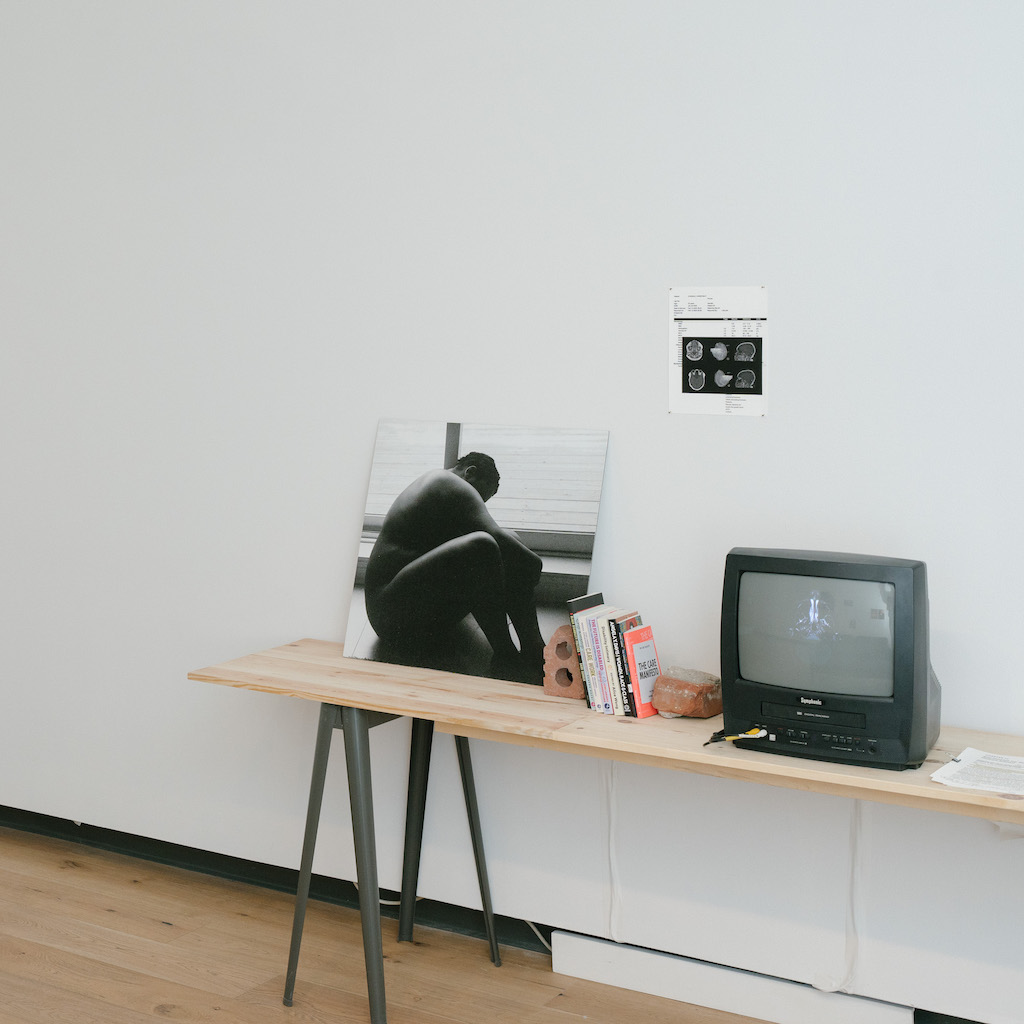
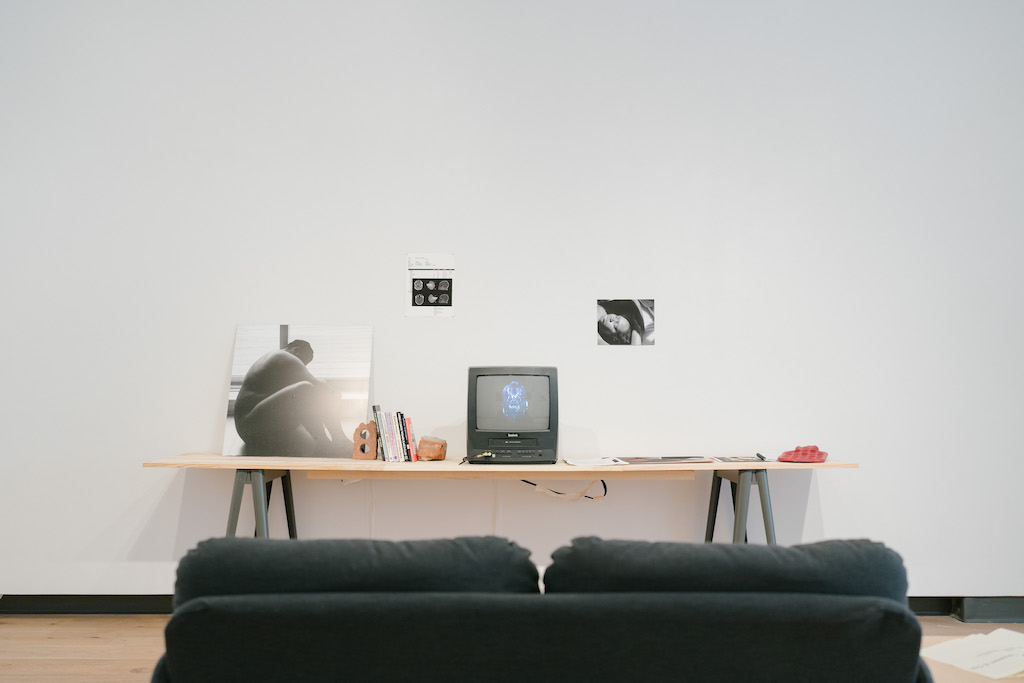
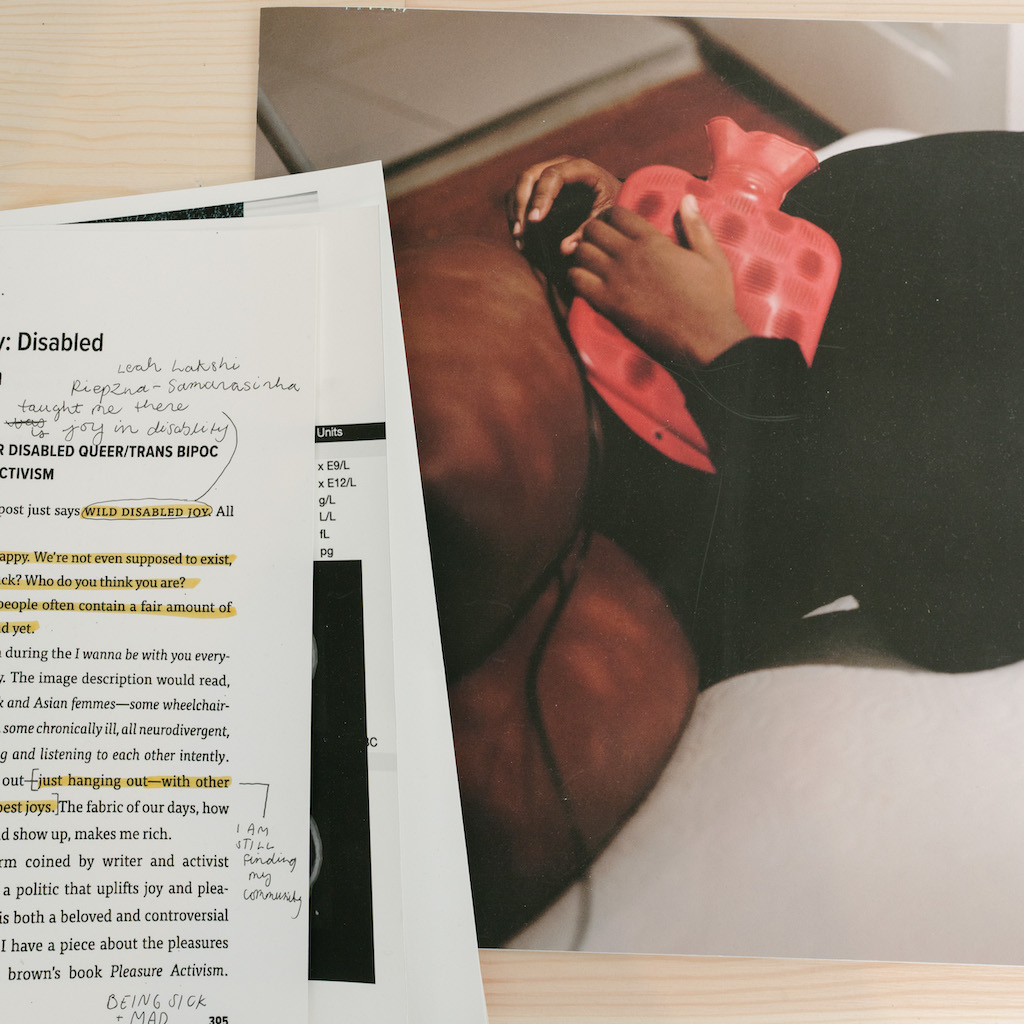

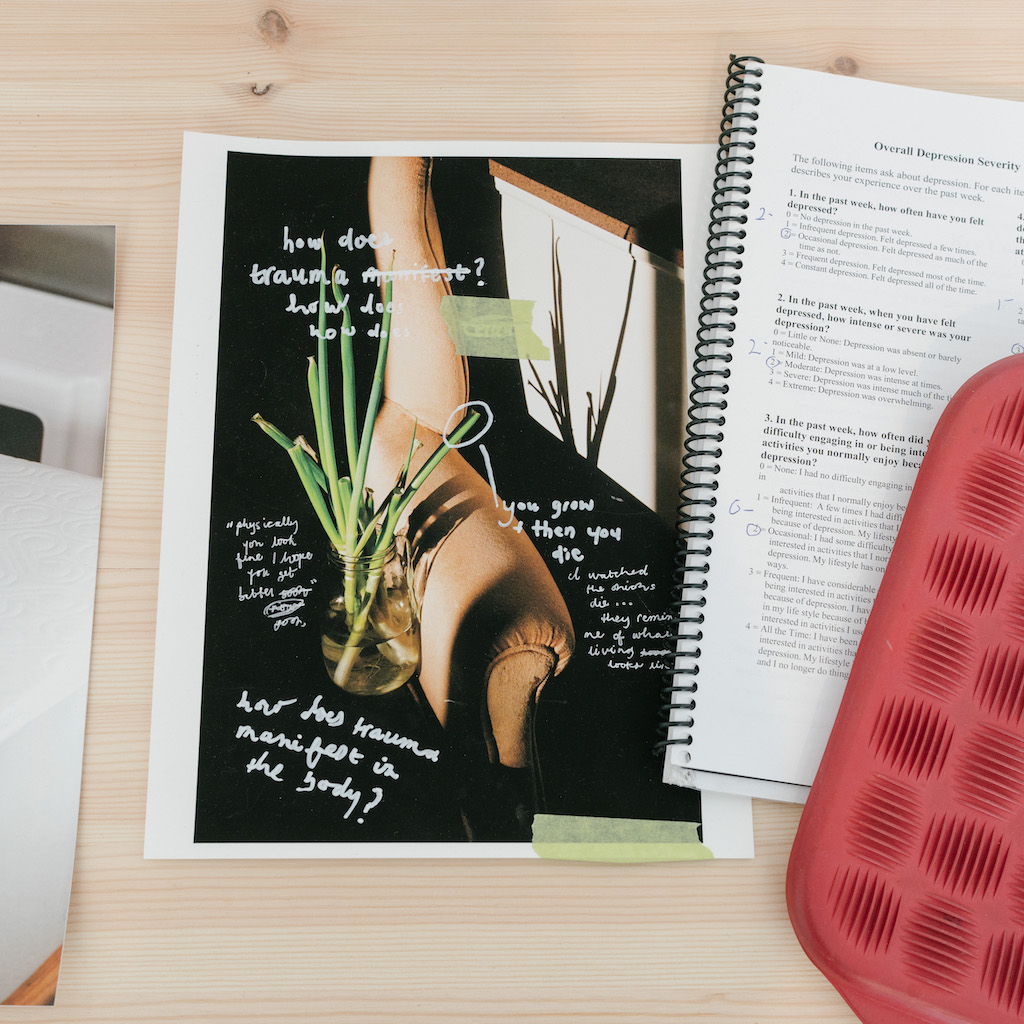
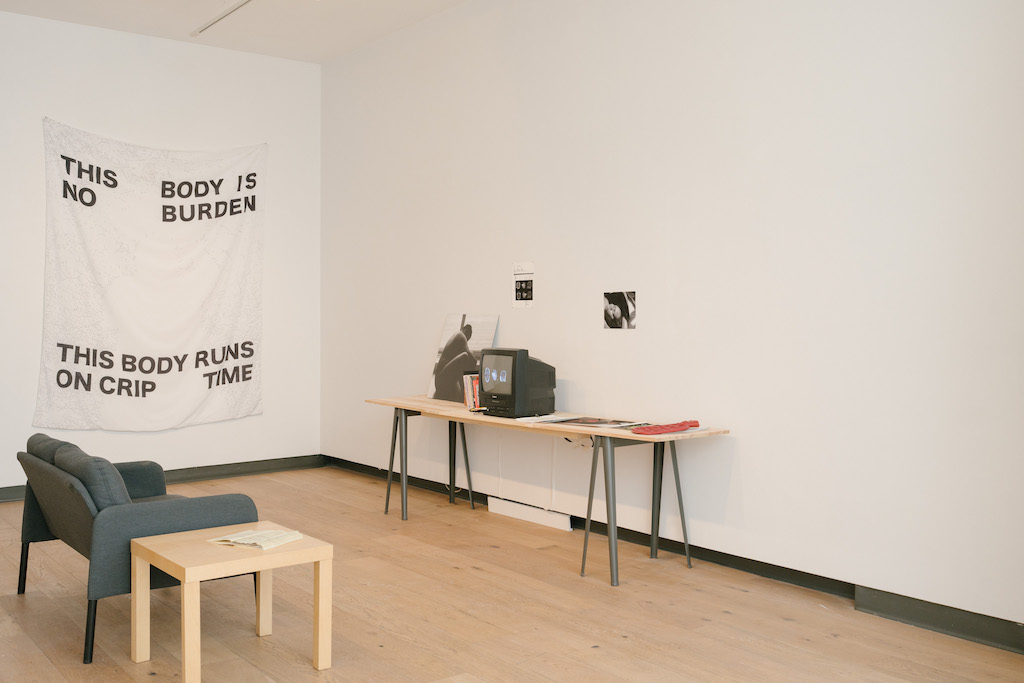



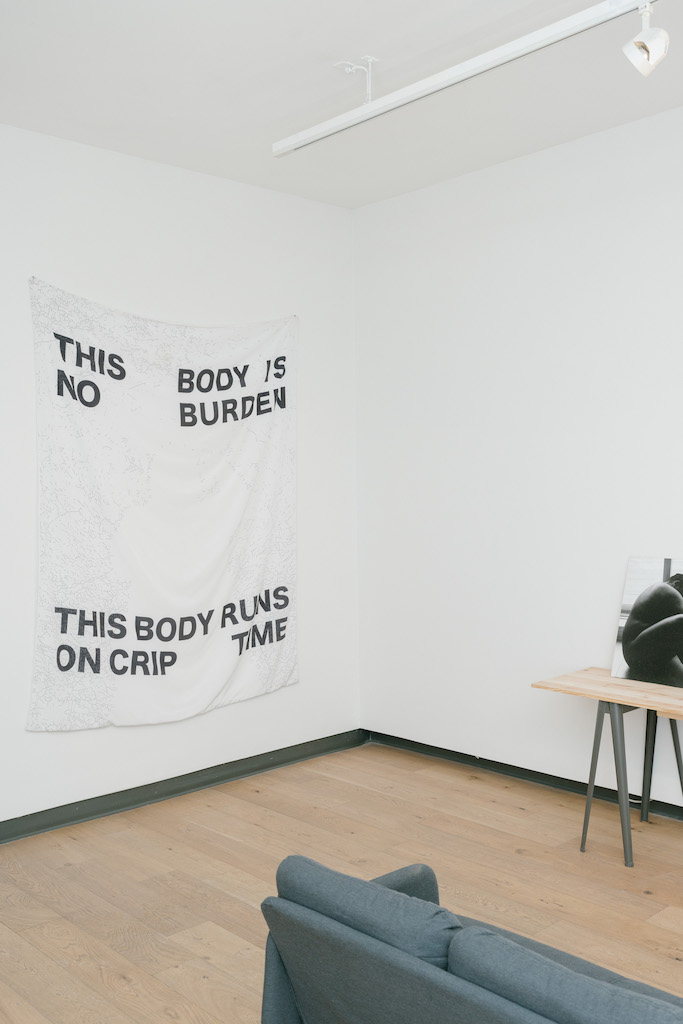
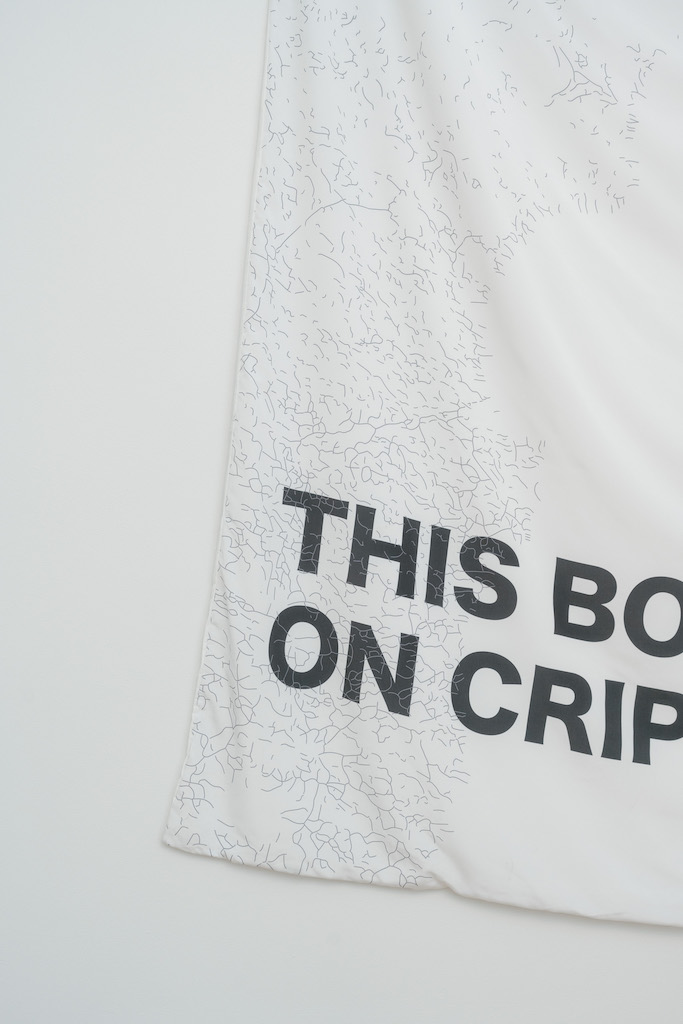
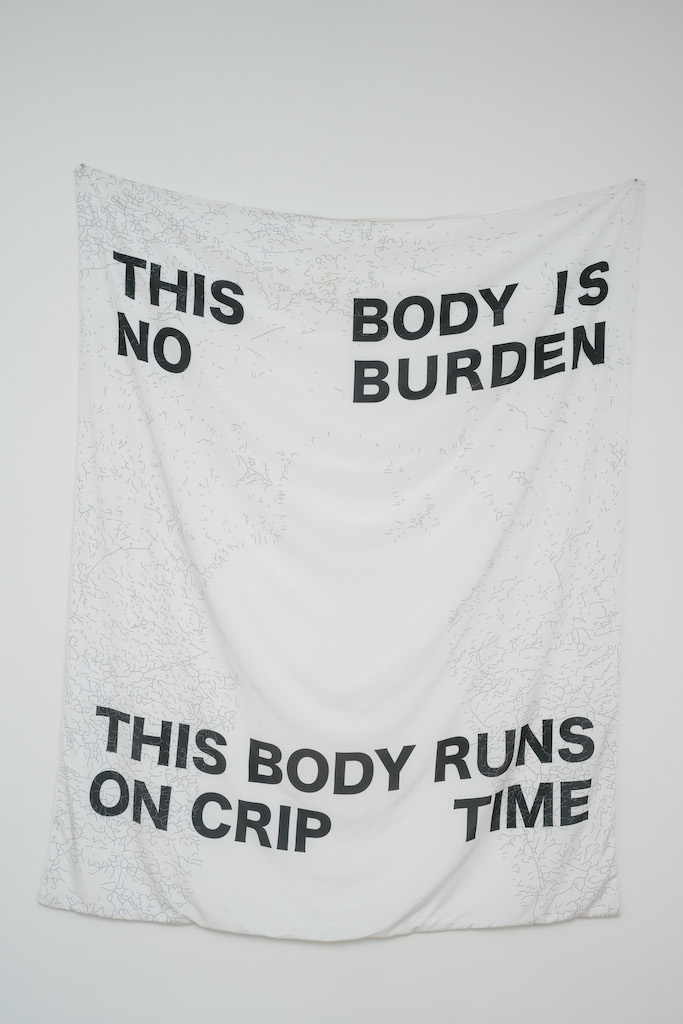
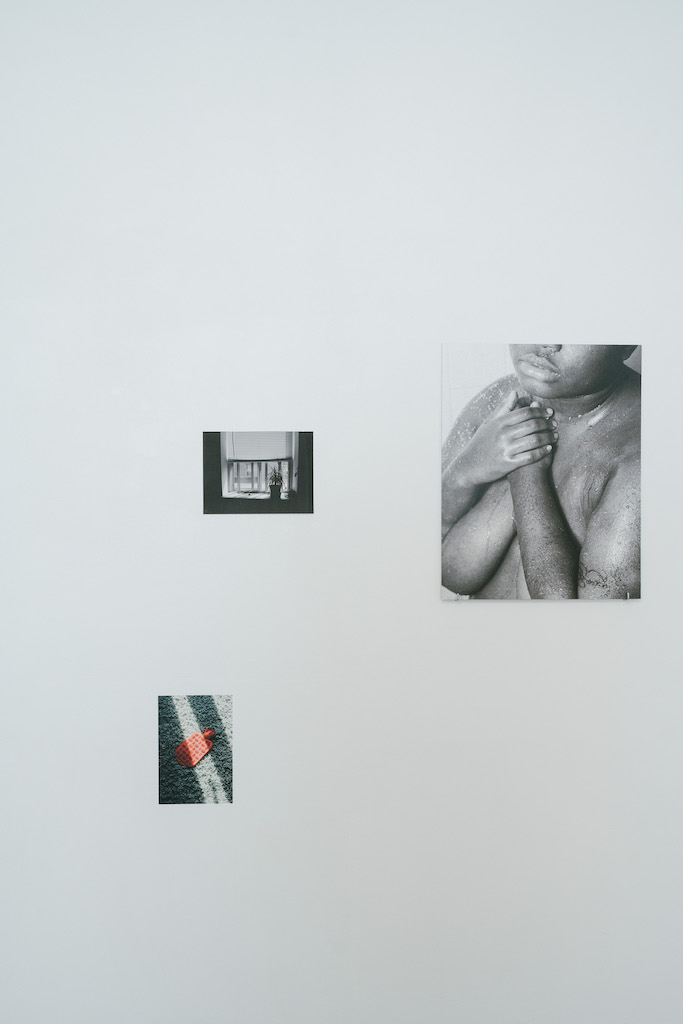


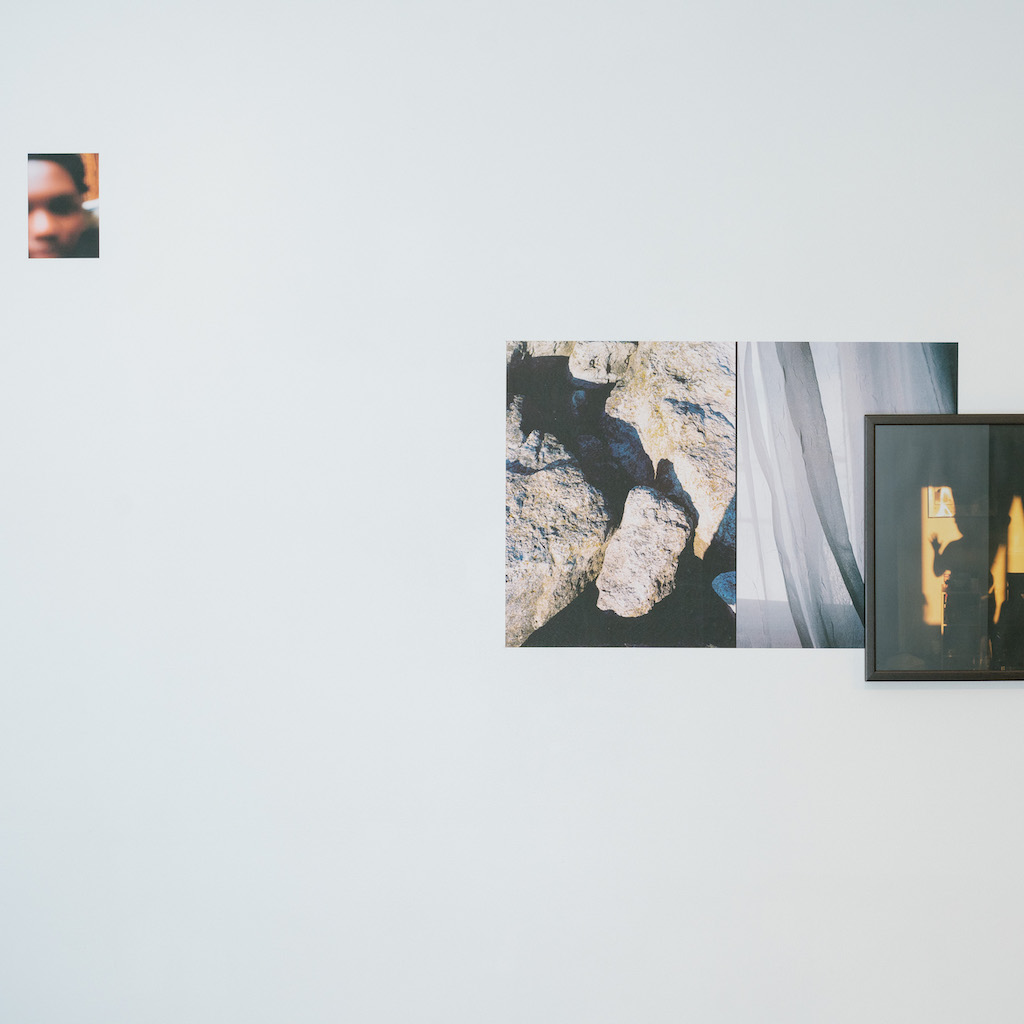

Documentation by Danny Luong
careworn & coil undertakes the ongoing photographic and written documentation of my disabled body through invisible physical and mental illness. The project aims to showcase the daily negotiations that occur within myself, replicating the complexities and comfort of living as a spoonie. I work to challenge notions of able-bodied productivity, using photographs and sculptural installation to task viewers with challenging their perceptions of the human experience, creating an environment that emphasizes the emotional vulnerability of placing private life into the public sphere. careworn & coil breathes the concept of "Crip Time", a term coined by academic Alison Kafer – disabled people’s relationship to time rather than monoculture’s ideas productivity in a given day – and bell hooks’ “Oppositional Gaze” – allowing Black bodies the right to “looking”. The project asks viewers to interrogate their perceptions of invisible illness and how it manifests in the body. Within the images, light and shadows act as a catalyst for both these theoretical concepts and how they specifically interact with my navigation of fatness, depression and chronic pain.
The project applies research-creation as a means of situating itself within the broader conversation of disability theory; notably from a Black Feminist disability politic that is oftentimes understudied. Incorporating the works of racialized disabled scholars such as Leah Lakshmi Piepzna-Samarasinha, Audre Lorde, bell hooks, Mia Mingus and Alice Wong allows me to take hold of my personhood while rejecting palatability. Ultimately, in staking myself on these terms, I allow for an active viewership that challenges ableism and supposedly “correct” ways of being consumed.
The project applies research-creation as a means of situating itself within the broader conversation of disability theory; notably from a Black Feminist disability politic that is oftentimes understudied. Incorporating the works of racialized disabled scholars such as Leah Lakshmi Piepzna-Samarasinha, Audre Lorde, bell hooks, Mia Mingus and Alice Wong allows me to take hold of my personhood while rejecting palatability. Ultimately, in staking myself on these terms, I allow for an active viewership that challenges ableism and supposedly “correct” ways of being consumed.
Seeing you, seeing me: notes on Black crip kinship
by Sarah-Tai Black
“We must leave evidence. Evidence that we were here, that we existed, that we survived and loved and ached. Evidence of the wholeness we never felt and the immense sense of fullness we gave to each other. Evidence of who we were, who we thought we were, who we never should have been. Evidence for each other that there are other ways to live — past survival; past isolation.”
— Mia Mingus
There is something divine that happens when we are able to commune together to give testimony and bear witness to our realities as Black crip folks. It isn’t simply the neoliberal machinations of representation or a reductive identity politics at work, but a form of access intimacy given further specificity (that is, care) through the experience of living as disabled and chronically ill people in an anti-Black world.
It is a form of Black crip kinship that recognizes the ways in which Black lives are expected to endure the expectation of supposed futurelessness; the ways that our current world’s privileging of able-bodied experience precludes access to space, relations, and supports, in turn, further compounding this deathbound assumption of Black life, rather than wholly reorienting it (as it often does for non-Black crip folks).
But we know this. It is in the safety of care for the context of our daily lives — offered without being bound to the labour of legibility — that this space of kinship, whether that be literal space, virtual space, or otherwise, can be cultivated and stewarded. Even if sometimes all too fleeting, this feeling of communion with other Black crip bodyminds expands the bounds of our current space and time to encompass multiple worlds and, hopefully, future models of possibility.
Here, access needs (and desires) are no longer an accommodation but an understood necessity; disability is no longer invisibilized or made to answer to the white supremacist call to undoubtedly name oneself and present a meticulously documented archive of diagnosis and condition as so-called proof; being in relation to one another no longers comes with the demand to centers ableist comforts, but considered effort to collectively safeguard and offer our bodies and minds to be just as they need to be in that moment.
For many of us, spaces like the ones offered by the work of Careworn & Coil are few and far in between, offering a buoy upon which we are offered rest and refuge alongside those who have experienced and been oriented in the world likewise. They are an invitation to name and welcome our vulnerabilities with grace, to share the often enigmatic nature of what our bodies know and how they come to know it, to release the expectation of not just action or productivity, but the emotional labour of performing being “well” (or perhaps, more truthfully, just “okay”) as a form of survival in a world structured by, not just ableism, but anti-Black respectability politics.
Here, the act of looking is one that relocates our experiences — so often these aspects of Black crip life we know for certain but are continuously asked to deny or neglect — from the made-private to the public. This defiant looking radically bends time — cripping time — protracting it into a more fully prismatic expression of our experience as it is often reshaped and reformed by our bodyminds in what feels like a multiplicity of moments at once.
It’s an act of recognition that opposes our current world’s violent desire to not only negate our individual and collective experiences, but also to disavow us, structurally and spiritually, of our interdependence. It is a sterling reminder that we are able to find life sustaining kinship in such acts of seeing and being seen, in all ways and by all means. As our Black crip ancestors did, as we do, as our futures must: we exist together, past survival, past isolation.
Christina Oyawale (b. 2000 Toronto; lives and works in Toronto and Winnipeg) is a self-proclaimed “anarchist punk boy” and emerging multi-hyphenate artist, graphic designer, researcher + curator. Working with film, photography and text, they use memories, shared Black feminist history and knowledge exchange in order to create work that emphasises curiosity of learning and documenting the necessity of slowness. Currently they are attempting to break free from the expected/frequent uses of identity politics under our current neo-liberalist society, that requires marginalized people to sell their identity in exchange for “visibility” in the art world and academia.
Their work and research attempts to foster communal conversation surrounding capitalism, anti-Black racism, queer-/trans-phobia and ableism. Many of these socio-political conditions that they believe we should be fighting to dismantle. Their current research interests and musings surround: Social Reproduction Theory, the works of Angela Davis, Naomi Klein and Olúfẹ́mi O. Táíwò, queer USSR and Black feminist disability theory.
Sarah-Tai Black (they/them) is an arts worker, curator, and critic born and (mostly) raised in Treaty 13 Territory/Toronto whose work aims to center Black, queer, trans, and crip futurities and freedom work. Their curatorial work has been staged at Cambridge Art Galleries (Cambridge, ON), Dunlop Art Gallery (Regina, SK), MOCA (Toronto ON), PAVED Arts (Saskatoon, SK), and A Space Gallery (Toronto, ON) and they have worked in public arts spaces such as Art Museum at the University of Toronto, McMaster Museum of Art, and as Interim Artistic Director of Paved Arts.
Their work and research attempts to foster communal conversation surrounding capitalism, anti-Black racism, queer-/trans-phobia and ableism. Many of these socio-political conditions that they believe we should be fighting to dismantle. Their current research interests and musings surround: Social Reproduction Theory, the works of Angela Davis, Naomi Klein and Olúfẹ́mi O. Táíwò, queer USSR and Black feminist disability theory.
Sarah-Tai Black (they/them) is an arts worker, curator, and critic born and (mostly) raised in Treaty 13 Territory/Toronto whose work aims to center Black, queer, trans, and crip futurities and freedom work. Their curatorial work has been staged at Cambridge Art Galleries (Cambridge, ON), Dunlop Art Gallery (Regina, SK), MOCA (Toronto ON), PAVED Arts (Saskatoon, SK), and A Space Gallery (Toronto, ON) and they have worked in public arts spaces such as Art Museum at the University of Toronto, McMaster Museum of Art, and as Interim Artistic Director of Paved Arts.
Glossary:
Crip - a word reclaimed by the disabled community that can be used as a noun, adjective, or verb to refer to disabled people; see also, crip theory.Bodymind - a term used in disability and feminist studies to describe the idea that the body and mind are interdependent and cannot be separated.
Spoons/Spoonie - Spoon theory is a metaphor describing the amount of physical or mental energy that a person has available for daily activities and tasks, and how it can become limited. The term was coined in a 2003 essay by American writer Christine Miserandino. Those with chronic illness or pain have reported feelings of difference and alienation from people without disabilities. This theory and the claiming of the term spoonie is utilized to build communities for those with chronic illness that can support each other.
中文翻譯 (Chinese Translation)
看到你,看到我:關於黑人殘障親屬關系的筆記
“我們必須留下證據。表明我們曾經在這裏的證據,我們曾經存在,我們曾經幸存、愛過並感受過痛苦。證據表明我們從未感受到完整,以及我們彼此給予的深刻的充實感。證據證明我們誰,我們曾以為自己是誰,以及我們不該成為誰。為彼此留下證據,表明存在其他生活方式——超越幸存;超越孤立。”— Mia Mingus
當我們能夠共同交流、並見證作為黑人殘障人士的現實時,有壹種神聖的東西在發生。這不僅僅是新自由主義的表述機制或還原身份政治在起作用,而是壹種通過在壹個反黑人的世界中作為殘疾人和慢性病患者的生活經歷而被賦予進壹步特殊性(即關懷)的親密接觸形式1。
這是壹種黑人殘障親屬關系,它認識到黑人生活在被期待承受所謂“沒有未來”命運的方式;我們當前的世界對健全人經驗的特權排除了獲得空間、關系和支持的方式,從而進壹步加劇了對黑人生命的“註定死亡”假設,而不是完全重新定位它(正如它通常對非黑人殘障人士所做的那樣)
但我們知道這壹點。正是在我們日常生活背景中的關懷安全中——這種關懷不依賴於可被理解的勞動——這種親屬關系的空間,無論是實體空間、虛擬空間,還是其他形式的空間,都能夠被培養和維系。即使有時這種與其他黑人殘障身心的共融感是短暫的,它也擴展了我們當前空間和時間的界限,涵蓋了多個世界,並且希望能夠為未來的可能性模式開辟新的道路。
在這裏,無障礙的需求(和願望)不再是壹種遷就,而是被理解為壹種必要性;殘疾不再被隱蔽化,也不再是為了響應白人至上主義的要求,毫無疑問地為自己命名,並提交壹份精心記錄的診斷和病情檔案作為所謂的證據;與彼此的關系不再伴隨著要求去迎合能力主義的舒適,而是以集體的努力來保護並提供我們的身心,使其在那個時刻正是它們所需要的樣子。
對於我們中的許多人來說,像 Careworn & Coil 作品所提供的這樣的空間是少之又少的,它為我們提供了壹個浮標,讓我們在這裏與那些同樣經歷過、並且在世界中以相似方式被定位的人壹起, 獲得休息和避難。它們是邀請我們以優雅的姿態命名並接納我們的脆弱,分享我們身體所知的、以及它們如何獲得這些知識的常常是難以捉摸的本質,釋放對不僅僅是行動或生產力的期望,更是釋放在壹個由不僅是能力主義,甚至是反黑人體面政治構建的世界中,表現“健康” (或更真實地說, “還好”)的情感勞動作為生存形式的期望。
在這裏,觀看的行為是壹種重新定位我們經驗的方式——這些黑人殘障生活的各個方面,我們明知它們的存在,卻不斷被要求否認或忽視——從私人化轉向公共化。這種挑釁性的觀看方式極大地扭曲了時間,將時間縮短為我們經驗的更全面的多棱鏡式表達,因為我們的經驗經常被我們的身體思維重塑和改造,仿佛在瞬間經歷了多重時刻。
這是壹種認可的行為,反對我們當今世界那種暴力的欲望,不僅否定我們個人和集體的經驗,還試圖在結構上和精神上否認我們之間的相互依存。它有力地提醒我們,表明我們能夠以各種方式、通過壹切手段在這種凝視與被凝視的行為中找到維系生命的親情。正如我們的黑色殘障祖先所做的,正如我們所做的,正如我們的未來必須做到的:我們共同存在,超越幸存;超越孤立。
術語表:
Crip — 這個詞被殘障社區重新提取並加以使用,可以作為名詞、形容詞或動詞來指代殘障人士;另見“殘障理論”(crip theory)。
Bodymind— 這個術語用於殘障研究和女性主義研究中,描述身體和心智是相互依存的,不能分開看待的觀點。
Spoons/Spoony — “勺子理論”(Spoon theory)是壹種隱喻,用來描述壹個人可用於日常活動和任務的身體或精神能量的數量,以及這種能量是如何變得有限的。
這個術語由美國作家Christine Miserandino在2003年發表的壹篇文章中創造。
藝術家簡介:
Christina Oyawale (2000 年出生於多倫多,在多倫多和溫尼伯生活和工作)自稱是 「無政府主義朋克少年」,同時也是新興的多重身份藝術家、平面設計師、研究員和策展人。Christina以電影、攝影和文本為媒介,透過記憶、共享的黑人女性主義歷史和知識交流創作作品,強調學習的好奇心和記錄慢節奏生活的必要性。目前,Christina正在嘗試突破新自由主義社會下對身份政治的常規利用和期待,這種體系要求被邊緣化的人以自身的身份作為代價,以換取在藝術界和學術界的 “能見度”。
Christina的作品和研究試圖促進圍繞資本主義、反黑人種族主義、對酷兒/跨性別者的歧視以及能力歧視的的公共對話。Christina認為,這些社會政治條件是我們應該共同努力去打破的。目前的研究興趣和思考集中於以下領域:社會再生產理論、Angela Davis、Naomi Klein和Olúfẹ́mi O. Táíwò的作品、蘇聯的酷兒歷史以及黑人女性主義的殘障理論。
Sarah-Tai Black(他們/他們)是壹位藝術工作者、策展人和評論家,出生並(大部分時間)成長於條約13區/多倫多,他們的作品旨在聚焦黑色、酷兒、跨性別和殘障未來及自由事業。他們的策展工作曾在以下地點展出:劍橋藝術畫廊(劍橋,安大略省)、鄧洛普藝術畫廊(裏賈納,薩斯喀徹溫省)、多倫多當代藝術館(MOCA,安大略省)、PAVED藝術(薩斯卡通,薩斯喀徹溫省)和A Space畫廊(多倫多,安大略省)。他們還曾在多倫多大學藝術博物館、麥克馬斯特藝術博物館等公共藝術空間工作,並擔任過PAVED藝術的臨時藝術總監。
1請參閱Mia Mingus的“Access Intimacy: The Missing Link”,該文章發布在作者的博客“Leaving Evidence”上
Translation by Christina Yao
The New Gallery & Christina Oyawale gratefully acknowledge
the support from the following organizations:
the support from the following organizations:




The Shining @ Globe Cinema
Halloween Movie Fundraiser
October 23rd, 6PM - 10:30PM
Globe Cinema, 617 8 Ave SW, Calgary, AB, T2P 1H1
On October 23rd, we are hosting a fundraiser at the Globe Cinema that includes a screening of The Shining, silent auction and raffle.
Advanced tickets are $10 each and tickets at the door are $15.
Proceeds from this fundraiser will support The New Gallery in continuing to create equitable and accessible platforms for artists to practice and showcase meaningful social and political art, while fostering honest relationships and community connections through dream-driven contemporary art initiatives. More specifically, we want to continue to pay artists fair fees for their work, support the production of their projects throughout development and create opportunities for the public to engage with contemporary art through workshops and artist talks.
This movie is Rated R for mature audiences only.
Schedule:
6:00PM - Doors open - Silent Auction & Raffle start! Costume Contest winners announced!
7:00PM - Movie starts
9:30PM - Movie Ends - Bids are finalized, raffle winners are announced. Bidders and Rafflers collect their items!
10:00PM - Close
Advanced tickets are $10 each and tickets at the door are $15.
Plus! In honor of the late, great Shelley Duvall, we invite folks to participate in “ONE DUVALL TO RULE THEM ALL” - a Shelley Duvall themed costume contest with a stellar prize. Perhaps you’ll decide to come dressed as Wendy Torrance, with her iconic plaid shirt and coverall dress. Or else, you might choose to be Olive Oyl, with a slicked-back ovoid bun in Popeye. And don’t forget about those cute housewife frocks from Frankenweenie.
STEAL HER LOOK - Shelley Duvall Edition
![]()
![]()
![]()
![]()
![]()


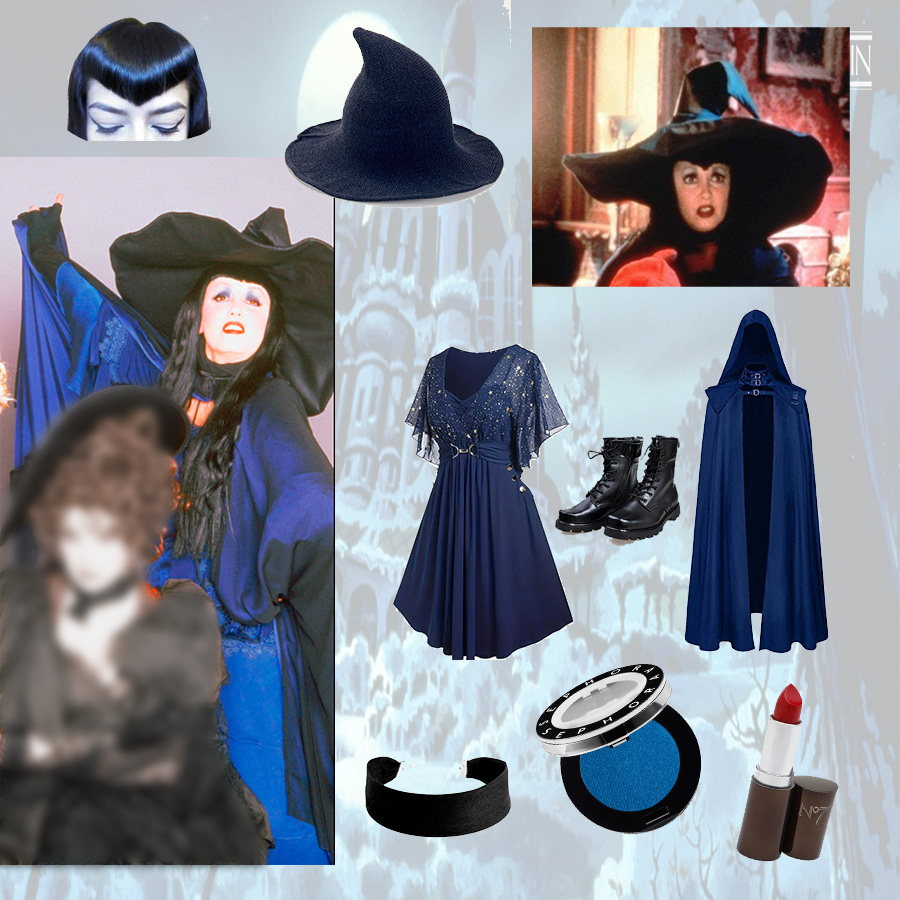


Proceeds from this fundraiser will support The New Gallery in continuing to create equitable and accessible platforms for artists to practice and showcase meaningful social and political art, while fostering honest relationships and community connections through dream-driven contemporary art initiatives. More specifically, we want to continue to pay artists fair fees for their work, support the production of their projects throughout development and create opportunities for the public to engage with contemporary art through workshops and artist talks.
This movie is Rated R for mature audiences only.
Schedule:
6:00PM - Doors open - Silent Auction & Raffle start! Costume Contest winners announced!
7:00PM - Movie starts
9:30PM - Movie Ends - Bids are finalized, raffle winners are announced. Bidders and Rafflers collect their items!
10:00PM - Close
SILENT AUCTION ITEMS
![]()
![]()
![]()
![]()
![]()
![]()
![]()
![]()
![]()
![]()
![]()
![]()
![]()




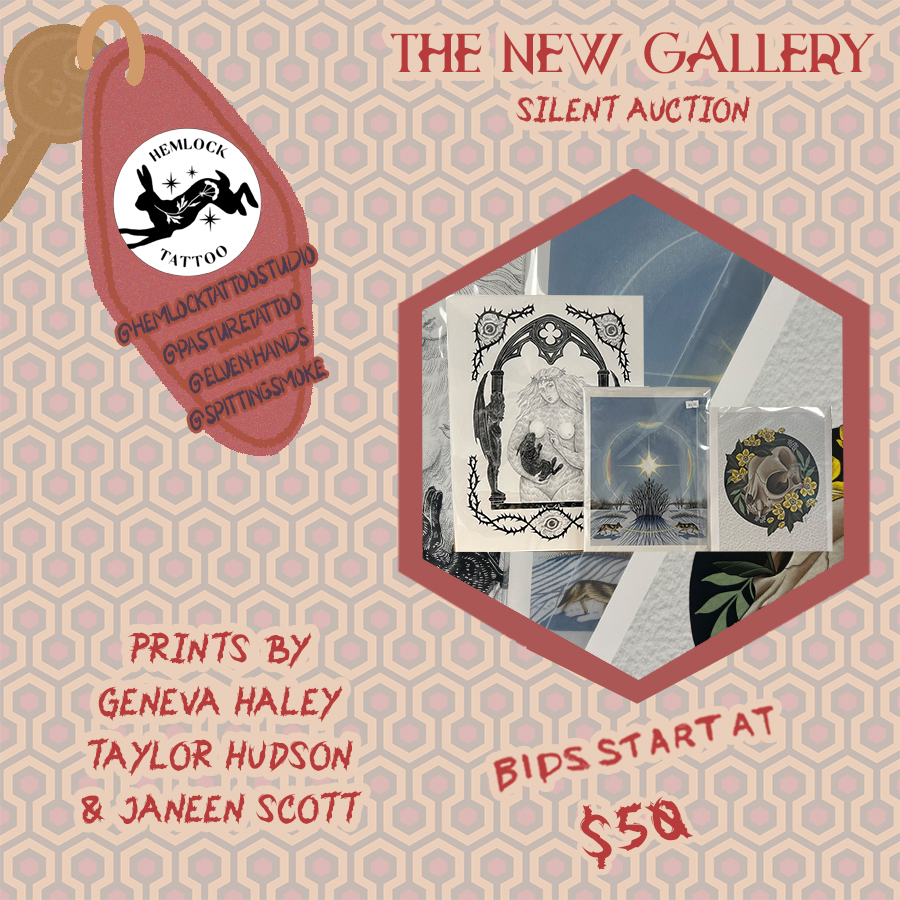



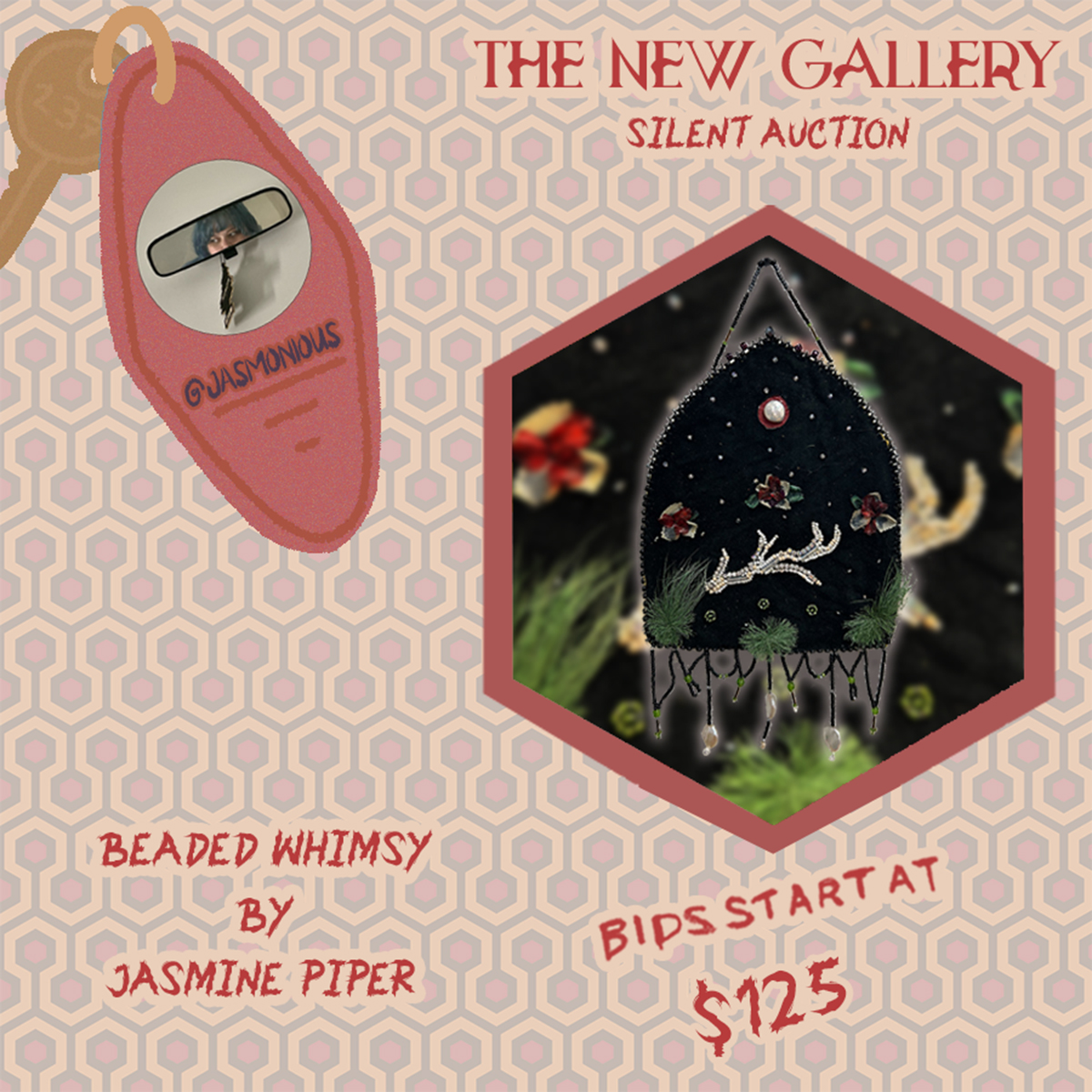



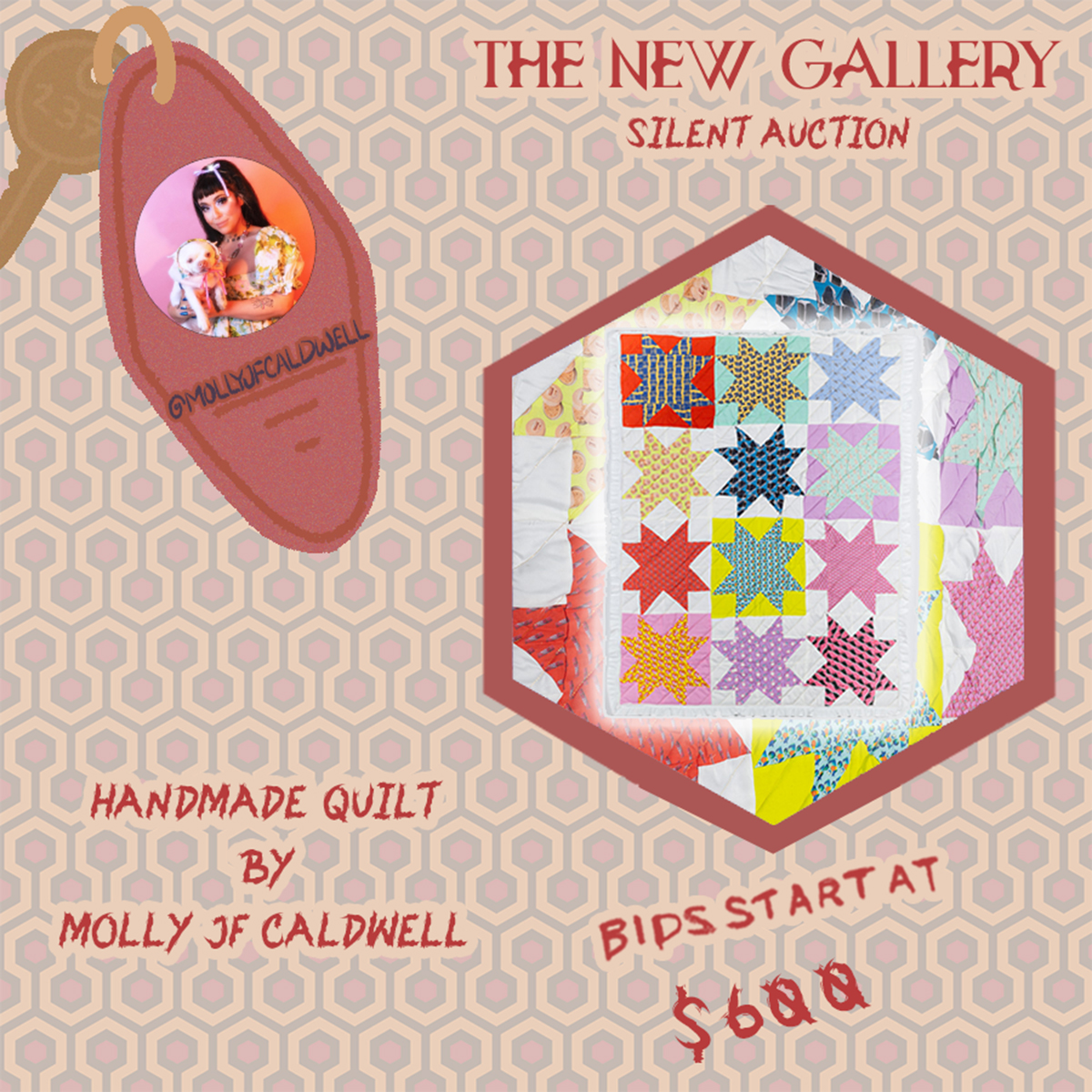
RAFFLE PRIZES
![]()
![]()
![]()
![]()
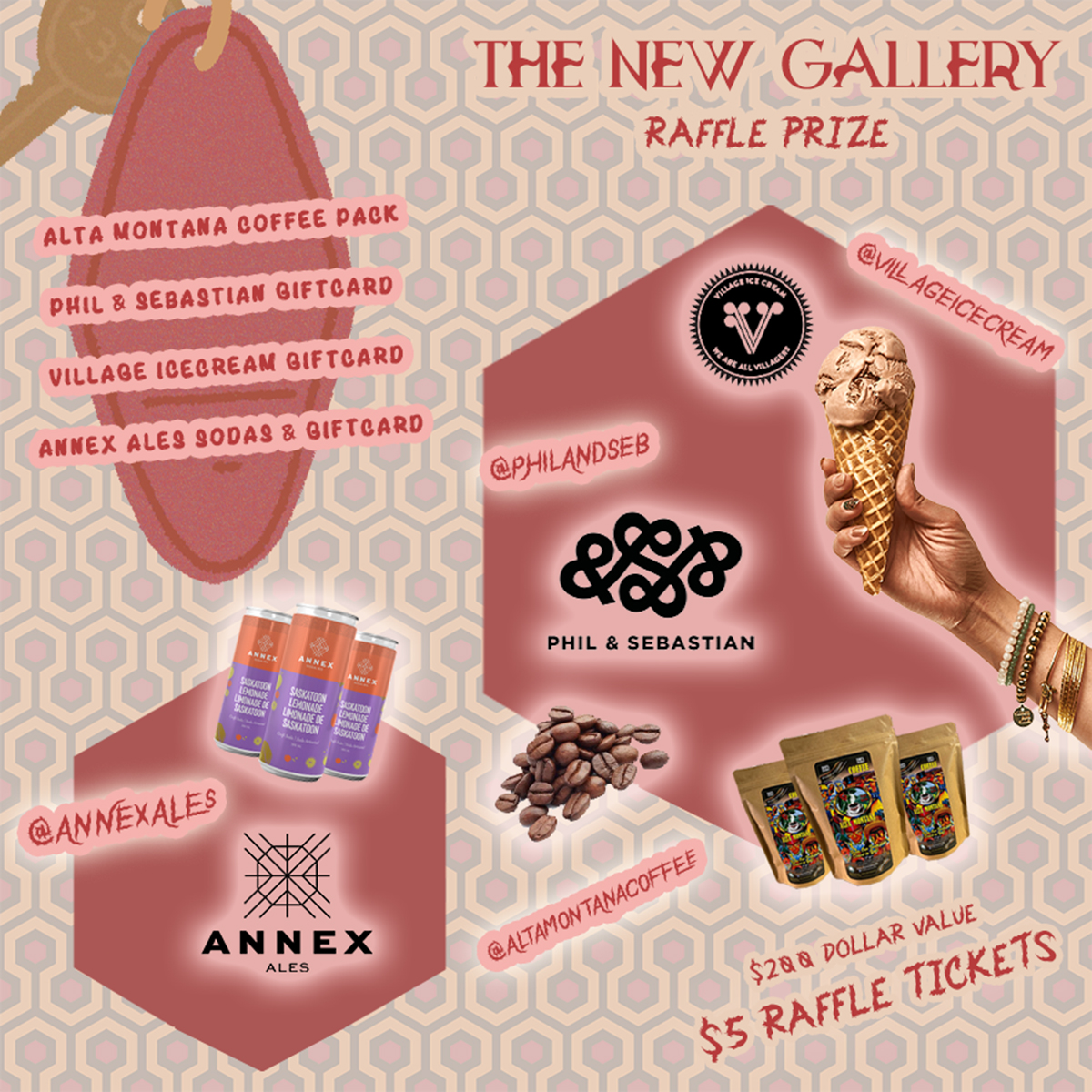
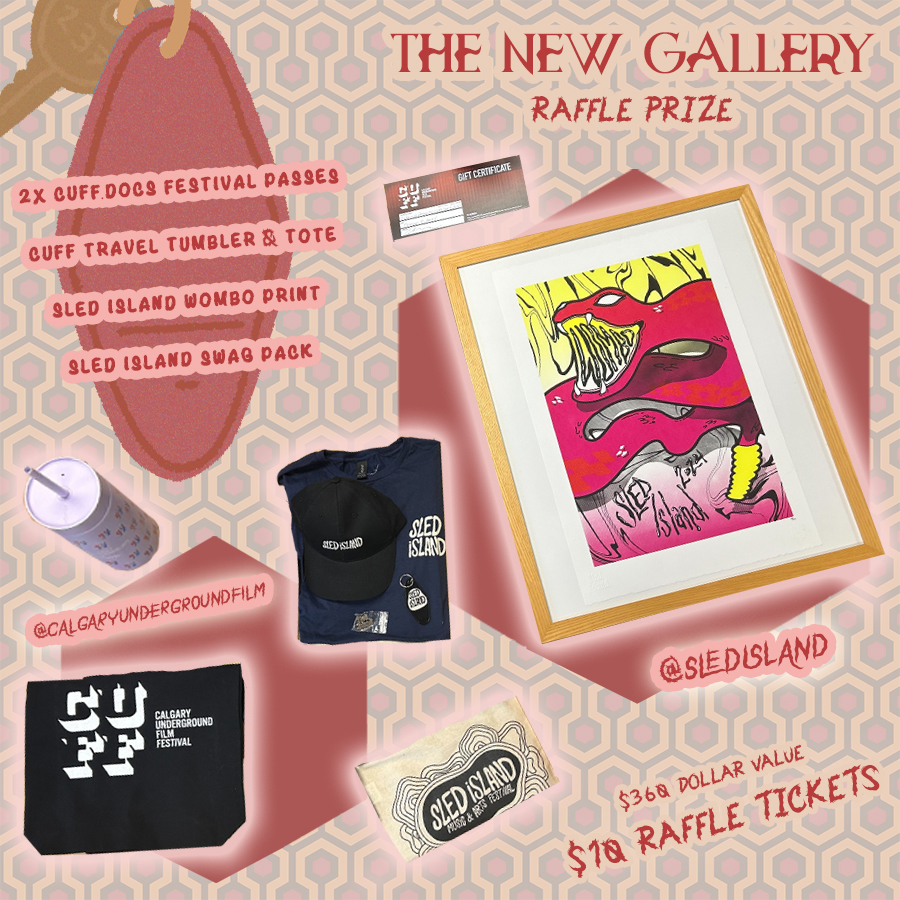
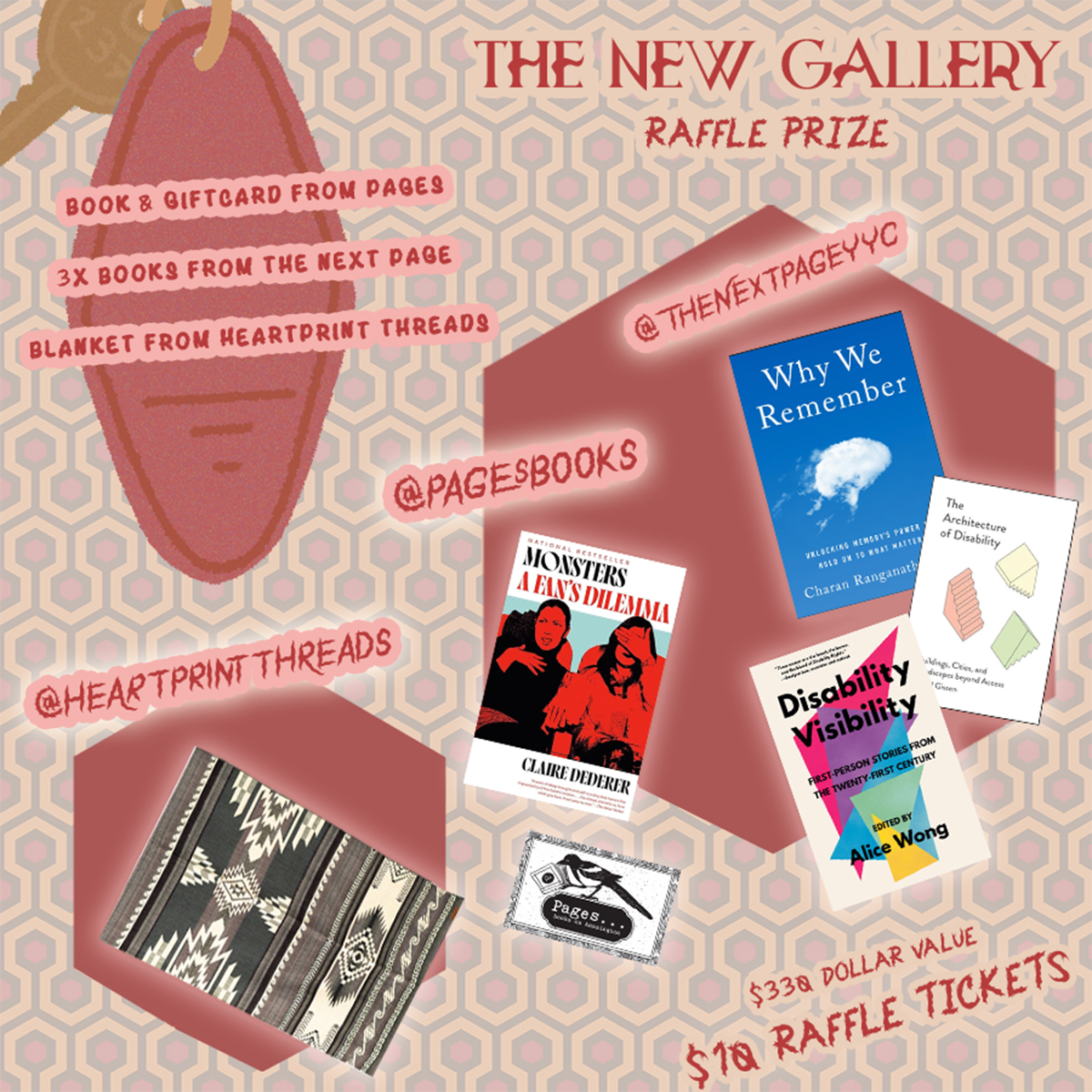

Main Space Exhibition /
Memory Lane
Tangent Collective
August 30 – October 19, 2024
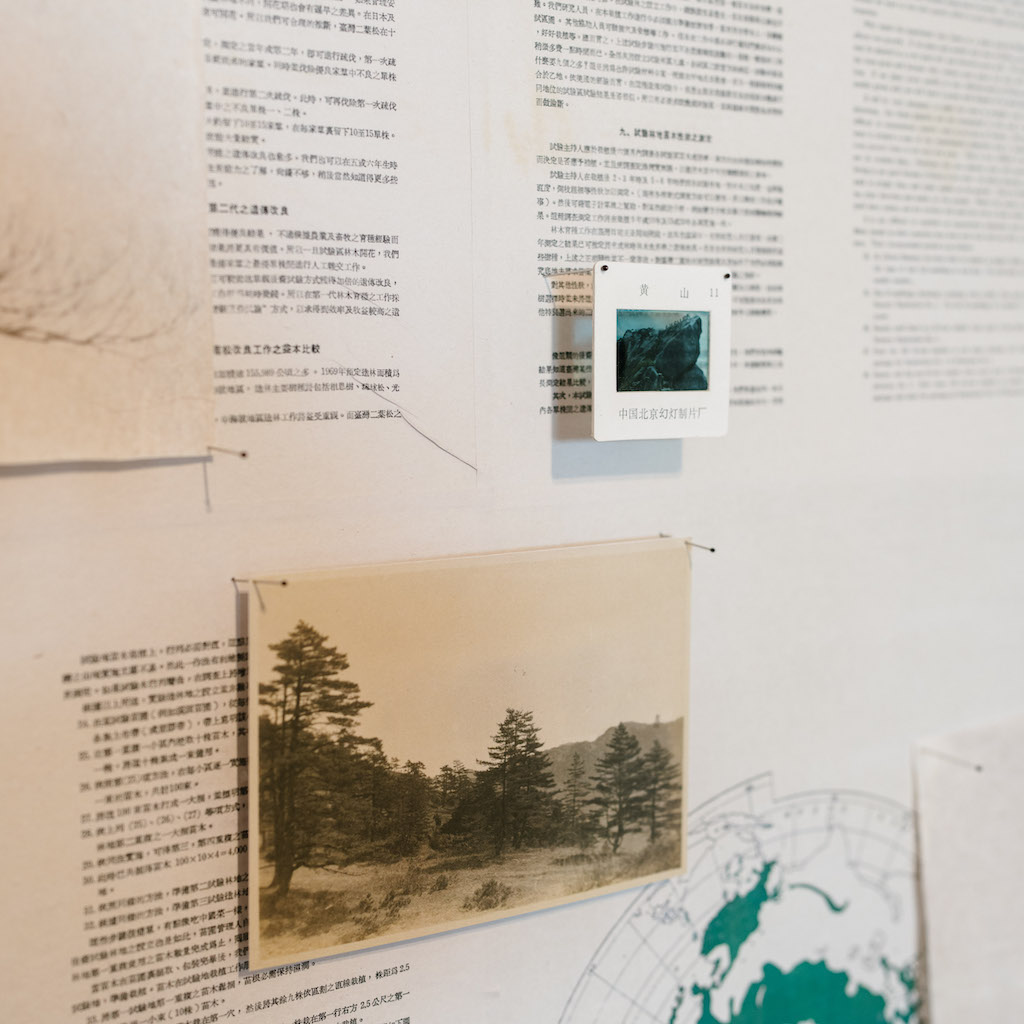
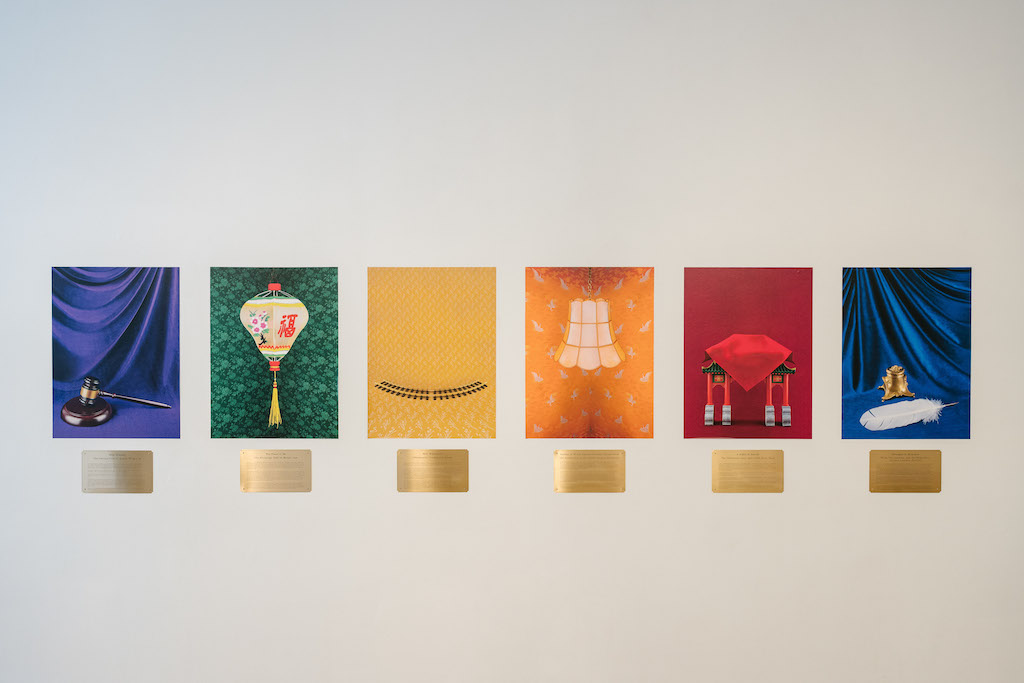

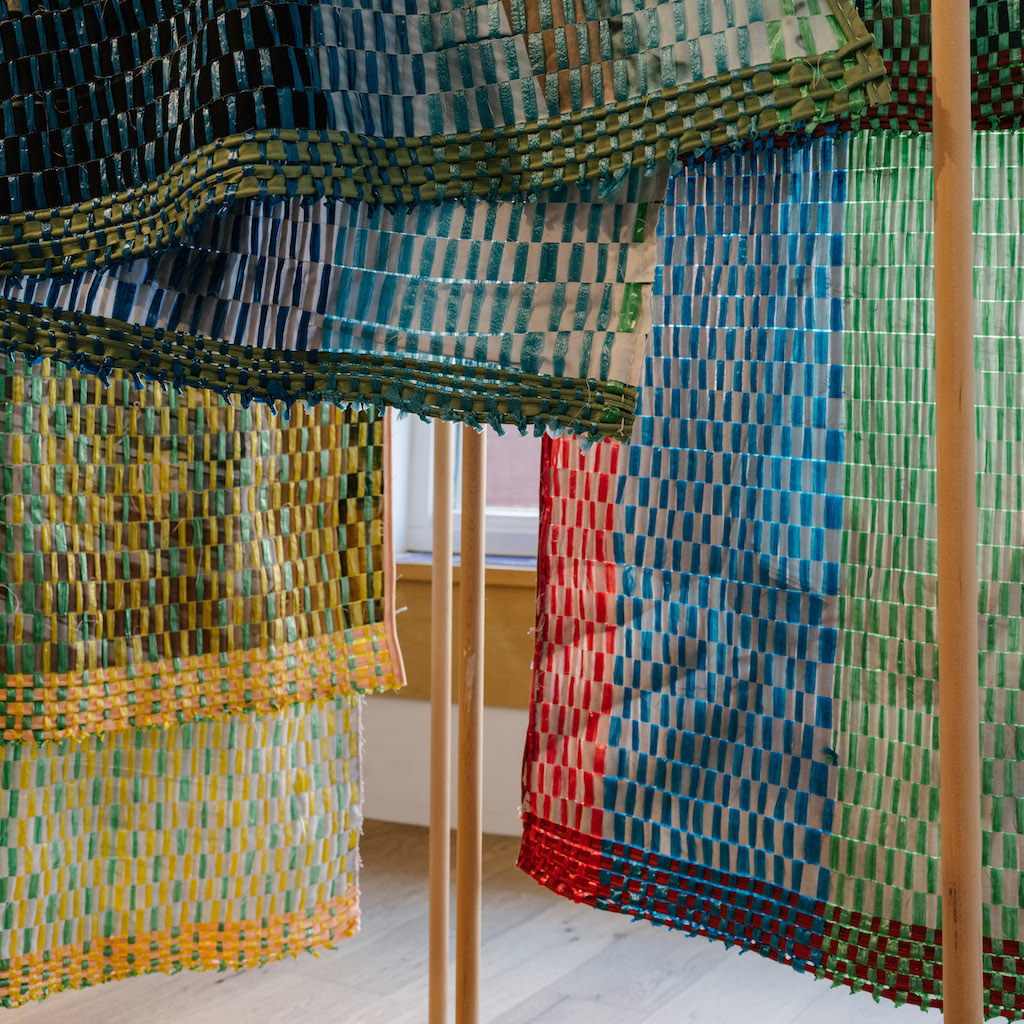

Andong Zheng, Lan “Florence” Yee, Beichen Zhang, Shellie Zhang, Yuxiang Dong
Curated by Tangent Collective
(Brubey Hu & Simon Li)
Curated by Tangent Collective
(Brubey Hu & Simon Li)
Documentation by Danny Luong
“All memory is individual, unreproducible—it dies with each person. What is called collective memory is not a remembering but a stipulating: that this is important, and this is the story about how it happened, with the pictures that lock the story in our minds.”
—Susan Sontag, Regarding the Pain of Others
In both its glaring proximity and opaqueness, memory is in itself a contradiction, like an image and picture, enacting both as a storage and a barricade of the past. In the exhibition, the works of Yuxiang Dong, Lan “Florence” Yee, Beichen Zhang, Shellie Zhang, and Andong Zheng pay homage to memory in all its disjunctures, with its irreproducibility from a personal level to the stipulated qualities from a collective perspective, memory is at once a site of relief as well as struggle.
Both Lan “Florence” Yee and Beichen Zhang deploy gestures of reconciliation with loss. While Lan’s sensual gesture introspects an accelerated loss of information through the gradual reproduction of mundane and familial memories, Beichen’s nostalgia is attached to looted objects whose past was rendered increasingly inaccessible through colonial extraction. Moreover, by scaling “the guest greeting pines” as a manipulated apparatus of the empire, Andong brings forth issues of mass censorship and epistemological control in close proximity to the cultural imaginary of Pinus hwangshanensis (Huangshan Pine), reorienting the quotidian act of seeing as a political destination that deconstructs engrained imperial sentiment sitting behind practices of botanical taxonomy. Lastly, the works of Yuxiang Dong and Shellie Zhang unearth the racial economy of archives, in which the historical fabrication of a racialized imaginary of Chinese immigrants continues to haunt the contemporary portrayals of that past.
The annal of history isn’t as linear as it seems, but full of twists and turns. Our nostalgia allures poignant attempts to resituate the affinities with our past, walking the ambiguous lane of the personal and the collective that weaves into each other’s constellations. In the process of retrieval, we cross paths with sites unseen and lanes unventured, distorting our visions, rendering its parts inaccessible, chiselling parts more lucid.

For Shellie Zhang’s full
Believe it or Not
text click ︎here
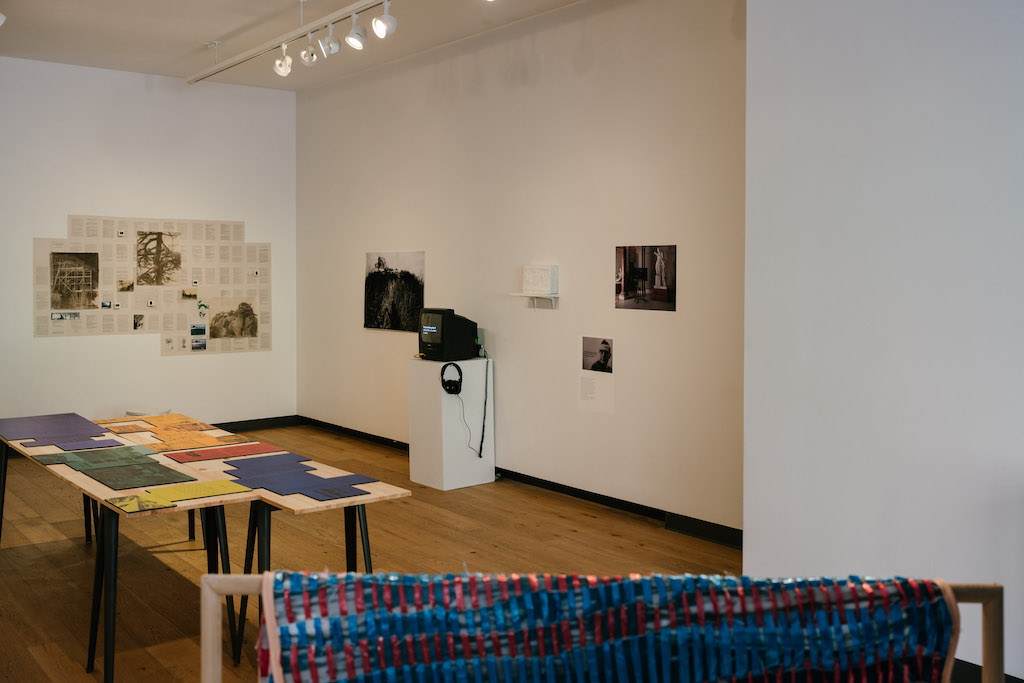
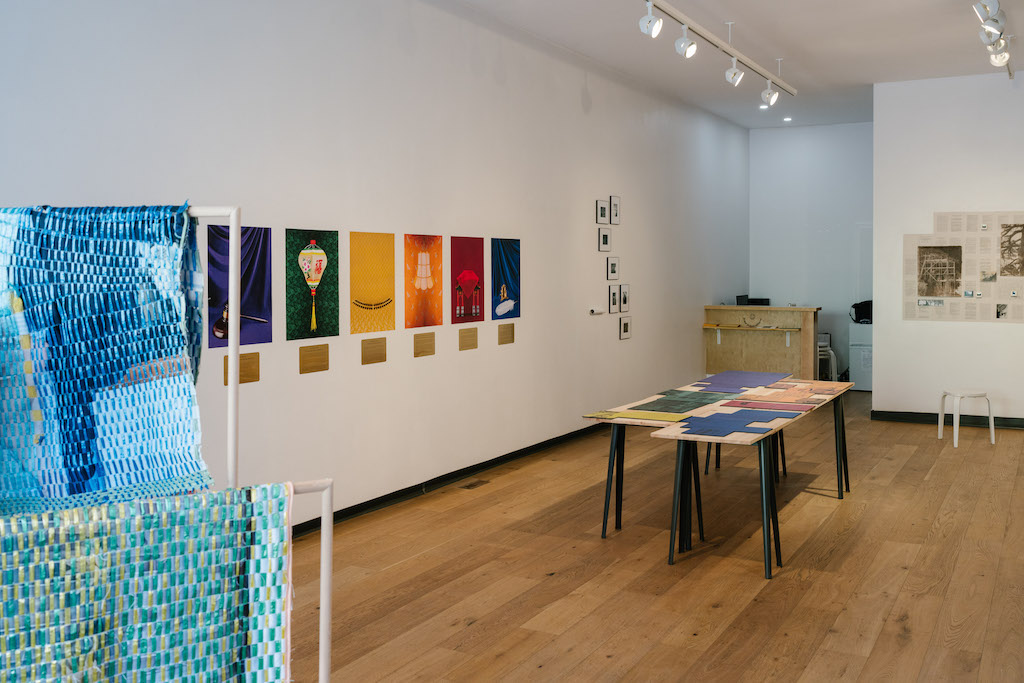
Founded in 2021, Tangent Collective is a nomadic artists' and curators' collective maneuvering in Toronto/Tkaronto and China. It incubates cross-disciplinary dialogues and research-based practices in contemporary arts, surrounding issues of postcolonial studies, decolonization, and global infrastructure within the greater Chinese diaspora. The collectives’s collaborative works and curatorial projects have been shown internationally, which include the Curatorial Awards at Jimei x Arles International Photography Festival, Xiamen, China (2022); Durian-Durian: the First Trans-Southeast Asia Triennial, Guangzhou, China (2023); Borderless, Stateless, Trinity Square Videos, Toronto, Canada (2023); If a tree falls in a forest, Sansheng Art Space, Markham, Canada (2024), among others.
tangentcollective.com
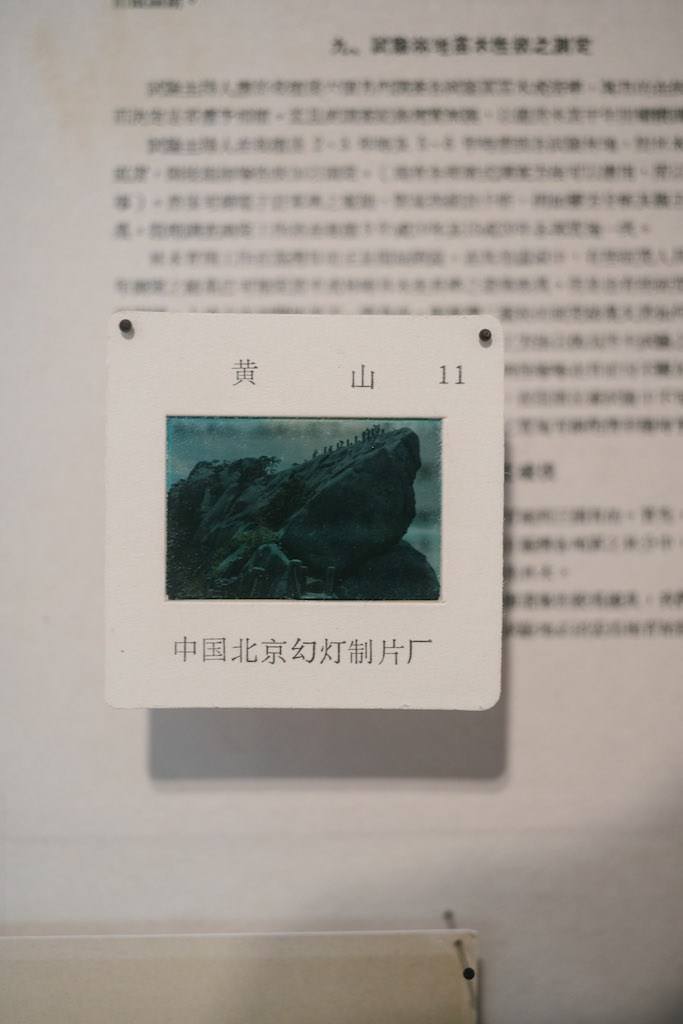

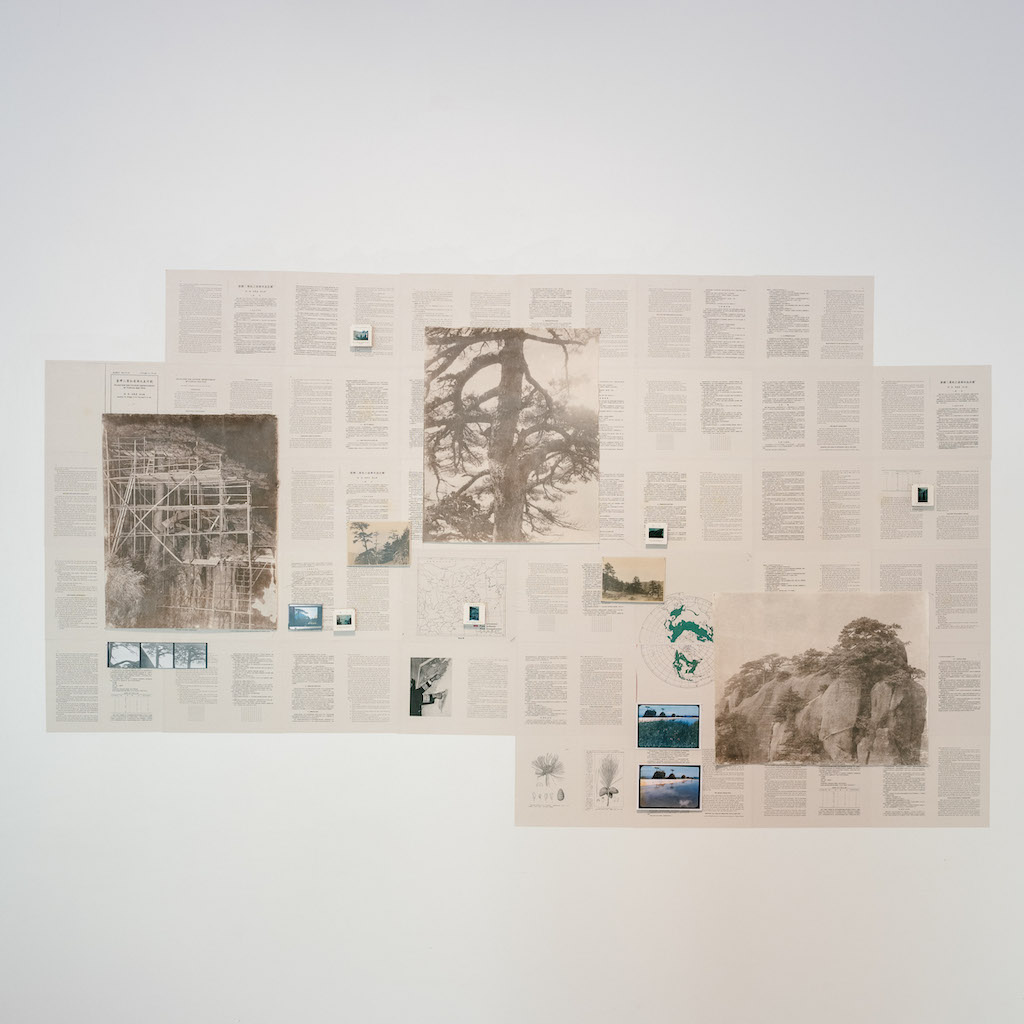

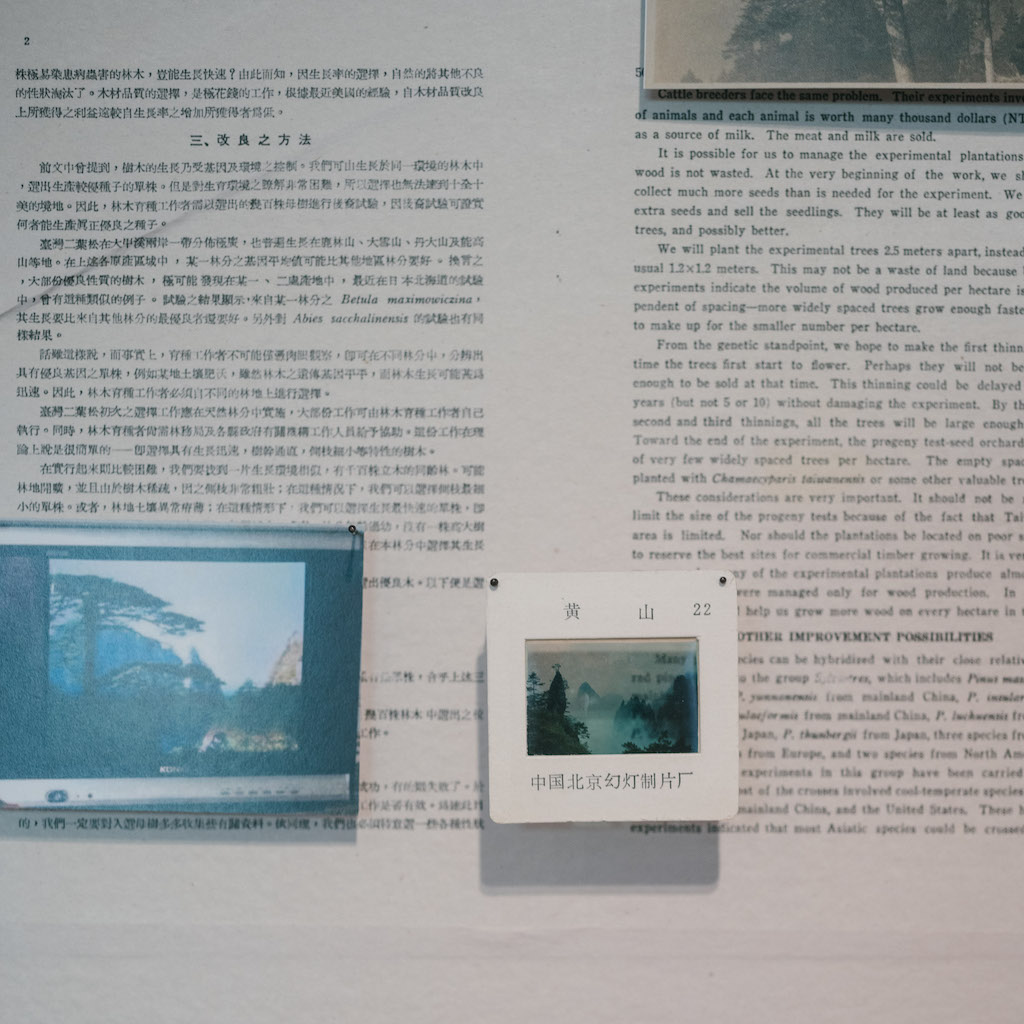
I grew up in the native region of the Huangshan pine. A once fortuitous encounter with one of them at the summit of Mount Huangshan led me to a plaque bearing a Latin plant name: Pinus Taiwanensis Hayata. Tracing this historical thread of botanical taxonomy, a controversy across the 20th century gradually unfolded regarding the naming of three closely related taxa—Pinus hwangshanensis Hsia, Pinus taiwanensis Hayata, and Pinus luchuensis Mayr. The imperial knowledge lineage illuminated how these taxa were defined within the framework shaped by the colonial contexts of botanical studies at its time. Amidst the paradox between following these existing knowledge structures and striving to transcend them, I embark on a journey to the habitats of these pine trees.
From the Last Glacial Maximum to the present, the rising sea levels gradually submerged the land bridges that link the habitats of these closely related species. Long before the expeditions, collections, naming, and mapping endeavours of Heinrich Mayr, Bunzō Hayata, and Wei-Ying Hsia, the natural history of these habitats had already unveiled profound connections between these species.
As I confronted these East Asian pine landscapes in person, I reverted to introspection on the gesture of looking itself. Operating in the gap between knowledge in mind and sensory input on-site, I aim to reconstruct the composite time-space of these pine landscapes from the vantage point of an individual with roots in East Asia.
Andong Zheng (b. 1992, Hefei) lives and works in The Hague, Netherlands. He received his MFA in Photography from the Rhode Island School of Design in 2019 and is currently pursuing studies in the Master Photography & Society program at the Royal Academy of Art, The Hague. With a background in engineering, Zheng was trained to focusing on micro details within strict causal frameworks but often found himself doubting macro structures. Inspecting and destabilizing are his frequent gestures to engage with the external world photographically. He is curious about how images traverse the boundaries of rationality while refusing to simplify his practice to the mapping of established knowledge systems. His recent work investigates the intersection of botanical studies (with its colonial past) and contemporary geopolitical contexts.
From the Last Glacial Maximum to the present, the rising sea levels gradually submerged the land bridges that link the habitats of these closely related species. Long before the expeditions, collections, naming, and mapping endeavours of Heinrich Mayr, Bunzō Hayata, and Wei-Ying Hsia, the natural history of these habitats had already unveiled profound connections between these species.
As I confronted these East Asian pine landscapes in person, I reverted to introspection on the gesture of looking itself. Operating in the gap between knowledge in mind and sensory input on-site, I aim to reconstruct the composite time-space of these pine landscapes from the vantage point of an individual with roots in East Asia.
Andong Zheng (b. 1992, Hefei) lives and works in The Hague, Netherlands. He received his MFA in Photography from the Rhode Island School of Design in 2019 and is currently pursuing studies in the Master Photography & Society program at the Royal Academy of Art, The Hague. With a background in engineering, Zheng was trained to focusing on micro details within strict causal frameworks but often found himself doubting macro structures. Inspecting and destabilizing are his frequent gestures to engage with the external world photographically. He is curious about how images traverse the boundaries of rationality while refusing to simplify his practice to the mapping of established knowledge systems. His recent work investigates the intersection of botanical studies (with its colonial past) and contemporary geopolitical contexts.


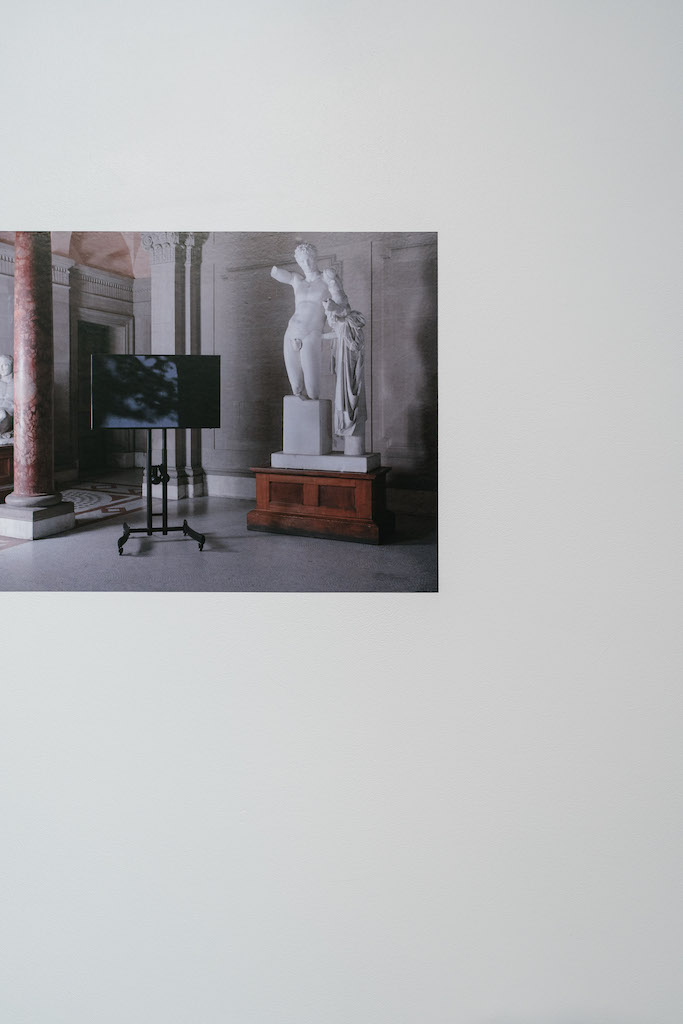


11565KM
11,565 Kilometers Project tracks the path of an artifact from the Shandong province (China) to the University of Pennsylvania Museum of Archaeology and Anthropology (USA). This work highlights issues related to the circulation of Chinese artifacts, the complexity of Chinese colonial histories. It portrays the long migration of this Chinese coffin, its historical colonial background, and the power dynamics within institutional museum collections.
Zhang utilized historical documents to shape his perspective of history; his exploration reflected the dynamic changes behind postcolonial Shandong. With Western historians and Chinese archaeologists’ help, Zhang collected hundreds of pieces of evidence of German and Japanese colonial occupation and their involvement in antique looting and acquisitions.
This project seeks to maintain cultural relics as carriers of history, and the intricate connection between the circulation looted artifacts and the collections of Western museums. When going through the process of textualization in museums, the historical narratives residing in artifacts are institutionalized and obscured by a form of “inauthenticity.” As participants of history, artists can prompt new historical narratives, as Zhang’s investigation through photography attempts to reconstruct artifacts’ original contexts and uncover veiled histories; the making of artifact’s specimens and archives employ material information to confront the muted historical narrative beyond textualization. The “imagined artifact exhibition” constructed upon the image and archive enumerated above can form new sites that interrogate the power dynamics of museum space and the cultural structures embedded within the institutional narratives of artifactual histories.
The practice of Beichen Zhang often manifests in the form of photography, essay films, mixed media installations and institutional research. His multimedia works query and investigate the relationship between cultural heritages and Asian colonial history, archive and geopolitical vicissitude, and the identity’s fluidity within a postcolonial context, with visual metonymy as a carrier of personal narratives that encompass archaeological and anthropological research. Zhang has exhibited on numerous international platforms, such as the 8th Daegu Photo Biennale in South Korea, the 34th Image Forum Festival in Tokyo, the 2022 Jimei X Arles International Photo Festival and more. He has received numerous international accolades, including the nomination for the Foam Paul Huf Award 2023, the nominations for the C/O Berlin Talent Award 2023, the Best Portfolio Prize of the 8th Singapore International Photography Festival (2022), the selected Artist of Top 20.21 Chinese Contemporary Photographer (2021) and more.
11,565 Kilometers Project tracks the path of an artifact from the Shandong province (China) to the University of Pennsylvania Museum of Archaeology and Anthropology (USA). This work highlights issues related to the circulation of Chinese artifacts, the complexity of Chinese colonial histories. It portrays the long migration of this Chinese coffin, its historical colonial background, and the power dynamics within institutional museum collections.
Zhang utilized historical documents to shape his perspective of history; his exploration reflected the dynamic changes behind postcolonial Shandong. With Western historians and Chinese archaeologists’ help, Zhang collected hundreds of pieces of evidence of German and Japanese colonial occupation and their involvement in antique looting and acquisitions.
This project seeks to maintain cultural relics as carriers of history, and the intricate connection between the circulation looted artifacts and the collections of Western museums. When going through the process of textualization in museums, the historical narratives residing in artifacts are institutionalized and obscured by a form of “inauthenticity.” As participants of history, artists can prompt new historical narratives, as Zhang’s investigation through photography attempts to reconstruct artifacts’ original contexts and uncover veiled histories; the making of artifact’s specimens and archives employ material information to confront the muted historical narrative beyond textualization. The “imagined artifact exhibition” constructed upon the image and archive enumerated above can form new sites that interrogate the power dynamics of museum space and the cultural structures embedded within the institutional narratives of artifactual histories.
The practice of Beichen Zhang often manifests in the form of photography, essay films, mixed media installations and institutional research. His multimedia works query and investigate the relationship between cultural heritages and Asian colonial history, archive and geopolitical vicissitude, and the identity’s fluidity within a postcolonial context, with visual metonymy as a carrier of personal narratives that encompass archaeological and anthropological research. Zhang has exhibited on numerous international platforms, such as the 8th Daegu Photo Biennale in South Korea, the 34th Image Forum Festival in Tokyo, the 2022 Jimei X Arles International Photo Festival and more. He has received numerous international accolades, including the nomination for the Foam Paul Huf Award 2023, the nominations for the C/O Berlin Talent Award 2023, the Best Portfolio Prize of the 8th Singapore International Photography Festival (2022), the selected Artist of Top 20.21 Chinese Contemporary Photographer (2021) and more.



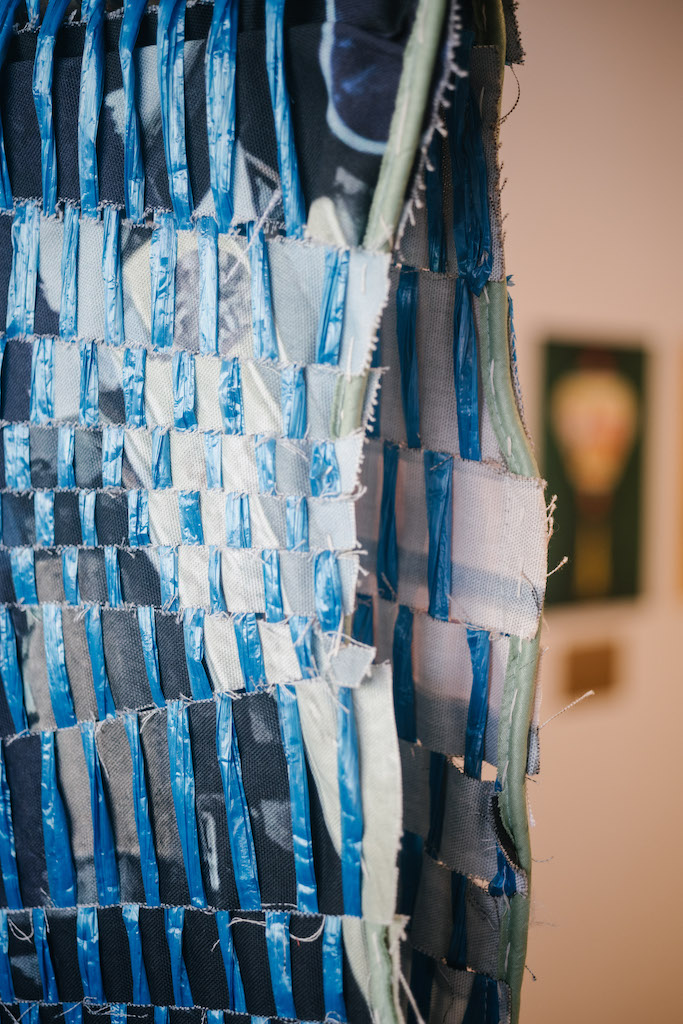
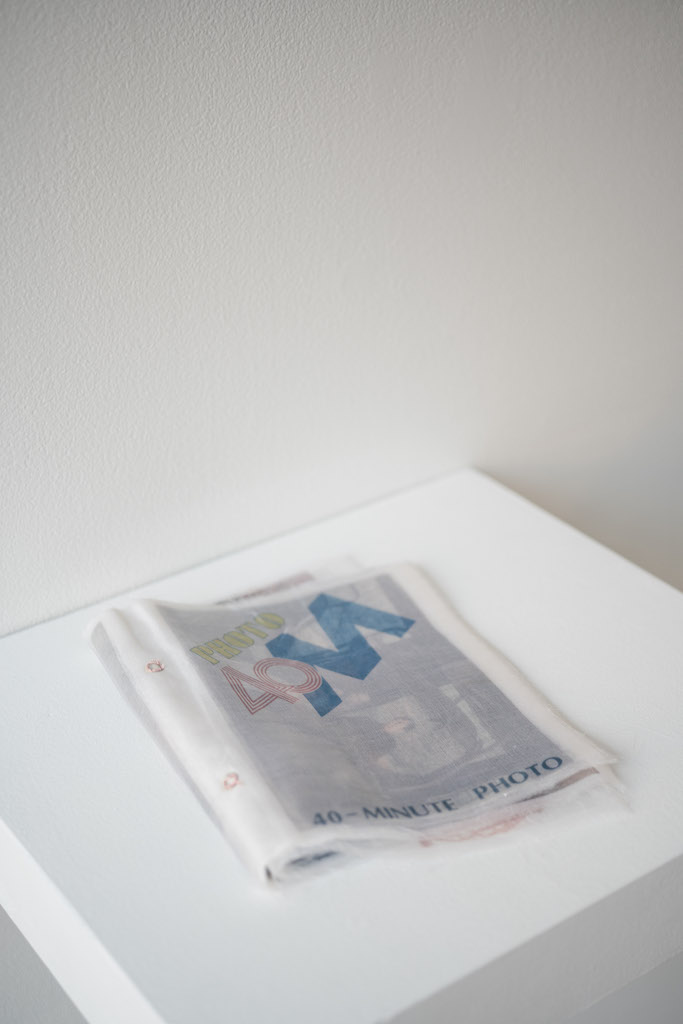
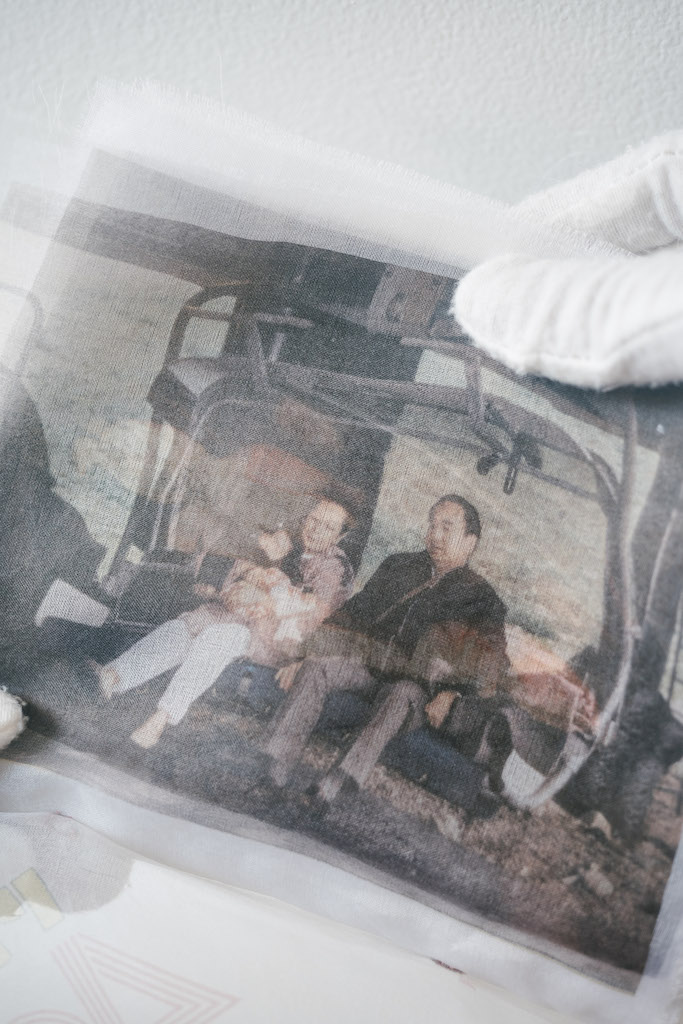
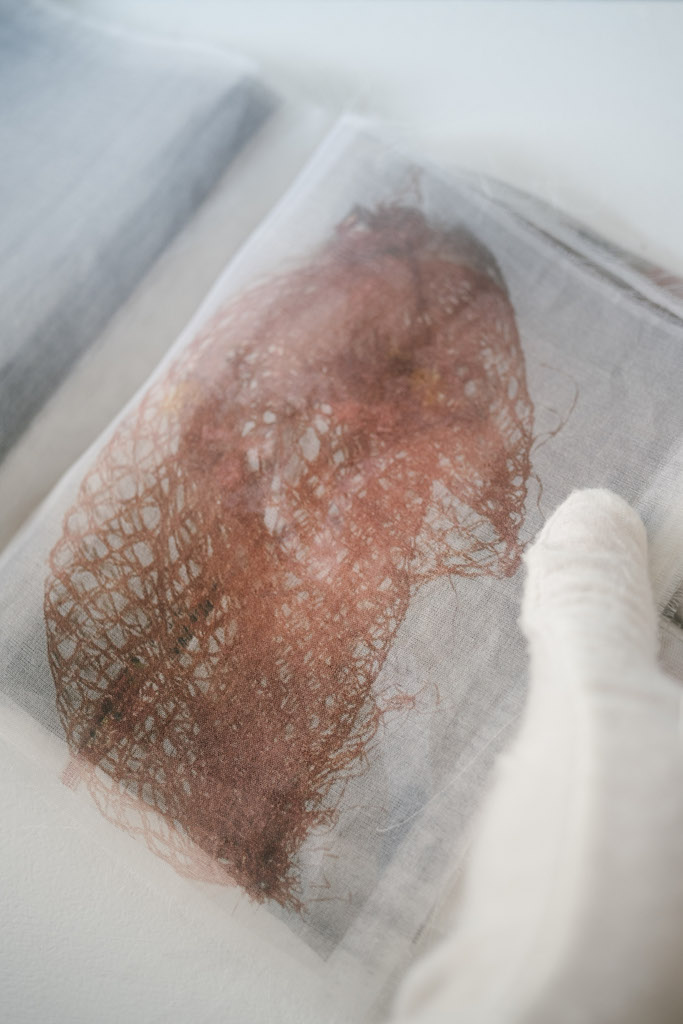
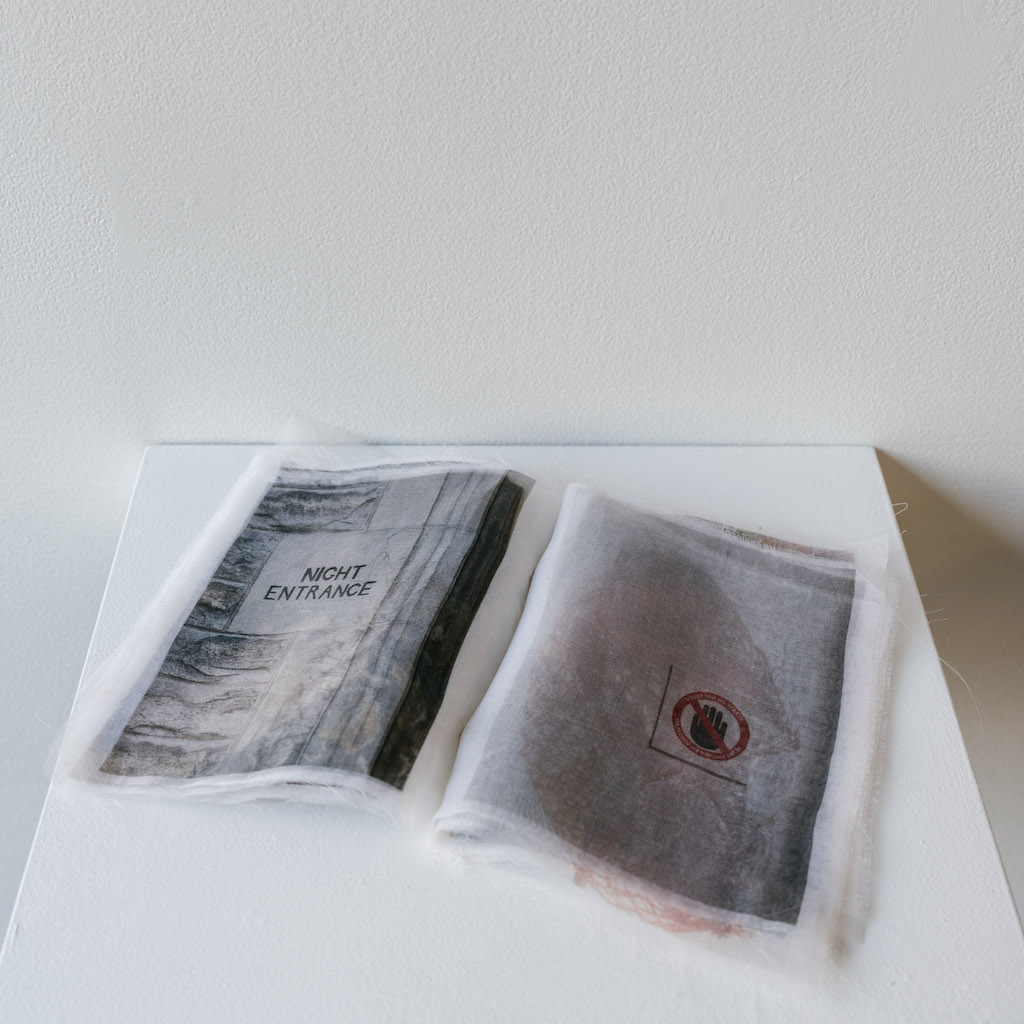
Recovered—Recipe Book
Misprints from Lan’s previous fabric photo prints were cut up and reassembled as weavings through plastic twine, the kind of cord they found all around them in Tkaronto’s Chinatown (where they live), typically used in fruit crates and newspaper packaging. The mundane materials mirrored their cellphone photograph, cluttering a digital archive with decontextualization. The resulting object takes on an accelerated loss of information, being made less legible from their reproduction. For Recovered—Recipe Book, the shiny red, green, and blue thread mimic RGB digital image rendering, the only remnant left of an artwork that got lost in shipping in 2022.
Lan “Florence” Yee is a visual artist and cultural worker based in Tkaronto/Toronto & Tiohtià:ke/Mooniyang/Montreal. They collect text in underappreciated places and ferment it until it is too suspicious to ignore. Lan’s work has been exhibited at the Textile Museum of Canada (2023-24), Darling Foundry (2022), the Toronto Museum of Contemporary Art (2021), and the Gardiner Museum (2019), among others. They obtained a BFA from Concordia University and an MFA from OCAD U as a Joseph-Armand Bombardier SSHRC scholar. Lan has been awarded grants from the Canada Council for the Arts, the Ontario Council for the Arts, and the Toronto Arts Council. They are a recipient of the William and Meredith Saunderson Prizes for Emerging Artists (2023). Lan is a member of JIA Foundation as curator of the Chinatown House MTL.
Misprints from Lan’s previous fabric photo prints were cut up and reassembled as weavings through plastic twine, the kind of cord they found all around them in Tkaronto’s Chinatown (where they live), typically used in fruit crates and newspaper packaging. The mundane materials mirrored their cellphone photograph, cluttering a digital archive with decontextualization. The resulting object takes on an accelerated loss of information, being made less legible from their reproduction. For Recovered—Recipe Book, the shiny red, green, and blue thread mimic RGB digital image rendering, the only remnant left of an artwork that got lost in shipping in 2022.
Lan “Florence” Yee is a visual artist and cultural worker based in Tkaronto/Toronto & Tiohtià:ke/Mooniyang/Montreal. They collect text in underappreciated places and ferment it until it is too suspicious to ignore. Lan’s work has been exhibited at the Textile Museum of Canada (2023-24), Darling Foundry (2022), the Toronto Museum of Contemporary Art (2021), and the Gardiner Museum (2019), among others. They obtained a BFA from Concordia University and an MFA from OCAD U as a Joseph-Armand Bombardier SSHRC scholar. Lan has been awarded grants from the Canada Council for the Arts, the Ontario Council for the Arts, and the Toronto Arts Council. They are a recipient of the William and Meredith Saunderson Prizes for Emerging Artists (2023). Lan is a member of JIA Foundation as curator of the Chinatown House MTL.
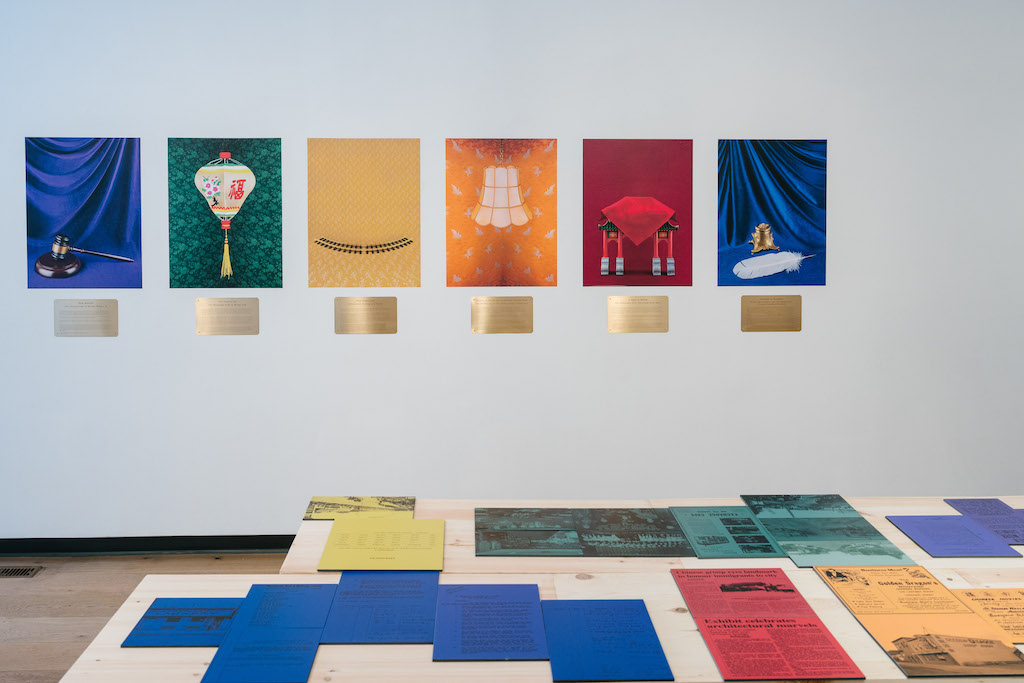
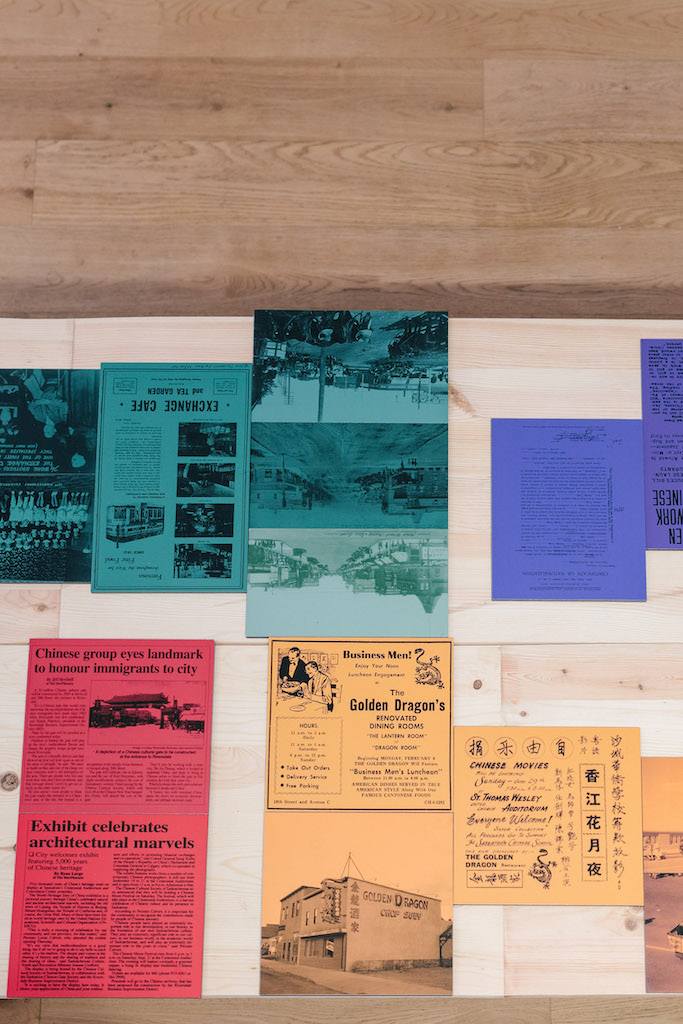






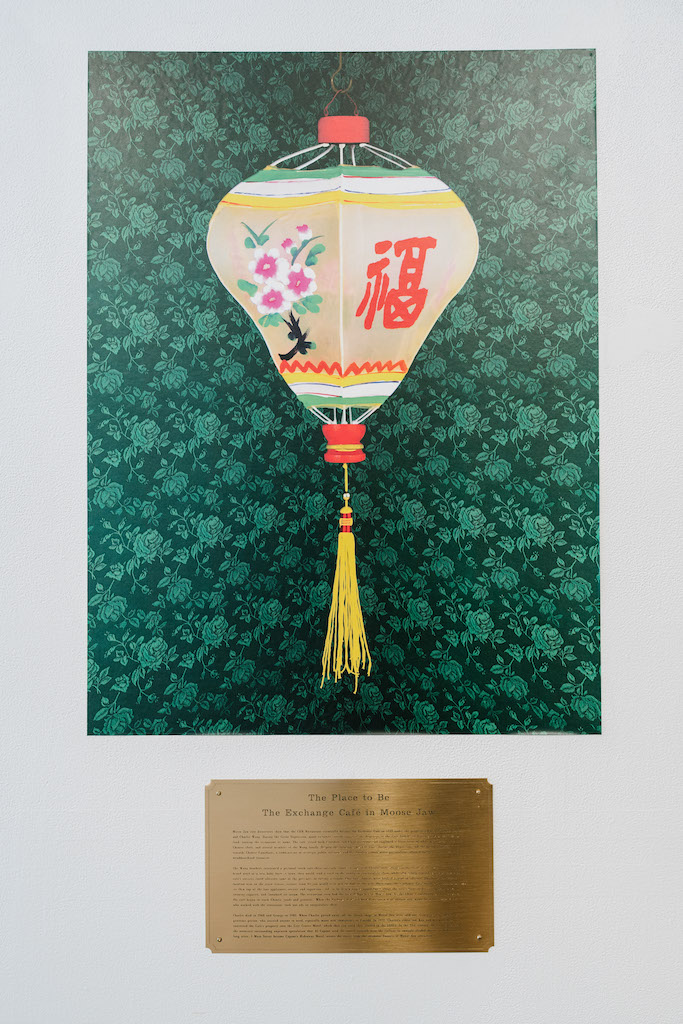

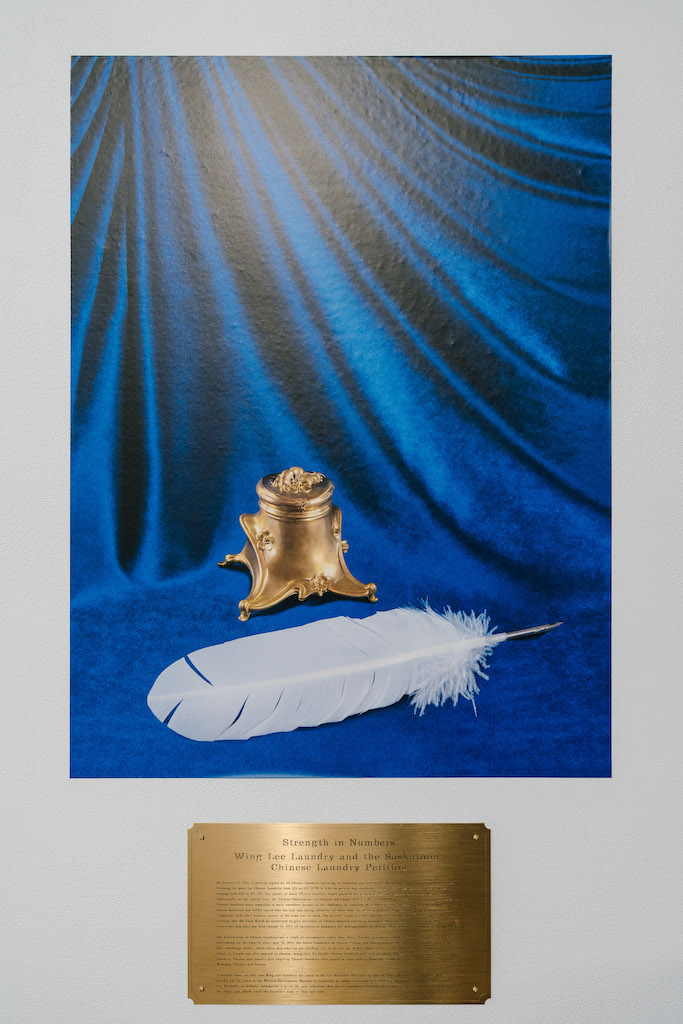
Believe it or Not
Believe it or Not developed from Shellie Zhang’s research in Treaty 6/Saskatoon. During this time, Zhang came across omitted and fictionalized narratives of early Chinese settlers which led her to search for accounts outside of the dominant historical context.
Referencing the murder mystery game Clue, each image and set of archival materials in the work serves piece together the stories she learned, with objects/props standing in as witnesses, evidence or recreations of them. Stories include focuses on the Quong Wing v Rex Supreme Court case, the Moose Jaw Exchange Café, a laundry tax petition in Saskatoon, a proposed Chinatown gate in Saskatoon, Saskatoon’s first Chinatown, and the Golden Dragon Café.
Believe it or Not is a case study on the politics of believability, how legacies of colonial narratives have been longstanding contributors to prevailing misconceptions of truth, whom the distance of fiction comforts and the power of local history.
Shellie Zhang creates images, objects and projects in a wide range of media to explore how integration, diversity and assimilation is implemented and negotiated, and how manifestations of these ideas relate to lived experiences. Zhang is interested in oral and local history, and how the objects and iconographies of culture are remembered and preserved.
Zhang has exhibited at venues including Asian Art Initiative (Philadelphia) and the Institute of Contemporary Art San Diego. In 2017, She was an Artist-in-Residence at the Art Gallery of Ontario. In 2021, she was a recipient of the Toronto Friends of the Visual Arts Artist Award. Her work is in public collections such as the Robert McLaughlin Gallery and the McMaster Museum of Art. Zhang is a founding board member of the Toronto Chinatown Land Trust. In Fall 2024, she will be pursuing a Master of Fine Arts in Sculpture at Yale University.
Believe it or Not developed from Shellie Zhang’s research in Treaty 6/Saskatoon. During this time, Zhang came across omitted and fictionalized narratives of early Chinese settlers which led her to search for accounts outside of the dominant historical context.
Referencing the murder mystery game Clue, each image and set of archival materials in the work serves piece together the stories she learned, with objects/props standing in as witnesses, evidence or recreations of them. Stories include focuses on the Quong Wing v Rex Supreme Court case, the Moose Jaw Exchange Café, a laundry tax petition in Saskatoon, a proposed Chinatown gate in Saskatoon, Saskatoon’s first Chinatown, and the Golden Dragon Café.
Believe it or Not is a case study on the politics of believability, how legacies of colonial narratives have been longstanding contributors to prevailing misconceptions of truth, whom the distance of fiction comforts and the power of local history.
Shellie Zhang creates images, objects and projects in a wide range of media to explore how integration, diversity and assimilation is implemented and negotiated, and how manifestations of these ideas relate to lived experiences. Zhang is interested in oral and local history, and how the objects and iconographies of culture are remembered and preserved.
Zhang has exhibited at venues including Asian Art Initiative (Philadelphia) and the Institute of Contemporary Art San Diego. In 2017, She was an Artist-in-Residence at the Art Gallery of Ontario. In 2021, she was a recipient of the Toronto Friends of the Visual Arts Artist Award. Her work is in public collections such as the Robert McLaughlin Gallery and the McMaster Museum of Art. Zhang is a founding board member of the Toronto Chinatown Land Trust. In Fall 2024, she will be pursuing a Master of Fine Arts in Sculpture at Yale University.


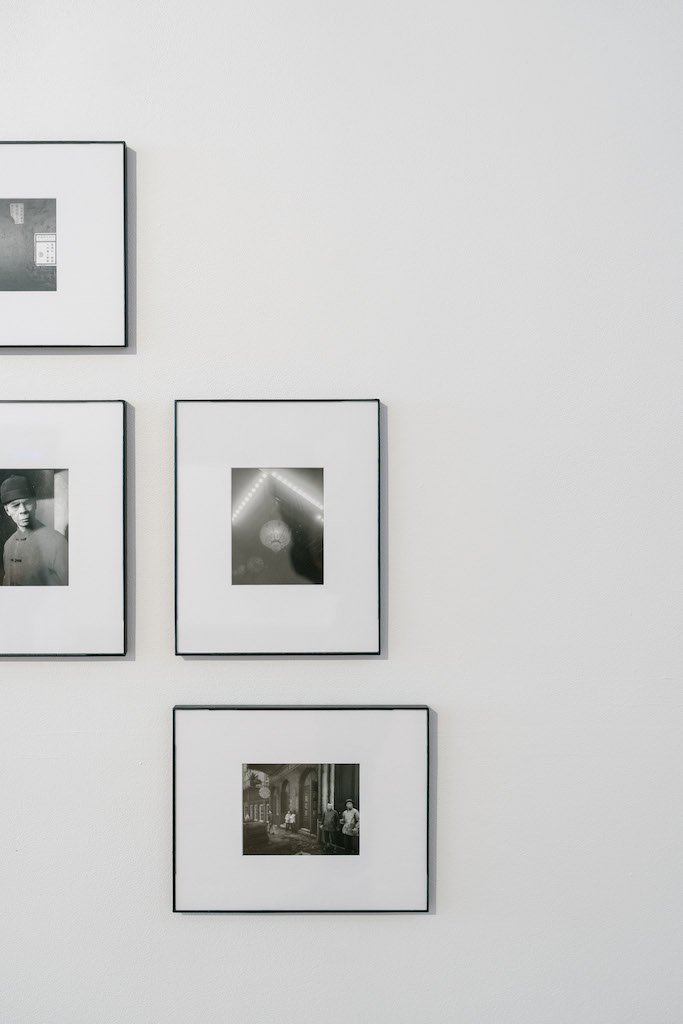

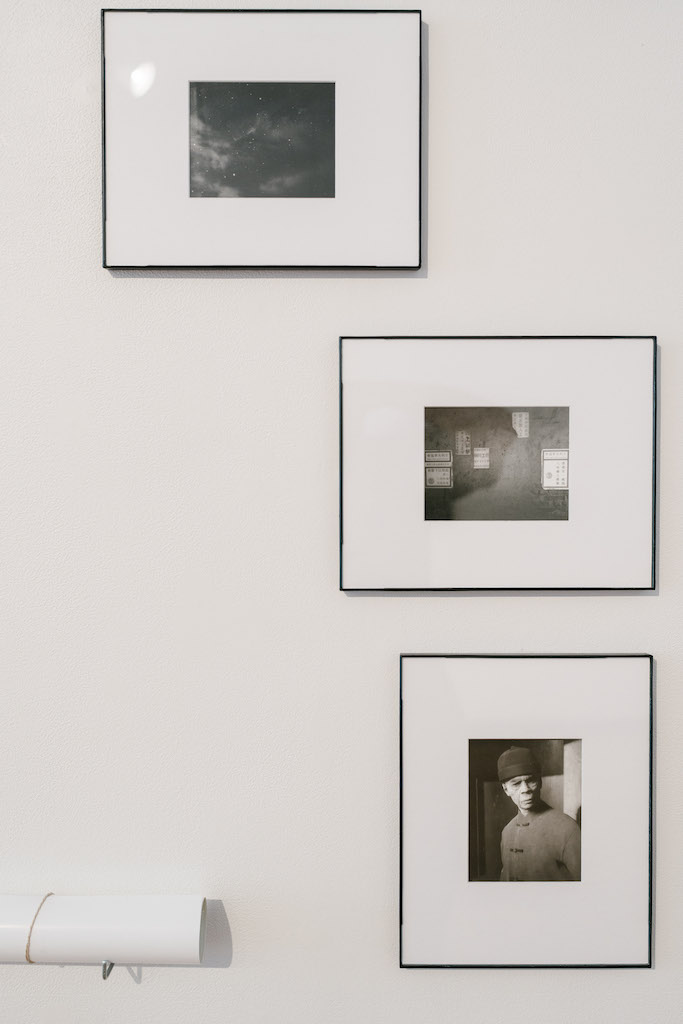
Central Union Railroad & Saint Denis
Central Union Railroad & Saint Denis investigates the history of Chinese migrant workers during the construction of the First Transcontinental Railroad between 1863 and 1869 in the USA. Through a series of darkroom contact prints with digital negative transfer film made out of video game screenshots, this body of work experiments with the materiality of photography across the digital and the analog and examines contemporary racial representations and historical narratives in the video game industry.
Yuxiang Dong (born 1990, Wujiang, Jiangsu Province, China) is an art, educational, and social worker. His current practices and research are driven by the contradiction between ethnography in the Anthropocene and speculation of object-oriented ontology. He received an Honorable Mention of the PhMuseum Photography Grant (2023) and was a longlist of The Lumen Prize for Art and Technology (2023) and a finalist of the Three Shadows Photography Award (2016). He has exhibited at Hermitage Museum & Gardens, Norfolk, VA (US), OCAT Institute, Beijing (China); Verzasca Foto, Canton of Ticino (Switzerland); Jakarta International Photo Festival, Jakarta, (Indonesia); PhMuseum Days, PhMuseum, Bologna (Italy); and other international venues. His documentaries and filmic works have been screened at Obskuur Ghent Film Festival (Belgium), Doc. Boston Documentary Film Festival (US), Stay Art Festival (China), and other global festivals.
Central Union Railroad & Saint Denis investigates the history of Chinese migrant workers during the construction of the First Transcontinental Railroad between 1863 and 1869 in the USA. Through a series of darkroom contact prints with digital negative transfer film made out of video game screenshots, this body of work experiments with the materiality of photography across the digital and the analog and examines contemporary racial representations and historical narratives in the video game industry.
Yuxiang Dong (born 1990, Wujiang, Jiangsu Province, China) is an art, educational, and social worker. His current practices and research are driven by the contradiction between ethnography in the Anthropocene and speculation of object-oriented ontology. He received an Honorable Mention of the PhMuseum Photography Grant (2023) and was a longlist of The Lumen Prize for Art and Technology (2023) and a finalist of the Three Shadows Photography Award (2016). He has exhibited at Hermitage Museum & Gardens, Norfolk, VA (US), OCAT Institute, Beijing (China); Verzasca Foto, Canton of Ticino (Switzerland); Jakarta International Photo Festival, Jakarta, (Indonesia); PhMuseum Days, PhMuseum, Bologna (Italy); and other international venues. His documentaries and filmic works have been screened at Obskuur Ghent Film Festival (Belgium), Doc. Boston Documentary Film Festival (US), Stay Art Festival (China), and other global festivals.
中文翻译 Chinese Translation
...

On August 30th, 2024 from 6-7PM there was a curators tour of Memory Lane where Brubey Hu and Simon Yantong Li of Tangent Collective guideded us through the works of Yuxiang Dong, Lan “Florence” Yee, Beichen Zhang, Shellie Zhang, and Andong Zheng. Afterwards was the opening reception of Memory Lane, in The New Gallerys Main Space.

BUMP ALLEY PARTY 2024
The Trinity KiKi Ball & Rave
When: August 17, 5PM-12AM
Where: 727 11th Ave SW
This year The New Gallery will be participating in The BUMP Alley Party where The New Gallery and The Bows will team up to teach folks how to create cyanotypes. A cyanotype is a slow-reacting, photographic printing formulation sensitive to ultraviolet and blue light spectrum. These easy to make prints use minimal chemicals and use water to reveal the imagery. Join us and learn how to make a beautiful solar print that you can take home!
Read more about The Trinity Kiki Ball & Rave on BUMP YYC’s website: https://yycbump.ca/the-trinity-kiki-ball-rave-is-coming/
Archive / 2023
Fish Skin Tanning Workshop
with Morgan Possberg Denne
December 2nd & 9th, 2023
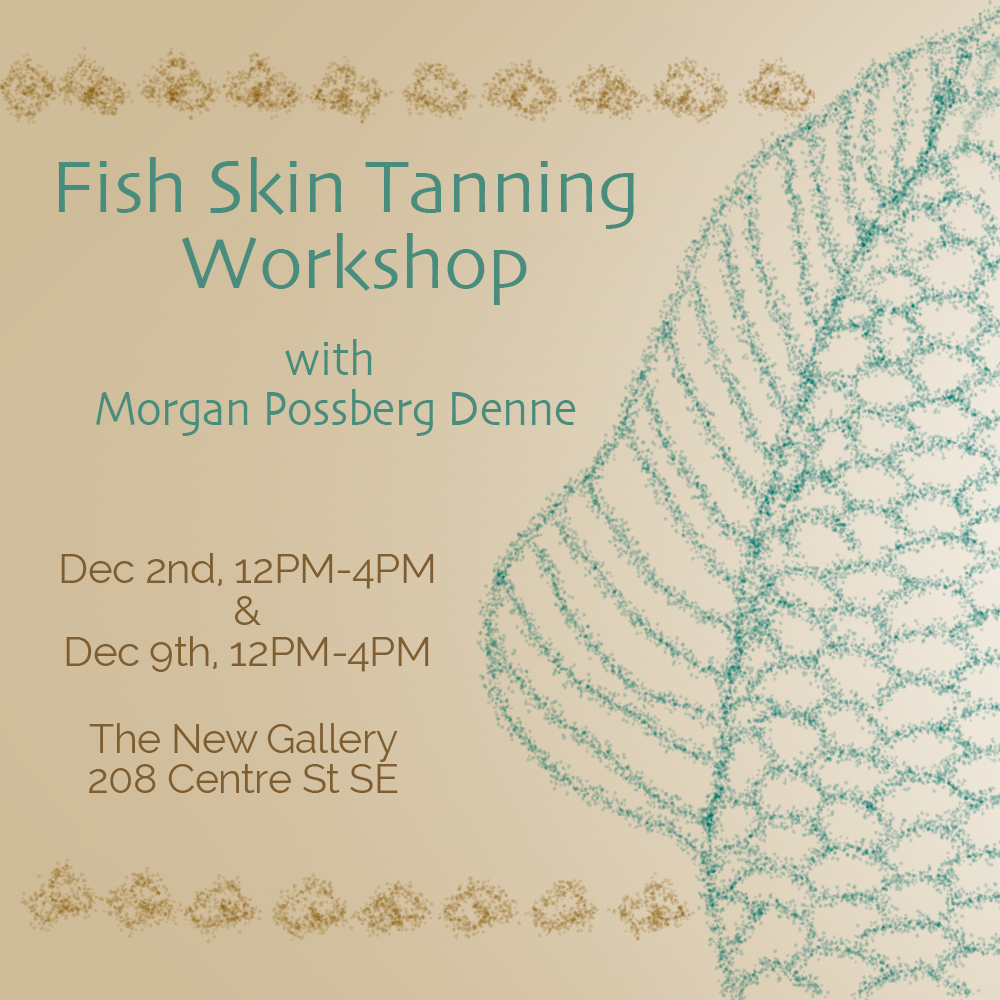
Fish Skin Tanning Workshop
with Morgan Possberg Denne
This workshop has 2 parts, participants are asked to attend both parts of the workshop.
Part 1: December 2nd, 12PM-4PM
Part 2: December 9th, 12PM-4PM
@ The New Gallery
208 Centre St SE
208 Centre St SE
Traditionally, preserving and tanning fish skin has historical roots in many different Indigenous cultures throughout Canada. Through their artwork, Morgan Possberg Denne creates new narratives and artistically driven objects with these traditional crafting techniques. For the workshop we will be tanning a variety of different types of fish skins; the option to either tea tan, or oil tan will be available, and support for both types of tanning will be offered. All materials will be covered by TNG and the artist. The workshop will get a bit messy, so if you're squeamish about guts / meat / fish please prepare yourself to get very personal with the fish. We will be meeting on two different afternoons, with a bit of light homework inbetween to finish your tanned skin.
On December 2nd, and December 9th, Possberg Denne will be leading a workshop that teaches folks how to work with fish skins to breath new life into the tradition while giving insight into the concepts surrounding their main space show at The New Gallery: ᓄᐦᑕᐃᐧᕀ ᐊᐢᑯᑖᐢᑯᐱᓱᐣ, nohtawiy askotâskopison (My Father’s Cradleboard), on exhibit from November 18th - December 22nd, 2023.
ᓄᐦᑕᐃᐧᕀ ᐊᐢᑯᑖᐢᑯᐱᓱᐣ
nohtawiy askotâskopison
My Father’s Cradleboard
Morgan Possberg Denne
November 18 - December 22, 2023
Closing Reception:
December 15th, 2023
7PM @ The New Gallery
208 Centre St SE
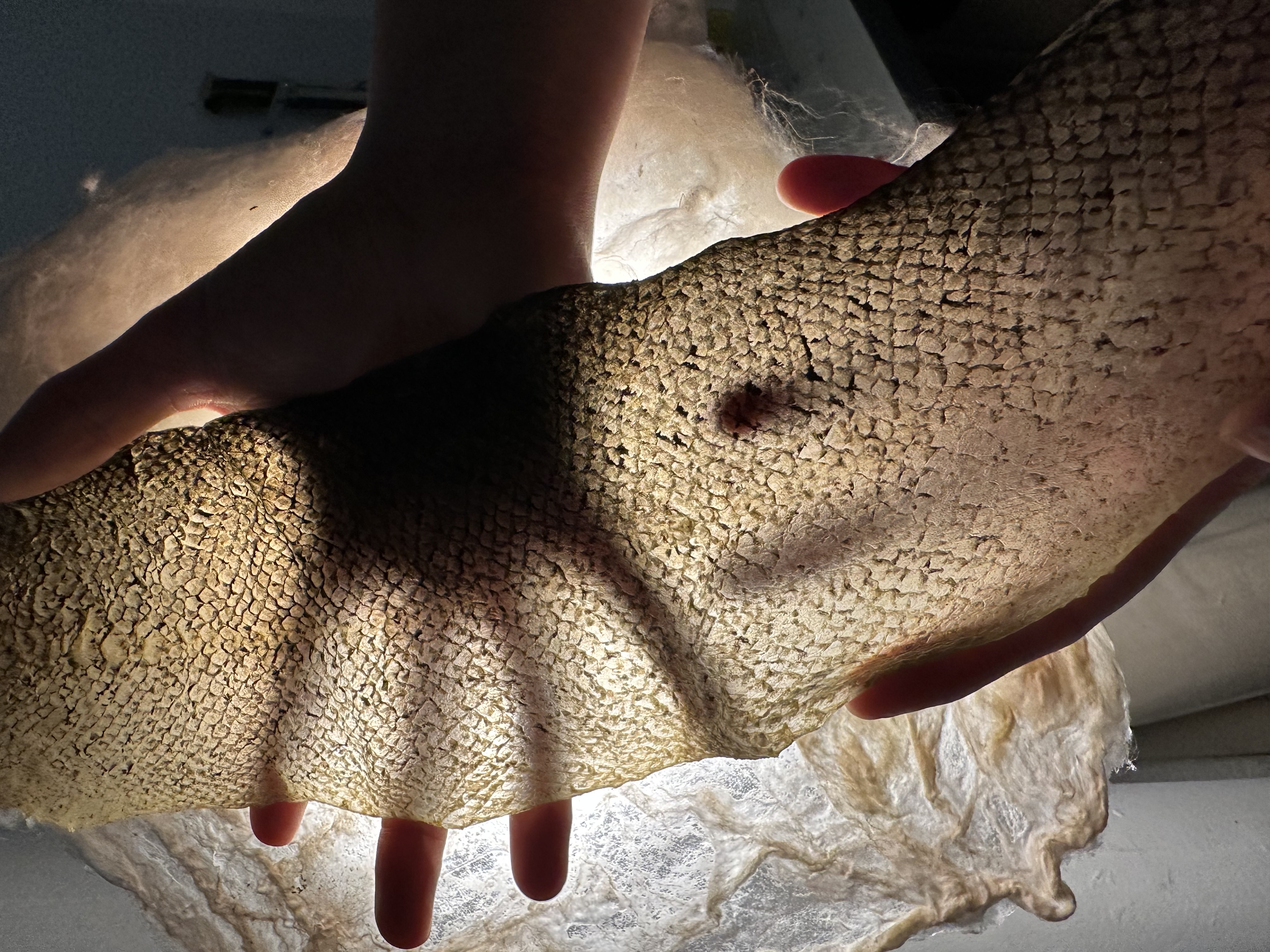
Photo by Dan Cardinal McCartney. Courtesy of the artist.
Cradleboards have been used for thousands of years by our ancestors to carry and love for our future generations. They have protected us, acted as an external womb, and given us a place as children to watch our parents' culture and learn from a safe distance. I’ve always wondered if the fact that neither my father, his father, or myself was ever put in a cradleboard may have had a long term impact on our development, personhood, and our coping mechanisms to the ways that colonialism, residential schools and the foster care system has affected my family.
Now as an adult I deeply wish I could rewind the clock and put myself, and my father before me, and his father before him in a cradleboard as a child. To softly sing songs to us, give us safety, and to give us a connection to our culture in a safe environment. Maybe this would fix things. As kids when we were supposed to be kept safe and playing in the woods we were instead being prepped for the meat factory - the eternal meat grinder of colonialism.
The western world teaches us to push aside this childhood imagining and innocence - “These things can’t be undone!”, but what if they could? In another world somebody took better care of us, in another time we learned to drum and sing and dance, in another place we were listened to by adults who had the capacity to love and care for us.
These hot chest and aching throat feelings, the times of biting back angry tears and saying “It’s fine” have to count for something….right?
Now as an adult I deeply wish I could rewind the clock and put myself, and my father before me, and his father before him in a cradleboard as a child. To softly sing songs to us, give us safety, and to give us a connection to our culture in a safe environment. Maybe this would fix things. As kids when we were supposed to be kept safe and playing in the woods we were instead being prepped for the meat factory - the eternal meat grinder of colonialism.
The western world teaches us to push aside this childhood imagining and innocence - “These things can’t be undone!”, but what if they could? In another world somebody took better care of us, in another time we learned to drum and sing and dance, in another place we were listened to by adults who had the capacity to love and care for us.
These hot chest and aching throat feelings, the times of biting back angry tears and saying “It’s fine” have to count for something….right?
In this text Morgan and Jordan speak on consent and permission, considering what is sacred and sharing their feelings on relational community.
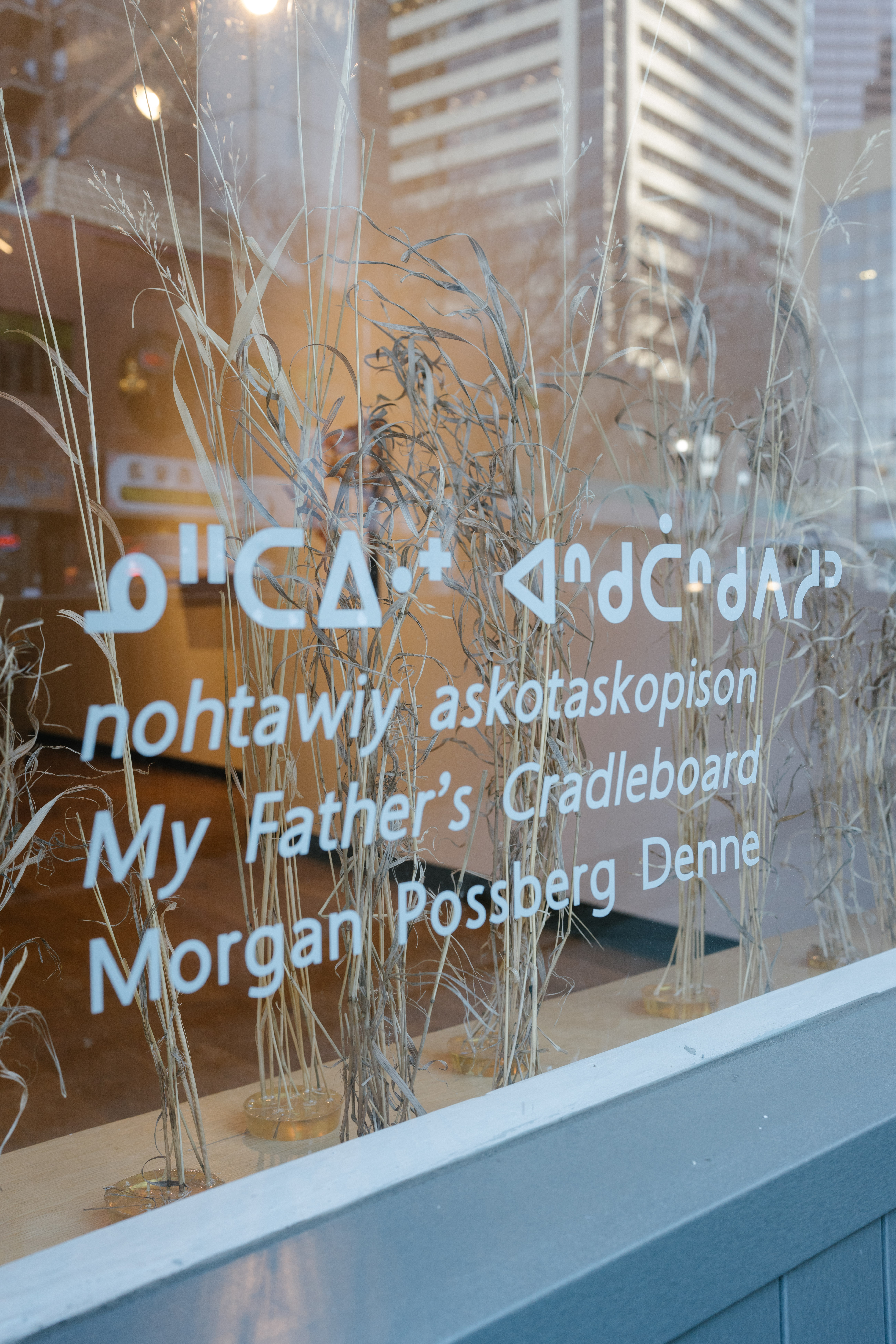
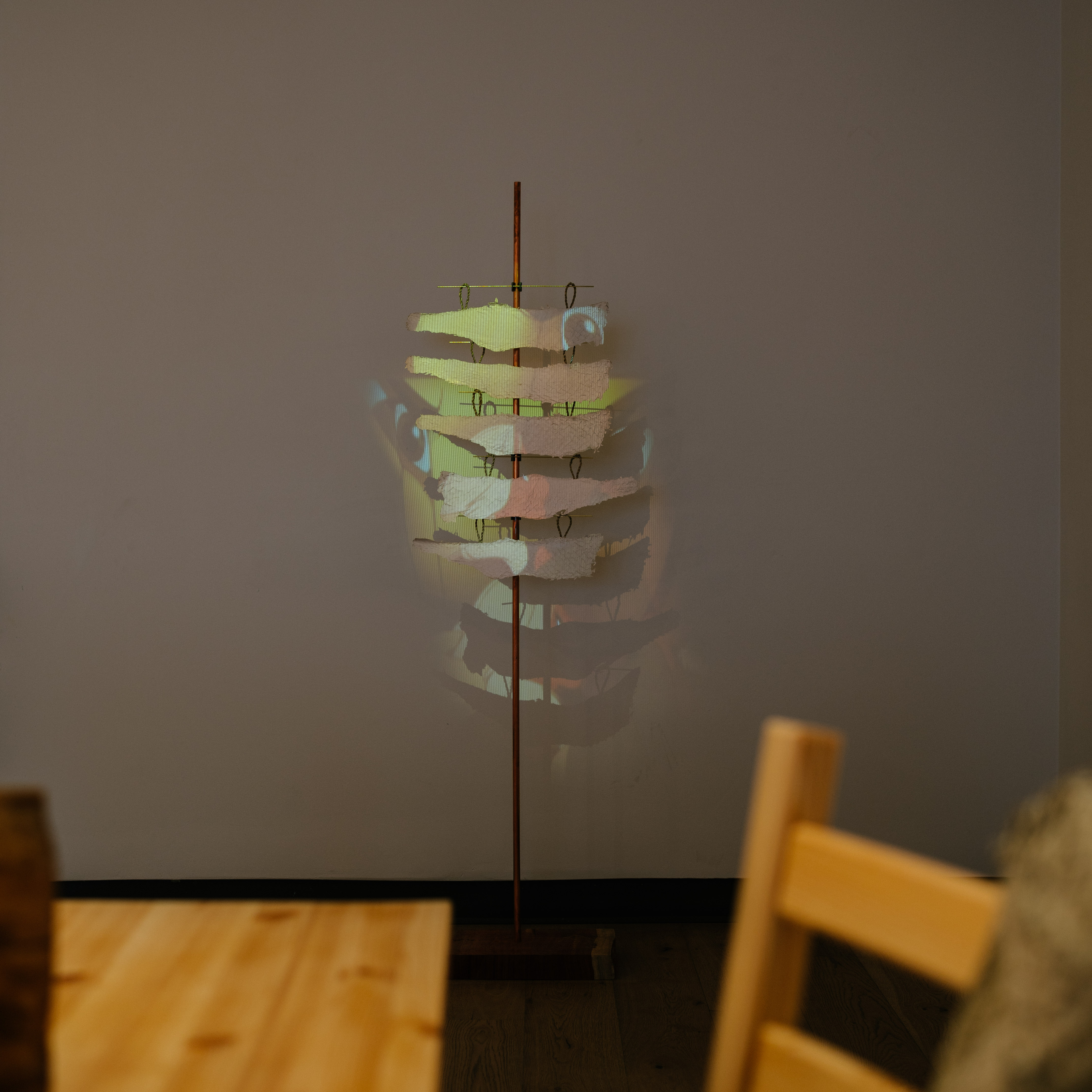
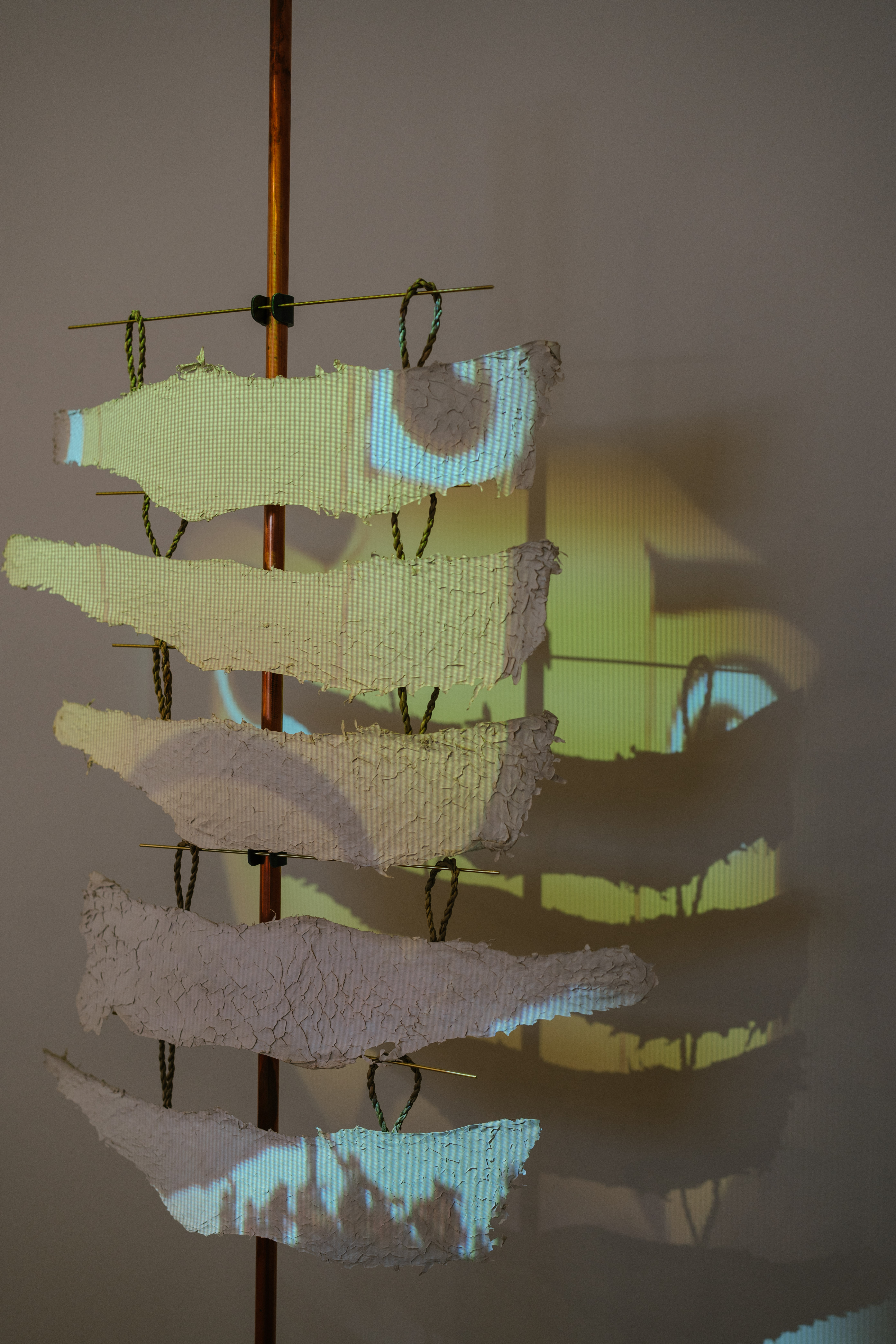

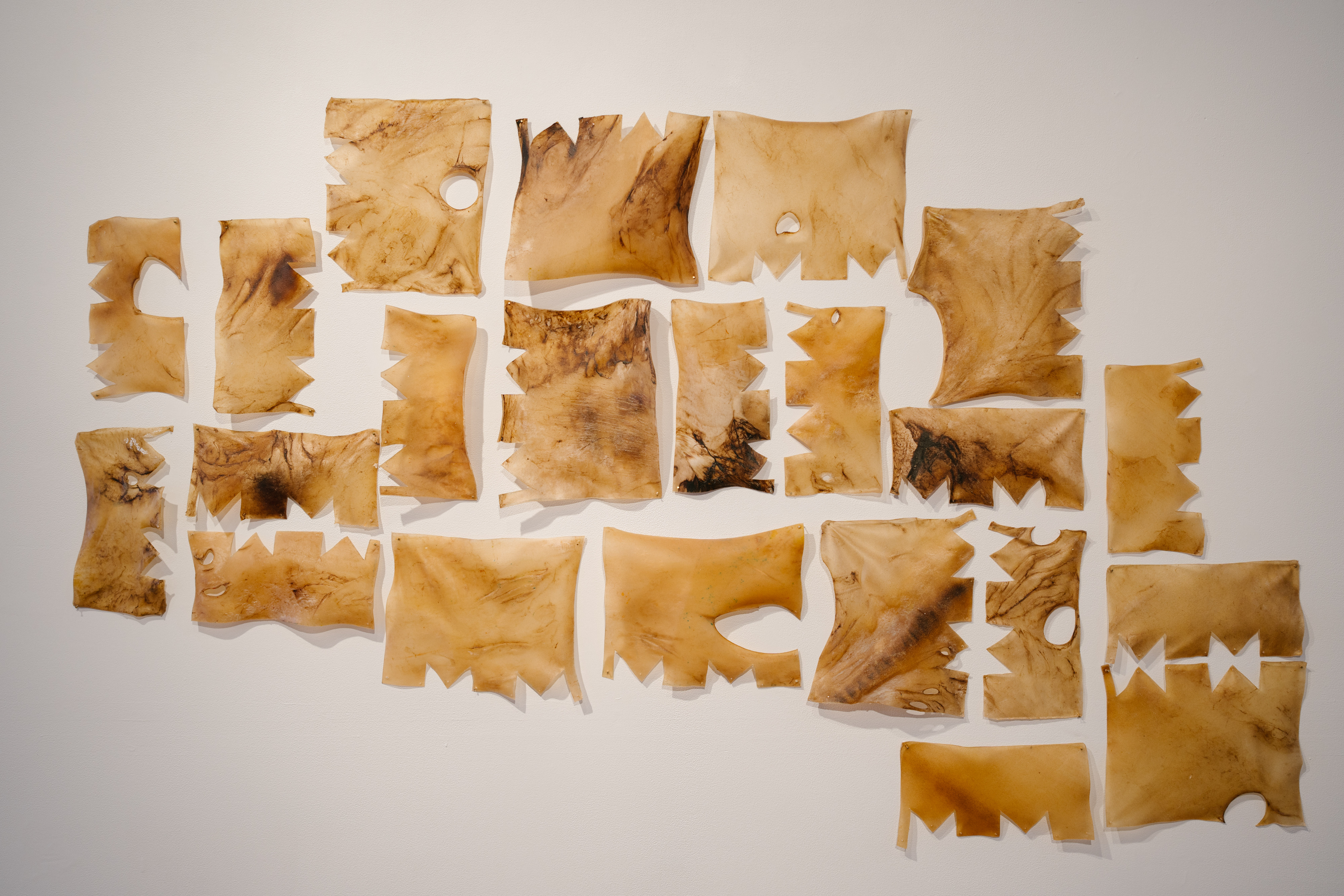
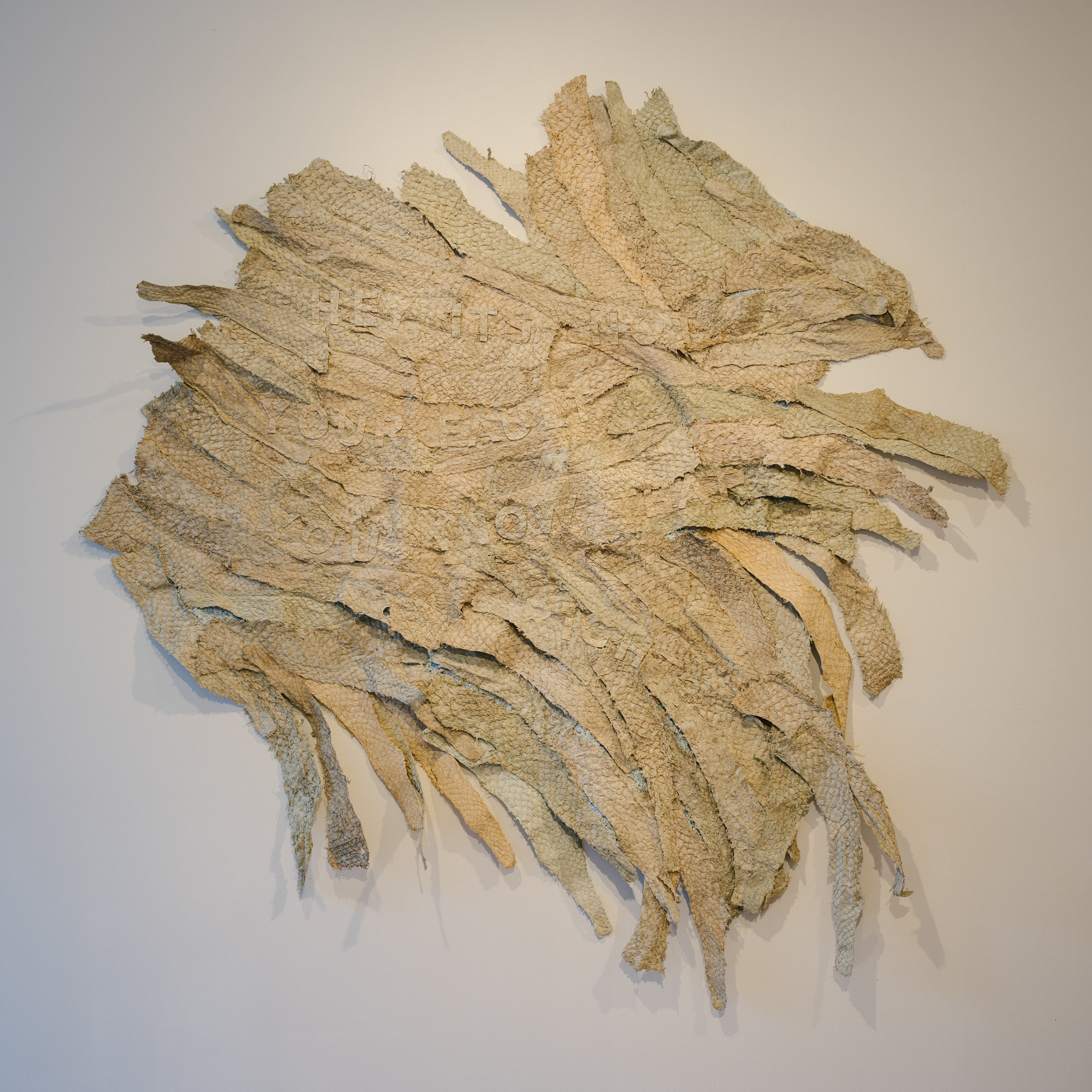
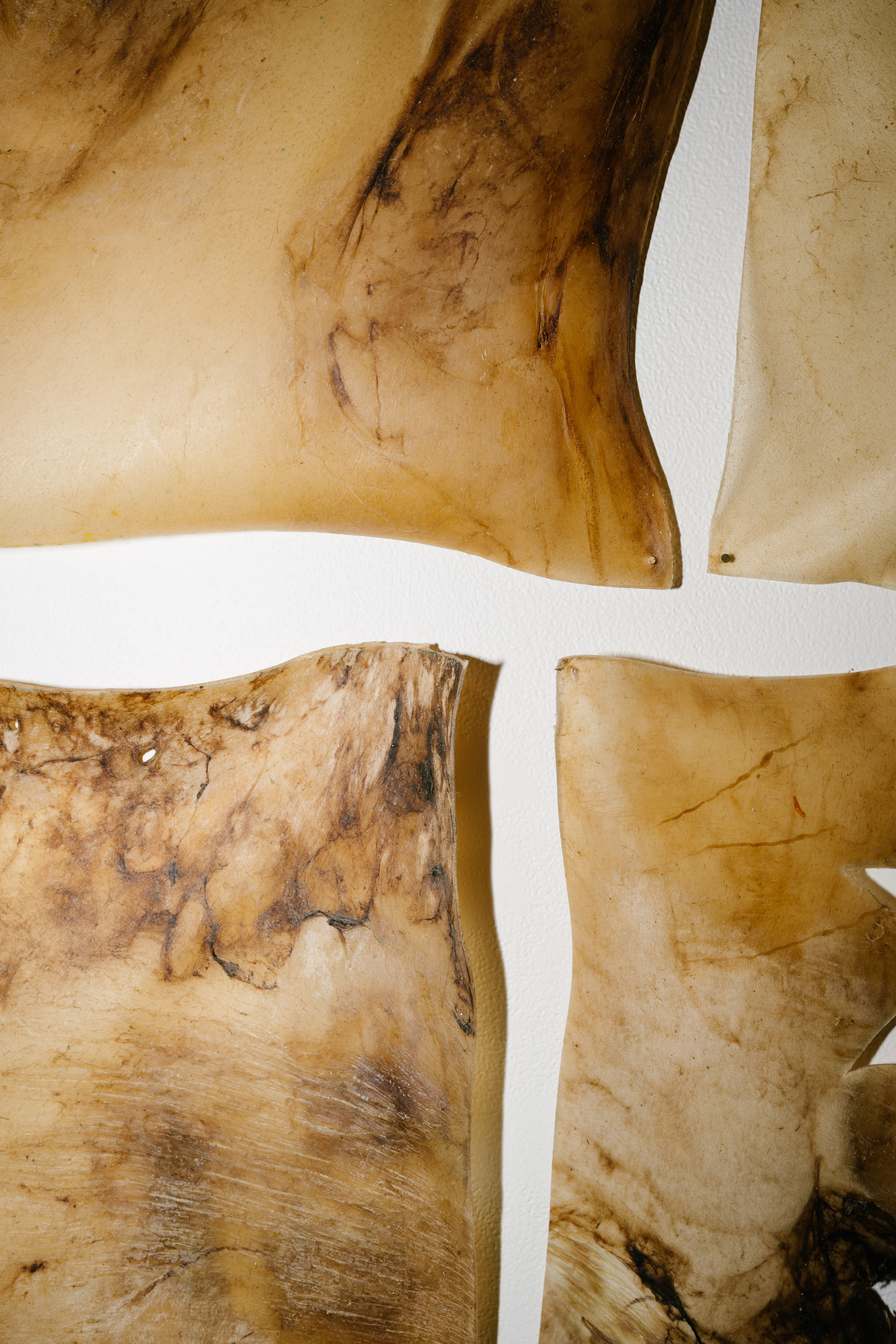
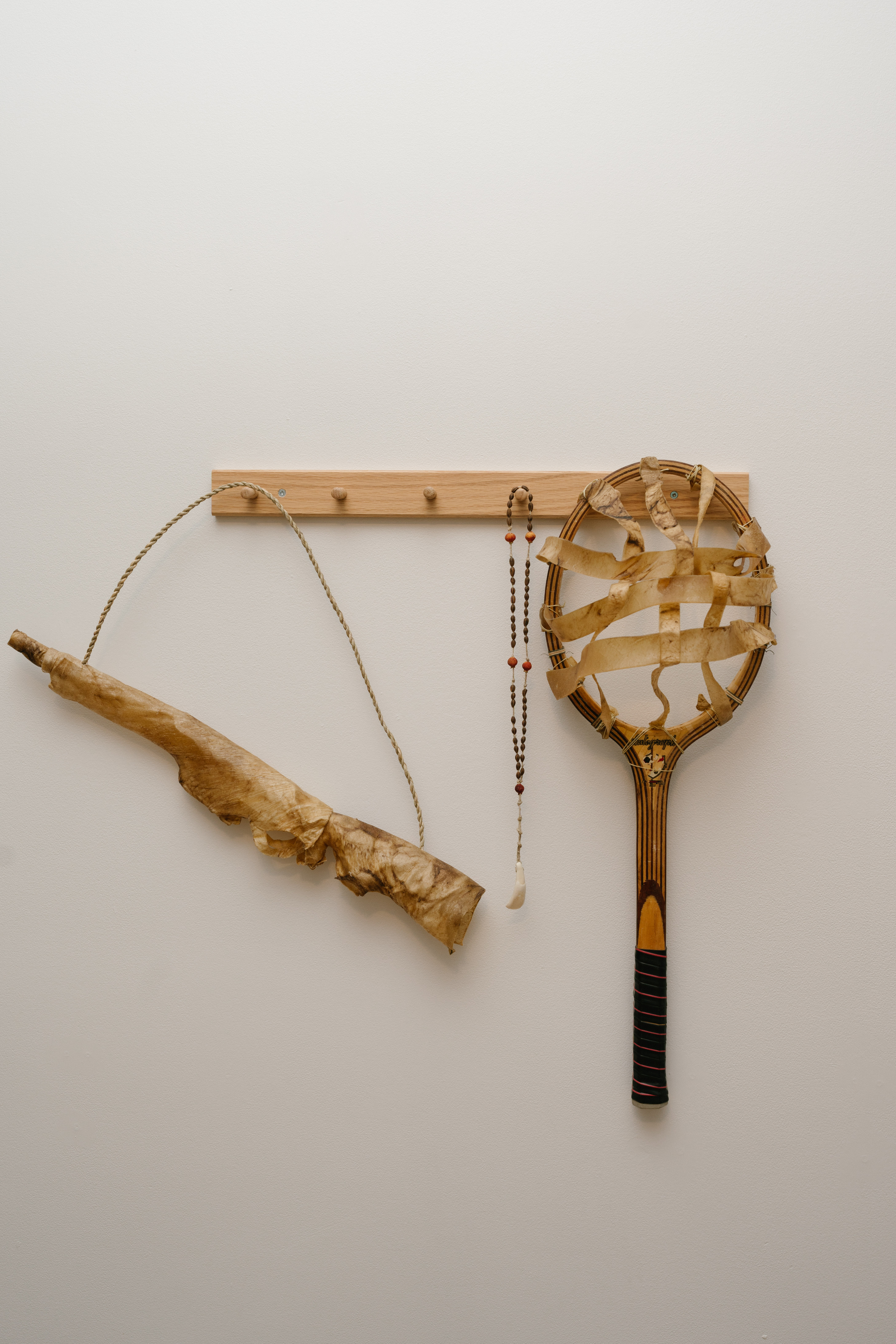



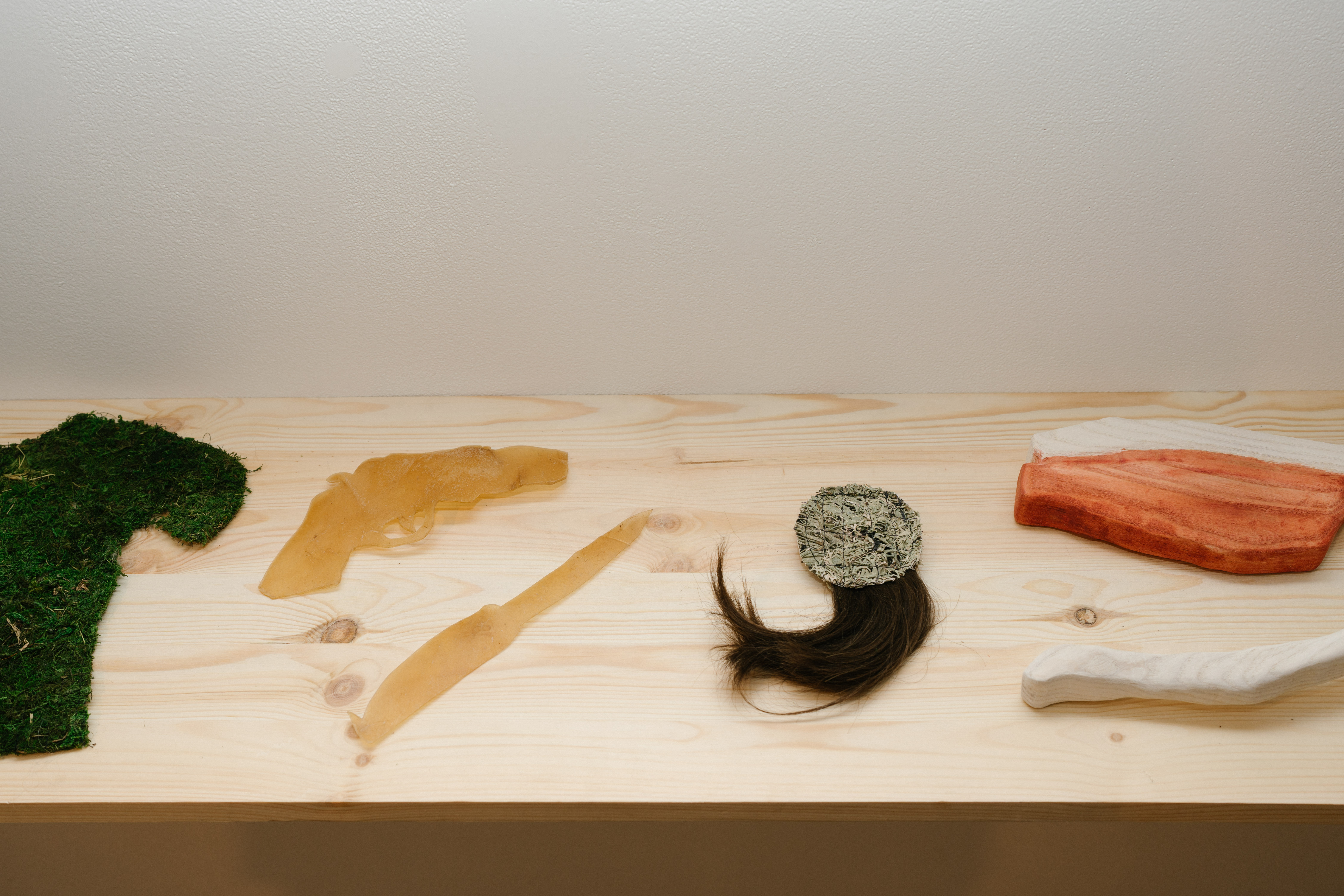
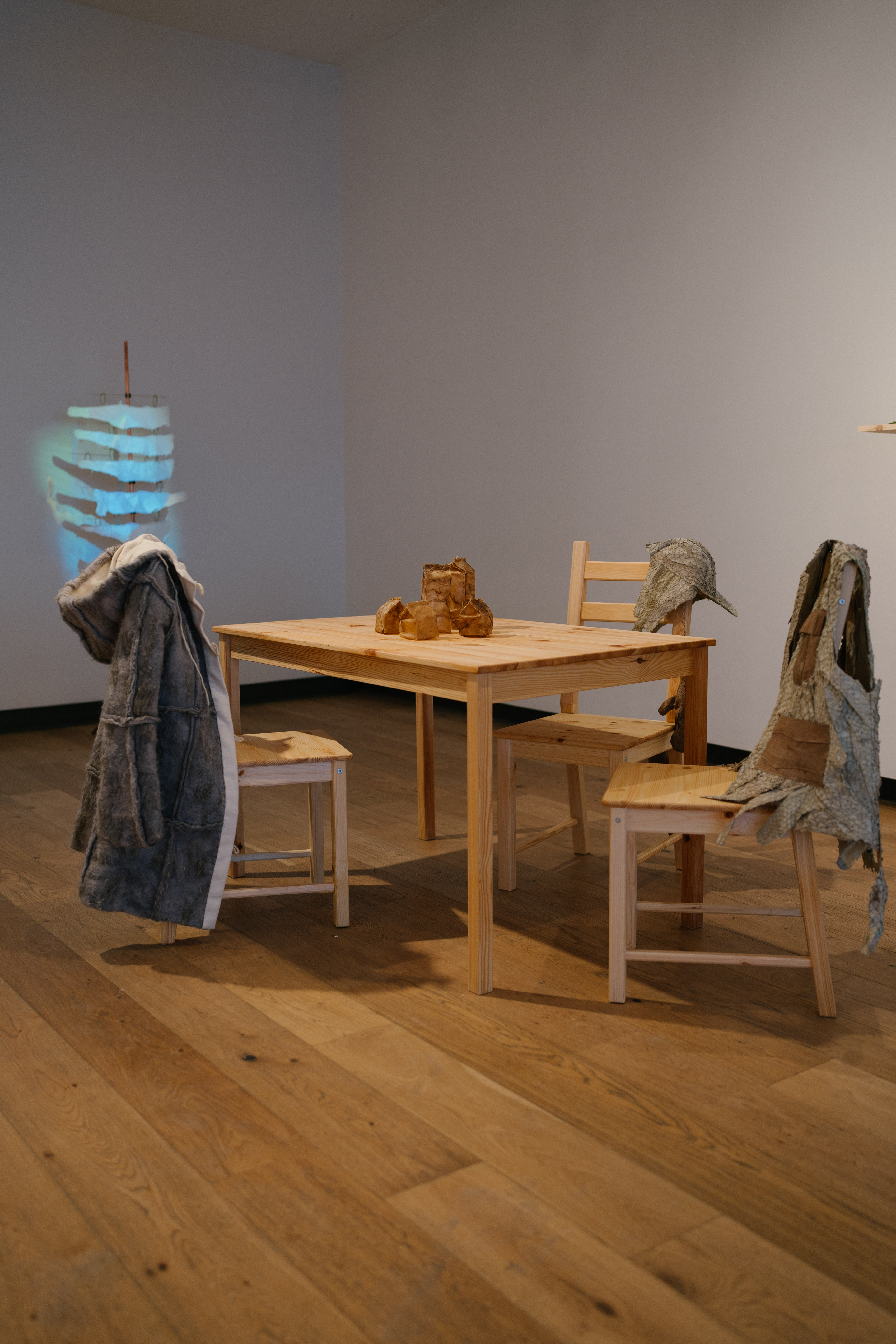
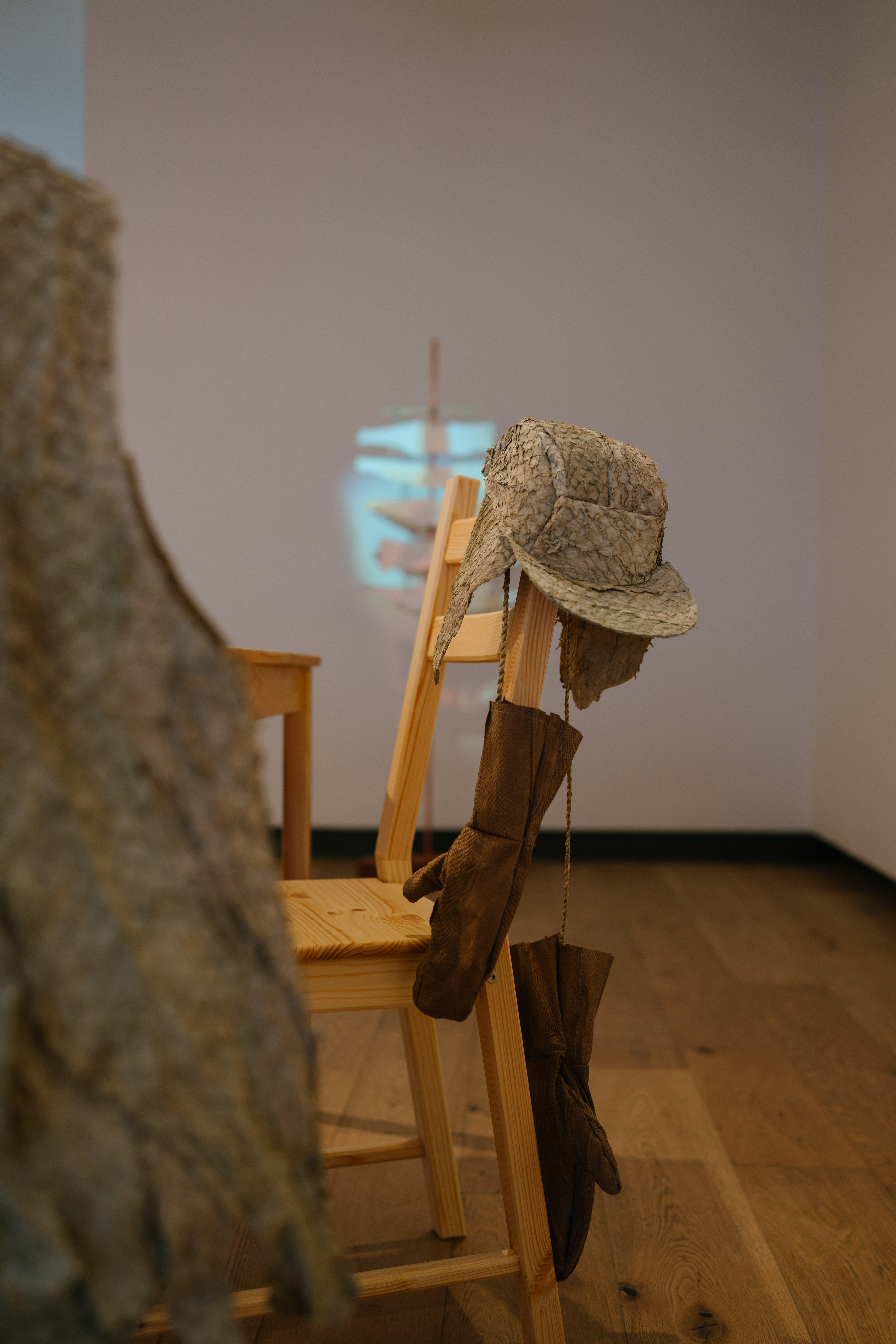
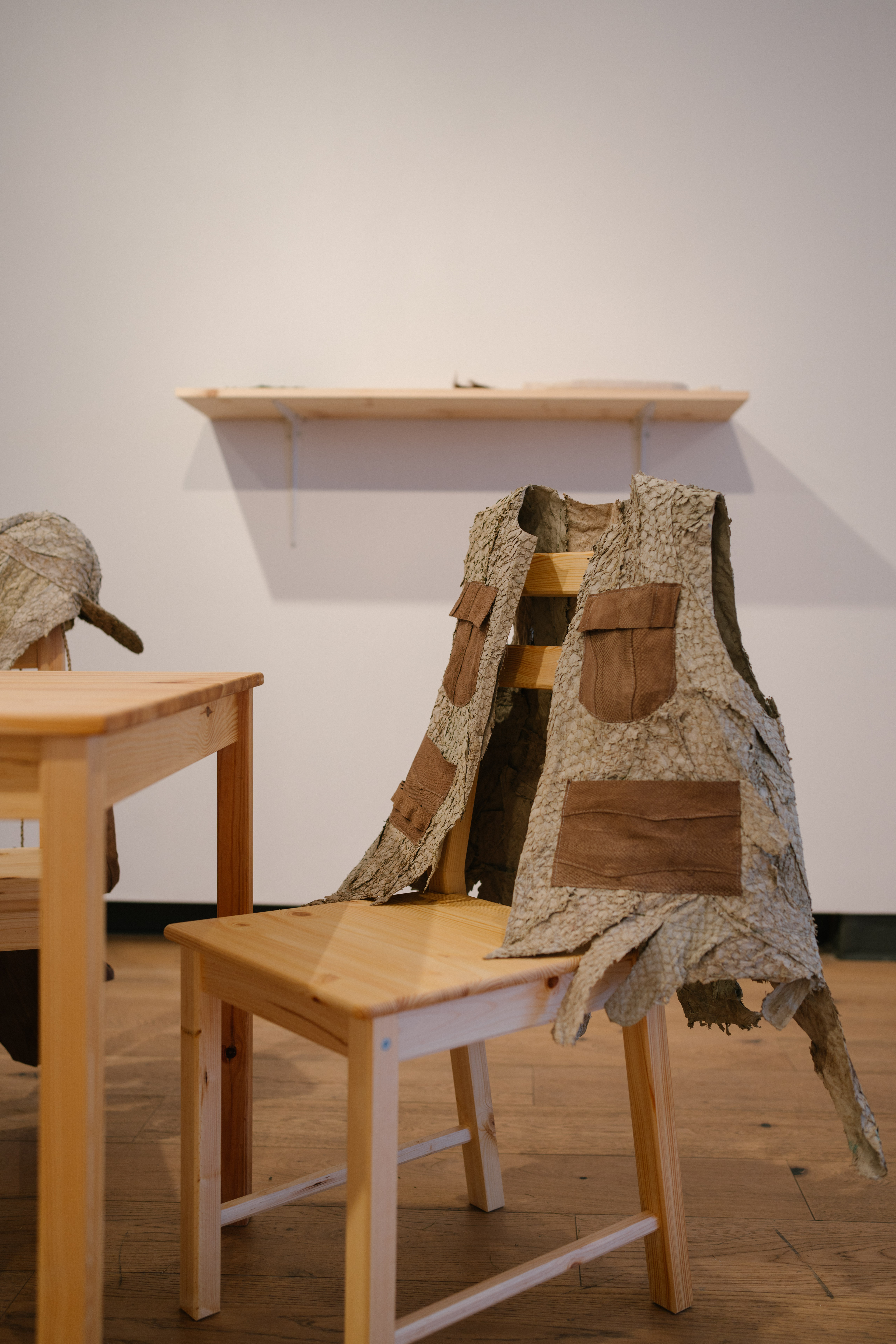


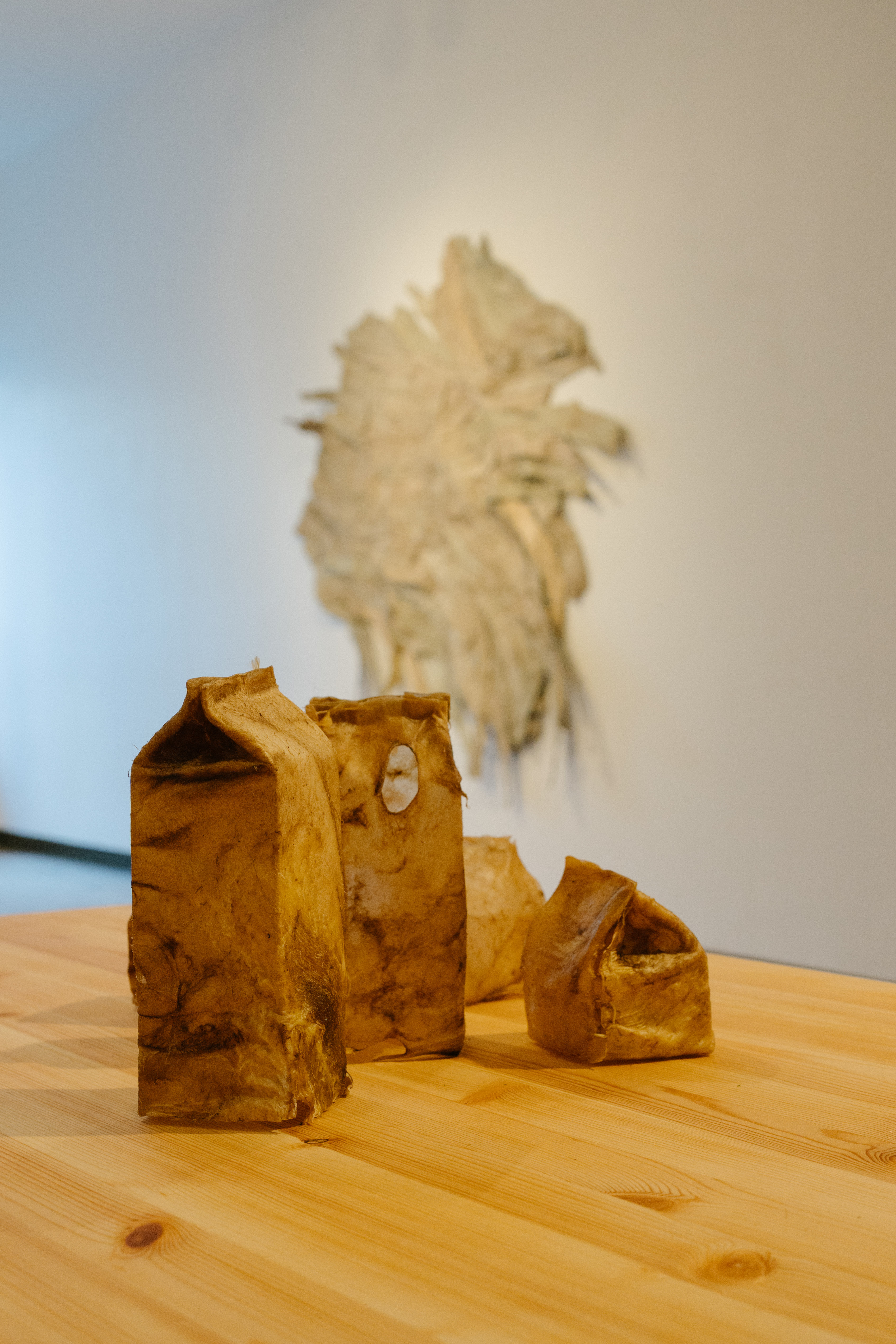
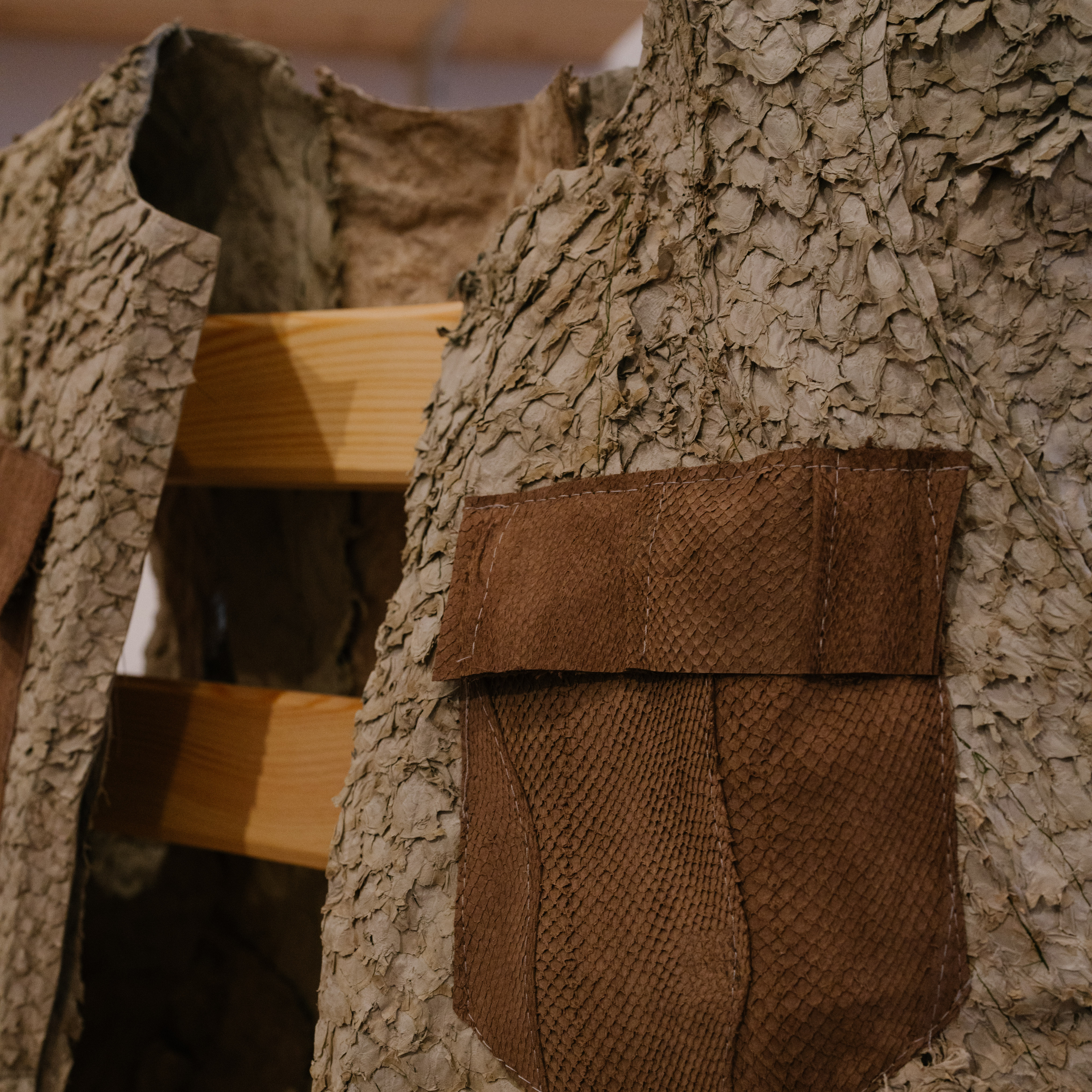
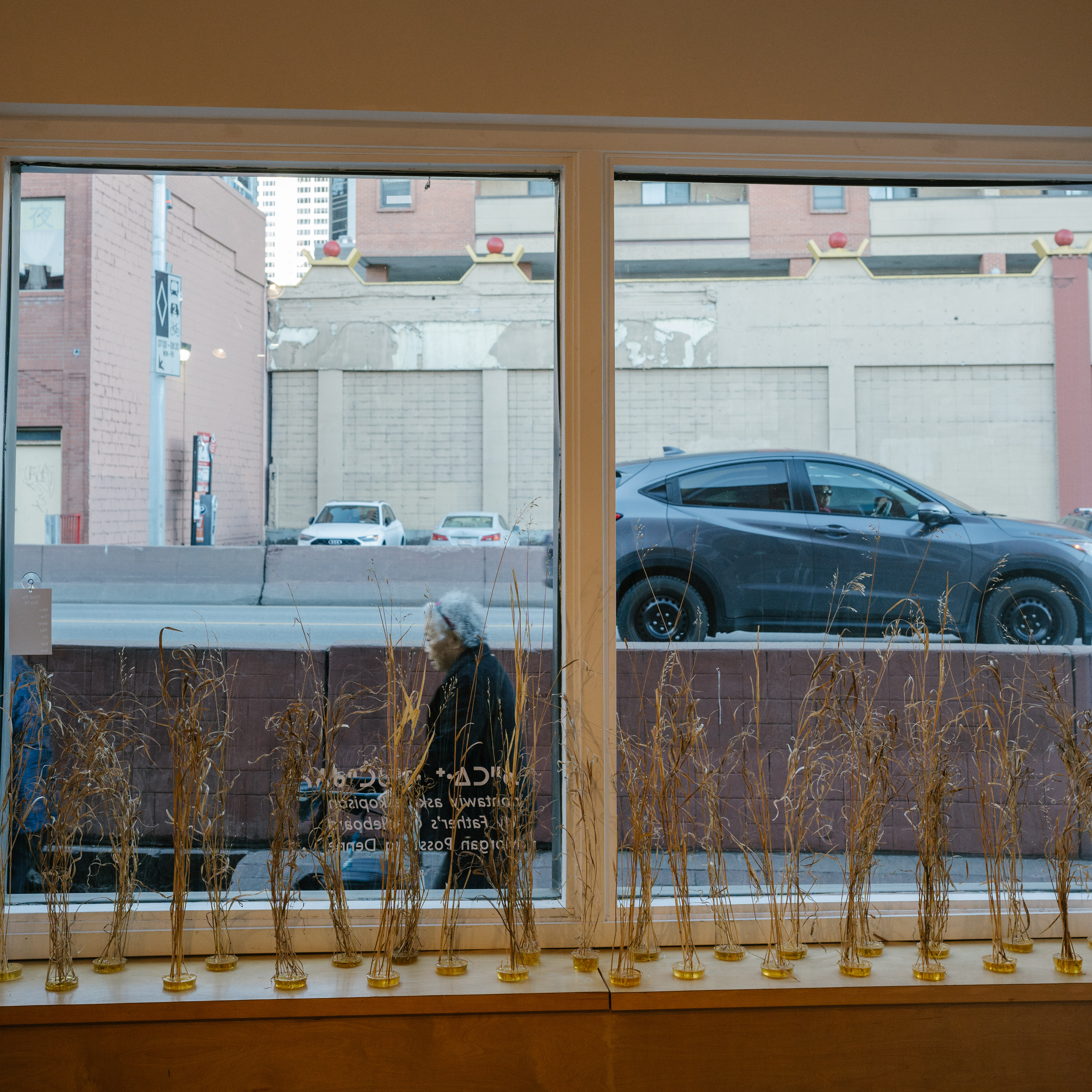

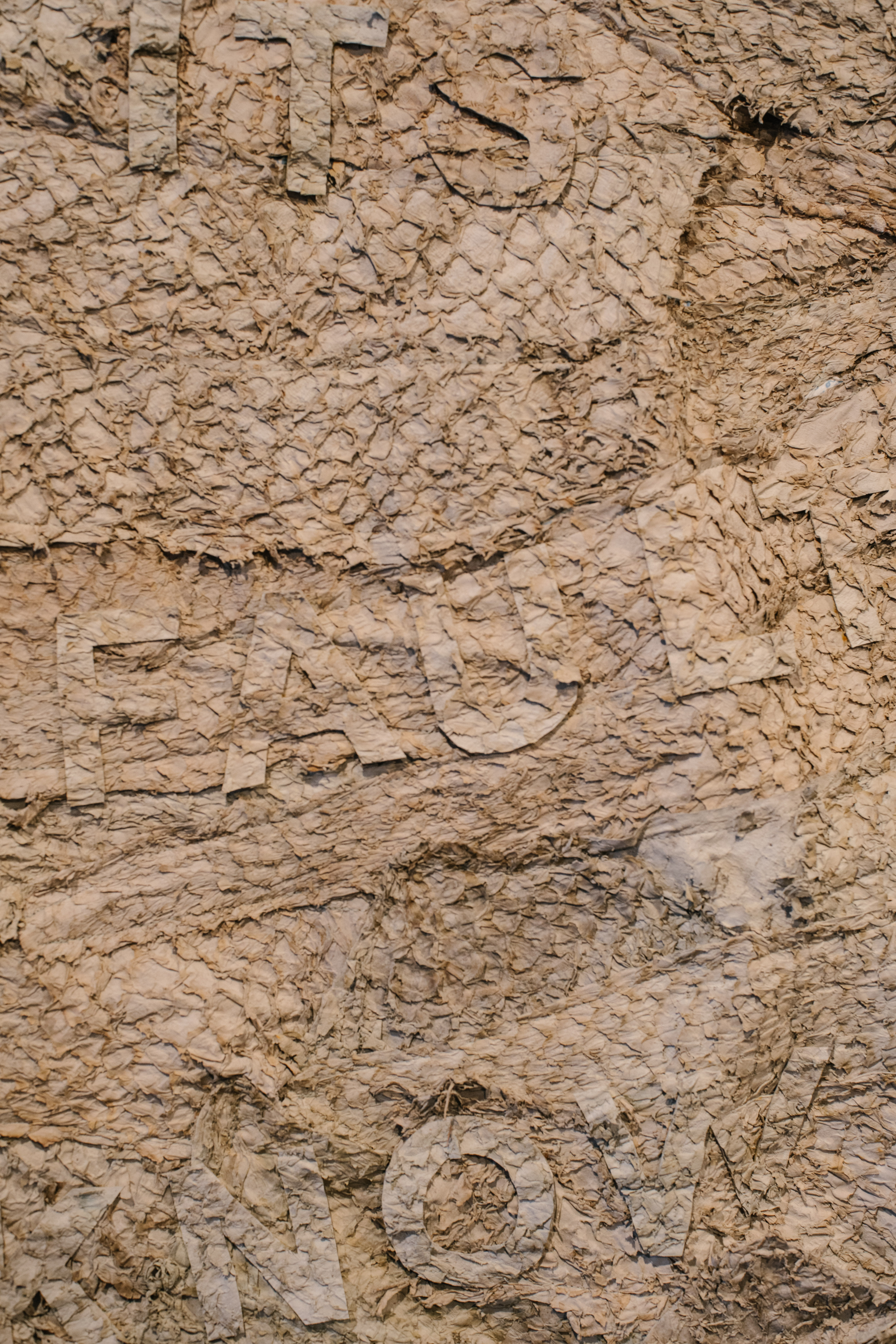
Documentation by Danny Luong
Morgan Possberg Denne is Two-Spirit millennial scoop and foster care survivor; with settler, Cree, Metis, and Chippewa blood connections. They have grown up in treaty 7 territory, and have relatives in southern and northern Ontario. Morgan creates imaginative, illustrative objects which could be seen as pieces of possible narratives, different ways to connect with the past and potential futures through layers of abstraction with no right or wrong answer. What matters to them is not accurately recreating the past or to predict the future, but rather to capture an inner truth and a possible alternative reality of colonial experiences. In a sense, creating new culture from a series of “what-ifs” and new stories / lore. Their work has been recently shown at the Confederation Centre for the Arts and Gallery Gachet.
Jordan Baylon (they/she/he) is a second generation PilipinX artist, critic and community worker imagining justice and abundance for equity-deserving peoples within the spaces of all our relations: personal, communal and societal. As an artist, Jordan explores queer and racialized identities as liminal spaces: both and neither; between, across and through; both inside and outside; and both literal and imagined. Jordan’s community practice leverages a decade of experience in the non-profit arts and culture sectors, where they developed their critical lens around equity, anti-racism and systems change. After many years navigating institutions, Jordan now devotes their interest and attention to working at grassroots alongside equity-deserving individuals and communities.--
中文翻译 Chinese Translation ...
ᓄᐦᑕᐃᐧᕀ ᐊᐢᑯᑖᐢᑯᐱᓱᐣ
nohtawiy askotâskopison
My father’s cradleboard
A conversation between
Jordan Baylon and Morgan Possberg Denne
In this text Morgan and Jordan speak on consent and permission, considering what is sacred and sharing their feelings on relational community.
M - Going into this conversation I think it's best to be chill with things. When things are overly planned, or you think about it too much it becomes academic, and that's not the purpose or goal. There's nothing wrong with academic, but it's not accessible or the vibe.
J - Yeah I think the accessibility is an important part.
M - Yeah it shows. You can have these deep conversations about art, feelings and the world and how one person might process those things but still have it be understandable is important. How we all are inhabiting our own worlds but processing them differently. I think that relates to what I wanted to talk about. The main things I'm thinking of lately when I make work is permission and consent, which I think are linked together.
J - That's when I become interested. Let's break that down.
M - What's the difference?
J - What does either one feel attached to that's real for you, in either case, or both, or neither?
M - When I think about permission vs consent, I think both can be given and taken away. Permission is something you give yourself, but I’m not sure if you’d give yourself consent?
J - Both of these things are very connected to the container that surrounds them. Which is a situation or a context. For example, if this is about me having to locate my individual agency, that means a really different thing on an interpersonal level vs systemic or structural or societal or cultural or communal level. Permission seems more connected to….something that feels raw and unfiltered. Some sort of relational space. vs consent feels very specific to a shared cultural experience around things like sexual violence, hegemony, oppression, colonialism, right? We use the word consent when we’re discussing the points of interface with other humans that often are connected to potential for the most harm. We’re using that word to invoke what a collective space of safety looks like.
M - Consent as related to harm mitigation.
J - Yes , in how I have a relationship to the word. As connected to the Me Too movement and how over politicized that word has become. Not just what we’re talking about, but a culture as well. Permission seems so personal, not as connected to harm. Connected to acceptance, affirmation, holding, welcoming.
M - When I think about permission; it's an oversimplification to say it's a more positive word than consent but it almost is. I feel that there is something more sacred about permission. My association is that you would give yourself to do something, or be ok with something, or to feel something, that feels like a very deeply internal personal healing process. vs. consent I don't have that association with that.
J - I've been thinking a lot about the dichotomy of what is sacred vs what is merely expensive. What is priceless vs something that can be bought. I don’t know if consent even fits into that
M - I think consent can be bought, but permission can not. At least in how I understand them.
J - Consent is connected to negotiation, but permission seems deeply personal. When you offer permission its to yourself and the other on a sacred level, It has to do with your sense of self. Whereas consent is describing a shared space that we may not completely inhabit in and of ourselves. This is connected to the Filipino cultural concept of kapwa, the personal sacred permission space and the ways we relate to each other in a good way, in a community shared space are one and the space in kapwa. We see our individual selves as inextricable from our collective shared experience and identity of being in community.
M - From what I know of most indigenous cultures we would see things that way too. You as an individual and how you experience the world can’t be removed from community, your nation and the land. That's where a lot of the harm of colonialism has come in. This western idea of having to be this special individual is actually quite harmful. Traditionally you’d see yourself as part of a community in kinship with people and the land.
J - Being separate is the original wound for humans. I’m connecting to that. Another way of looking at this is that the word of consent is burdened with our unaddressed wounds. That's why it has a diff feeling space than permission. It resonates with a collectively and systemically perpetuating harm. Cups spilling over generations and generations. I also think about it on a fractal scale too, if the permission is on the level of taproot deep sense of self and values and ancestors, consent is the community space. I think there's other names and words for how we describe the condition of relating on a macro level in society. But we’re not past consent yet. The level of harm that's possible simply in our most intimate personal moments is so high. This word doesn't have the joyful ringing of permission. Permission I can think of sentences for permission. When I think of permission, if I'm giving it it's also reciprocal. If it's myself I’m saying I’m allowing myself to live in a world where this exists. If it's another person, that they exist and their wholeness exists, even if it's not the same as mine. But we affirm each other in that. That's a well shaped emotional space. Even if we can’t always embody that all the time.
We can talk about theory and practice, but where are you personally situated in these feelings? How does it relate to your practice?
M - That's a good question, taking it back to the art and actualization. Maybe I’ll rewind a little bit and say that the reason I wanted to talk about permission and consent; in my experience it's mostly in relation to cultural knowledge and culture. Because of my own lived experience of being mixed Indigenous and going through foster care and then being adopted out and growing up in a territory that isn’t actually my traditional territory. It's kinda being a settler, but also not really in the normal sense of the word. I was placed here in foster care and didn’t choose to be here, but I’m still here. It's a weird thing I’ve always struggled with, and will always continue to. And I should; this is the struggle that should be happening. There's a lot of tension with that around cultural knowledge in art making and permission and consent. This permission and consent around cultural knowledge could be from community, elders, knowledge keepers, peers, or yourself, and I’m interested in how that applies to art making, healing, storytelling, even down to learning actual craft techniques like how to weave something or tan a hide or fish skin which I’ve been doing a lot of. There's a lot of tension there, but it's a really specific type that's specific for Indigenous people in this place. I know this is quite a shared experience of being worried about stealing your own culture. It's difficult. I don't think you can actually steal your own culture. Inherently as a human you have a birthright to your own culture, but because of colonialism we feel like we don't. We’re not always able to give ourselves permission to dive in. I mean there are protocols you have to follow of course. I don’t have an issue with protocol at all, but it's difficult if there's something that's almost died out and it's hard to find the right person with the knowledge. I do think in those cases it's more important to just do the thing to the best of your ability rather than to let a piece of culture die. That's a bit of a point of contention within my community. I do understand the want to protect culture, and feeling like you need to gatekeep, but it's difficult. It all comes back to permission and consent, right?
J - Whats interesting to hear you share that, is it would be easy to respond to you from a place of trying to give you permission. But that's not what we’re doing right now. It's interesting to examine all the layers of this. We feel permission is related to the sacred, and our values and communities, while consent feels further away. The other thing I was thinking of while you were sharing, if we’re talking about permission being sacred, priceless and something that can’t be bought, I think we can diagnose everything you talked about by saying, well, your culture was stolen. I’m using that in the broadest sense, it's the idea that what was sacred was tampered with, was taken away, is either being literally or figuratively or financially or politically controlled by those who should instead live in relation to that sanctity. When it comes to the cultural knowledge of what youre talking about I’m hearing that the word is burdened by the reality of what has been stolen. If it's been stolen, you asked a question about how can you appropriate yourself? Maybe it's a sacred thing of like that can never be appropriated because that's who I am. Who I am is also a part of the fabric of what the collective story looks like. On the other hand maybe it is possible to feel like we’re in the space of the stealing of our actions aren’t bringing that culture collectively back to the sacred. That's what we’re always worried about - like pretendians and people appropriating indigeneity, and allies, other racialized folks displacing you. Other diasporic people displacing the original peoples of this land. It makes sense that the stakes are that high because it doesn't seem safe. Because honestly, we’re not back home yet. And we need to bring it home.
M - I dont think you can appropriate your own culture, but I’ll add a footnote; you do have a right to your own culture because it's yours, but you can misuse it. I’m not qualified to be the singular decider of what “misusing” it is, I mean I have some ideas. Profiting from things that culturally shouldn’t be profited from, or sharing closed practices that shouldnt be shared. I know there's some people who have rights to some very closed ceremonies who decide to share them in germany. They’d rather share the rights to those ceremonies with germans who are paying for it - they’re making $ off of doing this. They'd rather do that then go out in community and connect with youth, and queer, trans, 2S people. The people who are really struggling and may really benefit from having access to those things, often don’t have access to ceremony and culture. In a situation like that, yeah, it's almost like you’re appropriating your own culture. I think that's wrong.
J - I hear us trying to figure out how to talk about it. I feel the emotional throughline of what you’re saying, I understand it. And I also hear you searching for language to match at a communal level what is actually an embodied feeling you have. That's interesting to me. Again, because something is stolen we’re always thinking about credentials now. But if I try to do the futurist thing and imagine a utopia where our values are embodied by us, and we have a space of pluralities. If we’re relating from that place, the relationships themselves are the sacred structure. But we don't have that on a societal level because of colonialism and capitalism. Stolen lands, stolen bodies. It's like we’re looking for criteria on a communal level that is aligned with our values at our most personal, which is where we have to live if we’re people of the global majority who have experienced this colonial violence. It's almost like we need a set of relational criteria. This is the language of people who are stealing, trying to put a price and make money off of the spiritual. The way they have conversations about the sacred is to put a price on it. This related to conversations about representation too. We’re just counting brown faces, wheelchairs etc in spaces. We’re realizing it's not really about whose faces are in these harmful structures, it's about being able to relate in a good way and have structures reflect that. That's what we don't have in a societal way. You’re just trying to be yourself. How many hyphenations do you have to do, impossible metaphysical existential calculus around just to solve that equation. Because you don't have someone to say, ‘OMG morgan it's ok to just be you’. The respect is born out in your relationality. You will respect your knowledge and teachings because you're of your community. I’m still trying to figure this out for myself in my community too. A lot of it is trying to be an elder to yourself sometimes. You’re like an elder, you do have experiences that are very valuable. We have so much more relating to do across so many gradations of experience, making sure the whole family is at the table.
M - A little bit ago you mentioned hyphenations, I see that actualized for Indigenous people in our last names. Lots of people have 2, 3, 4 last names, often hyphenated together, sometimes not. It's our own attempts to understand our own community, and place ourselves into something that has been so colonized that it's hard to even process. But it's actualized in our attempts at cobbling together last names. It's related to something I’ve been thinking about too; we’re trying to climb out of this hole of colonialism and everything related to it, but we’re still grasping for colonial solutions to the colonial problem.
J - That's the thing, yeah! I thought after 2020 we’d still be having more conversations about this, the word structure is being co-opted. I remember talking about intent over impact in 2020. This isn’t new, it's very bedrock, but not reflected in the way we talk about things, or the frameworks of meaning making that we’re applying to our situations which are still very much colonial. I think it's getting more and more confusing to try to work it out on the level of the communal. For folks like us who share a very liminal and venn diagram relationship to all of our structures because we both also have relative privilege and those sorts of things, I also feel like we’re missing that permission space. We don't have spaces to have the sacred kind of conversations. What is the accounting of the cultural currency that we think we’re trading? If we’re looking at it on that level are we willing to also look at capitalism and its interconnectedness with colonialism, and white supremacy? That's a hard conversation, but people want to have it on the level of public discourse, so it just becomes things like policing each other's language. What does the proper certification look like? A lot of people I work with want me to give them a gold star, when like, I want them to just be able to relate to me in the space we’re in - it's messy.
M - It's that fear of vulnerability, but you have to be vulnerable if we’re going to try to move together through this.
J - Vulnerability is the gift. It's the permission to be intimate with what's real for you. One of the cultural artifacts of colonialism is the individualism, every white man for himself and then everyone else is disposable. That's connected to all of this as well. We’re imagining vulnerability as a resource like a fossil fuel - there's already a violence in how we’re framing that. Instead we could choose permission to be who I am. Even though we know that the textures of that, experiences of that, societal implications of that have different stakes for people in different bodies. That's a gift, I think. How do we think about this interpersonal alchemy? How do we do that fractal, portal jumping? It's going back to myself, even just checking in, like do I feel good, is my whole self present in the conversation? Even thinking about Pam Tzeng, another person in our communities, thinking about choices. Choices feel connected to sacred somehow to me. If I'm in relation that means I choose it. The personal agency has meaning because I'm navigating that with others. That's the dance and the music of it all, of relating in a good way.
M- You’re making me think about one of my friends, Cowboy, he talks often about ghosts, and how people often become ghosts in response to colonialism, as a defense mechanism of having to move through the world in the way that it is. One thing he's talked about that stuck with me, is that the tactic of shaming didn’t exist in indigenous cultures pre colonialism. Like shaming others because of something, or as a tactic to do something or not to do something, or to agree with you, or not take action when something is wrong. I’ve experienced that too in workspaces or in the arts, the use of that shaming tactic via white supremacy. I feel this is also very related to permission and consent.
J - We’ve all got the download; you know how when you get a computer they just come with microsoft? You live in colonialism you just get downloaded christianity. All of us have a pretty passing understanding of basic christian tenants. Shame is very connected to permission; to taboo, to the idea that your body is not yours - you don’t make those choices. It took something that is inextricable from my guts and externalized it. But to then take that and extrapolate an ideological framework and then transmit that through the violence of colonialism, what you get is a whole society of people who are not connected to where the beauty of community lives, which is also in their bodies. The joy of community is also the joy of getting to be yourself. The joy of being in right relations is the joy of being in harmony, and the joy of allowing your best self to emerge. I really believe that. I want to revisit some old conversations with Cowboy now - ghosts is something I’m working through in my own practice as well. Same christian download of shame and the theft of body autonomy on a basic level. It's brought me to a place now where the ghost thing speaks to a lack of my own substance and presence in one universe and more the reality that as a person who shares these experiences with others, its multiple selves, multiple identities and multiple dimensions some of which are overlapping and some of which are not. When I feel ghostly, its really a description of whatever are the conditions of that universe in which I’m being perceived partially.
M - It's related to people not actually having an understanding of your full self - which, they maybe never can?
J - They maybe never can, but whether they can intuit that or not, the conditions created by colonialism make it so that the material conditions of me being able to exist as my whole self are at stake and theirs are not if they’re privileged within that system and structure.
M - When you're in community the reality that we can’t fully understand each other almost isn’t a concern.
J - Right. It's not a concern because there's capacity and wisdom and experience and a community practice around conflict transformation. In our individualistic society we don't have that, where instead of working through differences we just build up cases against each other, and whoever loses is disposable.
It's at these moments where I become quiet - oh man! I guess what I’m trying to say is that relating in a good way in whatever scale that is connected to the real is already the magic happening. It's the goal and the outcome in itself. If we can live there and build out connections in that space - it's also where we feel the most resourced. It's also where we feel coregulated with other people, yeah, then we can make mistakes. Privileged artists, they don't worry about making mistakes. Across all these equity deserving communities that you and I intersect with, nobody ever feels like they can fuck up.
M - Even when it comes to specific cultural knowledge, like if you're making work to do with your culture - I’m even seeing white artists doing that now, which is fine and valid, but they don’t have the level of struggle. They don't have to think about or worry about self appropriation of culture. But almost every Indigenous artist I've talked to has worried, or thought about it at some point.
J - Because it's been stolen from them. The white folks don’t even know it's a thing. They imagine they inherited it. I would reframe that as their own erasure, not our lack (equity deserving, colonized folks, disabled, queer folks). We don’t have permission to be ourselves a lot of the time. Having permission to relate at that really basic level I feel like. Did I make a big jump there?
M - Part of that conversation was telepathic I think, but vibes were received. These kinds of conversations are so important, but you kinda come to the end of it and you’re almost more confused. Maybe not confused, but maybe you’re nourished but overwhelmed at the same time.
J - I feel that too. I think at this moment I’m nourished, but maybe what makes it feel more chaotic is the idea that I have to have language for this thing that is very deeply body felt.
M - These feelings are such deep body feelings, and it's so hard to translate them to words. I wish I could just interpretively dance them to you instead.
J - This is a limited discourse! Dance works too! There's also play, you know? If we could just relate in a good way all this stuff doesn't have the same stakes. But we keep trying to relate through broken harmful structures; some outcomes that we don’t want are going to keep happening. Why do we keep perpetuating that structure? Even that thing of “we gotta be vulnerable in order to…..” Instead of “we get to be vulnerable if we just give ourselves permission to do that right now?” I love that! It feels confusing too. It's naming the wholeness that's inscribed by the circle of your body.
M - That whole idea of vulnerability, I'm simultaneously on board and yet not on board at all. In that specific situation I am Schrodinger's cat.
J - it's all about boxes! It's literally about where you get to be. The boxes that are placed on us don't fit. When you place vulnerability in the permission space it's a sacred thing, but if you put it into the land of the stolen it becomes exploitative. All of the things we really value, when they are placed in community, relations, and things we really value it becomes a good thing. When it comes into the space of ownership - not everything should be owned. We’re owned by the land. Colonial culture is all about extraction and controlling.
M - Not to minimize this, the conversation, or any kind of theory, but on a visceral level, it's also not that complex! What if you just were nice to other people, and yourself?
J - Lets be specific! What it comes down to for me in my community practice which is anti-oppression in a lot of nonprofits; is grandma stuff. Have you eaten? Did you sleep enough? Little reads like you need to take a nap! Those are the things that are missing from our relational fabric, in oppressive cultures connected to patriarchy. Its that simple, its just figuring out how to be around each other.
M - We need to go back to kindergarten.
J - Yeah we didn't have that! Decolonial kindergarten. We were already being prepped for the meat factory.
J - Yeah I think the accessibility is an important part.
M - Yeah it shows. You can have these deep conversations about art, feelings and the world and how one person might process those things but still have it be understandable is important. How we all are inhabiting our own worlds but processing them differently. I think that relates to what I wanted to talk about. The main things I'm thinking of lately when I make work is permission and consent, which I think are linked together.
J - That's when I become interested. Let's break that down.
M - What's the difference?
J - What does either one feel attached to that's real for you, in either case, or both, or neither?
M - When I think about permission vs consent, I think both can be given and taken away. Permission is something you give yourself, but I’m not sure if you’d give yourself consent?
J - Both of these things are very connected to the container that surrounds them. Which is a situation or a context. For example, if this is about me having to locate my individual agency, that means a really different thing on an interpersonal level vs systemic or structural or societal or cultural or communal level. Permission seems more connected to….something that feels raw and unfiltered. Some sort of relational space. vs consent feels very specific to a shared cultural experience around things like sexual violence, hegemony, oppression, colonialism, right? We use the word consent when we’re discussing the points of interface with other humans that often are connected to potential for the most harm. We’re using that word to invoke what a collective space of safety looks like.
M - Consent as related to harm mitigation.
J - Yes , in how I have a relationship to the word. As connected to the Me Too movement and how over politicized that word has become. Not just what we’re talking about, but a culture as well. Permission seems so personal, not as connected to harm. Connected to acceptance, affirmation, holding, welcoming.
M - When I think about permission; it's an oversimplification to say it's a more positive word than consent but it almost is. I feel that there is something more sacred about permission. My association is that you would give yourself to do something, or be ok with something, or to feel something, that feels like a very deeply internal personal healing process. vs. consent I don't have that association with that.
J - I've been thinking a lot about the dichotomy of what is sacred vs what is merely expensive. What is priceless vs something that can be bought. I don’t know if consent even fits into that
M - I think consent can be bought, but permission can not. At least in how I understand them.
J - Consent is connected to negotiation, but permission seems deeply personal. When you offer permission its to yourself and the other on a sacred level, It has to do with your sense of self. Whereas consent is describing a shared space that we may not completely inhabit in and of ourselves. This is connected to the Filipino cultural concept of kapwa, the personal sacred permission space and the ways we relate to each other in a good way, in a community shared space are one and the space in kapwa. We see our individual selves as inextricable from our collective shared experience and identity of being in community.
M - From what I know of most indigenous cultures we would see things that way too. You as an individual and how you experience the world can’t be removed from community, your nation and the land. That's where a lot of the harm of colonialism has come in. This western idea of having to be this special individual is actually quite harmful. Traditionally you’d see yourself as part of a community in kinship with people and the land.
J - Being separate is the original wound for humans. I’m connecting to that. Another way of looking at this is that the word of consent is burdened with our unaddressed wounds. That's why it has a diff feeling space than permission. It resonates with a collectively and systemically perpetuating harm. Cups spilling over generations and generations. I also think about it on a fractal scale too, if the permission is on the level of taproot deep sense of self and values and ancestors, consent is the community space. I think there's other names and words for how we describe the condition of relating on a macro level in society. But we’re not past consent yet. The level of harm that's possible simply in our most intimate personal moments is so high. This word doesn't have the joyful ringing of permission. Permission I can think of sentences for permission. When I think of permission, if I'm giving it it's also reciprocal. If it's myself I’m saying I’m allowing myself to live in a world where this exists. If it's another person, that they exist and their wholeness exists, even if it's not the same as mine. But we affirm each other in that. That's a well shaped emotional space. Even if we can’t always embody that all the time.
We can talk about theory and practice, but where are you personally situated in these feelings? How does it relate to your practice?
M - That's a good question, taking it back to the art and actualization. Maybe I’ll rewind a little bit and say that the reason I wanted to talk about permission and consent; in my experience it's mostly in relation to cultural knowledge and culture. Because of my own lived experience of being mixed Indigenous and going through foster care and then being adopted out and growing up in a territory that isn’t actually my traditional territory. It's kinda being a settler, but also not really in the normal sense of the word. I was placed here in foster care and didn’t choose to be here, but I’m still here. It's a weird thing I’ve always struggled with, and will always continue to. And I should; this is the struggle that should be happening. There's a lot of tension with that around cultural knowledge in art making and permission and consent. This permission and consent around cultural knowledge could be from community, elders, knowledge keepers, peers, or yourself, and I’m interested in how that applies to art making, healing, storytelling, even down to learning actual craft techniques like how to weave something or tan a hide or fish skin which I’ve been doing a lot of. There's a lot of tension there, but it's a really specific type that's specific for Indigenous people in this place. I know this is quite a shared experience of being worried about stealing your own culture. It's difficult. I don't think you can actually steal your own culture. Inherently as a human you have a birthright to your own culture, but because of colonialism we feel like we don't. We’re not always able to give ourselves permission to dive in. I mean there are protocols you have to follow of course. I don’t have an issue with protocol at all, but it's difficult if there's something that's almost died out and it's hard to find the right person with the knowledge. I do think in those cases it's more important to just do the thing to the best of your ability rather than to let a piece of culture die. That's a bit of a point of contention within my community. I do understand the want to protect culture, and feeling like you need to gatekeep, but it's difficult. It all comes back to permission and consent, right?
J - Whats interesting to hear you share that, is it would be easy to respond to you from a place of trying to give you permission. But that's not what we’re doing right now. It's interesting to examine all the layers of this. We feel permission is related to the sacred, and our values and communities, while consent feels further away. The other thing I was thinking of while you were sharing, if we’re talking about permission being sacred, priceless and something that can’t be bought, I think we can diagnose everything you talked about by saying, well, your culture was stolen. I’m using that in the broadest sense, it's the idea that what was sacred was tampered with, was taken away, is either being literally or figuratively or financially or politically controlled by those who should instead live in relation to that sanctity. When it comes to the cultural knowledge of what youre talking about I’m hearing that the word is burdened by the reality of what has been stolen. If it's been stolen, you asked a question about how can you appropriate yourself? Maybe it's a sacred thing of like that can never be appropriated because that's who I am. Who I am is also a part of the fabric of what the collective story looks like. On the other hand maybe it is possible to feel like we’re in the space of the stealing of our actions aren’t bringing that culture collectively back to the sacred. That's what we’re always worried about - like pretendians and people appropriating indigeneity, and allies, other racialized folks displacing you. Other diasporic people displacing the original peoples of this land. It makes sense that the stakes are that high because it doesn't seem safe. Because honestly, we’re not back home yet. And we need to bring it home.
M - I dont think you can appropriate your own culture, but I’ll add a footnote; you do have a right to your own culture because it's yours, but you can misuse it. I’m not qualified to be the singular decider of what “misusing” it is, I mean I have some ideas. Profiting from things that culturally shouldn’t be profited from, or sharing closed practices that shouldnt be shared. I know there's some people who have rights to some very closed ceremonies who decide to share them in germany. They’d rather share the rights to those ceremonies with germans who are paying for it - they’re making $ off of doing this. They'd rather do that then go out in community and connect with youth, and queer, trans, 2S people. The people who are really struggling and may really benefit from having access to those things, often don’t have access to ceremony and culture. In a situation like that, yeah, it's almost like you’re appropriating your own culture. I think that's wrong.
J - I hear us trying to figure out how to talk about it. I feel the emotional throughline of what you’re saying, I understand it. And I also hear you searching for language to match at a communal level what is actually an embodied feeling you have. That's interesting to me. Again, because something is stolen we’re always thinking about credentials now. But if I try to do the futurist thing and imagine a utopia where our values are embodied by us, and we have a space of pluralities. If we’re relating from that place, the relationships themselves are the sacred structure. But we don't have that on a societal level because of colonialism and capitalism. Stolen lands, stolen bodies. It's like we’re looking for criteria on a communal level that is aligned with our values at our most personal, which is where we have to live if we’re people of the global majority who have experienced this colonial violence. It's almost like we need a set of relational criteria. This is the language of people who are stealing, trying to put a price and make money off of the spiritual. The way they have conversations about the sacred is to put a price on it. This related to conversations about representation too. We’re just counting brown faces, wheelchairs etc in spaces. We’re realizing it's not really about whose faces are in these harmful structures, it's about being able to relate in a good way and have structures reflect that. That's what we don't have in a societal way. You’re just trying to be yourself. How many hyphenations do you have to do, impossible metaphysical existential calculus around just to solve that equation. Because you don't have someone to say, ‘OMG morgan it's ok to just be you’. The respect is born out in your relationality. You will respect your knowledge and teachings because you're of your community. I’m still trying to figure this out for myself in my community too. A lot of it is trying to be an elder to yourself sometimes. You’re like an elder, you do have experiences that are very valuable. We have so much more relating to do across so many gradations of experience, making sure the whole family is at the table.
M - A little bit ago you mentioned hyphenations, I see that actualized for Indigenous people in our last names. Lots of people have 2, 3, 4 last names, often hyphenated together, sometimes not. It's our own attempts to understand our own community, and place ourselves into something that has been so colonized that it's hard to even process. But it's actualized in our attempts at cobbling together last names. It's related to something I’ve been thinking about too; we’re trying to climb out of this hole of colonialism and everything related to it, but we’re still grasping for colonial solutions to the colonial problem.
J - That's the thing, yeah! I thought after 2020 we’d still be having more conversations about this, the word structure is being co-opted. I remember talking about intent over impact in 2020. This isn’t new, it's very bedrock, but not reflected in the way we talk about things, or the frameworks of meaning making that we’re applying to our situations which are still very much colonial. I think it's getting more and more confusing to try to work it out on the level of the communal. For folks like us who share a very liminal and venn diagram relationship to all of our structures because we both also have relative privilege and those sorts of things, I also feel like we’re missing that permission space. We don't have spaces to have the sacred kind of conversations. What is the accounting of the cultural currency that we think we’re trading? If we’re looking at it on that level are we willing to also look at capitalism and its interconnectedness with colonialism, and white supremacy? That's a hard conversation, but people want to have it on the level of public discourse, so it just becomes things like policing each other's language. What does the proper certification look like? A lot of people I work with want me to give them a gold star, when like, I want them to just be able to relate to me in the space we’re in - it's messy.
M - It's that fear of vulnerability, but you have to be vulnerable if we’re going to try to move together through this.
J - Vulnerability is the gift. It's the permission to be intimate with what's real for you. One of the cultural artifacts of colonialism is the individualism, every white man for himself and then everyone else is disposable. That's connected to all of this as well. We’re imagining vulnerability as a resource like a fossil fuel - there's already a violence in how we’re framing that. Instead we could choose permission to be who I am. Even though we know that the textures of that, experiences of that, societal implications of that have different stakes for people in different bodies. That's a gift, I think. How do we think about this interpersonal alchemy? How do we do that fractal, portal jumping? It's going back to myself, even just checking in, like do I feel good, is my whole self present in the conversation? Even thinking about Pam Tzeng, another person in our communities, thinking about choices. Choices feel connected to sacred somehow to me. If I'm in relation that means I choose it. The personal agency has meaning because I'm navigating that with others. That's the dance and the music of it all, of relating in a good way.
M- You’re making me think about one of my friends, Cowboy, he talks often about ghosts, and how people often become ghosts in response to colonialism, as a defense mechanism of having to move through the world in the way that it is. One thing he's talked about that stuck with me, is that the tactic of shaming didn’t exist in indigenous cultures pre colonialism. Like shaming others because of something, or as a tactic to do something or not to do something, or to agree with you, or not take action when something is wrong. I’ve experienced that too in workspaces or in the arts, the use of that shaming tactic via white supremacy. I feel this is also very related to permission and consent.
J - We’ve all got the download; you know how when you get a computer they just come with microsoft? You live in colonialism you just get downloaded christianity. All of us have a pretty passing understanding of basic christian tenants. Shame is very connected to permission; to taboo, to the idea that your body is not yours - you don’t make those choices. It took something that is inextricable from my guts and externalized it. But to then take that and extrapolate an ideological framework and then transmit that through the violence of colonialism, what you get is a whole society of people who are not connected to where the beauty of community lives, which is also in their bodies. The joy of community is also the joy of getting to be yourself. The joy of being in right relations is the joy of being in harmony, and the joy of allowing your best self to emerge. I really believe that. I want to revisit some old conversations with Cowboy now - ghosts is something I’m working through in my own practice as well. Same christian download of shame and the theft of body autonomy on a basic level. It's brought me to a place now where the ghost thing speaks to a lack of my own substance and presence in one universe and more the reality that as a person who shares these experiences with others, its multiple selves, multiple identities and multiple dimensions some of which are overlapping and some of which are not. When I feel ghostly, its really a description of whatever are the conditions of that universe in which I’m being perceived partially.
M - It's related to people not actually having an understanding of your full self - which, they maybe never can?
J - They maybe never can, but whether they can intuit that or not, the conditions created by colonialism make it so that the material conditions of me being able to exist as my whole self are at stake and theirs are not if they’re privileged within that system and structure.
M - When you're in community the reality that we can’t fully understand each other almost isn’t a concern.
J - Right. It's not a concern because there's capacity and wisdom and experience and a community practice around conflict transformation. In our individualistic society we don't have that, where instead of working through differences we just build up cases against each other, and whoever loses is disposable.
It's at these moments where I become quiet - oh man! I guess what I’m trying to say is that relating in a good way in whatever scale that is connected to the real is already the magic happening. It's the goal and the outcome in itself. If we can live there and build out connections in that space - it's also where we feel the most resourced. It's also where we feel coregulated with other people, yeah, then we can make mistakes. Privileged artists, they don't worry about making mistakes. Across all these equity deserving communities that you and I intersect with, nobody ever feels like they can fuck up.
M - Even when it comes to specific cultural knowledge, like if you're making work to do with your culture - I’m even seeing white artists doing that now, which is fine and valid, but they don’t have the level of struggle. They don't have to think about or worry about self appropriation of culture. But almost every Indigenous artist I've talked to has worried, or thought about it at some point.
J - Because it's been stolen from them. The white folks don’t even know it's a thing. They imagine they inherited it. I would reframe that as their own erasure, not our lack (equity deserving, colonized folks, disabled, queer folks). We don’t have permission to be ourselves a lot of the time. Having permission to relate at that really basic level I feel like. Did I make a big jump there?
M - Part of that conversation was telepathic I think, but vibes were received. These kinds of conversations are so important, but you kinda come to the end of it and you’re almost more confused. Maybe not confused, but maybe you’re nourished but overwhelmed at the same time.
J - I feel that too. I think at this moment I’m nourished, but maybe what makes it feel more chaotic is the idea that I have to have language for this thing that is very deeply body felt.
M - These feelings are such deep body feelings, and it's so hard to translate them to words. I wish I could just interpretively dance them to you instead.
J - This is a limited discourse! Dance works too! There's also play, you know? If we could just relate in a good way all this stuff doesn't have the same stakes. But we keep trying to relate through broken harmful structures; some outcomes that we don’t want are going to keep happening. Why do we keep perpetuating that structure? Even that thing of “we gotta be vulnerable in order to…..” Instead of “we get to be vulnerable if we just give ourselves permission to do that right now?” I love that! It feels confusing too. It's naming the wholeness that's inscribed by the circle of your body.
M - That whole idea of vulnerability, I'm simultaneously on board and yet not on board at all. In that specific situation I am Schrodinger's cat.
J - it's all about boxes! It's literally about where you get to be. The boxes that are placed on us don't fit. When you place vulnerability in the permission space it's a sacred thing, but if you put it into the land of the stolen it becomes exploitative. All of the things we really value, when they are placed in community, relations, and things we really value it becomes a good thing. When it comes into the space of ownership - not everything should be owned. We’re owned by the land. Colonial culture is all about extraction and controlling.
M - Not to minimize this, the conversation, or any kind of theory, but on a visceral level, it's also not that complex! What if you just were nice to other people, and yourself?
J - Lets be specific! What it comes down to for me in my community practice which is anti-oppression in a lot of nonprofits; is grandma stuff. Have you eaten? Did you sleep enough? Little reads like you need to take a nap! Those are the things that are missing from our relational fabric, in oppressive cultures connected to patriarchy. Its that simple, its just figuring out how to be around each other.
M - We need to go back to kindergarten.
J - Yeah we didn't have that! Decolonial kindergarten. We were already being prepped for the meat factory.
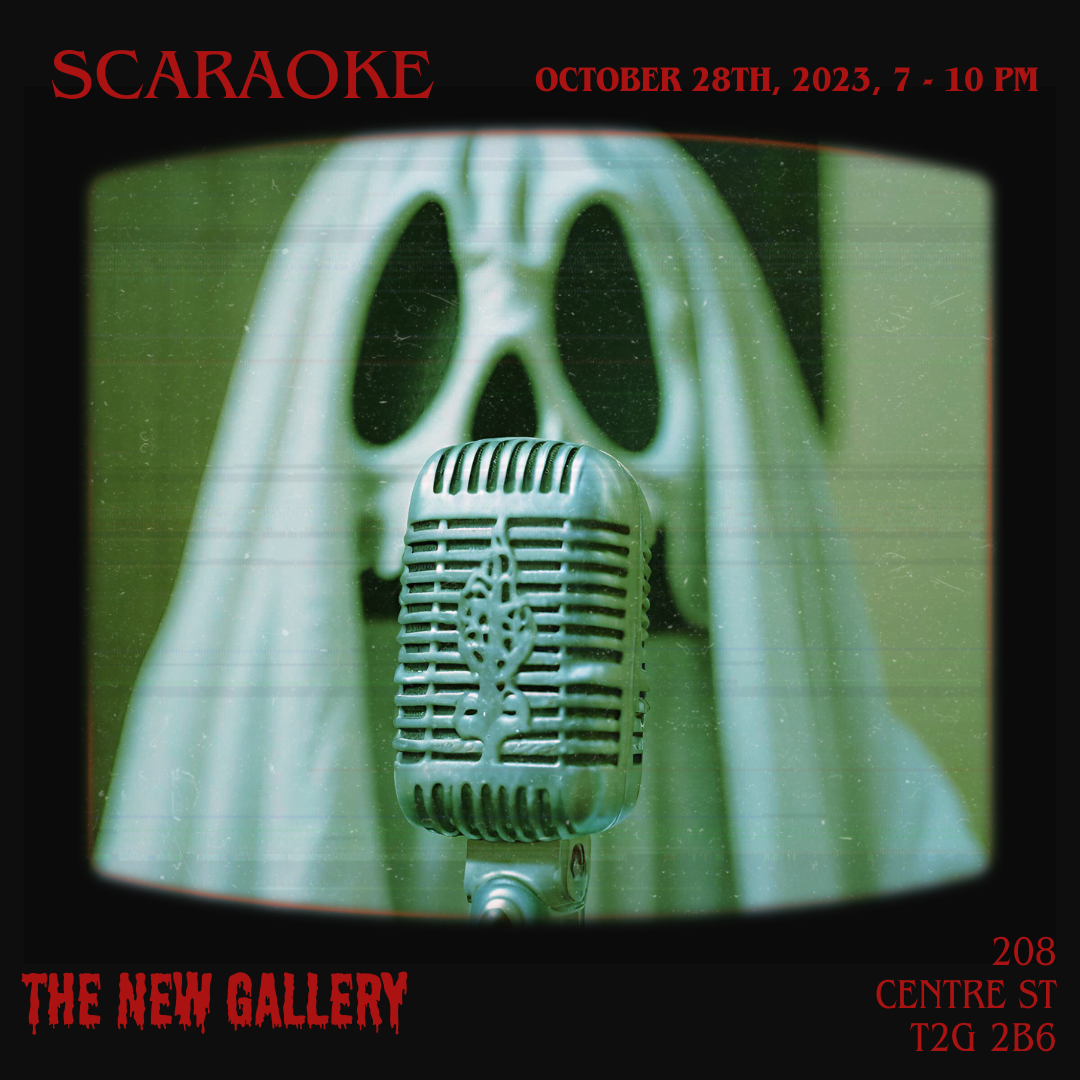
SCARAOKE FUNDRAISER
When: October 28th, 7PM - 10PM
Where: The New Gallery Mainspace (208 Centre St SE, T2G 2B6 Calgary, AB)
It’s time to dress up in your Halloween attire and sing your heart out 🔪️❤️️ at The New Gallery’s Halloween Karaoke Fundraiser aka SCARAOKE! This October 28th we can’t wait to hear your screeches and screams and be haunted by your ghostly ballads.
We will have some excellent mood lighting, a variety of snacks, our regular bar selection, as well as sober cocktails. To pick a song, it’s a toonie and an extra 2$ will bump you up in the queue.
Your support matters! For more than 45 years, The New Gallery has thrived with the enthusiasm, dedication and collective energy of our community members. All proceeds from this fundraiser will support TNG's programming and our long-term sustainability.
TNG is still strongly recommending masks for the safety of our artists, staff, and community.
Can’t wait to see you all there!
Accessibility: Our main entrance is wheelchair accessible and has no steps to enter. Our front entrance door is not automatic. Our bathroom in the main space is wheelchair accessible, has grab bars by the toilet and has a changing station. Our bathroom is gender neutral and uses unscented soap. All door handles within the center can be operated with a closed fist. We don’t use salt on our walkways, though some of our neighbors do. We welcome service animals! The walkway in front of the building is slanted at the northern end, and has a ramp going upwards on the south end of our block.
Accessibility: The Resource Centre will be open to provide a low sensory / de-stimulation area for guests. Please talk to a staff member or volunteer for access to The Resource Centre during the event.
︎For more info on accessibility visit our accessibility page.

October 14, 2023
1PM-3PM
@ The New Gallery
208 Centre St SE
T2G 2B6 Calgary, AB
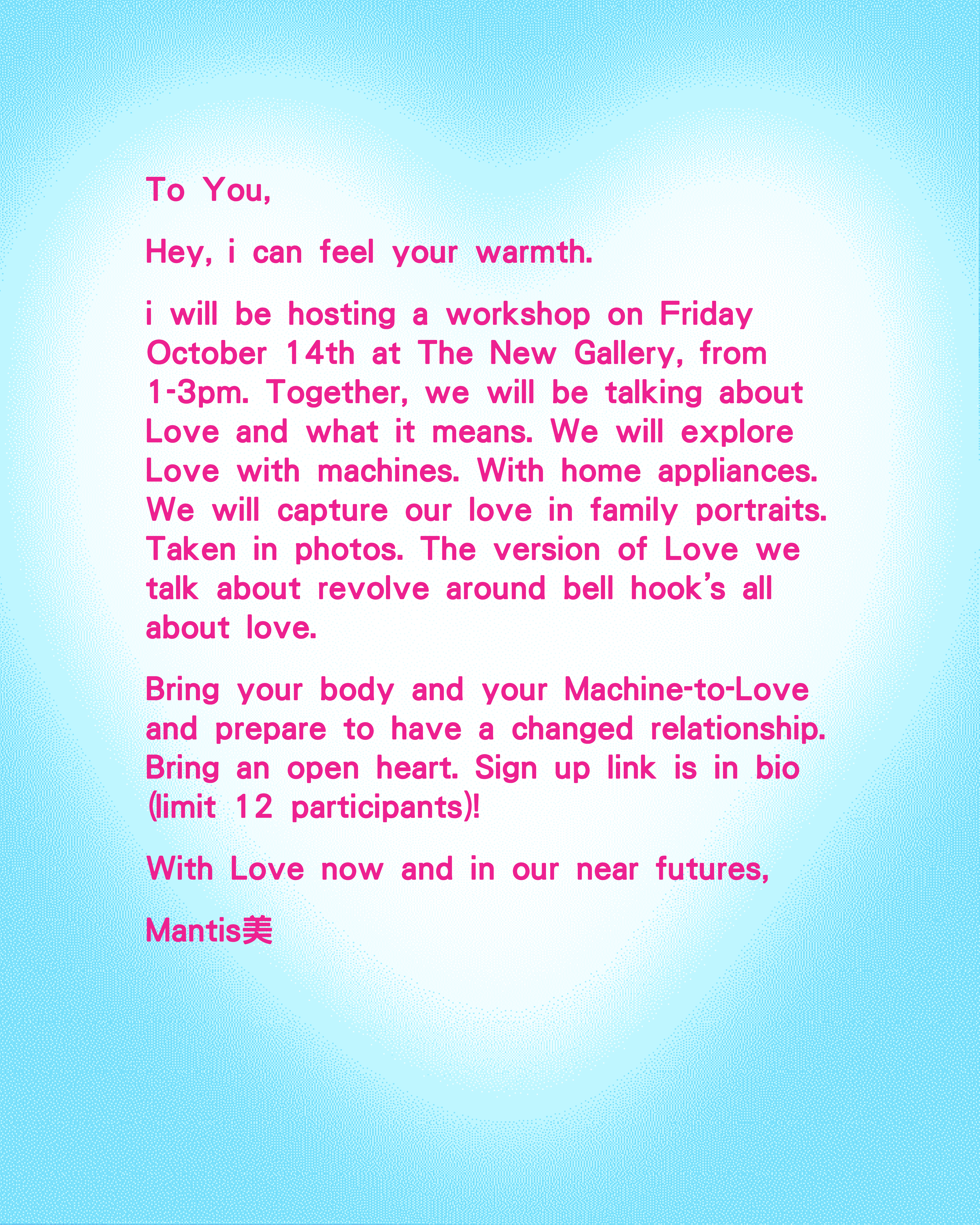
As a part of 家電是家人 (Machines to Love), Mantis 美 Mei will guide a Family Portraits Workshop featuring participants favourite home appliances. Mantis will be focusing on teachings from bell hook's book; "All About Love". Participants are asked to bring a home appliance to the workshop, something they use often and that is easy for them to transport.
There are 12 spots total to participate in this workshop, if you sign up and realize later that you can't make it, please be mindful and give your spot up to someone else who may want to participate!
There are 12 spots total to participate in this workshop, if you sign up and realize later that you can't make it, please be mindful and give your spot up to someone else who may want to participate!
Mantis 美 Mei Bio:
I am still little. So I play. Gift giving and hanging out and LOVINGG!!! is a part of my practice. Through my work, I ask you to consider laughing (hehe hahahaha) and smiling ( sometimes crying (wahhh wahhh) together as forms of community building.
Fun facts about me:
- I am super young and cute. And overall irresistible. And young.
- My favourite family guy quote "Love is like a fart. If you have to force it, it's probably crap."
- ^Just kidding. I've never watched family guy
I am still little. So I play. Gift giving and hanging out and LOVINGG!!! is a part of my practice. Through my work, I ask you to consider laughing (hehe hahahaha) and smiling ( sometimes crying (wahhh wahhh) together as forms of community building.
Fun facts about me:
- I am super young and cute. And overall irresistible. And young.
- My favourite family guy quote "Love is like a fart. If you have to force it, it's probably crap."
- ^Just kidding. I've never watched family guy
Archive / 2022
Main Space Exhibition /

GINA’MATIMG
‘Time of Acquiring Learning’
Julia Rose Sutherland
November 12th - December 23rd
Opening Reception /
Saturday November 12th, 7PM- 9PM
GINA’MATIMG ‘Time of Acquiring Learning’:
In Conversation with Julia Rose Sutherland
Listen on Youtube:
Jasmine Piper talks with Julia Rose Sutherland about Sutherland's exhibition, GINA’MATIMG ‘Time of Acquiring Learning’.
*Content Warning: Police Brutality, Self Harm, Bodily Harm, Missing Persons, Adult Language*
In Conversation with Julia Rose Sutherland
Listen on Youtube:
Jasmine Piper talks with Julia Rose Sutherland about Sutherland's exhibition, GINA’MATIMG ‘Time of Acquiring Learning’.
*Content Warning: Police Brutality, Self Harm, Bodily Harm, Missing Persons, Adult Language*
Julia Rose Sutherland's exhibition "GINA'MATIMG" is a contemporary collection of explorations subverted Gawiei's "quillwork" inspired by her heritage as a Mi'kmaq First Nations woman of Turtle Island. Gawiei is a process of embroidery/ embellishment with porcupine quills.
Sutherland is using this opportunity to start a dialogue about the representation of Indigenous craft, questioning the canon of westernized gallery practices, authority, and decolonization practices. This work and practice challenge power structures and systemic racism (which actively hinder and oppress minorities) and push for dismantling white supremacy through active conversation and dialogue.
This exhibition included one community quillwork workshop at The New Gallery site.
Sutherland is using this opportunity to start a dialogue about the representation of Indigenous craft, questioning the canon of westernized gallery practices, authority, and decolonization practices. This work and practice challenge power structures and systemic racism (which actively hinder and oppress minorities) and push for dismantling white supremacy through active conversation and dialogue.
This exhibition included one community quillwork workshop at The New Gallery site.
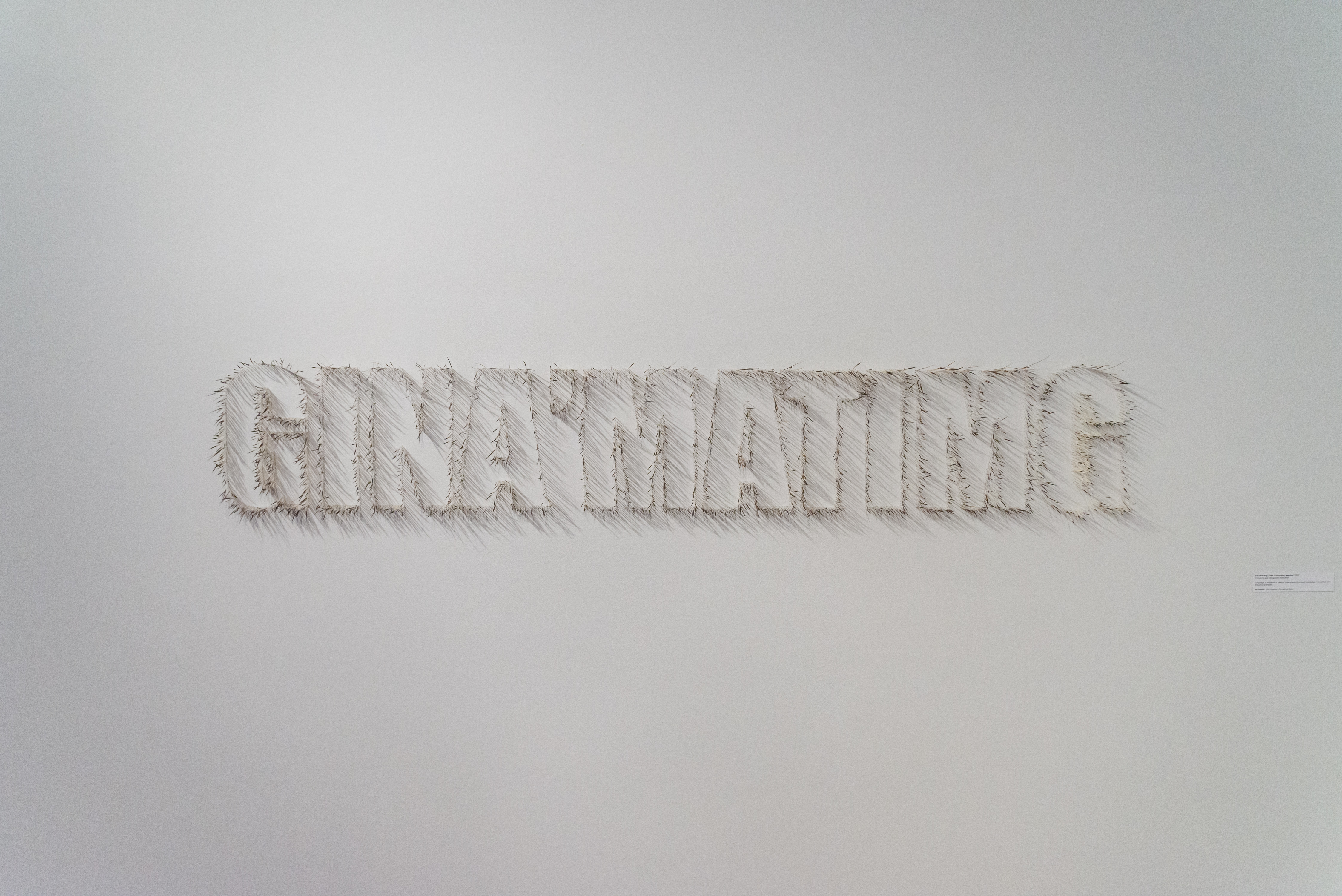
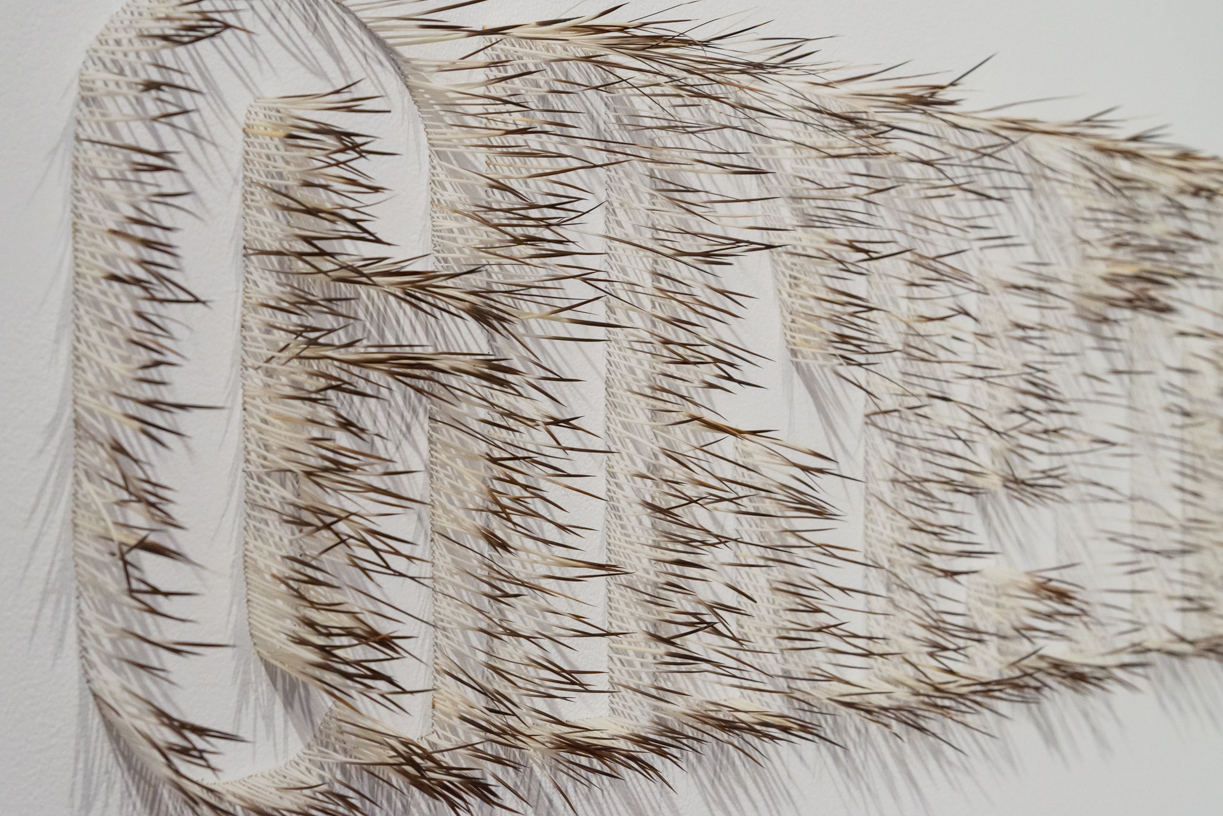
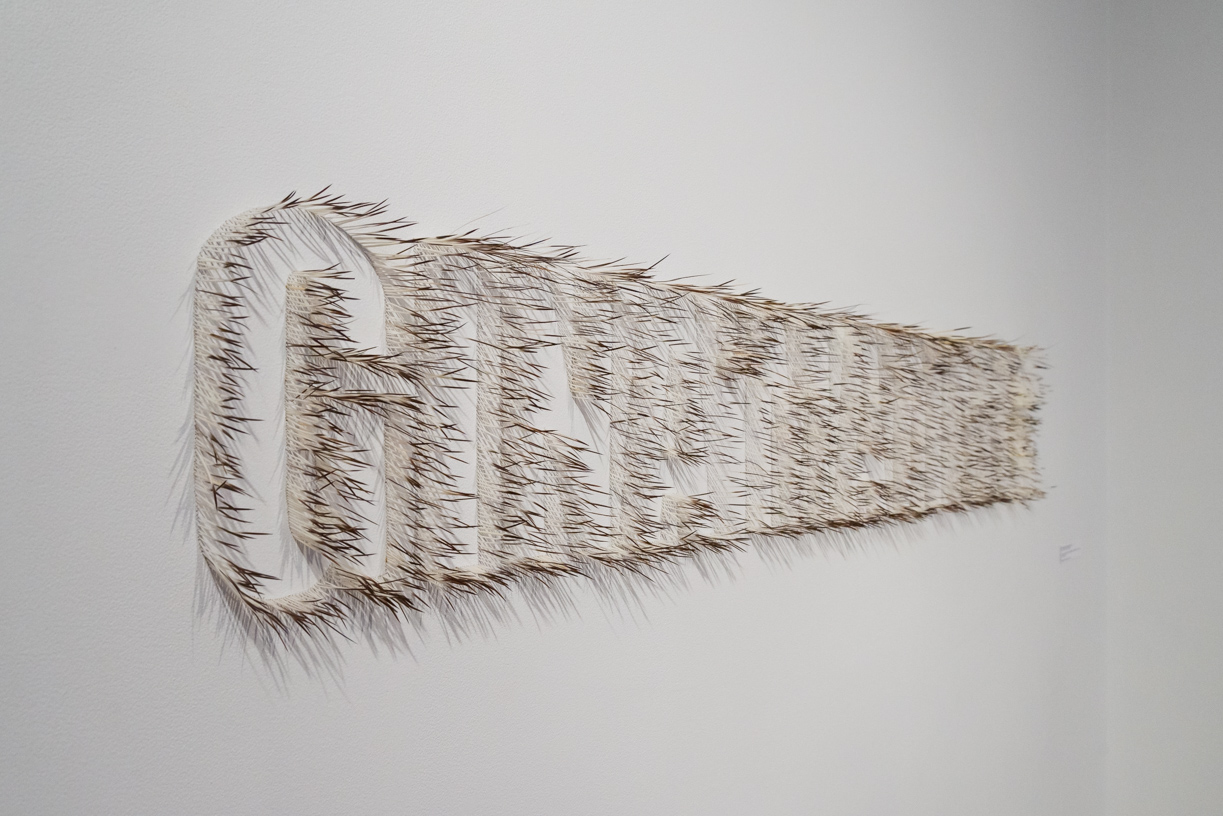
Documentation by Chelsea Yang Smith
Generous Pain, Denied Indulgence
GINA’MATIMG Essay
Gaining knowledge is riddled with challenges and triumphs. The journey of doing so is abundant in opportunities to grapple with developing a new skill and confronting our insecurities as we face trial and error firsthand. It is in that experience of building our understanding, whilst coming to terms with the investment required to truly master its execution, that we are humbled and proud—of ourselves for what we have achieved, of those who came before who have taught us, and those who will come after who will learn.
That relationship with learning is further complicated when its preceded by barriers of trauma and genocide—when the people who would have shared their stories and abilities are denied the right to do so by violent force. When Indigenous communities on Turtle Island had the lands they cared for stolen, children abducted and murdered, and cultural practices banned, their colonizers intended to purge Indigenous peoples from history so settlers could determine the narrative’s retelling. And yet, Indigenous people persist.
Resilience is not an adequate word to describe confronting generations of harm, disputing a continued effort to historicize a living population, and criticizing the deeply held anti-Indigenous beliefs that run rampant in Canada. Resilience implies overcoming the hardships an unbiased universe proposes, rather than surviving a concerted effort to violate and destroy; both are admirable, but the latter is a necessity. Julia Rose Sutherland’s work is much more than resilient; it is haunting and beautiful, pointed and evocative, and encourages an appreciation for practices that are maintained rather than archived.
In her performance Gesipatl Iga’latl” (Pain and Release), porcupine quills pierce Sutherland’s flesh, rendering her body sacred and precious. She mirrors the beloved birchbark boxes that are delicately woven with quills by her Mi’kmaq community, honouring her people by using those same slender barbs against her skin and calling attention to the commodification of Indigenous bodies often denied dignity and life. Sutherland embodies a resonant autonomy because she is not an object for a glass case and her actions are not for you. They are a tribute and we are simply fortunate she has decided to share that moment with us.
In this, Sutherland compromises one of the foundations of colonialism. Rather than enabling the legacy of a white supremacist lens that would fetishize or exoticize her actions and maintain a hierarchy of power, she has repurposed the frame to reflect the strength of Indigenous peoples as they persevere and thrive. Simultaneously, Sutherland exposes the intimate ties between privilege and complacency as she bleeds to reconcile with Canada’s colonial history and honour her Mi’kmaq ancestors.
It is in Sutherland’s stoic gaze that we are denied any indulgence in her pain. Instead, we are asked to watch as Sutherland draws the explicit parallels between seeking colonially forbidden knowledge and the mutilation of her body, a spiritual gesture that is deeply tied to endurance and kinship in certain Indigenous ceremonies and does not abide by the comfort of an audience who may be unfamiliar with its significance.
In the end, Sutherland is generous with her rich metaphors and references, but it is up to us to learn from them. Her example provides insight into the terms we must embrace when addressing Canada’s colonial history that has largely been left to fester, and inspiration for the possibilities that lie ahead.
That relationship with learning is further complicated when its preceded by barriers of trauma and genocide—when the people who would have shared their stories and abilities are denied the right to do so by violent force. When Indigenous communities on Turtle Island had the lands they cared for stolen, children abducted and murdered, and cultural practices banned, their colonizers intended to purge Indigenous peoples from history so settlers could determine the narrative’s retelling. And yet, Indigenous people persist.
Resilience is not an adequate word to describe confronting generations of harm, disputing a continued effort to historicize a living population, and criticizing the deeply held anti-Indigenous beliefs that run rampant in Canada. Resilience implies overcoming the hardships an unbiased universe proposes, rather than surviving a concerted effort to violate and destroy; both are admirable, but the latter is a necessity. Julia Rose Sutherland’s work is much more than resilient; it is haunting and beautiful, pointed and evocative, and encourages an appreciation for practices that are maintained rather than archived.
In her performance Gesipatl Iga’latl” (Pain and Release), porcupine quills pierce Sutherland’s flesh, rendering her body sacred and precious. She mirrors the beloved birchbark boxes that are delicately woven with quills by her Mi’kmaq community, honouring her people by using those same slender barbs against her skin and calling attention to the commodification of Indigenous bodies often denied dignity and life. Sutherland embodies a resonant autonomy because she is not an object for a glass case and her actions are not for you. They are a tribute and we are simply fortunate she has decided to share that moment with us.
In this, Sutherland compromises one of the foundations of colonialism. Rather than enabling the legacy of a white supremacist lens that would fetishize or exoticize her actions and maintain a hierarchy of power, she has repurposed the frame to reflect the strength of Indigenous peoples as they persevere and thrive. Simultaneously, Sutherland exposes the intimate ties between privilege and complacency as she bleeds to reconcile with Canada’s colonial history and honour her Mi’kmaq ancestors.
It is in Sutherland’s stoic gaze that we are denied any indulgence in her pain. Instead, we are asked to watch as Sutherland draws the explicit parallels between seeking colonially forbidden knowledge and the mutilation of her body, a spiritual gesture that is deeply tied to endurance and kinship in certain Indigenous ceremonies and does not abide by the comfort of an audience who may be unfamiliar with its significance.
In the end, Sutherland is generous with her rich metaphors and references, but it is up to us to learn from them. Her example provides insight into the terms we must embrace when addressing Canada’s colonial history that has largely been left to fester, and inspiration for the possibilities that lie ahead.
- Brandon Giessmann



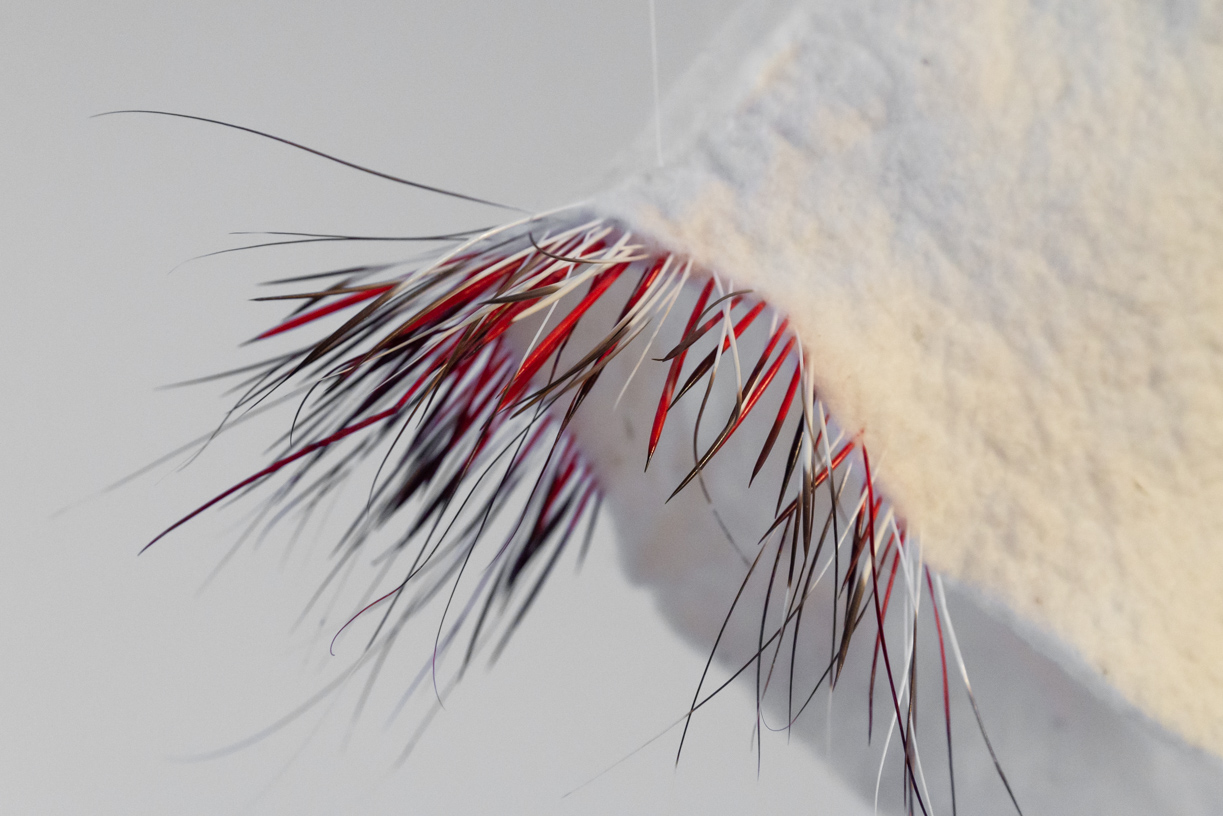


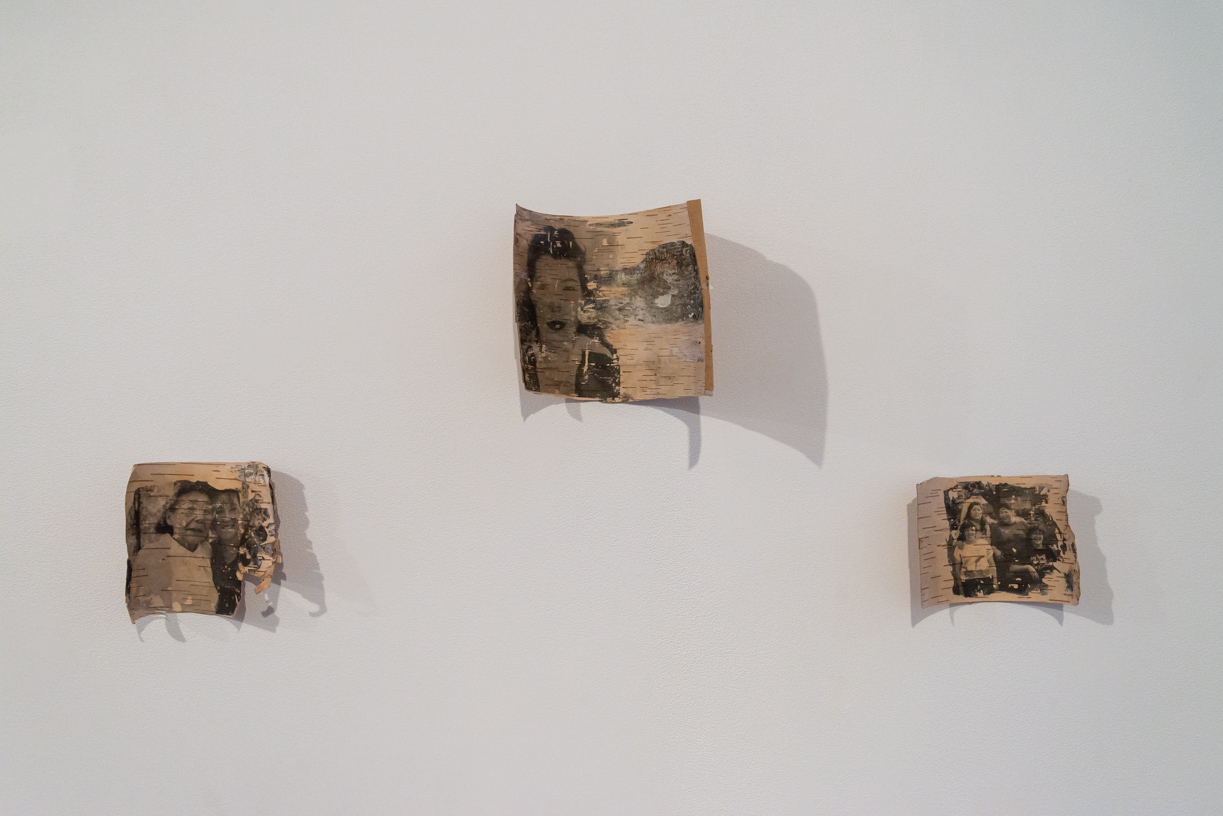

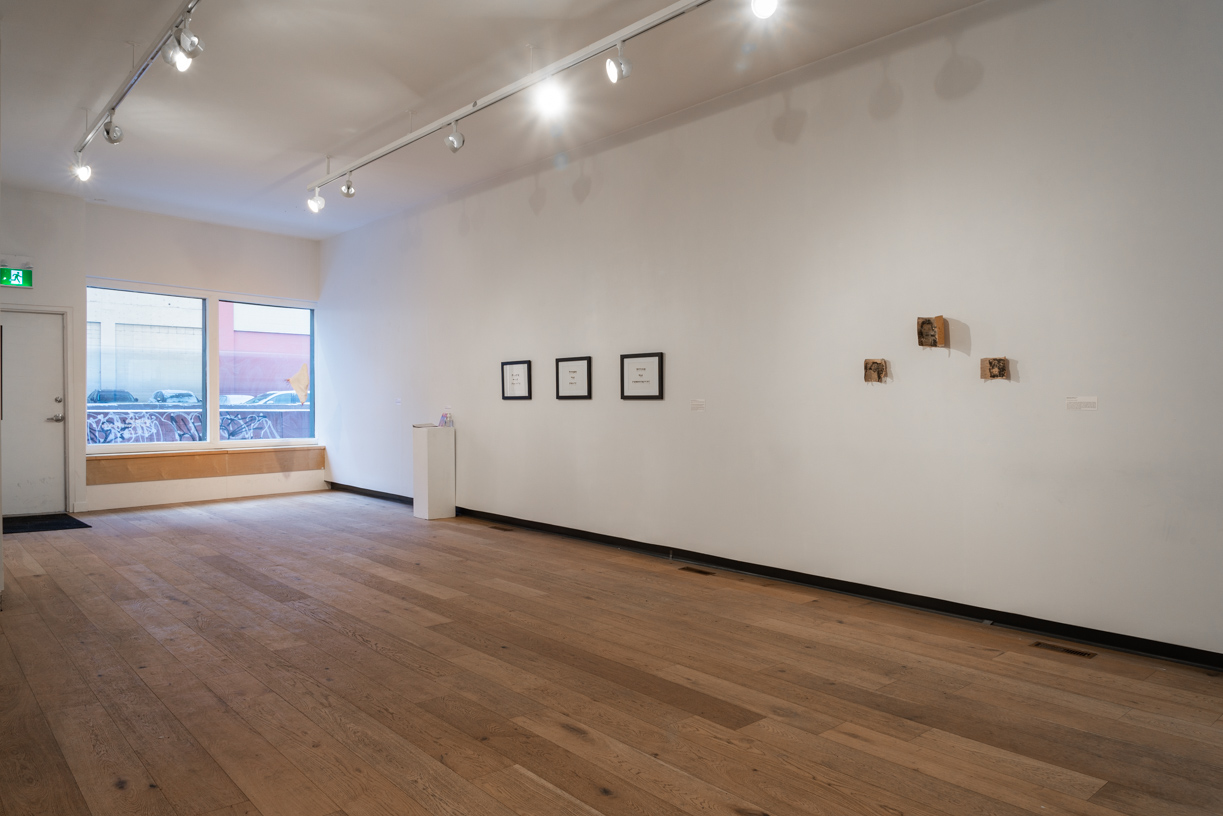




Documentation by Chelsea Yang Smith
Julia Rose Sutherland (b.1991) is a Mi’kmaq (Metepenagiag Nation) / settler artist and educator (Assistant Professor at OCADU) based out of Tkaronto (Toronto, Canada). Sutherland’s interdisciplinary art practice employs photography, sculpture, textiles, and performance. She earned her MFA at the University at Buffalo (2019) and BFA in Craft and New Media at the Alberta University of the Arts (2013). She has recently shown work at The Biennale d’art contemporain autochtone (BACA), Bemis Center of Contemporary Art (where she was also a summer 2021 Artist in Resident), the Mackenzie Art Gallery, K Art Gallery, WAAP Gallery, and 59 Rivoli Gallery in Paris, France. Sutherland is a recent recipient of the Canada Council for the Arts Creating Knowing Sharing award and the AFA Indigenous Individual Project grant.
Brandon Giessmann is a visual artist and writer who explores trauma, identity, and memory. He received his BFA from the Alberta University of the Arts in 2018 and his MFA at SUNY: University at Buffalo in New York in 2020. His interdisciplinary practice often uses performance, photography, and installation to bridge generational gaps in knowledge and experiences of the closet and genocide, consider the effects of the ongoing AIDS crisis, and reflect upon the role that institutions play in the conservation and presentation of queer histories.
Brandon Giessmann is a visual artist and writer who explores trauma, identity, and memory. He received his BFA from the Alberta University of the Arts in 2018 and his MFA at SUNY: University at Buffalo in New York in 2020. His interdisciplinary practice often uses performance, photography, and installation to bridge generational gaps in knowledge and experiences of the closet and genocide, consider the effects of the ongoing AIDS crisis, and reflect upon the role that institutions play in the conservation and presentation of queer histories.
中文翻译 Chinese Translation ...

Photograph by Megan Conley
Quillwork Workshop
When: November 4th 2022
Where: The New Gallery Upstairs Resource Centre (208 Centre St S, Calgary, AB T2G 2B6)
The New Gallery is thrilled to invite our community to join us for a quillwork on birch bark workshop with Julia Rose Sutherland, Saturday, November 5th, 2022, 11 AM to 2 PM.
Please join Artist Julia Rose Sutherland in an interactive workshop exploring the foundations of porcupine quillwork. This workshop will run for three hours and will cover how to clean and apply colour through natural dyes, basic quillwork applications, and stitches to create patterns and design motifs. Participants will be provided with birch bark and porcupine quills gifted by the Artist.
Please note that we are asking participants to wear masks for the safety of our community, artists and staff. The workshop will be held in TNG’s Resource Centre, which is not wheelchair accessible. There will be a 30 to 45 minute break during the workshop for lunch. Spaces are limited and registration is required.
Julia Rose Sutherland is a Mi’kmaq (Metepenagiag Nation) / settler artist and educator (Assistant Professor at OCADU) based out of Tkaronto (Toronto, Canada). Sutherland’s interdisciplinary art practice employs photography, sculpture, textiles, and performance. She earned her MFA at the University at Buffalo (2019) and BFA in Craft and New Media at the Alberta University of the Arts (2013). She has exhibited nationally and internationally, recently showing work at the Bemis Center of Contemporary Art, the Mackenzie Art Gallery, K Art Gallery, WAAP Gallery, and 59 Rivoli Gallery in Paris, France. Sutherland is a recent recipient of the Canada Council for the Arts Creating Knowing Sharing award and the AFA Indigenous Individual Project grant.
Accessibility:
The New Gallery Resource Center is located directly above The New Gallery Main Space. The entrance door is not automatic. There are 22 narrow stairs that lead into the Resource Center. The bathroom is gender-neutral, and multi-stall, but does not have a wheelchair-accessible stall. Some of our neighbours smoke cigarettes indoors, and the smell permeates into the Resource Center. We do allow service animals and pets to join us upstairs!
BILLBOARD 208/
ummmmp
asinnajaq

May 30 – September 15, 2022
Curated by The Shell Projects
In asinnajaq’s words, ummmmp is an attestation of love for Inuit come and gone and still with us. It is an acknowledgment of life, love, and loss.
asinnajaq’s practice is led by a care and generosity towards images. The work presented at TNG in Calgary’s east village speaks to a sister work presented simultaneously in the window space of *Queenspecific in Toronto’s Queen West neighborhood. In their kindred visuals, the two pieces share the desire of memorialisation critical in remembrance. The high visibility and simultaneous temporariness of both exhibition spaces are important aspects to reflect upon in relation to how they are deployed vis-a-vis the marginalized realities of the unhoused across the country and the related realities of gentrification, housing exploitation, and barely existing social infrastructures. asinnajaq’s work overlays these interlinked social realities with a politics of care characterized by the intimacy, openness, and celebration necessary to caring for community.
—
asinnajaq is the daughter of Carol Rowan and Jobie Weetaluktuk. She is an urban Inuk from Inukjuak, Nunavik and lives in Tiohtià:ke (Montreal). asinnajaq’s art practice spans many mediums from film to performance video, to curation and much in between. She co-created Tilliraniit, a three day festival celebrating Inuit art and artists. asinnajaq wrote and directed Three Thousand (2017) a short sci-fi documentary. She co-curated Isuma’s show in the ‘Canadian’ pavilion at the 58th Venice Biennale. She was long listed for the 2020 Sobey Art Award. She co-curated the inaugural exhibition INUA at the Qaumajuq. Asinnajaq’s work has been exhibited at art galleries and film festivals around the world.
The Shell Projects is a collaborative curatorial collective led by Maegan Broadhurst and Barbora Racevičiūtė. Initiated in 2017, shell showcases contemporary multi-media artistic practices. It focuses on cultivating relationships between emerging and mid-career practitioners, fostering dialogue between non-traditional art exhibition spaces, and in connecting locally-situated cultural discourses to international contemporary art movements.
asinnajaq’s practice is led by a care and generosity towards images. The work presented at TNG in Calgary’s east village speaks to a sister work presented simultaneously in the window space of *Queenspecific in Toronto’s Queen West neighborhood. In their kindred visuals, the two pieces share the desire of memorialisation critical in remembrance. The high visibility and simultaneous temporariness of both exhibition spaces are important aspects to reflect upon in relation to how they are deployed vis-a-vis the marginalized realities of the unhoused across the country and the related realities of gentrification, housing exploitation, and barely existing social infrastructures. asinnajaq’s work overlays these interlinked social realities with a politics of care characterized by the intimacy, openness, and celebration necessary to caring for community.
—
asinnajaq is the daughter of Carol Rowan and Jobie Weetaluktuk. She is an urban Inuk from Inukjuak, Nunavik and lives in Tiohtià:ke (Montreal). asinnajaq’s art practice spans many mediums from film to performance video, to curation and much in between. She co-created Tilliraniit, a three day festival celebrating Inuit art and artists. asinnajaq wrote and directed Three Thousand (2017) a short sci-fi documentary. She co-curated Isuma’s show in the ‘Canadian’ pavilion at the 58th Venice Biennale. She was long listed for the 2020 Sobey Art Award. She co-curated the inaugural exhibition INUA at the Qaumajuq. Asinnajaq’s work has been exhibited at art galleries and film festivals around the world.
The Shell Projects is a collaborative curatorial collective led by Maegan Broadhurst and Barbora Racevičiūtė. Initiated in 2017, shell showcases contemporary multi-media artistic practices. It focuses on cultivating relationships between emerging and mid-career practitioners, fostering dialogue between non-traditional art exhibition spaces, and in connecting locally-situated cultural discourses to international contemporary art movements.
BILLBOARD 208/
Sorry, We’re Open
Rachel Lau

September 15 – January 6, 2023
Sorry, We’re Open is a glib imagined apology from seemingly unapologetic participants of gentrification in Chinatown. Originally presented as a publication, Sorry, We’re Open is an ugly
hand-bound compilation of text and images documenting gentrification in Vancouver’s Chinatown.
The violent displacement of low-income and racialized communities is not exclusive to Vancouver’s Chinatown, however. Across North America, Chinatowns are faced with the pressing reality of displacement by real estate developers, retail businesses, and art spaces under the guise of revitalization and renewal.
Sorry, We’re Open is an invitation to reflect on how we may be complicit in gentrification in Chinatown and the urgent need to redistribute resources to support the improvement of material living conditions affecting communities that have been historically redlined and discriminated against through policy and social exclusion.
The violent displacement of low-income and racialized communities is not exclusive to Vancouver’s Chinatown, however. Across North America, Chinatowns are faced with the pressing reality of displacement by real estate developers, retail businesses, and art spaces under the guise of revitalization and renewal.
Sorry, We’re Open is an invitation to reflect on how we may be complicit in gentrification in Chinatown and the urgent need to redistribute resources to support the improvement of material living conditions affecting communities that have been historically redlined and discriminated against through policy and social exclusion.
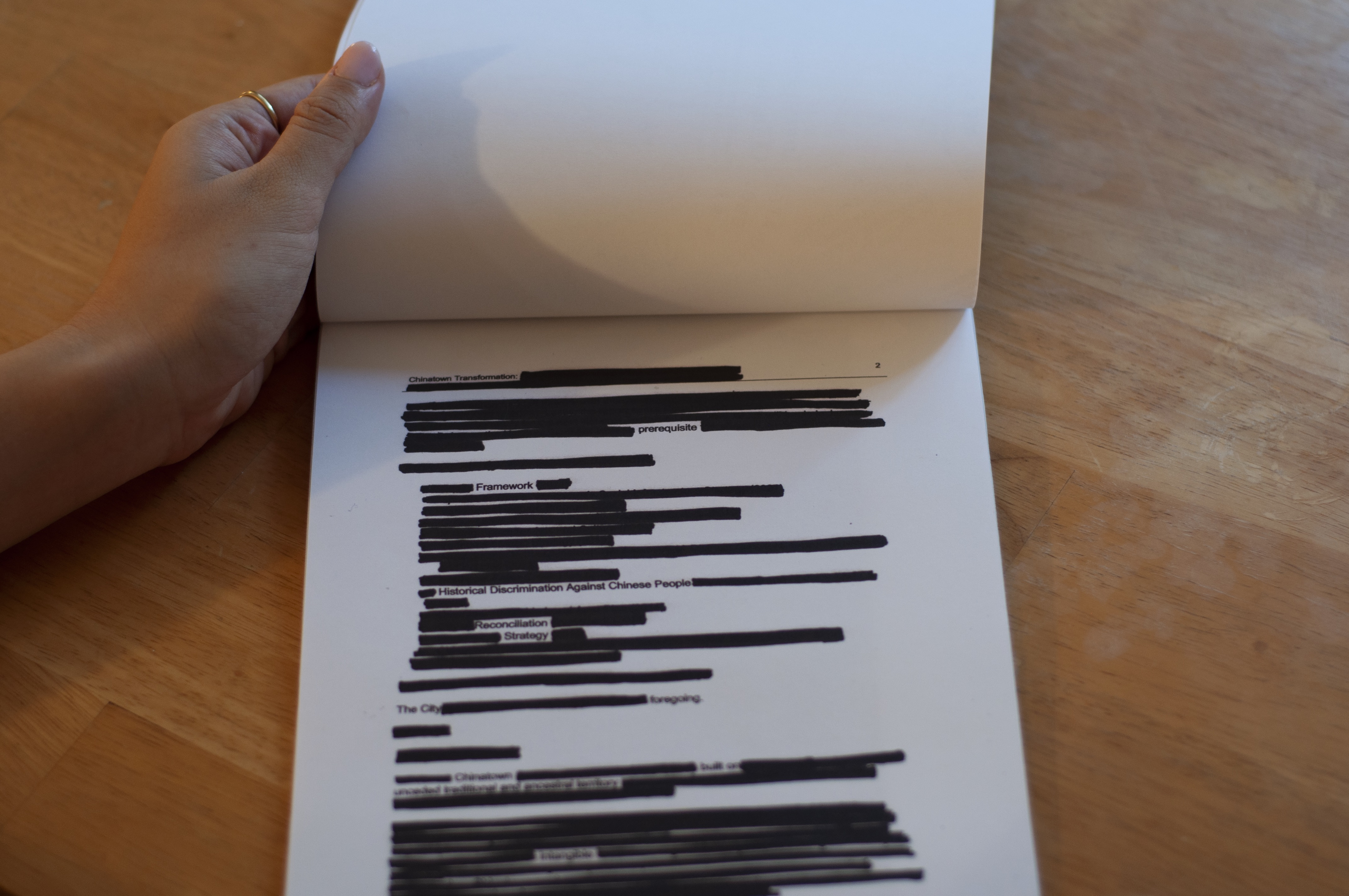
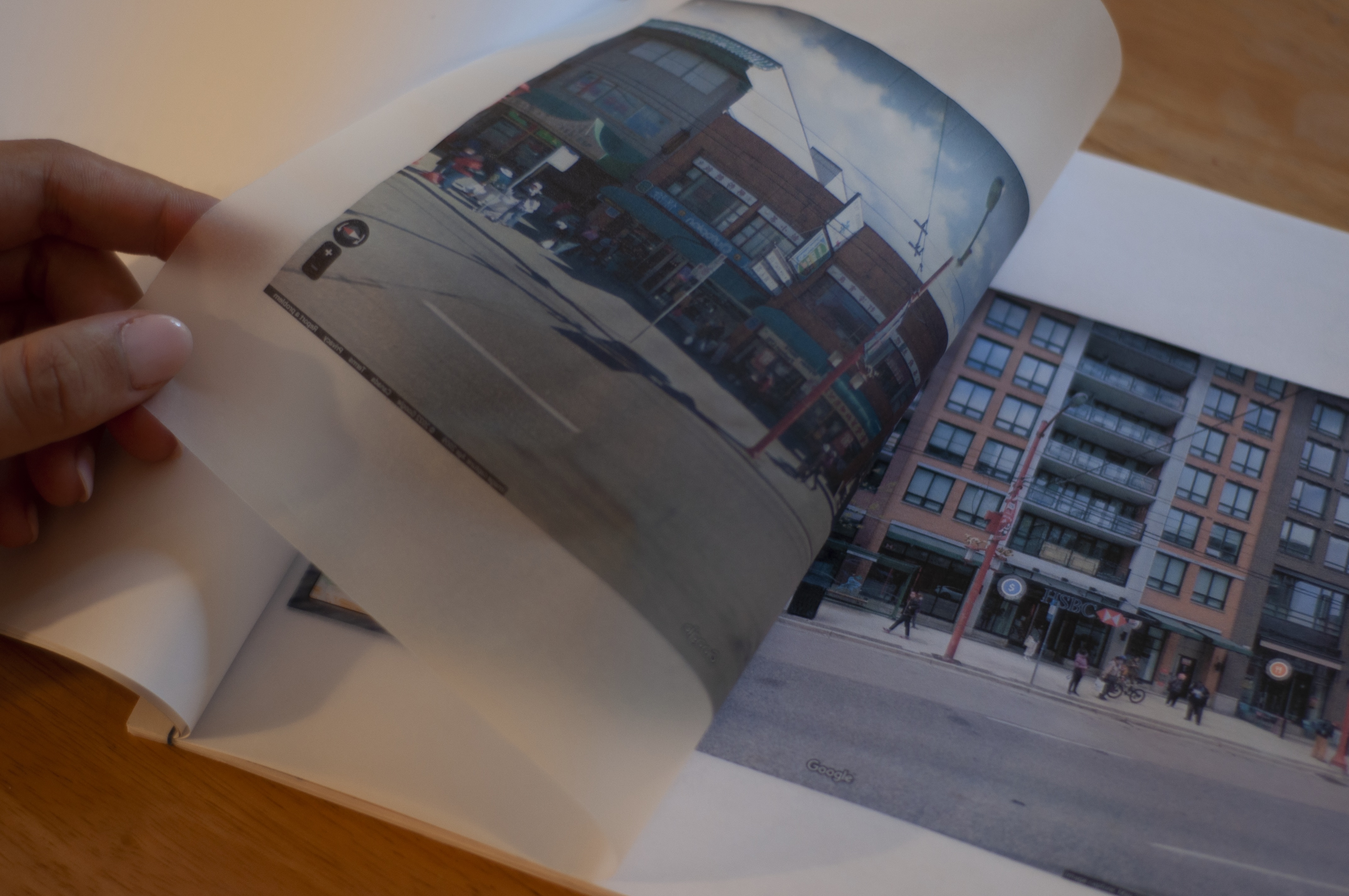
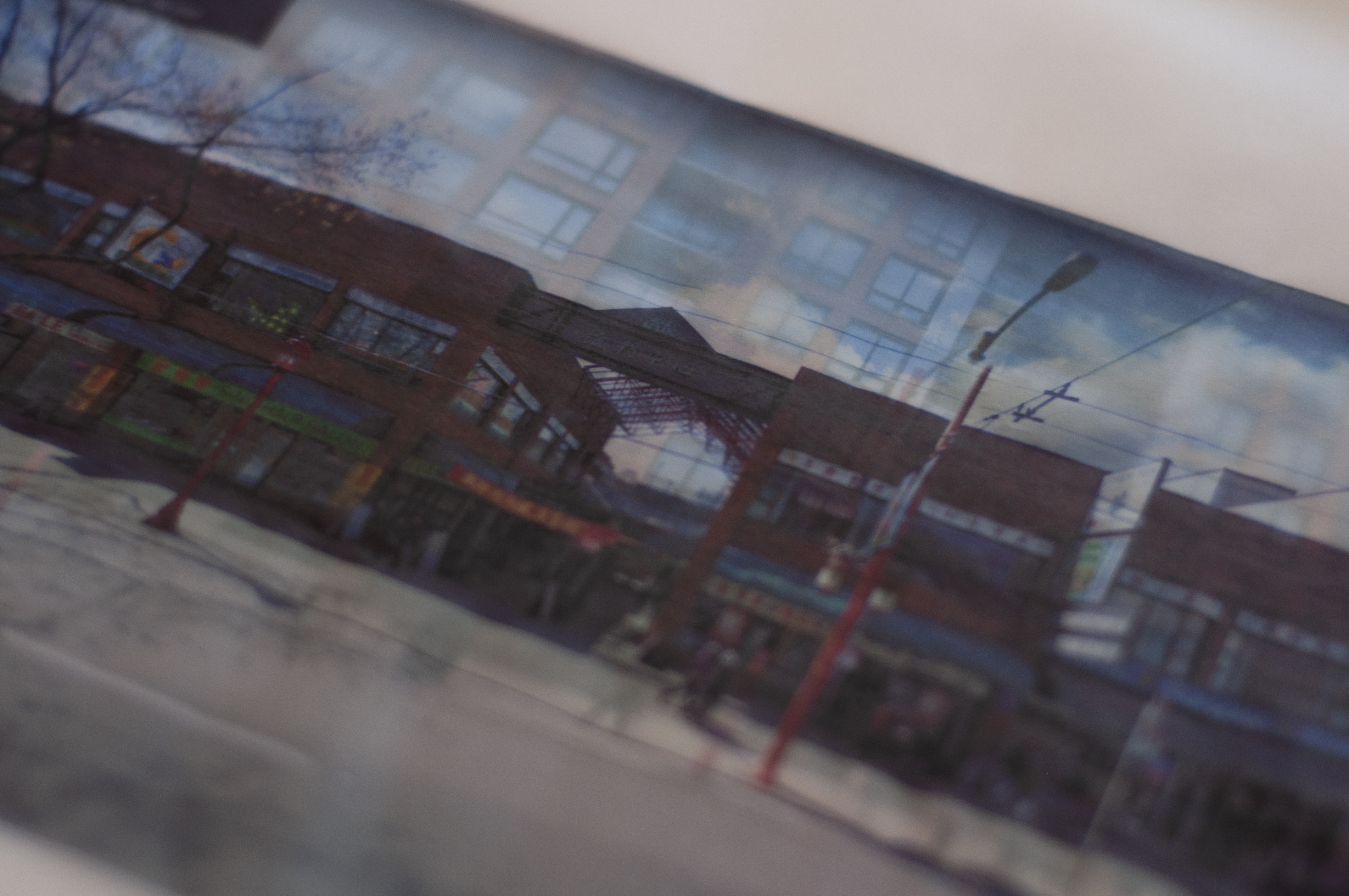

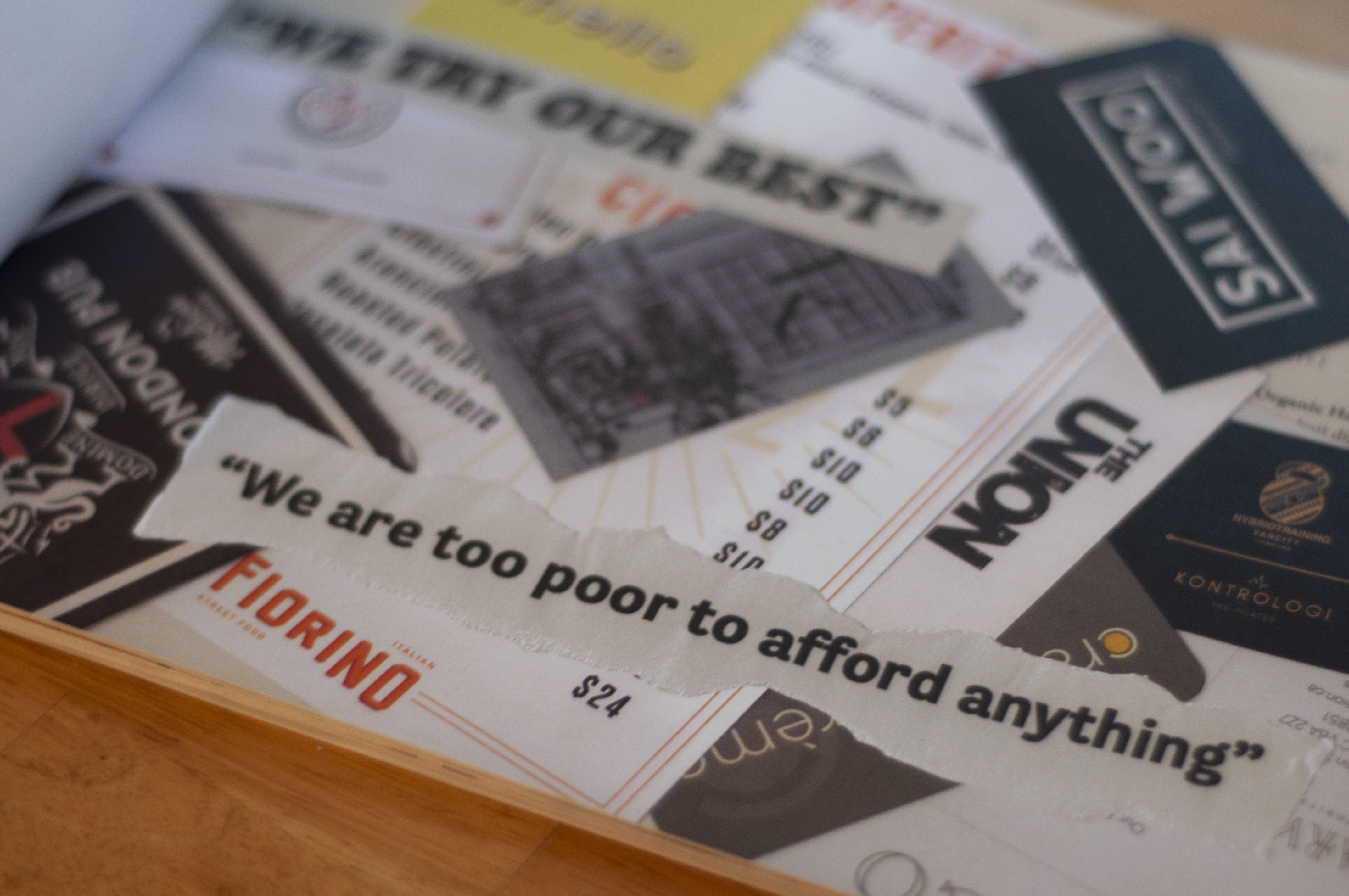
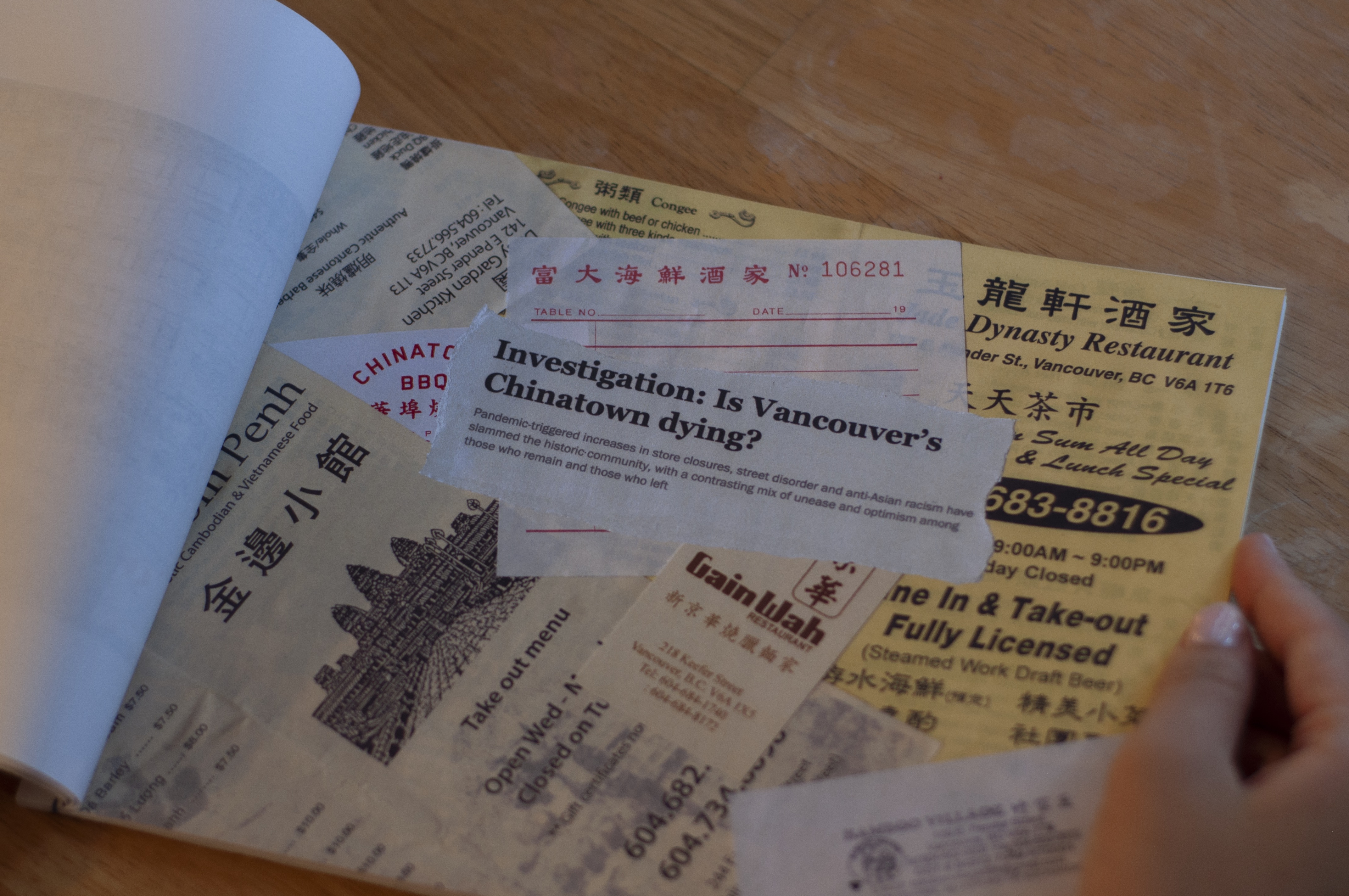
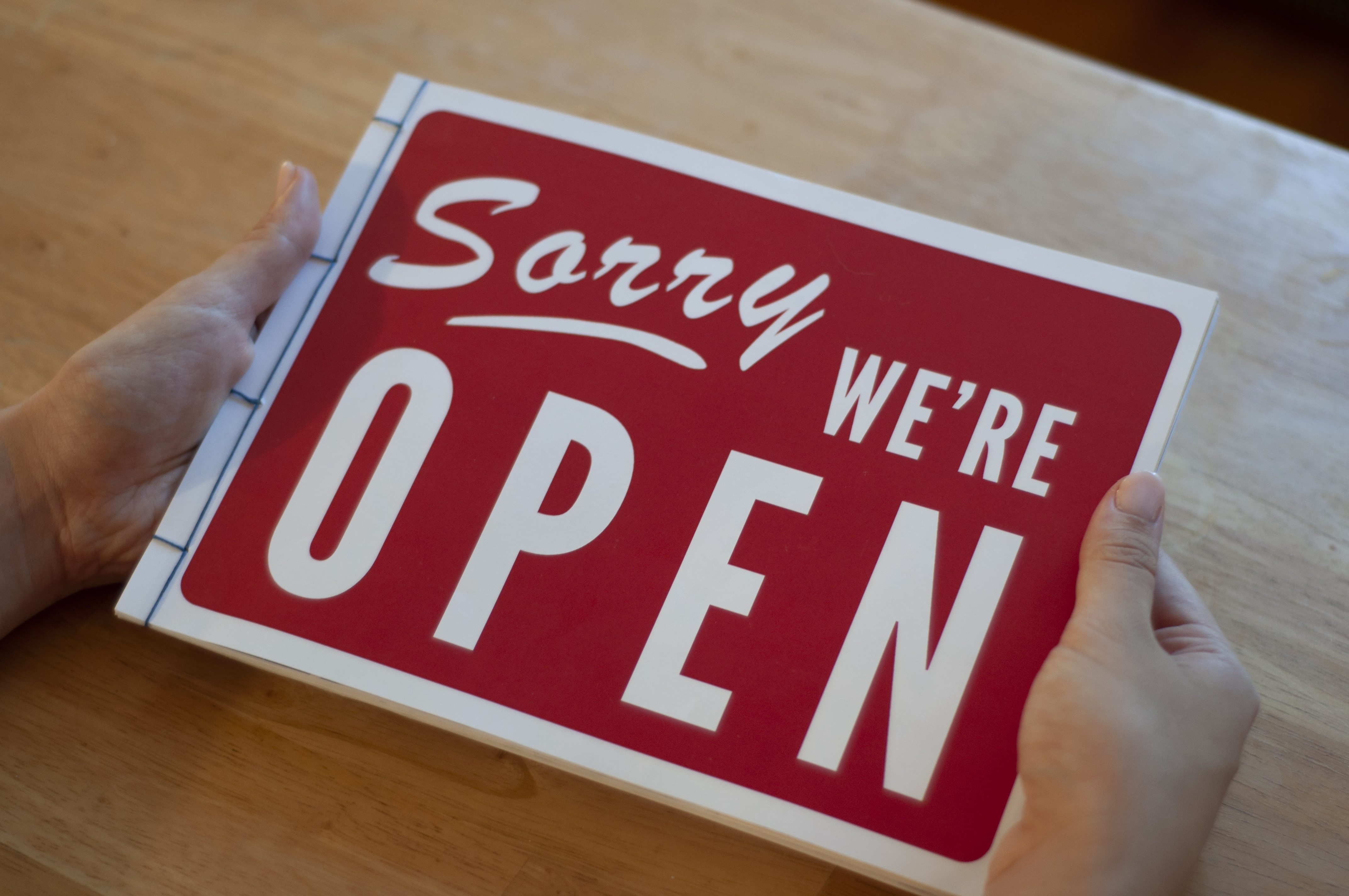
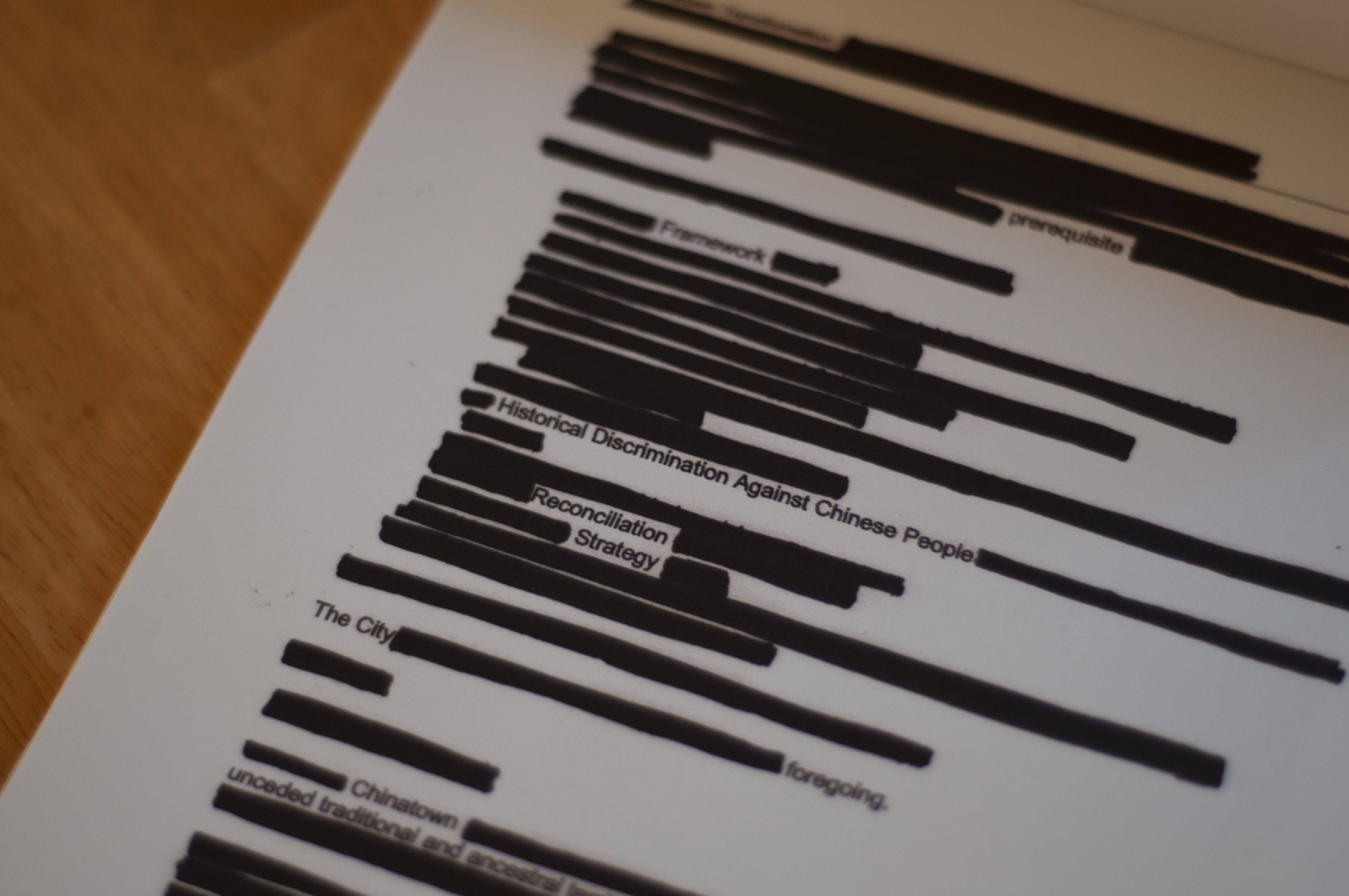
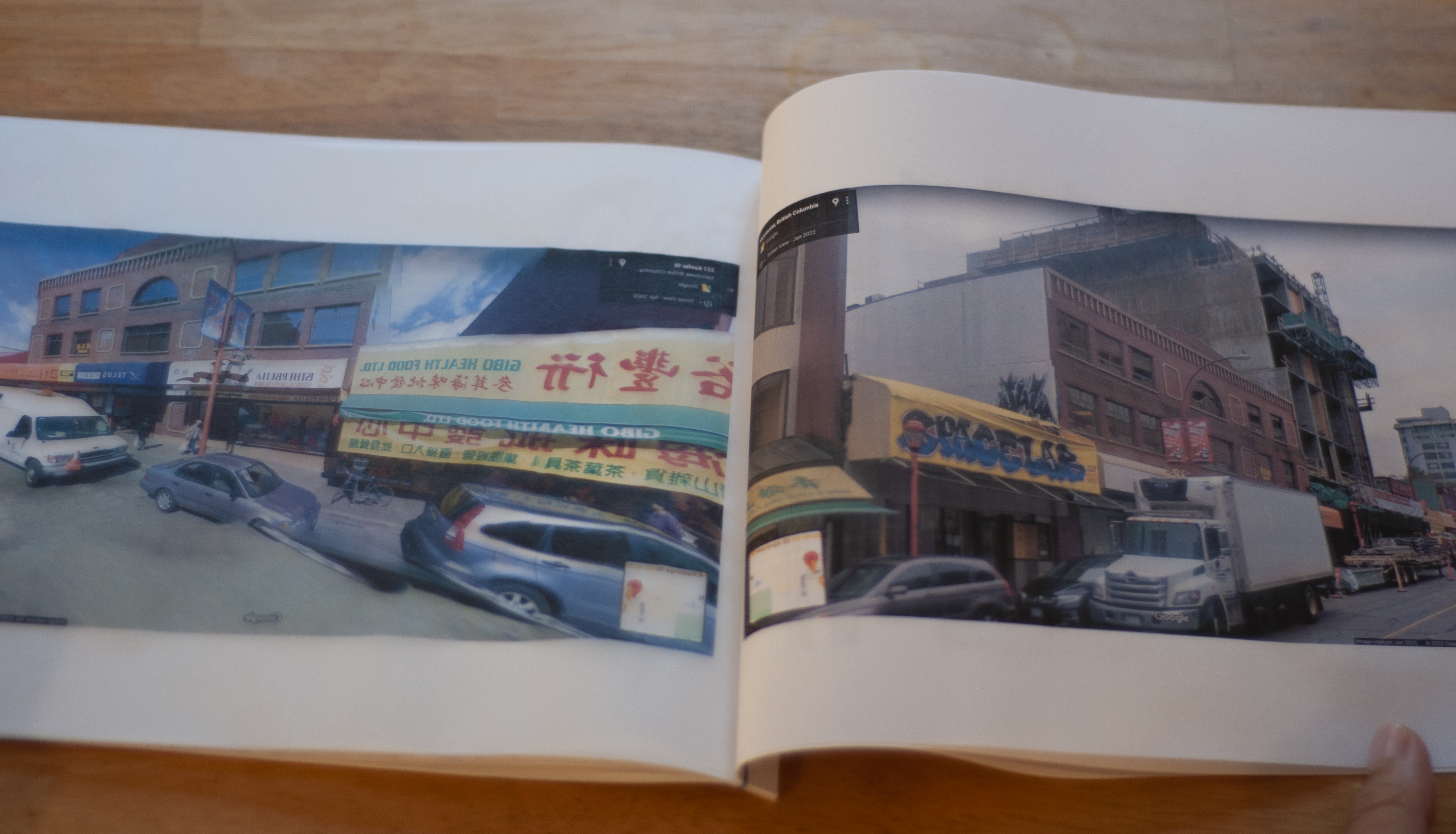
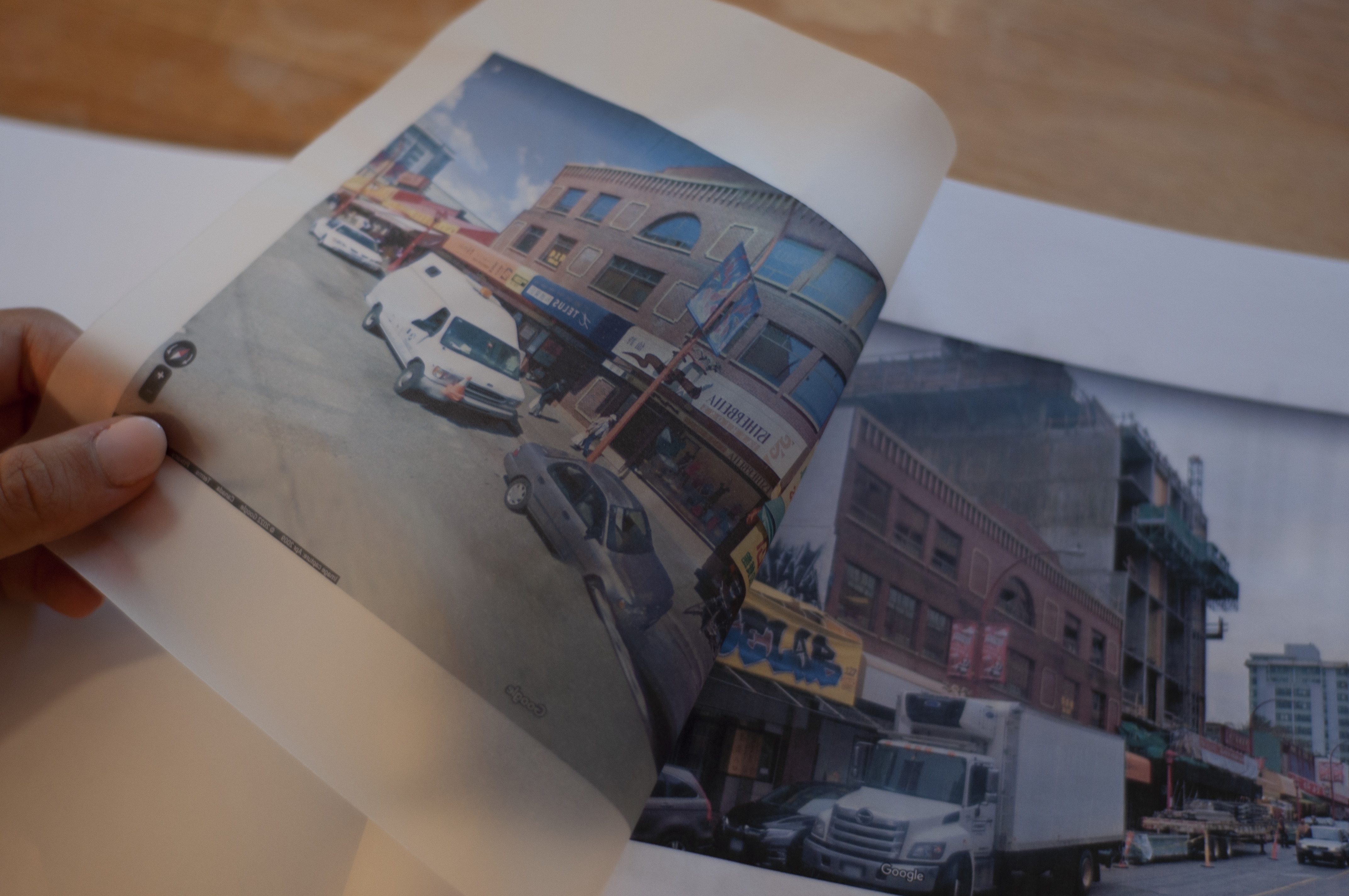
Rachel Lau is a multidisciplinary artist, writer, and community worker based on the unceded territories of the Musqueam, Squamish, and Tsleil-Waututh First Nations, colonially known as “Vancouver”. Inspired by the tenderness and strength of queer and racialized communities, they create work that embraces feeling and communality. Their current practice includes sound art, poetry, photography, drawing, and zine-making.
![Documentation by Danny Luong]()
![Documentation by Danny Luong]()
![Documentation by Danny Luong]()
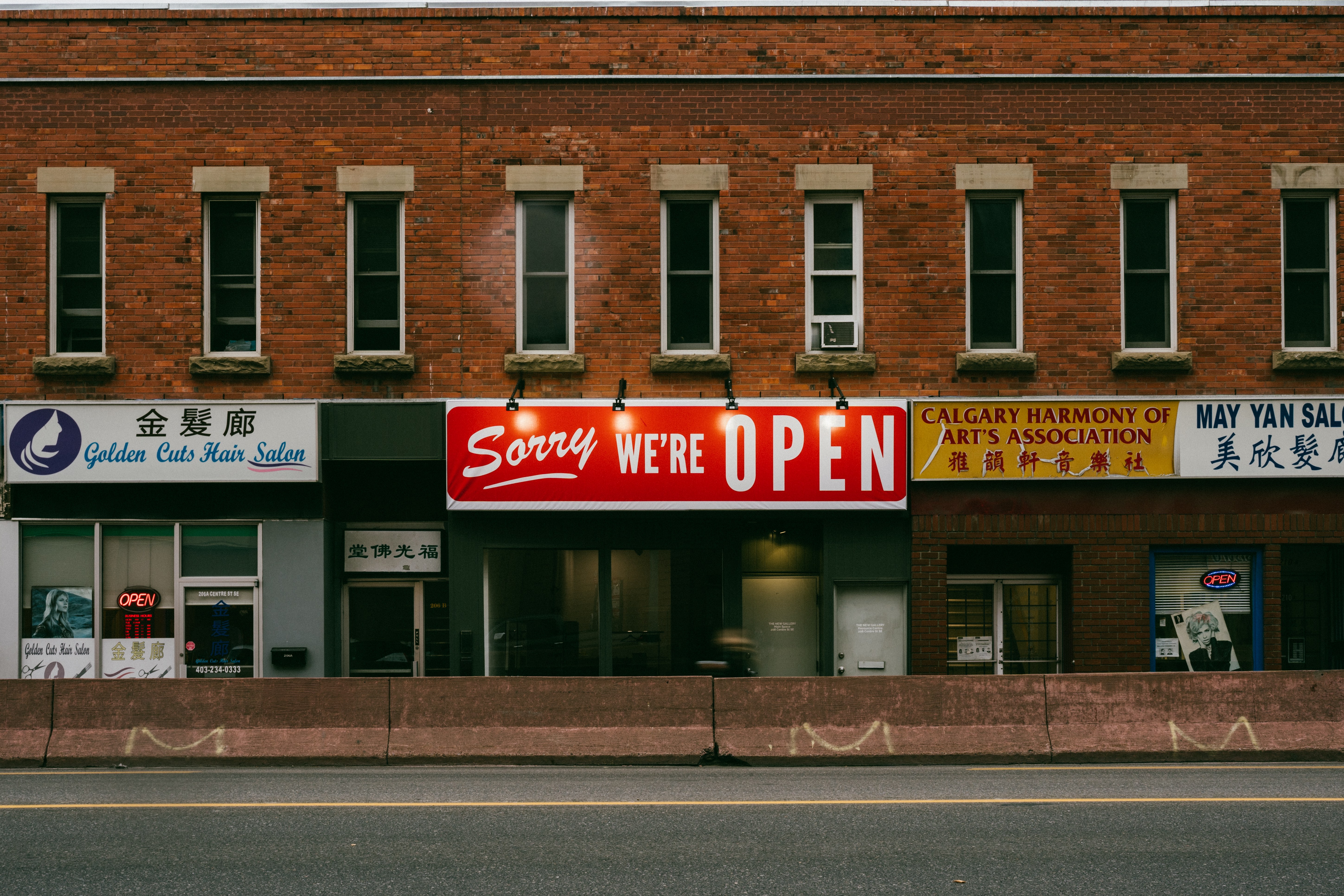

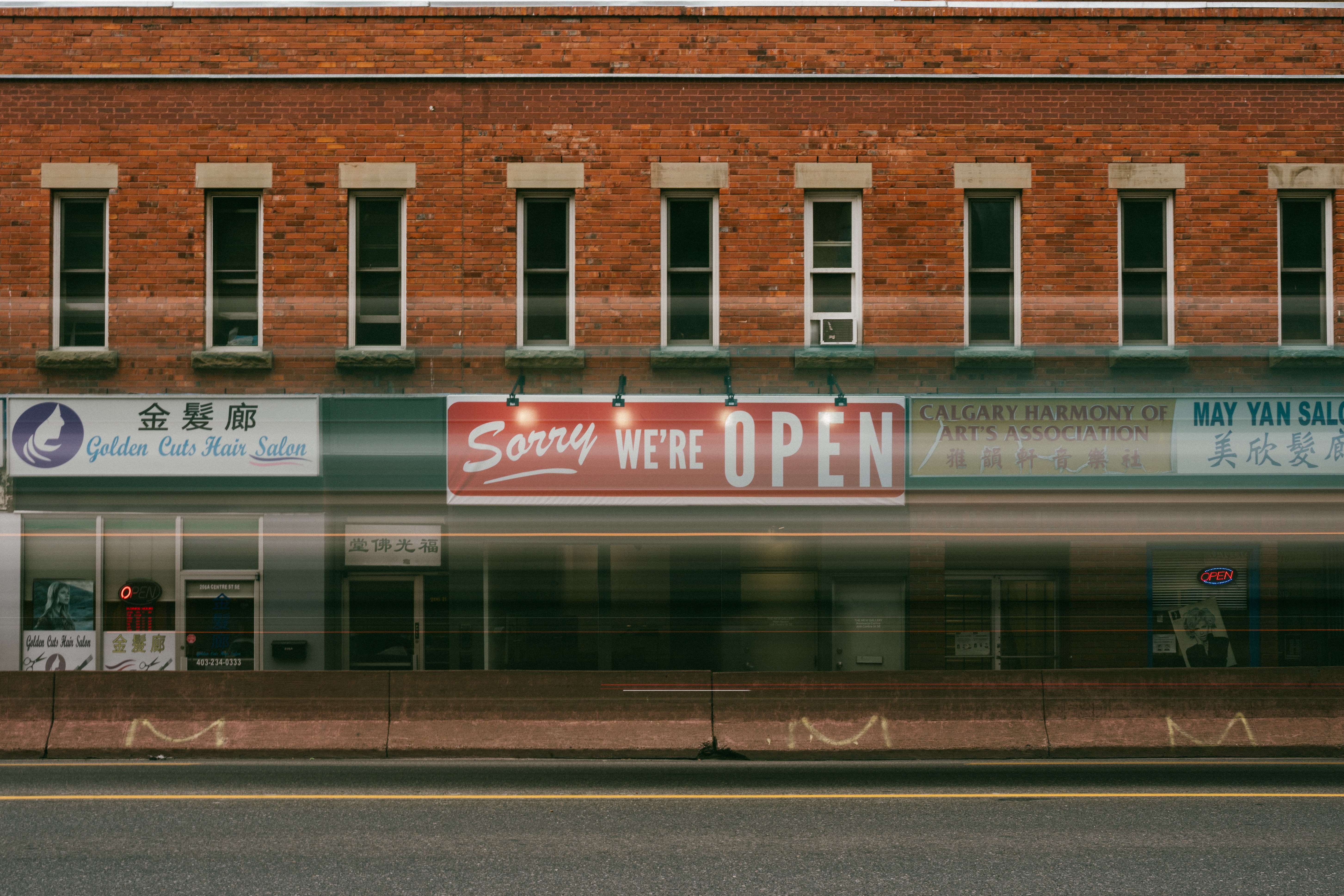
Sorry, We’re Open was developed with financial support from Libby Leshgold Gallery and first exhibited at Out of Bounds from July to August 2022.
中文翻译 Chinese Translation...
MAIN SPACE EXHIBITION/
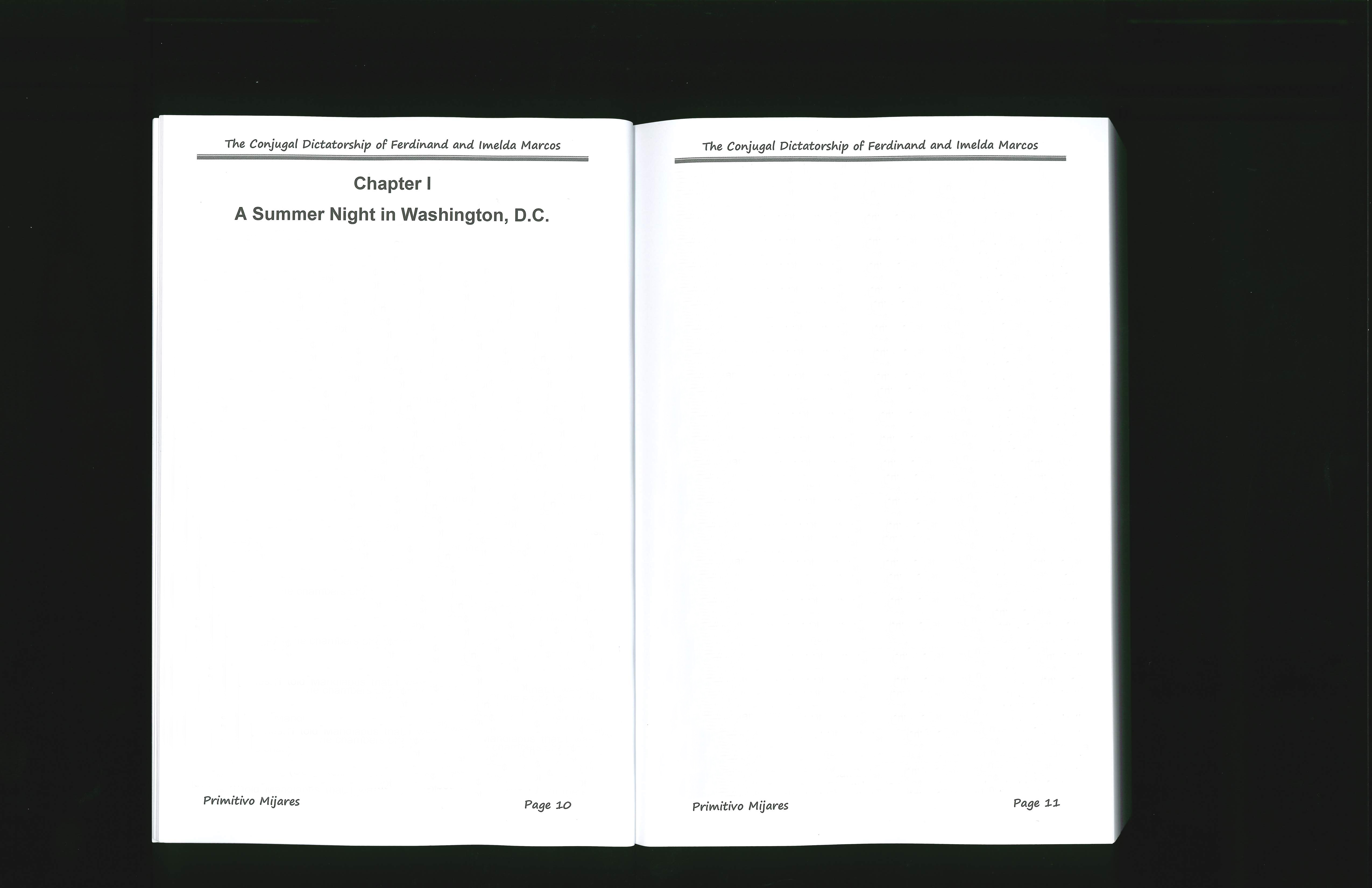
Cris Mora, Book Challenge, 2022. Image courtesy of the artist.
The New New Society: Ang Bagong Bagong Lipunan
Cris Mora
September 16 – October 29, 2022
Opening Reception: Friday, September 16th, 2022, 7PM - 9PM
Canada has long been a site of migration for Filipinos. You will find Filipinos working across the country in every industry. These Overseas Foreign Workers (OFWs) are separated from family for years while supporting dozens of people back in the Philippines. Their remittances account for nearly 10% of the GDP of the Philippine economy in 2019.
Sadly, OFWs are leaving for the same reasons today as the previous generations did decades earlier. Those that left during the Marcos dictatorship of the seventies and eighties have seen the cycle of corruption, poverty and state sponsored violence repeat itself through successive administrations. The process has come full circle with the election of Ferdinand “Bong Bong” Marcos Jr., the son of the late dictator, as the 17th President of the Philippines in 2022. Thirty-six years after his father was ousted from power, the younger Marcos threatens to correct the wrongs of the history books that “are teaching the children lies.”
This exhibition is an exploration of the fragility of history and the dangers that come when it is made malleable. Through video, photography and installation, Mora investigates how the situation got to this point and what it may mean for the future of the Philippines, as well as the impact on those who have been forced to leave.
Sadly, OFWs are leaving for the same reasons today as the previous generations did decades earlier. Those that left during the Marcos dictatorship of the seventies and eighties have seen the cycle of corruption, poverty and state sponsored violence repeat itself through successive administrations. The process has come full circle with the election of Ferdinand “Bong Bong” Marcos Jr., the son of the late dictator, as the 17th President of the Philippines in 2022. Thirty-six years after his father was ousted from power, the younger Marcos threatens to correct the wrongs of the history books that “are teaching the children lies.”
This exhibition is an exploration of the fragility of history and the dangers that come when it is made malleable. Through video, photography and installation, Mora investigates how the situation got to this point and what it may mean for the future of the Philippines, as well as the impact on those who have been forced to leave.
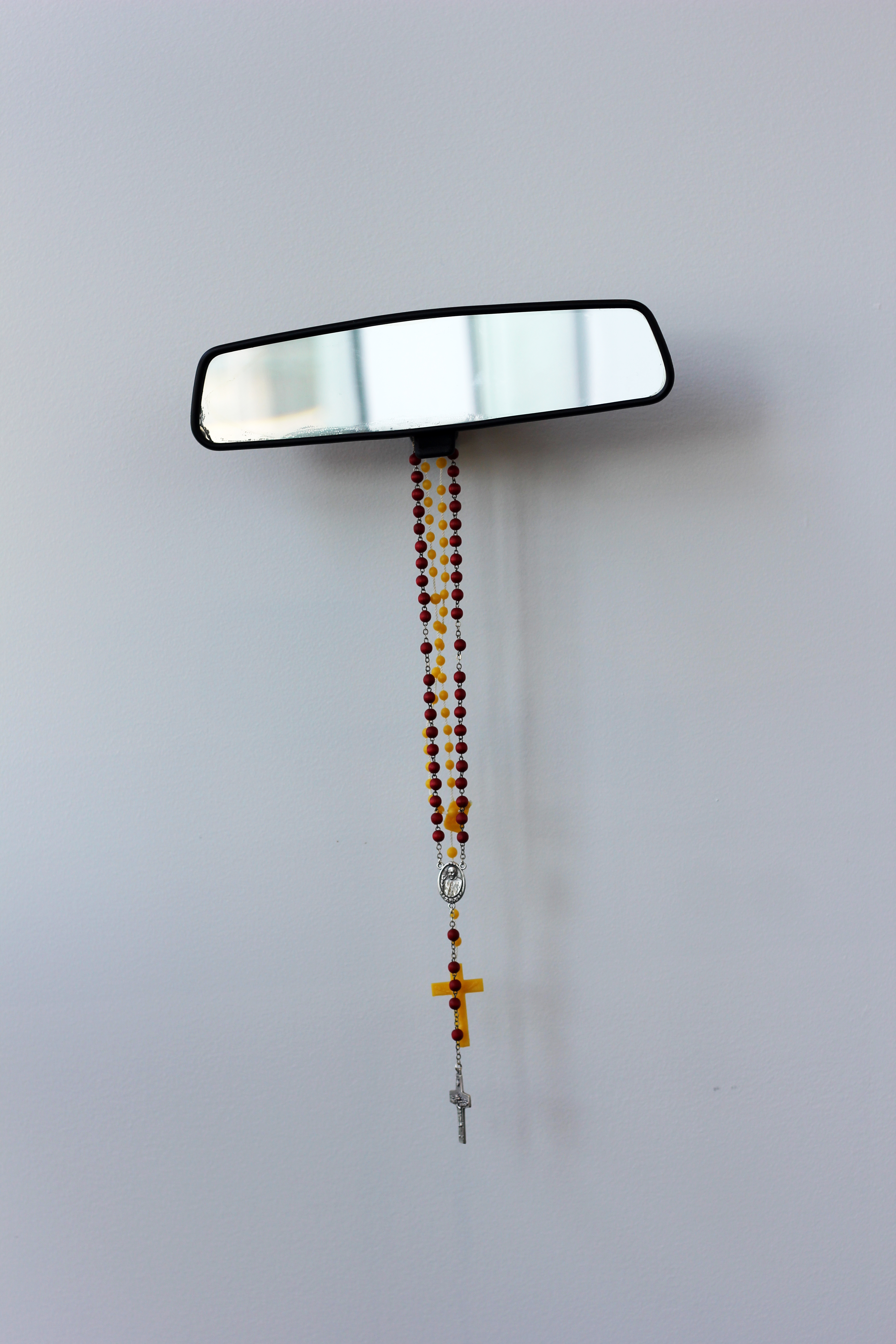
Cris Mora, Mirror Check (detail), 2022. Image courtesy of the artist.

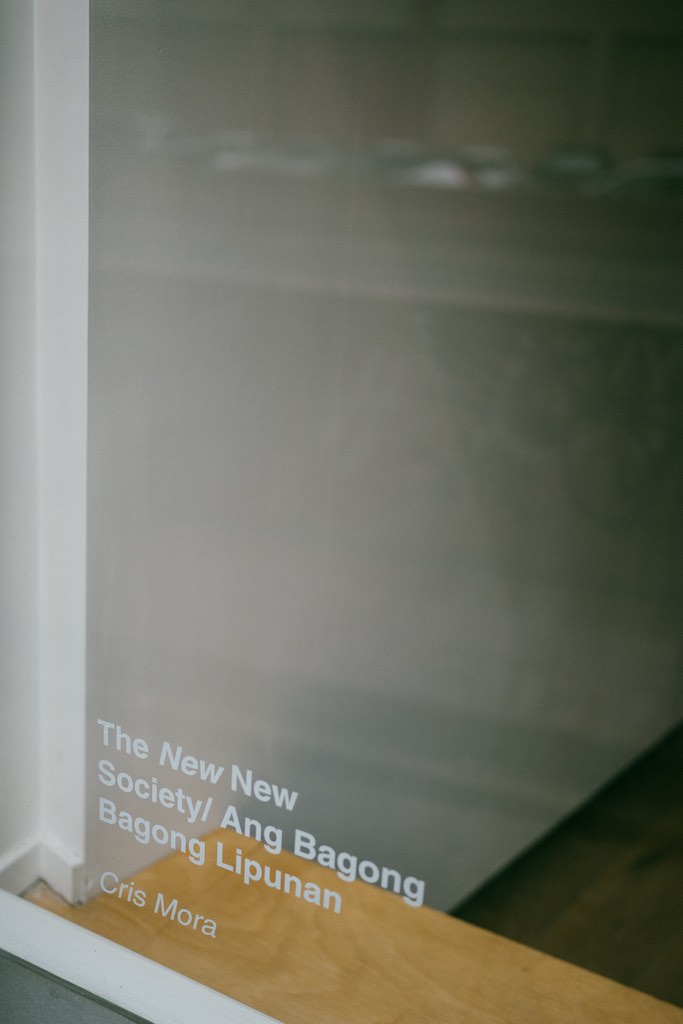
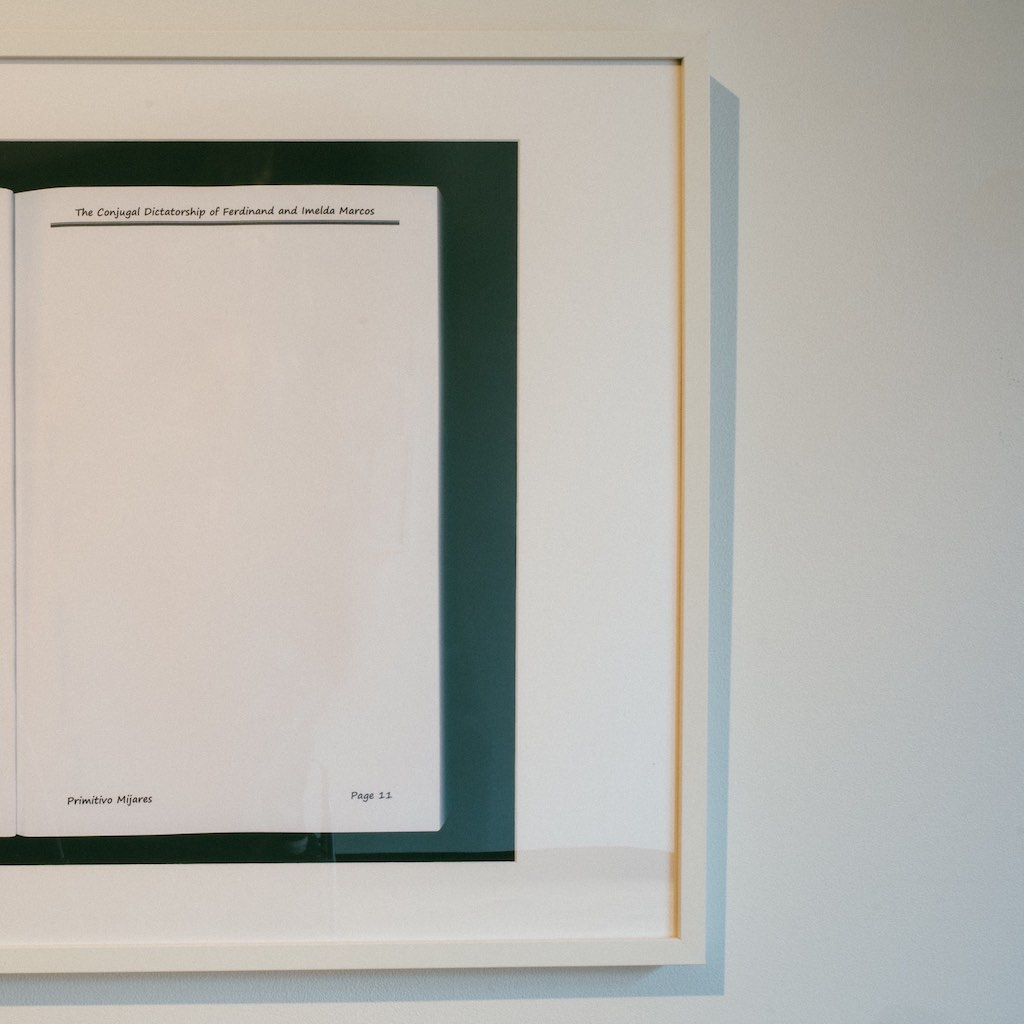
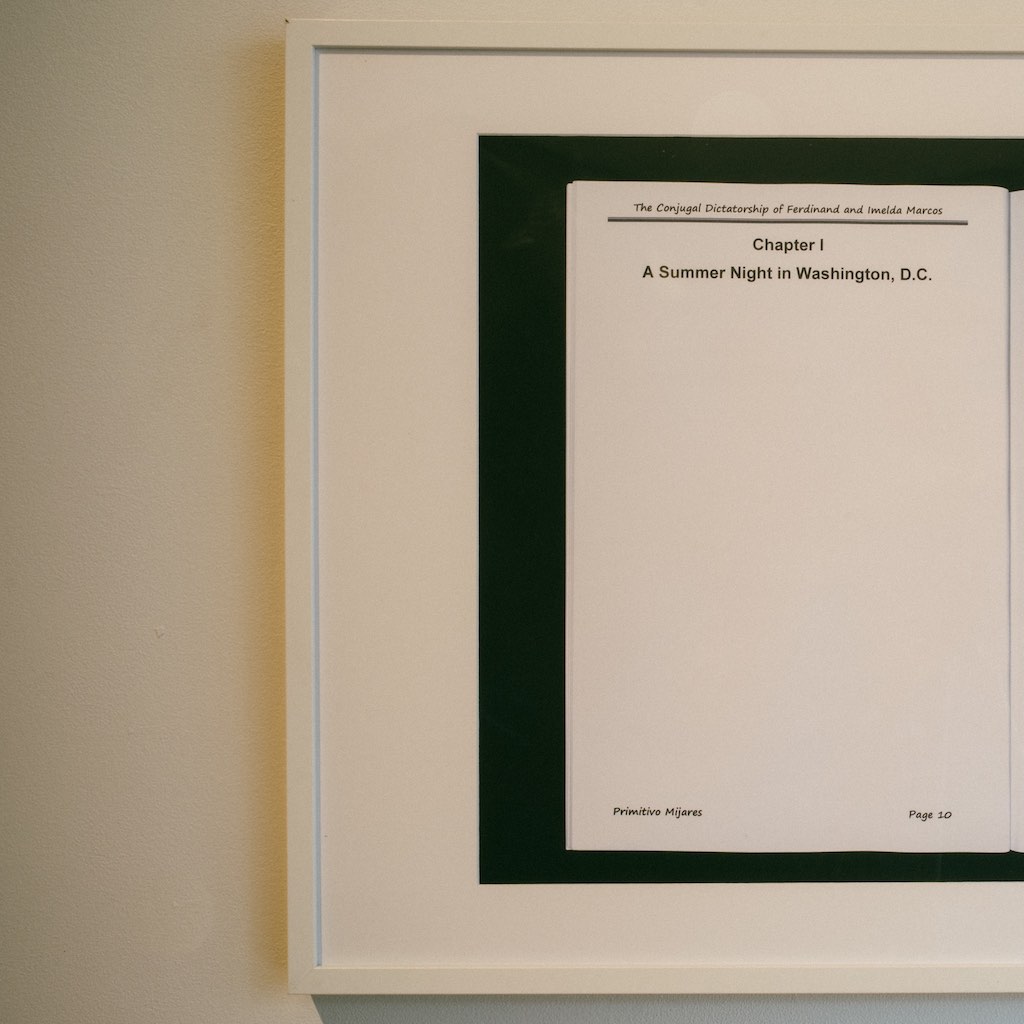

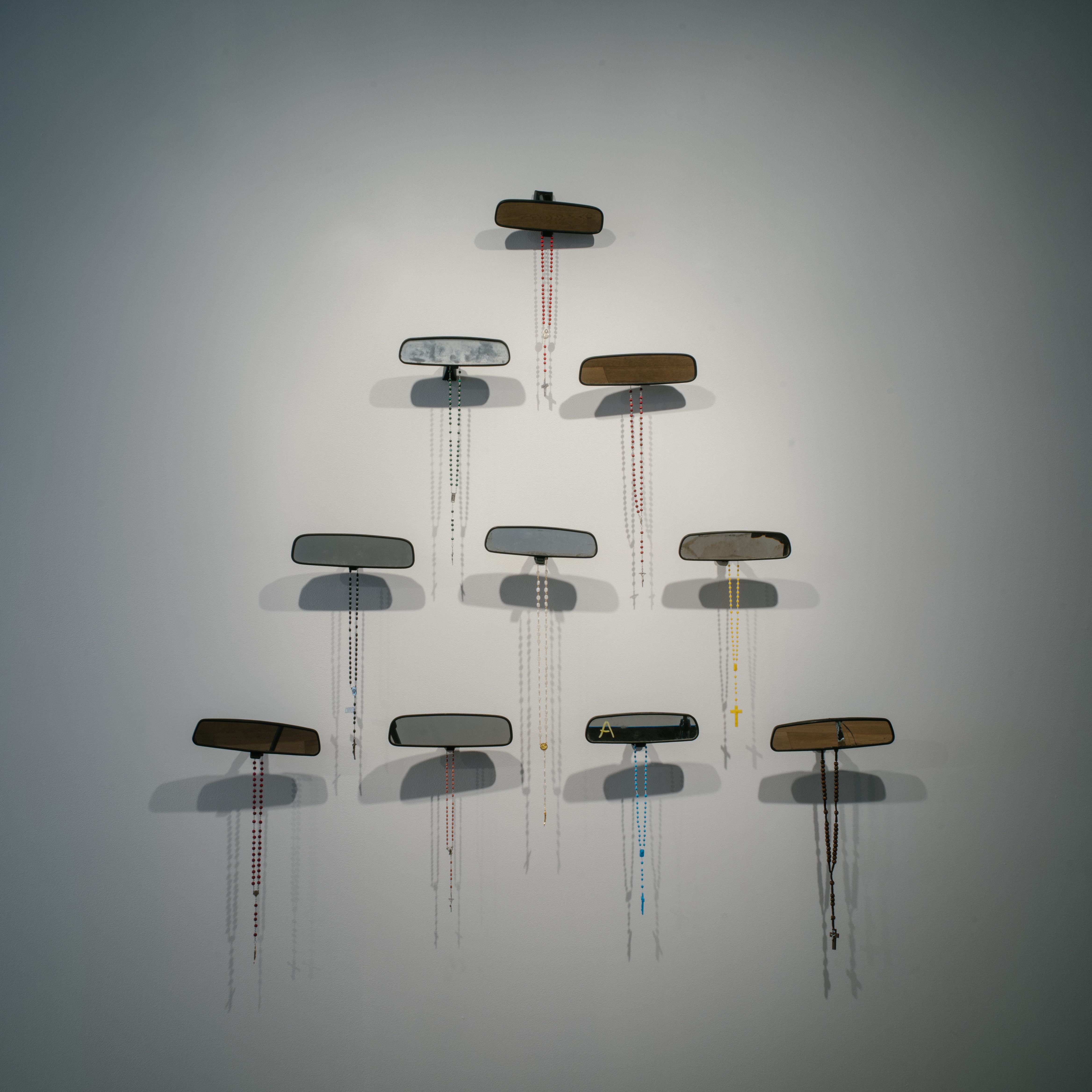

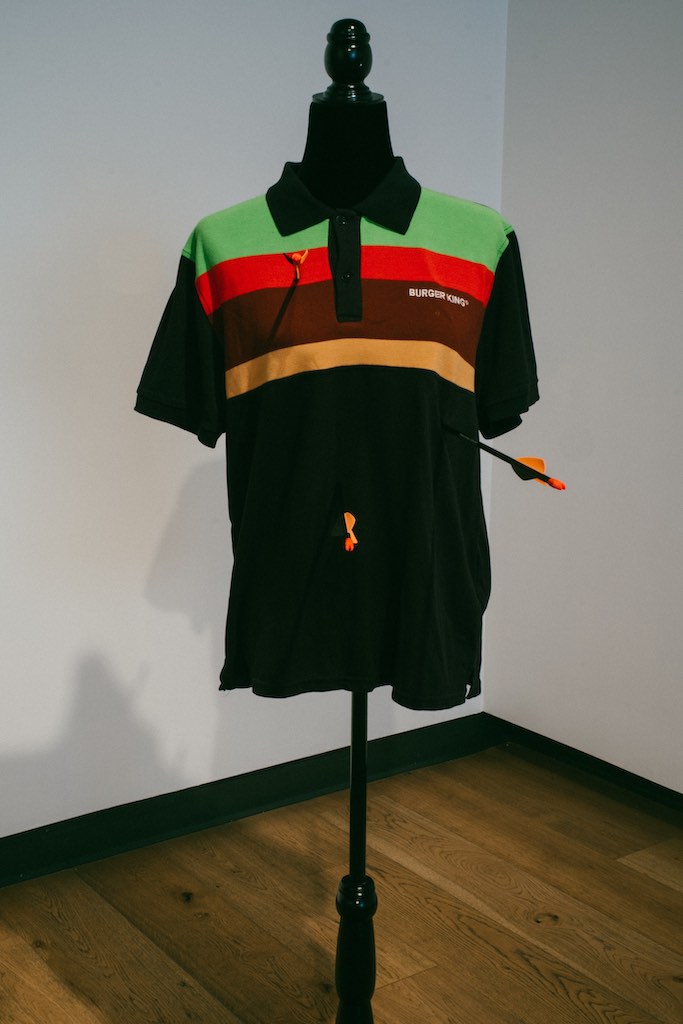
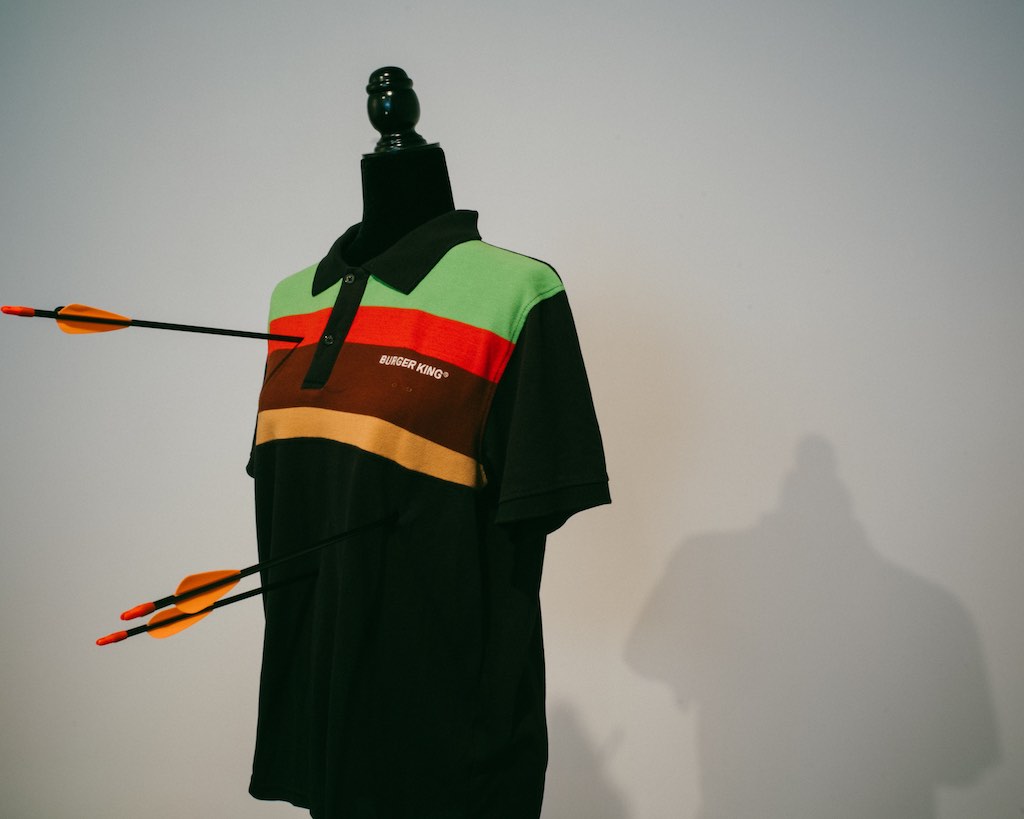
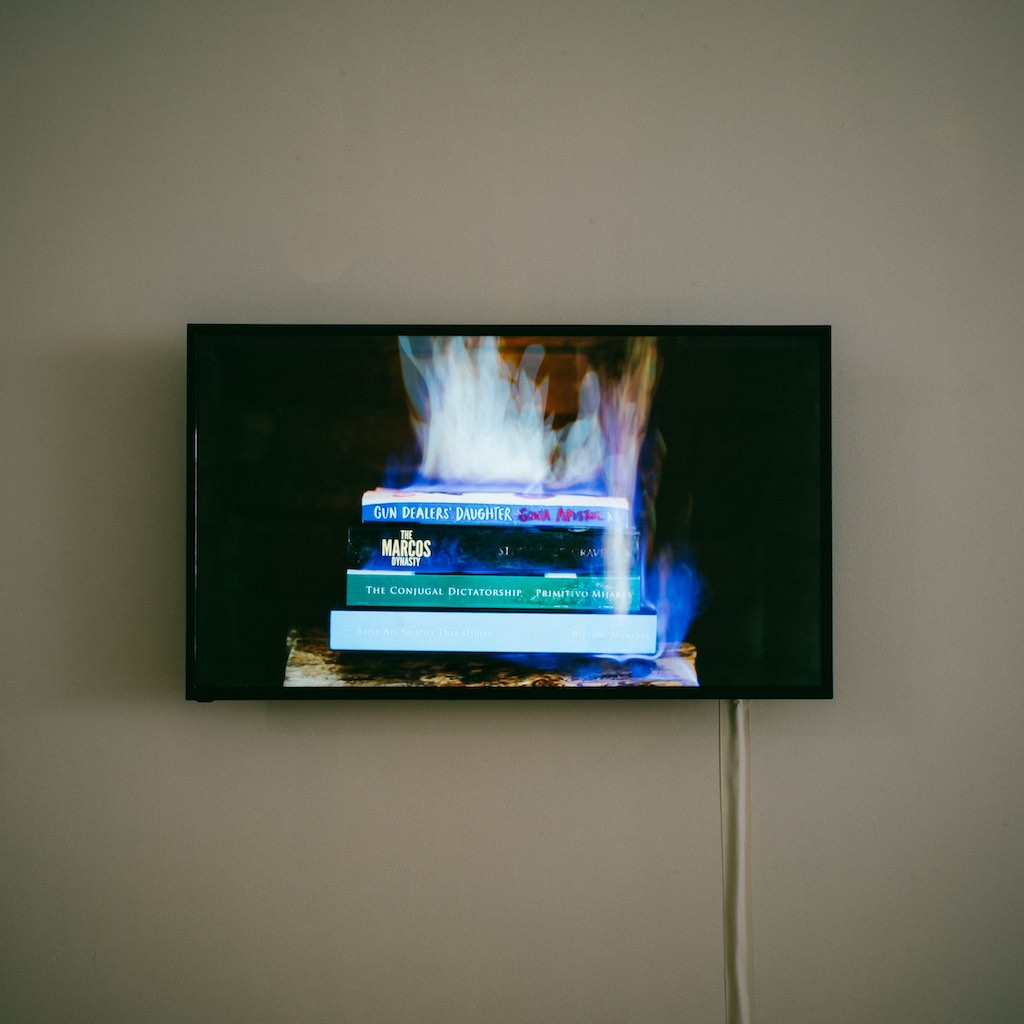
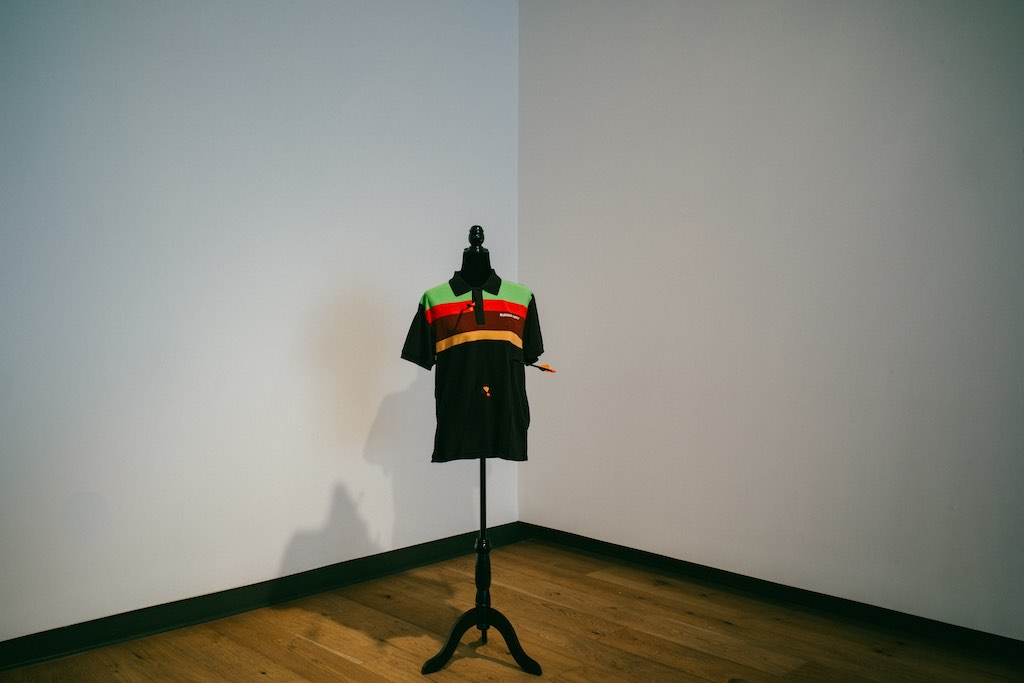
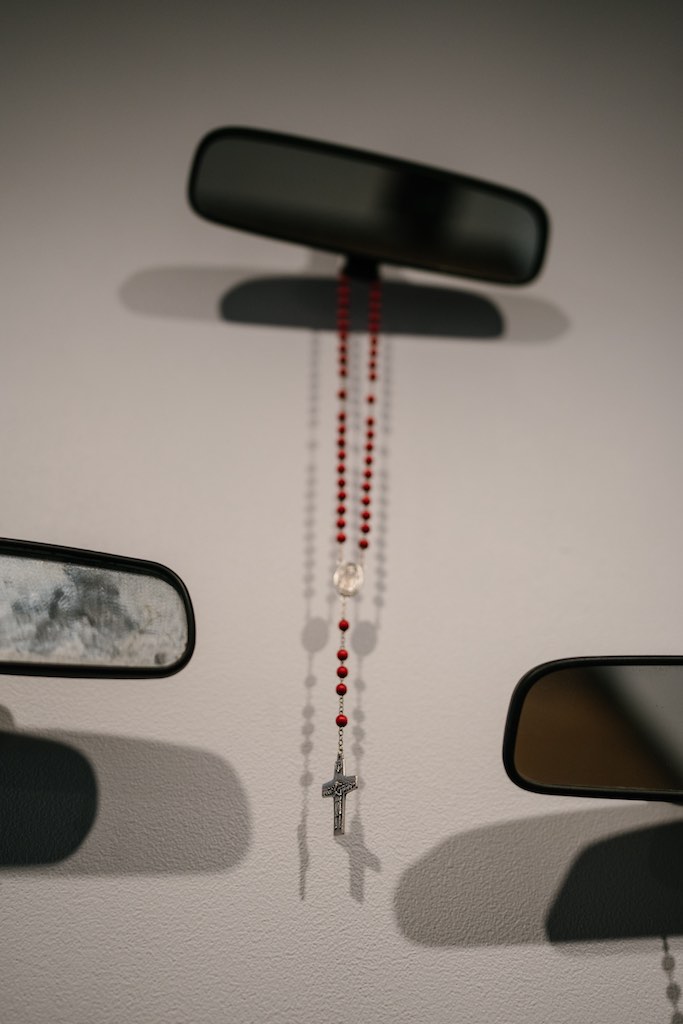
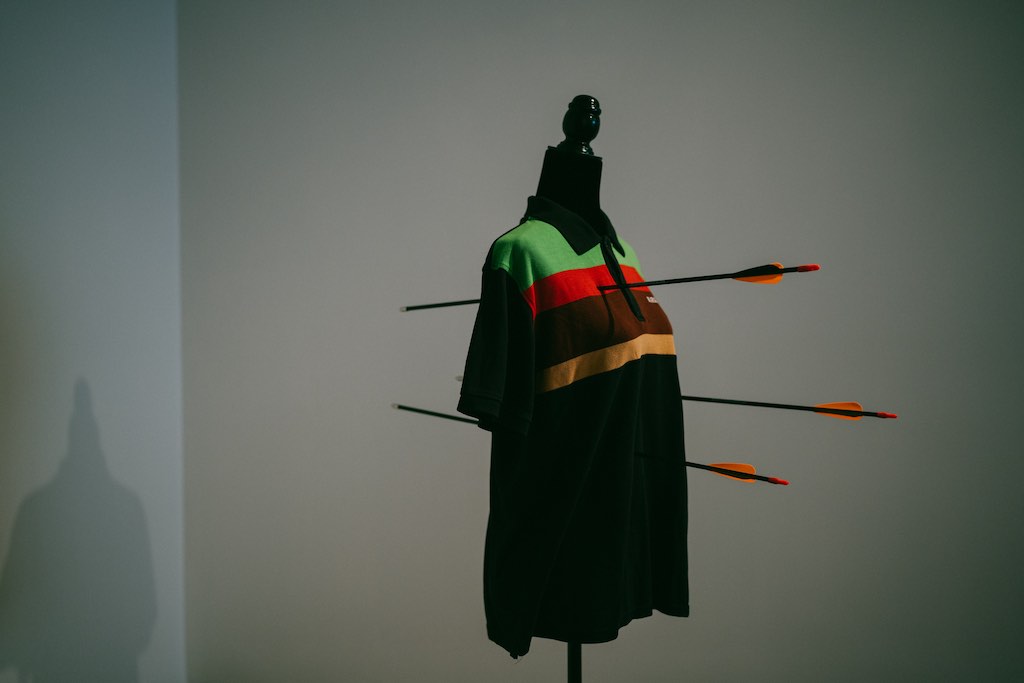
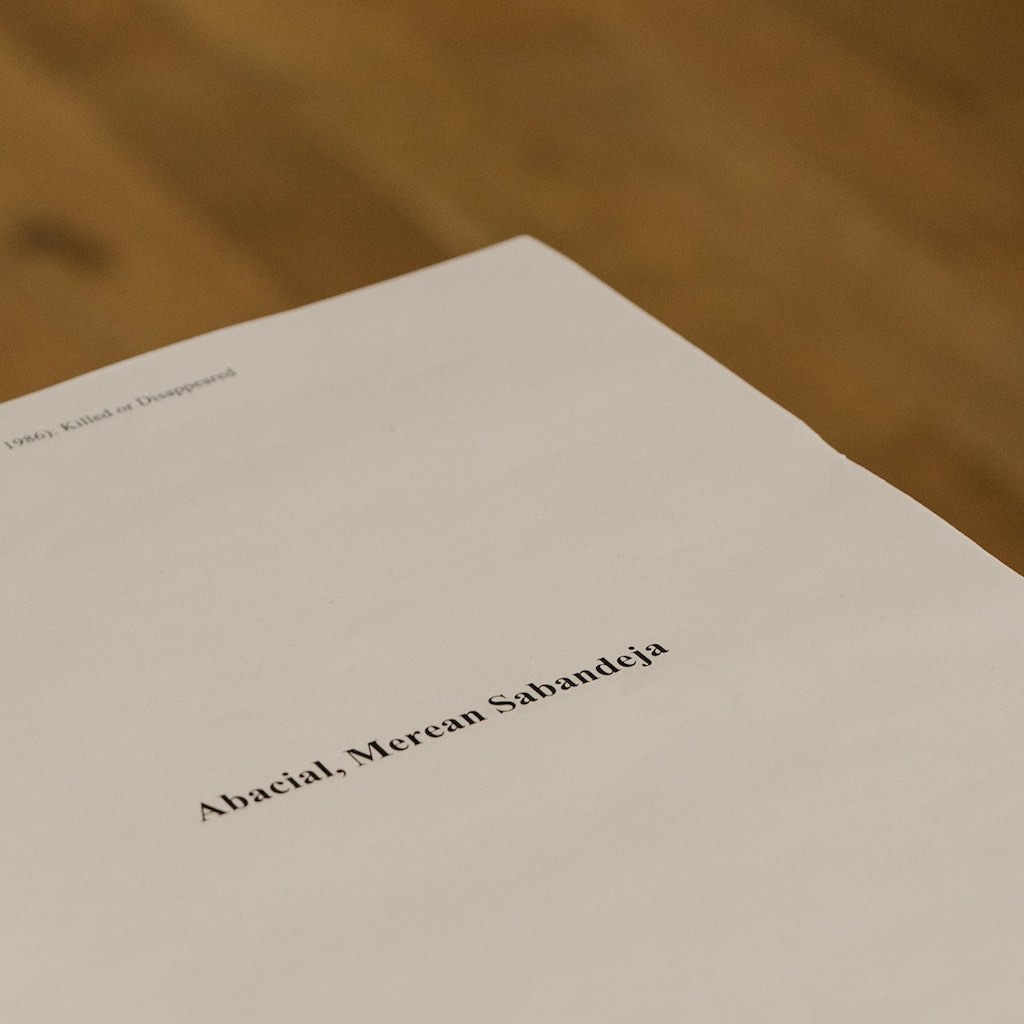
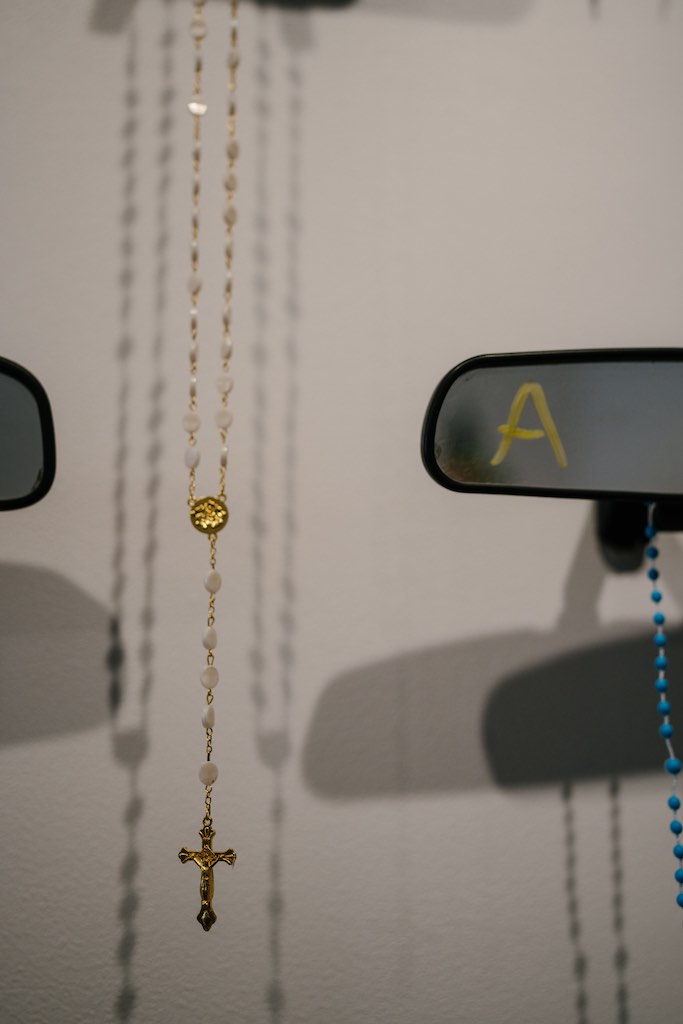
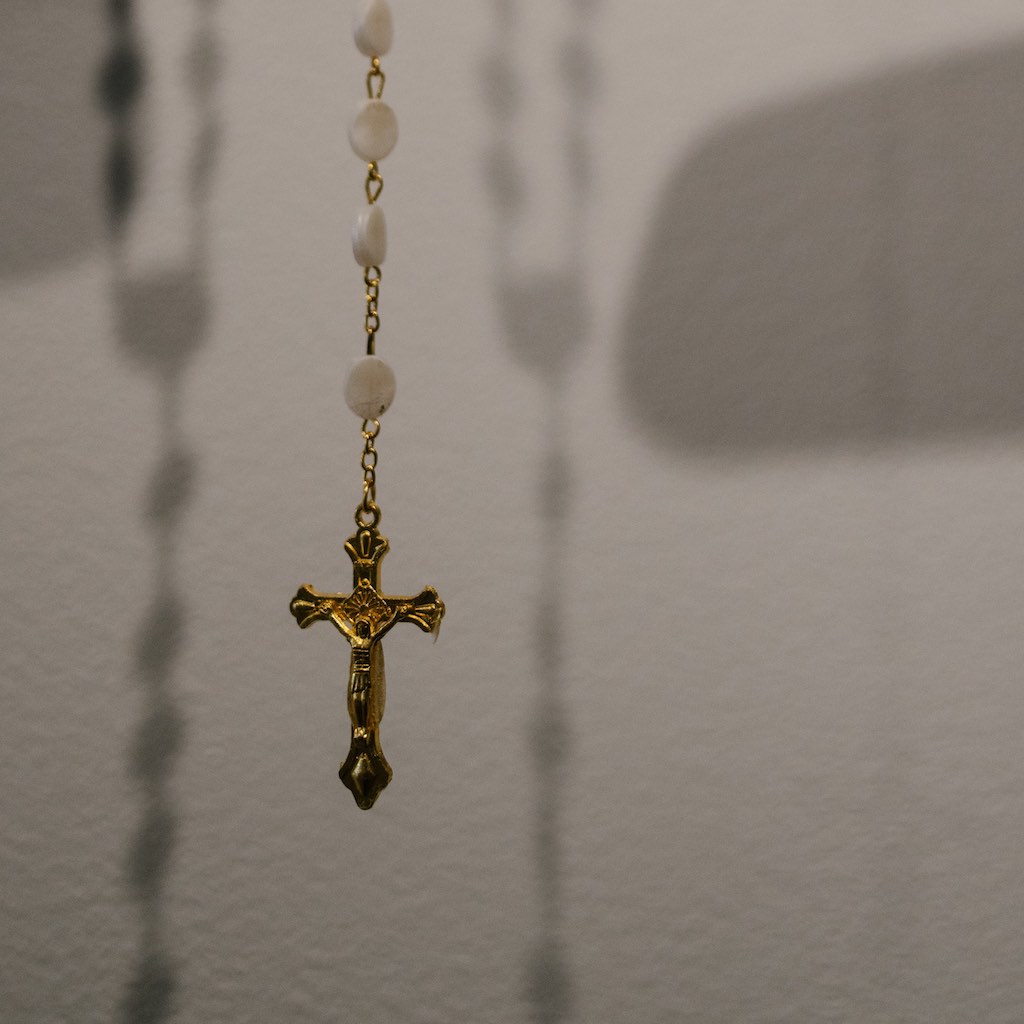

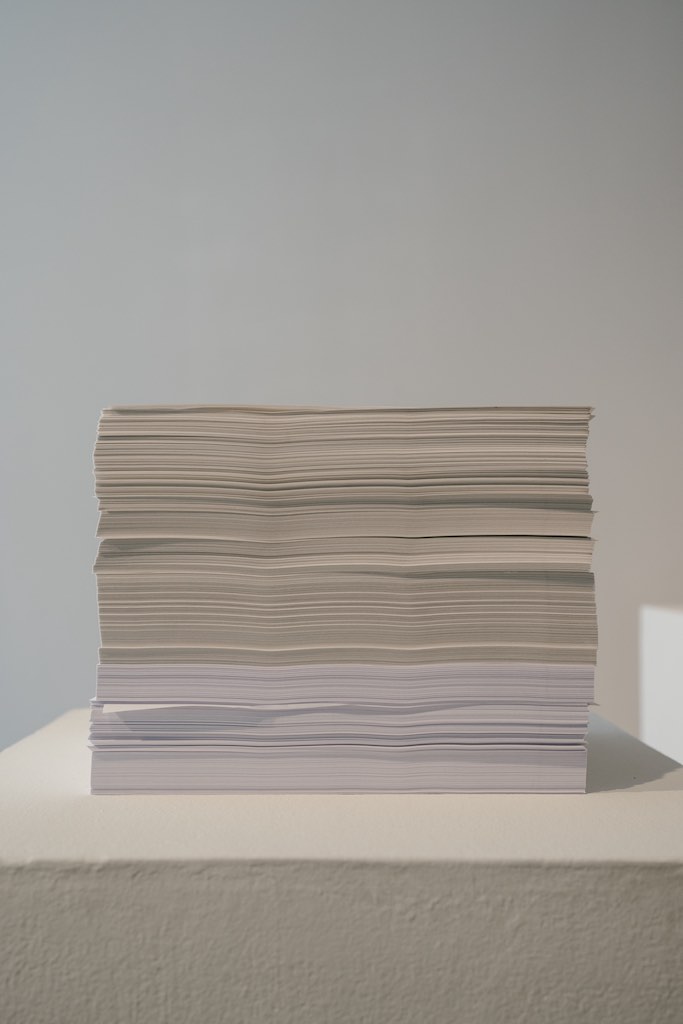
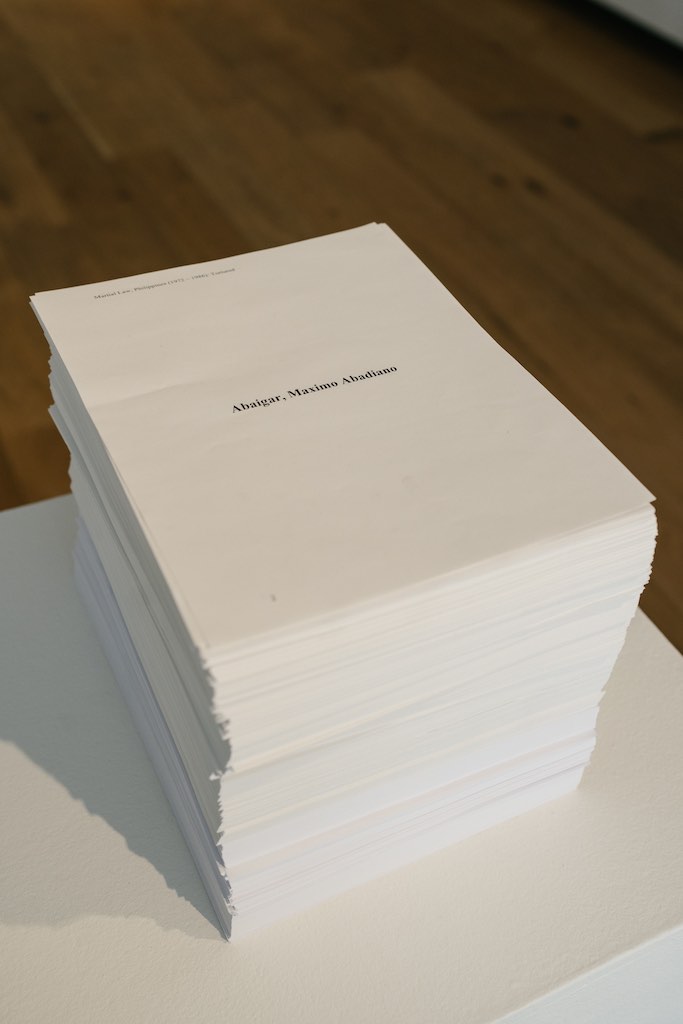
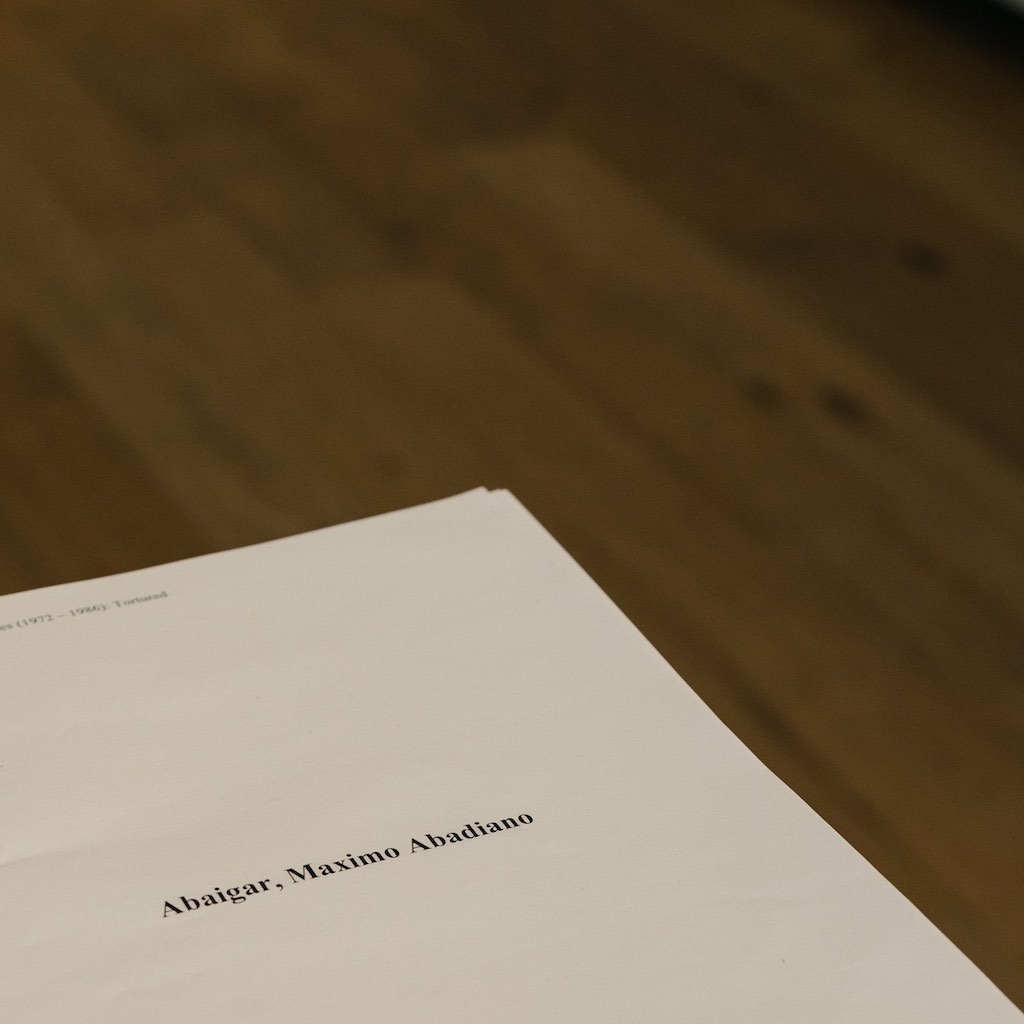
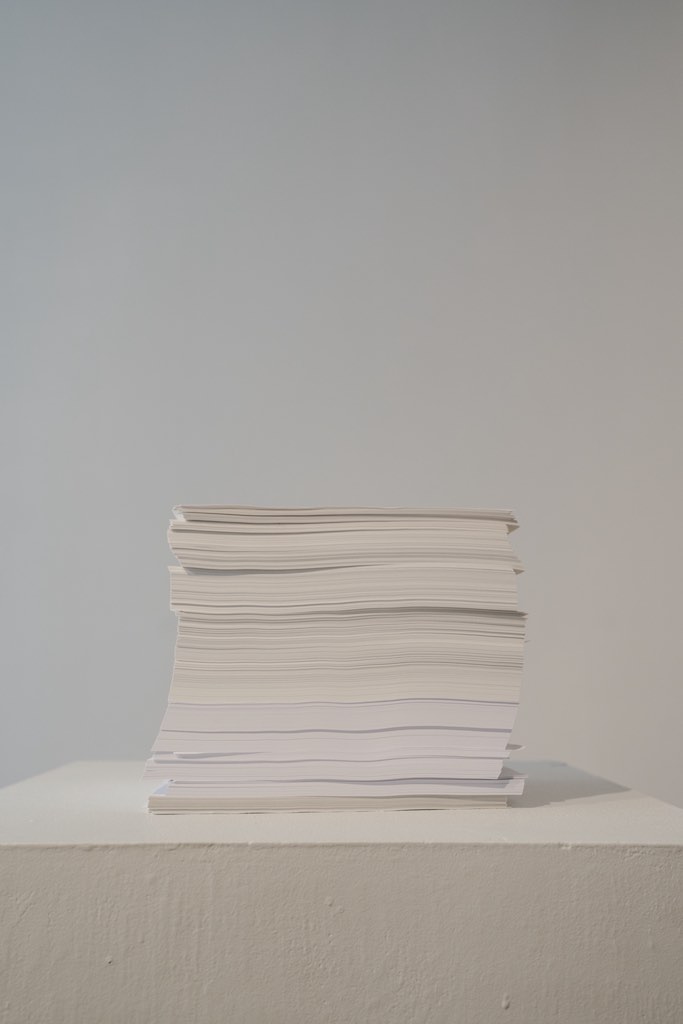
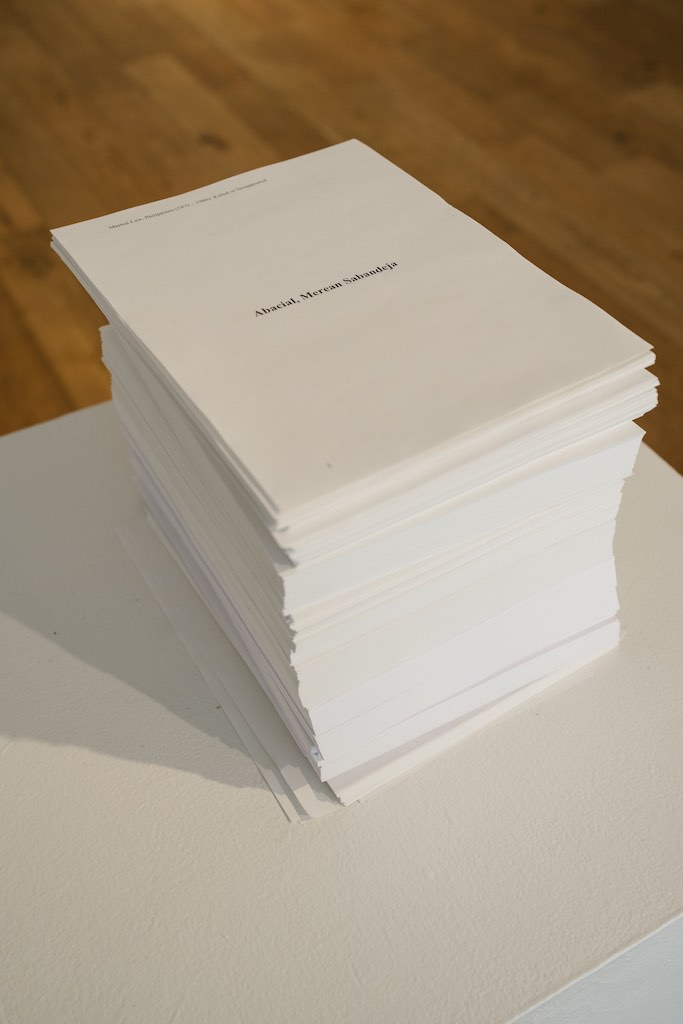
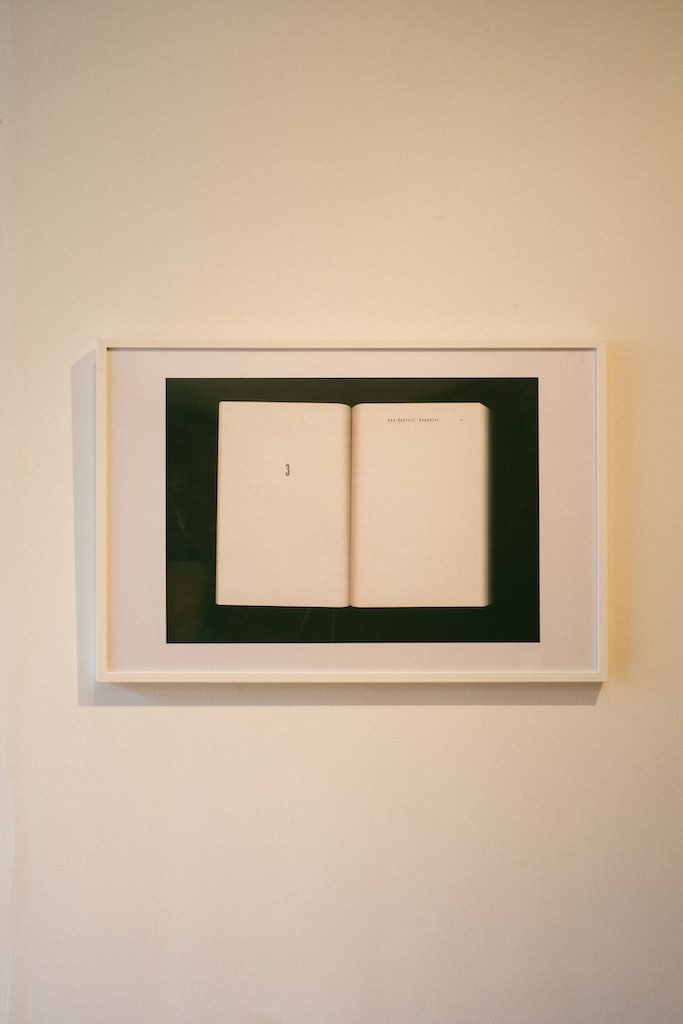
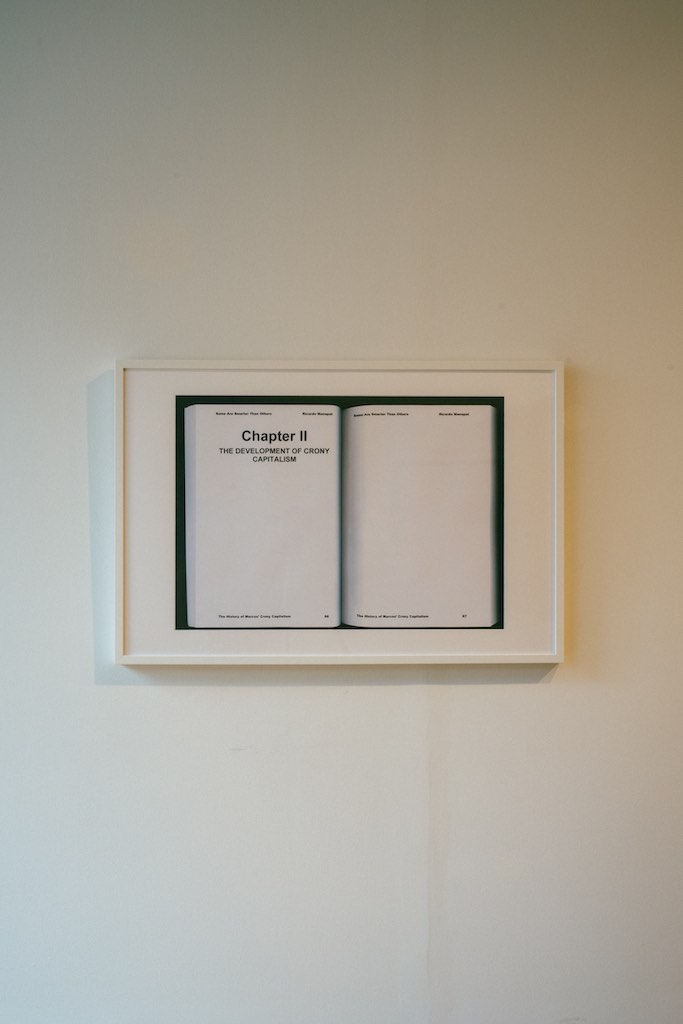
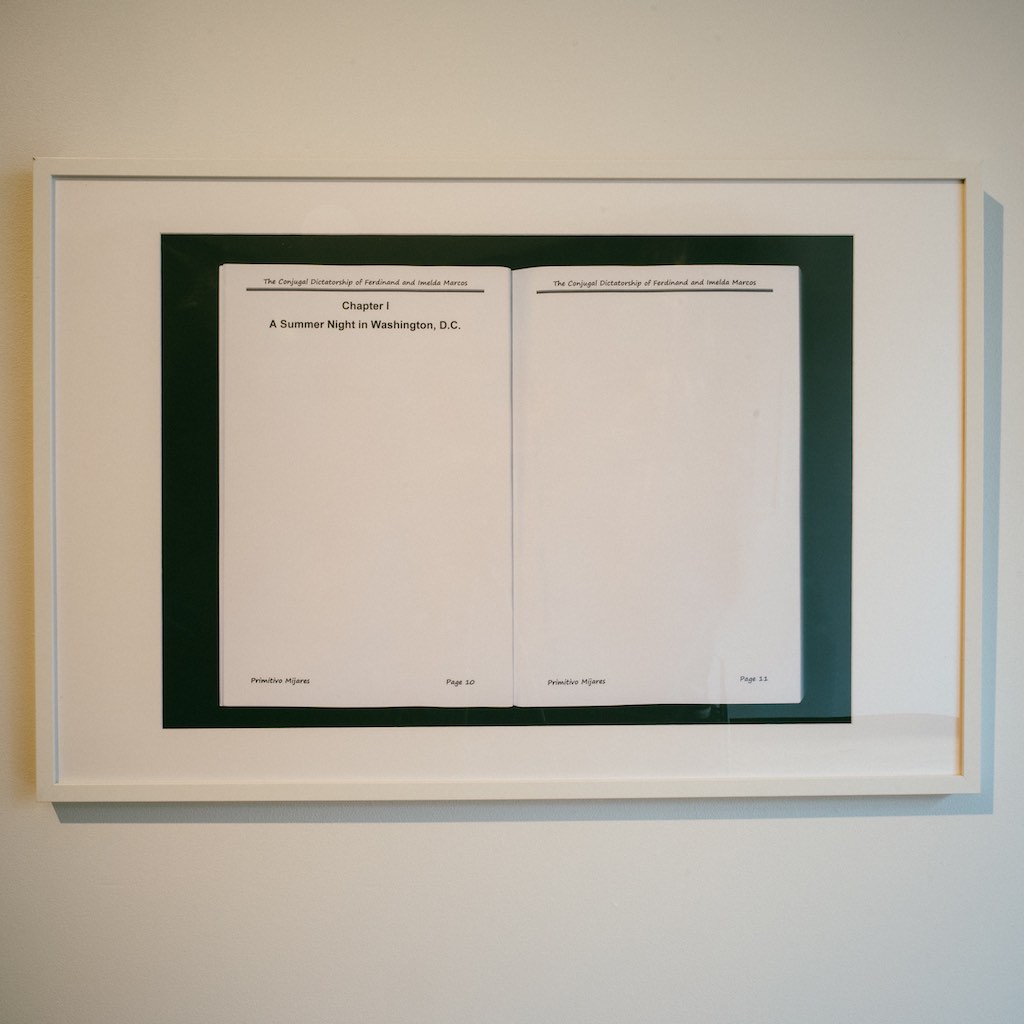

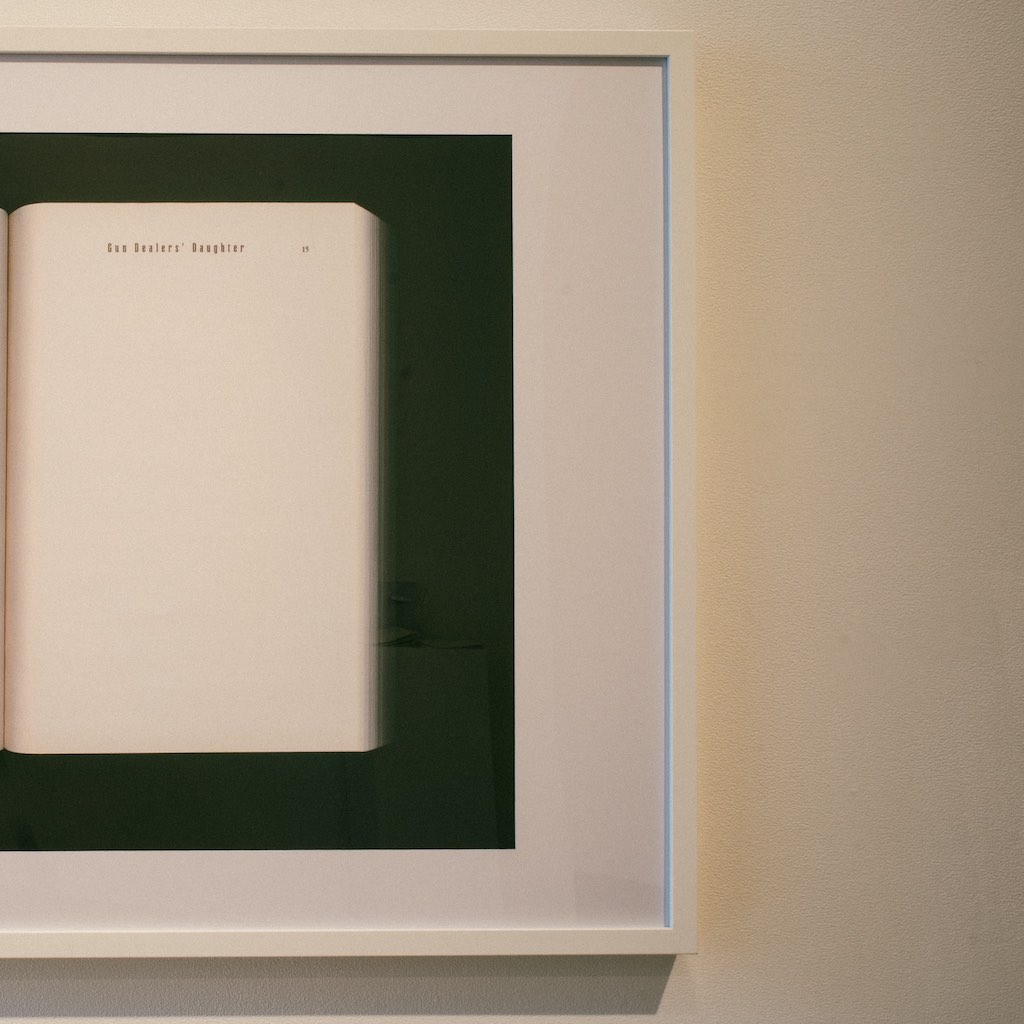
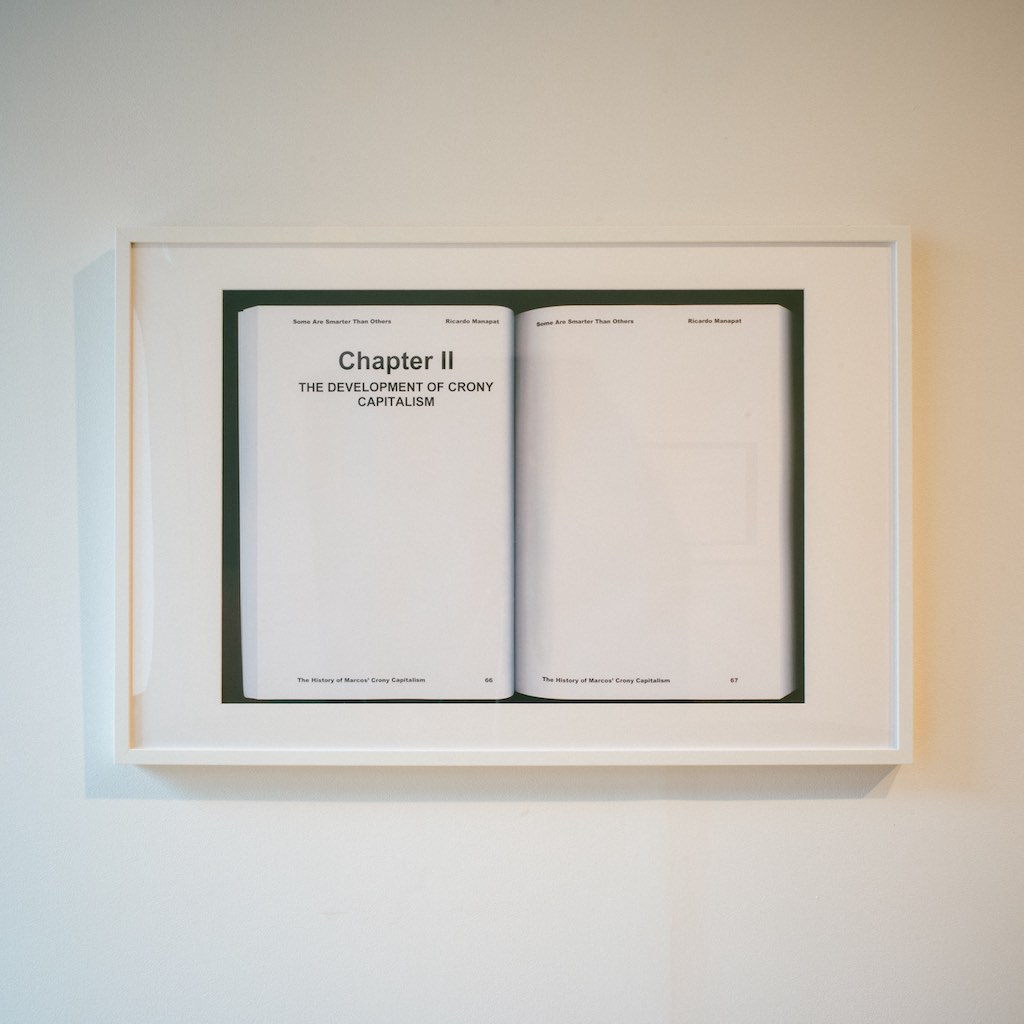

Documentation by Danny Luong
Ang Bagong Bagong Lipunan
(The New New Society)
Exhibition Essay by Marc Chavez
(The New New Society)
Exhibition Essay by Marc Chavez
The Nigerian novelist Chimamanda Ngozi Adichie spoke about “the danger of a single story” and the power to tell that story, to make it the definitive story of a people or country. There is no single story about the Philippines – no one story about the Marcos dictatorship or martial law. Instead, there are many stories that have been told and many that have been erased.
In Ang Bagong Bagong Lipunan (The New New Society), Cris Mora looks at how these stories are told, rewritten, forgotten, or discarded. Mora’s art and practice has been one of observation; an investigation of history uncovering the scale of power structures that underpin political, economic, and social issues in the Philippines. He conducts a census of who and what has been forgotten and we are given the role of historian and witness, navigating both the loss and preservation of collective memory.
The Marcos dictatorship and martial law were monumental events in Philippine history, a period that changed many lives. It shaped the futures of ordinary people, families, activists, journalists, and artists, and our responsibility today is to remember these stories refracted through the lens of history.
Maniwala (Belief)
In light of the “resurrection of the country’s most divisive political dynasty,” Mora’s exhibition explores the malleability and fragility of historical narrative by acts of censorship and disinformation. Through five new art works, Mora looks at the erasure and revision of history by those in power and the impact it has had on the Philippines. By asking us to confront those attempting to rewrite Filipino history, Mora challenges us to take our power back, to put into action our unwavering belief in the future of the Philippines as a democratic country and to tell a new story.
In Ang Bagong Bagong Lipunan (The New New Society), Cris Mora looks at how these stories are told, rewritten, forgotten, or discarded. Mora’s art and practice has been one of observation; an investigation of history uncovering the scale of power structures that underpin political, economic, and social issues in the Philippines. He conducts a census of who and what has been forgotten and we are given the role of historian and witness, navigating both the loss and preservation of collective memory.
The Marcos dictatorship and martial law were monumental events in Philippine history, a period that changed many lives. It shaped the futures of ordinary people, families, activists, journalists, and artists, and our responsibility today is to remember these stories refracted through the lens of history.
Maniwala (Belief)
In light of the “resurrection of the country’s most divisive political dynasty,” Mora’s exhibition explores the malleability and fragility of historical narrative by acts of censorship and disinformation. Through five new art works, Mora looks at the erasure and revision of history by those in power and the impact it has had on the Philippines. By asking us to confront those attempting to rewrite Filipino history, Mora challenges us to take our power back, to put into action our unwavering belief in the future of the Philippines as a democratic country and to tell a new story.
The New Society
Now in 2022, disillusioned by the failure of successive administrations to tackle the legacies of the Marcos dictatorship like rampant poverty and political corruption, Ferdinand “Bong Bong” Marcos Jr., the son of the late dictator, has been elected with a majority of votes as the 17th President of the Philippines.
In 1974, Ferdinand Marcos had a vision of a New Society in the Philippines, a “Bagong Lipunan,” where he would use the special powers given to him under martial law to usher in an era of reforms for the country.
One such reform was the 1974 Labor Code – the Marcos administration institutionalized cheap labor export creating measures that facilitated Overseas Filipino Workers (OFW). Today you will find Filipinos working in every industry in countries like Canada, the United States, and Great Britain. Whether they leave as OFWs or as immigrants, the desire to leave the Philippines is driven by the notion that better opportunities only exist outside of the country. Mora’s own parents left for Canada in 1989 in search of a more secure future. Separated from their families for years, the Filipino diaspora supports millions of people back in the Philippines. Their remittances accounted for nearly 10 percent of the GDP of the Philippine economy in 2019. In 2021, the Bangko Sentral ng Pilipinas showed that cash remittances rose to $31 billion. This export of labor was a solution meant to improve the country’s employment and economic prospects, but in reality the unsustainable policy robs the Philippines’ of one of its most valuable resources – its people.
There are claims that Marcos’ administration was a so-called “Golden Age” for the Philippines, however data examined by the Martial Law Museum tells a different story. The realities of martial law not only saw increased poverty, decreasing wages, deforestation, and massive international debt, but it also meant silencing the free press, imprisonment of political adversaries, and suspension of the democratic process.
One such reform was the 1974 Labor Code – the Marcos administration institutionalized cheap labor export creating measures that facilitated Overseas Filipino Workers (OFW). Today you will find Filipinos working in every industry in countries like Canada, the United States, and Great Britain. Whether they leave as OFWs or as immigrants, the desire to leave the Philippines is driven by the notion that better opportunities only exist outside of the country. Mora’s own parents left for Canada in 1989 in search of a more secure future. Separated from their families for years, the Filipino diaspora supports millions of people back in the Philippines. Their remittances accounted for nearly 10 percent of the GDP of the Philippine economy in 2019. In 2021, the Bangko Sentral ng Pilipinas showed that cash remittances rose to $31 billion. This export of labor was a solution meant to improve the country’s employment and economic prospects, but in reality the unsustainable policy robs the Philippines’ of one of its most valuable resources – its people.
There are claims that Marcos’ administration was a so-called “Golden Age” for the Philippines, however data examined by the Martial Law Museum tells a different story. The realities of martial law not only saw increased poverty, decreasing wages, deforestation, and massive international debt, but it also meant silencing the free press, imprisonment of political adversaries, and suspension of the democratic process.
Now in 2022, disillusioned by the failure of successive administrations to tackle the legacies of the Marcos dictatorship like rampant poverty and political corruption, Ferdinand “Bong Bong” Marcos Jr., the son of the late dictator, has been elected with a majority of votes as the 17th President of the Philippines.
[1] https://www.ted.com/talks/chimamanda_ngozi_adichie_the_danger_of_a_single_story
[2] https://martiallawmuseum.ph/magaral/martial-law-in-data/
Bio /
Cris Mora is a Filipino-Canadian artist and cultural worker. He was born in Manila in 1984 and moved to Toronto at the age of four. Mora studied Visual Art and Economics at the University of Western Ontario in Canada. He works across disciplines and media to explore the relationship between politics, migration and identity. In addition to his art practice, Mora is also an experienced cultural worker. He has worked as an arts administrator in North America, Europe and Asia. He is currently the Public Art Coordinator at the City of Surrey, BC. Mora has exhibited in Canada, Singapore and the Philippines.
中文翻译 Chinese Translation...
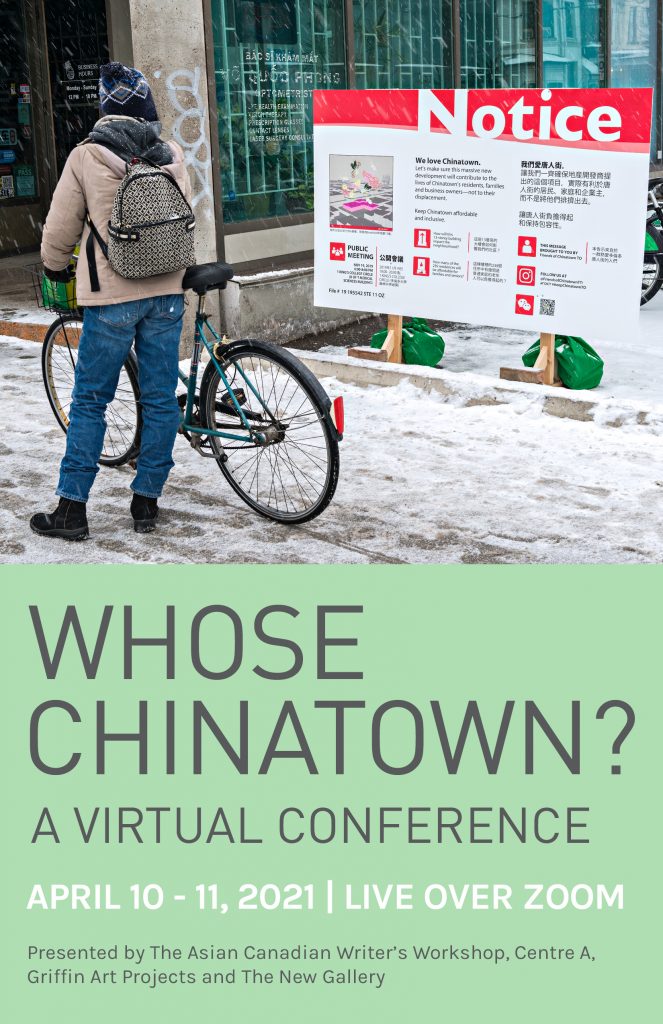
Morris Lum, documentation of Friends of Chinatown Toronto’s development sign
Whose Chinatown?
A Virtual Conference
APRIL 10 – 11, 2021 | LIVE OVER ZOOM
REGISTER ONLINE TODAY:
DAY 1: http://bit.ly/2NK2vch
DAY 2: http://bit.ly/3pxCsDj
Download the virtual conference brochure here.
Whose Chinatown: A virtual conference brings together a weekend of collaborative panels and talks facilitated live over zoom, brought to you by Griffin Art Projects, Centre A, The New Gallery and the Asian Canadian Writer’s Workshop with collaborative support from Tea Base, aiya哎呀 and Youth Collaborative for Chinatown. Join us for a weekend of conversation, connection, and solidarity as we celebrate Chinatowns across the country and engage with topics that range from cultural heritage and revitalization to gentrification, economy and the changes that have swept across Canada’s Chinatowns due to development and population, prior to and post-COVID.
SATURDAY APRIL 10, 2021
2-3 PM MST | NICE TO MEET YOU
Join us as we kick off our virtual weekend with a warm welcome and introductory remarks from the team! Join Griffin Art Projects’ Director Lisa Baldissera and guest curator Karen Tam, The New Gallery’s Director Su Ying Strang, Centre A’s Interim Executive Director and Curator, Henry Heng Lu and the Asian Canadian Writers Workshop’s Executive Director Allan Cho, to learn more about the vibrant institutions they lead and their hopes and goals for this virtual weekend together.
3:15 – 4:45 PM MST | ARTIST TALK: WILL KWAN
Centre A’s curator and Interim Executive Director Henry Heng Lu will be in conversation with Toronto-based artist Will Kwan about his exhibition Exclusion Acts at Centre A. This exhibition brings together a number of new photo, text, and media-based works that take an unflinching look at the systemic and absurd ways that economic ideology shapes social relations and beliefs. The works examine a range of conditions, from the racialization of low wage and precarious labour, to the financialization of housing by private equity, to the fanatical neoliberal rhetoric used to support the supremacy of the economy. Seen in the context of the coronavirus pandemic, the works in the exhibition portray not an inflection point, but systems and minds trapped in a recursive state—inertia, entrenchment, business as usual. This virtual conversation will discuss different manifestations of inequality explored in the exhibition.
Presented by Centre A: Vancouver International Centre for Contemporary Asian Art
5 – 6:30 PM MST | VANCOUVER’S CHINATOWN: THEN & NOW
CINDY CHAN PIPER | ELWIN XIE | SID TAN | WINNIE CHEUNG
The artist and poet Jim Wong-Chu once remarked that Chinatown is all in our imaginations, for each generation who has lived or interacted there remembered it differently or had different experiences according to their place in time. What first began as a ghettoized space by colonialists used to contain and segregate a predominantly displaced Chinese male bachelor society from the rest of society, Vancouver’s Chinatown has hardened to survive major threats to its existence —race riots, the TransCanada highway, and gentrification— and has now become a contested space between real estate developers, small businesses, and those who reside there. As Chinatown is very much a cultural and historic relic of Canada, the city of Vancouver and the province of British Columbia have pushed to have Chinatown designated as a UNESCO World Heritage site, the future of Chinatown is uncertain in the midst of a global pandemic. Join us as our four speakers whose roots and history with Chinatown discuss and share their memories, experiences, and thoughts about the future of Vancouver Chinatown.
Presented by the Asian Canadian writers workshop
6:45 – 7:30 PM MST | CHAT & CHEWS
Join us as we raise a virtual glass in cheers of community, conviviality and great conversation! We’ll be capping off each day with an informal mingling session during which participants will have the opportunity to meet and chat about some of themes and ideas of the day. Zoom links for each mingling session will be sent upon registration.
SUNDAY APRIL 11, 2020
2 – 3:30 PM MST | VISIONS FOR CHINATOWN
AIYA 哎呀 | DORIS CHOW OF YOUTH COLLABORATIVE FOR CHINATOWN | FRIENDS OF CHINATOWN TORONTO | SU YING STRANG | LINDA ZHANG MODERATED BY HENRY TSANG
Join us for a panel that addresses the changes that have swept across Chinatowns throughout Canada and beyond due to gentrification, development, and population, prior to and post-COVID. Panelists will consider the anti-racism that has surged during the pandemic, and what can and should be done about it. This panel is planned on the occasion of the presentation of Whose Chinatown? Examining Chinatown Gazes in Art, Archives, and Collections from January 9 – May 2, 2021, a vibrant exhibition curated by Karen Tam that brings together an art history of Chinatowns and their communities by historical and contemporary Canadian artists.
Presented by griffin art projects
3:45 – 5:15 PM MST | WOVEN THREADS: CONVERSATIONS ABOUT CONNECTING AND COMMUNITY IN CALGARY CHINATOWN
TERESA TAM | ANNIE WONG | CHERYL WING-ZI WONG | MODERATED BY SU YING STRANG
Join us for a discussion featuring Calgary Chinatown Artists-in-Residence, Teresa Tam (Calgary, AB), Annie Wong (Toronto, ON), and Cheryl Wing-Zi Wong (New York, NY), moderated by Su Ying Strang, Director of The New Gallery. The artists will share their ongoing research and work specific to Calgary Chinatown, and how Chinatowns inform their respective practices and/or lives. This residency, organized by The City of Calgary Public Art Program and The New Gallery, is an opportunity for these artists to connect with stakeholders in Calgary Chinatown, and to learn about the community’s past, present, and possible futures. The residency also takes place during a time when The City is undergoing consultation and planning for the future of Calgary Chinatown. The overlapping timelines of these projects poses the question: how does artistic research support engagement and advocate for communities?
Presented by The New Gallery
5:30 – 6:15 PM MST | CHATS & CHEWS
Join us as we raise a virtual glass in cheers of community, conviviality and great conversation! We’ll be capping off each day with an informal mingling session during which participants will have the opportunity to meet and chat about some of themes, topics and ideas of the day. Sessions will be lightly moderated by conference Partners and Collaborative Supporters. Zoom links for each mingling session will be sent to participants upon registration.
Please download the Conference Brochure for a full list of participant bios, restaurant recommendations and information about our collaborative supporters!
MAINSPACE EXHIBITION /
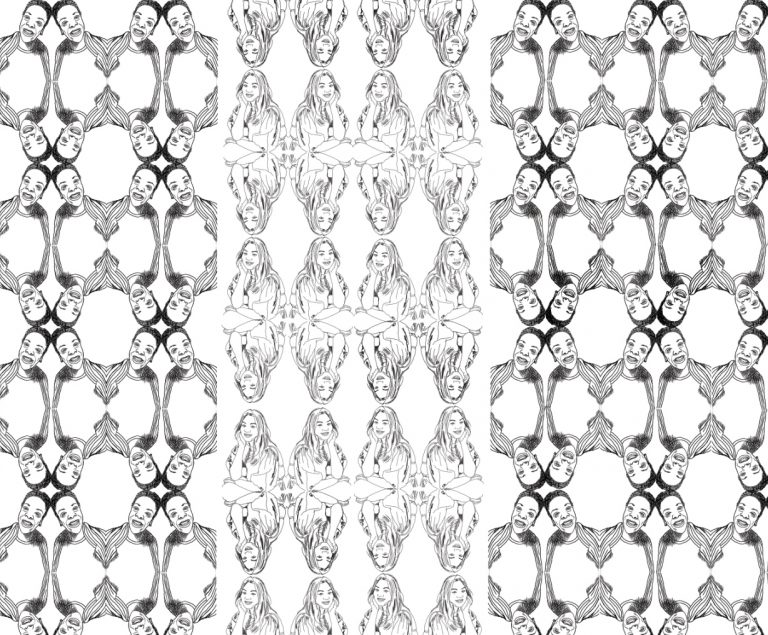
Syrus Marcus Ware – I am because you are. Image courtesy of the artist.
I am because you are
Syrus Marcus Ware
November 17–December 18, 2021
Exhibition Description /
I am because you are explores the presence of Black and East Asian communities in Alberta—and features images of Black and East Asian Albertans moving together, supporting each other, and dancing across the wall. The wall work offers a chance to consider the ways that Black and East Asian communities can be in solidarity with each other and support each other. Images of artists, activists and friends of The New Gallery are repeated across the wallpaper—making an alternative environment wherein freedom is everywhere and wherein we recognize that we need each other—that we are because of each other.
Biography /
Syrus Marcus Ware is a Vanier Scholar, a visual artist, community activist, researcher, youth-advocate and educator. For 12 years, he was the Coordinator of the Art Gallery of Ontario Youth Program. Syrus is currently a facilitator/designer for the Cultural Leaders Lab (Toronto Arts Council & The Banff Centre). He is the inaugural artist-in-residence for Daniels Spectrum (2016/2017). Syrus is also a core-team member of Black Lives Matter Toronto.
As a visual artist, Syrus works within the mediums of painting, installation and performance to challenge systemic oppression. Syrus’ work explores the spaces between and around identities; acting as provocations to our understandings of gender, sexuality and race. His work has been exhibited at the Toronto Biennial of Art (2019), the Art Gallery of Ontario, the Art Gallery of Windsor, the University of Lethbridge Art Gallery, Art Gallery of York University (AGYU), Gladstone Hotel, ASpace Gallery, Harbourfront Centre, SPIN Gallery and other galleries across Canada. His work has been reproduced in FUSE Magazine, The Globe and Mail, THIS Magazine, and Blackness and Sexualities, amongst others. His work has also been included in several academic journals including Small Axe and Women and Environment International.
You can read Syrus’ full biography here.
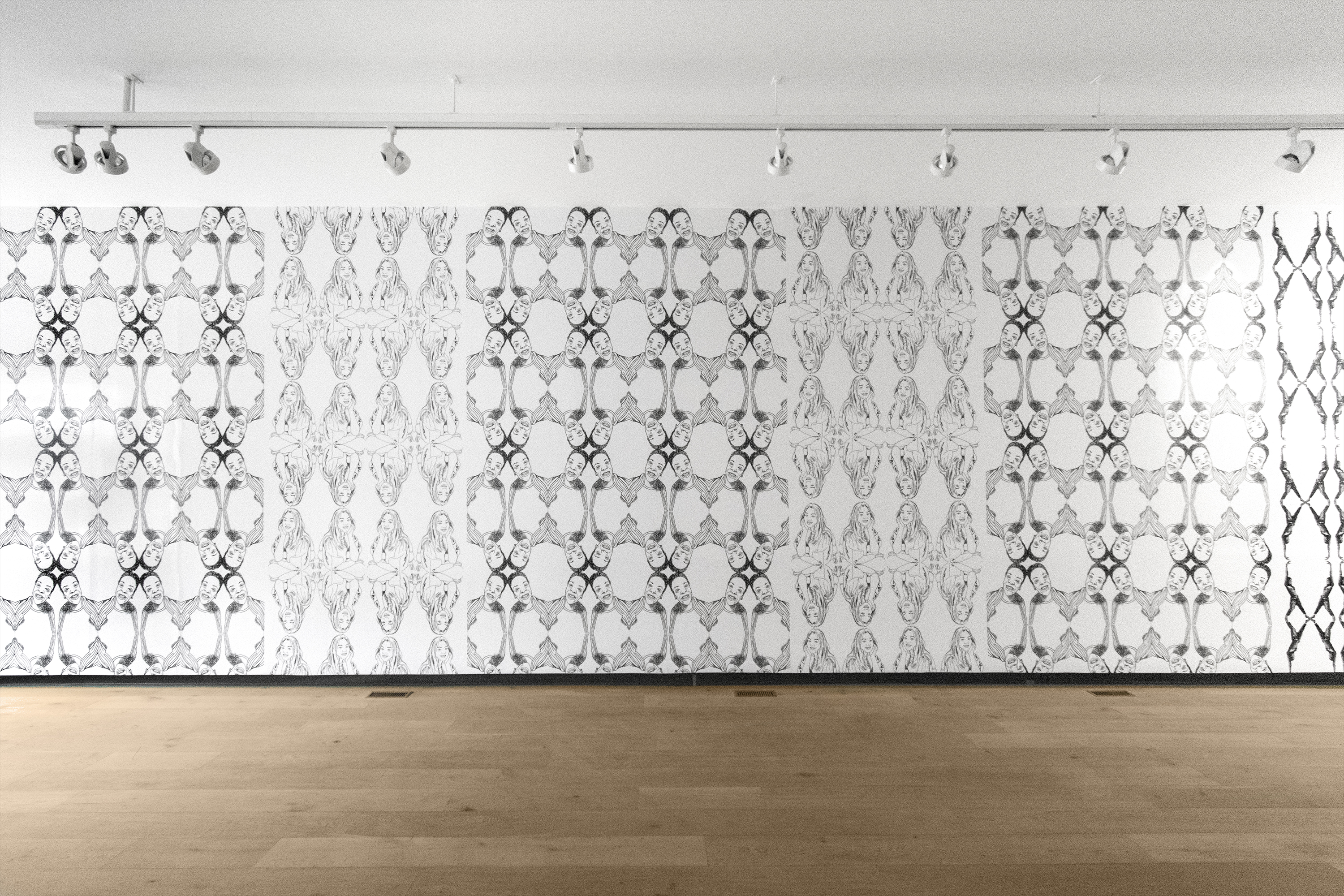


MAINSPACE EXHIBITION /

Pulling Back the Paper
Curated by Su Ying Strang with essential contributions by Curatorial
Assistant Steph Weber and Translator Christina Dongqi Yao
September 25 — October 23, 2021
Exhibition Description /
Pulling Back the Paper is an archival exhibition and research lab that gathers and shares the expansive histories of two intersecting communities from The New Gallery’s past and present— the Calgary faction of the Minquon Panchayat and Calgary Chinatown. This interactive project invites community members to help build out the organization’s archival materials related to these histories, addressing gaps found within the “official” institutional record.
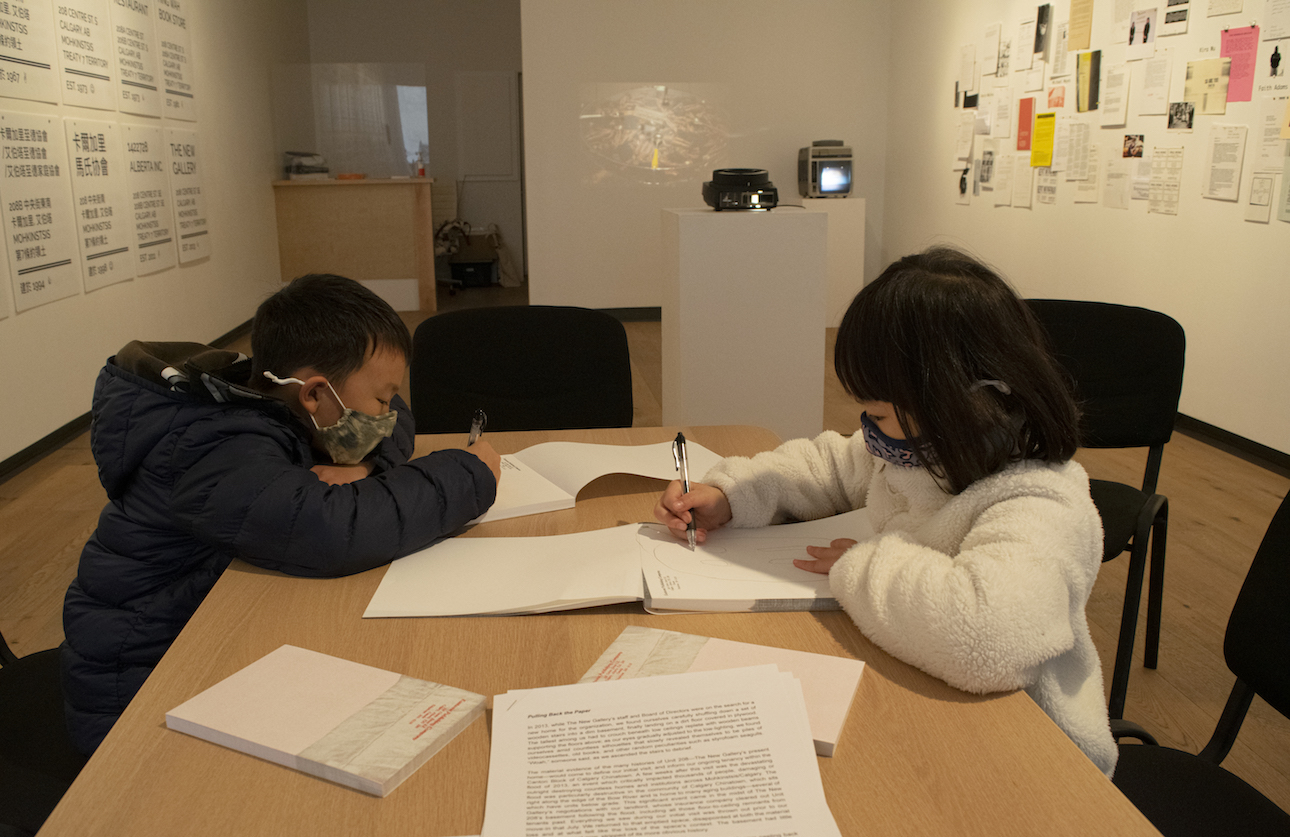

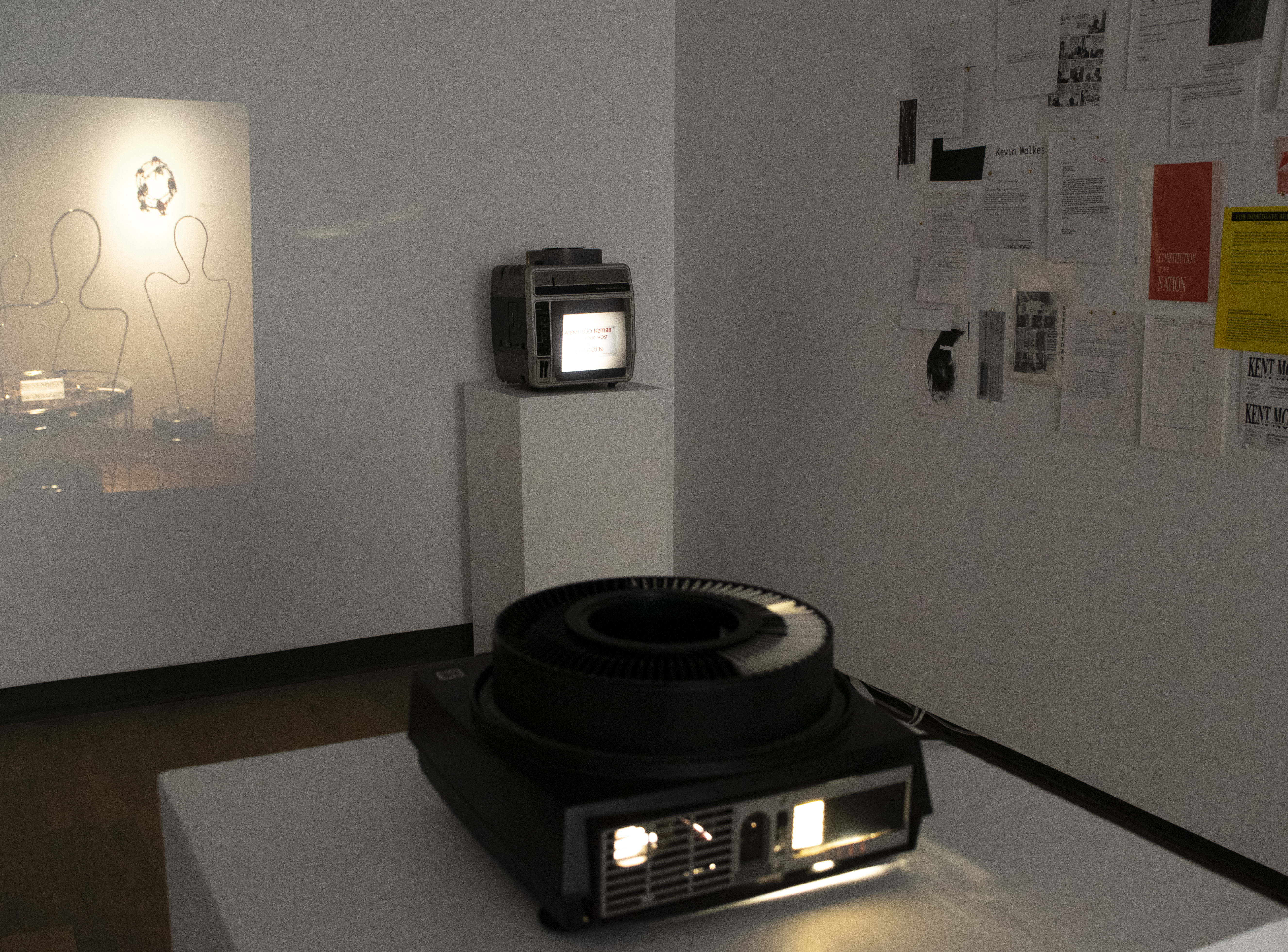

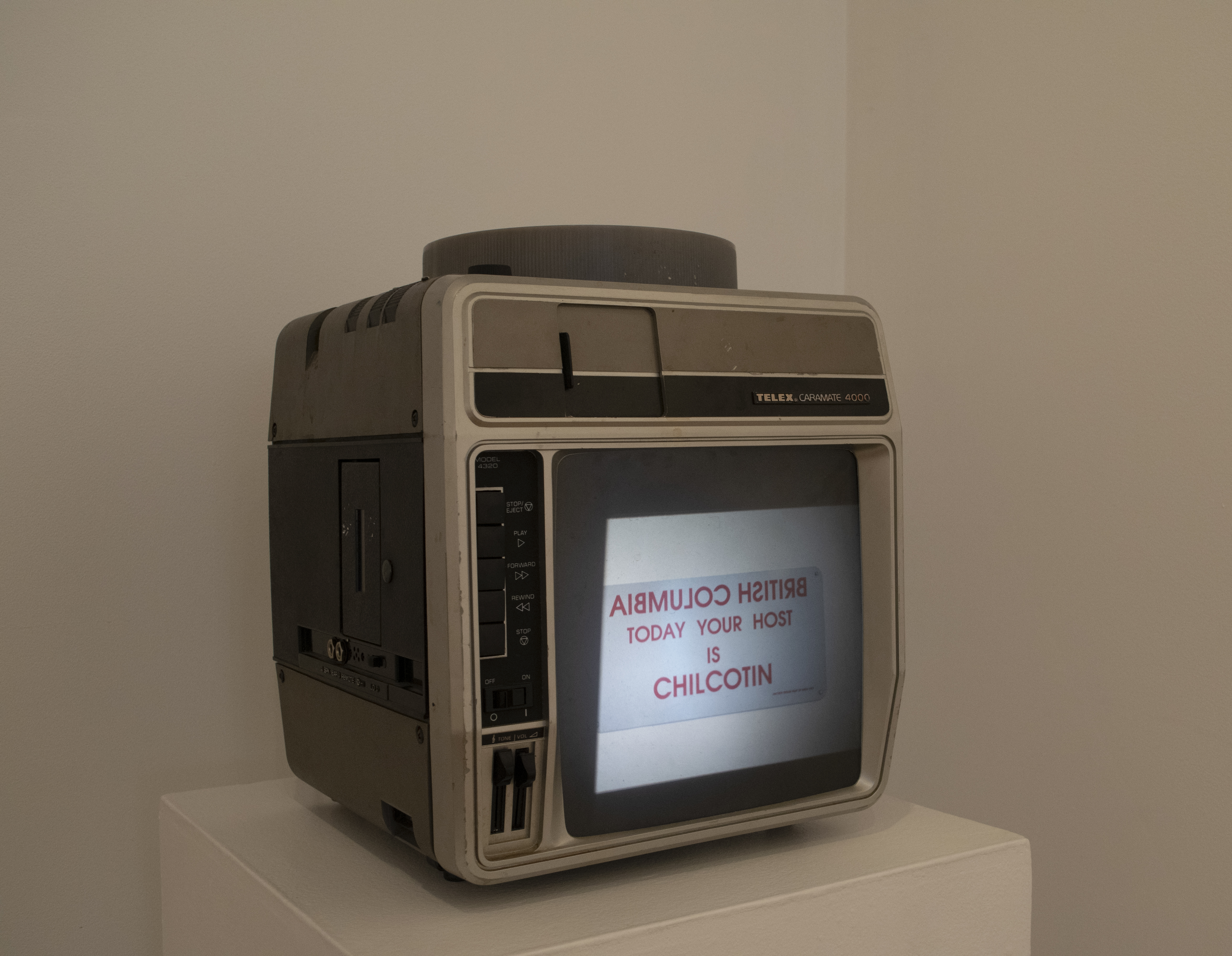

Curatorial Text /
In 2013, while The New Gallery’s staff and Board of Directors were on the search for a new home for the organization, we found ourselves carefully shuffling down a set of wooden stairs into a dim basement, finally landing on a dirt floor covered in plywood. The tallest among us had to crouch beneath low ceilings replete with wooden beams supporting the floors above; as our eyes gradually adjusted to the low-lighting, we found ourselves amid countless silhouettes that slowly revealed themselves to be piles of videocassettes, old books, and other random peculiarities such as styrofoam seagulls. “Woah,” someone said, as we ascended the stairs to debrief.
The material evidence of the many histories of Unit 208—The New Gallery’s present home—would come to define our initial visit, and inform our ongoing tenancy within the Canton Block of Calgary Chinatown. A few weeks after this visit was the devastating flood of 2013, an event which critically impacted thousands of people, damaging or outright destroying countless homes and institutions across Mohkinstsis/Calgary. The flood was particularly destructive in the community of Calgary Chinatown, which sits right along the edge of the Bow River and is home to many aging buildings—several of which have units below grade. This significant event came in the midst of The New Gallery’s negotiations with our landlord, whose insurance company cleared out Unit 208’s basement following the flood, including all those floor-to-ceiling remnants from tenants past. Everything we saw during our initial visit was thrown out prior to our move-in that July. We returned to that emptied space, disappointed at both the material loss and at what felt like the loss of the space’s context. The basement had little immediate interest now, stripped of its more obvious history.
Some time after—days, weeks, or months—some old layers of wallpaper peeling back from one of the wooden support beams downstairs caught my eye. Tucked behind this worn membrane was a small sheet of cut stationery: on one side, a drawing proclaiming, “Dad the GREAT!” alongside a portrait of Dad, and on the other, the letterhead for “Eastwest Publishing Company,” sharing our address, “208 Centre Street S.E.” The drawing, later identified as belonging to the Wong family, offered a glimpse into one of the stories and lives that this space has held. I carefully placed the drawing back in its home, considering it a good omen to have with us, gently informing the work at The New Gallery upstairs.
The move to Calgary Chinatown changed The New Gallery, and it also changed me. Upon being steeped in this neighborhood, with its deep connections to Chinese culture and community, I began to unpack my own identity and relationship to being a mixed-race Chinese American settler. While my mother, of Chinese descent by way of Malaysia, did her best to connect my siblings and I with our traditions and culture, the forces of assimilation that permeated the mostly white suburbs we grew up in dampened many of her efforts; instead I succumbed to the homogenizing effects of my surrounding community. Any strong desire for a connection to my own cultural background remained dormant until I found myself spending most of my days firmly couched in a large community of other Chinese folks through my work at The New Gallery within Calgary Chinatown. Despite not having any family lineage in this particular place, I found a warm, open community that has helped me connect to, and build a better understanding of, my own cultural heritage and family.
I would revisit the found drawing several times throughout my tenure at The New Gallery. Each time, that fragment of stationery offered a moment of joy and curiosity about the previous identities of this space and the people within. This small artifact would be the point of departure for Pulling Back the Paper, with my curiosity shifting into a responsibility to know more about and acknowledge those who had come before and contributed to Calgary Chinatown while inhabiting this space. The histories of Units 208 and 208B 1 are conjured through the creation of a timeline of past organizations that have been listed as tenants of these units from 1911 to present day. Records also cite lodgers at “208 Centre St.” sporadically between 1911 and 1955. This documentation provides some additional insight, including the types of organizations, census data for individuals, and the occasional headline of “newsworthy” events. However, these resources flatten the community’s narratives to what fits within these limited information-collecting frameworks and often privilege a singular voice, leaving little space to account for the expansive histories that have occurred. It struck me that the vibrancy of the community I had gotten to know over the past several years—the richness evident in the found drawing—was missing from these historical records.
This growth and learning occurred alongside my ongoing work to understand and reckon with the settler-colonial dynamics implicit in working in Calgary Chinatown, which is located on Treaty 7 Territory. This land holds the living cultures and histories of the Blackfoot Confederacy (Kainai, Piikani and Siksika First Nations), the Stoney Nakoda (Chiniki, Bearspaw, and Wesley First Nations), the Tsuu T’ina First Nation, and the Métis Nation of Alberta Region III—among countless other contributions from First Nations, Métis and Inuit who have travelled through and gathered on this land. When learning about and acknowledging the histories of Calgary Chinatown, one must also ask, what historical and contemporary intersections exist between this community and the Indigenous peoples of this region?
In 2019, we invited artist Annie Wong to take part in the Calgary Chinatown Artist Residency. One of her resulting projects, Braids in the Front / Braids in the Back speaks to early Chinese settler and Indigenous community-building, and was conceptualized after Wong met Blackfoot Elder Sheldon First Rider through the residency. That first meeting was in Unit 208B, our Resource Centre, where so much of The New Gallery’s history is kept; this is where Elder Sheldon shared many of his stories and teachings, and where a new relationship with Wong led to the creation of this artwork. The connection between Indigenous and Chinese communities demonstrated through this artwork not only reveals an important history—it also points to a necessary future of collaboration and coalition building.
It wasn’t until after working in Calgary Chinatown for a few years that I recognized I could exhale—a much-needed relief resulting from being connected to and constantly within a large racialized community. It was this breath that motivated me to want a better understanding of the histories and labour of racialized folks in the communities I am part of. I was curious not only about the people who had made their lives in Calgary Chinatown before me, but also about the contributors to artist-run culture, in particular that of The New Gallery. An opaque sentence in our official history2 mentions that The New Gallery had worked with a group called the Minquon Panchayat, which I later learned translated to Rainbow Council.3 I rooted around in The New Gallery’s archives, wanting to know more about this group, but I found that our documentation surrounding the Minquon Panchayat was inconsistent and scattered, with no clear narrative outlining their integral contributions specific to The New Gallery. An essay by Tomas Jonsson in Silver: 25 Years of Artist-run Culture spoke about this relationship in a little more detail, as did Clive Robertson’s Policy Matters: Administrations of Art and Culture. While grateful for these references, I couldn’t help but wonder where the accounts were from those who were directly involved in this partnership between The New Gallery and the Minquon Panchayat.
The Minquon Panchayat was a coalition of racialized artists that formed in 1992 at the Association of National Non-Profit Artists Centres (ANNPAC) / Regroupement D’Artistes Des Centres Alternatifs (RACA) Annual General Meeting and conference in Moncton, NB. Artist and activist Lillian Allen was invited to give a keynote address that year, during which she made the call to action for ANNPAC/RACA to grow its membership to include 40% racialized members in response to the Annual General Meeting’s “dismally low presence of First Nations and peoples of Colour participants.”4 Allen’s leadership moved the conversation about racial equity in artist-run centres leaps and bounds forward, resulting in the immediate formation of the Minquon Panchayat. Over the course of the next year, the Minquon Panchayat worked ardently toward creating a path to racial equity in artist-run centres—the first of a two-year commitment from ANNPAC/RACA—which culminated in the 1993 artist-run gathering, It’s a Cultural Thing organized by Cheryl L’Hirondelle5, and ANNPAC/RACA’s ensuing Annual General Meeting.6
This national movement, and the then-forthcoming 1993 gathering, spurred the creation of a local faction of the Minquon Panchayat in Mohkinstsis/Calgary, which connected racialized artists across the local community. Members from this local faction were invited to select artists for the 1994-95 programming year at The New Gallery. Several members, including Faith Adams, Steve Nunoda, Kevin Walkes, and Kira Wu, served on that year’s Programming Committee, while others, including Ashok Mathur, Darmody Mumford, Steve Nunoda7, and Aruna Srivastava served on The New Gallery’s Board of Directors. Michael Mayes, another member of the 1994 Programming Committee, was not directly involved with the Minquon Panchayat, but shared their goals of racial equity, as evidenced through his programming selections.8
As I learned about this history of the Minquon Panchayat and Units 208 and 208B, parallels began to take shape. I started to notice how often the lives and labour of racialized communities are difficult to access in archives or are undocumented altogether. The New Gallery’s artist files include correspondence that is occasionally signed by or addressed to specific members of the 1994 Programming Committee—this happened primarily during the initial invitation to programmed artists. In a few cases, Programming Committee members are referred to as exhibition facilitators or as the curators of their programming selections, and files contain curatorial statements or mention the committee member within the press release. However, the Minquon Panchayat and the specific context of that year’s Programming Committee are rarely mentioned, with the exceptions of: a letter from Kira Wu describing the make-up of the committee to one of her programmed artists, a letter from Henry Tsang citing “the new and improved Programming Committee agenda,” and a final piece of correspondence from Thomas Heyd addressed to Steve Nunoda of the “Panchayat Programming Committee.” Lastly, a newsletter from Latitude 53, several copies of which were tucked into the artist file for Survivals: Cultures & Contexts,9 has a column contributed by the Calgary faction of the Minquon Panchayat. The column outlined the collective’s purpose, encouraged new members to join, and promoted their collective’s upcoming exhibition, DOORS, at TRUCK Gallery.10 Archived city directories and the City of Calgary’s records of Units 208 and 208B—like The New Gallery’s archival records of the Minquon Panchayat—imperfectly recall the history of these units in the Canton Block. Tenants and owners of Units 208 and 208B are listed inconsistently, occasionally misspelled, the dates of many of their tenures unclear, and the units themselves appear under many guises—sometimes labelled 206 and occasionally including a Unit A or a Unit C.
Returning to Annie Wong’s Braids in the Front / Braids in the Back, an important history is elicited: first shared orally with the artists-in-residence by Elder Sheldon First Rider, the kinship between local Indigenous communities and early Chinese settlers is indicated through the phrases cited in the work’s title, which shares the monikers that these communities used to refer to one another.11 The obscurity of this history is another example of how settler-colonialism, in tandem with white supremacy, has actively suppressed the histories and contributions of countless communities—a violence that continues today. The narratives that have surfaced while developing Pulling Back the Paper begin to illustrate the numerous voices that get left out of institutional records, and the processes of how they are excluded. How can we insert multiple perspectives and communities in the narratives shaping our histories? The unacknowledged labour and direct accounts from racialized peoples—in this particular case, the intersecting communities of Calgary Chinatown and the Calgary faction of the Minquon Panchayat within the context of Treaty 7 Territory—is at the centre of this archival exhibition and research lab.
The obfuscation of these distinct yet intersecting histories—whether intended or not—amounts to the erasure of the significant contributions and happenings led by racialized people and their movements. This exhibition, in response, problematizes the official archive and record by exposing its deficiencies, biases, and its violent erasures. Our communities’ histories must not privilege a single author, and instead, must make space for simultaneous truths and perspectives to be captured. In that spirit, Pulling Back the Paper is intentionally a research lab, and I invite community members to add to and annotate these parallel histories with their truths. Please share your additions, amendments, and related perspectives during this project, including within this curatorial text. Throughout the exhibition run there will be a live link to a Google Doc with editing and commenting capabilities. I welcome respectful additions to this text, which will be added to The New Gallery’s archive of this event.12 Collaborative in spirit, this project aims to rebuild our histories collectively, and to know and share all that makes up our pasts—even that which sometimes resides behind a layer of wallpaper but none-the-less persists now and into the future.
This project would not have been possible without the time, support, and knowledge of so many generous friends and colleagues. My deepest thanks to Lillian Allen, Natasha Chaykowski, Lynne Fernie, Sheldon First Rider, Tomas Jonsson, Alice Lam, Cheryl L’Hirondelle, Ashok Mathur, Michael Mayes, Victoria McInnis, Nate McLeod, Evan Neilsen, Cassandra Paul, Aruna Srivastava, Zool Suleman, Sandra Vida, Kevin Walkes, Steph Weber, Annie Wong, Paul Wong, Kira Wu, Christina Dongqi Yao, and Yolkless Press (Areum Kim & Teresa Tam). I’d also like to express my gratitude to the community of Calgary Chinatown, the Minquon Panchayat, and the past and present contributors to The New Gallery.
—Su Ying Strang
Territorial Acknowledgments
TNG gratefully acknowledges its home on the traditional territories of the people of the Treaty 7 region, including the Blackfoot Confederacy (Kainai, Piikani and Siksika), Stoney Nakoda First Nation (Chiniki, Bearspaw, and Wesley), Tsuu T’ina First Nation, and Métis Nation of Alberta Region III. TNG would also like to acknowledge the many other First Nations, Métis and Inuit who have crossed this land for generations.
Footnotes
- In 2018 The New Gallery moved the Resource Centre into Unit 208B, which is located directly above the Main Space in Unit 208.
- “In 1992 The New Gallery partnered with Minquon Panchayat, a national coalition supporting artists of colour, to raise awareness around issues of race and gender, and to actively address these issues in the context of regular The New Gallery programming.” For the full text, visit: http://www.thenewgallery.org/about/history/
- The program guide for It’s A Cultural Thing explains that “Minquon” is the Maliseet word for “Rainbow” and that “Panchayat” is Hindi for “Council.” p. 9
- For additional information about the formation of the Minquon Panchayat and the objectives of the movement, see Lillian Allen’s ”Transforming the Cultural Fortress: Imagining Cultural Equity,” Parallélogramme, vol. 19, no. 3, p. 54
- Cheryl L’Hirondelle was the Minquon Panchayat’s Animation Coordinator who organized the celebrated landmark event, It’s a Cultural Thing, which took place in the Calgary Chinese Cultural Centre. Cheryl also served on The New Gallery’s Board of Directors in 1993, and was the Programming Coordinator at TRUCK from 1991-93.
- The 1993 ANNPAC/RACA AGM was an attempt to achieve Lillian Allen’s call to action to reach 40% racialized membership—the result of a year of planning and labour by the Minquon Panchayat. New racialized representatives showed up and were ready to join the organization, but when it came time to vote, they were presented with several barriers to joining by existing members. This break in trust by ANNPAC/RACA members resulted in the Minquon Panchayat walking out of the AGM, and the initiative crumbling. Several existing ANNPAC/RACA members resigned in solidarity with the Minquon Panchayat, leading to the eventual dissolution of ANNPAC/RACA. For more information about this significant event in artist-run history, read the 1993 issue of Parallélogramme vol. 19, no. 3., “Anti-Racism in the Arts.”
- Steve Nunoda is listed on p. 97 in the Silver catalogue as a Board Member as well as a member of the Programming Committee in 1994.
- Individual names are listed on p. 97 of the Silver catalogue, but are not cited as members of the Minquon Panchayat. Membership to the Minquon Panchayat was confirmed through personal interviews with Kevin Walkes, Kira Wu, Ashok Mathur, Michael Mayes, Aruna Srivastava in August 2021.
- The newsletter was likely included in this artist file as it had information about a Latitude 53 exhibition by Teresa Marshall, one of the artists included in the Survivals: Cultures & Contexts exhibition at The New Gallery. Coincidentally, this newsletter also included information about an exhibition by Kent Monkman, who was programmed at The New Gallery during the 1994-95 programming year by committee member Michael Mayes.
- TRUCK Gallery is now called TRUCK Contemporary Art.
- For a full project description and image of the work, visit: http://www.thenewgallery.org/braids-in-the-front-braids-in-the-back/
- If you’d like to be credited for your contributions, please sign in to your Google Account when editing, or comment on your additions with your name. All other contributions will be cited as “anonymous.”
BILLBOARD 208 /
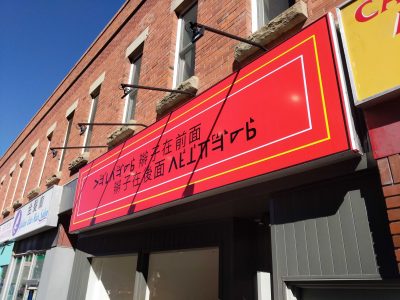
Annie Wong – Braids in the Front, Braids in the Back, 2021.

Braids in the Front, Braids in the Back
Annie Wong
September 3–November 30, 2021
Exhibition Description /
“Braids in the front, braids in the back” is an alias once used between the Chinese and Indigenous communities in their respective languages to refer to each other. The term came to use during the early periods of Chinese settlement on Treaty 7 territory when the two communities were in proximity along the Bow River. “Braids in the front” refers to the double braids worn by Indigenous people. “Braids in the back” refers to the single braid, or Qing queue, worn by the Chinese men. Modelled after Chinatown storefront signs, Braids in the Front / Braids in the Back recalls an obscured history of mutual aid and kinship between the two communities.
The Blackfoot translation is by Sheldon First Rider. The Chinese translation is by Christina Yao. Braids in the Front, Braids in the Back was curated by Su Ying Strang in conjunction with the Main Space project, Pulling Back the Paper.
Biography /
Annie Wong is a multidisciplinary artist, writer, and community organizer based in Tkaronto, Treaty 13 Territory.
Territorial Acknowledgments
TNG gratefully acknowledges its home on the traditional territories of the people of the Treaty 7 region, including the Blackfoot Confederacy (Kainai, Piikani and Siksika), Métis Nation of Alberta Region III, Stoney Nakoda First Nation (Chiniki, Bearspaw, and Wesley), and Tsuu T’ina First Nation. TNG would also like to acknowledge the many other First Nations, Métis and Inuit who have crossed this land for generations.
MAINSPACE EXHIBITION /
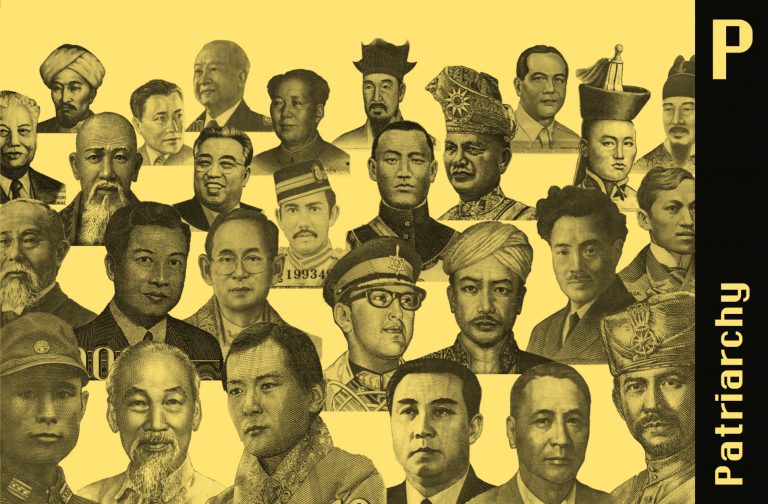
‘P’ from The Yellow Pages (set of 26 images), Ho Tam, 2021. Image courtesy of the artist.
The Yellow Pages
Ho Tam
August 9–September 4, 2021
Exhibition Description /
The Yellow Pages looks at the relationship between image and text in a playful and satirical manner. Divided into 26 chapters and arranged from A to Z, the work roams through the past and present of the pan-Asian experience within North America and beyond. The series covers many topics from whitening beauty products, internment camps, and transgender performers, to the democratic movement in Hong Kong. Simple yet complex, The Yellow Pages seeks to compel viewers in multiple ways, never allowing for one single reading.
Biography /
Ho Tam was born in Hong Kong, educated in Canada and the U.S. and worked in advertising and community psychiatric care before turning to art. He practices in multiple disciplines including photography, video, painting, and print media. Tam has made over 20 experimental videos and films. His work has been exhibited internationally, including the traveling exhibition Magnetic North: Canadian Experimental Video organized by Walker Art Center (Minneapolis, US). His feature documentary film Books of James was awarded Outstanding Artistic Achievement by Outfest, and Best Feature Documentary by the 2008 Tel Aviv International LGBT Film Festival. From 2004 to 2010, he also taught full time at the University of Victoria, BC. Since the 2010s, Tam has been focusing on independent publishing of artist books and zines, and currently he manages a bookshop/gallery in Vancouver, BC.
Territorial Acknowledgments /
TNG gratefully acknowledges its home on the traditional territories of the people of the Treaty 7 region, including the Blackfoot Confederacy (Kainai, Piikani and Siksika), Métis Nation of Alberta Region III, Stoney Nakoda First Nation (Chiniki, Bearspaw, and Wesley), and Tsuu T’ina First Nation. TNG would also like to acknowledge the many other First Nations, Métis and Inuit who have crossed this land for generations.
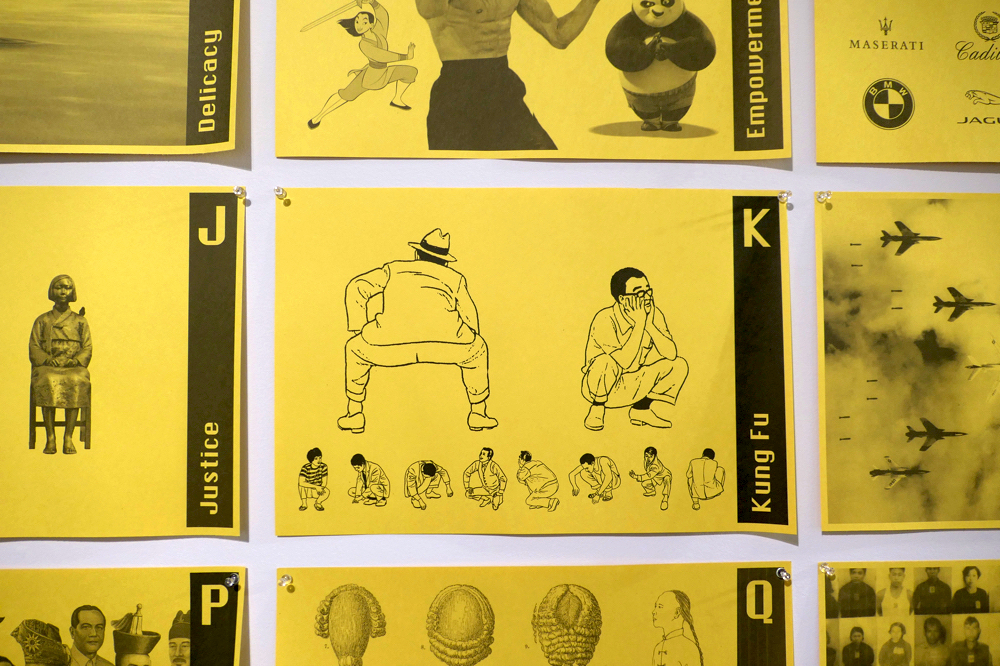
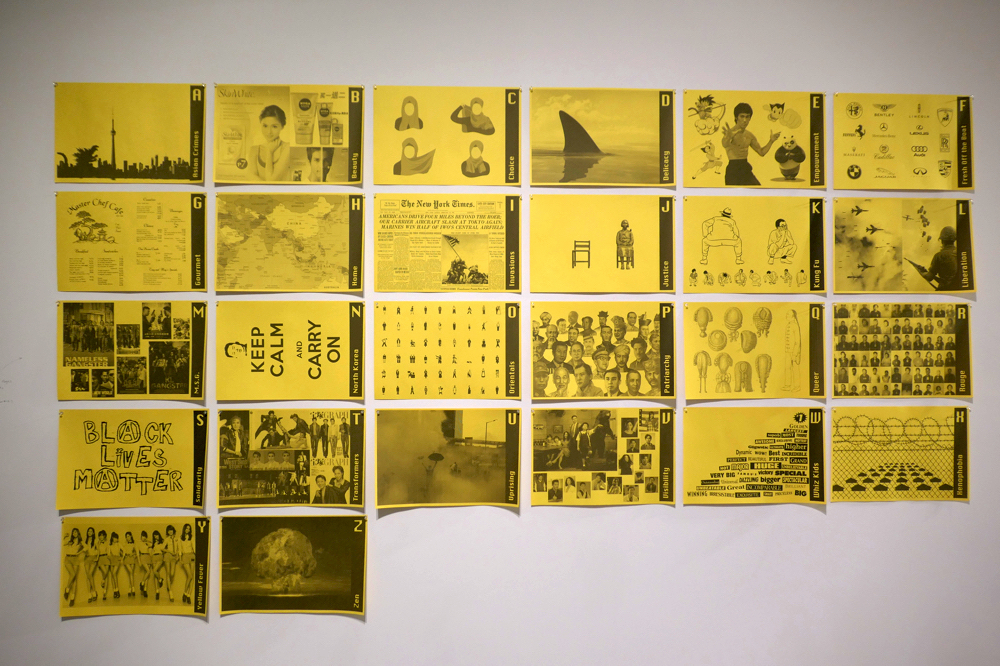

MAINSPACE EXHIBITION /
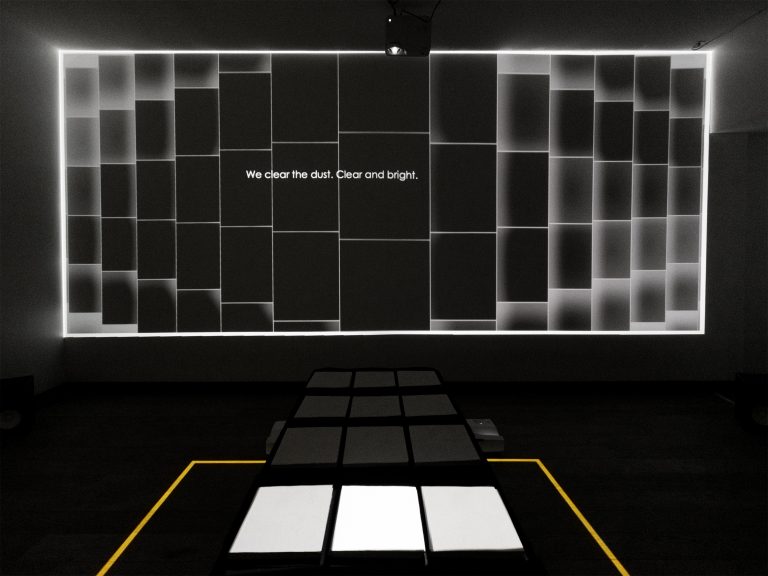
Milton Lim – whitepages.
whitepages
Milton Lim
November 7–December 19, 2020
Exhibition Description /
whitepages is an object-oriented multimedia installation examining the phonebook as a living archive of human migration. Consisting of projected datasets, generative sound, twelve phonebooks arranged as a telephone keypad, and an overhead camera sensor, whitepages creates a space to consider the extended relationships of names, phone numbers, and addresses across time.
Using common Chinese surnames to create a sampling frame, the phonebook becomes a time capsule of conditions preceding contemporary concerns of Vancouver’s housing market crisis and Richmond’s racialized linguistic policies. It traces the distinct waves of Chinese immigration to Canada over the last century; journeys resulting from the promise of gold, new employment opportunities, many significant political shifts overseas, and more recently, the now-defunct Immigrant Investor Program (IIP) which, from 1986-2014, rapidly transformed the racial demographics of British Columbia.
Telephone directories retain information about who was permitted to own land, who was recognized as a citizen by the government, and where enclaves developed. They even document the exclusion of Chinese names from BC phonebooks in the early 1900’s, which in turn, gave rise to the Chinese Publicity Bureau (Vancouver) publishing their first separate Chinese-Canadian phonebook in 1935.
whitepages, like the technologies it references and is built upon, interfaces past contexts via present conditions. Today, the decline of these hardcopy directories gestures towards our changing relationship to our contact details as we continue transacting public ‘information’ into the currency of public ‘data’. Access to digital material is immediate, direct, and efficient. On the other hand, the phonebook offers an alternative perspective, one that holds the complexities and weight of the decisions that brought us here.
“The telephone was already thought, correctly, to be responsible for rapid industrial progress. … The areas depending on ‘instantaneous communication across space’ were listed by the United States Commerce Department in 1907: ‘agriculture, mining, manufacturing, transportation, and in fact, all the various branches of production and distribution of natural and artificial resources.’ … In other words, every cog in the engine of the economy” (Gleick, 2011, p. 191-192).
In this brief paragraph, historian James Gleick (2011) recounts the pivotal role telephony played not just within the history of the telecommunication industry, but also in all other facets of the socio-economic landscape in the early twentieth century. Against this backdrop of unprecedented industrial growth in North America, immigration formed another facet of this landscape, an indispensable but often marginalized part of this growth. Considering that a significant part of the Chinese population in Vancouver at the time was employed by the railroad industry, one could propose a link between the proliferation of telephony with immigration and industrialization, a link that can be read through the records of phonebooks. Coincidentally, 1907 was also the year the Asiatic Exclusion League organized the parade that led to the three-day riot in Vancouver’s Chinatown and Japantown. The delicate relationship and socio-political entanglement between notions of race, immigration, telecommunications, industrialization, and the cataloguing of human populations are all encapsulated in Milton Lim’s interactive media installation, whitepages, activated through participants’ interactions with the phonebooks on display.
“Telephone books soon represented the most comprehensive listings of, and directories to, human populations ever attempted” (Gleick, 2011, p. 194). Seen in this light, telephone books are arguably the precursors of the ubiquitous algorithmic surveillance and ever-expanding databases of the human (and non-human) today. There is a strong link between traditional classification systems of knowledge and commercial search engines, a link that emphasizes how classification systems—or a seemingly benign list of people—are largely determined by existing power structures (Noble, 2018). Arguably, the phonebook and its classificatory structure would be no different. Embedded within them are the politicized processes of information creation, dissemination, and retrieval, having been designed and deployed by the dominant political forces.
To investigate the socio-political landscape of Vancouver in the 1900’s and the place of Chinese-Canadian residents in BC, Lim looked into the existing phonebooks of the era. It was thought that each phonebook would act as a historical record of the respective Chinese-Canadian population at a given point in time, giving the artist a sense of the population’s size, how this size changed over the years, and most importantly, functioning as a conduit to the lives lived (or not). Upon investigation, and perhaps unsurprisingly, the BC/Vancouver phonebooks in the early 1900’s skipped the Chinese residents and businesses. In the 1900 BC directory specifically, sandwiched between the Chilean Consulate and Chipman, is a note that says, ‘Chinese Directory, see at end of the Vancouver.’ The Chinese-Canadians were segregated. According to the records, this segregation began in 1882 (with 45 entries listed, and 3 years before the Chinese head tax was introduced in 1885), first with the Victoria directory then the Vancouver directory, and lasted until 1923 with Henderson’s Greater Vancouver Directory (also the year that the Chinese Exclusion Act was introduced). The phonebook, arguably the search engine of the time and much like the search engines of today, is marked by decisions that enact, enable, and sustain specific social relations.
In addition to the BC directories, a curious artifact turned up: a Chinese-Canadian phonebook, separate from the conventional phonebook. The Vancouver Chinese Telephone Directory and Chinatown News have been in publication since 1935. Read in conjunction with the inconsistent inclusion and systematic segregation of Chinese-Canadian residents and businesses in the BC directories, the Chinese Telephone Directory adds to the complex relationship between information, policy, and the building of communities.
Technological artifacts embody the social, cultural, material, and economic conditions of their development as well as operations, and are therefore inevitably political (Winner, 1980). In whitepages, the assemblage of interactive digital media enables an engagement between the participants and the phonebook interface. The indexical quality of the phonebooks, a record and catalogue of the human lives of a certain historical period, is then activated by participants’ physical presence in relation to the twelve ‘touchpads’ of the interface, producing a number of distinct sound and projection states. The phonebook is then reframed in different forms, as conventional data, but also as geography, as time, as a set of policies, as statistics, and as the human lives that were lived, among others, exemplifying the phonebook’s position within the larger political landscape where it is situated. Entangled with socio-political and cultural-economic elements beyond the telecom context, the phonebook becomes the nexus through which Lim examines and invites visitors to consider the histories of the Chinese diaspora as they unfolded in Vancouver in the early twentieth-century, and continue to do so today.
– Kevin Day
Biographies
Milton Lim (he/him) is a media artist and performance creator based in Vancouver, Canada. His research-based practice utilizes publicly available data and interactive media to illustrate expressions of value, discourse, and labour within abstract frameworks of power and politics. Milton holds a BFA (Hons.) in theatre performance and psychology from Simon Fraser University.
His projects have been presented at the PuSh International Performing Arts Festival (Vancouver), the Vancouver Art Gallery, VIVO Media Arts Centre, CanAsian Dance Festival (Toronto), Carrefour international de théâtre festival (Quebec City), Seattle International Dance Festival, Risk/Reward Festival (Portland), artsdepot (London), soft/WALL/studs (Singapore), and Australia’s Darwin Festival, among others.
Milton is a Co-Artistic Director of Hong Kong Exile, Artistic Associate with Theatre Conspiracy, archivist with videocan, Digital Interaction Designer with The Cultch, and one of the co-creators behind culturecapital: the performing arts economy trading card game. He is currently an Artist-in-Residence with The Theatre Centre (Toronto).
Kevin Day’s practice and research, encompassing sound, video, text, graph, and media installations, examine digital media polemics such as algorithmic culture, digital epistemology, big data, mediation, immaterial labour, and information capitalism. Informed by philosophy of technology, media studies, and critical theory, his research articulates an urgency of questioning the ubiquitous logic of framing the world through information. Day was born in Taipei, Taiwan. He received his MFA and PhD from the University of British Columbia and is currently based in Vancouver. His work has been generously funded by the Canada Council for the Arts and the Social Science and Humanities Research Council of Canada (SSHRC).
Territorial Acknowledgments
TNG gratefully acknowledges its home on the traditional territories of the people of the Treaty 7 region, including the Blackfoot Confederacy (Kainai, Piikani and Siksika), Métis Nation of Alberta Region III, Stoney Nakoda First Nation (Chiniki, Bearspaw, and Wesley), and Tsuu T’ina First Nation. TNG would also like to acknowledge the many other First Nations, Métis and Inuit who have crossed this land for generations.
References
Gleick, J. (2011). The information: A history, a theory, a flood. New York, NY: Pantheon Books.
Noble, S. U. (2018). Algorithms of oppression. New York, NY: NYU Press.
Winner, L. (1980). Do artifacts have politics? Daedalus, 109(1), 121-136.
The artist would like to acknowledge the support of the British Columbia Arts Council.
MAINSPACE EXHIBITION /


Mat Glenn – Earn Your Stripes, 2020.
Earn Your Stripes
Mat Glenn
September 12–October 24, 2020
Exhibition Description /
Earn Your Stripes is an ongoing project by Mat Glenn investigating the visual language of human-nonhuman opposition in the natural landscape. Reified by the outdoor-equipment-industrial-complex, the market inspires humans to control and conquer landscapes using a specific material language of straps, nylon, taped seams, backpacks, synthetic down, Gore-Tex, and zippers. This exhibition re-appropriates these materials to destabilize the notion that human life-force is in opposition to nature. Through this series of sculptural works, life-force and nature are enmeshed into assemblages of synthetic and organic materials, which composes our experience in the exhibition.
Earn Your Stripes creates a space where life-matter and subject-object binaries are rendered obsolete. Hybrid moments appear in this obsolescence, with life and matter vibrating between human and nonhuman references. Hybridity celebrates the unlearning of human exceptionalism by showing us that life-force is not exclusive to human bodies. Instead, it exists within these assemblages of co-existing living and non-living forces. Something like an incorporeal web connecting us to our surroundings, the work suggests that our life-force only exists insofar as it happens in our relationships to things, living and non-living.
Each human is a heterogeneous compound of wonder-fully vibrant, dangerously vibrant, matter. If matter itself is lively, then not only is the difference between subjects and objects minimized, but the status of the shared materiality of all things is elevated.
Such a newfound attentiveness to matter and its powers will not solve the problem of human exploitation or oppression, but it can inspire a greater sense of the extent to which all bodies are kin in the sense of inextricably enmeshed in a dense network of relations. And in a knotted world of vibrant matter, to harm one section of the web may very well be to harm oneself. Such an enlightened or expanded notion of self-interest is good for humans. [1]
Earn Your Stripes is indebted to the writings of Jane Bennett, who created the conceptual space the artworks occupy, as well as the Syilx/Okanagan territory where Glenn’s understanding of the natural world was created.
–
[1] Bennett, Jane. “The Force of Things.” Essay. In Vibrant Matter: a Political Ecology of Things, 11–12. Durham, NC: Duke University Press, 2010.
Exhibition Text /
wikipedia.org/wiki/Ultimate_fate_of_the_universe
I’m told our age and expansion is a dense exhale. At some point soldered by a violent incandescence, then hot distention, and now atomies spattered with remnants of a crucial heavenly decay. Sometimes I can still taste the pennymetal in my mouth, living life as a residue extant rarity. But calcification is not causation, and we never earned our origin.
Versions of matter domination crumble when you realize what we see accounts for 4% of what there is. We respond to a horrific complexion by polishing our own; glinting human ascendance. As if a machinated lexicon and gore techs could choke meaning out of an impractical corporeity. As if wetware keeps us from being wet.
Yet our ultra instance, this slight articulation of carbon valency and other gossamer, has figured a lust cause to be or become. Trace senses waxing haptic for total material subordination— bending dust to subdue dust.
I like to think of a core domain that does not care to transcend. Without limit and without centre, it dislocates, disintegrates, then dissolves.
– Nivedita Iyer
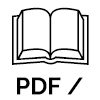
Biographies /
Mat Glenn is a recent graduate from the University of British Columbia’s Bachelor of Fine Arts program with a major in Visual Arts and a minor in Art History. Glenn is an emerging artist working and living in the unceded Syilx/Okanagan region of British Columbia. Specializing in sculpture, installation, printmaking and digital media, his practice explores new-materialism and objecthood in the context of ecological thought. Glenn has curated exhibitions in the Okanagan including Chasten My Fantasies of Human Mastery at the Alternator Centre for Contemporary Art. This year he exhibited Fear Frequency at the Vernon Public Art Gallery, and the two-person exhibition Creative Growth Centre for Spiritual Nourishment at the Kelowna Art Gallery with Lucas Glenn.
Nivedita Iyer has an academic background in Communications, as well as a professional background in cultural media and writing. Her interests include reading in philosophy and physics, and playing music. In 2016, she co-founded Malform Press, an artist-run publishing platform and events initiative focused on interdisciplinary conversation within the arts.

Territorial Acknowledgments
TNG gratefully acknowledges its home on the traditional territories of the people of the Treaty 7 region, including the Blackfoot Confederacy (Kainai, Piikani and Siksika), Métis Nation of Alberta Region III, Stoney Nakoda First Nation (Chiniki, Bearspaw, and Wesley), and Tsuu T’ina First Nation. TNG would also like to acknowledge the many other First Nations, Métis and Inuit who have crossed this land for generations.
MAINSPACE EXHIBITION /
you stare, i stare
Eva Birhanu
August 8–September 5, 2020
Exhibition Description /
you stare, i stare is a show composed of three weavings that involve the viewer in communicating with the bodies embedded within these textiles. This conversation implicates the viewer in how they interact with Black women’s bodies– specifically their hair. Black women are objectified and exoticized for their features, which are used to Other them, alienating them within society. Microaggressive acts of touching, staring, and commenting on Black women’s hair succeed in forming a harmful clutch of power over these women. In hair weaving 2, the hair stands bodiless, creating tension between the viewer and the textile, speaking to the objectification of Black women in Western society. However, this power dynamic is interrupted and questioned by the implication of the effectual gaze coming back to the viewer in the two accompanied weavings– wear my hair and cake. Together, these weavings force the viewer to question the tokenization of Black women, while also allowing the bodies in these weavings to take back their power as Black women.
Online Program /
Artists in Conversation: Eva Birhanu & Khadijah Morley
Biographies /
Eva Birhanu is an interdisciplinary artist working in Calgary, Alberta, Treaty 7 Territory. Born in Canada to immigrant parents from Denmark and Ethiopia, she focuses on identity and race in her work. Eva mainly works in mediums of fibre and sculpture, autoethnographically exploring exoticism and objectification. Eva recently graduated with distinction from the Alberta University of the Arts with a BFA majoring in Fibre. In her time at AUArts, Eva was the coordinator and organizer of the Poly + Esther Gallery Wall. She was a recipient of the Louise McKinney Scholarship for academic achievement in 2019, a BMO 1st Art Competition Nominee, and was awarded the Fibre Major Innovative Development Award in 2020.
Khadijah Morley is an artist from Toronto, Ontario. She is currently enrolled at OCAD University for a BFA in Drawing and Painting, as well as a minor in Printmaking. She prioritizes the Black female gaze through an autobiographical lens. Her work attempts to deconstruct the colonial fallacy of what constitutes Black female identity within the canon of Eurocentric Western art.
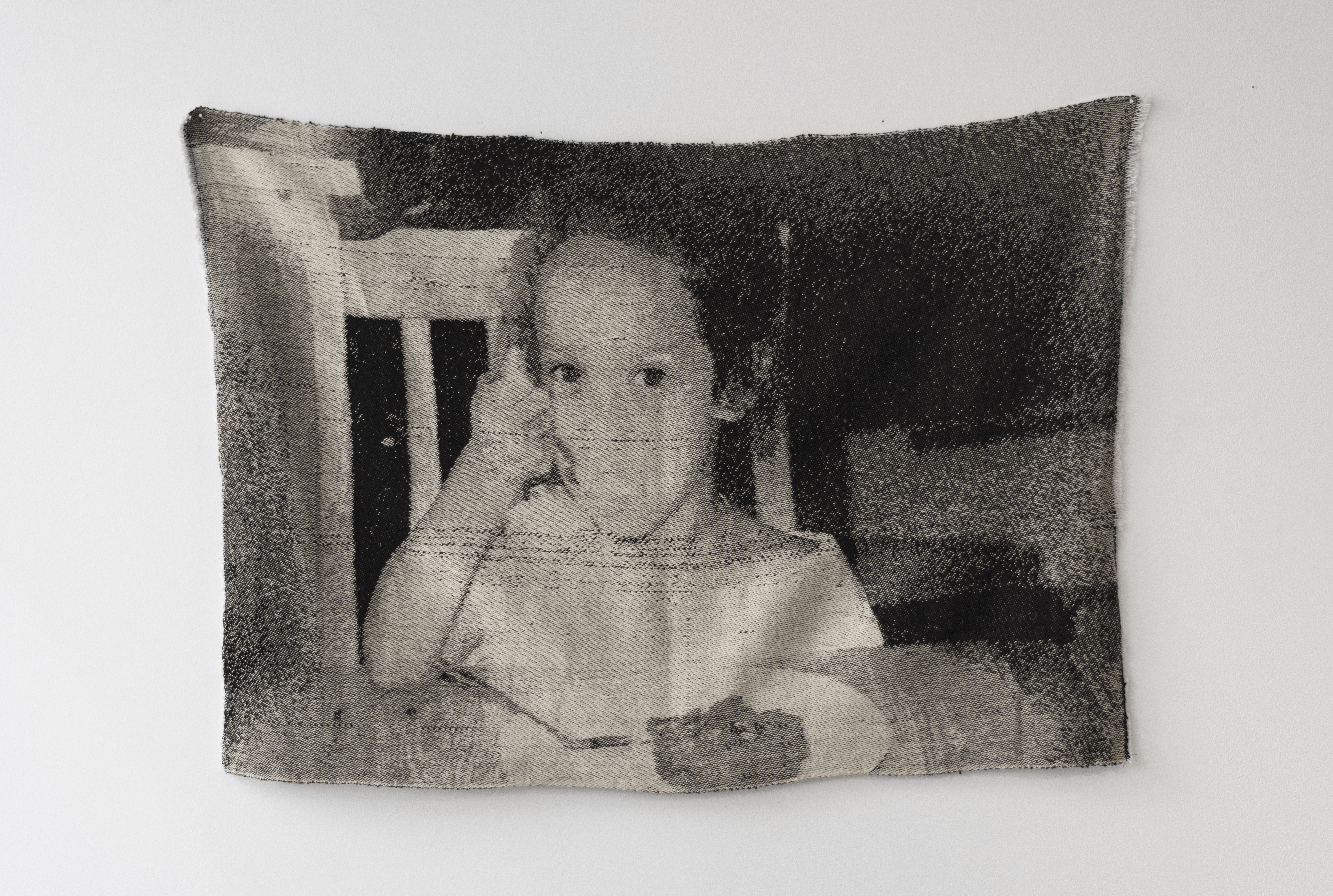
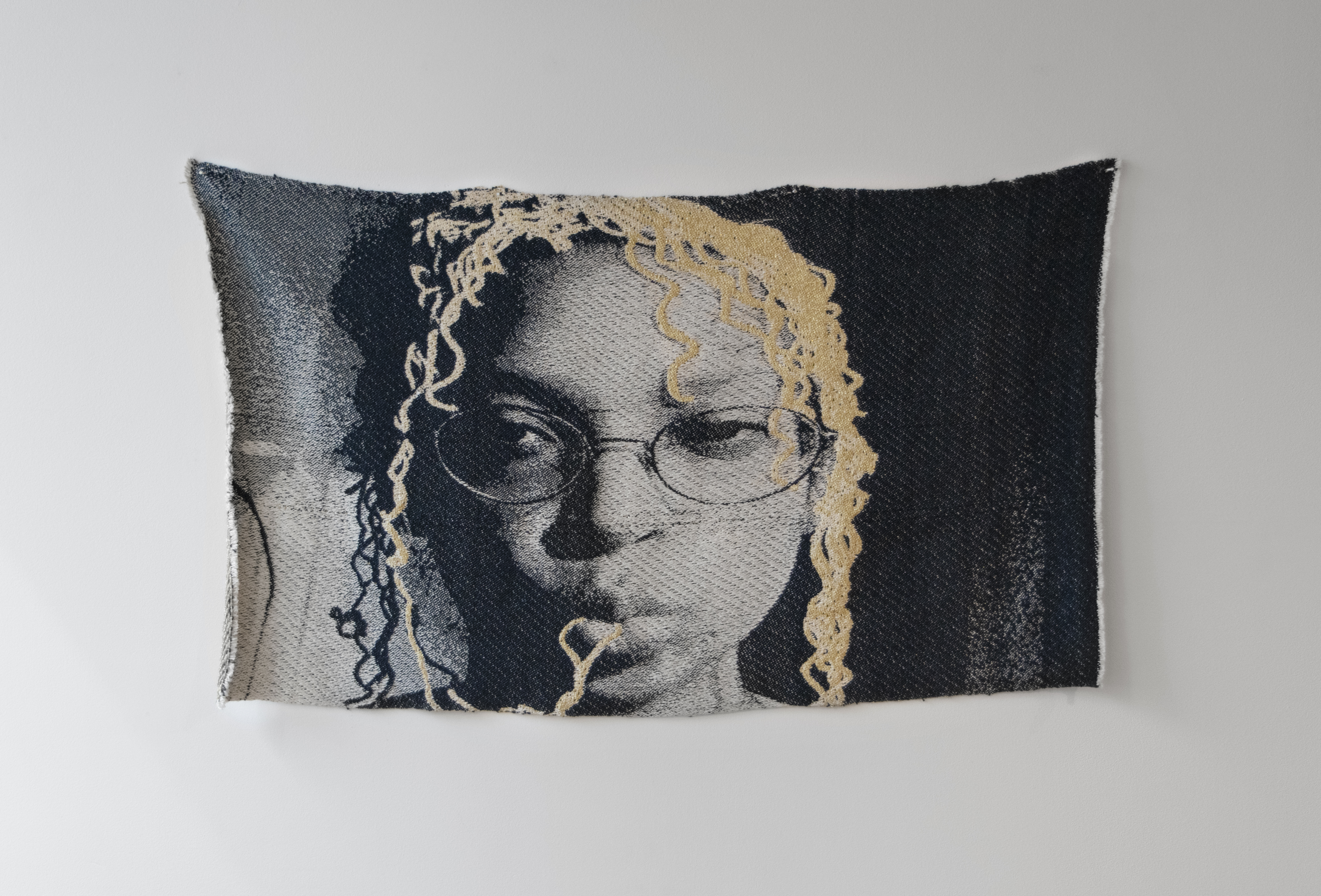
TNG gratefully acknowledges its home on the traditional territories of the people of the Treaty 7 region, including the Blackfoot Confederacy (Kainai, Piikani and Siksika), Métis Nation of Alberta Region III, Stoney Nakoda First Nation (Chiniki, Bearspaw, and Wesley), and Tsuu T’ina First Nation. TNG would also like to acknowledge the many other First Nations, Métis and Inuit who have crossed this land for generations.
The online programming was generously funded by the Rozsa Foundation and the Calgary Foundation.


BILLBOARD 208 /
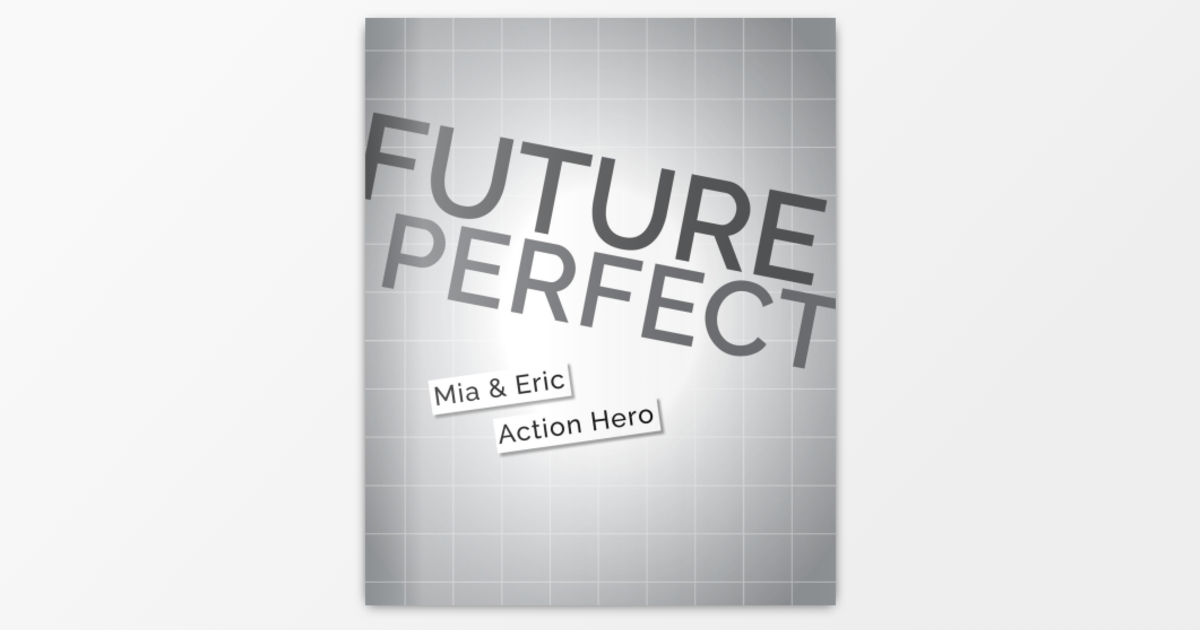
Future Perfect
Mia & Eric and Action Hero
August 1–October 31, 2020
Exhibition Description /
Future Perfect is a hopeful, positive act of re-configuration. City bylaws that regulate behaviours in civic spaces—in this case the 1986 Chinatown Area Redevelopment Plan—are cut up and rearranged, word by word, into new rules for a transitioning world. From the same set of words, a different set of imagined behaviours, interventions, and performances are made visible and new meanings/ideas emerge. As these new playful documents are created, an accidental poetry also emerges. From this new poetic script, selected phrases act as meditations, instructions, or manifestos. These words are enlarged and inserted into the architecture of the city to give pause, welcome contemplation, and give rise to a collection of imagined alternative behaviours for a possible future. They trigger a rare act of imagination untainted by commerce or sales. As a large-scale remnant of the cut-up process, the billboard works against the fast-moving digital dialogues of the internet, media, and advertising. Its words sing an unusual tune amongst the white noise of the city, and invite the reader to imagine alternative ways in which to move through civic space.
Future Perfect has been developed with support from Springboard Dance, The British Council, and the High Commission of Canada in the UK through the New Conversations fund.
Biographies /
Mia Rushton and Eric Moschopedis are an artist team from Calgary, Alberta. They bring together elements of craft, performance, and cultural geography to create site-specific and socially-engaged performative works. Thematically their practice deals with urban and rural ecologies, social relationships, and place-based knowledge production. Since 2008 they have developed a practice that operates in both a gallery and public context. Their projects, workshops, and artist talks have been presented in formal and DIY performance festivals, galleries, and post-secondary institutions throughout North America and in Europe.
Gemma Paintin and James Stenhouse share an interdisciplinary performance practice together under the name Action Hero. Since 2005, they have created theatre, live art, installation, multimedia, and site-specific projects which have toured to nearly 40 countries across 5 continents. Their ongoing interests lie in the iconography of popular culture and its use; both as a weapon and as a shared cultural memory. They have worked in some of the world’s most prestigious performance contexts, teach at the undergraduate and postgraduate levels, as well as lead master’s classes world-wide. They are based in Bristol, UK.
Day 1, September 1
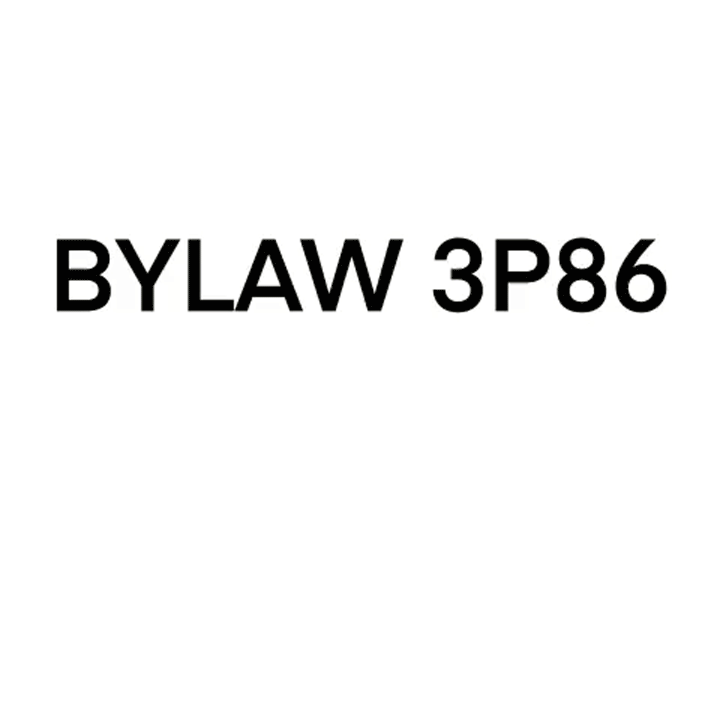
Day 2, September 2
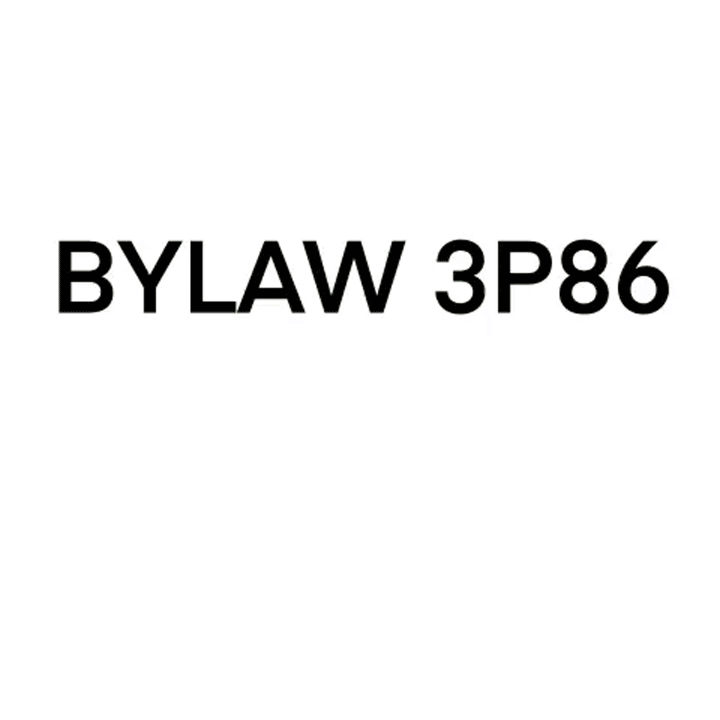
Day 3, September 3

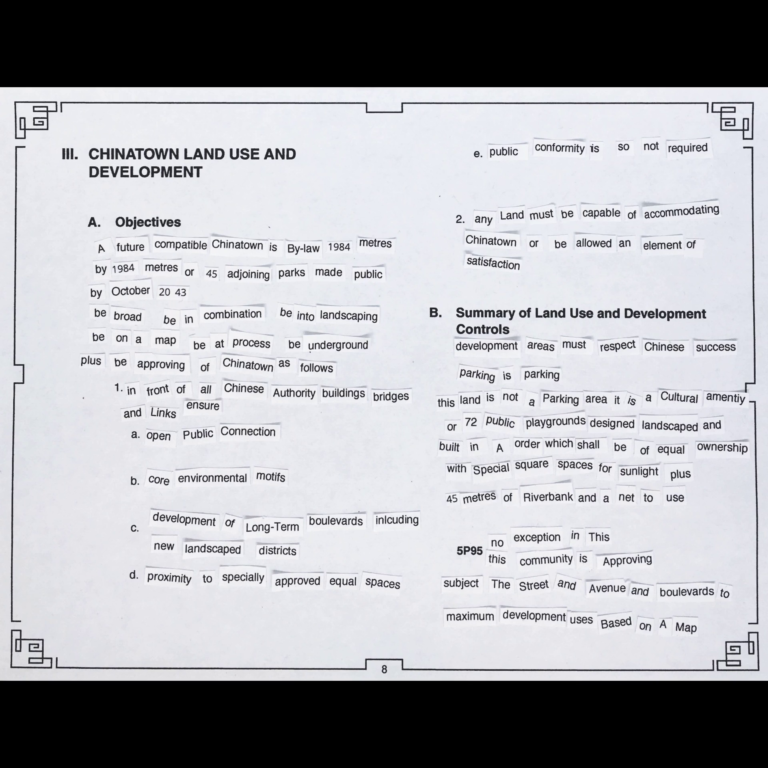

Day 4, September 4


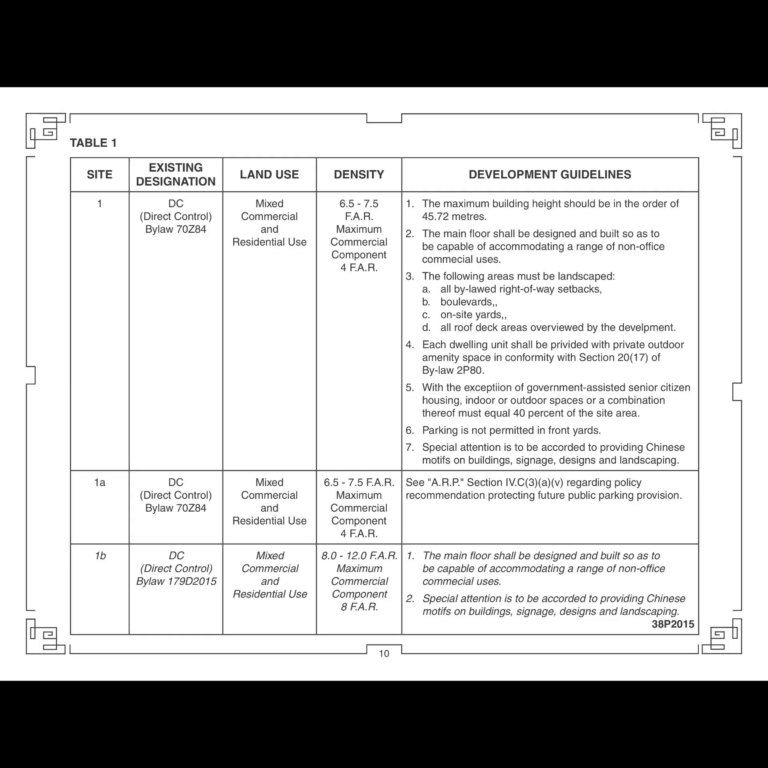
Day 5, September 5
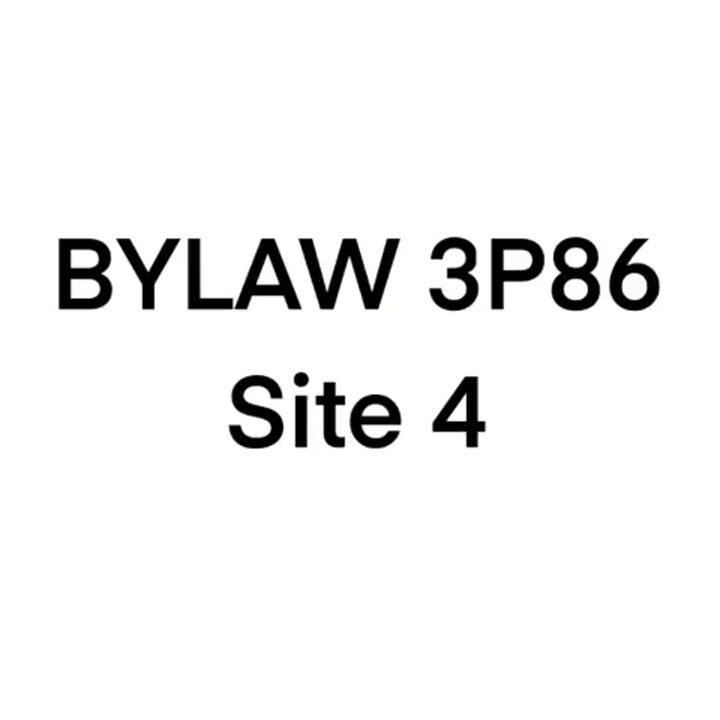


Day 6, September 6


Day 7, September 7
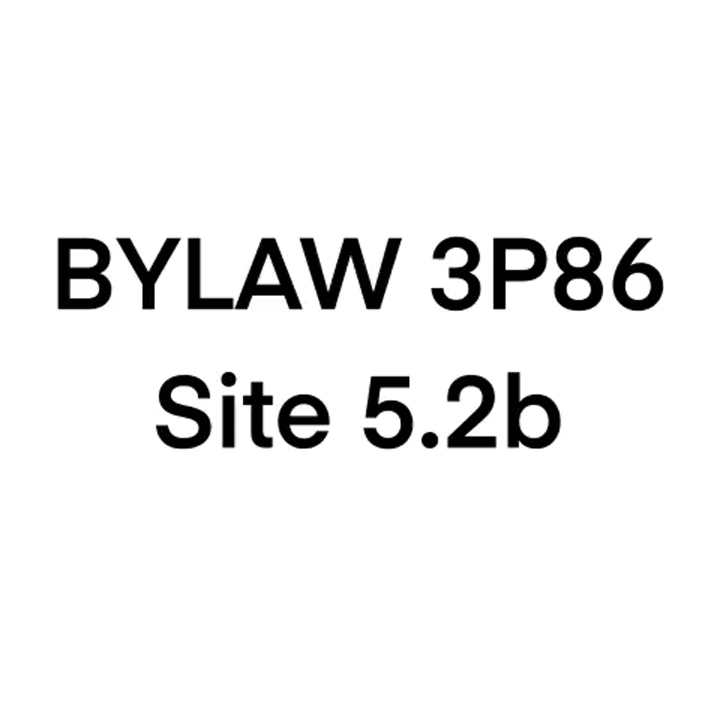

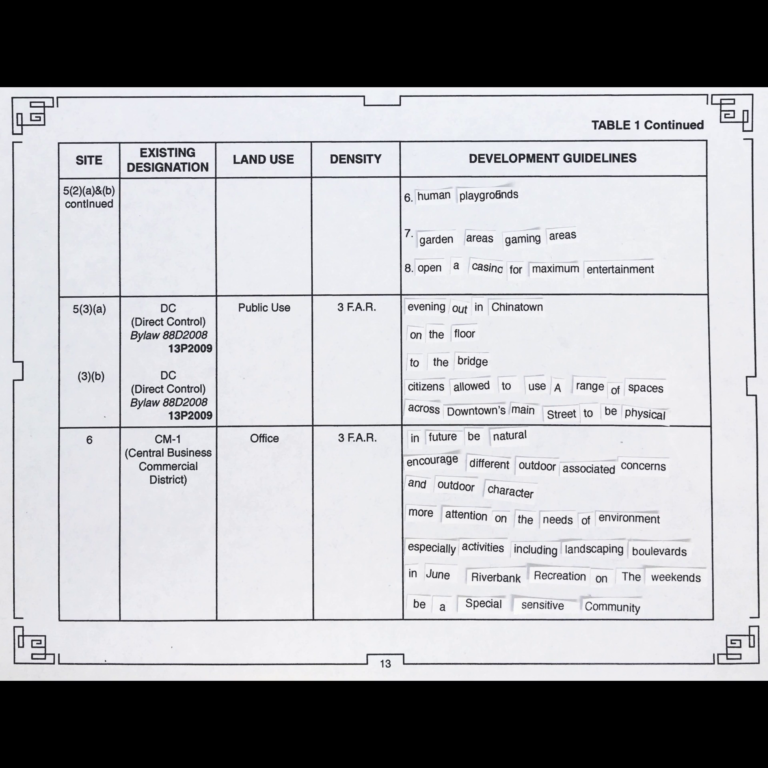
Territorial Acknowledgments
TNG gratefully acknowledges its home on the traditional territories of the people of the Treaty 7 region, including the Blackfoot Confederacy (Kainai, Piikani and Siksika), Métis Nation of Alberta Region III, Stoney Nakoda First Nation (Chiniki, Bearspaw, and Wesley), and Tsuu T’ina First Nation. TNG would also like to acknowledge the many other First Nations, Métis and Inuit who have crossed this land for generations.
The creation of Billboard 208 and the first year of programming is generously funded by the Rozsa Foundation.
The online programming was generously funded by the Rozsa Foundation and the Calgary Foundation.



Bannock and Tea with Loonette the Ghost and House-Head the Home, performance still from IKG Live 2 (2018) at the Illingworth Kerr Gallery. Photo credit: Jeremy Pavka
M:ST 10 Residency
Halie Finney
April–May, 2020
The New Gallery is thrilled to announce our upcoming residency with Halie Finney, in partnership with M:ST Performative Art! Halie will be hosted by Catalyst Arts in Northern Ireland throughout April and May 2020.
"To celebrate our 10th Anniversary Biennial of embodied art practice in ten only months, M:ST is connecting eight local and global arts organizations to host a series of month long residency exchanges leading up to the Biennial in September 2020. All of our local and international partners have worked with us to curate an outstanding cohort of M:ST 10 Biennial artists, including Halie Finney!"
Halie Finney is an emerging Métis artist currently based in Edmonton, Alberta. She received her degree from the Alberta University of Art and Design in 2017 where she majored in drawing. She also graduated from MacEwan University in 2014 with a diploma in fine arts. Born and raised in the Lesser Slave Lake region of Alberta, Halie holds a strong connection to the area, specifically to her hometown of Canyon Creek, a quiet hamlet consisting of approximately 260 people, a harbour, a beach, some sheep, a Winks, and a bar. She understands her Métis heritage through memories told to her by generations of her family who still reside there and through the unchanged characteristics of her home's landscape and lifestyle.
Territorial Acknowledgments
TNG gratefully acknowledges its home on the traditional territories of the people of the Treaty 7 region, including the Blackfoot Confederacy (Kainai, Piikani and Siksika), Métis Nation of Alberta Region III, Stoney Nakoda First Nation (Chiniki, Bearspaw, and Wesley), and Tsuu T’ina First Nation. TNG would also like to acknowledge the many other First Nations, Métis and Inuit who have crossed this land for generations.
Co-presenters


MAINSPACE EXHIBITION /

Kasie Campbell and Ginette Lund – Matrilineal Threads, 2019.
Matrilineal Threads
Kasie Campbell and Ginette Lund
November 9–December 21, 2019
Exhibition Description
Matrilineal Threads is a performative sculptural installation created from 2016 to 2018 by Kasie Campbell in collaboration with her late mother, Ginette Lund. Consisting of large yarn sculptures and a crocheted bodysuit, the work explores Campbell’s relationship with her mother, and the ways in which women can relate to themselves respective of their mothers. Working long distance, Campbell (Edmonton) and Lund (Grande Prairie) used thread, yarn, nylon, batting, and other textiles as an embrace of their filial practice of crochet. Together, they worked to interrogate the link between gender, craft, domesticity, and tradition. The body remains central to these works, as crochet emerges from the labour of both artists, and the material is subsequently rendered flesh-like in its own right. Woven skin and orifices, alongside textile appendages simultaneously draws familiar comfort and uncanny unease.
Lund beat the odds while battling lupus for 35 years, passing in May 2018. Lund worked tirelessly with Campbell, determined to continue despite the onset of a pervasive cancer, and requiring carpal tunnel surgery in both hands. Campbell sees this tenacity as a testimony to women’s strength and the power of art. Although a person’s passing can never be timely, Campbell considers herself lucky to have collaborated on this project with Lund. Even though she is gone, her mother’s name will stand beside her own whenever this exhibition is shared.
Exhibition Text /
Matrilineal Threads is a powerful and resonant collaborative exhibition between Kasie Campbell and her mother, Ginette Lund, who passed away in 2018 after a brave, three decade-long fight with Lupus. The artwork is simultaneously an homage to the largely female-dominated handcrafting tradition of crochet that Lund handed down to her daughter and granddaughter, and an exploration of socially constructed expectations of femininity and matrilineality. Conceptualized from the body—insides and out—Matrilineal Threads consists of a series of oversized sculptures and constructed clothing that disrupts (mis)conceptions relating to topics of femininity, motherhood, womanhood, and the body. Handwoven materials bring forth a sense of nostalgia and sentimentality, and inherently suggest a longstanding tradition of women-makers, but with a nightmarish twist. Fibre objects that initially recall domesticity, craftwork, and femininity, are turned into an abject experience that destabilizes the expectations of feminine bodies, and conveys the artists’ messages through a (dis)corporeal medium. The exhibition manifests as an unsettling tickle-trunk-like world, full of the bizarre and surreal.
Immediately, we encounter two grossly enlarged and overstuffed crocheted hands that guard the gallery entrance, growing out of the floor and ambiguously greeting—or perhaps trapping—visiting bodies in the space. Anthropomorphized sculptures constructed with colourful yarn create an unsettling contrast between whimsy and the uncanny. The body is visible in the sculptures whether overtly or subtly, drawing in viewers with a sense of familiarity, all the while resisting overidentification through the incorporation of extra limbs, disembodied pieces, and hybrid constructions of human parts and furniture. Despite the presence of these body parts, there remains a strong notion of corporeal absence; works that are made to resemble displaced skin and hair may not directly depict the body, but they elicit the strongest visceral reaction. The crocheted bodysuit, Campbell’s second skin for her performance work, sits overlooking the exhibit, deflated and empty.
Hung on the far wall of the gallery are knitted and crocheted sweaters of varying sizes. On each garment, Campbell’s hand-embroidered text and garment labels allude to a mother’s guilty conscience. “Too many mouths to feed,” “It’s my fault that you’ll have to live everyday with your existence in question,” “Reminders of my GREAT childhood;” these short but loaded phrases suggest a narrative of remorse—memories and conscious thoughts that could belong to any one of the members of a matrilineal thread. The vague statements and empty garments hold space for the viewer to project their own personal narrative, while also inspiring a desire to delve deeper into the (hi)stories of the bodies that may have occupied the clothing.
The inviting nature of the bright and fully saturated colours of the artworks, contrasted with complicated subject matter, serves tension and a state of cognitive dissonance for the viewer. The pinks, reds, and purples that dominate the palette of these artworks both fuel, and are critical of, socially constructed ideas of the feminine. The delicate hues of Campbell’s creations start to morph into shades of blood, violence, and pain. Tightly bound mutated figures sprout human body parts. These text-infused splashes of colour, therefore, become a metaphorical rainbow of body dysmorphia, menstruation, sexuality and gender, rape culture, and misogyny. Preconceptions of colours commonly associated with delicateness, fragility, and vulvas, are destabilized by their overwhelming presence within the work, in the displayed garments, and enormous leaning sculptures that are threatening and ominous to approach.
Matrilineal Threads runs rampant with dichotomies: beautiful and repulsive; exteriority and interiority; intergenerational trauma and tradition; macro and micro; presence and absence. It poignantly and forwardly addresses the anxieties perpetuated within lineages and passed onto our society, both immediate and far-reaching. A spectacle to behold, Campbell’s artworks defy the cultural framework of femininity that ultimately birthed them, in the form of a carnivalesque graveyard filled with ghosts.
– Brittany Ball-Snellen

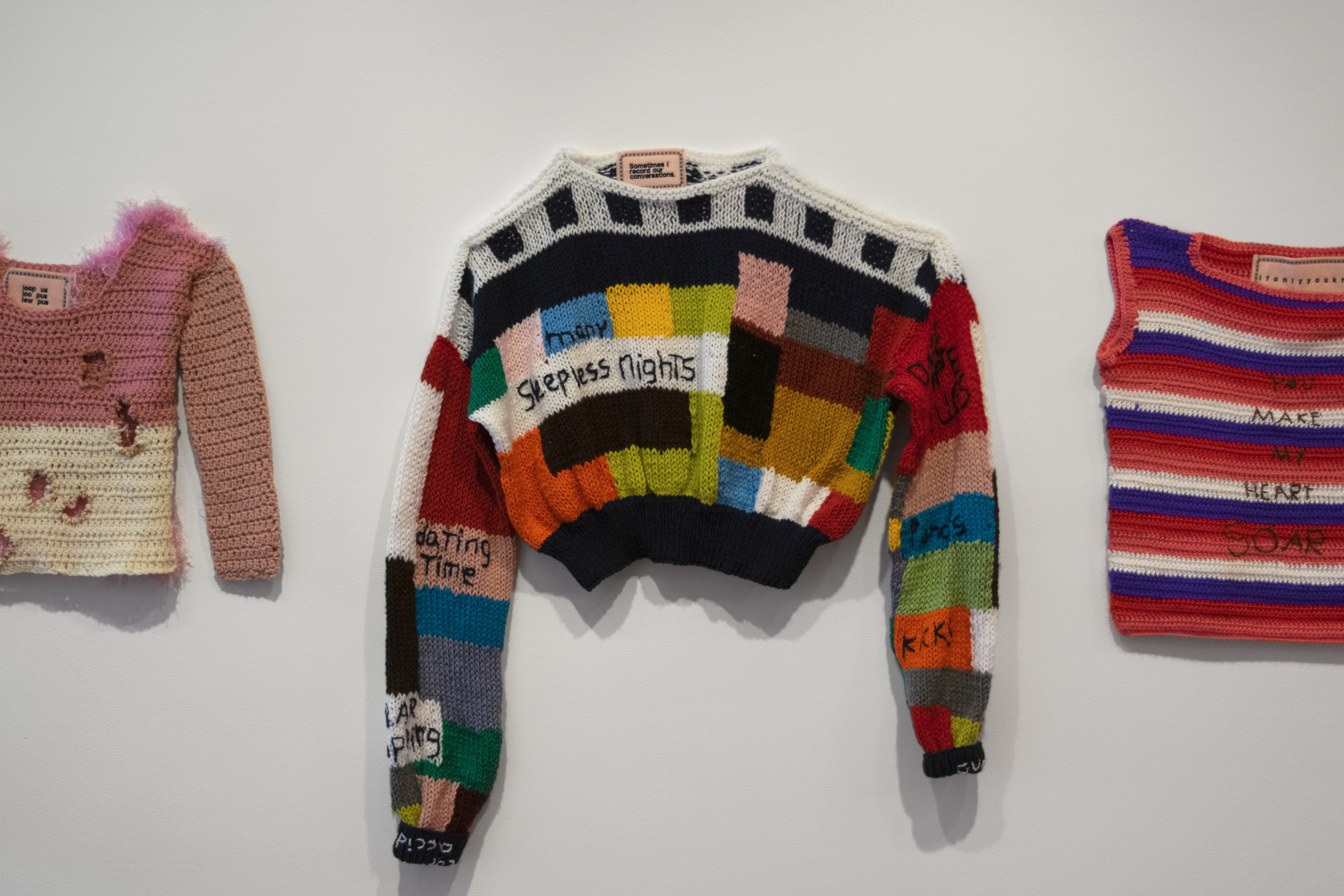


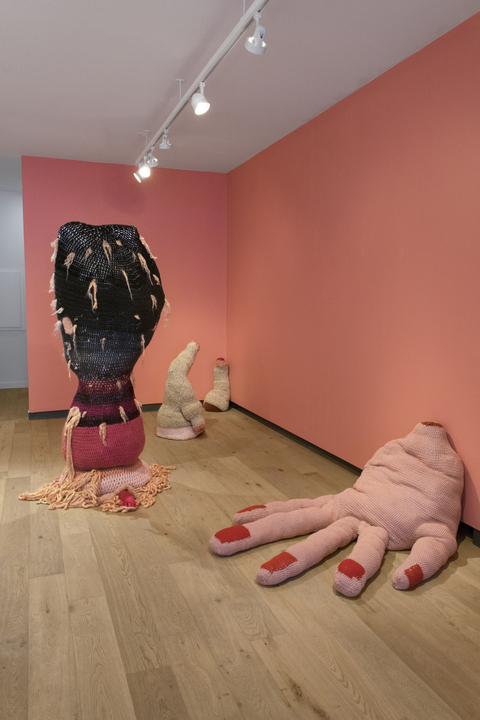
Biographies /
Kasie Campbell is an award-winning visual artist working out of Edmonton, AB. In 2015, she received her Bachelor of Fine Arts, majoring in Sculpture at the University of Alberta. Campbell’s work integrates a variety of mediums, including sculpture, photography, and installation with performative means. Notably, Campbell has exhibited her work throughout Canada and internationally, with exhibitions at Grounds for Sculpture (Hamilton, NJ), Mana Contemporary Jersey City (Jersey City, NJ), Mana Contemporary Chicago (Chicago, IL), Westbeth Gallery (New York, NY) and most recently, in Viljandi, Estonia.
Brittany Ball-Snellen received her MA in art history from the University of Alberta where she specialized in midwifery, the maternal, and child-birthing rituals in Early Modern Italy. These topics continue to extend into her everyday practices as a birth photographer and doula. She explores the traditions and patriarchal interventions into childbirth, and how these approaches persist in contemporary times. Her personal research and interest in gross human anatomy/dissection add a unique insight to her writing about, and close analysis of, body-based art.
Territorial Acknowledgments
TNG gratefully acknowledges its home on the traditional territories of the people of the Treaty 7 region, including the Blackfoot Confederacy (Kainai, Piikani and Siksika), Métis Nation of Alberta Region III, Stoney Nakoda First Nation (Chiniki, Bearspaw, and Wesley), and Tsuu T’ina First Nation. TNG would also like to acknowledge the many other First Nations, Métis and Inuit who have crossed this land for generations.

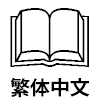

Sweet Nothings: A Celebration of Non-Productivity
Carlan Savage-Hughes
An evening of crafting and trading discarded art/materials!
Bring your own discarded prints, drawings, paintings (etc!) to trade with peers and pick up a new piece for your collection!Swap out some of the art supplies you no longer use for new treasures. All mediums are welcome and the excess will be donated to a local organization.
Or just bring yourself and come be a kid again! Let’s do some crafts!
PROGRAM DESCRIPTION
To address the art world in the present moment, we must acknowledge that it reflects our capitalistic economy in its structure. One of capitalism’s greatest downfalls, its disproportionate distribution of wealth, is echoed within the global art world. Non-commoditized artistic production, that is art for the sake of enjoyment as opposed to art for the sake of capital production, is an action that resists the current art world’s focus on the capital based value of art. Independent arts communities create spaces where marginalized members of the art world are able to collect, connect, and create. The space they hold, though fiscally minute in comparison to the more commercial sector of the art world, is incredibly valuable. How does the strengthening of arts communities allow for more representation? It develops a means for artists to have their needs met and their existence seen, independent from any institutional power.
This evening is an attempt to connect at the margins of current powerful systems through community, accessibility, and fun. We invite you to come, create, and to experience the joy of sharing creations, while considering alternative systems of trade that are less capital driven and bring emphasis to the gift of cooperation and sharing.
ARTIST BIOGRAPHY
From the Treaty 7 land of Calgary, Alberta, Carlan Savage-Hughes is currently a visitor in BC where she is studying visual arts and community engagement at the Emily Carr University of Art and Design. Through interdisciplinary methods of making, she is a painter, writer and sculptor. Her artistic practice is accompanied by an on-going effort to strengthen independent arts communities as an act of resisting the capital-driven values of the art world. Curation has had a key role in this process of creating opportunities. In her artistic practice, Carlan explores the emotional realm as a place of legitimate embodied knowledge.
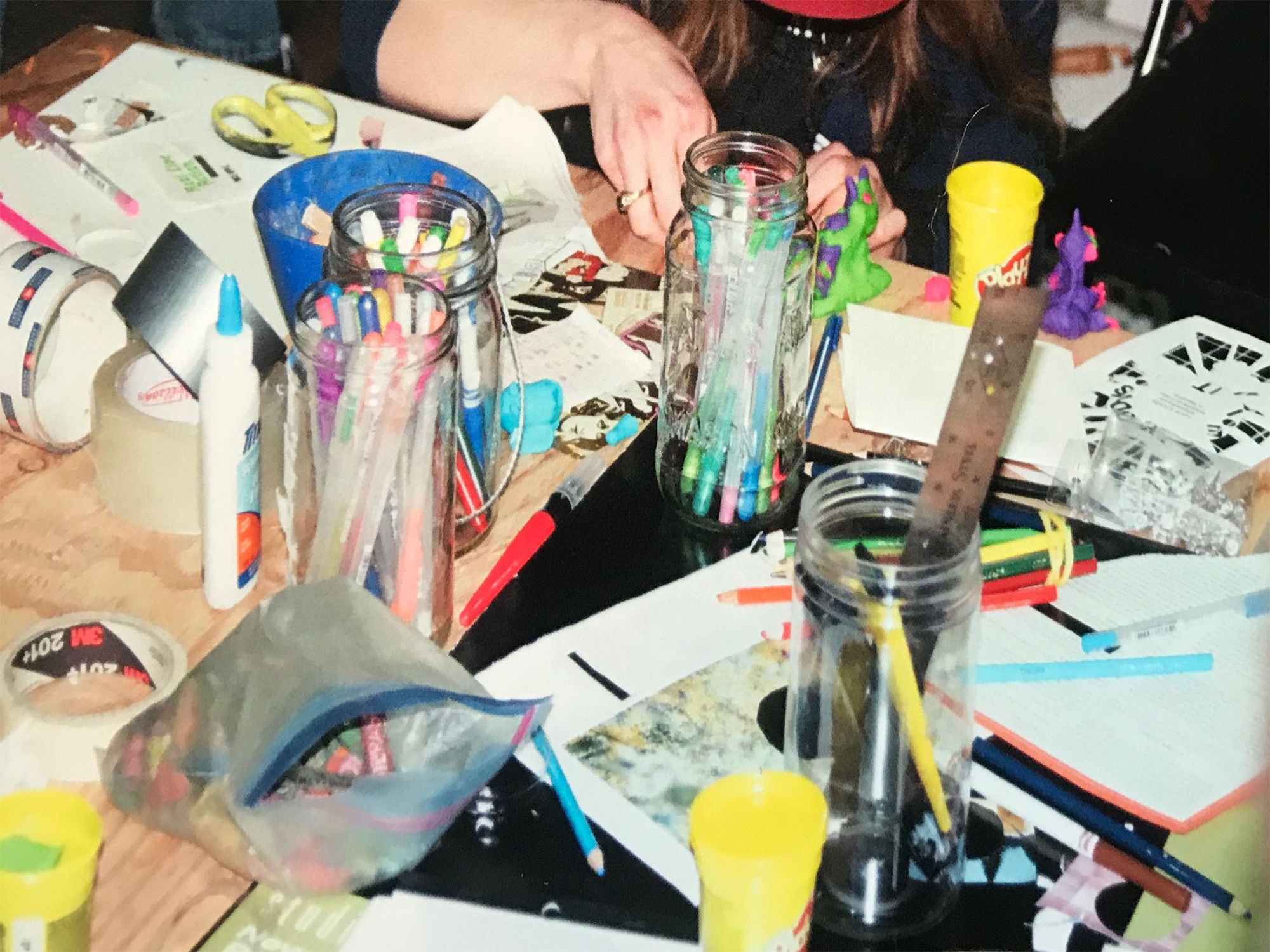
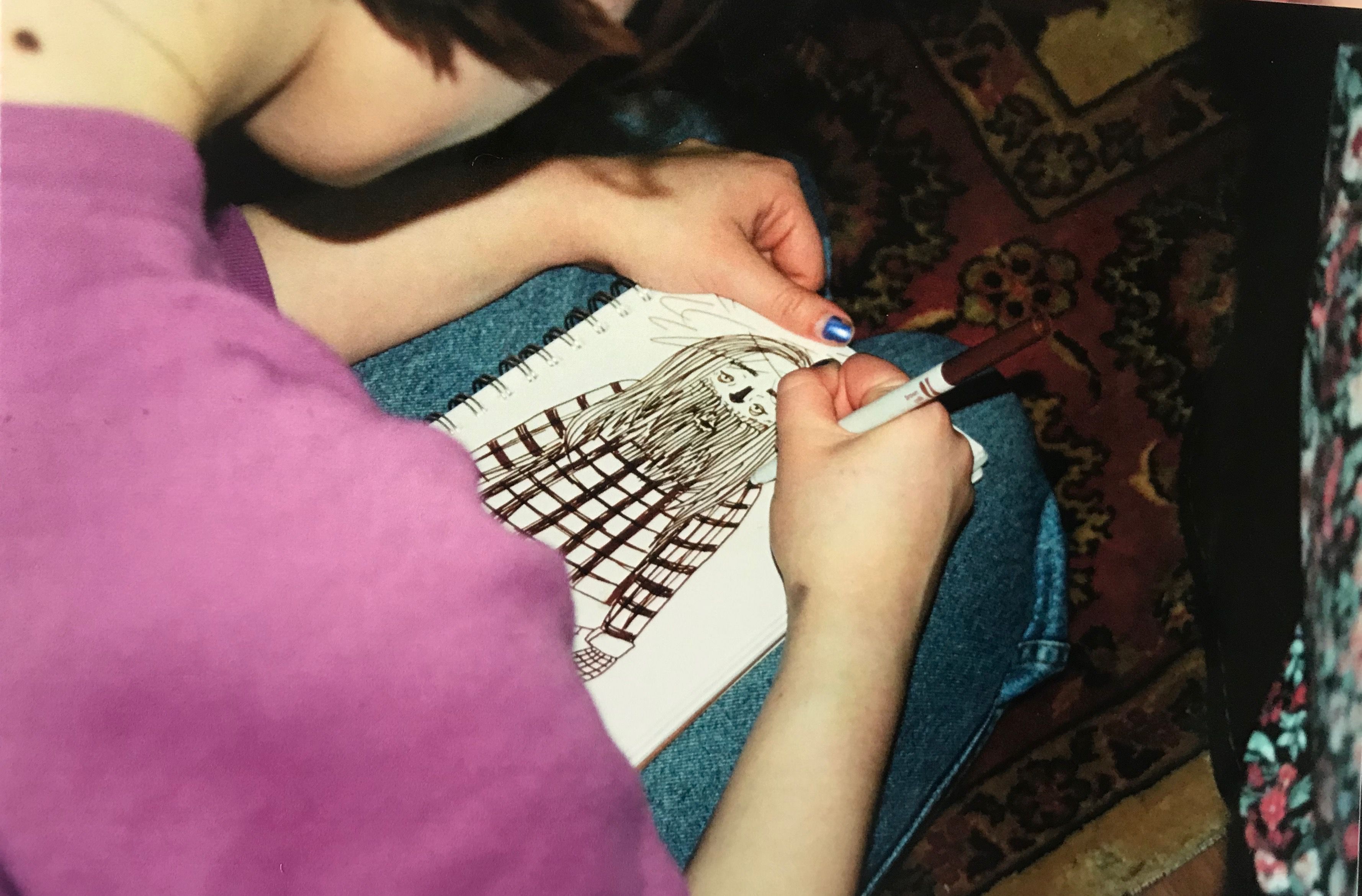

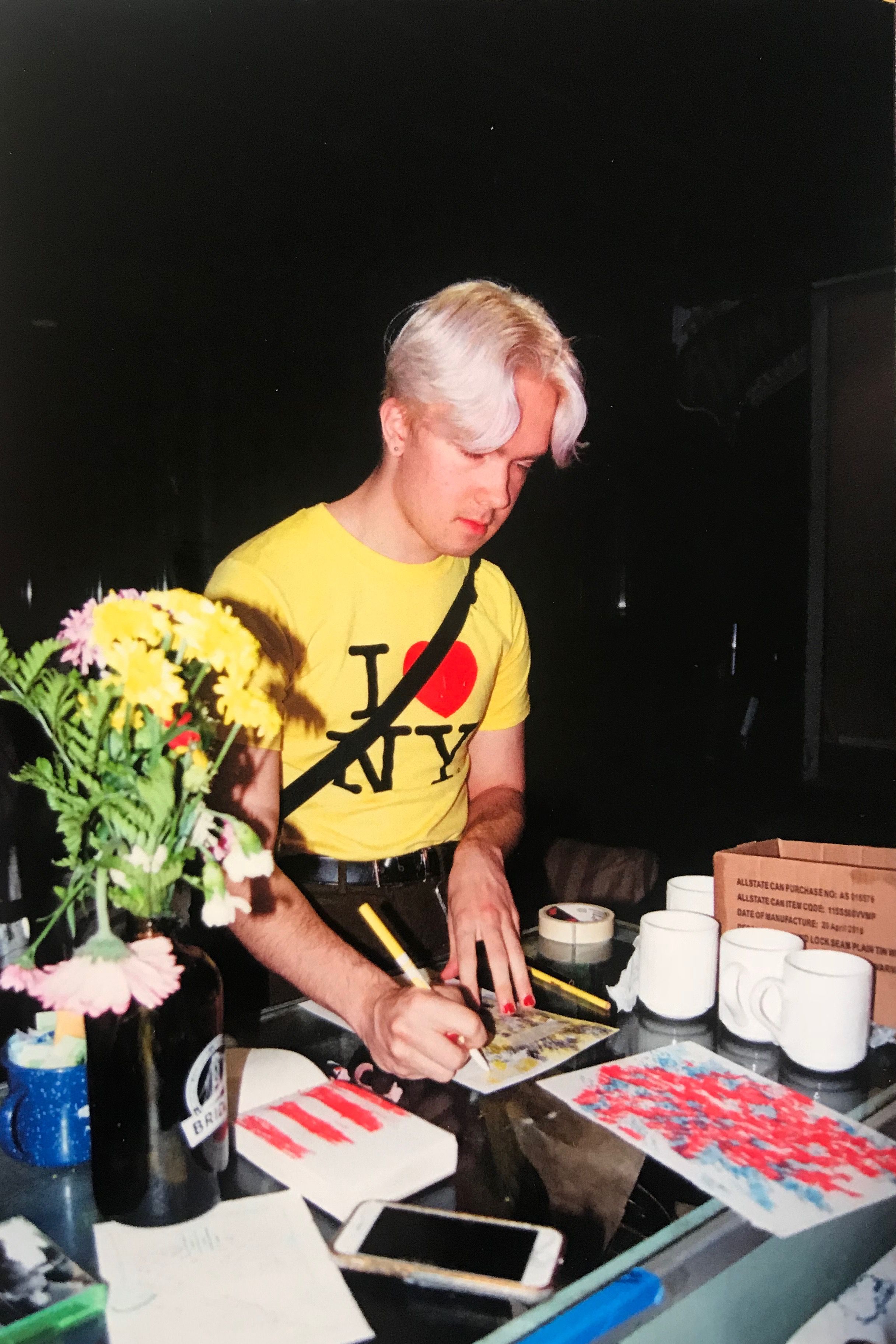

s.C.R.E.A.M
(spooky cash rules everything around me)The New Gallery's Annual Fundraiser
Saturday, November 2, 2019 from 8PM to late.
The New Gallery's Main Space at 208 Centre St S.
It’s that time again! The New Gallery is back with our annual fundraiser, only this time it’s sp0o0oky! TNG presents: s.C.R.E.A.M (spooky cash rules everything around me) on Saturday, November 2, 2019 at our Main Space (208 Centre St. SE) at 8PM!
Dress up, show up, and dance the night away to jams courtesy of DJ Anput! (https://soundcloud.com/4nput/sets/mixes)
- $2 entry / no one will be turned away for lack of funds! :)
- Drinks / refreshments will be available! :)
- There will be an amazing door prize and a costume contest! :)
- $1 per ballot / you choose the winning costume! :)
- Cash / credit / cheques are all accepted! :)
In the ~spirit~ of fundraising, we are launching a very special limited-edition artist multiple. Keep an eye out for that announcement!
A spooktacular thank you goes to TNG Board Member Megan Kirk for lending her incredible screen-printing skills for this multiple, and to Village Brewery for supplying the good stuff!
Donations are always welcome throughout the year, and can be made online at: https://www.canadahelps.org/dn/14227
Spooky cash rules everything around me! See you ghoulies there!
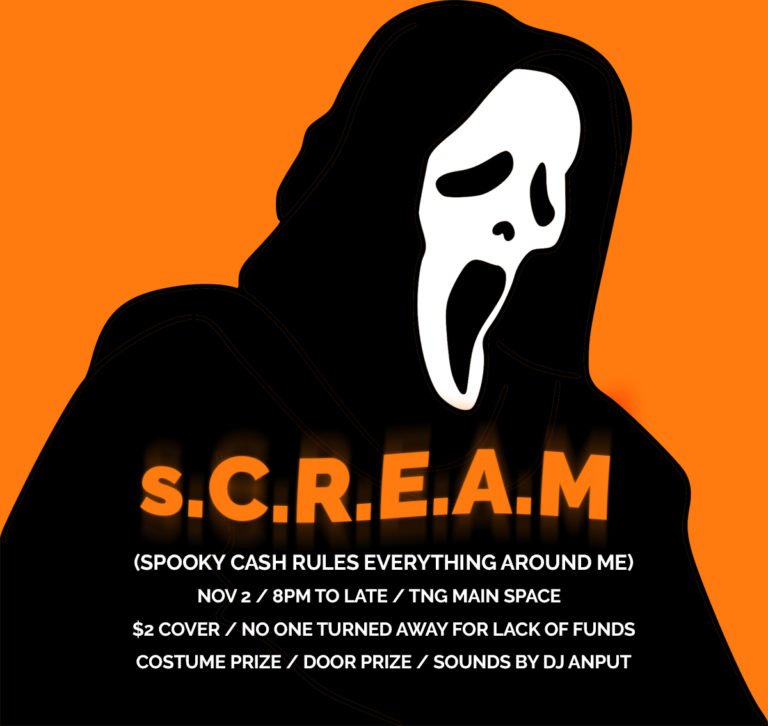
MAINSPACE EXHIBITION /

Michèle Pearson Clarke – Suck Teeth Compositions (After Rashaad Newsome), 2018, installation view.
Suck Teeth Compositions (After Rashaad Newsome)
Michèle Pearson Clarke
September 14–October 26, 2019
An opening reception for members and invited guests will take place on Friday, September 13 at 8PM. Admission is free and all are welcome. The New Gallery is barrier-free with a single-stall, all-gender washroom.
Screening / Saturday, September 14 at 6:30PM at Globe Cinema
In conjunction with this exhibition, Clarke has curated a screening of Karen Chapman’s Lesson’s Injustice (2017, running time of 8 minutes) and Charles Officer’s Unarmed Verses (2016, running time of 85 minutes) on Saturday, September 14 at 6:30 PM at Globe Cinema. Tickets are available through Eventbrite or at the door for $12. Students and current TNG members can purchase tickets for $10. All proceeds from this screening will go towards supporting TNG’s future programming and operations.
Exhibition Description /
In Shade Compositions (2005-present), a series of live performances and videos, the African-American artist Rashaad Newsome explores issues of Black authorship, appropriation, identity and belonging by conducting choirs of women (and sometimes, gay men) of colour who snap their fingers, smack their lips, roll their eyes, and cock their heads, creating expressive linguistic symphonies out of the nonverbal gestures and vocalizations of African-American women. Suck Teeth Compositions (After Rashaad Newsome) (2018) is a three-channel video and sound installation that both responds to and extends this inquiry by focusing on sucking teeth, an everyday oral gesture shared by Black people of African and Caribbean origin and their diasporas, including those of us who live here in Canada.
Referred to variously as kiss teeth, chups, steups, and stchoops, to suck teeth is to produce a sound by sucking in air through the teeth, while pressing the tongue against the upper or lower teeth, with the lips pursed or slightly flattened. West African in origin, this action is used to signify a wide range of negative affects, including irritation, disapproval, disgust, disrespect, anger and frustration. Given that representations of African-American Blackness dominate and define mainstream understandings of the Black experience, when it comes to anti-black racism, most white Canadians are allowed to feel comfortable and are supported in their comfort by the historical and ongoing narratives of “not me,” “not us,” “only them, down there.” Suck Teeth Compositions (After Rashaad Newsome) is a response to the frustrations of living within this denial, and an expression of the anger and pain that many Black people often experience living in Canada, where we are always assumed to be better off, if not completely free of racism.
Exhibition Text /
Like any child of Caribbean parents, sucking my teeth was something I came by naturally. Socialized perhaps by osmosis, I learned what circumstances called for such a response and to whom I dared never respond that way. Otherwise known as “kissing teeth” (or “chups,” “steups,” and “stchoops,” which mimic the noise the gesture produces), the sound—a tongue pressed against teeth behind separating pursed lips through which a sharp stream of air is sucked—reproduces a hiss similar to, but far more critical than, the slow opening of a carbonated drink in a plastic bottle. Sucking teeth is the sonic gesture of struggle and defiance. Of flippant frustration, hence its often requisite concealing. An open proclamation of exasperation and reluctant restraint. When brave, it is a direct challenge. An oral archive that draws on its West African routes and diasporic dispersal, thinly veiled but opaque enough to persist through centuries of genocide and ethnic cleansing. A dialectical song of subalternity and outer-worldly survival. Potentially anthemic.
Michèle Pearson Clarke’s Suck Teeth Compositions (After Rashaad Newsome) has woven this oral and aural revolt into a chorus of provocations. Inspired by Rashaad Newsome’s Shade Compositions (2005-present), in which the artist renders Black women and gay men’s paralinguistic gestures into orchestral comments on questions of identity and agency, Clarke’s Suck Teeth taunts the Canadian nation-state and its gaggle of anti-Black cultural institutions with a large scale three-channel video installation documenting the very Black presence they have so ardently sought to absent (to borrow from Rinaldo Walcott).
First showcased as a part of the travelling exhibition, Here We Are Here: Black Canadian Contemporary Art, the work emerges from and responds to the question: “What is the Black Canadian presence and history in our country?” Suck Teeth intervenes with audible and visual irritation, iteratively expressed individually and in unison, sequentially and all at once. Clarke’s repositioning of this long-existing oral gesture within a new context decidedly speaks to a people and a history that Canada has made invisible—or hypervisible—for the purposes of racial discrimination, state violence, and strategic positioning as an exceptional example of “Black excellence.” Following a familiar thematic that now spans her work—see All That’s Left Unsaid (2014) and Parade of Champions (2015)—Clarke utilizes rhythm and repetition to blend soundscapes into language that, in all cases, provide an essential comment on the insufficiency of words.
In “Interview with an Empire,” from her most recent offering Bla_k: Essays and Interviews, M. NourbeSe Philip writes of her “profound distrust of language” (54). A distrust born of an intimate understanding of the world-forming work of language, its colonial origins and uses, its insufficiencies, its bankruptcy. Philip explains,
“After all, this was a language that the European forced upon the African in the New World. So that the exploitative plantation machine could be more efficiently run. It was a language of commands, orders, punishments. This language—english in my case, but it applies to all the languages of those European countries involved in the colonialist project—was never intended or developed with me or my kind in mind. It spoke of my non-being. It encapsulated my chattel status. And irony of all ironies, it is the only language in which I can now function.” (55)
Looking for a way out—or better yet, through—Philip calls for the transformation of language through ‘decontamination.’ Philip demonstrates this most notably in Zong!, her seminal work that revisits the text from the legal ruling on the 1781 Zong ship massacre. The ship’s captain ordered 150 enslaved Africans be thrown overboard in a quest to collect insurance monies—the court found in his favour—and Philip deconstructs the text from the ruling by breaking down words into distinct entities that call forth new meanings through sound, when read aloud, or sight, with their non-linear placement on the page. The process ruptures sign, signifier, and signified, looking for exposure in the breaks and spaces. This exposure links past and present, and like Suck Teeth, makes way for language unsurrendered.
To understand Suck Teeth is to understand the silencing of Black Canadians. When we speak, we are not heard. Clarke’s intervention and Philip’s reflections raise Gayatri Spivak’s question: “Can the subaltern speak?” When viewing Suck Teeth, one must also ask: “Can I hear?”
– Nataleah Hunter-Young
Further Reading:
Philip, M. NourbeSe. Bla_k: Essays and Interviews. Book Thug, 2017.
Philip, M. NourbeSe. Zong! As told to the author by Setaey Adamu Boateng. Mercury Press, 2018.
Spivak, Gayatri. “Can the Subaltern Speak?” Colonial Discourse and Post-Colonial Theory: A Reader, edited by Patrick Williams and Laura Chrisman, Colombia University Press, 1994.
Walcott, Rinaldo. Black Like Who? Writing Black Canada. Insomniac Press, 2003.
Biographies
Michèle Pearson Clarke is a Trinidad-born artist, writer and educator who works in photography, film, video and installation. Using archival, performative and process-oriented strategies, her work explores the personal and political possibilities afforded by considering experiences of emotions related to longing and loss. Her work has been featured in exhibitions and screenings at the Art Gallery of Nova Scotia (2019), LagosPhoto Festival (2018), Gallery 44 Centre for Contemporary Art (2018), Le Musée des beaux-arts de Montréal (2018), ltd los angeles (2018), and Museum of Contemporary Art Chicago (2016). Based in Toronto, Clarke holds an MSW from the University of Toronto, and in 2015 she received her MFA in Documentary Media Studies from Ryerson University, where she is currently a contract lecturer. Most recently, Clarke has been awarded the Toronto Friends of the Visual Arts 2019 Finalist Artist Prize, and she has been appointed to serve a three-year term as the second Photo Laureate for the City of Toronto.
Nataleah Hunter-Young is a film programmer, writer, and PhD Candidate in Communication and Culture at Ryerson and York Universities. She has supported festival programming for the Toronto International Film Festival, the Hot Docs Canadian International Documentary Festival, and the Durban International Film Festival in South Africa. In 2019, Nataleah became a Pierre Elliott Trudeau Foundation Scholar which will support her ongoing doctoral research on late representations of mediated police brutality in contemporary art. She was born and raised in community.
Territorial Acknowledgments
TNG gratefully acknowledges its home on the traditional territories of the people of the Treaty 7 region, including the Blackfoot Confederacy (Kainai, Piikani and Siksika), Métis Nation of Alberta Region III, Stoney Nakoda First Nation (Chiniki, Bearspaw, and Wesley), and Tsuu T’ina First Nation. TNG would also like to acknowledge the many other First Nations, Métis and Inuit who have crossed this land for generations.
The New Gallery would like to thank Globe Cinema for their support of this public program.
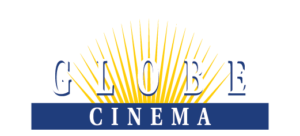


MAINSPACE EXHIBITION /
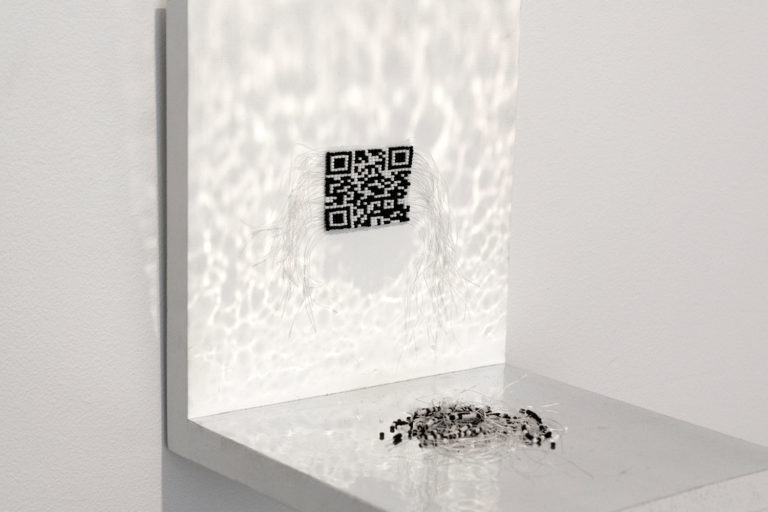
Carrie Allison – An Identity Metaphor, 2017, beads on pine with reflective surface.
These Threads Hold Memory
Carrie Allison
July 6–August 10, 2019
Exhibition Description /
These Threads Hold Memory brings together works of art that decenter western notions of information and data by Indigenizing western information paradigms. This exhibition utilizes beading as a tool to share statistics, thoughts, and contemplate stereotypical and perhaps unknown narratives. By mixing what is known as “technology” such as websites, QR codes, and video with beadwork, this exhibition asks the viewer to recenter and value Indigenous histories and ways of knowing. Carrie Allison uses beading in her practice to connect to ancestors, to gain insight with Indigenous epistemologies and methodologies. Beading is ceremony, a meditative practice that centers oneself in the present, a repetitive gesture that asks the maker to consider the content of the object being made. Beading is, and always has been, a tool for engaging Indigenous ways of knowing and being. It’s not about the individual bead; it’s about the collective, the whole. Through labour intensive methodological processes, this exhibition situates Indigenous language, visual culture, and knowledge as legitimate technologies.
Exhibition Text /
These Threads Hold Memory features beaded works by Carrie Allison that explore knowledge and knowledge mobilization. Misinformation about Indigenous communities and technology has been internalized as truth within Canadian understanding. Allison joins the ranks of artists such as Barry Ace and Skawennati, whose art practices use electronics and the Internet to carve out space for Indigenous voices as well as affirm that Indigenous peoples have always been technologically inclined. Like many other aspects of Indigenizing, first we must unlearn colonial narratives around contact.
150 is a series of loom-beaded objects that play with the appeal of interactive technology; scanning codes, clicking numbers, and finding information on the Internet. This style of research relates to the process of beading and storytelling, and brings those elements to a gallery space. Beading, when done in groups, revolves around jokes, cackles and the sharing of information or ideas on relevant topics. Beading, like all artwork, isn’t done in a vacuum and 150 presents those layers of (underappreciated) knowledge in a medium that is recognized and holds cultural value; via electronics.[1]
Allison, like many Indigenous folks (myself included), have to work for cultural knowledge which continues to be suppressed through genocidal acts sanctioned by nation-state strategies; as a result, knowledge isn’t something that can be commodified and it’s through the generosity of our community that we can receive these gifts. Identity Metaphor and Kiskisohcikew document the process of learning Cree through repetition, as well as the struggle for access, with these language lessons being delivered over the phone.
The Western-European relationship to knowledge is defined by the “enlightenment” period,[2] that everyone has a right to “know” the answer and that emotional investment in the subject reduces the ability to be impartial. This is compounded by the fact that gendered relationships expect womxn and underrepresented communities to share knowledge with no reciprocation and that they don’t know how to properly utilize it. An example of this was the art movement Primitivism;[3] This also justified residential schools, anthropologists entering communities to take people’s belongings, and the settler resistance to prioritizing oral histories.
Recently, there has been recognition that Indigenous communities have always had technology and important knowledge. Articles have circulated where cells of trees are the same as the art of the local community, sage is medicinal, Indigenous peoples have been in North America and the sites could be located via oral histories [FH22], and so on. In Allison’s work, Book Intervention: Library of misrepresentation and False Narratives they subvert the adage that published information is truth. Through redacting terms by blocking them out with black beads,the figures in the story are re-centred, in this case the depiction of a Western cowboy is covered with Allison’s intervention of a beaded bison.. Using beads as the tool to reframe, and even bind the books shut, Allison is emphasizing the ongoing challenge Indigenous knowledge systems pose to foundations of western-European thought.
The work within These Threads Hold Memory explores a conceptual trifecta; the relationships between storytelling and electronics; the validity of both Indigenous epistemologies and western-European thought; and the relationship between Indigenous technology and western-European thought. This essay isn’t to say that western-European knowledge systems don’t have value, it’s that they aren’t without their flaws. Once structures are willing to examine their shortcomings and acknowledge Indigenous epistemologies and systems as equal, everyone will benefit.
–Franchesca Hebert-Spence, BFA MA
Further Reading:
Nicholas, George. “When Scientists “Discover” What Indigenous People Have Known For Centuries.” Smithsonian.com. February 21, 2018. Accessed June 5, 2019. https://www.smithsonianmag.com/science-nature/why-science-takes-so-long-catch-up-traditional-knowledge-180968216/.
Wang, Jenica. “Primitivism: A Study of Cultural Appropriation.” Omeka RSS. Accessed June 5, 2019. http://omeka.wustl.edu/omeka/exhibits/show/primitivism.
–
[1] I use the word electronics instead of technology because the assumption that electronics are synonymous with technology invalidates forms of technology or knowledges that are materials other than electronics.
[2] The Enlightenment period occurred during the 18th century and is the foundation of all Western-european scientific processes. It affects how humanities and otherwise conduct research and was compounded by colonialism.
[3] Primitivism was an art movement where artists used imagery from various colonized cultures to depart from representational imagery. Artists from the communities whose aesthetics were appropriated were not welcomed into the art community.
Biographies
Carrie Allison is an Indigenous (Cree/Métis, European descent) visual artist, writer, arts administrator and educator, born and raised on unceded and unsurrendered Coast Salish Territory (Vancouver, BC). Situated in K’jipuktuk since 2010, Allison’s practice responds to her maternal Cree and Métis ancestry, thinking through intergenerational cultural loss and acts of resilience, resistance, and activism, while also thinking through notions of allyship, kinship and visiting. Allison’s practice is rooted in research and pedagogical discourses. Her work seeks to reclaim, remember, recreate, and celebrate her ancestry through visual discourses. Allison holds a Master’s in Fine Art, a Bachelor’s in Fine Art, and a Bachelor’s in Art History from NSCAD University.
Franchesca Hebert-Spence’s first engagements with art were as a maker, creating an empathetic lens within her curatorial praxis. Her grandmother Marion Ida Spence was from Sagkeeng First Nation, on Lake Winnipeg, Manitoba. Kinship and its responsibilities direct the engagement she maintains within her community and, by facilitating a plurality of voices, complicates oversimplified narratives. The foundation of this practice stems from Ishkabatens Waasa Gaa Inaabateg, Brandon University Visual and Aboriginal Arts program. She is an Adjunct Curator, Indigenous art at the Art Gallery of Alberta and Independent curator.
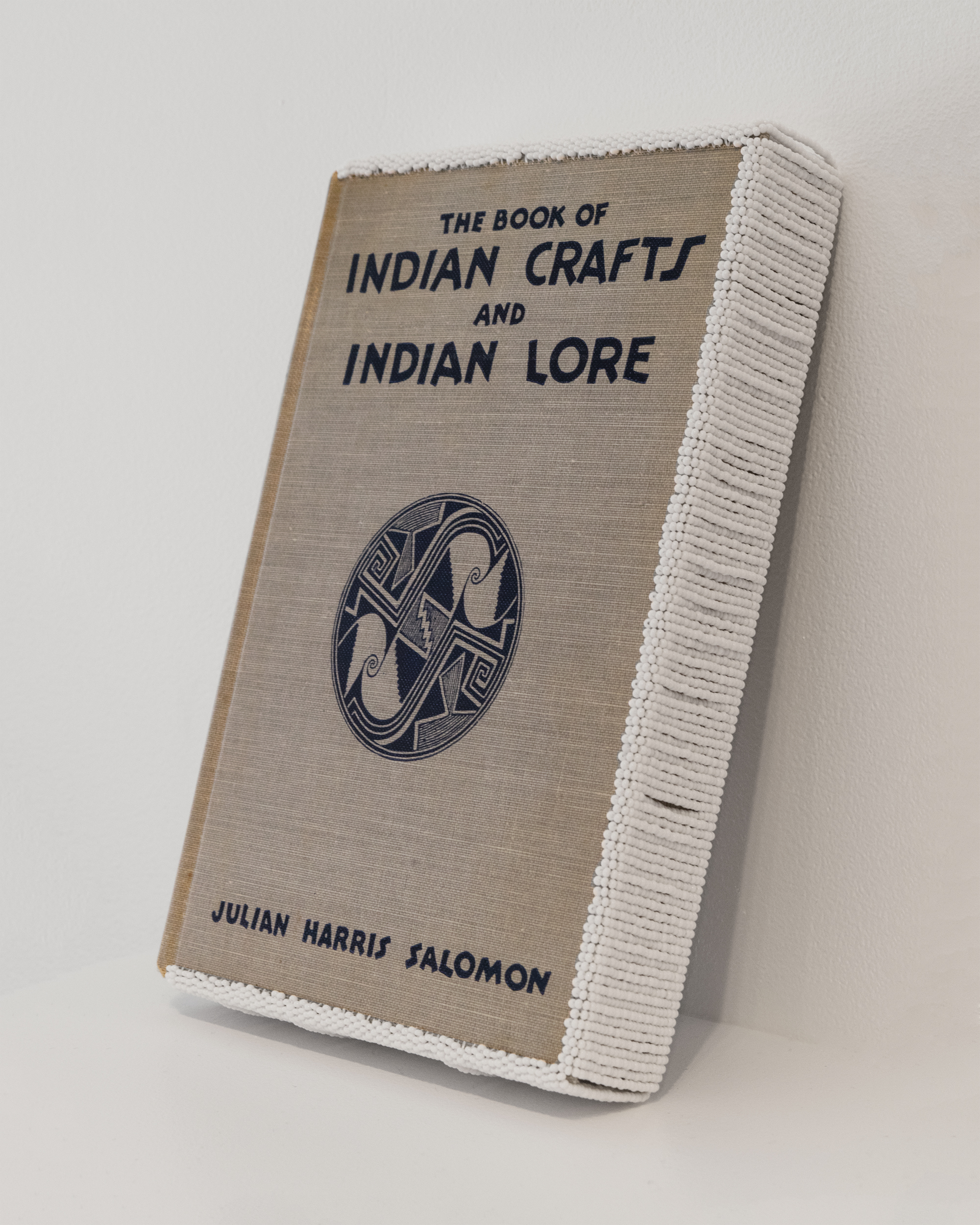
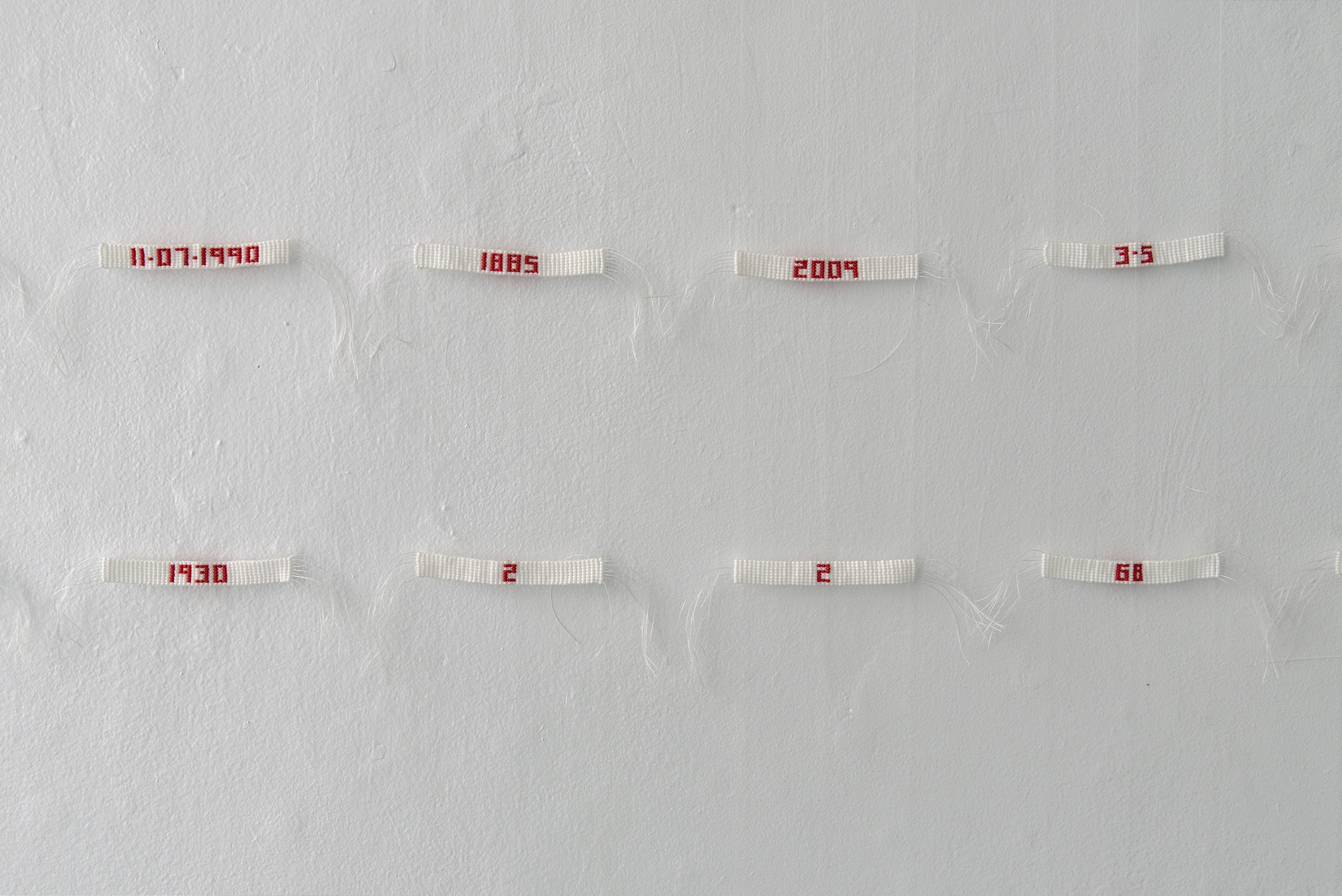
Territorial Acknowledgments
TNG gratefully acknowledges its home on the traditional territories of the people of the Treaty 7 region, including the Blackfoot Confederacy (Kainai, Piikani and Siksika), Métis Nation of Alberta Region III, Stoney Nakoda First Nation (Chiniki, Bearspaw, and Wesley), and Tsuu T’ina First Nation. TNG would also like to acknowledge the many other First Nations, Métis and Inuit who have crossed this land for generations.


MAINSPACE EXHIBITION /

Kasia Sosnowski – SELF!HELP!
The Topography of Bodily Sentiments
Ambivalently Yours, Kablusiak, Rachel Livedalen, and Kasia Sosnowski
November 9—December 22, 2018
Exhibition Description
The Topography of Bodily Sentiments exists at the convergence of four practices, each ethically entangled with bodies host to precarious labels. Denying simple synthesis, instead opting for tactics of revision and re-envisioning, the discreet methods and aesthetic concerns of the artists — Ambivalently Yours, Kablusiak, Rachel Livedalen, and Kasia Sosnowski — stand apart from one another. The linkage in the exhibit lies somewhere in between; a unifying disenfranchisement, stemming from the socio-cultural forces that seek to shape their bodies, erase their voices, or distort their outputs. “The Topography of Bodily Sentiments” is a site for the reaffirmation of identity, the connection of the emotional to the physical, and the resistance of bodies in the face of oblique, ever-changing, and often contradictory standards.
Exhibition Text
The artists present in The Topography of Bodily Sentiments are seemingly connected by a moment of mutual discovery: they are not who this world thinks they are. They aren’t pristine. They aren’t dead. They aren’t meant to choose anything for certain, and they aren’t as familiar to their forms as you say they are. The Topography of Bodily Sentiments addresses these intrusive distortions, enforcing different understandings, bodily, experientially and socially. The artists present set themselves to the tasks of re-definition in the face of oblique, ever-changing, and often contradictory standards.
Part archive of resistance, part high femme techno-dimensional rift, Ambivalently Yours’ work is a generative platform extending from the digital space to invade the gallery and your heart. The pink hued installation provides a place for viewers to manifest, engage with and submit their own experiences from in between the decisions forced upon them. Participants should find themselves in good company, both in the text of the work and in the interactions invited; Hundreds of drawings, fueled by a transcriptive practice, re-mediating scores of online correspondence about being resolute in one’s indecision, serve as the wallpaper to a physical economy of emotional sentiment. Taking a final form of endearing mass portraiture, Ambivalently Yours reaches beyond themself to act as a conduit for the emotions and experiences of others.
Kablusiak presents us with a more introverted kind of dialogue, revolving around the ongoing stress of socio-cultural disempowering of lived experience on an othered existence. A comparison is drawn between a large-scale, nude figural work, the face obscured by floral cloth; a grid of sometimes humorous, often sad, drawings; and a beaded statement: “You can mourn someone who is still alive.” A bedrock of sentiment provides the basis for the connection between the commanding quality of the faceless nude and the minimalist nature of the drawings. I get the sense that it’s hard to be in view, an advocate for a vital, though oft mistakenly framed as static, culture. The socio-cultural mingles with personal anxiety, the result being an installation equal parts conversation around coping and the reality of existing in an Inuk body.
At this point, I’d infer the territory being mapped is an inherently anxious one. A unified sense of disenfranchisement, misrepresentation and a desire for re-interpretation literally draws lines, constitutes dialogues and manifests new understandings of conditions inside and beyond the body. Kasia Sosnowski’s ceramics exist peripherally in the site suggested so far. Plaintive, fragile, and deeply funny, Sosnowski reaches out to viewers with disembodied ceramic limbs. Embracing the indiscreet and intuitive exploration of the body free of coded perception, the tiny beings comprising Sosnowski’s work are vessels brimming with empathy. I think they want to interact with you, but some of them seem pretty fine all on their own. Bypassing the frenetics of anxious interpretive efforts, this work couples directly with the emotional landscape present within The Topography of Bodily Sentiments, deliberately moulding limbs and bodies bent towards strange but earnest ends.
In a corrective measure, and as a sort of catalytic reaction, Rachel Livedalen elevates the decayed cultural forms of classical female sculpture to ecstatic heights by way of trapper-keeper, hard glittering aesthetic alchemy. A feat of Necromancy by way of Lisa Frank stickers, the synthesis between oppressively standardized forms and what is in essence, an extension of 90’s girl-power design, revives and reassembles the expectations of feminine beauty towards more personable ends. Citations intact, Livedalen’s reproductions of stale, academic imagery prompts a new interpretation to stem from the limiting factor of physical beauty. Here, the white surface of Grecco-Roman artifacts are rendered accessible, even relatable, imagined as a canvas for the expression of a certain kind of bodily understanding, chosen by Livedalen over what is taught in academic circles.
The Topography of Bodily Sentiments can be characterized as an attempt to stabilize and nurture a kinder future, one where resistance is a carefully understood activity. Equally carefully, the artists are helping propagate this site for a new discovery, one more focused on the self. They mark boundaries around their particular kinds of knowledge, kindly providing guideposts and pathways, all leading to moments that give form and voice to dissatisfaction with the preconceptions that permeate their experience.
— May G N
Biographies
Under the pseudonym Ambivalently Yours, this Montreal-based artist explores ambivalence within a multimedia web-based practice inspired by her feminist questions and online interactions. Her work aims to highlight the potential for political resistance and emotional empathy that exists within conflicting emotions. Her meticulous online engagement as Ambivalently Yours has resulted in a large social media following and her interactions with her online community directly influence and participate in her practice. Her work has been exhibited in North America, Europe and Australia, shared virally online and featured prominently in media publications, teenage blogs and zines worldwide.

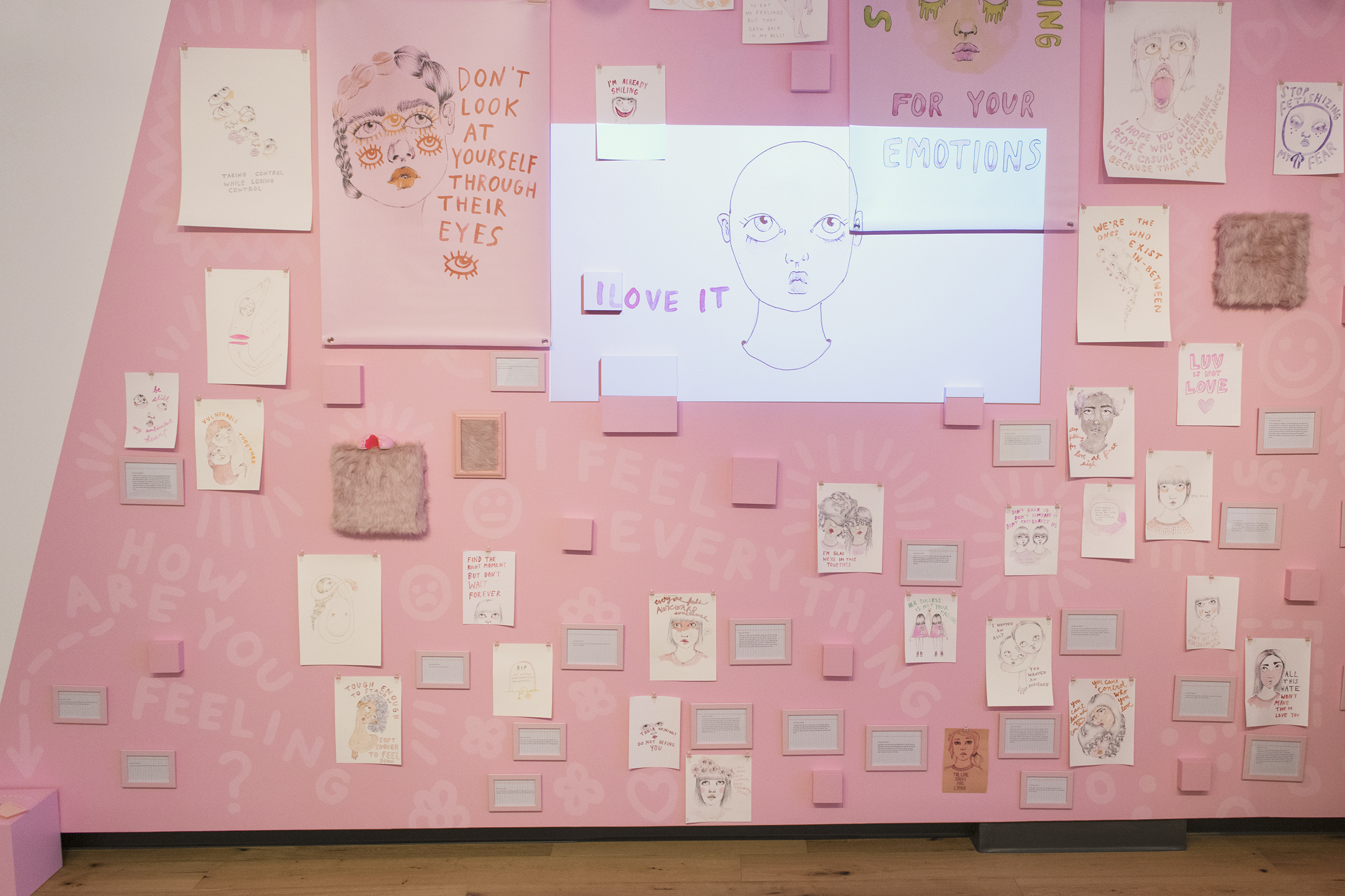
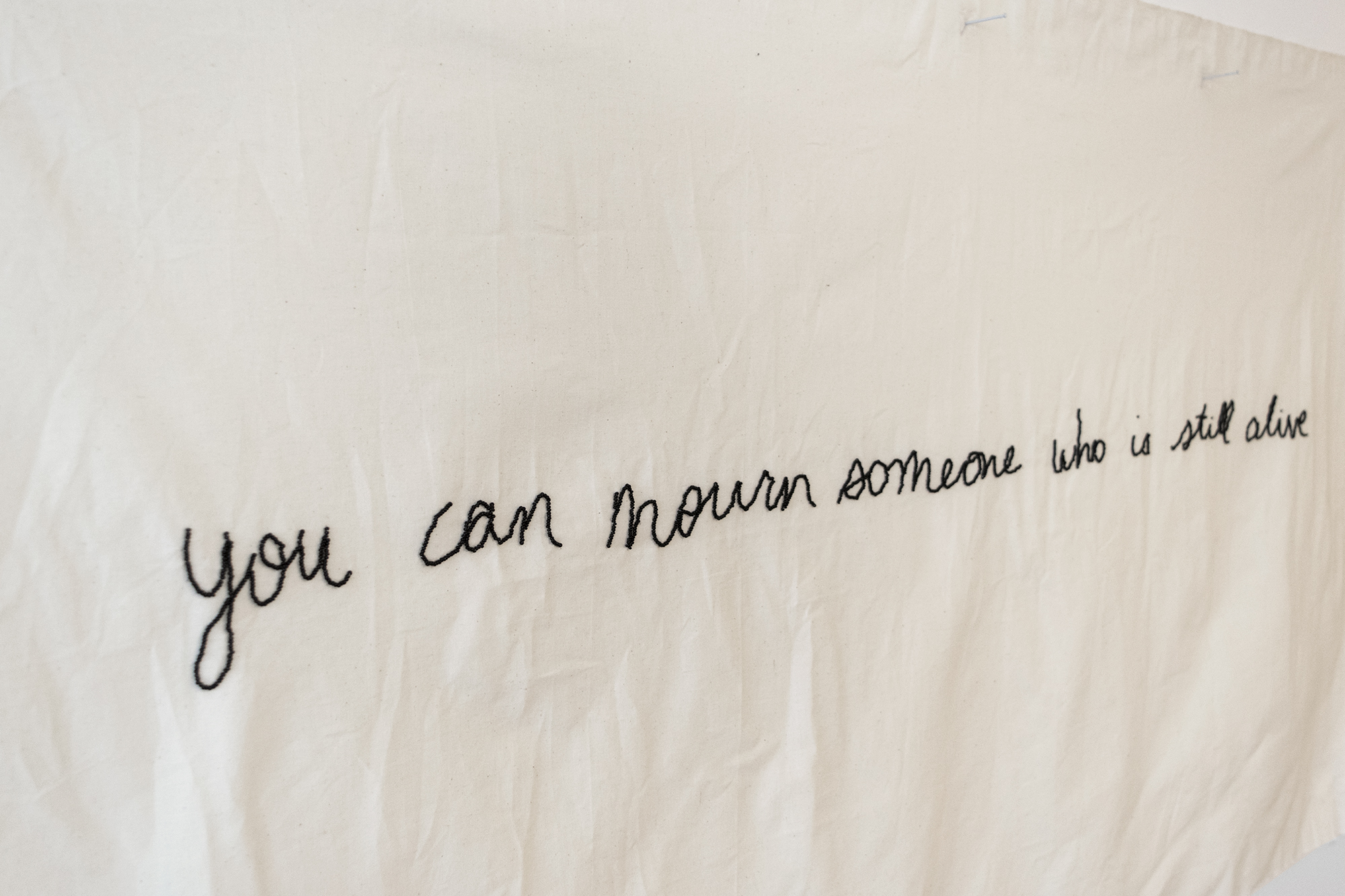
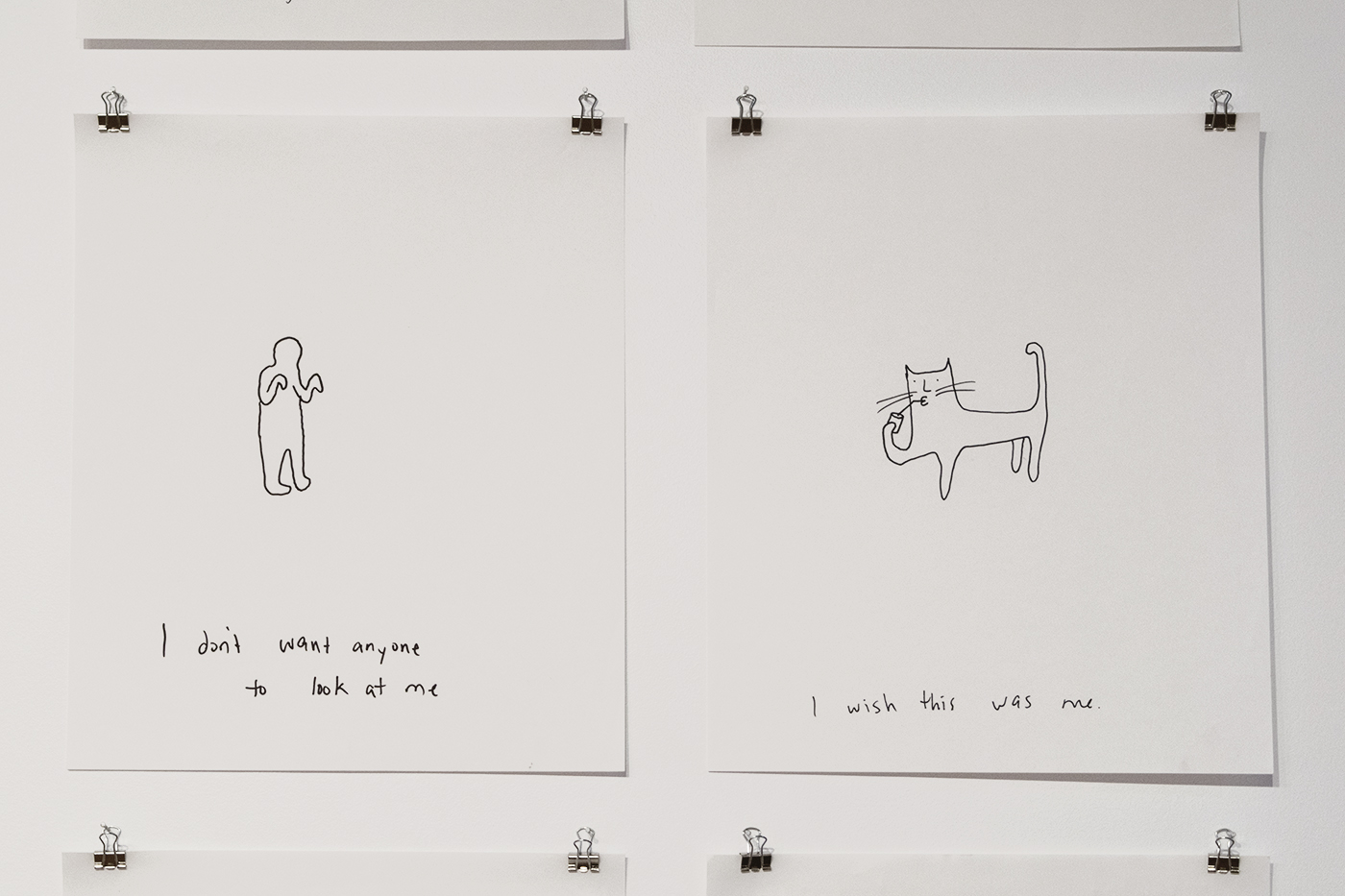
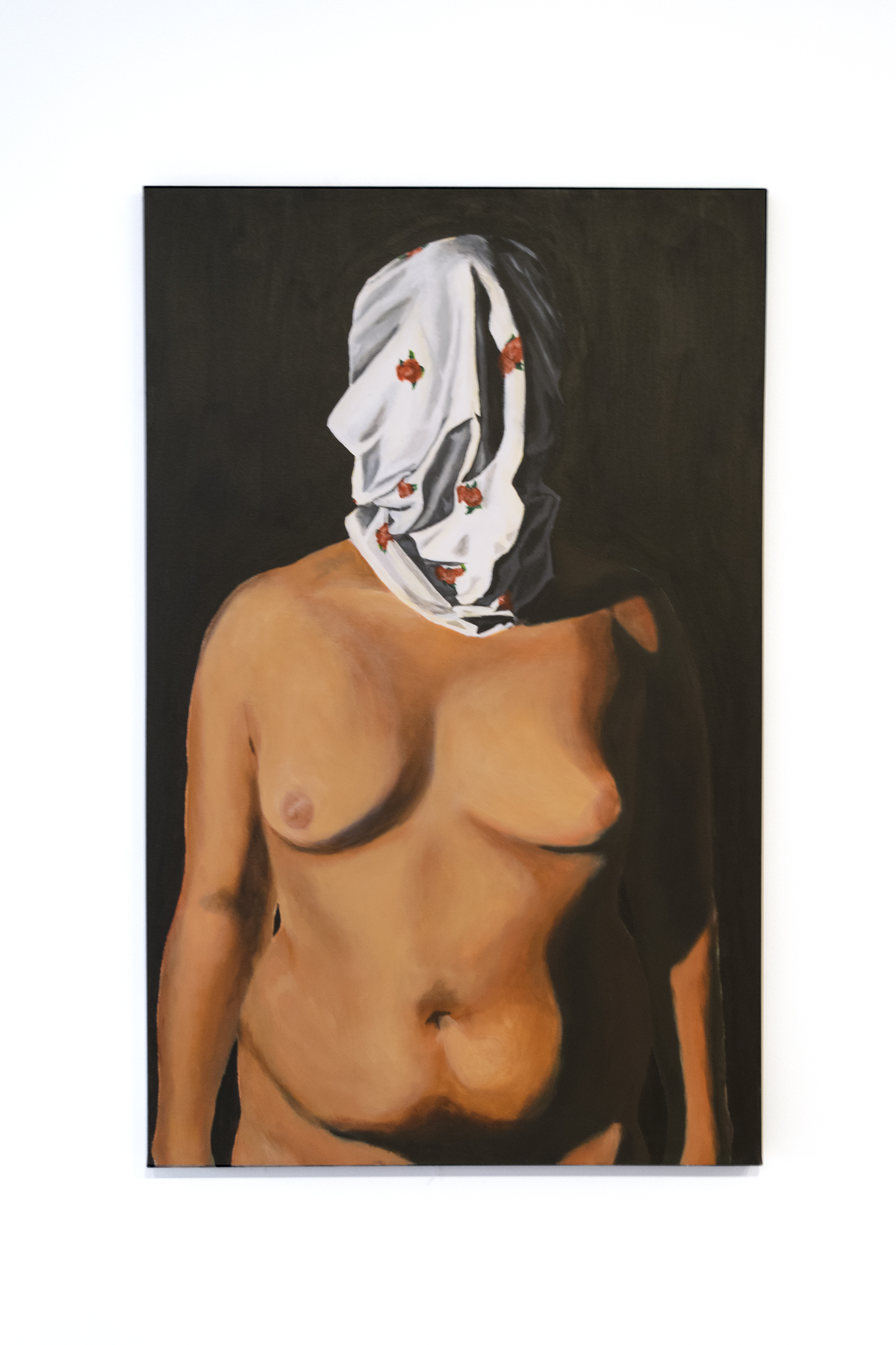
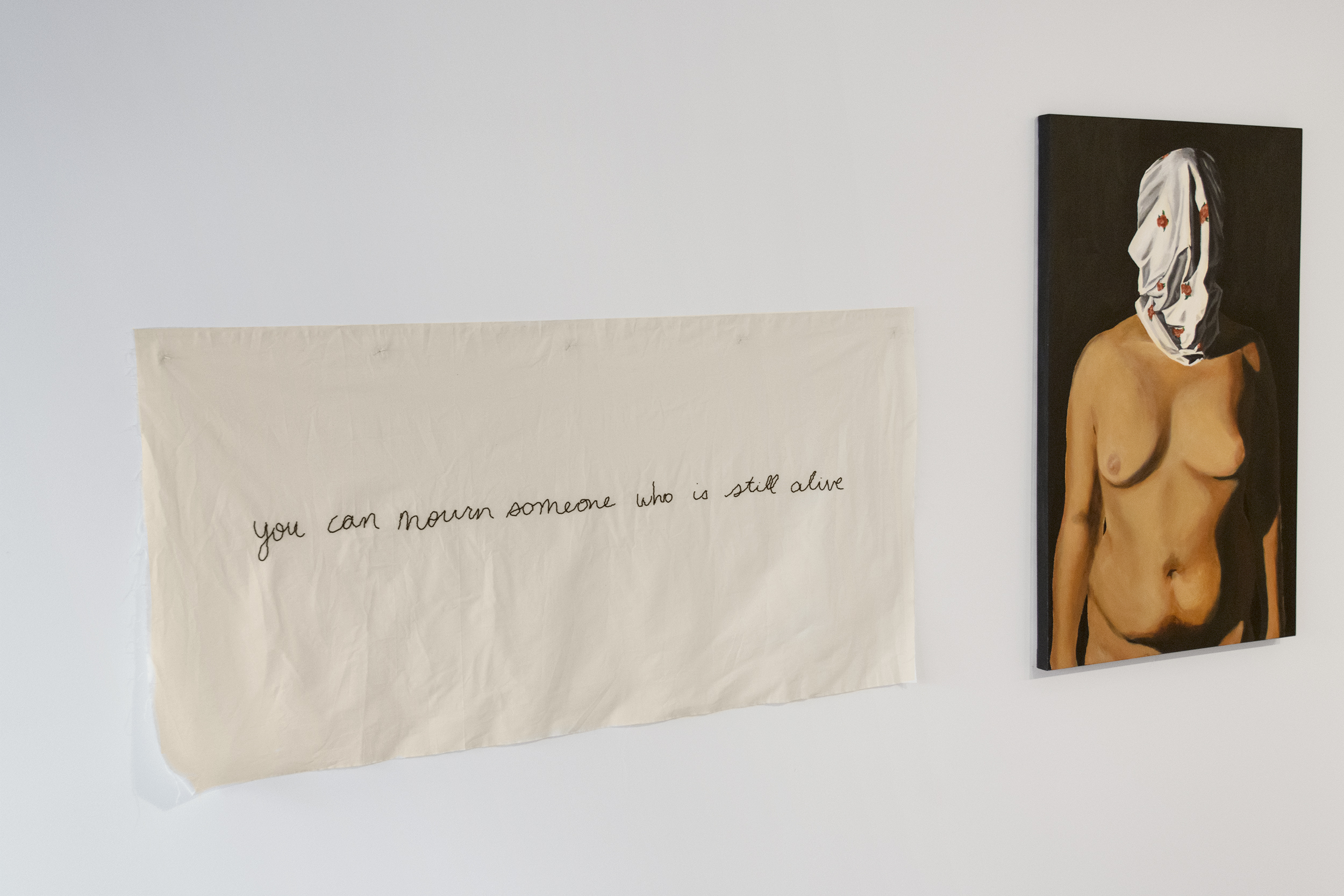
Kablusiak is an Inuvialuk artist and curator based in Alberta and holds a BFA in Drawing from the Alberta College of Art and Design. They recently completed the Indigenous Curatorial Research Practicum at Banff Centre for Arts and Creativity. Kablusiak uses art and humour as a coping mechanism to address cultural displacement. The lighthearted nature of their practice extends gestures of empathy and solidarity; these interests invite a reconsideration of the perceptions of contemporary Indigeneity. Kablusiak is a board member of Stride Gallery (2016-present). Awards include the Alberta Foundation for the Arts Young Artist Prize (2017) and the Primary Colours Emerging Artist Award (2018). They have recently shown work at Art Mûr as part of the Biennale d’art contemporain autochtone (2018) and at the Athens School of Fine Arts as part of the Platforms Project (2018). Kablusiak, along with three other Inuit curators, will be creating the inaugural exhibition of the new Inuit Art Centre in 2020.
Rachel Livedalen grew up in Texas, North Carolina, and Virginia. She earned her BA in Studio Art and Art History from the University of Virginia. Upon completion of her degree, Rachel was awarded the Aunspaugh Fellowship from the University of Virginia to continue her creative research on campus. In 2014 Rachel graduated with an MFA in Printmaking from the University of Iowa. Rachel Livedalen is currently an Assistant Professor of Art at Texas Christian University in Fort Worth, Texas. She has held this position since 2014 and heads the printmaking area. Rachel exhibits her interdisciplinary work widely with recent solo exhibitions in Dallas, Tallahassee, and Kansas City. She also recently received a 2017-2018 Kala Fellowship Award from the Kala Art Institute in Berkeley, CA and was accepted into the 2018 Artist Program at Eastern State Penitentiary in Philadelphia, PA. Her creative research explores contemporary femininity through the lens of past histories and mythologies. Rachel Livedalen is represented by Erin Cluley Gallery in Dallas, TX.
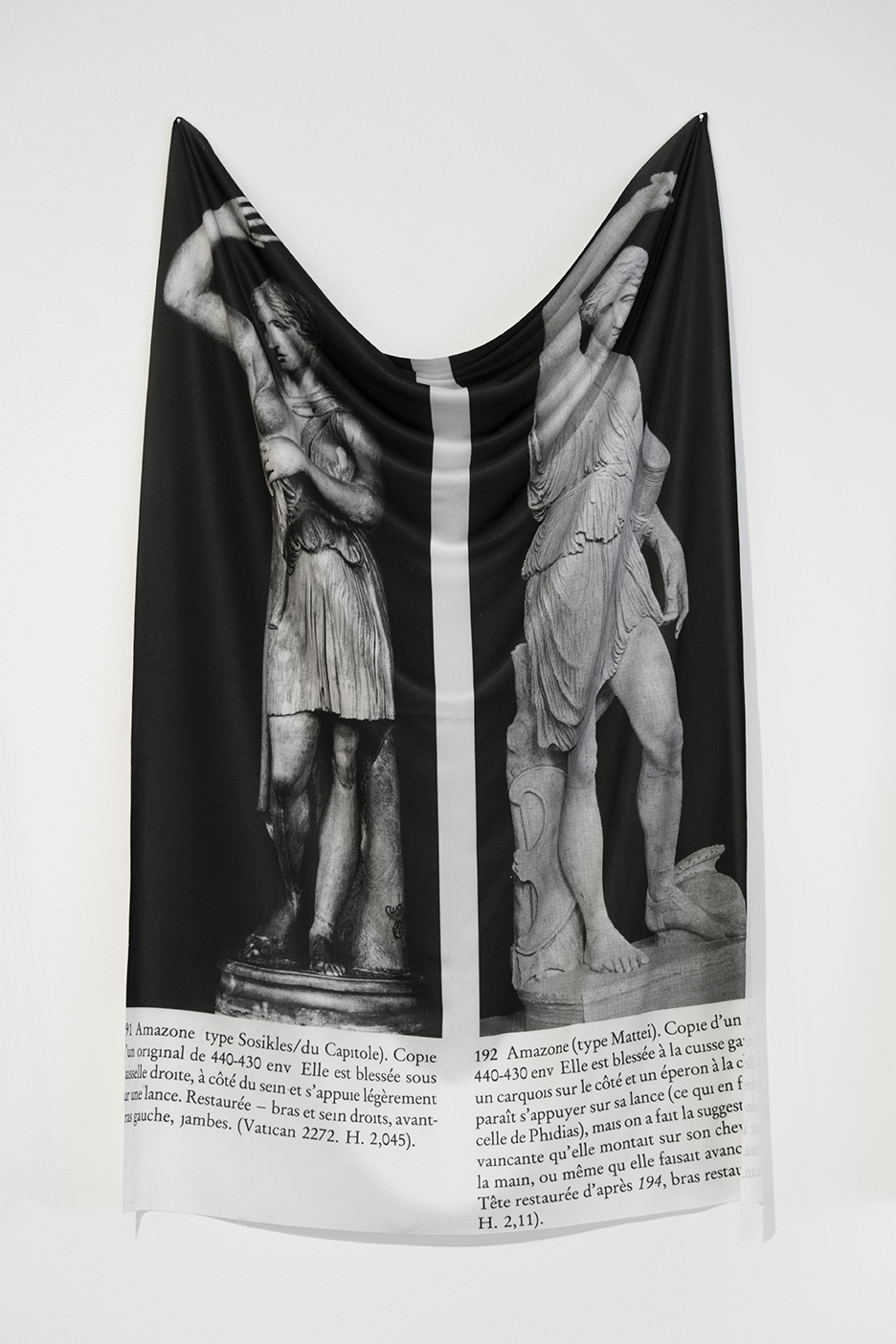

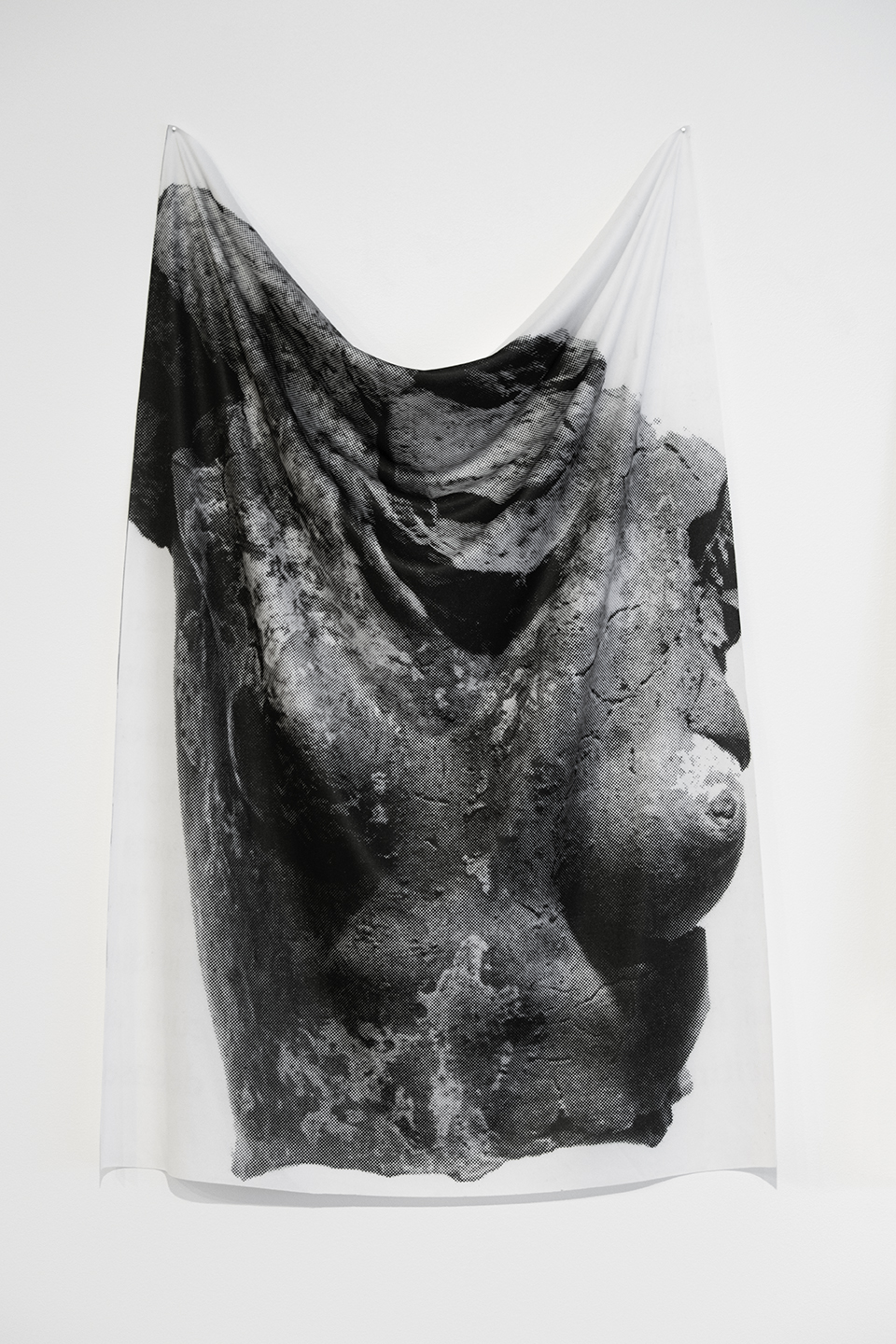
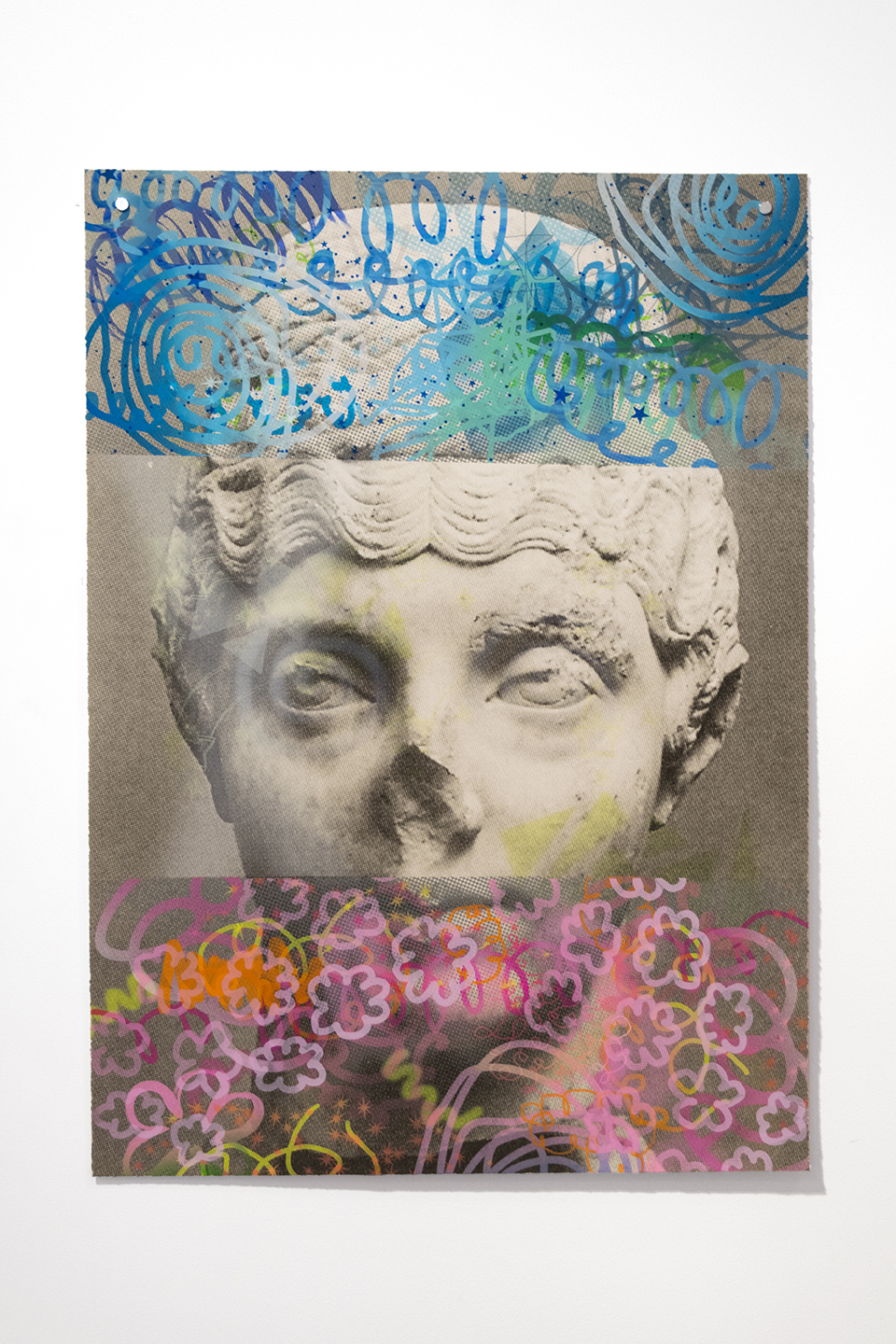
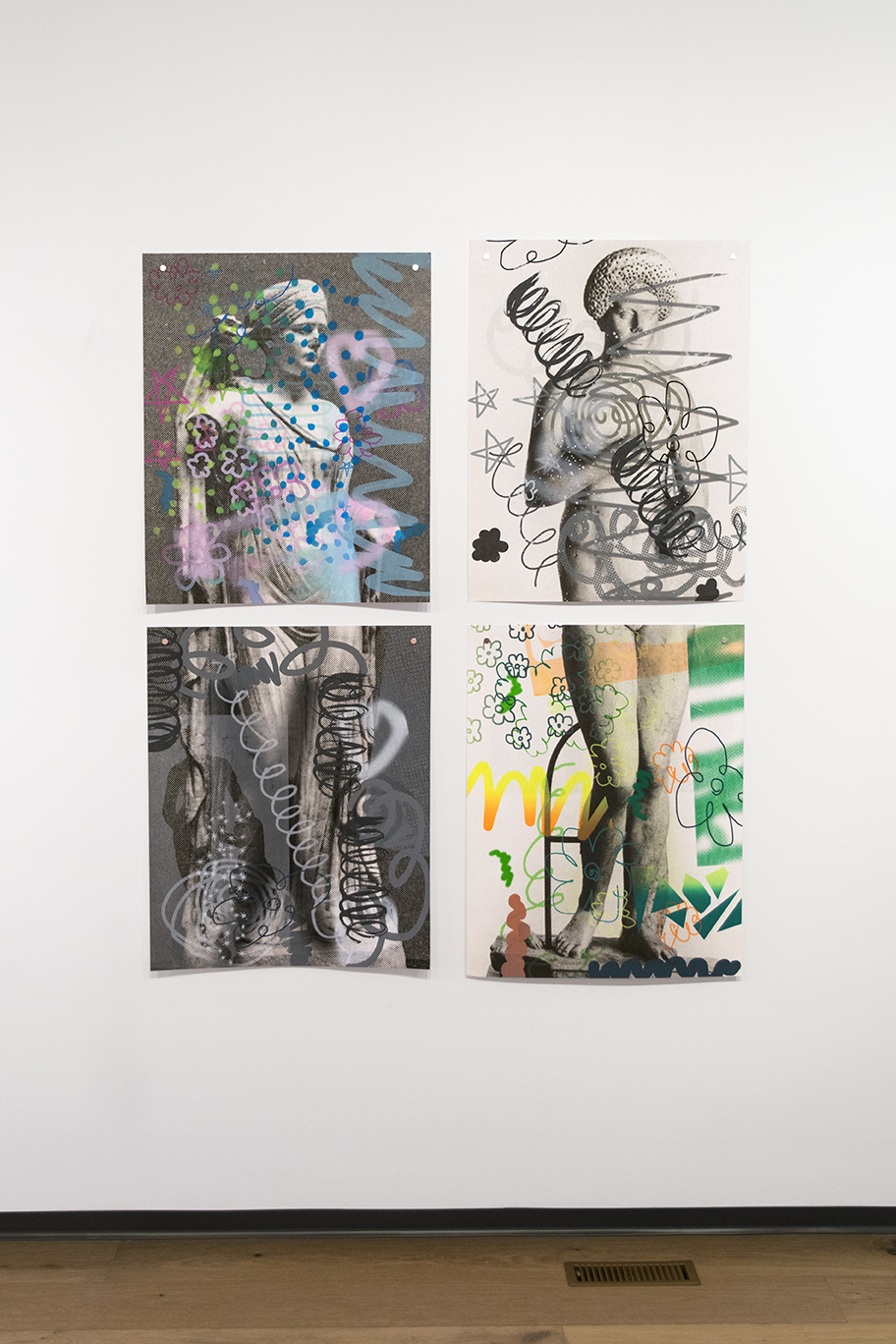
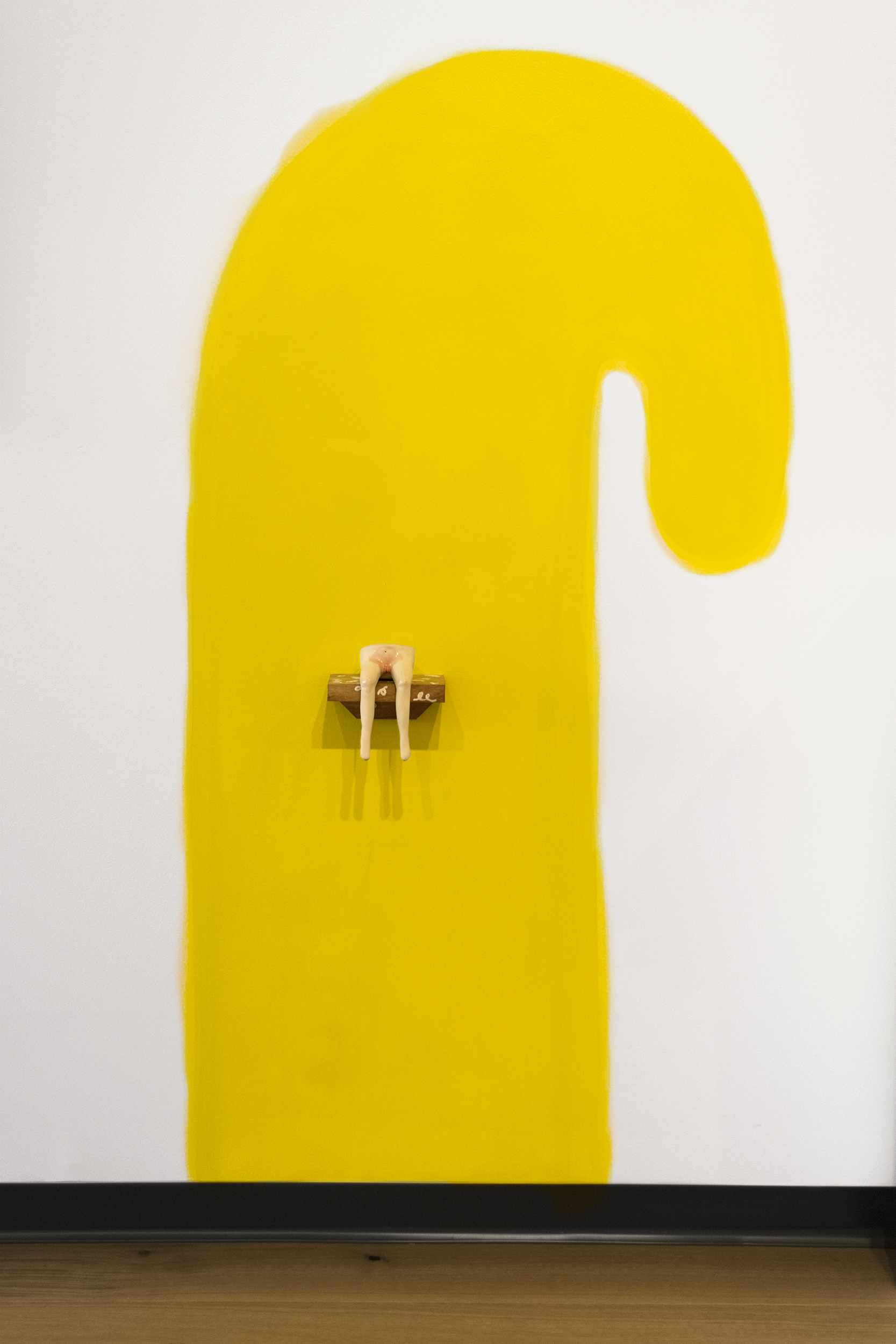

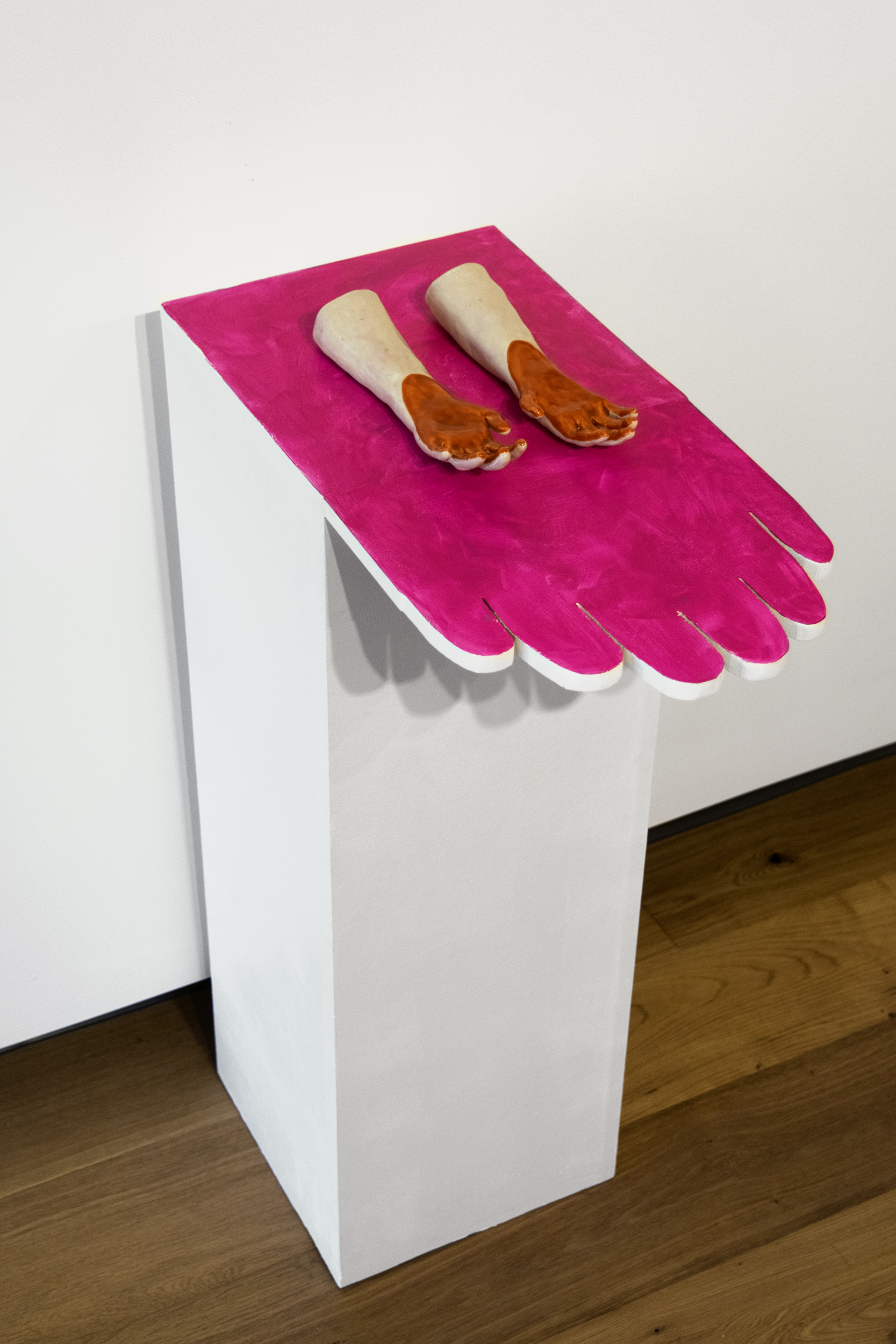
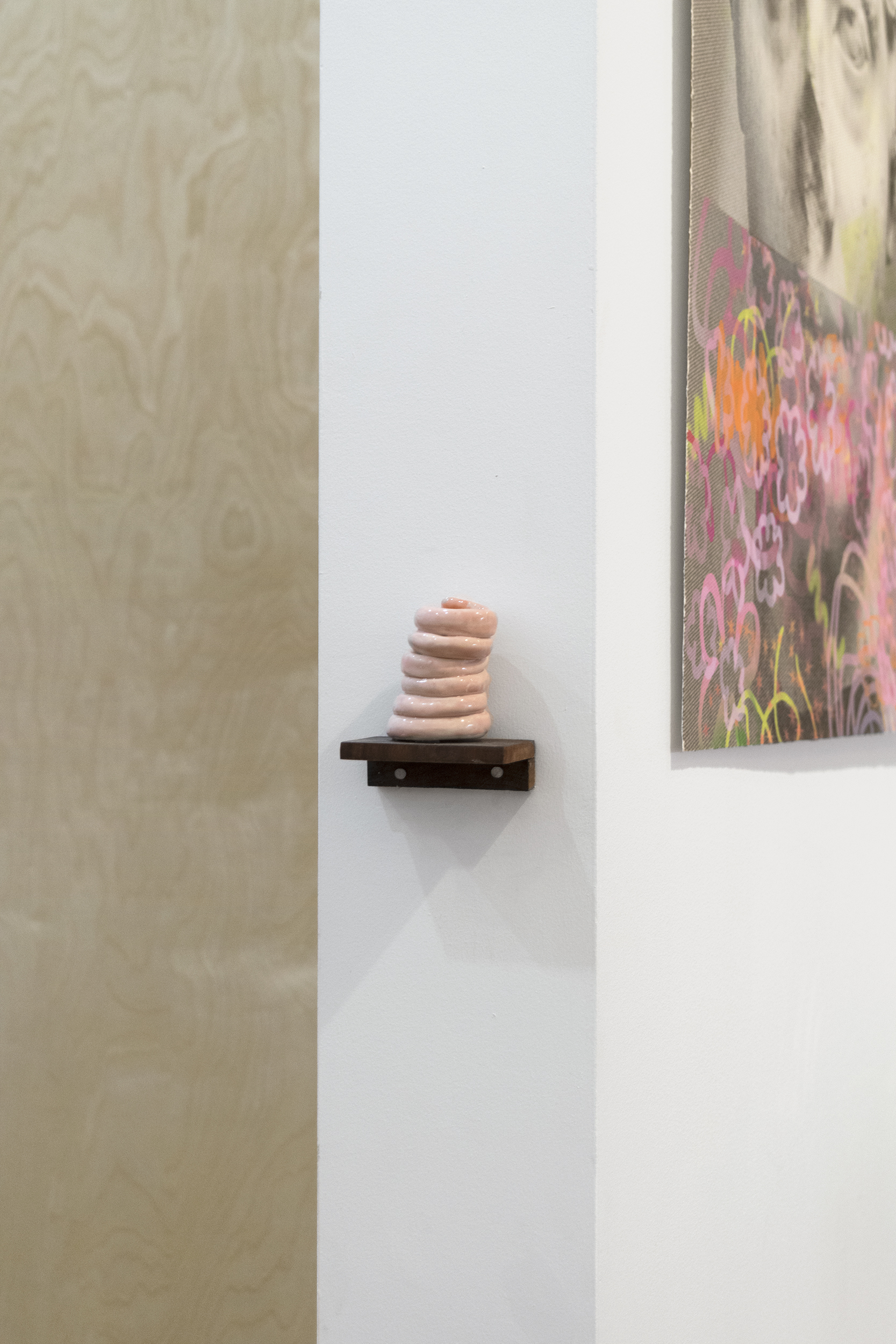
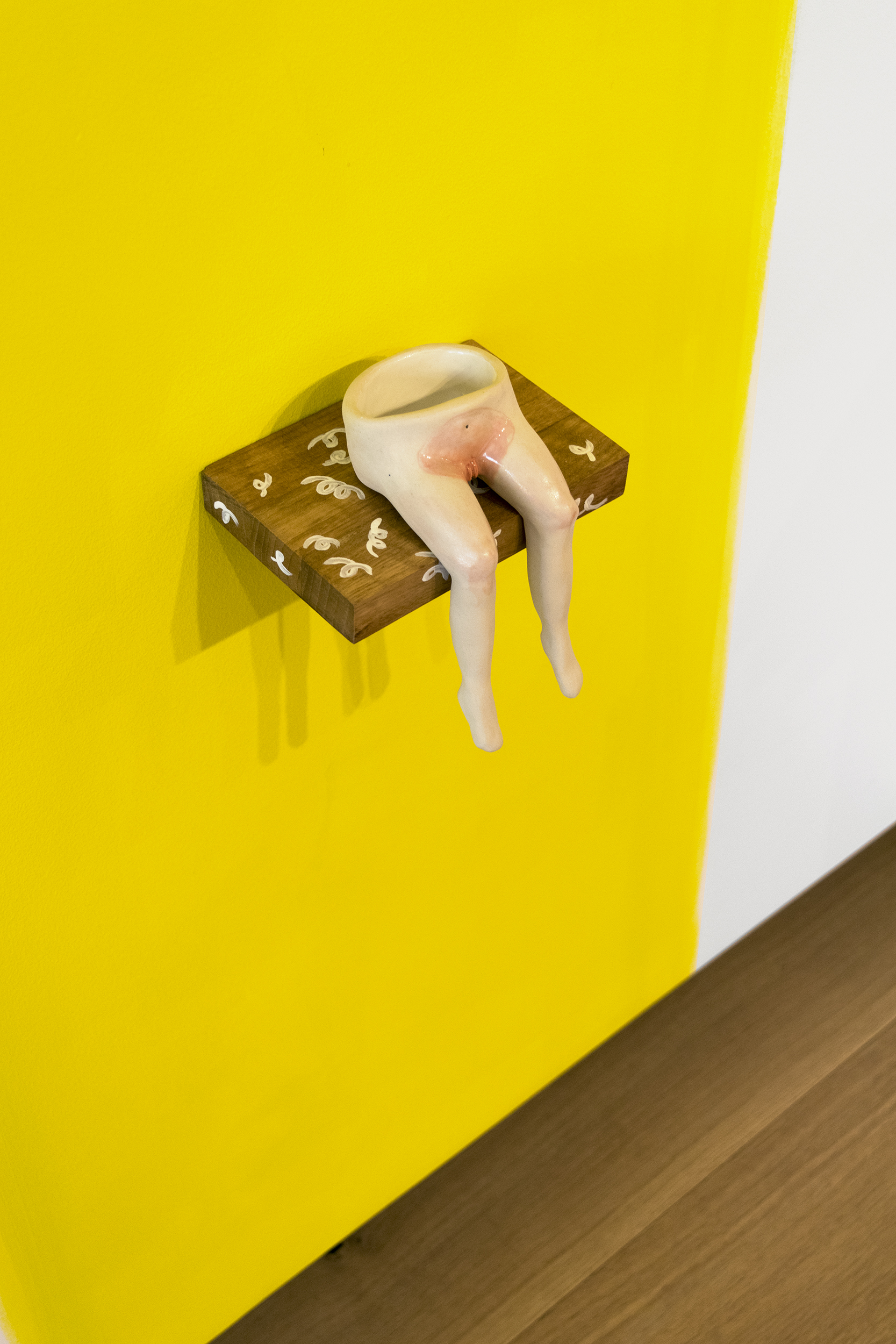

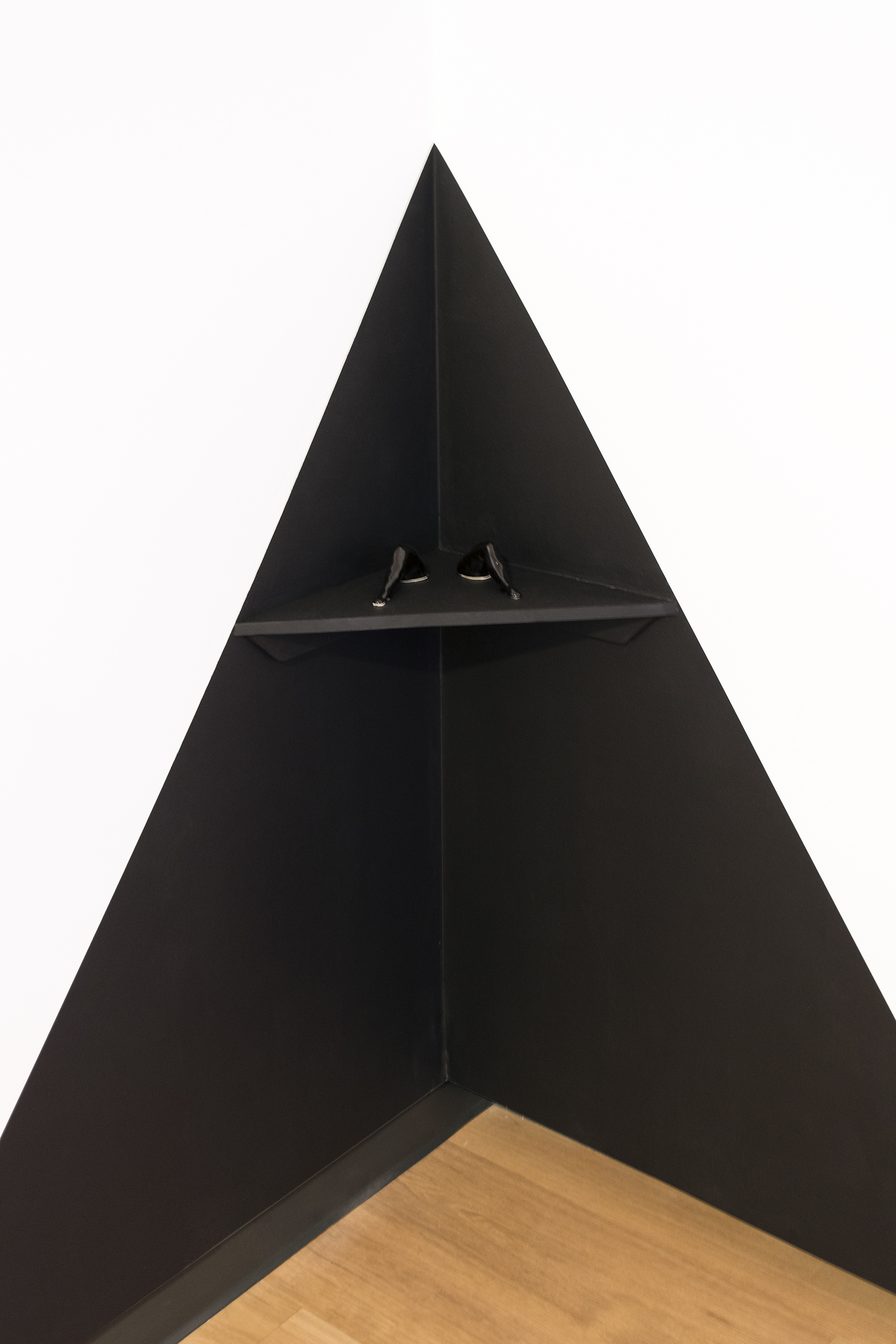
Kasia Sosnowski is originally from Calgary, Alberta – she moved to Lethbridge in 2007. She graduated with honours from the University of Lethbridge with a Bachelor of Fine Arts-Art History and Museum Studies, and a Bachelor of Fine Arts-Art Studio in 2014. She moved to Banff in 2014 where she worked at The Banff Centre as a Preparatorial Practicum at the Walter Phillips Gallery. After completing her year contract as a practicum she participated in the Banff Centre’s Late Fall BAiR program where she began exploring ceramics. She now lives and works in Lethbridge, Alberta where she maintains her art practice.
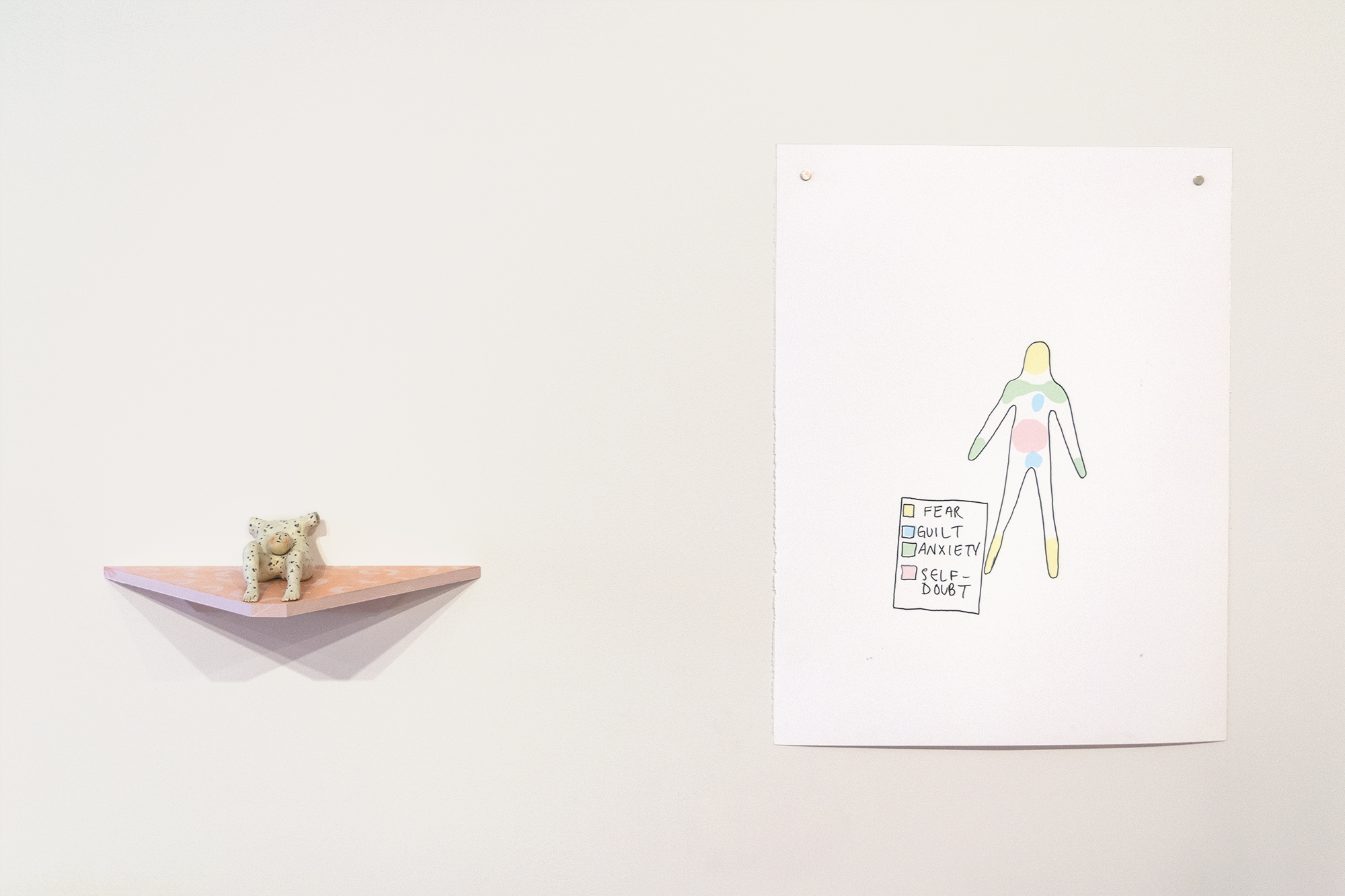

Territorial Acknowledgments
TNG gratefully acknowledges its home on the traditional territories of the people of the Treaty 7 region, including the Blackfoot Confederacy (Kainai, Piikani and Siksika), Métis Nation of Alberta Region III, Stoney Nakoda First Nation (Chiniki, Bearspaw, and Wesley), and Tsuu T’ina First Nation. TNG would also like to acknowledge the many other First Nations, Métis and Inuit who have crossed this land for generations.


Something is coming
Suzanne Kite and Nathan Young
In collaboration with M:ST 9 Performance Art Biennial
Friday, October 5, 9:30 PM at the National Music Centre (850 – 4 Street SE, Calgary)
Project Description
Something is coming is a site specific sound performance which listens into the electrical grid. Utilizing ground loop noise, field recordings, digital processing, and analog manipulation, Kite and Young propose a way to listen through the grid to the source. This form of listening is not a metaphor, but way to access and reimagine power systems. This mode of listening is a relinquishing of belief. To listen to the grid and hear the physical source of power is to not mistake the map for the land itself. This form of listening provides an opportunity to hear and think beyond colonial constraints of cartography and large-scale exploitations of natural resources.
Biographies
Suzanne Kite (born 1990, Sylmar, CA) is an Oglala Lakota performance artist, visual artist, and composer. She was raised in Southern California and earned a BFA from CalArts in music composition, an MFA from Bard College’s Milton Avery Graduate School, and is a Ph.D. student at Concordia University. Her research is concerned with contemporary Lakota epistemologies through research-creation, computational media, and performance practice. Recently, Kite has been developing a body interface for movement performances, carbon fiber sculptures, immersive video & sound installations.
Nathan Young (born 1975, Tahlequah, OK) is a multidisciplinary artist and composer working in an expanded practice that incorporates sound, video, documentary, animation, installation, and experimental and improvised music. Nathan’s work often engages the spiritual and the political and re-imagines indigenous sacred imagery in order to complicate and subvert notions of the sublime. A 2016-2018 Tulsa Artist Fellow, Nathan is a founding and former member for the artist collective Postcommodity (2007-2015) and holds an MFA in Music / Sound from Bard College’s Milton-Avery School of the Arts.
To read more about the biennial, including all of the the events taking place on October 5, visit the M:ST website here.
MAINSPACE EXHIBITION /
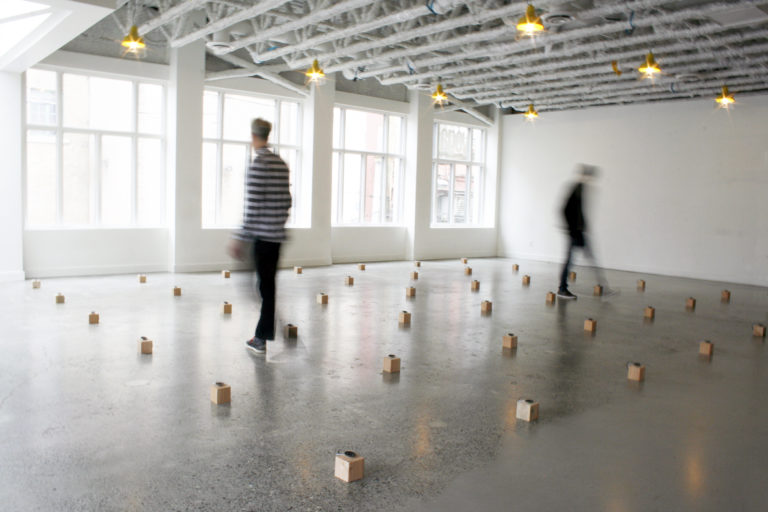
feedback loop of commensurability
Kevin Day
September 29—November 3, 2018
Exhibition Description
A floor-based interactive installation, feedback loop of commensurability consists of several speaker units positioned in a grid, communicating with a computer situated on the side. It collects information (movement, colour, and density, et al) from the viewers/users at regular intervals, translates this information into a coordinate (x, y), and plots it on the grid in the form of a notification tone emitted via one of the speaker units.
In such a way, the viewers/users experiencing the piece will be subjected to the compulsory and clandestine operations of surveillance and the machinic abstraction of distilling human subjects to quantifiable traits that will come to determine their identity, regardless of how decontextualized and inadequate they may be. Through the process of experiencing the piece, the users become abstracted, reduced to a single node on the grid, while their data continues to influence their behaviour as they navigate through the piece. The process emphasizes the ways in which one ‘becomes’ the data that has come to represent them, confounding the relationship and questioning the neutrality between the subject and their data-representation.
The sounds might induce a Pavlovian response where the viewers are summoned to voluntarily approach or compelled to avoid the source, foregrounding the agency information and communication technology (ICT) has in determining and priming human behaviours/responses and ways of thinking. The grid functions as both an emblem of ICT-facilitated capitalism and a particular epistemological framework.
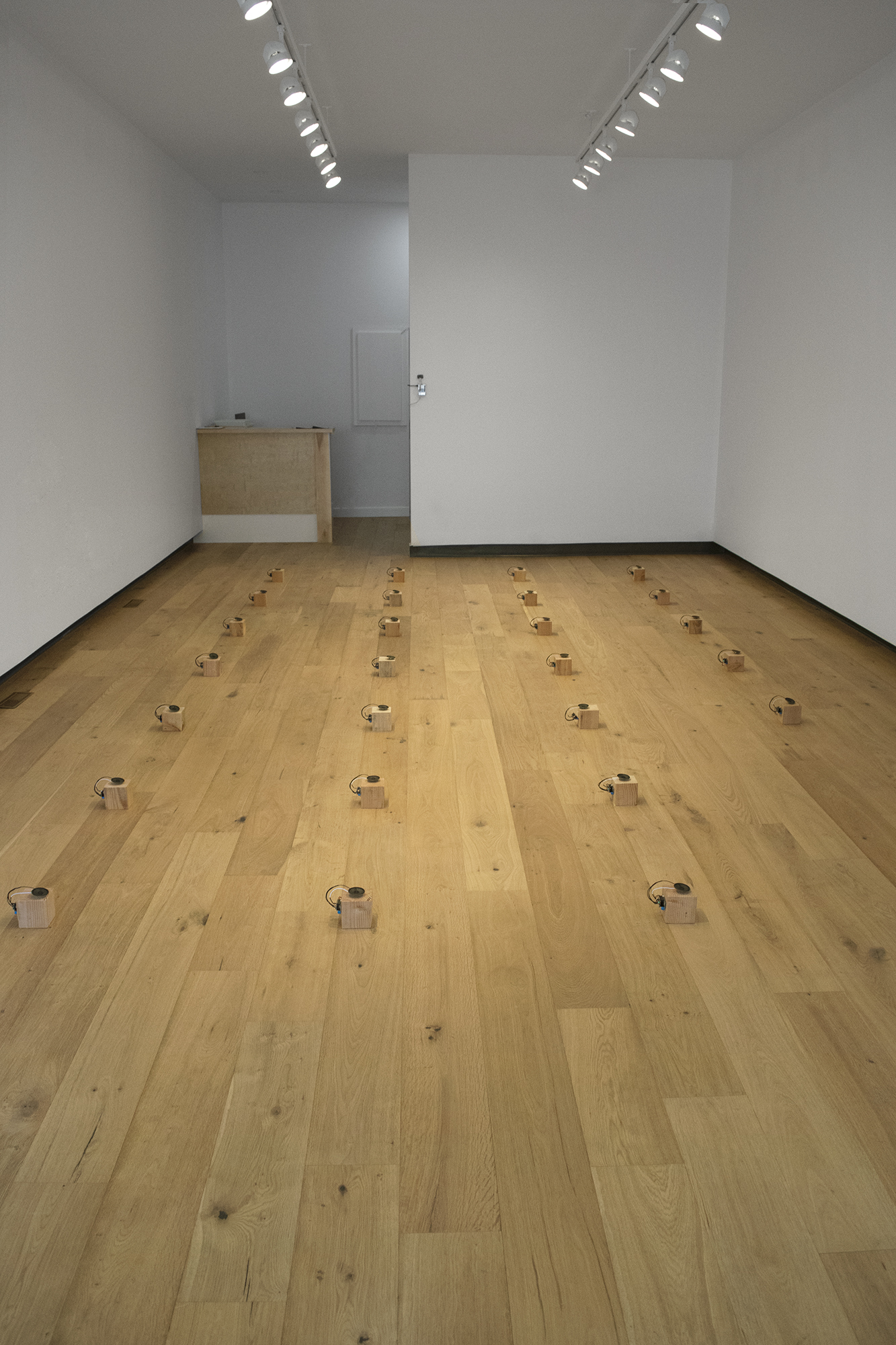
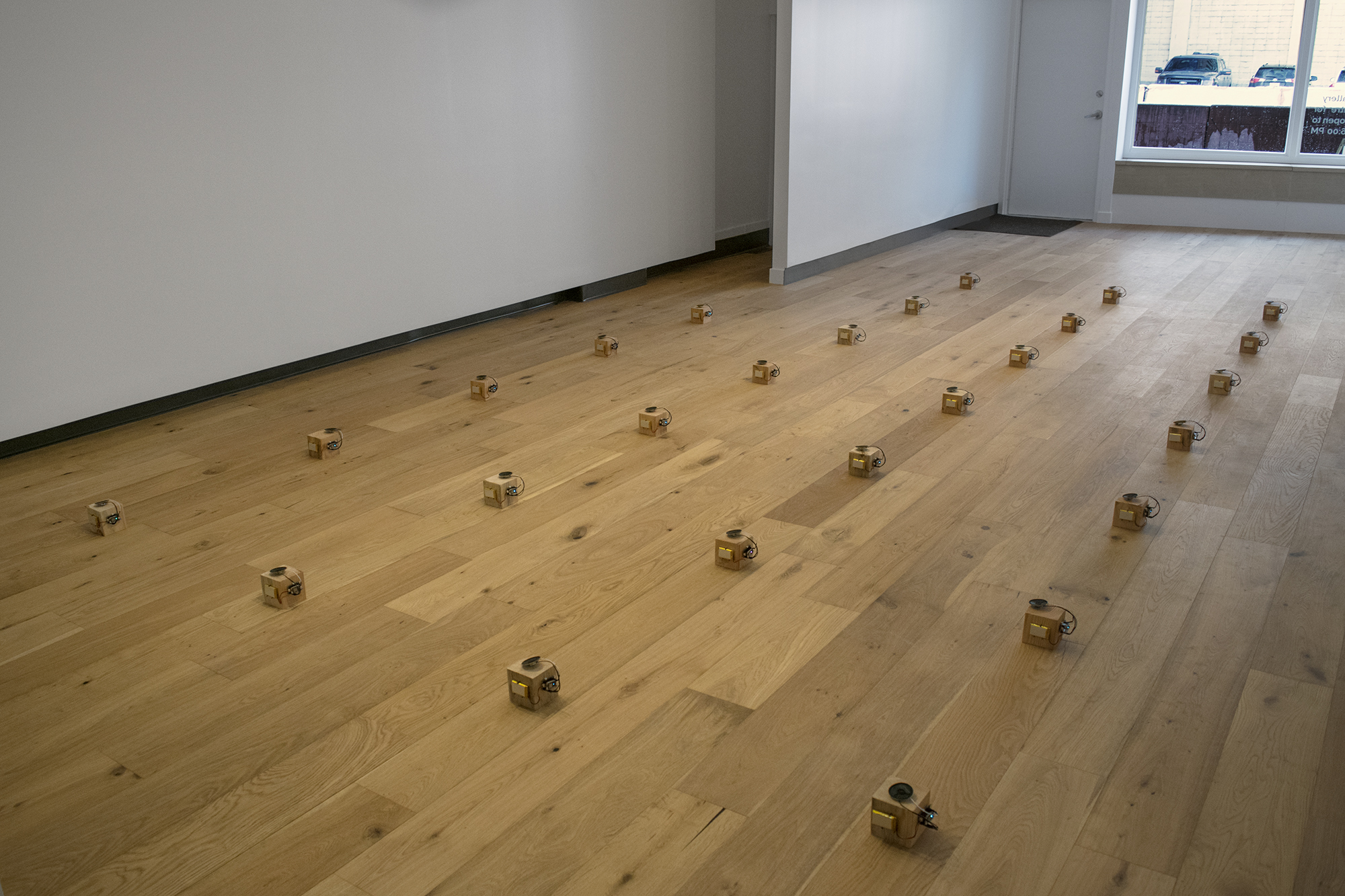
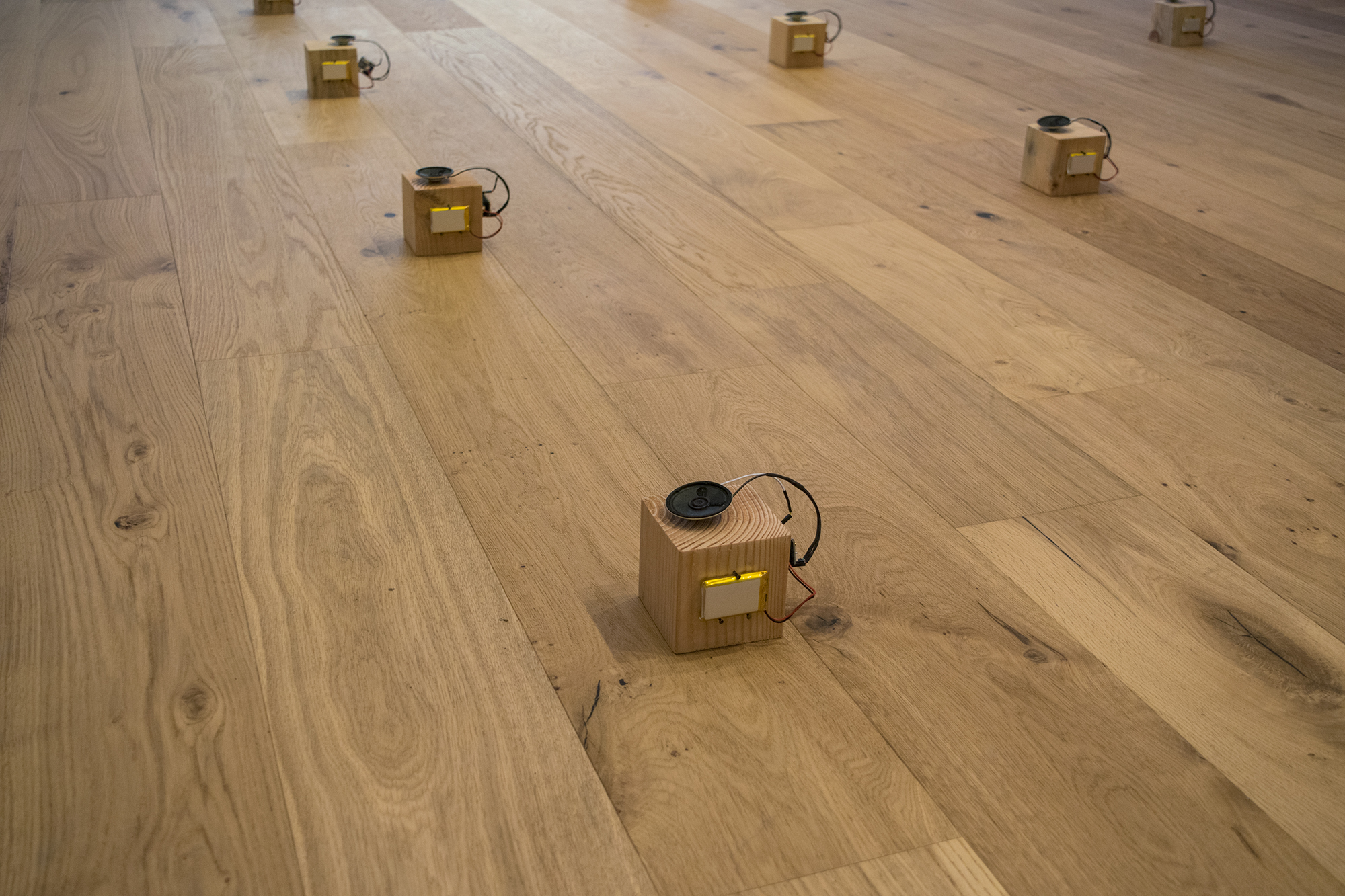
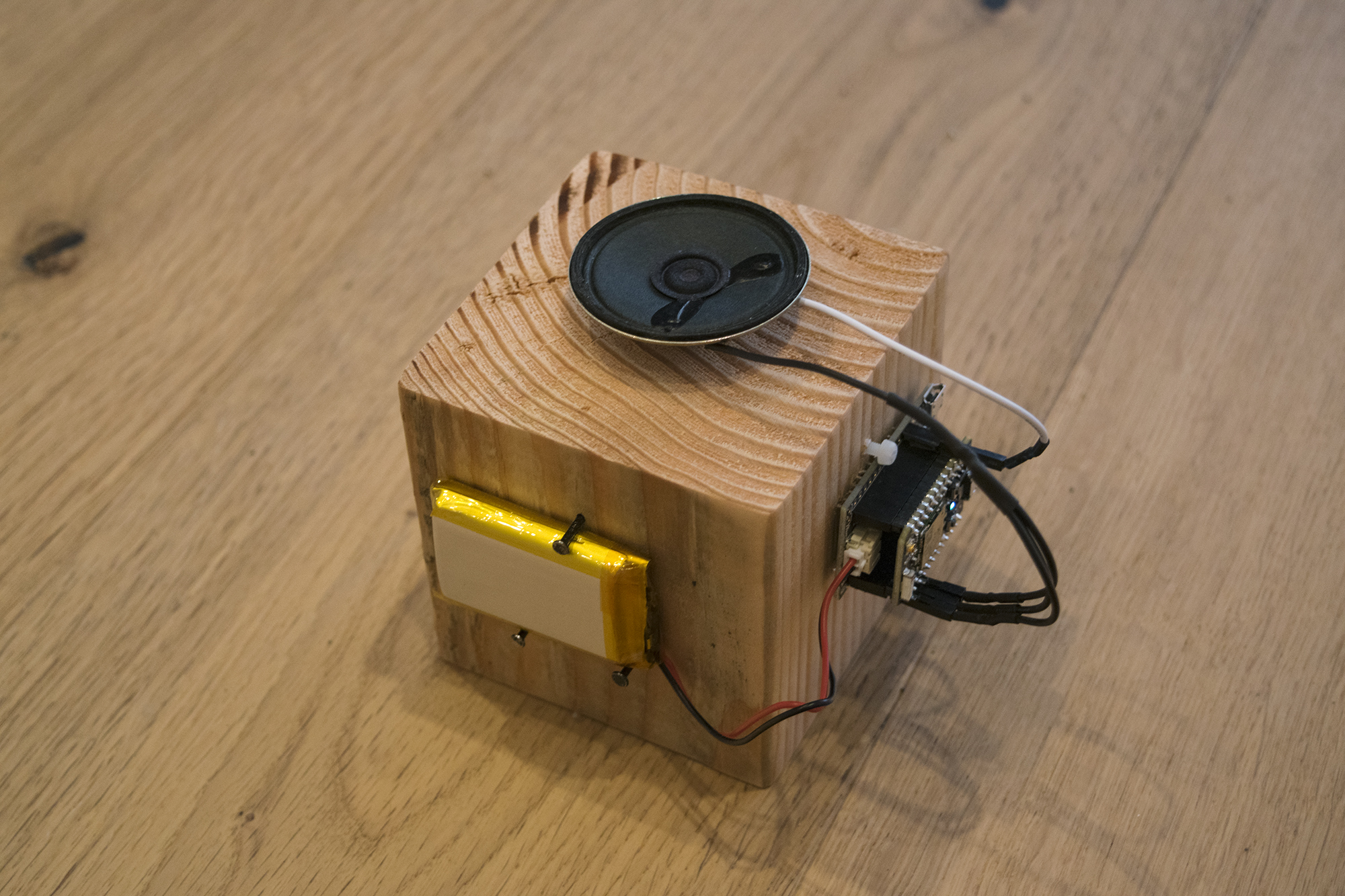
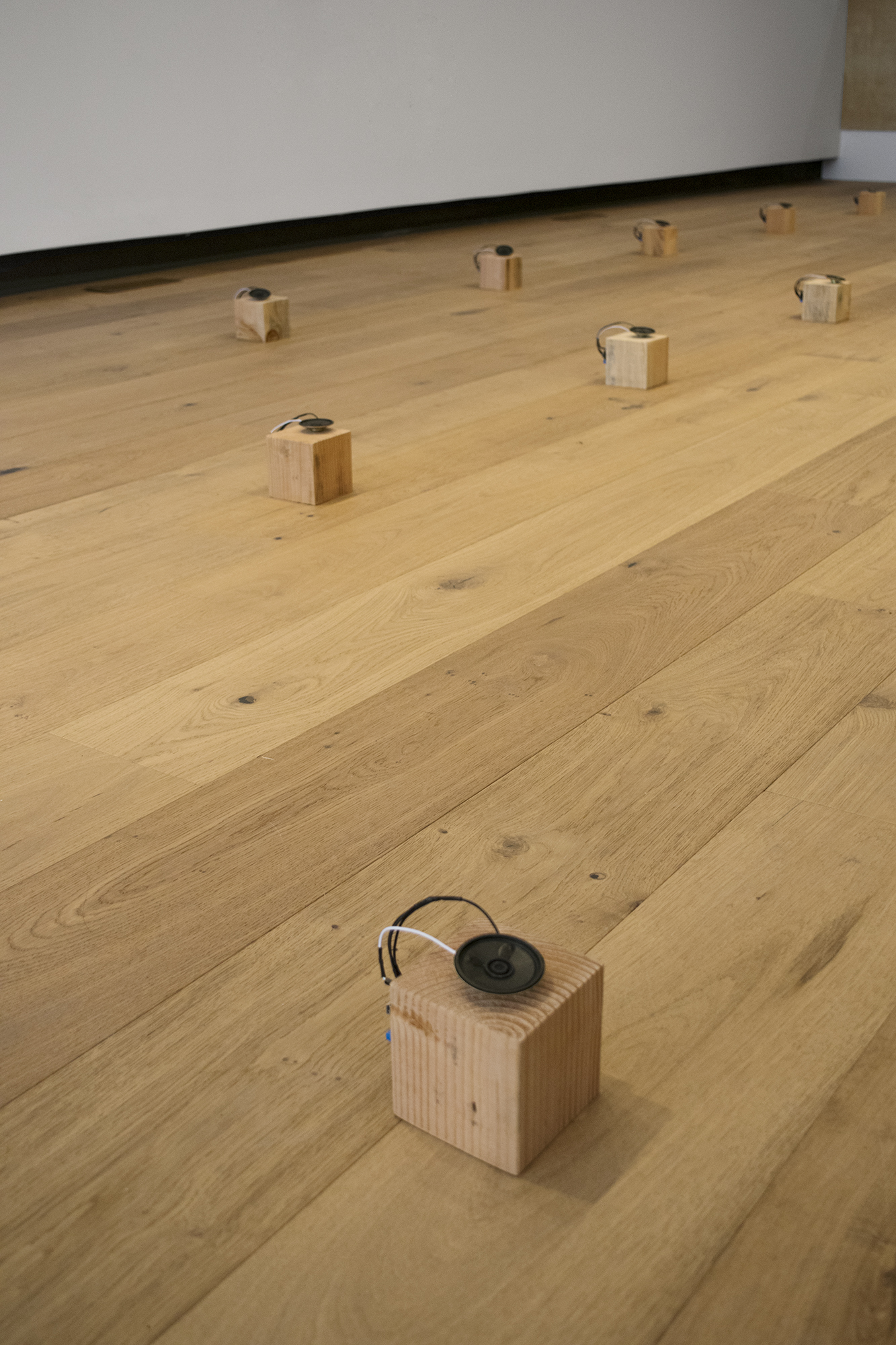
Exhibition Text
Ts’ui Pe must have said once: I am withdrawing to write a book. And another time: I am withdrawing to construct a labyrinth. Every one imagined two works; no one did it occur that the book and the maze were one and the same thing.
– Jorge Luis Borges, in The Garden of Forking Paths, 1942
At present, each passing minute in the world is marked with an average of 3,607,080 google search queries, 4,146,600 youtube video views, and 456,000 new tweets entering the Twitter-sphere. Ninety per cent of all data produced today has been created within the last two years alone.
– statistics referenced from: Data Never Sleeps 5.0, Domo¹
We like to think of our data as separate from ourselves. Data doesn’t define our identity. Each data-set is but a recurring fractal and fractional dimension of our complex selves, of our entirety. Data is surface, not depth. But what if it were both?
Kevin Day’s work titled feedback loop of commensurability, is a simulation of a simulation. An interactive work involving sound, sculpture, sensors, programming, and feedback, this work presents visitors with data for data’s sake. According to Day his installation, “emphasizes the ways in which one ‘becomes’ the data that has come to represent them, [thus] confounding the relationship [between the two]”. feedback loop of commensurability is an orderly cartesian x/y grid and sculptural installation. Tiny speaker boxes are plotted in an equidistant formation across the floor. Each box is also a networked-node containing a sensor that collects information from visitors as they move throughout the installation. The information is relayed to a centralized system which interprets the data, then disperses it back to the network as a series of triggers over randomized time intervals. Each triggered output is comprised of a singular repeating sound that resembles a smartphone notification tone.
Depending on one’s interest in the minimalist aesthetic of the installation and their proclivity, or aversion, towards the ubiquitousness of sonic push notifications, there are a variety of potential experiential observations of the work. These range from boredom and apathy to curiosity, anxiety, and confusion. Perhaps the most telling reaction is from many visitors who assign a degree of personal interactivity onto the work; they assume that they are able to alter the way in which the installation/program acts. Sorry, visitor, it’s not all about you. True, when one walks through the space, they trigger a series of micro events. However, the only predictable outcome of the programming response is that it is indeterminate. The trigger outputs in the work may even continue sounding after the visitor has left the space. Visitor presence is affective, but to a certain degree, non-essential. Day’s work often includes distorted intentions that obfuscate one’s understanding of what is happening. Visitors are left asking: what is this work doing, how is it functioning? One must surrender to randomized disruption.
In the case of this work, the third axis, the ‘z-axis’, in the grid formation is paramount. Bodies moving throughout the space are the entities that form this critical axis, thereby extending the grid’s floor-based x/y-flatness into a third, spatial dimension. From surface, we now have depth. The ‘z-axis’ is not seen, but rather, sensed. The visitor’s body provides and is provided with, a multi-layered experience, subjected to affective pendulum swings between sound, movement, and vision. One’s attention oscillates across these three states. Similar to, but not an exact replica, the imitation push notification tone holds great power within its sonic vibrations. The tone’s similitude, coupled with visitors’ previously learned behaviour and memories, inform an interpretation of the tone’s significance both consciously and subconsciously. Reactions of anxiety, distraction and compulsion rank high… Sound phone-miliar?
Essentially, the artist provides a simulated version of an information and communication technology system (ICT); a smart device mockumentary. Picture a smartphone as if it was a building. Now imagine humans trapped inside the building’s Push Notification Centre and all the zany antics that would ensue. Visitors are drawn into a virtual space where the absurdities, dependencies and compulsive tendencies of their own online behaviours are triggered, then magnified, satirized and projected back onto themselves. Both body and mind are stuck-in… deeply.
Day uses embodied and pragmatic strategies in his installation work in order to incite learning threshold challenges in visitors. feedback loop of commensurability highlights the multiple ways in which lived experience and live data streams are intertwined and inseparable. From the primed and conditioned Pavlovian responses that are sensed in our bodies, to the misinterpretation of the work existing solely as an end-user experience, what is foregrounded is the following primary observation: who is beholden to whom? Do we consume data, or does it consume us?
When data is lived, when it becomes embodied, and when the awareness of this body-data interchangeability is foregrounded, one is able to step outside of themselves. feedback loop of commensurability generates critical reflection of both personal and collective methods of communicating with, and through, data. Are we held captive by analytics, big-data, and deep fakes? Undoubtedly. These unruly, new constructs have irreversibly become part of the evolving fabric of today’s existence. One can’t stop the information apocalypse². However, by deepening the understanding of how one affects their own data and how their data, in turn, affects them, the space between body and data will, with certainty, become more fluid, critical and reflexive.
¹https://web-assets.domo.com/blog/wp-content/uploads/2017/07/17_domo_data-never-sleeps-5-01.png
²Information Apocalypse is a term coined recently by Aviv Ovadya to highlight the danger of apathy in an era when everything can be faked.
https://www.buzzfeednews.com/article/charliewarzel/the-terrifying-future-of-fake-news
Biographies
Kevin Day’s practice and research examine digital media polemics such as algorithmic culture, big data, mediation, cyber control, post-human concerns, and information capitalism. Informed by philosophy of technology, media studies, and critical theory, the research questions the ubiquitous logic of framing the world through information, indicative of a cybernetic way of knowing. His work seeks to resist the reduction of codification through an insistence on the presence of noise in the interface, which persists within the signals in the capitalist communication industry.
Day was born in Taipei, Taiwan. He received his MFA from the University of British Columbia and is currently based in Vancouver. He has presented his work nationally and internationally, at locations such as the Vancouver Art Gallery (Vancouver), Creative Media Centre (Hong Kong), University of Hamburg (Hamburg), Qubit (New York), and Gallery 1313 (Toronto), among others. He has authored several published articles on information and cyber politics, and has received funding from the Canada Council for the Arts and the Social Science and Humanities Research Council of Canada (SSHRC).
Sunshine Frère is a writer, curator and artist based in Canada. She has an MA in Interactive Media from Goldsmiths, and a BFA in Studio Arts and Electroacoustic studies from Concordia University. Frère’s practice is cross-disciplinary and interactive. Her work has been exhibited in Canada and Europe. Frère works within local, national and international art communities in a variety of projects and roles. She is currently the Curatorial Programmer at the New Media Gallery and the General Manager for Other Sights for Artists’ Projects. Frère is also the Strategic Initiatives Chair on Access Gallery’s Board in Vancouver.

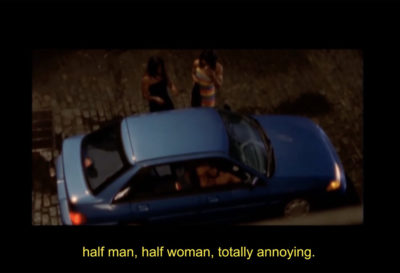
A Thousand Cuts
B.G-Osborne
August 6—September 28, 2018
+15 Window Exhibition
On September 4, 2018 Arts Commons turned off the 3-channel video work being exhibited by B.G-Osborne in The New Gallery’s +15 Window. The reasons cited being that the work contained “a lot of swearing and nudity” that had garnered “a lot of complaints from concerned patrons.” The installation in full was removed the following week. You can find full details about the actions that led to this censorship in TNG’s statements:
Initial statement: https://mailchi.mp/29a6335977d9/tng-enews-sled-island-collaboration-main-space-and-job-call-1360085?e=3ea1169c5d
Follow-up statement: https://mailchi.mp/e3fe72570272/tng-enews-alternative-venues-screen-a-thousand-cuts15-window-receptions-cancelled-and-an-invitation-to-an-open-forum
The video work, “A Thousand Cuts” can now be viewed at three alternative venues: the University of Calgary Art Department (Calgary, AB), Latitude 53 (Edmonton, AB), and Left Contemporary (Windsor, ON). Please contact these organizations to find out viewing hours. We thank these organizations for their support of this important artwork. An open forum to discuss this unfortunate dispute and related topics will be held on Tuesday, September 25 from 6PM to 8PM at the Chinese Cultural Centre (197 1 St. SW), room 235.
B.G-Osborne has also written an open letter in response to this censorship:
Dear viewers,
It has been brought to my attention that there have been several complaints against my video work due to “cursing and nudity”. Rather than re-edit and censor my work to comfort certain viewers who are offended by the very banal acts of swearing and non-sexual nudity, I have decided to remove the piece from the space entirely. It is ironic that a video compilation that highlights the far-too-common act of cisgender actors being permitted and feeling entitled to play trans characters in film and television, is too offensive when looked at through a critical/ trans-lens. The entire work is meant to be offensive, but several individuals have chosen to fixate on cursing and one brief scene of nudity. If you are cisgender and you were offended by this work: think about why you were offended. Are you trying to protect your children from what you perceive to be vulgar representations of bodies? Are you comfortable with the violence that is perpetuated against trans people, but offended by five or six swear words (that your children have already heard) and a flaccid penis? If you cannot accept seeing a penis on a woman in a movie (even though the actor is a cisgender woman with a prosthetic)- think about the other types of transphobia you might perpetuate in your daily routines. To me, it seems you are afraid of the questions this video will raise in the minds of your children, or in yourself.
To Arts Commons: I implore you to deal with complaints against challenging art work (especially when the content deals with marginalized communities and bodies) in a more constructive way, rather than shutting down a conversation before it can begin. Trans people are still being murdered at a seriously alarming rate, misrepresentation will continue to happen in mainstream media, we will try to take back our image and tell our own stories, cisgender people will keep being offended, and we will keep fighting.
Deeply disappointed, but not surprised,
B.G-Osborne
__
It has been brought to my attention that there have been several complaints against my video work due to “cursing and nudity”. Rather than re-edit and censor my work to comfort certain viewers who are offended by the very banal acts of swearing and non-sexual nudity, I have decided to remove the piece from the space entirely. It is ironic that a video compilation that highlights the far-too-common act of cisgender actors being permitted and feeling entitled to play trans characters in film and television, is too offensive when looked at through a critical/ trans-lens. The entire work is meant to be offensive, but several individuals have chosen to fixate on cursing and one brief scene of nudity. If you are cisgender and you were offended by this work: think about why you were offended. Are you trying to protect your children from what you perceive to be vulgar representations of bodies? Are you comfortable with the violence that is perpetuated against trans people, but offended by five or six swear words (that your children have already heard) and a flaccid penis? If you cannot accept seeing a penis on a woman in a movie (even though the actor is a cisgender woman with a prosthetic)- think about the other types of transphobia you might perpetuate in your daily routines. To me, it seems you are afraid of the questions this video will raise in the minds of your children, or in yourself.
To Arts Commons: I implore you to deal with complaints against challenging art work (especially when the content deals with marginalized communities and bodies) in a more constructive way, rather than shutting down a conversation before it can begin. Trans people are still being murdered at a seriously alarming rate, misrepresentation will continue to happen in mainstream media, we will try to take back our image and tell our own stories, cisgender people will keep being offended, and we will keep fighting.
Deeply disappointed, but not surprised,
B.G-Osborne
__
A Thousand Cuts
B.G-Osborne
August 6—September 28, 2018
Closing reception is Thursday, September 20 at 6:00 PM, followed by drinks at the Palomino (109 7 Ave SW) from 7:00 to 9:00 PM. All TNG reception guests will receive 15% off their bill when presenting the exhibition postcard. Admission is free and all are welcome.
Exhibition Description
A Thousand Cuts is an in-progress found-footage video compilation of cisgender actors playing transgender roles in film and television. The work confronts transgender cinematic tropes and the erasure of transgender people in mainstream media. The clips that are selected for the compilation are, more often than not, from films and television series produced for cisgender audiences. By editing, arranging, and locating visual and thematic similarities between certain clips and dialogue, A Thousand Cuts creates new meaning through a crescendolike composition ranging from humorous to violent- but always inauthentic- representations of trans individuals. The large poster included in the exhibition lists the names of all documented murdered transgender people in the past two years. Last year alone, there were over three hundred documented murders of transgender people world-wide. The poster serves as a reminder to the viewership of the common consequence of transgender expression, especially for trans women of colour.
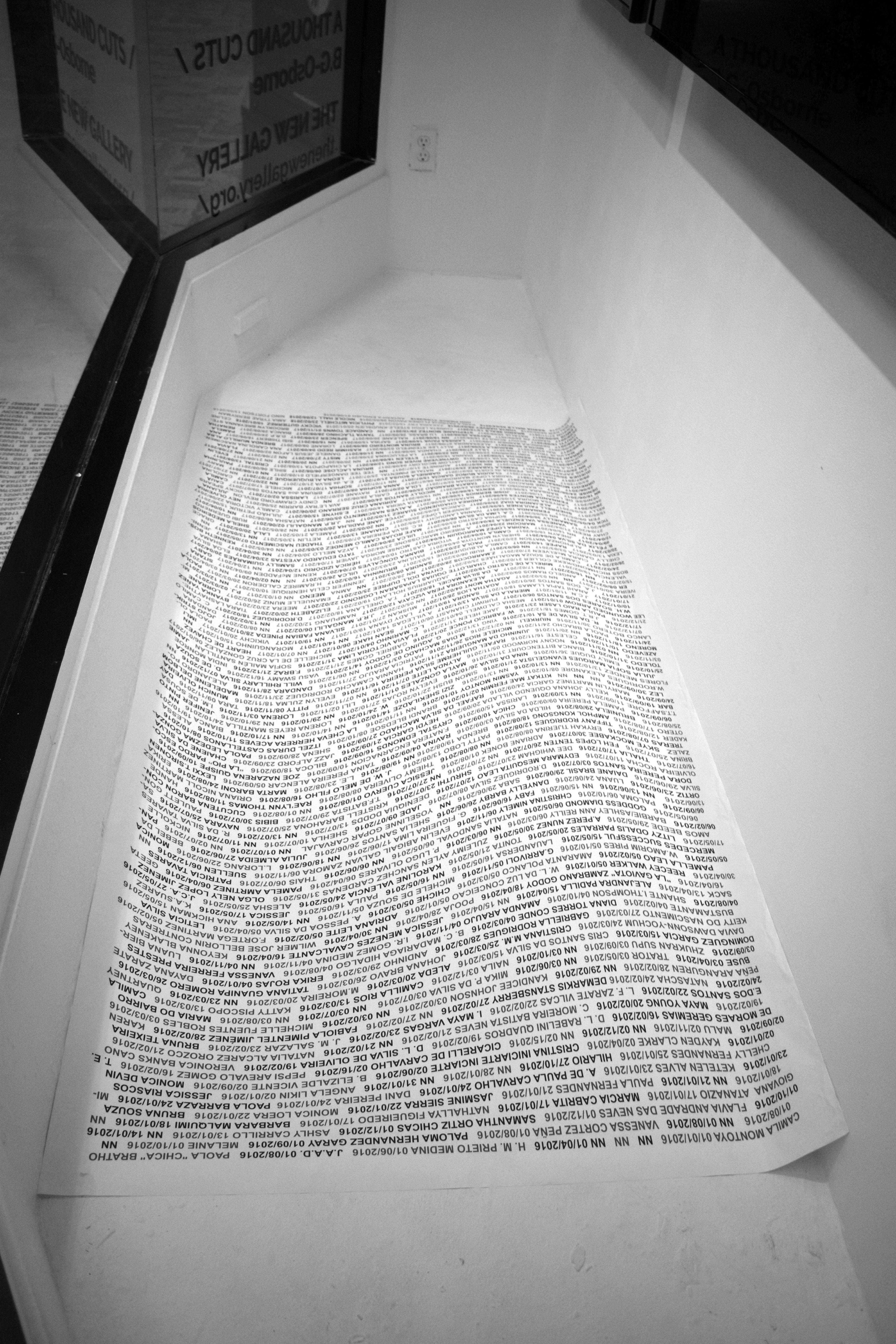
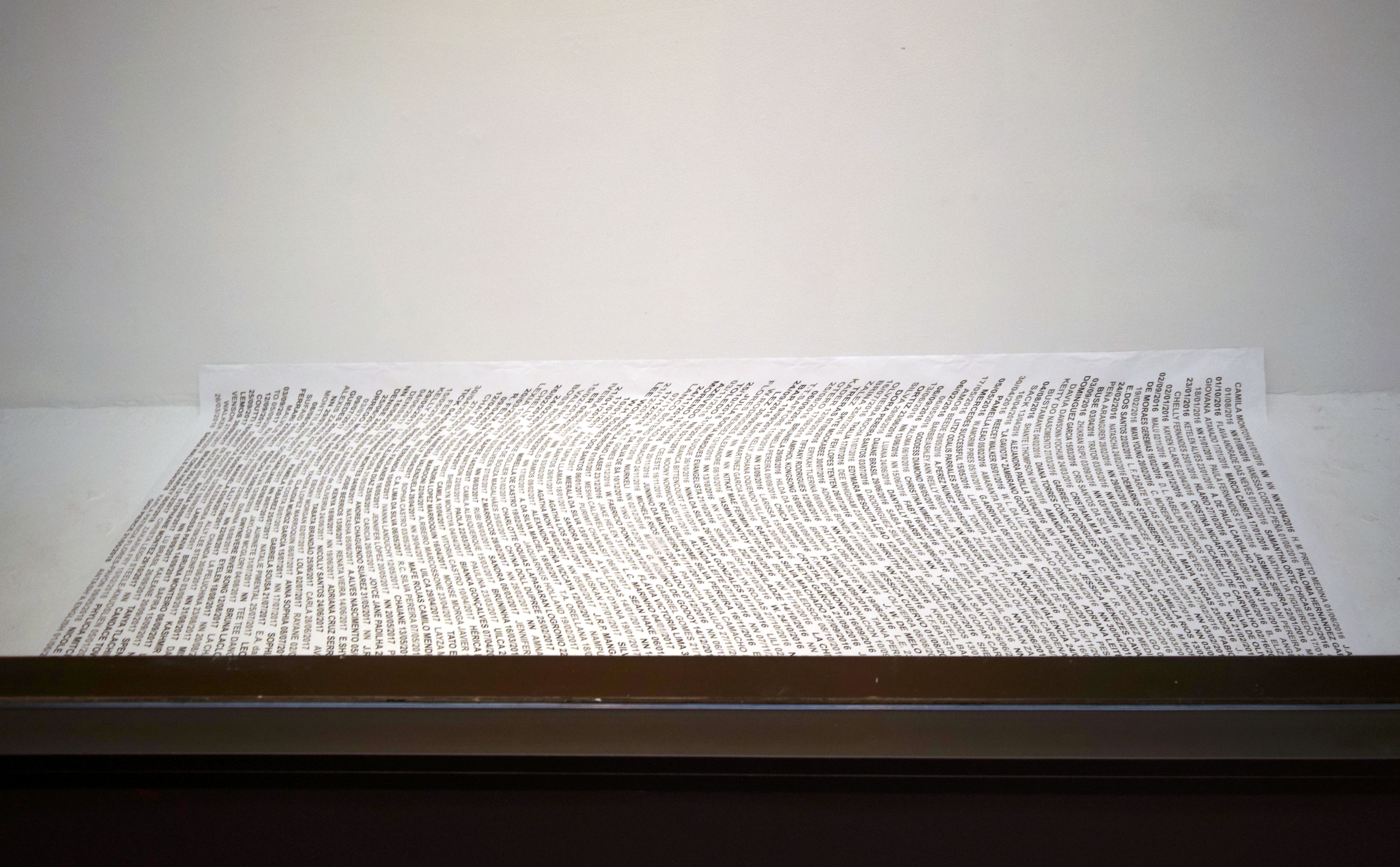
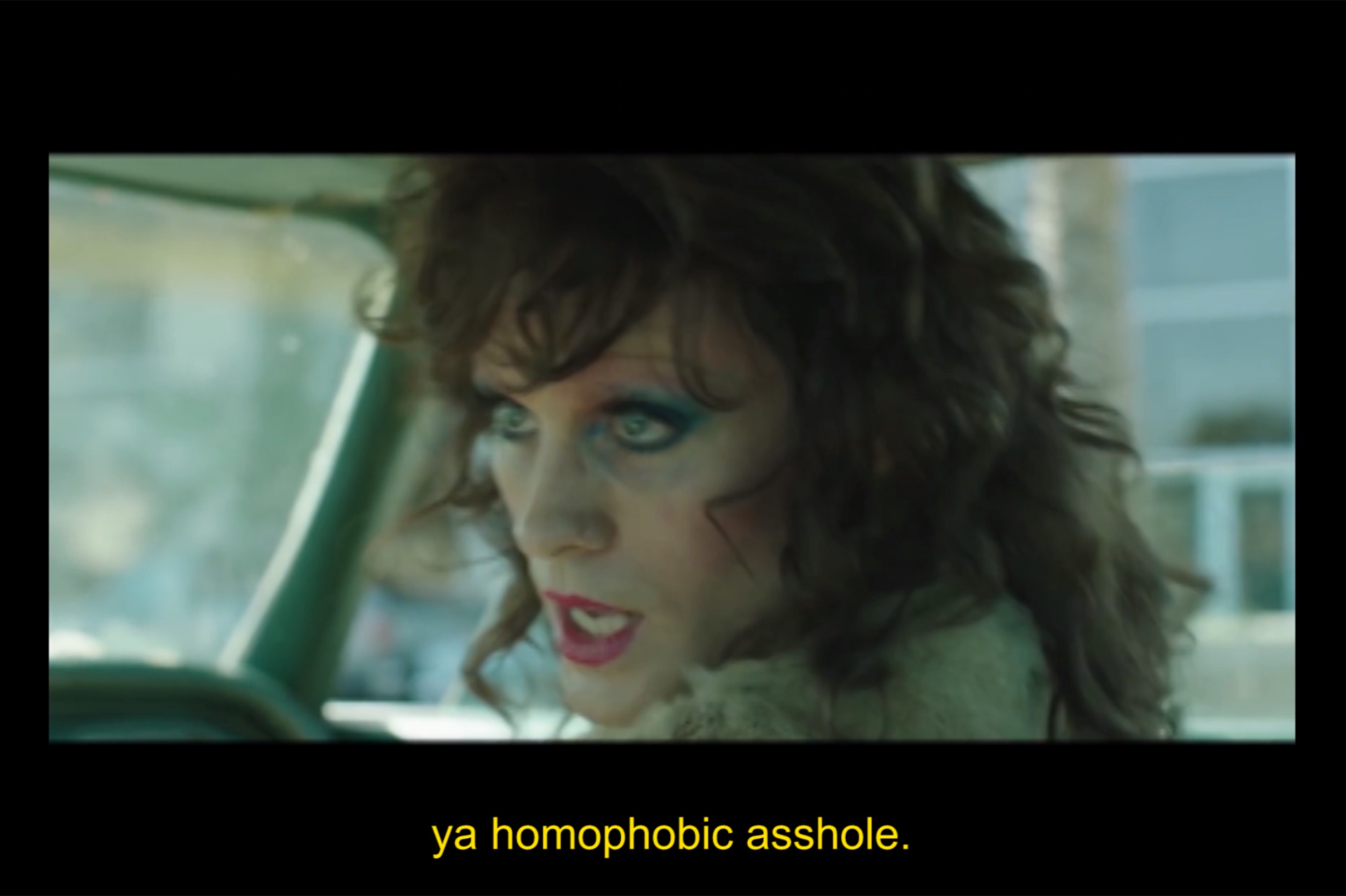
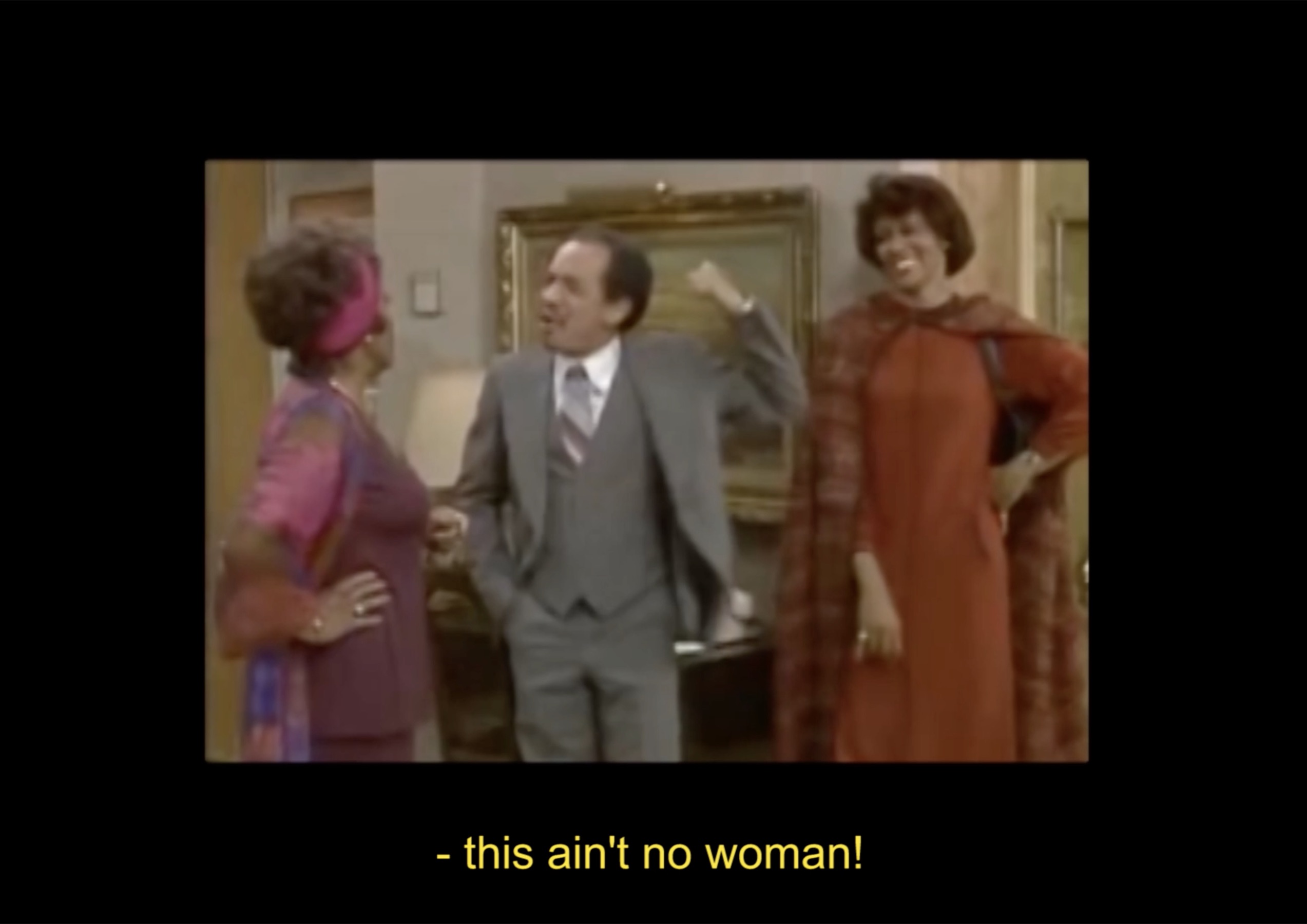
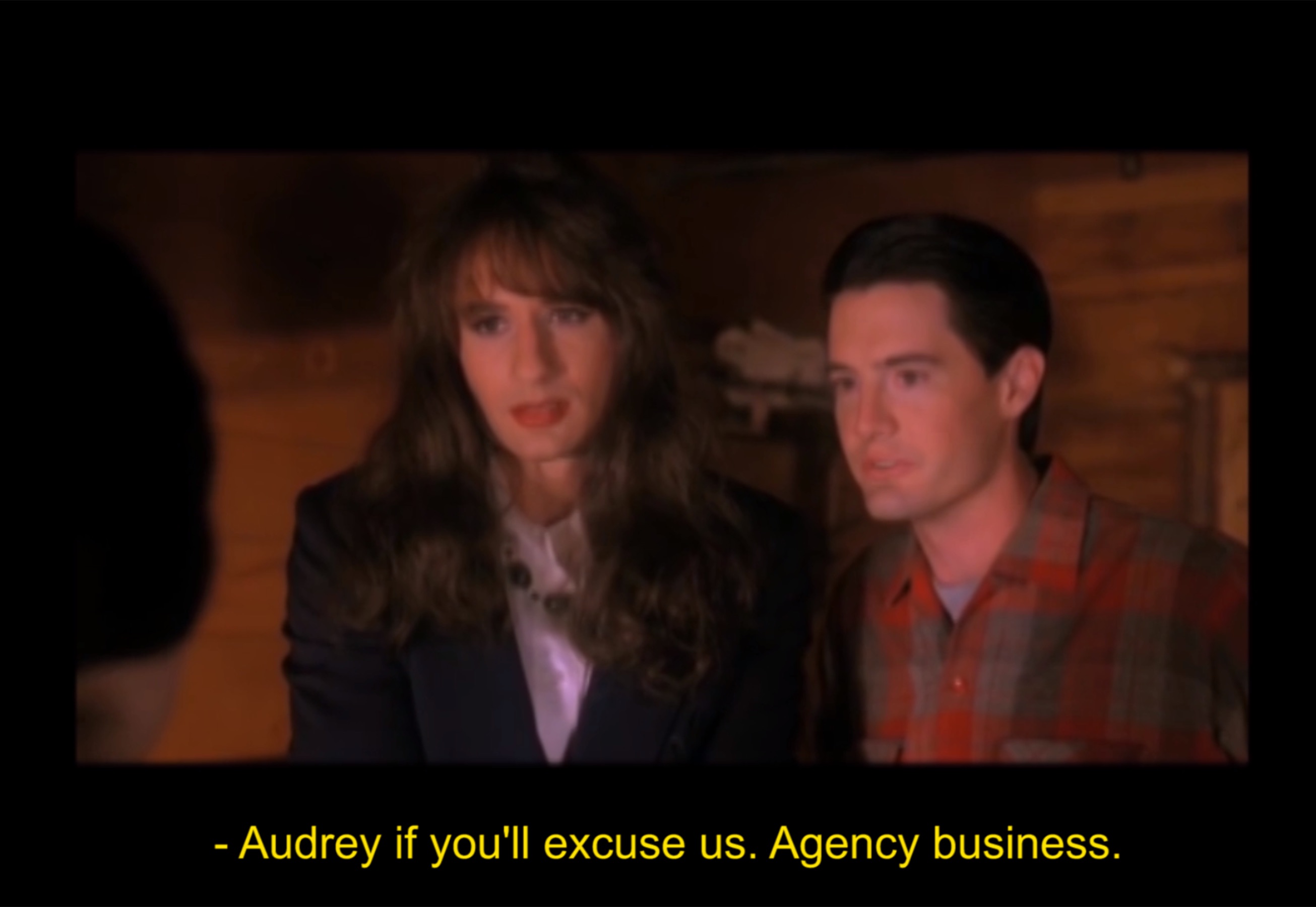
B.G-Osborne is a Transmedia artist from rural Ontario, currently working in Montreal. Their work focuses on exploring and interrogating the potential of gender-variant embodiment to serve as both a tool for gender deconstruction and revision. They graduated as valedictorian from NSCAD University in 2014 with a BFA in Intermedia. Osborne’s ongoing projects seek to address the complexities of trans representation and violence, mental illness, and family secrets/stories. They place great importance in showcasing their work in artist run centres and non-commercial galleries throughout Canada.
List of clips used in the compilation:
Movies:
3 Generations (2015)
20 centímetros (2005)
40 Year Old Virgin (2005)
Ace Ventura Pet Detective (1994)
The Adventures of Sebastian Cole (1998)
Albert Nobbs (2011)
All About My Mother (1999)
ANYTHING (2017)
Beautiful Boxer (2004)
Boys Don’t Cry Oscar Awards Ceremony (2000)
Better than Chocolate (1999)
Breakfast on Pluto (2005)
Come Back to the Five and Dime, Jimmy Dean, Jimmy Dean (1982)
Crocodile Dundee (1986)
The Crying Game (1992)
Dallas Buyers Club (2013)
The Danish Girl (2015)
Desperate Living (1977)
Dog Day Afternoon (1975)
Dressed To Kill (1980)
Ed Wood (1994)
En Soap (2006)
Flawless (1999)
Glen or Glenda (1953)
Hedwig and The Angry Inch (2001)
I want what I want (1972)
In a Year with 13 Moons (1978)
K-11 (2012)
Kiss of the Spider Woman (1985)
La Mala Educacion (2004)
Laurence Anyways (2012)
Ma vie en rose (1997)
M.Butterfly (1993)
Naked Gun 33 1/3 (1994)
Normal (2003)
ROMEOS (2011)
Soldiers Girl (2003)
Soapdish (1991)
TO WONG FOO Thanks for Everything, Julie Newmar (1995)
Tomboy (2011)
Transamerica (2005)
Trich Doan Phim (Man on high Heels) (2014)
The World According to Garp (1982)
Zoolander 2 (2016)
Different for Girls (1996)
Elvis and Madonna (2010)
The World’s Fastest Indian (2005)
TV Shows:
All My Children, “Zoe: At the Crossroads part II” (2006)
American Horror Story, Season 5 Episode 3 “Mommy” (2015)
The Bold and the Beautiful, Episode 7078 (2016)
Californication, Season 5 Episode 5 “Charlie got a Blowjob from a Tranny Hooker” (2012)
Cold Case, Season 2 Episode 3 “Daniela” (2004)
Cold Case, Season 5 Episode 9 “Boy Crazy” (2007)
Coronation Street: Roy and Haley’s Wedding (1999)
CSI: Crime Scene Investigation, Season 8 Episode 8, “Identity Crisis” (2002)
Dead of Summer, Season 1 Episode 3 “Mixtape” (2016)
Degrassi, Season 13 Episode 7, “Young Forever” (2013)
The Education of Max Bickford, Season 1 Episode 7 “Revisionism” (2001)
Friends, Season 7 Episode 22 “The one with Chandlers dad” (2001)
The Golden Girls, Season 3 Episode 7 “Strange Bedfellows” (1987)
Hit and Miss, Season 1 Episode 3 (2012)
Hollyoaks, Jason tells Bart it’s over (2010)
The Jeffersons, Season 4 Episode 3 “Once a Friend” (1977)
Just Shoot Me, Season 5 Episode 6 “Brandi You’re a Fine Girl” (2000)
Law and Order: Special Victims Unit, Season 4 Episode 21 “Fallacy” (2003)
Night Court, Season 3 Episode 6 “Best of Friends” (1985)
Nip/Tuck, Season 3 Episode 14 “Cherry Peck” (2005)
It’s Always Sunny in Philadelphia, Season 3 Episode 10 “Mac is a Serial Killer” (2007)
Orphan Black, Season 2 Episode 8 “Variable and Full of Perturbation” (2014)
Penny Dreadful, Season 2 Episode 4 “Evil Spirits in Heavenly Places” (2015)
Pretty Little Liars, Season 6 Finale (2015)
Sex and the City, Season 3 Episode 18 “Cock-A-Doodle-Do” (2000)
Sons of Anarchy, Season 5 Episode 5 “Orcha Shrugged” (2012)
Tales of the City, Part 1 Chapter 7 (1994)
Tales from the Crypt, Season 6 Episode 8 “The Assassin” (1994)
Transparent, Season 1 Episode 1 “Pilot” (2014)
Twin Peaks, Season 2 Episode 11 “Masked Ball” (1990)
Two and a Half Men, Season 1 Episode 18 “An Old Flame with a New Wick” (2004)
Ugly Betty, Romijn and Mabius on Joining the Cast (Interview, 2007)
Wentworth, Season 3 Episode 11 “The Living and The Dead” (2015)
WKRP in Cincinnati, Season 3 Episode 5 “Hotel Oceanview” (1980)
Music Videos:
Arcade Fire “We Exist” (2014)
The artist would like to thank The Canada Council for the Arts for their continued support of this project.
MAINSPACE EXHIBITION /
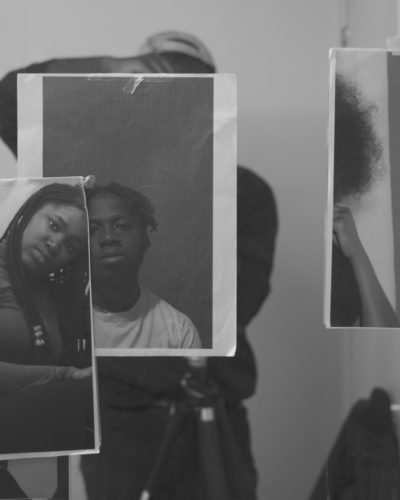
Ambient Photo
Luther Konadu
July 6 — August 4, 2018
In conjunction with this exhibition, Konadu has curated a screening of Charles Burnett’s film, Killer of Sheep and the short, Several Friends, on Thursday, July 26 at 7PM at Globe Cinema (617 8 Ave SW). Tickets to this screening are $12 at the door and on Eventbrite, or $10 at the door with a valid student ID. Tickets can be purchased ahead of time here. Thank you to the Globe for their generous support of this program!
Exhibition Description
Luther Konadu’s photographic processes and experiments ultimately seek to expand ways of viewing. As part of one continuous documentary series, Konadu’s work considers a discursive approach to self-portraiture; one that is less linked to autobiography but rather to a diverging collective identity. Konadu’s work acknowledges the legacies of social documentary photography as an interpretive site for constructing narratives that counter prevailing and dominant ones. Konadu is interested in how he can create an alternate past in order to imagine a different future of self. The resulting fragment images highlight Konadu’s close community of family of friends in his personal studio as they create a document of self on their own terms.
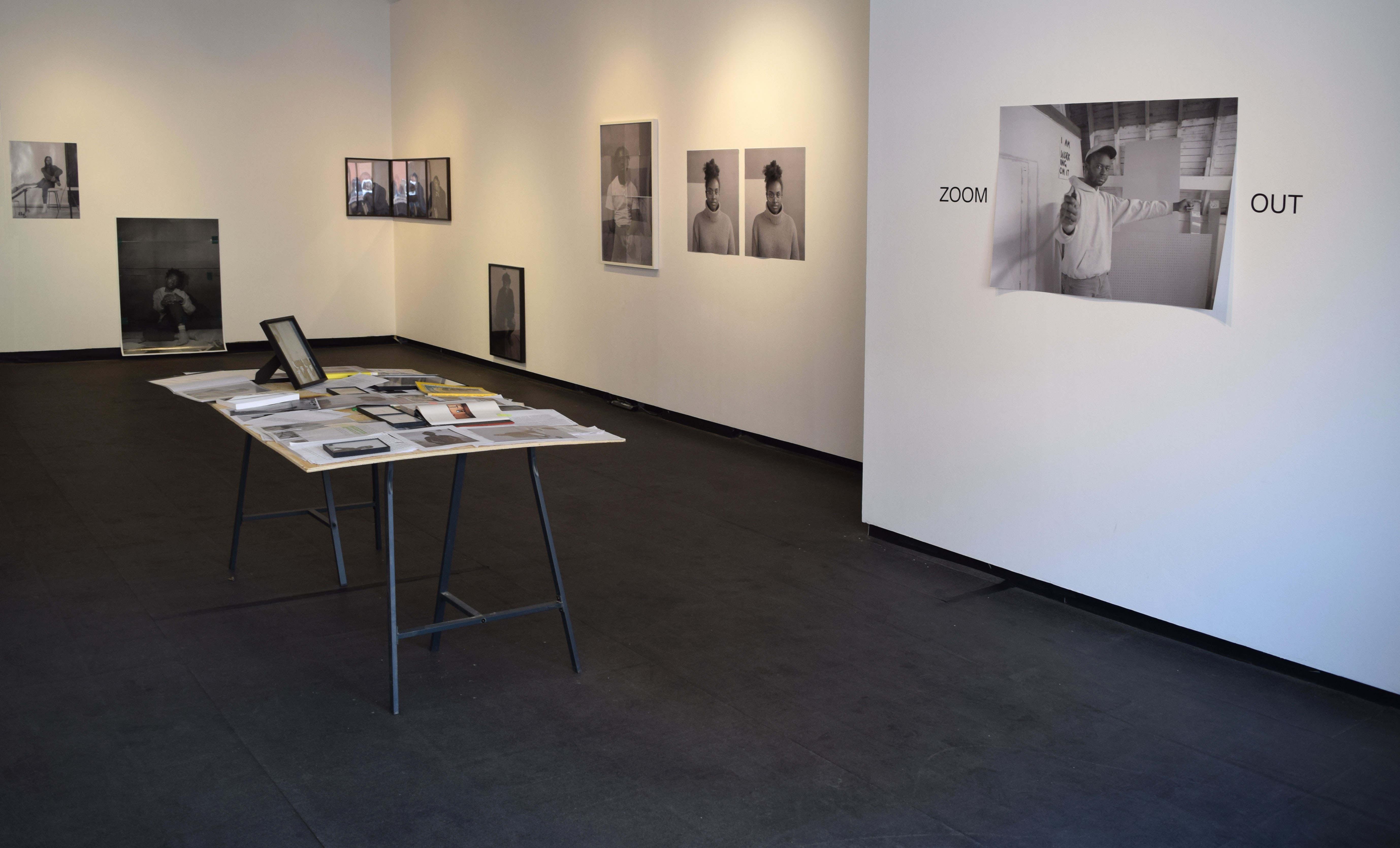
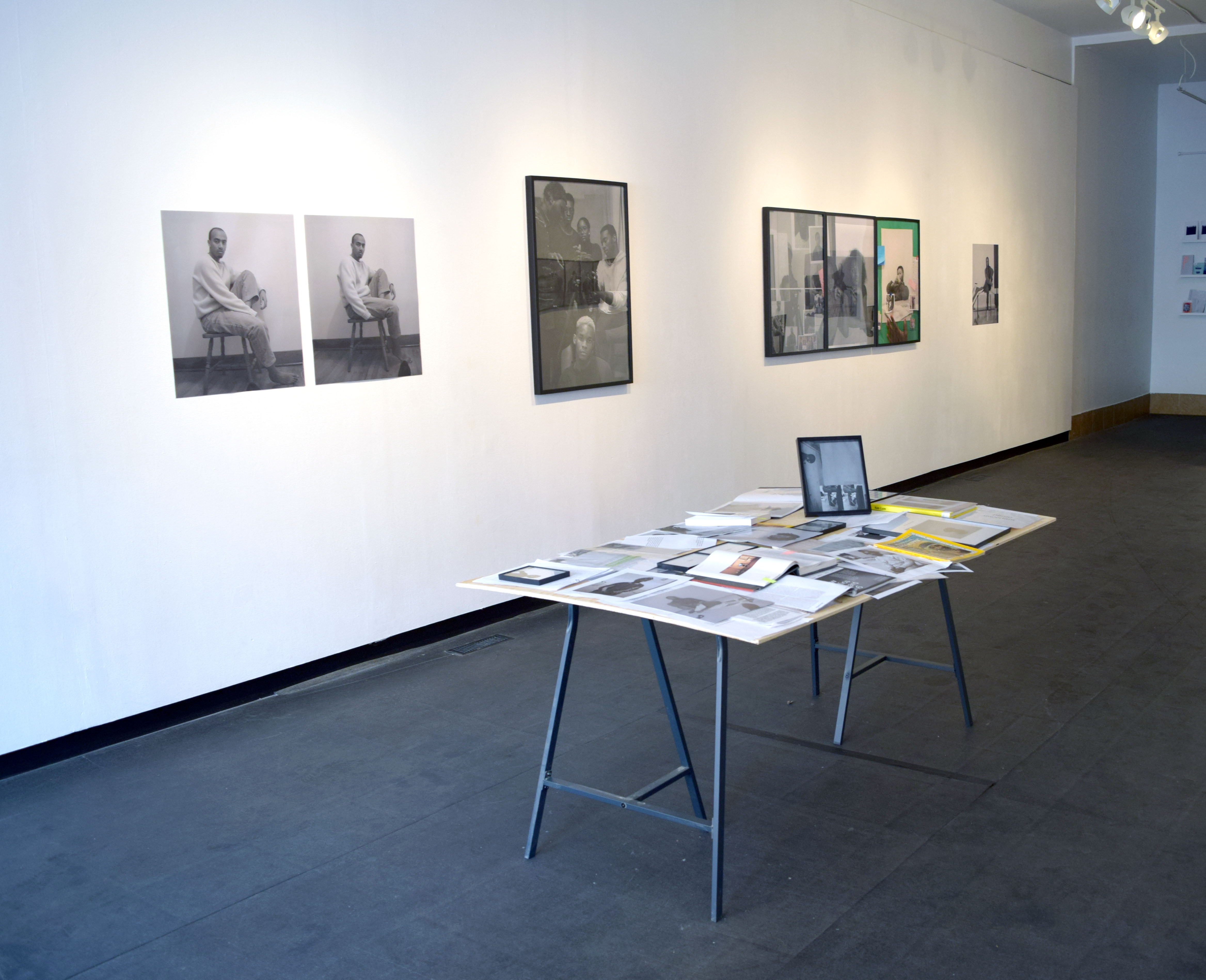






Exhibition Text / Purple Prose
Position. Colour,
angle, light. Moved
No logos. Just youth
Pride and Cool
A pose in the coup of age. Once
power and dust shape the earth
On sticky notes in blue, pink and in green
History will snap flat. Culture will be held!
The tune carrying the curtain
shut. With brass will blast
In the clasp of pressure. Lights
will strobe. Released and whole
Around 19 BCE, the poet Horace coined the often quoted phrase: “as is painting, so is poetry.” A modern equivalent could substitute painting for the ubiquitous pictorial frame of the internet, “as is the internet, so is poetry”. A twentieth-century equivalent could have been something like, “as was photography, so too, was poetry.” Assuming the internet took up where photography left off—is poetry really a thing that can endure being paralleled to painting, photography, and the internet?
Many useless parallel analogies can be drawn between the structure of a poems’ lines, its rhythmic energy, and the arches of technical prowess one can display while working in an old darkroom. Black and white tonality and subtractive colour systems worked like the large family of liquid semivowels and aspirate and mute consonant sounds that paved the way for free verse. I suppose the process of applying skill in framing a thought or an image, is also comparable to knowing html, or any other markup language or coding cypher used to make the world today.
Proficiency is the overlord. After all, what is language if not a proficiency machine? Horace addressed our need to decorate the world with words—a purple patch he called it. What we now call purple prose. Horace preferred a more unified poetic code; one that called for technique and power, for ingenuity—as the most valuable properties demanded from a poet.[1]
Like phantom limbs, the technologies for writing and making imagery have taken a hold of us as much and as quickly as we have let them. When we don’t have our devices nearby we still feel them somatically, grotesquely shaping our movements and thoughts. And while technical expertise does not guarantee originality or an artist’s capacity to make nuanced work, folding the need for virtuosity in (folding the use we give to equipment along with the meat of our means for making the world) allows these somatic roams to resolve our approach to artistic production. Through a fold we meet the needs of the spirit in a healthy or therapeutic way because a fold highlights ambivalence as resolve.
I look at Luther Konadu’s photographs on the screen of a 10-year old laptop. The machine itself only days away from failure, each key pushed slowly leading to dilapidation. Konadu’s images in contrast appear bright and luminescent and sometimes, because of the device’s instability, they emerge a crumbled mix of digital pixels. Under these conditions I slowly preview his work. The computer’s existence is, reasonably, no longer a threat to me, but its potential break would disrupt my flow of communication. I stare out the window. Bells ring outside from an ambulatory ice cream vendor. Every afternoon he walks by pigeon songs, children and adults. He walks past their errors. Every afternoon stops at the margins. A page, a park, a teenager noodling on an electric guitar wearing a crumpled leather jacket and a punk band’s t-shirt. What and who is it that looks at any of these images? The real and the screened? The crumbling objects, other people, the park, a dog’s bark, my gaze, Southern California, mild weather, good light. I write:
On the screen young adult faces stare into the lens of a camera in a photographic studio. On the screen, it is winter or fall in Winnipeg, Manitoba. The kids are clothed in sweatshirts and turtlenecks. Warmed. The photographs are printed cheaply on laserjets, or so I am told. The biggest luxury the reader will have over me will be the ability to see the texture of the paper and the ink on the page, that inherent fragility that is made of material. The viewer will have the ability to linger on the analogue and I don’t mean analogue in the sense of film vs. digital, but in the sense of real life vs. live streamed. They will get to see how these objects and images take presence in a shared plane of space while all I get is their phantom stream.
Walking sense into pleasure in the Epistles to the Pisos Horace wrote, “If a painter should wish to unite a horse’s neck to a human head, and spread a variety of plumage over limbs [of different animals] taken from every part [of nature], so that what is a beautiful woman in the upper part terminates unsightly in an ugly fish below; could you, my friends, refrain from laughter, were you admitted to such a sight. Believe, ye Pisos, the book will be perfectly like such a picture, the ideas of which, like a sick man’s dreams, are all vain and fictitious: so that neither head nor foot can correspond to any one form.”[2] Konadu’s images do not respond to a singular form either. The photographs fracture the faces they depict, those of Konadu’s friends and relations, across multiple pages. The images bend or at least slightly skew elbows, wrists and thoughts over xeroxes. While Horace might have frowned at the incongruous, for us, it is a way of life. Astray, we make sense! Anything else doesn’t. It could also be said that the complex composition process behind these images imitates the fragmentation or content divisibility of an open tab on a web page, yet Konadu’s work is not made for the screen. It is printed on paper, lays on a table top with post-its and notes penciled over it. In these artworks, what remains below or above the fold, or edge of each image is the spatial element with which Konadu is concerned and where the elegance of his approach is best perceived. The surface space where meaning, determination, significance and readability blend.
“My eye, myself and my sock over many surfaces.” “There is one single lens, but the printing is repercussive.” The imagined voice heard here is of the artist’s friend explaining Konadu’s process to me. Let’s call them X. Their voice anticipates how the photographs might look in a gallery, edited and display-ready, instead of archived as they are in the digital folder I face. Across the opened window, on the screen, the works read as performative. My voice blends with X’s. As I write, I too become an extension of Konadu’s direction, “write from a personal stance,” he told me. What exactly does the personal get reduced to over text? What does it come to be, when you only see delayed images of each other? Online, awkward gestures frozen on a screen? A giggle or an interlude of gags between more serious conversation.
K, T and P.
Mute sounds.
Konadu’s images, like this text, aim to avoid reduction but they cannot do without. Even as we know we are more than the geographical contingency of the place from where we stand or from whence we came. When we pose, when we sit, when we write, when we speak, when our semblance is frozen on a screen, when we go take a leak, we are not singular forms. We are not duplications either, nor reproductions, not strangers, nor passersby, although that immaterial content of relation is what—in these images—the photographic limbo attempts when in that fraction of a second light hits a sensor or a piece of film. That irreducible amount of time it takes for ink to hit the page, or for a single letter of the alphabet to appear when I type, that is the aura and the allure of image-framing. Reduction, how the stranger becomes familiar, is the heavily relied-upon approach of the powerful. Reduction is also the equally unexpected apparition to which we as artists and subjects, as writers and objects-to-be, are exposed and into which we are immersed. Take in power.
Looking is always a more pregnant address than any description of the sight-seen claims. It grows over time. It is birthed into further expression. Looking not only demands a surface and a platform from which the viewer stands to see, a pair of eyes. It also arrests the surface and the platform suspending any decisions made by the artist, the writer or the poet, into the phenomenology of the visible, into its vision. In this way, what was once urgent is now frozen, what was once status quo is now reflection, what was once there, is now faded and aided by the memory of what is visibly in its place. What was once life is now stream. What gels, gets replicated in an image and distressed by the immediacy of singular but scopic technocratic readings. Readings that the stream and the fold fracture, break and multiply. Afterall, how many immaterial mutations can a single picture support? If we were to understand subject as self, then these images and their fracturing would all be portraits of Luther Konadu. The dominating content in them being self-expression.
Normal Heights, San Diego, May 2018
Works Cited
[1] Laird, Andre, “The Ars Poetica” from The Cambridge Companion to Horace, University Press, Cambridge, England: 2007. 134-135
[2] Smart, C., “Ars Poetica: Prose” from Horace: Complete Works, Delphi Classics, East Sussex, United Kingdom, 2013.
Blakeney, Henry Edward, Horace and the Art of Poetry, Books for Libraries Press, Freeport, New York: 1970. 43
-Fabiola Carranza
angle, light. Moved
No logos. Just youth
Pride and Cool
A pose in the coup of age. Once
power and dust shape the earth
On sticky notes in blue, pink and in green
History will snap flat. Culture will be held!
The tune carrying the curtain
shut. With brass will blast
In the clasp of pressure. Lights
will strobe. Released and whole
Around 19 BCE, the poet Horace coined the often quoted phrase: “as is painting, so is poetry.” A modern equivalent could substitute painting for the ubiquitous pictorial frame of the internet, “as is the internet, so is poetry”. A twentieth-century equivalent could have been something like, “as was photography, so too, was poetry.” Assuming the internet took up where photography left off—is poetry really a thing that can endure being paralleled to painting, photography, and the internet?
Many useless parallel analogies can be drawn between the structure of a poems’ lines, its rhythmic energy, and the arches of technical prowess one can display while working in an old darkroom. Black and white tonality and subtractive colour systems worked like the large family of liquid semivowels and aspirate and mute consonant sounds that paved the way for free verse. I suppose the process of applying skill in framing a thought or an image, is also comparable to knowing html, or any other markup language or coding cypher used to make the world today.
Proficiency is the overlord. After all, what is language if not a proficiency machine? Horace addressed our need to decorate the world with words—a purple patch he called it. What we now call purple prose. Horace preferred a more unified poetic code; one that called for technique and power, for ingenuity—as the most valuable properties demanded from a poet.[1]
Like phantom limbs, the technologies for writing and making imagery have taken a hold of us as much and as quickly as we have let them. When we don’t have our devices nearby we still feel them somatically, grotesquely shaping our movements and thoughts. And while technical expertise does not guarantee originality or an artist’s capacity to make nuanced work, folding the need for virtuosity in (folding the use we give to equipment along with the meat of our means for making the world) allows these somatic roams to resolve our approach to artistic production. Through a fold we meet the needs of the spirit in a healthy or therapeutic way because a fold highlights ambivalence as resolve.
I look at Luther Konadu’s photographs on the screen of a 10-year old laptop. The machine itself only days away from failure, each key pushed slowly leading to dilapidation. Konadu’s images in contrast appear bright and luminescent and sometimes, because of the device’s instability, they emerge a crumbled mix of digital pixels. Under these conditions I slowly preview his work. The computer’s existence is, reasonably, no longer a threat to me, but its potential break would disrupt my flow of communication. I stare out the window. Bells ring outside from an ambulatory ice cream vendor. Every afternoon he walks by pigeon songs, children and adults. He walks past their errors. Every afternoon stops at the margins. A page, a park, a teenager noodling on an electric guitar wearing a crumpled leather jacket and a punk band’s t-shirt. What and who is it that looks at any of these images? The real and the screened? The crumbling objects, other people, the park, a dog’s bark, my gaze, Southern California, mild weather, good light. I write:
On the screen young adult faces stare into the lens of a camera in a photographic studio. On the screen, it is winter or fall in Winnipeg, Manitoba. The kids are clothed in sweatshirts and turtlenecks. Warmed. The photographs are printed cheaply on laserjets, or so I am told. The biggest luxury the reader will have over me will be the ability to see the texture of the paper and the ink on the page, that inherent fragility that is made of material. The viewer will have the ability to linger on the analogue and I don’t mean analogue in the sense of film vs. digital, but in the sense of real life vs. live streamed. They will get to see how these objects and images take presence in a shared plane of space while all I get is their phantom stream.
Walking sense into pleasure in the Epistles to the Pisos Horace wrote, “If a painter should wish to unite a horse’s neck to a human head, and spread a variety of plumage over limbs [of different animals] taken from every part [of nature], so that what is a beautiful woman in the upper part terminates unsightly in an ugly fish below; could you, my friends, refrain from laughter, were you admitted to such a sight. Believe, ye Pisos, the book will be perfectly like such a picture, the ideas of which, like a sick man’s dreams, are all vain and fictitious: so that neither head nor foot can correspond to any one form.”[2] Konadu’s images do not respond to a singular form either. The photographs fracture the faces they depict, those of Konadu’s friends and relations, across multiple pages. The images bend or at least slightly skew elbows, wrists and thoughts over xeroxes. While Horace might have frowned at the incongruous, for us, it is a way of life. Astray, we make sense! Anything else doesn’t. It could also be said that the complex composition process behind these images imitates the fragmentation or content divisibility of an open tab on a web page, yet Konadu’s work is not made for the screen. It is printed on paper, lays on a table top with post-its and notes penciled over it. In these artworks, what remains below or above the fold, or edge of each image is the spatial element with which Konadu is concerned and where the elegance of his approach is best perceived. The surface space where meaning, determination, significance and readability blend.
“My eye, myself and my sock over many surfaces.” “There is one single lens, but the printing is repercussive.” The imagined voice heard here is of the artist’s friend explaining Konadu’s process to me. Let’s call them X. Their voice anticipates how the photographs might look in a gallery, edited and display-ready, instead of archived as they are in the digital folder I face. Across the opened window, on the screen, the works read as performative. My voice blends with X’s. As I write, I too become an extension of Konadu’s direction, “write from a personal stance,” he told me. What exactly does the personal get reduced to over text? What does it come to be, when you only see delayed images of each other? Online, awkward gestures frozen on a screen? A giggle or an interlude of gags between more serious conversation.
K, T and P.
Mute sounds.
Konadu’s images, like this text, aim to avoid reduction but they cannot do without. Even as we know we are more than the geographical contingency of the place from where we stand or from whence we came. When we pose, when we sit, when we write, when we speak, when our semblance is frozen on a screen, when we go take a leak, we are not singular forms. We are not duplications either, nor reproductions, not strangers, nor passersby, although that immaterial content of relation is what—in these images—the photographic limbo attempts when in that fraction of a second light hits a sensor or a piece of film. That irreducible amount of time it takes for ink to hit the page, or for a single letter of the alphabet to appear when I type, that is the aura and the allure of image-framing. Reduction, how the stranger becomes familiar, is the heavily relied-upon approach of the powerful. Reduction is also the equally unexpected apparition to which we as artists and subjects, as writers and objects-to-be, are exposed and into which we are immersed. Take in power.
Looking is always a more pregnant address than any description of the sight-seen claims. It grows over time. It is birthed into further expression. Looking not only demands a surface and a platform from which the viewer stands to see, a pair of eyes. It also arrests the surface and the platform suspending any decisions made by the artist, the writer or the poet, into the phenomenology of the visible, into its vision. In this way, what was once urgent is now frozen, what was once status quo is now reflection, what was once there, is now faded and aided by the memory of what is visibly in its place. What was once life is now stream. What gels, gets replicated in an image and distressed by the immediacy of singular but scopic technocratic readings. Readings that the stream and the fold fracture, break and multiply. Afterall, how many immaterial mutations can a single picture support? If we were to understand subject as self, then these images and their fracturing would all be portraits of Luther Konadu. The dominating content in them being self-expression.
Normal Heights, San Diego, May 2018
Works Cited
[1] Laird, Andre, “The Ars Poetica” from The Cambridge Companion to Horace, University Press, Cambridge, England: 2007. 134-135
[2] Smart, C., “Ars Poetica: Prose” from Horace: Complete Works, Delphi Classics, East Sussex, United Kingdom, 2013.
Blakeney, Henry Edward, Horace and the Art of Poetry, Books for Libraries Press, Freeport, New York: 1970. 43
-Fabiola Carranza
Biographies
Luther Konadu is an emerging writer and an image-maker. He’s also a content contributor for the online publication Public Parking. A collaborative project for highlighting the working practices of emerging creatives. His studio activities are project-based and realized through photographic print media and painting processes. He acknowledges the legacies of these mediums as interpretive sites for generating new conventions and expanding fixed narratives. Konadu currently lives and works on Treaty One Territory, the stolen lands of the Anishinaabe, Métis, Cree, Dakota and Oji-Cree Nations.
Fabiola Carranza is a Costa Rican/Canadian artist living in Southern California. Her artwork incorporates or adapts text, video and readily available sculptural materials to explore their provisional political potential. Carranza’s work reflects on the historical present by blending visual, cultural and personal phenomena. Carranza holds an MFA from the University of British Columbia and a BFA from Emily Carr University. Recent projects include a solo exhibition at Espacio Deslave in Tijuana, México; inclusion in Fulhame’s Map at Nanaimo Art Gallery and the completion of residencies at Plug-In Institute in Winnipeg, Hospitalfield in Scotland, and SOMA in México. Carranza will start a PhD program at the University of California, San Diego in September.

Dancing On My Own
Maddie Alexander
November 14 – December 9, 2017
The New Gallery is pleased to present Dancing On My Own by Maddie Alexander in conjunction with Femme Wave Visual Art. The exhibition will be on view from 12-6PM, Tuesday-Saturday, at The New Gallery’s Resource Centre (#115, 115 2nd Avenue SW).
Join us on November 16, at 10AM, for an artist talk by Maddie at the Taylor Family Digital Library Gallery Hall.
A special reception and pop-up dance party, Femmetopia will take place November 17, at 10PM-Late, at Local 510 (510 17th Ave SW)
Exhibition Description
A visual archive of femme*-centric queer space and community by Maddie Alexander (Toronto). A new beat in the rhythm of their archival practice, this work is interactive, ongoing, and conversational.
Exhibition Text:
JUST BETWEEN FEMMES: the unique nature of queer-femme dialogue
Our dialogues are autobiographical. They are specific to the emotional and intellectual landscapes of those voicing our experiences. In the case of queer-femme artworks, these personal contexts are often essential to their viewing and are innately woven throughout their production and presentation. As queer-femmes, we often do not value certainty but rather the ability to question ourselves and our communities. We value an artwork that has the ability to disrupt but that simultaneously has the ability to augment.
Patriarchal standards of logic assert that for every intersection between two or more ideas, there can be an assimilation of both perspectives into a single greater (and more true) conclusion; that compromise on at least one side is always necessary for conclusion. It asserts that this final conclusion will negate the theories and realizations of the past, and that the resulting dialogues will continuously move forward, perpetually onward to greater things.
Queer-femme conversations provide an alternative. Instead, they value and acknowledge the intersections among our varying and numerous parts. Because of our greater experience of intersectionality and diversity, queer-femme dialogue doesn’t encourage any one direction of conclusion. Instead, because of the differing paces of movement among its parts, the growth pattern of queer-femme dialogue is organic and highly contextual. A conversation among queer-femmes will pass through subjects, valuing and acknowledging the relevance of each topic, while also using each as a doorway to the next insight and/or understanding.
Queer-femmehood doesn’t hold a patriarchal narrative of one-dimensional propulsion, so it welcomes opportunity for disruption, criticism, reiteration and greater personal understanding. It is experiential. It looks towards the future, but it does so while looking inwards. For each externalized conversation, there is another within. For example, we need only to look to the feminist adage “the personal is political…”. This experiential quality renders it necessary to acknowledge who our community is made of and what identities we are capable of. Queer-femmehood is fluid. It observes the expressions of those who identify with it, aware of our individual/personal diversity of gender and sexual orientation. Rather than enforcing sustainability through the production of norms, queer-femme dialogue offers sustainability through consistent and indispensable accessibility to self-critique and of self-realization. The complexity and benefits of queer-femme conversation are synonymous with the complexity of those who identify as such.
Rarely will a queer-femme dialogue ever come to a fixed conclusion; there are no distinct ends to our conversations. The contextualization of queer-femme dialogue, though personal, is simultaneously crowd-sourced from other queer-femmes. The vocabulary we use to express ourselves (even “queer-femme” as a term itself) comes from the historical interactions of our communities and from the sharing of lived experiences; including stories of relationships, traumas, and explorations of identity, among others. But because every subject is often so closely tied to those who discuss it there is rarely an anonymous voice in queer-femme dialogue. Instead theres is a shared voice. This shared voice is accountable to the emotional and intellectual landscapes of all of those who speak with it.
-Angela Fermor
Biographies
Maddie Alexander is a Canadian artist practicing in Toronto, Ontario. They began their education at NSCAD University in Halifax, Nova Scotia, and completed their BFA in Photography at OCAD University. They have exhibited both locally and internationally, and received the Project 31 Photography Award in 2016.
Alexander’s practice is multidisciplinary, primarily manifesting in moving or still image, text, and installation. Their work aims to combine gesture + language to explore narratives around queer identity, intersectional feminist discourse, and mental illness. By pulling imagery from oversaturated media, be it pop culture or porn, Alexander manipulates it to create dialogue around how this shapes and distorts our understanding of queer bodies, identity and sexuality.
Angela Fermor is a queer emerging artist and writer living in Calgary, Alberta. Fermor’s practices engage with observing poetic patterns and peculiarities, most often on the topics of communication and identity.
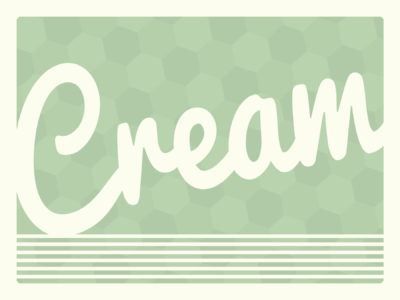
CREAM
The New Gallery’s annual fundraiser CREAM takes place on Saturday, November 4, 2017 at our Main Space (208 Centre St. SE) at 7PM. Jam out to tunes all night long, provided by kerry only. A cash bar will be available, stocked with your favourite beers from Big Rock Brewery!
At this year’s fundraiser, The New Gallery will launch two new limited-edition artist multiples by geetha thurairajah and the collective, Puddle Popper. These multiples will be available for purchase beginning at 7PM.
Cash, credit card, and cheques will be accepted for these multiples.
geetha thurairajah -$125.00, urethane elastomer, pigment, 2017. Edition of 30.
Puddle Popper – $100.00, inkjet on Hahnemuhle Fine Art Baryta paper, 2017. Edition of 30.
The New Gallery is also excited to launch CHOICE, a monthly giving program for art lovers, at this year’s event.
CHOICE was created to grow TNG’s base of supporters, members, and art lovers who can sign-up to give back to our charitable centre for contemporary art through monthly giving. CHOICE includes the bonus of selecting an artist multiple from TNG Press for each year of support! This perk is provided annually at the beginning of your pledge, allowing you to bring your new multiple home to enjoy on the same day that you sign-up!
There are three levels of monthly giving:
The Supporter $10/month
The Collector $15/month
The Patron $20+/month
All Supporters receive a new or renewed TNG membership and and a limited edition artist multiple valued up to $50 from TNG Press!
All Collectors receive a new or renewed TNG membership, and a limited edition artist multiple valued up to $100 from TNG Press!
All Patrons receive a new or renewed TNG membership and a limited edition artist multiple valued up to $150 from TNG Press!
Credit card or post-dated cheques will be accepted for the CHOICE program.
For more information about CHOICE, please visit: www.thenewgallery.org/choice
As always, The New Gallery has a fabulous raffle lined up with 9 wonderful raffle prize packages you can win this Saturday during CREAM! Tickets are $10 each, with only 300 tickets being sold! $4000 in prizes to be won – come by the gallery the week of the fundraiser from 12-6PM this week to pick your tickets up in advance!
Please bring cash for your raffle tickets purchase!
Prize #1 Bodhi Tree Yoga Centre, RnR Wellness the SPA, & Gravity Pope Package valued at $279.00
Prize #2 The Camera Store, Understudy, & Avalanche! Institute of Contemporary Art Package valued at $509.34
Prize #3 Hedkandi Salon & John Fluevog Shoes Package valued at $300.00
Prize #4 3-part Print Package by Ryan Statz valued at $600.00
Prize #5 La-Z-Boy Chair valued at $899.00
Prize #6 Illingworth Kerr Gallery & Inglewood Art Supplies Package valued at $245.00
Prize #7 The Silk Road Spice Merchant, skoah, & Shelf Life Books Package valued at $231.48
Prize #8 Glenbow Museum & Calaway Park Package valued at $369.79
Prize #9 The Brass Monocle & CJSW 90.9 FM Package valued at $599.00
Donations are always welcome throughout the year, and can be made online: https://www.canadahelps.org/dn/14227
Thank you to our wonderful raffle donors!
 |  | |
 |  |  |
 |  |
 |  |  |
 | ||
 |  |
A special thank you goes out to Resolve Photo for their printing sponsorship, Big Rock Brewery for their beer sponsorship, CJSW for their gear sponsorship, and to TNG Fundraising Committee member – an amazingly skilled sculptor/fabricator – Peter Redecopp.
 |  |  |
MAINSPACE EXHIBITION /
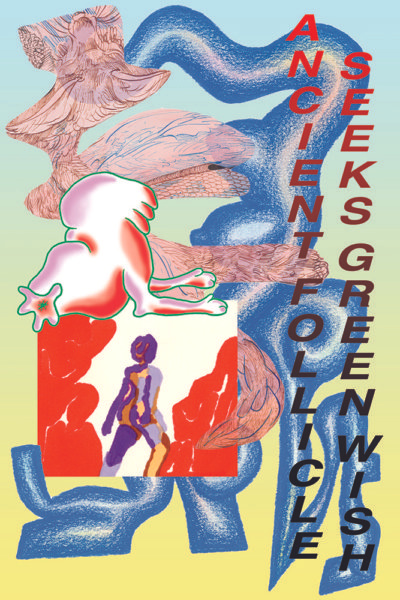
Ancient Follicle Seeks Green Wish
Puddle Popper (Sarah Davidson, Juli Majer, Sonja Ratkay and Melanie Thibodeau)
November 10—December 23, 2017
Exhibition Description
For this most recent collaborative effort, Puddle Popper has discussed wisdoms of bodies, and physical and narrative fragments. Ancient Follicle Seeks Green Wish is based on the model of past projects, where they collectively drew and printed artist books as a way of planning out sculpture-based exhibitions.
“Fantasists are childish, childlike. They play games. They dance on the burning ground. […] Even when they are making entire universes, they are only playing.”
(Ursula K. Le Guin, ‘Do it Yourself Cosmology’)
Through merging of forms, Puddle Popper creates a set-like world featuring invented beings, humanoids, tentacles and unreadable text. Puddle Popper moves towards our desires, moving between description, invention and idealization to wiggle around truths. Flowers can hurt us. Appendages transform. Colour is revised. Portals open up, we put our limbs part way through, and then all the way through. New bodies are observed and created. Slipping through realities, Ancient Follicle Seeks Green Wish is an exploration and re-imagination of being(s) in different worlds.
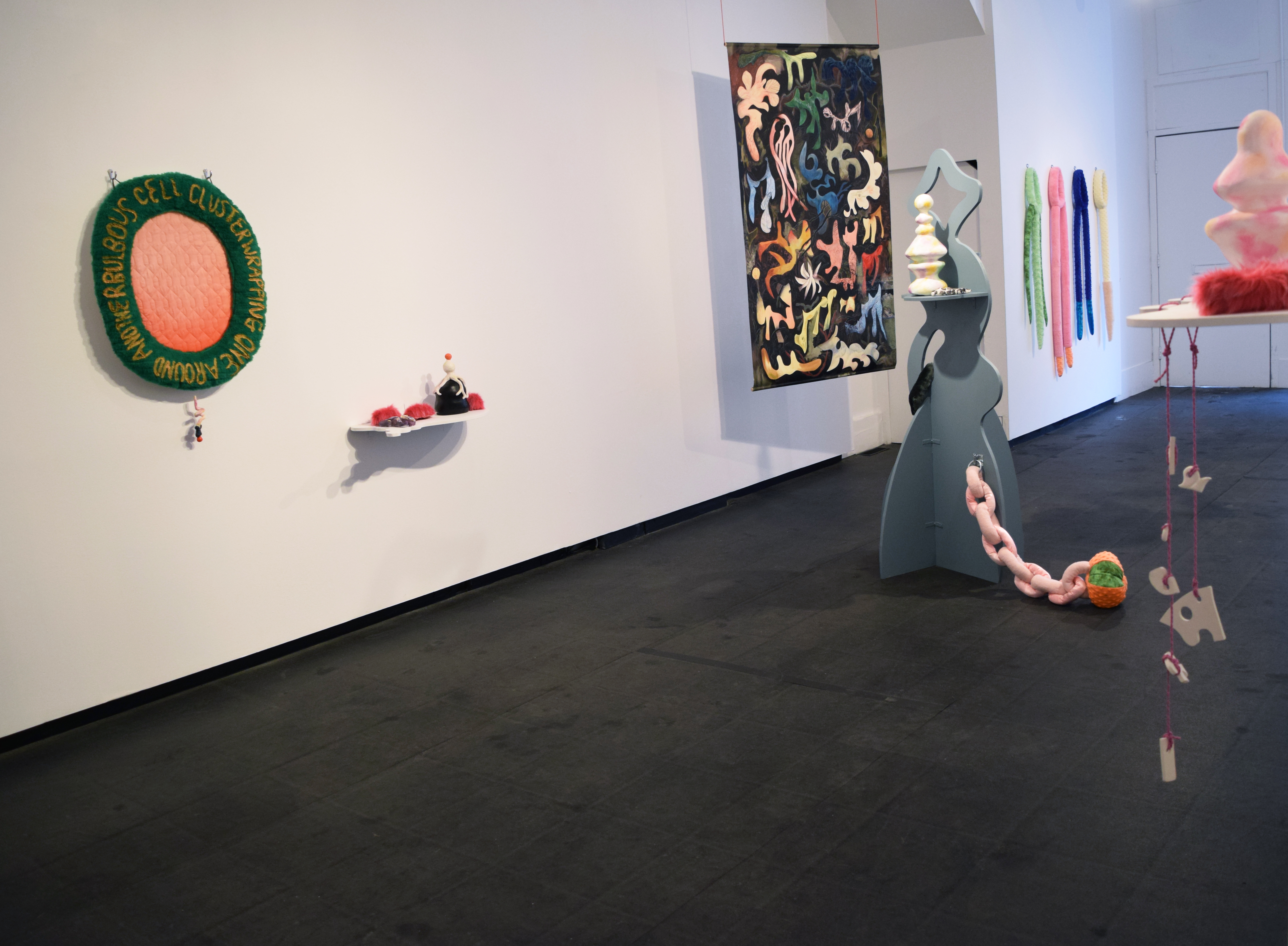
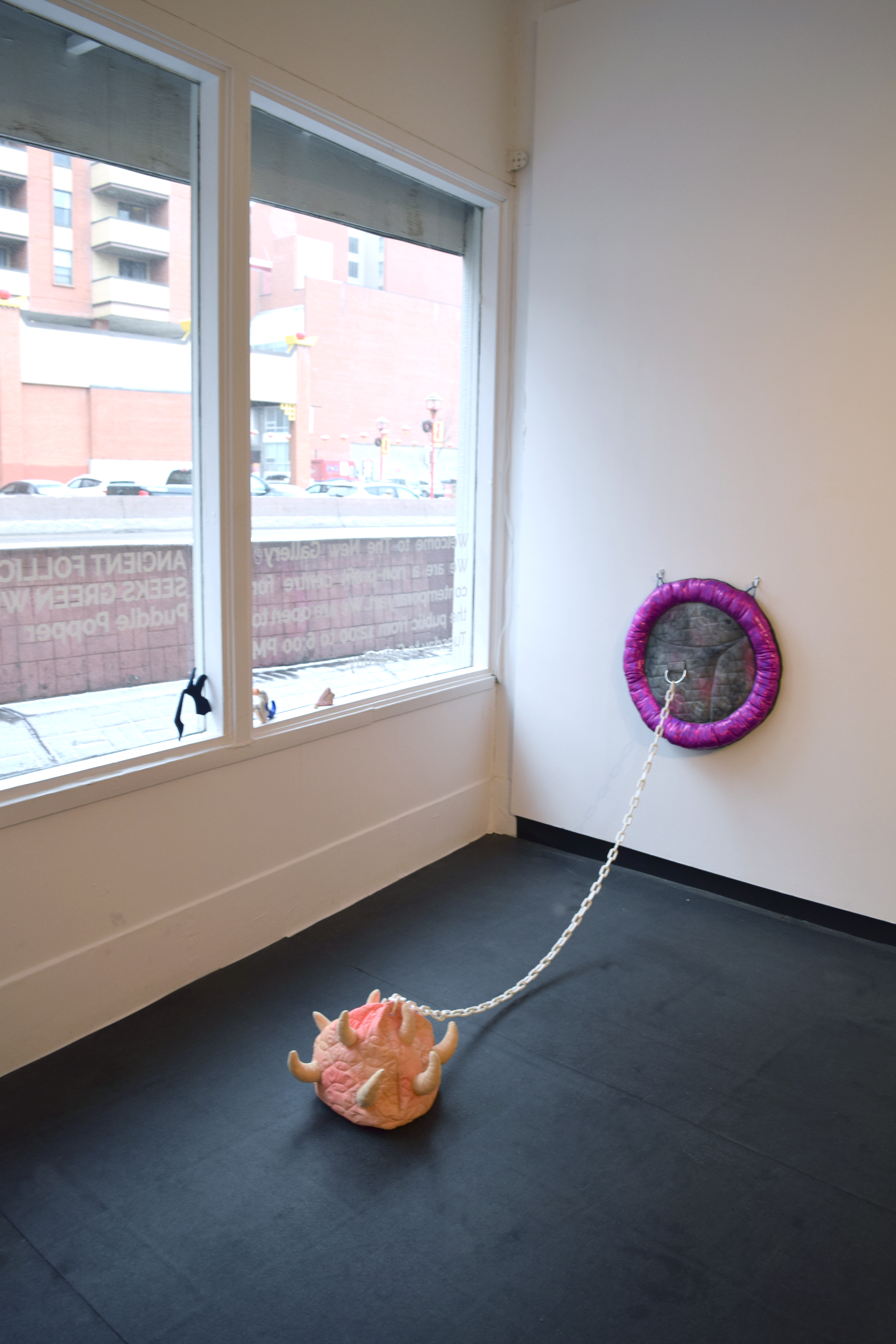

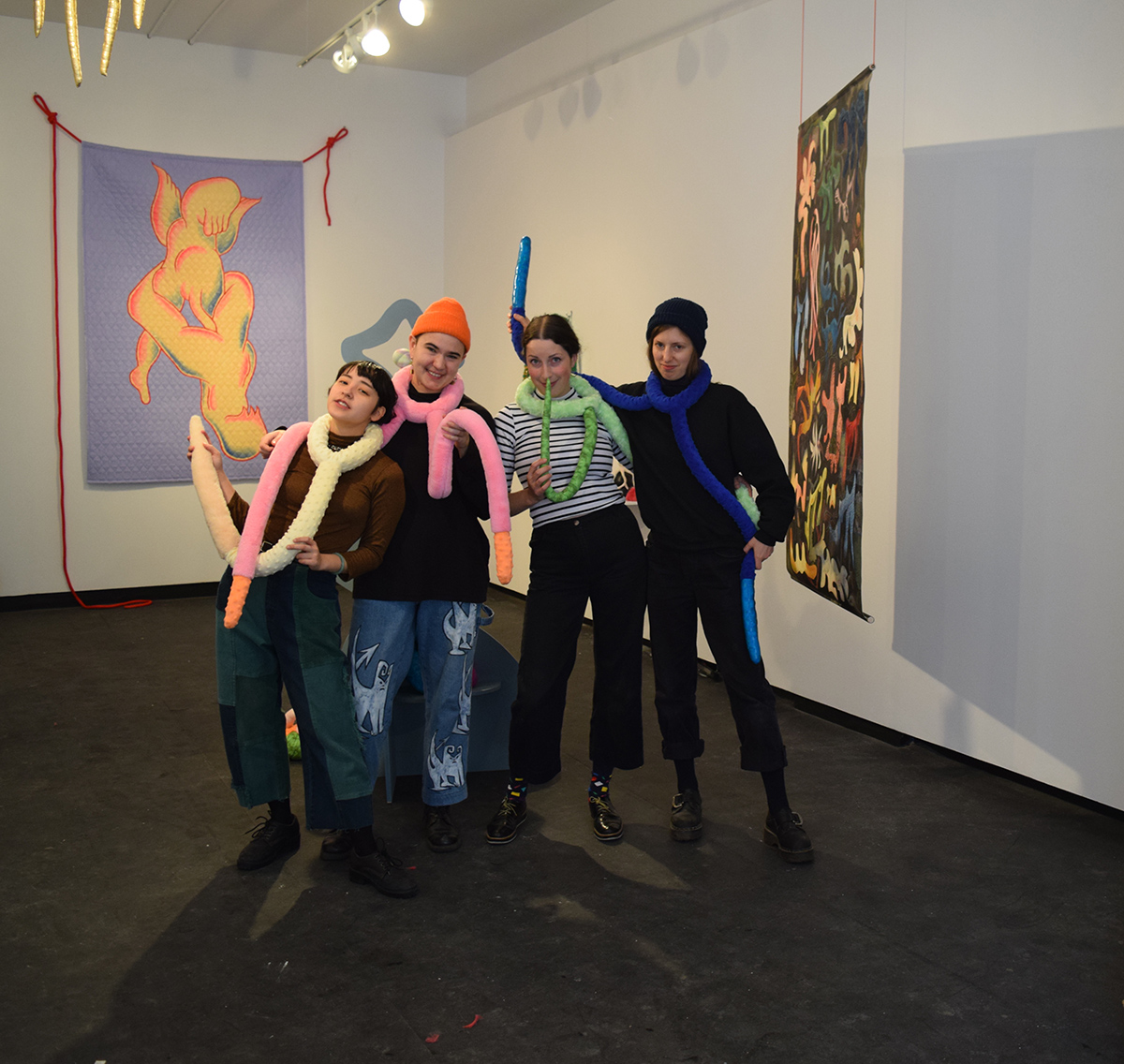
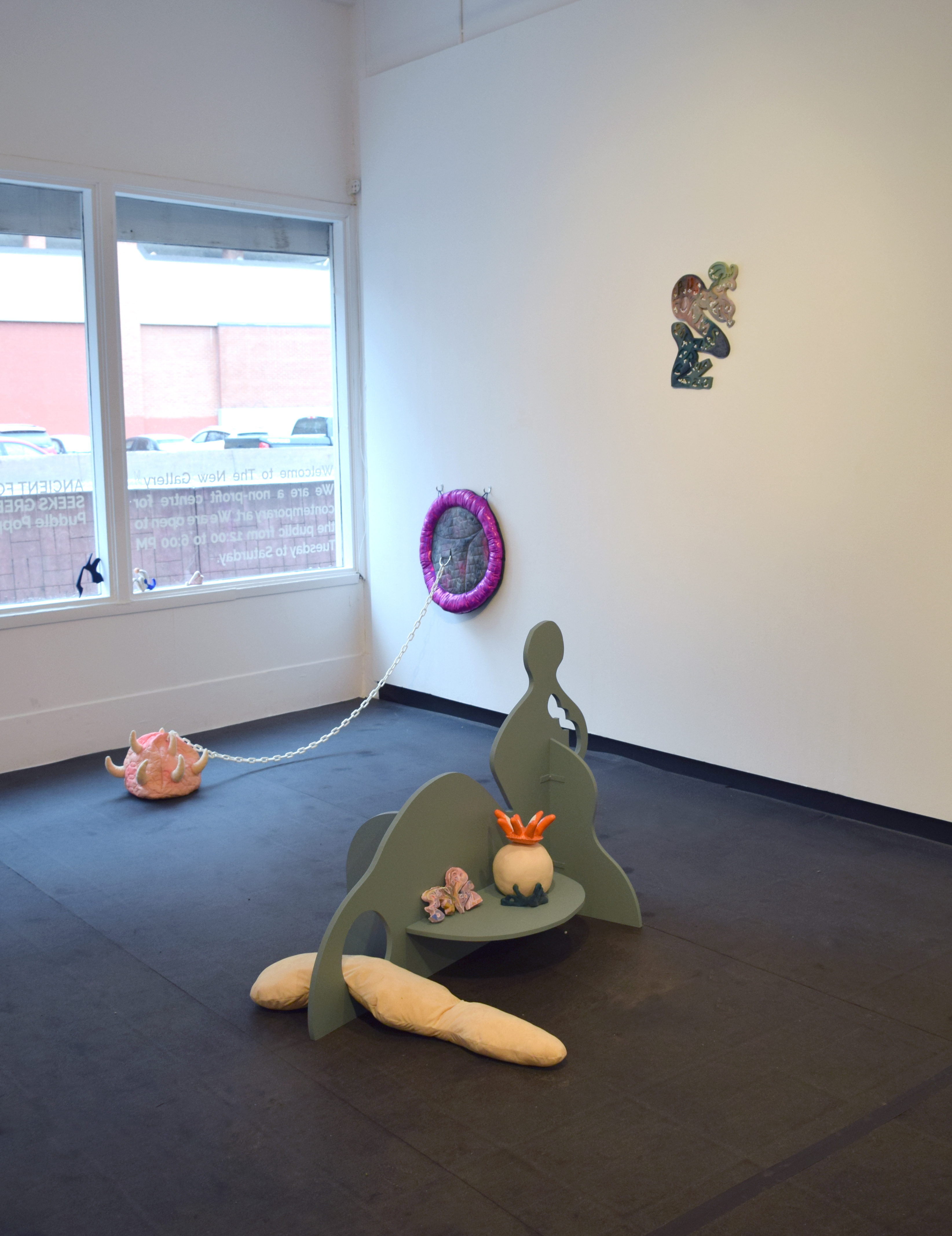
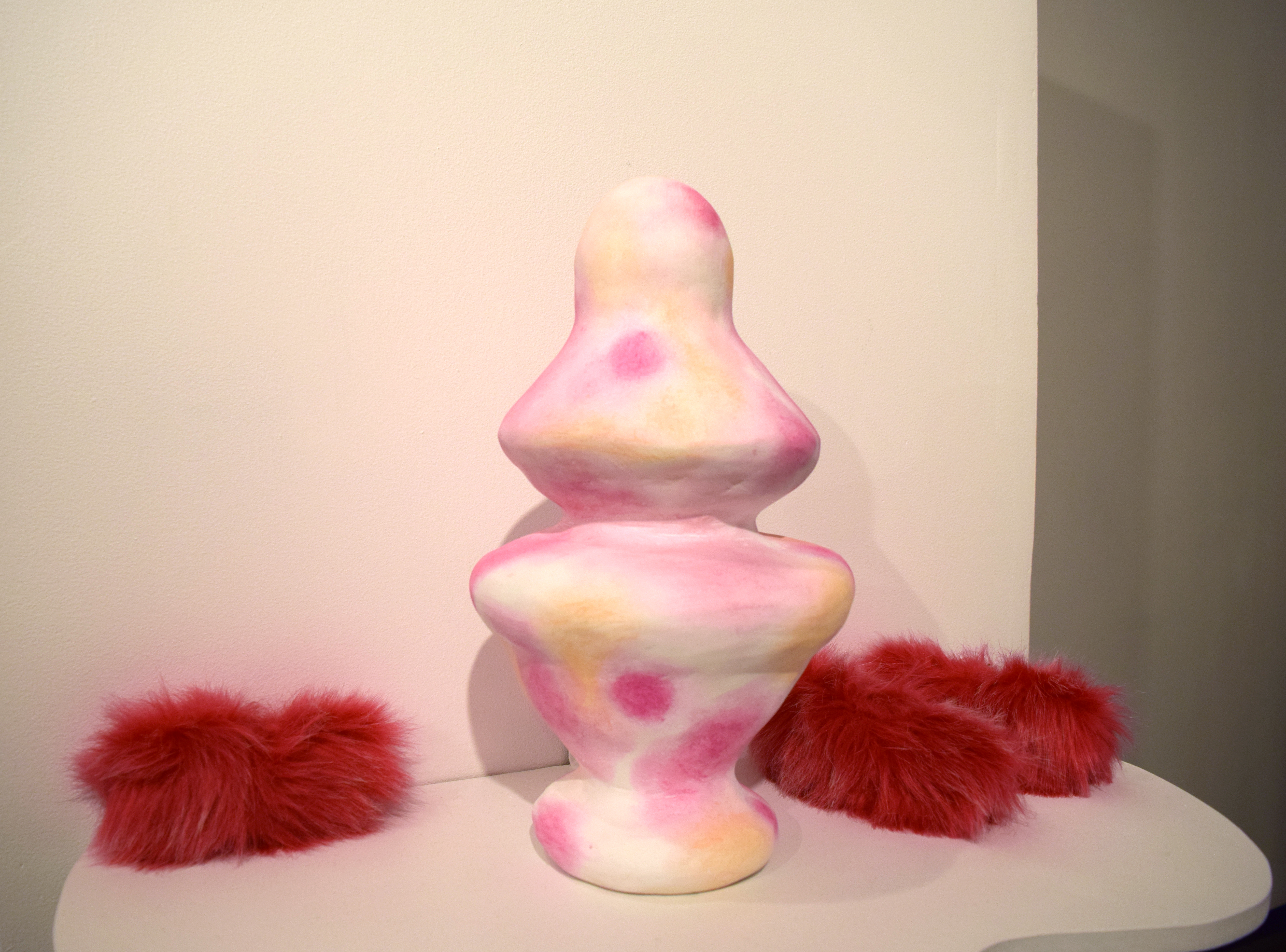
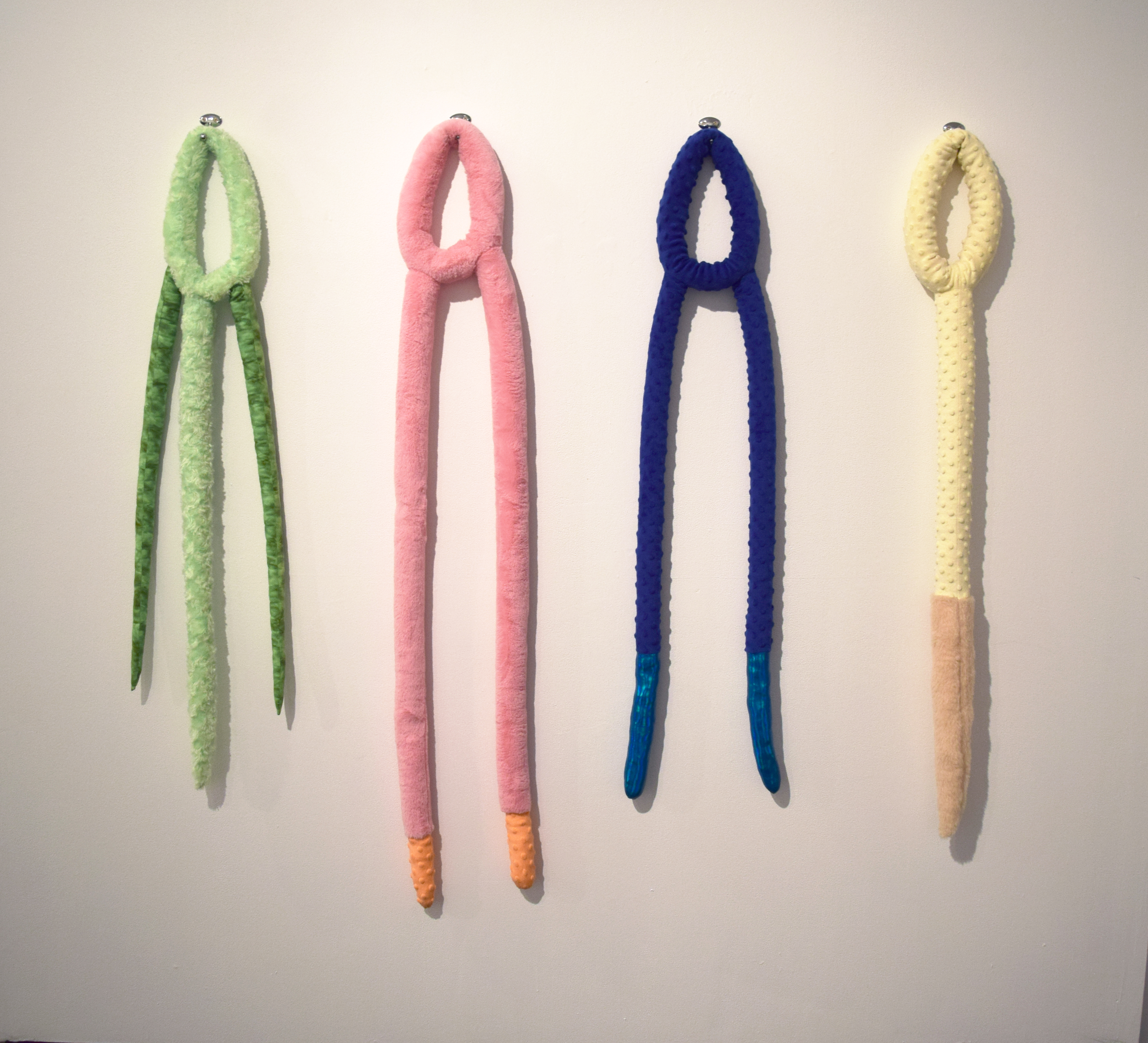
Exhibition Text
The Mystic Writing Tablet
I.
In September of 2017 I returned to the west coast of Canada after studying abroad for five months. Walking out of the airport I was overcome by a vision of the sun squeezed into the shape of a white-hot lemon surrounded by the golden aureole of an alien cartoon spaceship. I felt frightened and dislocated, not at all myself. “Jet lag,” I thought.
I slept the sleep of the dead, as I’ve heard it called. A deep dreamless sleep. In the morning I turned on the radio and heard that the fires burning in the interior of B.C. had grown to such massive proportions that they were not expected to be controllable until the winter. Some of the worst storms in recorded history were destroying many parts of Houston with raging winds, rain and flooding. The storms were moving toward Florida, where hundreds of people were being evacuated. Along with all the disasters was the news that North Korea was amping up hostilities with the U.S.
Friends started calling, wanting to get together for drinks. I noticed that Eva’s and my mutual friends were asking with a certain wariness if I had seen her yet. Others, when I ran into them, looked at me askance. That I trusted Eva I never stopped to think. I gave their manner of questioning little thought. The next day, feeling incurably lazy/dizzy from a sense of the myriad things that needed doing, I called Eva. She was pleased to hear from me and invited me for tea that afternoon.
I walked through the streets under the pink light beaming down from the alien spaceship sun. When I came to Eva’s tiny laneway house, my heart leaped. Here was her lovely unkempt-looking but passionately loved garden where, if I wanted to, I could lie down and sleep until my jet lag evaporated. As I stood there, the front door opened and I heard Eva’s friendly “Hello, hello!” We embraced and she took my hand as we walked inside.
While Eva was in the kitchen making the tea, I examined the two glass cabinets she kept for her collections of found objects. I loved finding The Recent Acquisitions as she called them. She collected stones, seed pods, shells and feathers of all sizes and colours, and set them in rows in ever-changing arrangements as though there were a riddle to be solved by the placement of a certain object among the others. “These are the Elements,” she would say, “of the great Cipher which we can discern written everywhere.”
When she brought out the tea and cookies I noticed Eva was flushed. I wondered if she had a fever, but it could also be the humidity or the sun and smoke-troubled skies.
“I’ve missed you tremendously,” she said as she poured the tea. “I have something very exciting to show you. No one else would understand it, of course, and in your absence I made the mistake of telling some people when they weren’t ready to hear about it. I am always embarrassing myself by being a blurter.”
“Eva, show me, please! You are always discovering the most amazing things.”
She went into her tiny bedroom and brought out a red velvet pillow slip holding the treasure she had alluded to. When she took it out I saw that it looked like an ordinary sketchbook from years and years ago. The paper was turning brown with age and the cardboard cover had been used as a palette. Blobs of dirty colours had been left by someone who had once used the sketchbook—now a junky old thing, not at all interesting. It had been left at the local school years ago until recently when it was finally thrown out. I didn’t say anything, because I know with Eva things are often not at all what they seem to be at first.
“I’ve been alone with this for so long I’ve started to feel I will die of it.” That is something she would say, I thought. “This is one copy out of a very few Mystic Writing Tablets still extant in our time. I am one of those who have been chosen to finish the writing and drawing so that the knowledge can be passed on.”
“Please take a look and tell me what you think. I have to lie down for a while. The writing might seem very strange but please don’t worry. We need to understand that there is a very benevolent message sent to us through this particular medium.” Eva walked across the room and set the sketchbook down on her work table. Without another word she left the room, and I heard the bedroom door close behind her.
II.
Feeling out of sync with the rest of the world, I sat for half an hour staring out the window at the grey concrete being turned a soft, eerie orange in altered sunlight. When I finally sat down at Eva’s work table and looked at the damaged sketchbook cover, I saw that there were layers of dirt and dust, the remains of a makeshift palette and even several footprints. Looking more closely I could see that there was in fact a faint image drawn there under all the dirt. There were four interlocking circles labelled Imagination, Passion, Reason and The Body. In the centre of the circles was a drawing of a corymb of blue flowers. Radiating out of the top of each circle were lines that could have been waves or flames. At the top of the image were the words The Mystic Writing Tablet. It would be a huge undertaking to restore the cover to its original lines and colours. But why does Eva think that this is her responsibility? It was time for me to get back to my apartment and continue unpacking. I left a short note on the work table and headed home.
I wondered how Eva was doing but decided not to contact her for a while. I really had no idea if I wanted to talk about the sketchbook again. I hadn’t even opened it when she’d left it out for me. I felt I was being ungrateful for her generosity in wanting to share with me, but I was not up to the work of understanding what it was. I could see why our friends were curious and concerned about her claiming to be a self-professed Keeper of the Knowledge—whatever that was.
I went to Montreal for a few months to work as an artist’s studio assistant. Basically I was being used as a janitor, and I left before I’d put in the time I’d agreed to. Eva heard I was home and phoned me. She sounded very happy and excited. “I’m flying to Paris tomorrow,” she said. “I finished my work on The Mystic Writing Tablet and found a publisher in Paris. She wants to translate it and publish a facsimile of the whole book in full colour.”
Wow! was all I could think of to say. “Good luck!” I said.
In the morning I found a note Eva had pushed under my door on her way to the airport.
Dearest Claire, I didn’t die from this work. I became energized by what I was discovering. Disappearing ink (!) was involved in the original manuscript that made the writings and drawings difficult to decipher at first but eventually began to make sense. I found recipes online for making the writing and drawings reappear.
I thought of you often when I was working late into the night. How nice it would have been to have you here to discuss what the images might mean.
The manuscript was written by several people over a period of fifty years!
Here are some lines from one of the poems I thought you would like.
Signs that look like things:
Sections of sea-serpents in the dampness of springs,
of foam, cascades, surges, juxtapositions between ideas. Things, the permanence of things, their inanity, the material of ideas, colours, light.
Farewell dark waters. Farewell Jest of Jests.
We’re nothing but expert Monkeys in dusty rows of chairs.
Your Friend,
Eva
PS. Did you know Freud wrote an essay titled A Note upon the Mystic Drawing Pad?!
You can find the pdf here:
http://cscs.res.in/courses_folder/dataarchive/textfiles/textfile.2011-12-30.8604273949/file
—Jo Cook
Biographies
Sarah Davidson’s practice aligns feminism, environmentalism, and craft. Drawing from both Pattern and Decoration painting and natural history illustration, she uses fragments as both symbols and characters in her work. Her past fragmentary explorations have drawn together crazy quilts, comics, and children’s natural history books.
Juli Majer is a visual artist from Vancouver whose practice comprises drawing, ceramics, sculpture, installation, performance, comics and publishing. She is interested in conveying hyper-polarized psychological and emotional states, which she often mediates through narrative imagery of mysticism and myth, symbolism and snakes, gods and aliens. She teeters on the precipice of a dense and opaque wormhole, pursuing visceral abstractions, inarticulate textures, and peculiar, somatic modes of existence.
Sonja Ratkay is an interdisciplinary artist, poet and researcher. Through reliefs, diagram-like drawings and immersive installations that articulate melancholy logics, she explores how living beings constitute ideas, as well as how ideas manifest in a society. She explores topics of intuition, mood, states of being, and environmental triggers which lead to psychological transformation.
Melanie Thibodeau is a queer non-binary artist whose practice explores the strangeness of having/living in a body. They navigate this strangeness through soft, tactile sculptures often reminiscent of living beings. Ongoing themes in their work deal with nostalgia and loss, childhood, comfort/discomfort, & politics surrounding gender, BDSM, and sexuality.
MAINSPACE EXHIBITION /

To talk to the worms and the stars
Miruna Dragan
Maggie Groat
Rithika Merchant
Cindy Mochizuki
Curated by Natasha Chaykowski
September 15 — October 28
Exhibition Text
we are each atoms of significance
– Arthur Evans
We are stardust
– Joni Mitchell
Hildegard von Bingen wasn’t a witch. The 12th Century nun, living in what is now Germany, was wholly entangled in the structures of the Catholic Church, which since its legalization as the religious institution of the Roman Empire in the 4th Century CE has fuelled every kind of oppression, colonization, slavery, and warmongering. It’s the institution that invented the witch, and subsequently persecuted Her in all manner imaginable for seventeen centuries, continuing through to the present with various Christian churches’ condemnation of queer ways of living and abortion, for example. Make no mistake: Hildegard was complicit in these machinations.
Yet, she was a seer, a healer, a writer, an herbalist, and a cosmically inspired composer. She made up her own 23-letter language, Lingua Ignota. From a young age, she experienced visions, not dream-like and murky, but specific, electrifying, shimmering visions, which coursed through every one of her senses: “the shadow of the Living Light” as she described it. As Prioress, and guided by a particular vision, Hildegard fought incessantly for independence and space for her nuns, which she attained. A proto white feminist as it were. How might this remarkable yet problematic woman figure into a project about marginalized ways of knowing? A project built on research about knowledge held by women, by queer folx, by Indigenous people, by many more, despite the persistence of the structures of religion, capitalism, patriarchy, heteronormativity, and colonialism that have systematically sought to extinguish such ways of knowing?
In her portrait of the divisive nun, Rithika Merchant has delicately eviscerated Hildegard: two leaves, yonic, for her face, fiery triangles extending outward, possibly infinitely, as her eyes, and her stomach, her womb: a crystalline mountain, from which snaking tendrils of a vine curl outward and surround her as a sundog might. For Merchant, reimagining historical women through her idiosyncratic visual language is a means to make sense of an enduring widespread oppression of women. Merchant’s Hildegard seems a powerful earth goddess, yet her black habit flows starkly behind her, encapsulating the complexities of this historical nun, and more broadly, the ambiguities of knowledge and power. Hildegard von Bingen wasn’t a witch, but in a way, she was.
Miruna Dragan’s In the sage telestic waters… I see… (2016/17) is a large-scale sculptural work made through the practice of molybdomancy, an old and persistent form of knowing, of divining, of telling fortunes. Molten metal, in this case aluminum, is dropped into cold water, resulting in the quick jarring of the metal into solid forms, which in turn are interpreted, either directly or via the shadows they cast. In her installation, Dragan invokes one of the earliest human wonderments: light. She creates white light using separate red, blue, and green bulbs; when the white light is interrupted, it breaks apart into cyan, magenta, yellow, as if a kind of magic, a kind of alchemy.
Fortune telling extends across time, histories, cultures, and geographies and exists in innumerable forms. Often cast as pseudoscience by a persistent and myopic white patriarchy, these multitudinous ways of knowing, like so many others, have persisted and flourished even. Cindy Mochizuki has long been sought out for her fortune telling ability, which in turn has informed her practice—they are in a sense one and the same project. In Fortune House (2014/2017), Mochizuki offers fortune readings in exchange for stories, which then become the material for further artistic production. 105 Chrysanthemums (2016) explores the architecture of dreams. Made of porcelain and chlorite, a mineral known for its healing and metaphorically magnetic properties, this sculptural installation was born of images recounted from a dream had by the artist’s grandmother. In these works, and throughout her practice, Mochizuki advocates for tender yet powerful ways of knowing that circumvent a crude limit set by patronizing discourses of science.
“To talk to the worms and the stars” is a quote from Arthur Evans’ 1978 treatise Witchcraft and the Gay Counterculture, wherein Evans argues that in order to escape the oppression of the violent systems that we find ourselves entangled in, we should return to old ways of knowing. For this exhibition, Maggie Groat created a new work what it is / what is it to walk around with one hand in the sky and the other in the earth (2017) comprised of salvaged wood, a collage and handmade garments made to garden in, to grow the stuff that will feed her and her family in the coming months, returning to foundational ways of knowing—sewing, growing, collecting—that allowed humans to thrive as a species. This new work is presented here, along with an older one: Moonlight Reflectors or A Proposal for Returning Moonlight Back to the Moon (2011 – ongoing), a series of reflective objects poetically assembled to eponymou sly return light back to the moon. Growing is so moored to the movements of the moon; the moon, moored to the light of the Sun; our bodies, comprised of the elemental stuff of other suns. All of this encapsulated in the task of growing a pumpkin. In returning to these things—the worms and the stars—as Evans suggests, perhaps there is the chance that we may know otherwise, to access things patriarchal structures of knowledge are too young to know.
Natasha Chaykowski
Image credit: Family photograph, circa 1992. Archive of the curator.

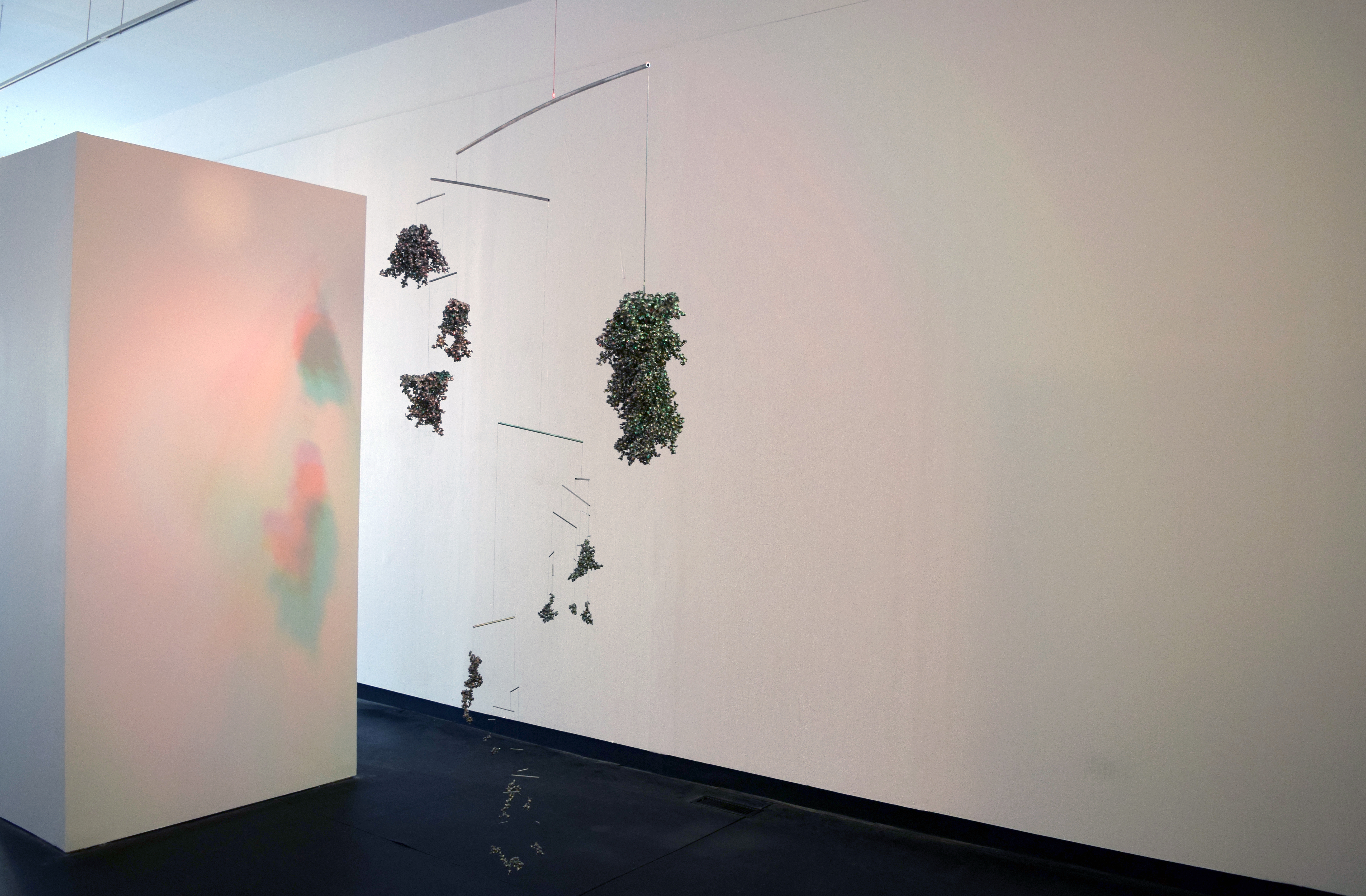
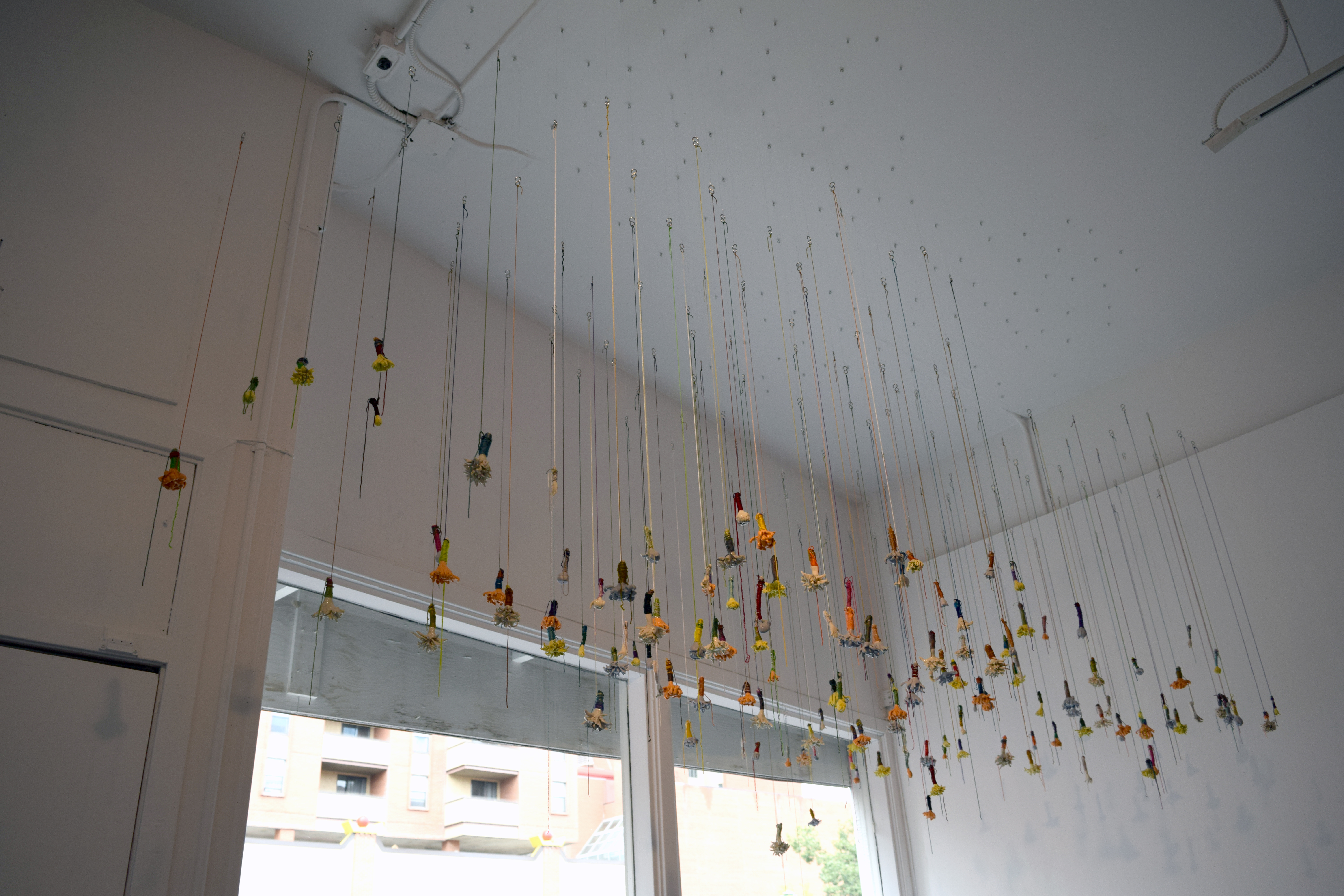
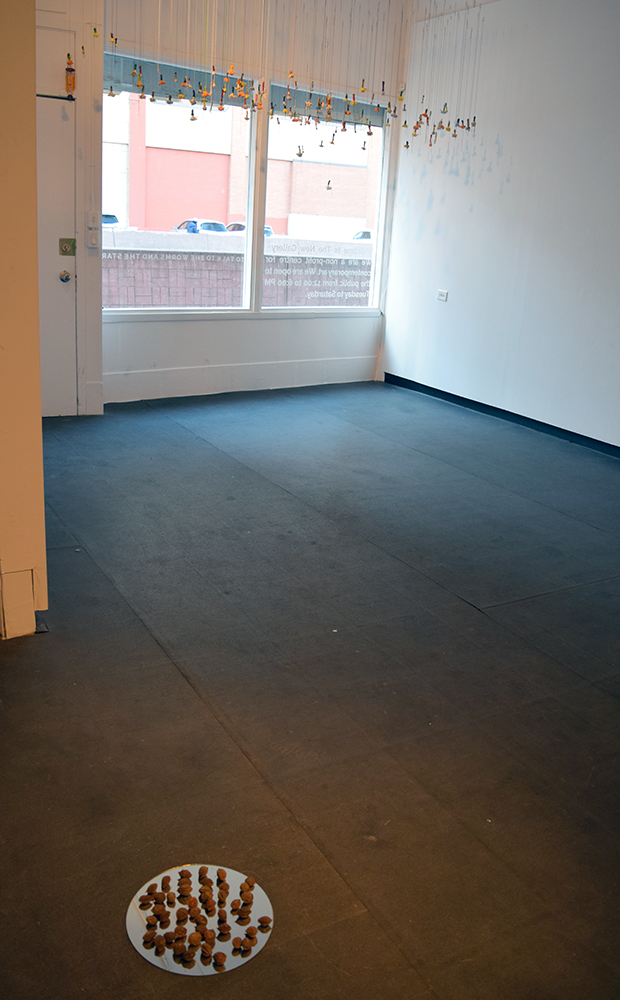

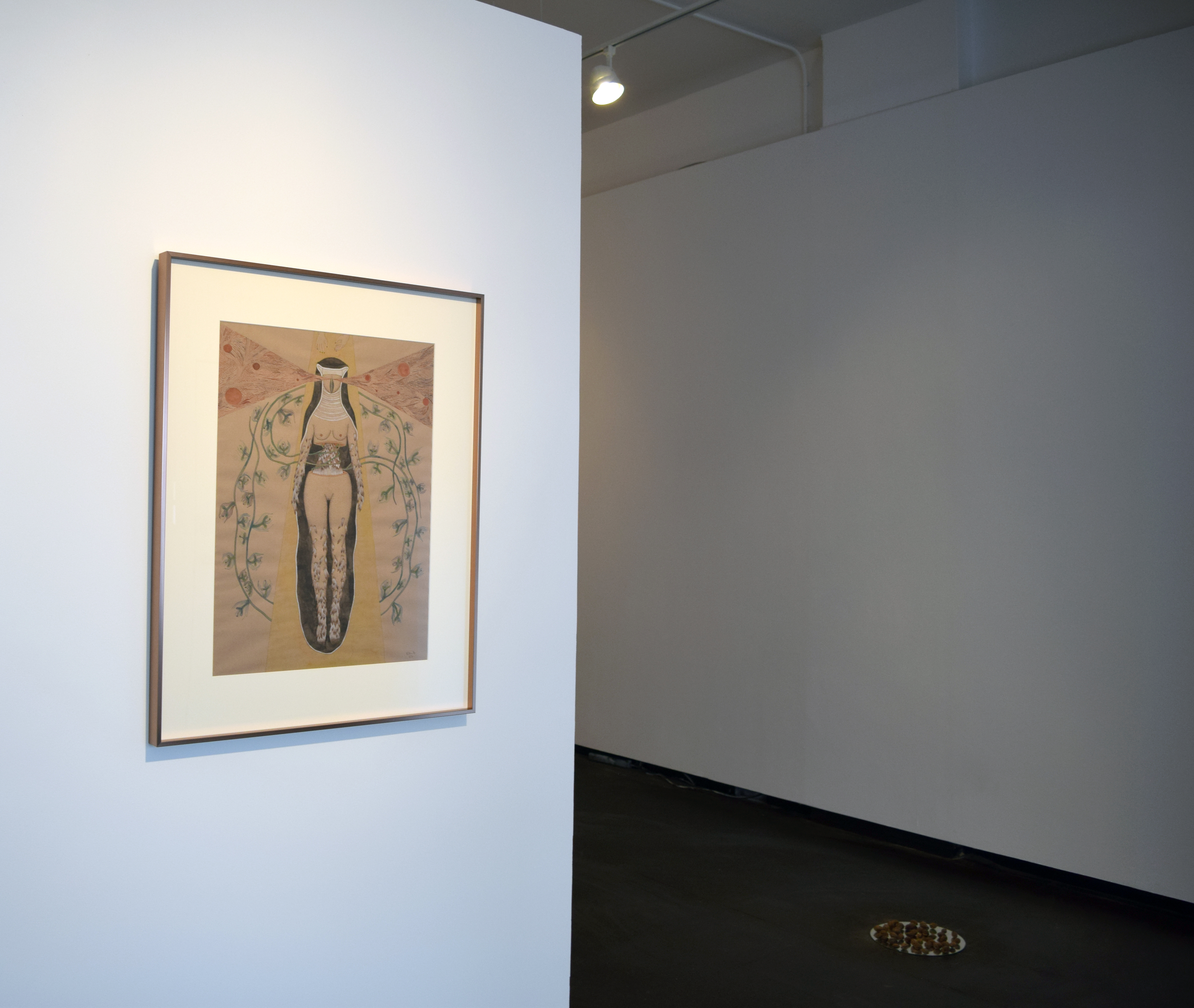
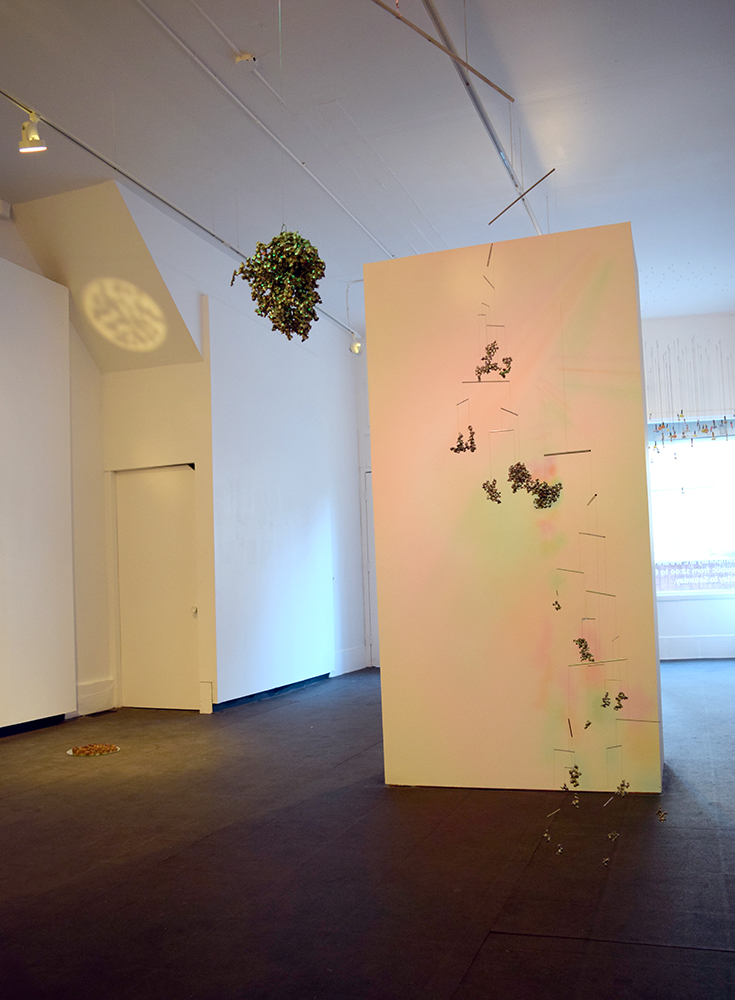

Biographies
Natasha Chaykowski is a Calgary-based writer and curator. Currently, she is Director of Untitled Art Society.
Miruna Dragan‘s works reflect themes of dispersion and transcendence through an interdisciplinary manipulation of a broad range of methods and materials toward a subjective reimagining of archetypal myths and landscapes. Recent exhibitions include Museo de la Ciudad in Queretaro Mexico (2012), the Esker Foundation in Calgary (2013), G Gallery in Toronto (2014), Nanaimo Art Gallery (2015), Southern Alberta Art Gallery in Lethbridge (2016/17), and Nickle Galleries at the University of Calgary opening this October.

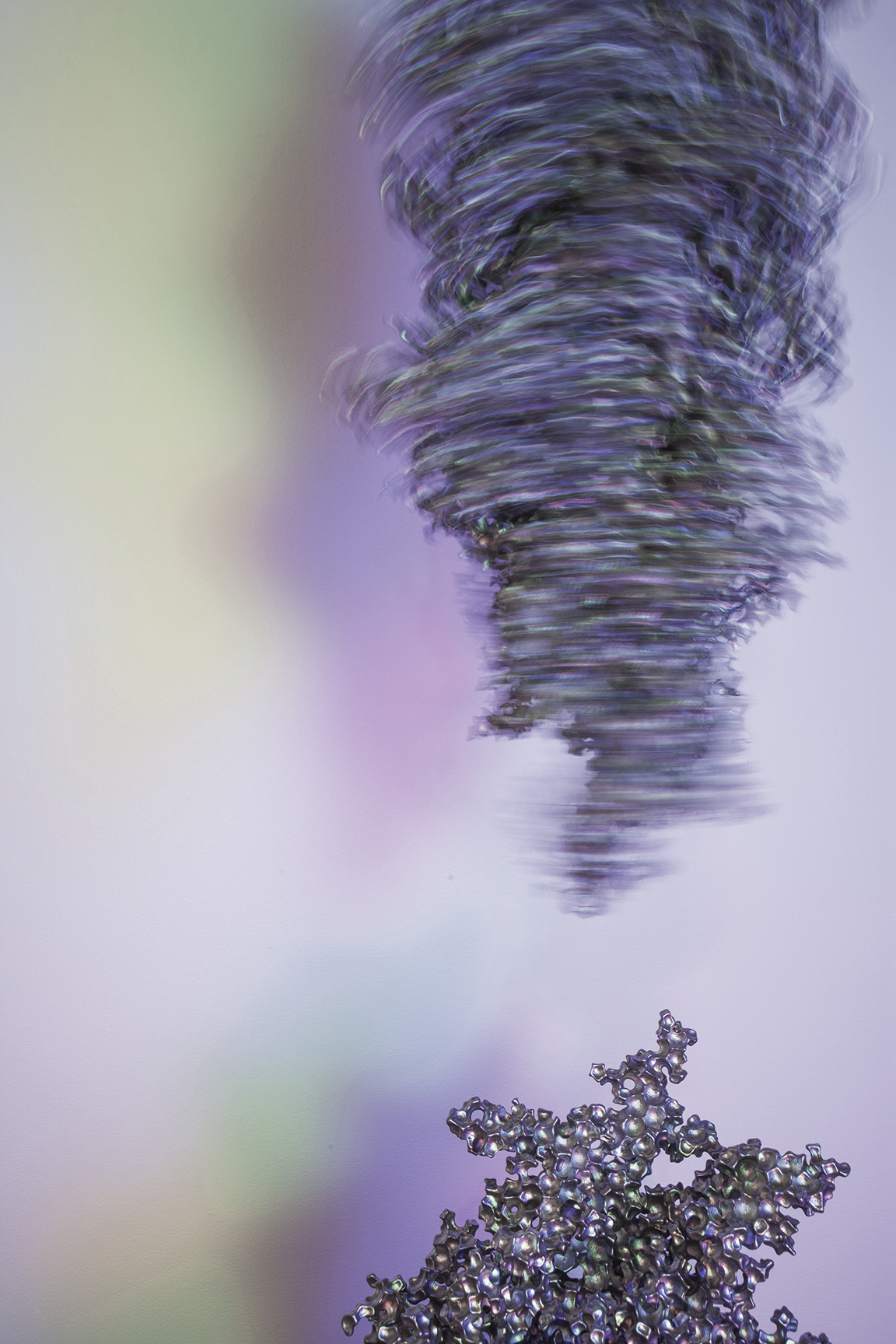
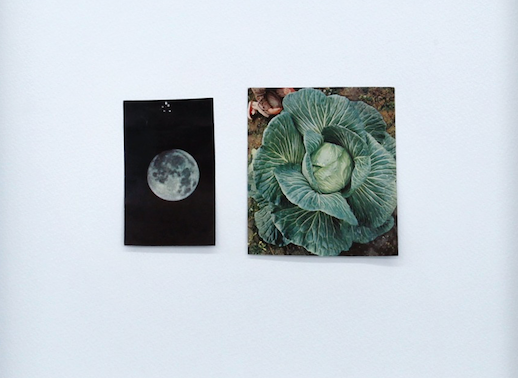


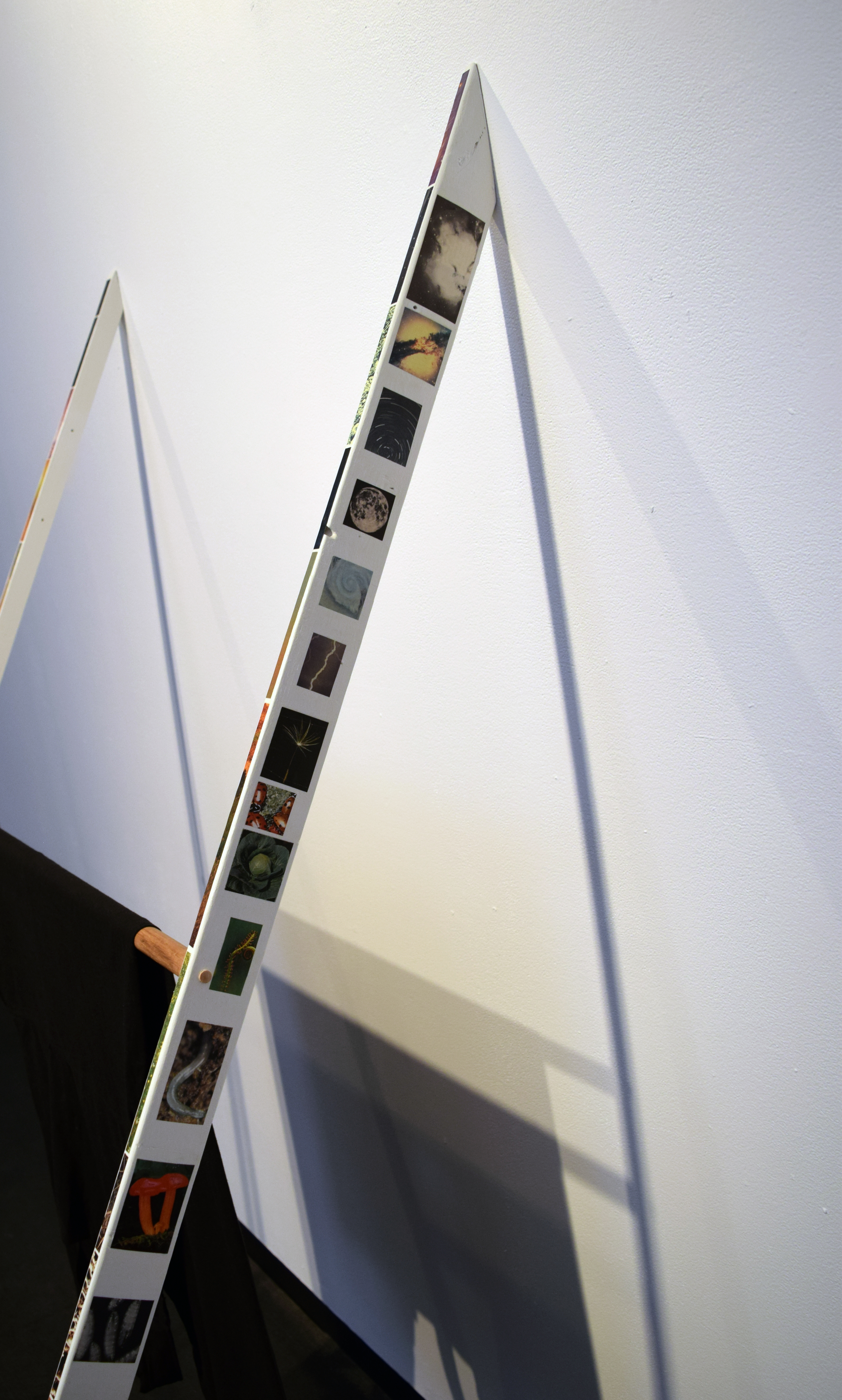
Maggie Groat works in a variety of media, including works on paper, sculpture, textiles, site-specific interventions and publications. Her current research surrounds site-responsiveness with regards to shifting territories, alternative and decolonial ways-of-being, methodologies of collage, and the transformation of salvaged materials into utilitarian objects for speculation, vision and action. Groat studied visual art and philosophy at York University before attending The University of Guelph, where she received an MFA degree (2010). Groat has taught at Guelph, the University of Toronto and at Emily Carr University of Art and Design as the Audain Artist Scholar in Residence (2014). Recently, her work has been included in exhibitions at Mercer Union, YYZ Artists’s Outlet, Art Gallery of York University, Western Front, SFU Audain Gallery, Rodman Hall Art Centre, and Walter Philips Gallery. Groat is a member of the Skarù:reʔ Nation and currently lives and works between the Niagara Escarpment and the Southwestern shore of Lake Ontario.
Rithika Merchant (b.1986) received her Bachelor’s Degree in Fine Arts from Parsons the New School for Design, New York in 2008. She has exhibited extensively since her graduation including a number of solo exhibitions in Mumbai, New York, and Lisbon. Recent exhibitions include a duo show “Reliquaries: The Remembered Self” at TARQ, Mumbai, and “Language of the Birds: Occult and Art” at 80WSE Gallery, New York, as well as group shows at Summerhall, Edinburgh and Artry Gallery, Kochi. Her work has been included in multiple group shows at Stephen Romano Gallery and The Morbid Anatomy Museum, New York. She had her debut solo show “Luna Tabulatorum” at Stephen Romano Gallery in 2015, as well as her debut solo show in Madrid “Intersections” at Galeria Combustion Espontanea in 2016. Born in Bombay she now divides her time between Bombay and Barcelona.

Cindy Mochizuki creates multi-media installation, performance, animation, drawings, and community-engaged projects that consider spaces that explore the intersections of both fiction and documentary. Her projects are often site-specific and engage historical memory, displacement and the invisible. Her community-engaged projects work within and outside the parameters of social practice, performance and magic to often manifest stories. She has exhibited and screened her work both nationally and internationally. She has received her MFA in Interdisciplinary Studies from the School For Contemporary Arts at Simon Fraser University.
A special thank you to Chateau Kwong (VRBO listing #873983) for hosting the artist, Jarvis Hall Gallery for providing framing, Magnus Tiesenhausen for technical support as well as Tarq Gallery for lending Rithika Merchant’s piece in the exhibition.
This project was generously funded with support from the RBC Emerging Artist Project.


song for the end of the world
Mat Lindenberg and Jadda Tsui
August 31—September 29, 2017
+15 Window Exhibition
Exhibition Description
a fleeting feeling that comes from a fall,
an accumulation of moments
from the passing of time.
almost invisible while you are watching,
but happening all the same.

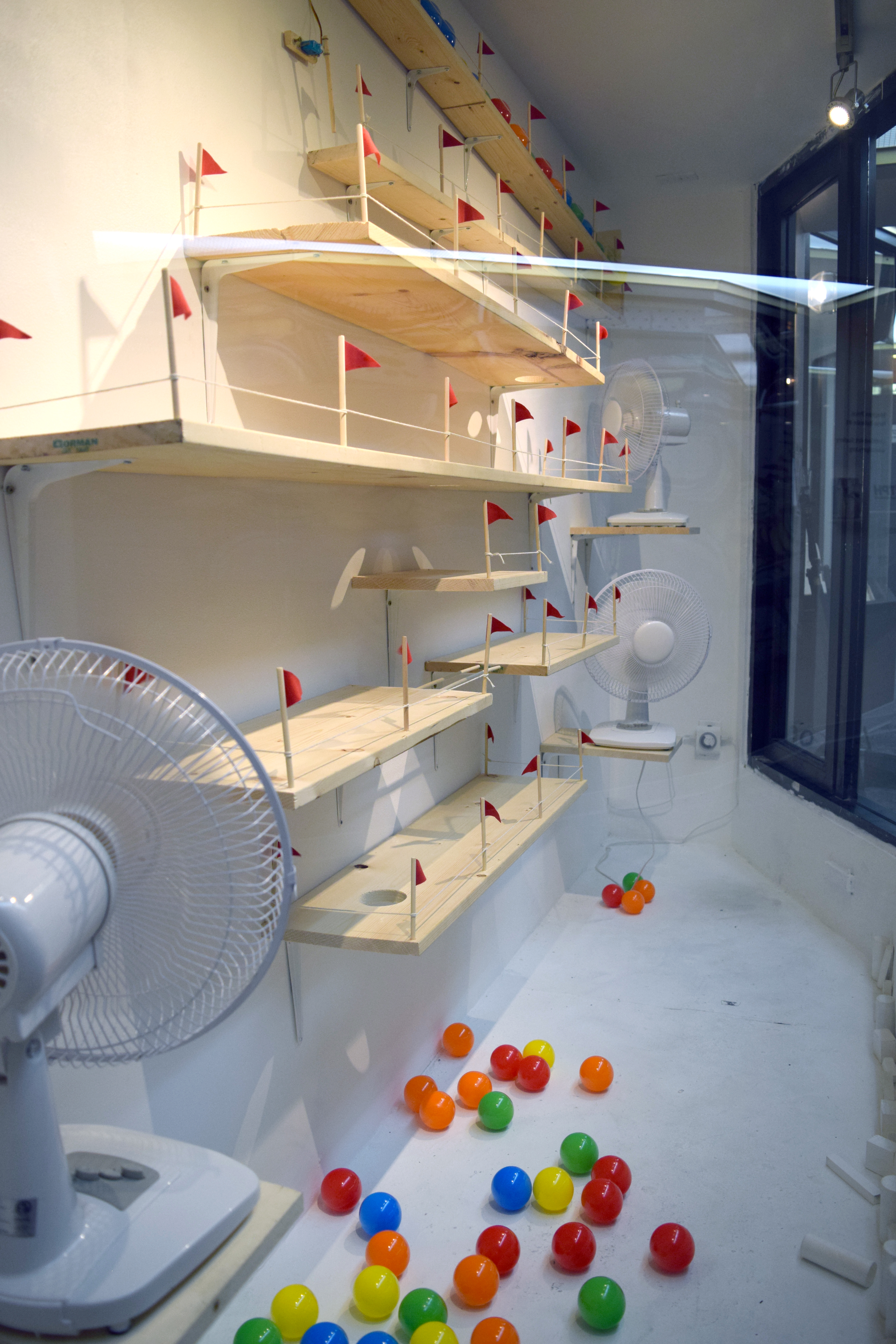
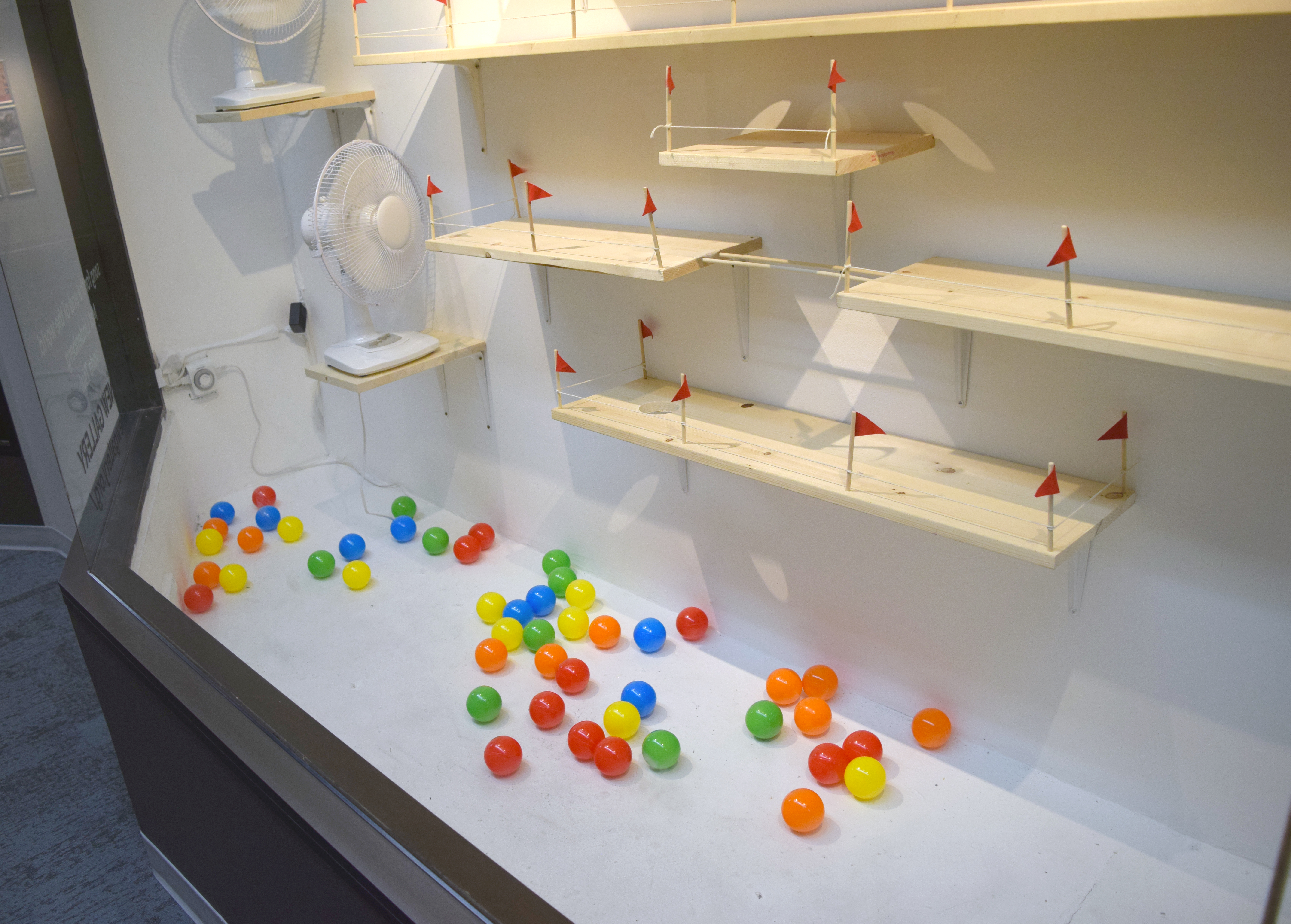


Mat and Jadda both usually make art that is purely digital, so this is a weird new thing for them.
Mat has blonde hair that looks like grass, and Jadda has black hair that looks like an ocean.
They are both from Calgary. Mat completed his undergraduate degree the Alberta College of Art + Design in 2015, where Jadda is currently enrolled. Their collaborative work investigates the functions and places of systems through simulation and narrative. Most recently, they have exhibited at the AMAAS Media Arts Conference, as well as EMMEDIA’s Particle + Wave.

The New Gallery is delighted to invite you to our annual fundraiser, C.R.E.A.M., which will take place on Saturday, November 19, 2016 at our Main Space (208 Centre St. SE) at 8:00 PM.
Three limited-edition silkscreen prints by artists Omar Badrin and Jo-Anne Balcaen, and Lisa Lipton will be launched and available for purchase at the event.
Omar Badrin, edition of 40, silkscreen on rag paper, $125
Jo-Anne Balcaen, edition of 40, silkscreen on rag paper, $125
Lisa Lipton, edition of 75, silkscreen on canvas tote bag, $30
*Special launch promotion: one paper print and one tote for $150
Memberships will be on sale for $5 and raffle tickets will be sold for $10 each. Raffle tickets give you the opportunity to win a variety of prizes from our generous event donors, including Bodhi Tree, Brass Monocle, Butter Beauty Parlour, Calaway Park, Calgary Folk Music Festival, Euphoria Café, Fiasco Gelato, Globe Cinema, Good Life Fitness, Hedkandi, Inglewood Art Supplies, Jarvis Hall Gallery, Oolong Tea House, Resolve Photo, River Café, RnR Wellness Centre, Skoah, Sled Island, Sloth Records, Telus Spark, and Understudy.
10 raffle package are available as follows:
Prize #1 Good Life Fitness package and (5) Globe Cinema passes, valued at $200
Prize #2 Inglewood Art Supplies $100 gift card and Resolve Photo $100 gift card, valued at $200
Prize #3 Hedkandi salon products & gift card, and Bodhi Tree 1 month unlimited yoga pass, valued at $200.00
Prize #4 Calaway Park (4) day passes, Telus Spark (2) passes, and Skoah package valued at $260.00
Prize #5 Butter Beauty Parlour salon products & gift card, and Oolong Tea House tea set, valued at $200.00
Prize #6 Calgary Folk Festival, (2) Sunday tickets, and River Café $50 gift card,valued at $220.00
Prize #7 Understudy Men’s wear package, valued at $200.00
Prize #8 Sled Island swag bag, Sloth Records $30 gift card, RnR Wellness THE SPA $100 gift card and package, and Euphoria Café coffee, valued at $280.00
Prize #9 Brass Monocle Cutler and Gross sunglasses, valued at $499.00
Prize #10 Jarvis Hall Gallery, $500.00 framing gift card
Refreshments, courtesy of our friends at Sidewalk Citizen, will be available throughout the evening with a cash bar stocked with your favourite beers from Big Rock Brewery!
A special thank you goes out to Alberta Printmakers for providing us with their excellent printmaking facilities, and to TNG Board Member and printmaker extraordinaire, Ryan Statz.
Cash, credit card, and cheques will be accepted at the event.
Donations are always welcome, and can be made online: https://www.canadahelps.org/dn/14227
MAINSPACE EXHIBITION /

A Woman Walking (The City Limits)
Alana Bartol
presented with M:ST8
October 23 – October 25, 2016
A reception and discussion facilitated by artist and writer sophia bartholomew will be on Monday, October 24 at 7:00 PM. Admission is free and all are welcome.
Exhibition Description
What bodies move alongside, within, and outside of the designated city boundaries? Who inhabits the spaces along the city limits? How is the border of Calgary inscribed on the land and felt in space?
Focusing on themes surrounding ecology and the relationships between individuals and their physical environments, artist Alana Bartol frequently engages walking as an artistic medium. Through performance, video, drawing, installation, and community-engaged art, her work aims to make visible the invisible forces at play in our everyday environments.
For M:ST8, Bartol has created a walking project to trace the limits of the City of Calgary on foot, covering a distance of over 174 km. In this work, the Google map developed by the City of Calgary becomes a virtual guide. Without sanctioned pathways or access points, the boundaries of the city are often experienced from a distance, from a vehicle, or not at all. While the city limit runs alongside roads and highways, it also demarcates the border along Tsuu T’ina Nation 145, dips and crosses both The Bow and Elbow rivers, runs directly along the Bearspaw Dam, moves across private property, farmlands, and sinks into ponds.

Biographies
Alana Bartol is an artist and educator from Windsor, ON. She has exhibited extensively across Canada at Media City International Film Festival (Windsor, ON); InterAccess (Toronto, ON); PlugIn Institute for Contemporary Art (Winnipeg, MB); Access Gallery (Vancouver, BC); Karsh-Masson Gallery (Ottawa, ON); and Group Intervention Vidéo (Montréal, QC), as well as in Romania, Mexico and the United States. She currently resides in Calgary and teaches at Alberta College of Art + Design.
For more information on other M:ST8 events and programming go to: http://mstfestival.org/
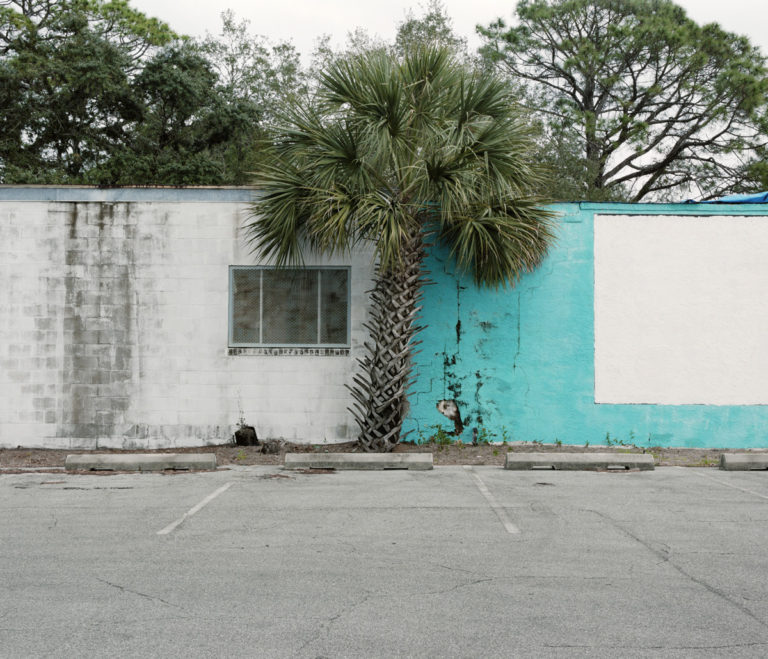
Milan New Mexico
Frederic Bigras-Burrogano
September 25 — November 25, 2016
+15 Window Exhibition
Milan New Mexico is an ongoing series that explores the phenomenon of North American towns that are named using the borrowed names from other cities of the world. This project uses photography, research and mapping to explore the connection between these new cities, as well as their relationship with preconceived notions concerning their esthetic, North American culture and biculturalism.
As a Canadian-Italian, Bigras-Burrogano interrogates his own sense of belonging and bicultural identity in this body of work. These towns can be seen as a metaphor for the children of immigrants. There is a parallel between how we perceive these individuals and our expectations of these towns. Similarly this project examines how we expect and project certain cultural elements based on their provenance.
Influenced by the works of Joel Sternfield, Alec Soth and Stephen Shore, these images serve as a way to explore North American culture and a sense of longing and nostalgia. Using road trips to produce the images – a definitive symbol of our continental culture – to re-examine our relationship to the land, its architecture and ethos of where we live. How did these hundreds of towns appear all across North America? What connection can be drawn between these cities? How are expectations of specific cultures shaped? How does this play in a broader sense of stereotyping visual cultural identity? How do these images shape our understanding of North American spaces?
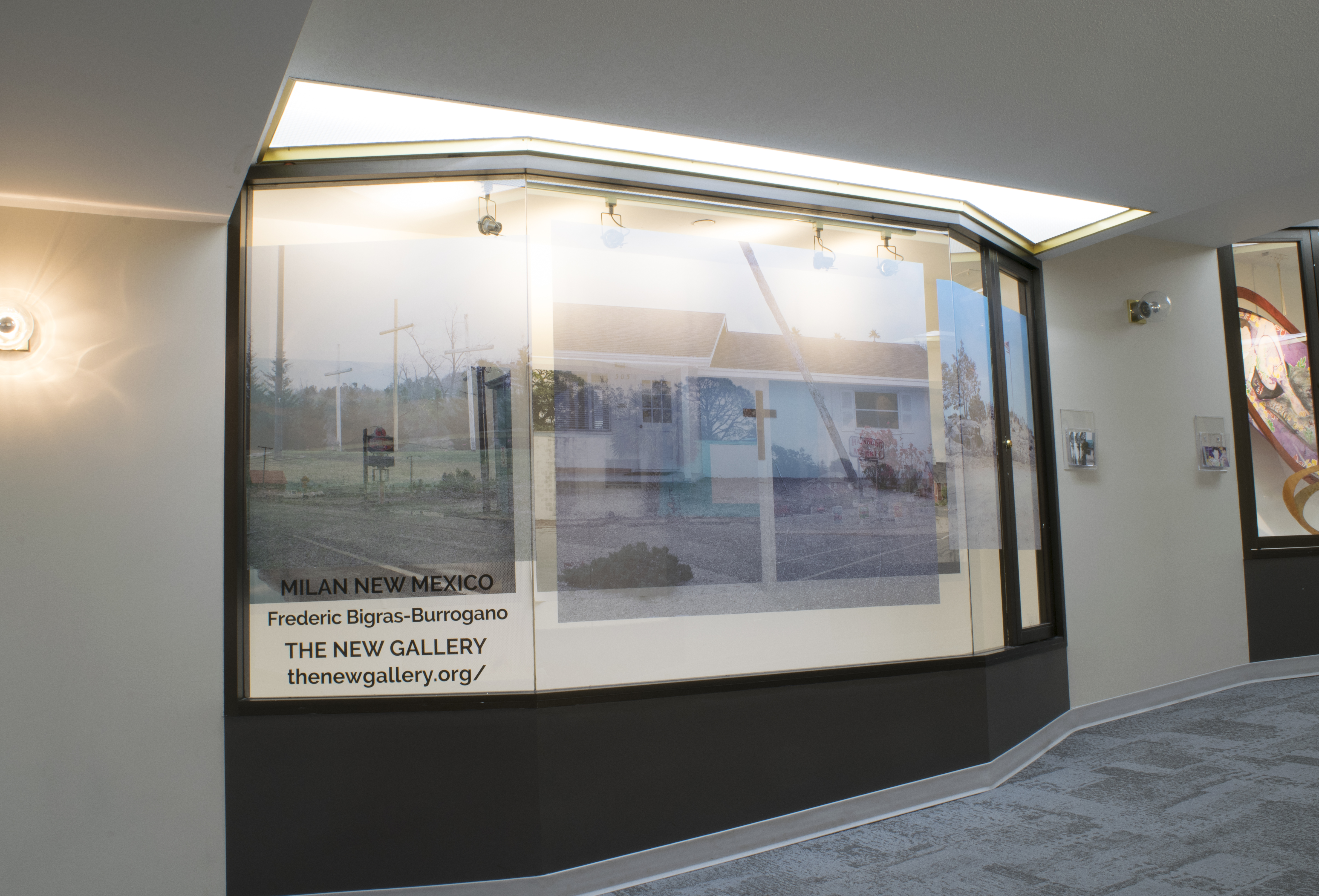
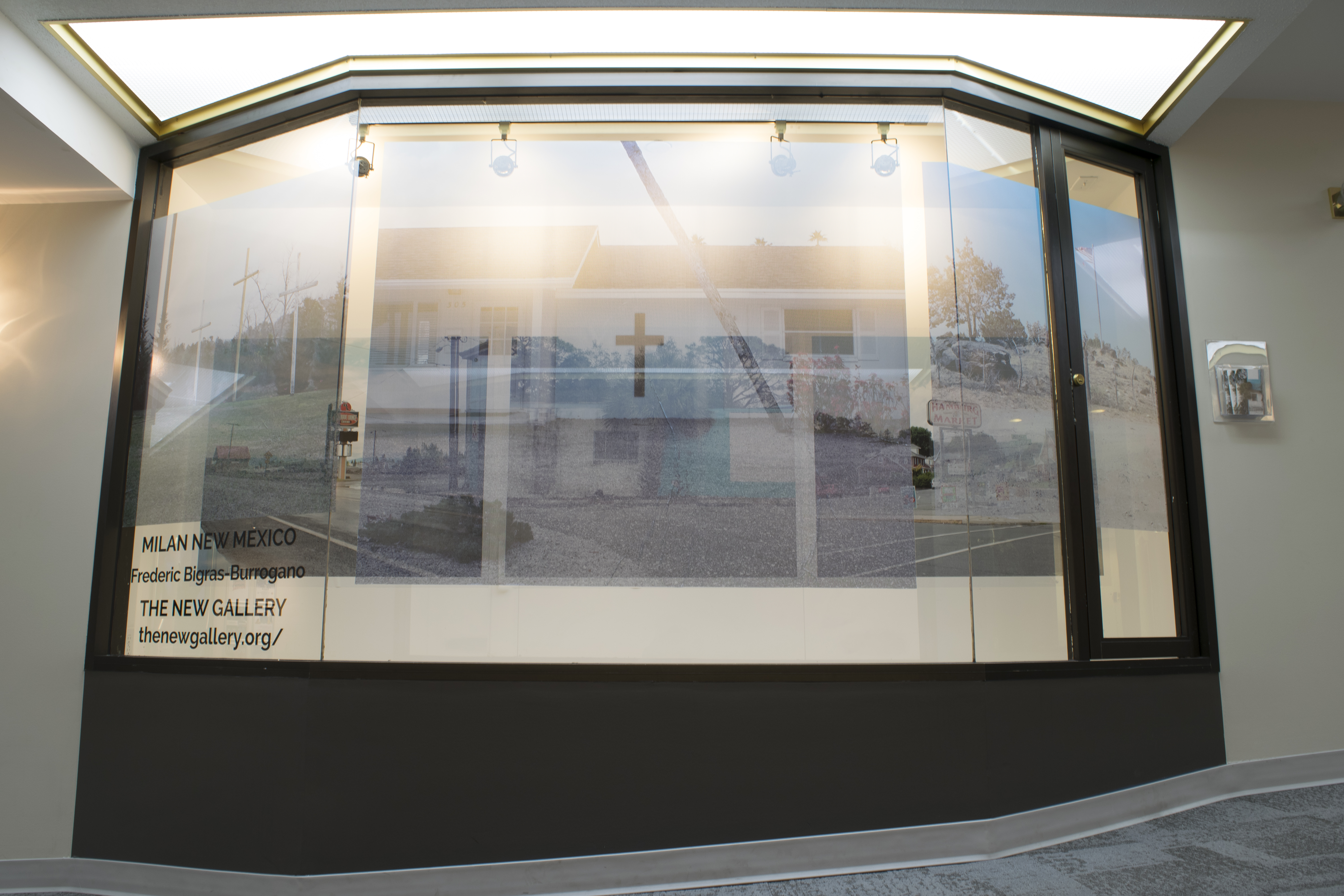
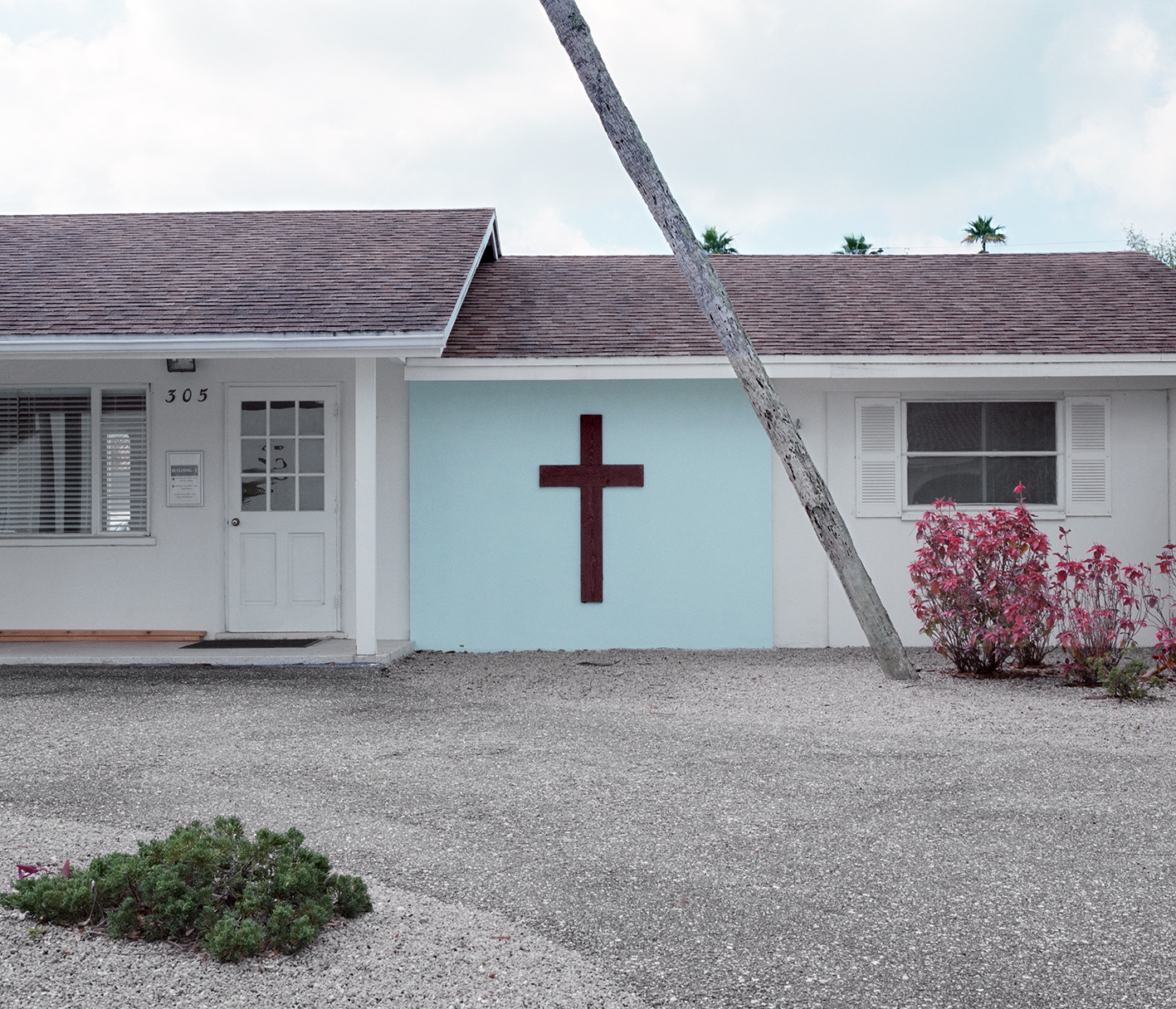
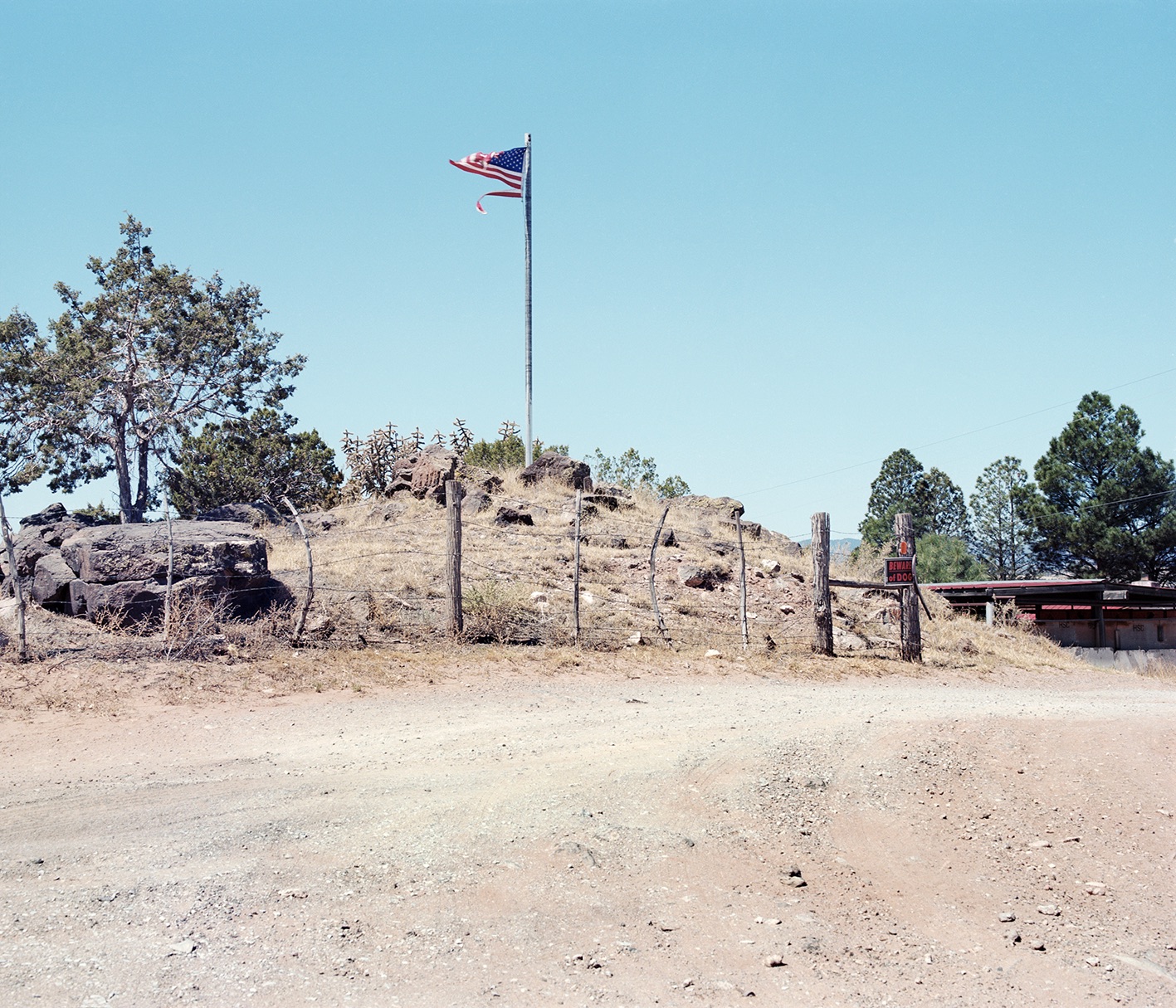

Frederic Bigras-Burrogano is a Montreal-Born conceptual photographer currently based in Alberta. He uses photography to document the ambiguity of preconceived ideas versus the expectation of the viewer. His work is broadly concerned with national identities and the role landscape plays in its formation. He studied at Concordia University and has exhibited at Les Territoires (Montréal, Canada), Der Greif, a process 2.0 at the Krakow Photography Festival (Krakow, Poland) and at the Chinese European Art Center (Xiamen, China). He has delivered lectures at the Congress of the Humanities and Social Sciences of Canada (Calgary, Canada), Xiamen University and Champlain College (Saint-Lambert, Canada). Most recently, He was awarded a Creation and Research grant from the Quebec Art Council.
MAINSPACE EXHIBITION /

The Artist Should Have Value
Jo-Anne Balcaen
November 4 – December 17, 2016
Essay
What’s going on? (On art, aura, and anecdotes)
Expertly straddling the high/low-art divide, Jo-Anne Balcaen is as much at ease mimicking the neutral façade associated with conceptual art as she is embodying the uncritical perspective of fandom. While her earlier works frequently focused on pop music and its associated culture, the more recent works comprising The Artist Should Have Value delve into the often hidden inner workings of the art world—what sociologist Pierre Bourdieu called les règles de l’art, the widely accepted “rules” around which the value of artists and artworks is constructed and consolidated within Euroamerican art history, institutions, art markets, and art scenes.
Displaying the slick aesthetic of magazine ads for luxury goods, the photograph Jeff Koons Studio Chip shows a miniscule chip of paint from the exterior studio walls of the famous American artist prominently placed—and reflected—on a mirror. Unabashedly pop in sensibility, Koons is viewed by some as a genius in the tradition of Warhol; others consider him merely a con artist. Balcaen’s photograph seemingly suggests that it is money and its shiny aura that cloak his artworks, further feeding into the sales and collection of Koons’ work at exorbitant prices.
In GNKDA Mystic Grey, Balcaen continues her exploration of the construction of aura through paint, in this case vis-à-vis Canadian artists Garry Neill Kennedy and David Altmejd. Though these artists are at opposite ends of the spectrum in terms of style, approach, and age (Kennedy is recognized as a pioneer in the conceptual art movement dating back to his involvement at NSCAD in the 1960s, while Altmejd, who emerged in the early 2000s, is known for his neo-baroque sculptures), what they notably share is that both have managed to make a name for themselves internationally. Balcaen gleaned the leftovers from cans of paint used for past exhibitions by these artists in order to mix a brand-new colour (presented in a shiny new can) whose “mystic” grey hue ostensibly holds the secret to artistic success, capable of elevating any exhibition to a higher plane. Through this re-contextualisation of a product easily found in hardware stores, Balcaen shows how artistic value can be projected, amplified, and commodified.
In The Absolute Artist, art historian Catherine M. Sousloff argues that, since the Renaissance, the Western mythologizing of the “artist as genius” has been established and legitimized through the telling of biographical anecdotes— tales of incredible ingenuity, creative brilliance, skillful technique, and so on. This conflation of artist and anecdote is still strategically used by gallerists, critics, and art historians alike as a way of offering insight into an artist’s oeuvre, providing contextualizing gravitas to a work or endowing it with an air of authenticity. Switching from the detached tone of the works described above, Balcaen plays with the artist-as-genius trope in the following works by bringing the typically “behind-the-scenes” narratives to the fore as her main subject. Balcaen eschews the standard narratives told to augment the value of an artwork, instead sharing what most artists might prefer to hide, including a spectrum of vulnerable moments marked by shame, jealousy, and rejection.
The eponymous artwork The Artist Should Have Value juxtaposes two readings of an early work by Balcaen: an unknown student’s school assignment in Prezi format that she found online, which rather perfunctorily examines the work’s formal characteristics, versus her more personal analysis in which she links the making of the work with a painful breakup. In the video Mount Rundle, Balcaen focuses on a painting that she made as a child from a photograph of a landscape that, years later, she encountered by happenstance while attending the prestigious artist residency program in Banff. At first it seems that Balcaen will suggest that her profession is one of destiny, but as her narration of the video continues, she instead recounts the crippling artist’s block and insecurity she experienced during the residency and ends on her somewhat gleeful realization that the other artists-in-residence only appeared productive. Finally, in a print series titled State of Mind (Grumpy Thoughts about Art), Balcaen spells out—in a misleadingly cheerful marquee-style typeface—her musings on her experiences as an artist. Expressing resentment, cynicism, and melancholy, with only fleeting glimmers of hope and humour, these brief “poems” distill the social, creative, and financial stresses faced by many artists as they struggle to “make it”…or at least make a living.
The exhibition’s title The Artist Should Have Value evokes both an appeal and an unanswered question by an artist armed with an intimate understanding of what’s going on beneath the surface—be it in the studio or a gallery. Whether operating in confessional mode or expressing her ambivalence about the art world, Jo-Anne Balcaen critically unveils the complex tension between what’s really going on and what might be just smoke and mirrors.
— Zoë Chan





Jo-Anne Balcaen (b. 1971 in La Broquerie, Manitoba) is a Montreal-based artist whose art practice extends across a variety of media including installation, sculpture, photography video, and text, bringing together references as diverse as popular music, the art world, and cultural management. Her work has been presented throughout Canada, the US and Europe, including solo exhibitions at venues such as Truck (Calgary), AceArt (Winnipeg), eyelevel gallery (Halifax), and Galerie Clark, La Centrale, and Galerie B-312 (Montreal). She has received several provincial and national arts grants, and has attended residencies at the Banff Centre, and the Canada Council’s International Residency at the ISCP in New York.
Zoë Chan is an independent curator and critic. Her curatorial projects have been presented at MSVU Art Gallery, Foreman Art Gallery of Bishop’s University, Articule, and the MAI (Montréal, arts interculturels). She has written for Canadian Art, C Magazine, esse arts + opinions, and Momus, among other publications. She was a recipient of the Canada Council for the Arts’ Joan Lowndes Award for excellence in critical or curatorial writing in 2015.

MAINSPACE EXHIBITION /
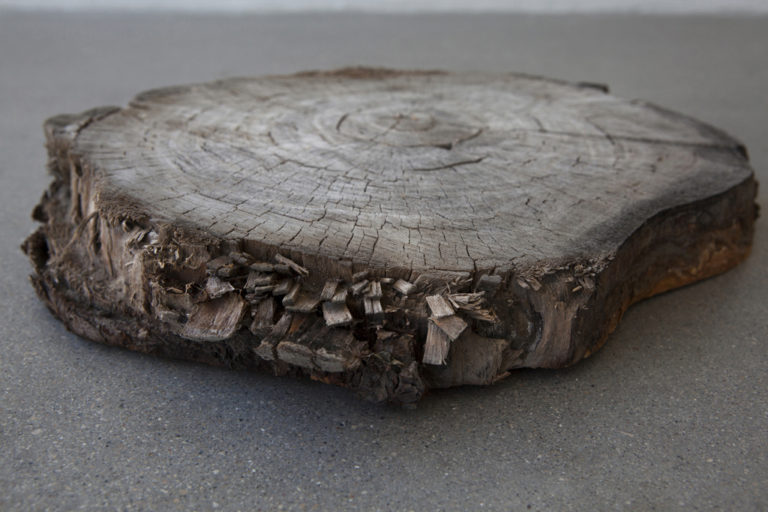
It’s Gonna Rain
Divya Mehra
September 9 – October 22, 2016
Divya Mehra. A civic death (in praise of the threat), thus coherence – of patriarchy, of ancestry, of narrative – is made by erasure and exclusion OR nothing lasts forever, I hope you will consider the sensitivities of Hindus, 2016 tree slab, 13″ x 2.5″
Image credit: Karen Asher
Essay
In Every Life
What happens when the cliché comes true? What happens when a little rain, in every life, does fall? With It’s Gonna Rain, Divya Mehra presents a trifecta of loss. This should not be mistaken for a museum of the missing; more directly this is an accumulation of ruin. This work is wrought from the artist’s past year of life after the death of her father, Kamal (15 June 1948 – 22 May 2015), and should be understood as a multi-faceted portrait. This portrait confronts architecture, changes it so that walls crumble slowly from shed tears. This portrait aches from the severed base of another artwork, a statue of Ganesh, that was stolen from where Kamal had it placed. This portrait culminates with the remnant of a tree to which Kamal would pray, coincidentally cut down following his too-soon passing. What is it about ruins? Do we embrace ruins because monuments are for assholes and memorials are for losers? Ruins stand, or don’t, for those who refuse to die. What happens when the heartbeat that, weeks shy of beating for sixty-nine years, refuses to beat any longer? What happens when the statue that, after almost fourteen years bolted into the downtown cement, is pilfered, leaving the shredded base as a sharp reminder of how indifferent this world can be? What happens when the tree that had stood for some time well after the heart started beating but before the statue had been set in place, is diagnosed with an untreatable disease and cut down without notice? How can you brace yourself for something that appears without warning? This is how the rain comes.
Rain, or water to be precise, is central to the trilogy of works in this exhibit: the wall falls into ruin under the slow pressure of a constant leak of water, a concoction from the Ganga (which the artist collected following prayers marking the one year anniversary since her father passed) and water from Calgary’s Glacial H20, both of which purport healing properties. Ganesh – the god of beginnings, guardian of entrances, and remover of obstacles – is noticeably absent here and is only potentially identifiable by a lotus flower and a mouse perched atop a large brass pedestal, decorated on all four sides by elephants that were once rejoicing for the dancing deity above them. Mice, sometimes even rats, are depicted close to his feet as a symbol for desire, and his ability to overcome this desire and destroy all obstacles. Now, we are left with an empty space where Ganesh once stood. The festival of Ganesh Chaturthi sees worshippers idolize the elephant-headed god and by its end submerge these idols in water. This submerging, dissolving of the statue, is referred to as visarjan, or farewell … another loss. It was not the absence of water that lead to the tree’s demise. What kind of tree was it anyway? Does it even matter? It was a tree, and it was a place of meditation, of promise, and now it, too, is gone. How does an accumulation of loss begin to address the over-abundant presence of memory? Mehra’s portrait(s) deny the image of her father, just as the violence that has spurred this work is an interruption to her reality. And still, the memory persists. Memories will always withstand that which the real world allows to be washed away too easily. Count them: the time your cricket team scored the winning run, the day you met your wife-to-be, the moment your daughter was born, the day you bought your first car, when you decided to feed your family instead of following your dreams, the sand in your feet, the sweat in your shirt collar, the time your heart stopped.
In Mehra’s unconventional shrine to her own loss, she asks, How do we come to know violence? There is an implied relationship here — that we might actually be identified, that to know is fathomable, or even that one person’s violence is universal. The set up is an uphill battle, just as it should be. There are so few days in this life and each one is never the same as before.
-K.M.
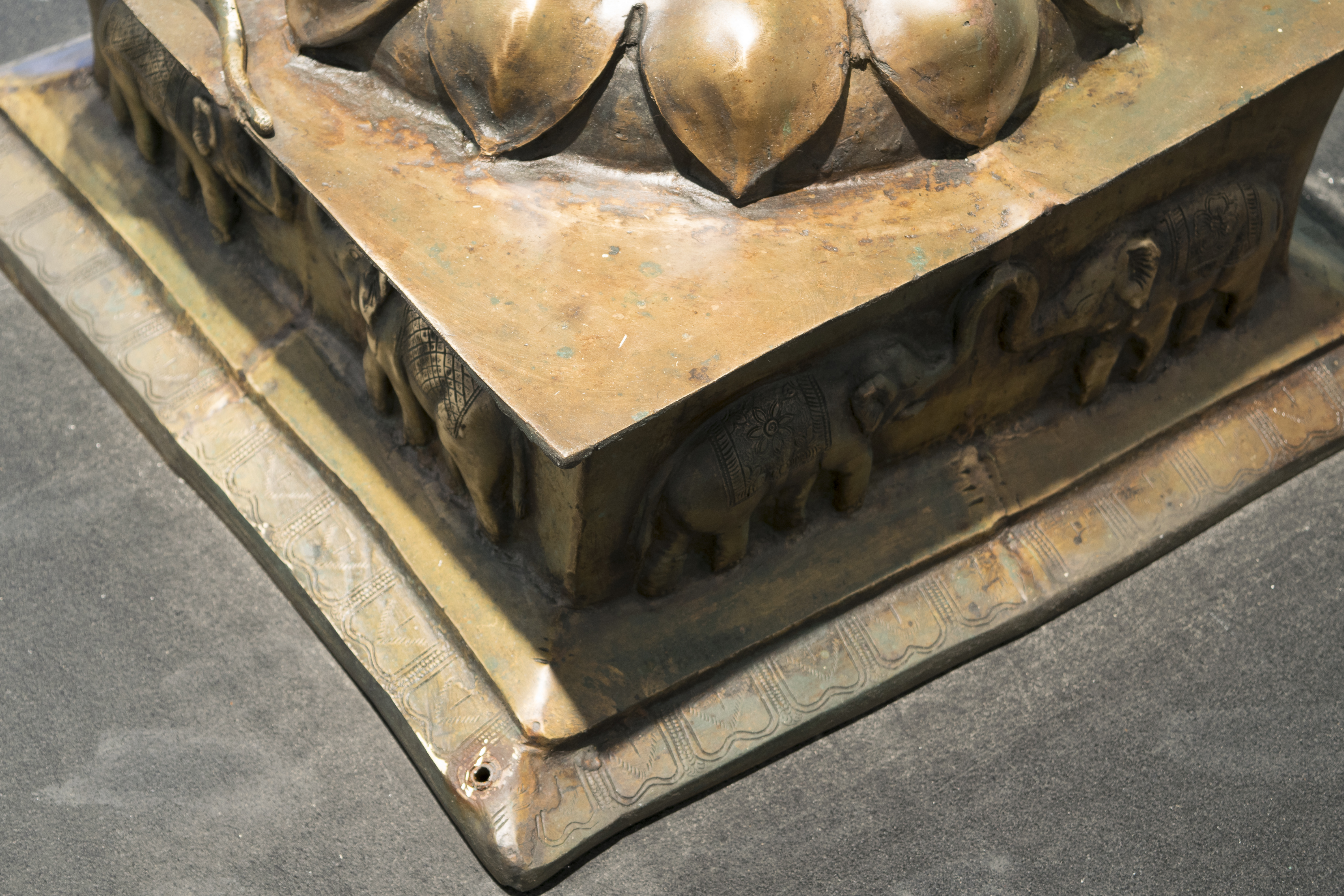
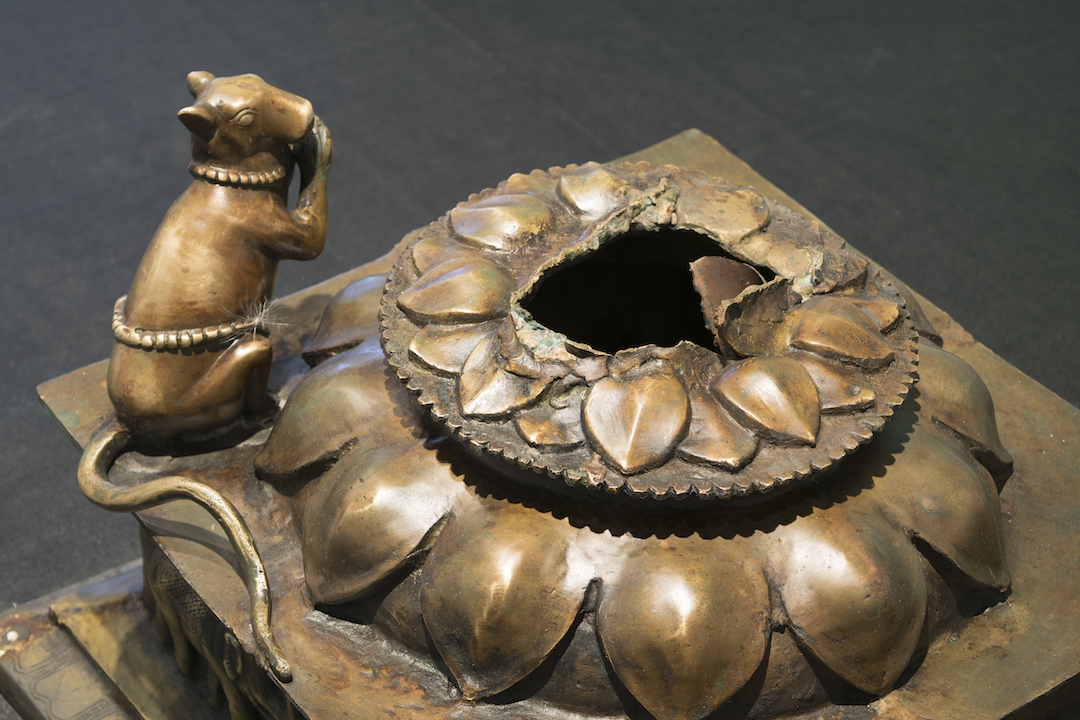
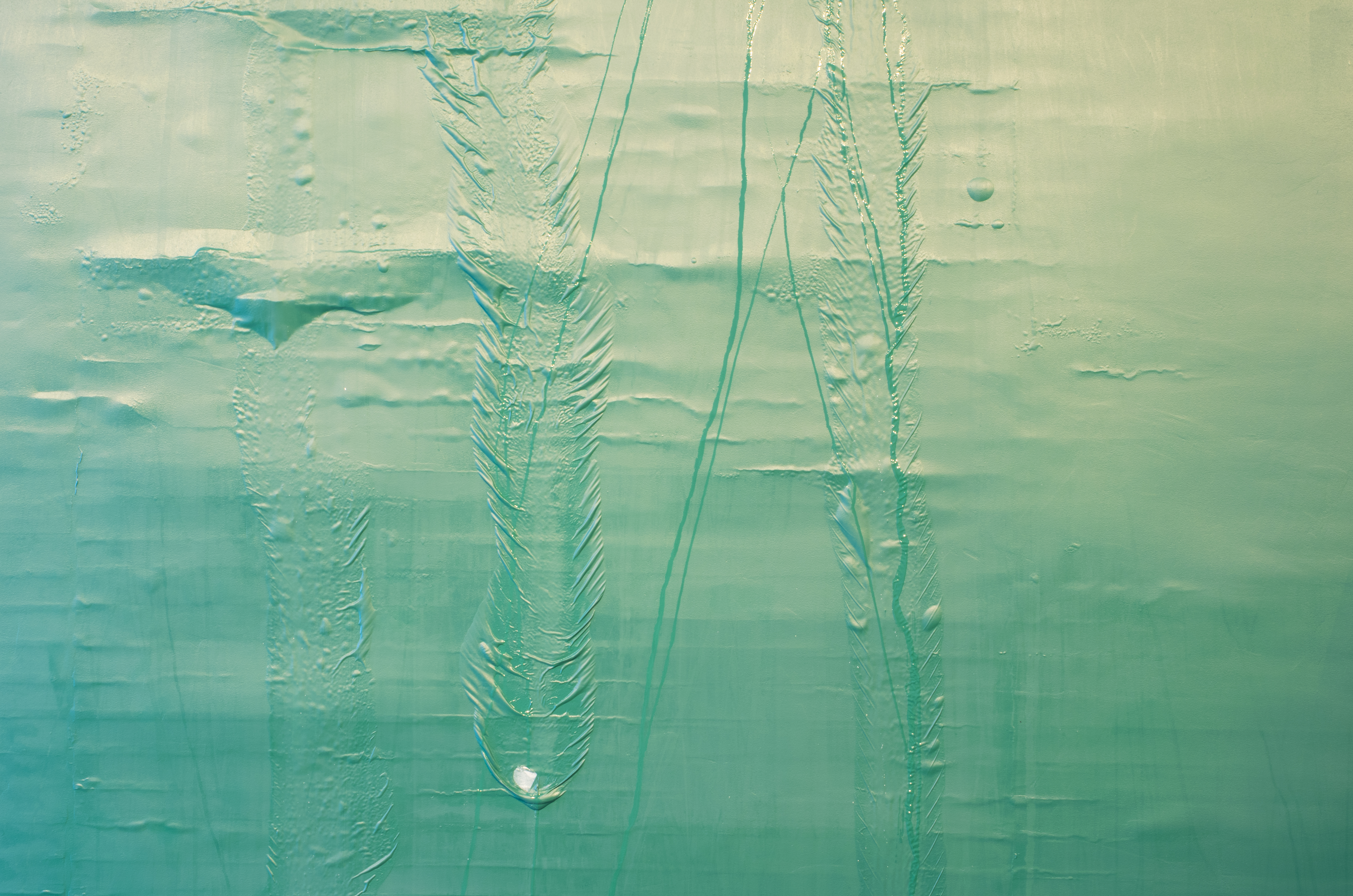
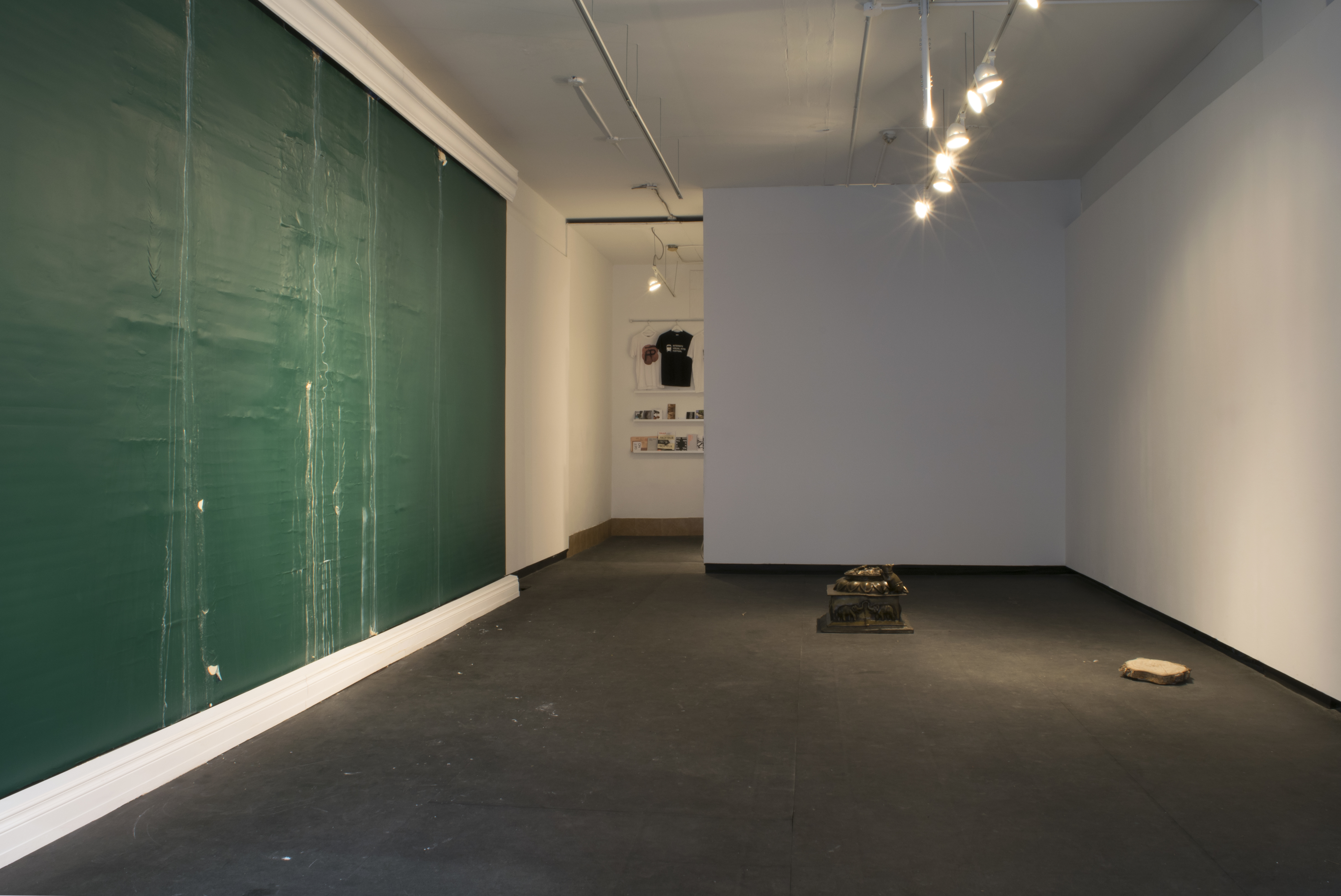
Divya Mehra’s practice explores diasporic identities, racialization, otherness, and the construct of diversity. Her work has been included in a number of exhibitions and screenings, notably with Creative Time, MoMA PS1, MTV, and The Queens Museum of Art (New York), MASS MoCA (North Adams), Artspeak (Vancouver), The Images Festival (Toronto), The Beijing 798 Biennale (Beijing), Bielefelder Kunstverein (Bielefeld), and Latitude 28 (Delhi). Mehra holds an MFA from Columbia University and is represented in Toronto by Georgia Scherman Projects. She currently divides her time between Winnipeg, Delhi, and New York.
Kegan McFadden is a writer, a curator, and an artist. His research into magazines produced by artists in Canada during the 1990s, Yesterday was Once Tomorrow (or, A Brick is a Tool) included The New Gallery’s short-lived periodical, Texts (1989-1993), and will be the subject of the forthcoming book co-published by Plug In Editions and Publication Studio (Fall 2016). His exploratory writing in response to visual art has been commissioned by artist-run centres and magazines throughout Canada over the last decade. He has developed a curatorial and collaborative working relationship with Divya Mehra since 2007.

MAINSPACE EXHIBITION /

Under New Management: Video Rental Store
Suzanne Carte & Su-Ying Lee
November 21 – December 19, 2015
Under New Management: Video Rental Store is an exhibition that takes the form of a video rental store. Rather than offering popular entertainment, the store lends out artistsʼ videos.
The project employs the familiarity of the retail environment to connect to a broad audience while, repositioning the gallery’s intermediary role. The Video Rental Store positions the gallery as a conduit, giving viewers direct access to art, rather than limiting the space of engagement to the area within the gallery walls.
We are currently on the cusp of the dematerialization of the video rental business. Large corporate chains and family run businesses have shared in the same fate. The most unfortunate loss is that of the local independent operation that carried rare titles, cult favorites, documentaries, sections devoted to directors, experimental films, and foreign titles. Under New Management: Video Rental Store provides audiences easy access to content that is not produced strictly by Hollywood blockbuster aspirations.
The roles of artist, curator and audience can also be understood as akin to that of producer and consumer – terms that are typically applied to economics rather than to contemporary art and its audience. Under New Management employs this in an explicit manner to acknowledge that while cultural production is a mode of production with its own language and specificities, is not apart from or outside such systems.
The project is curated by Under New Management (UNM), the curatorial collective of Suzanne Carte and Su-Ying Lee.


From one thing into another
In his introduction to the book, Commerce by Artists, Luis Jacob describes commerce as “a flow or transfer of something to one place or another… to become another identity, a different role within a given field.” [1] That this occurs using money as a standard currency, as Jacob points out, is simply a convention. [2] Money creates almost unlimited numbers of people with whom we can trade, and an almost unlimited number of goods and services we can access. If we have money, it spares us the burden of having to engage in the direct transfer of goods we’ve produced ourselves, or the difficulty of making everything we need or desire. And it enables us to take advantages of changes in value, whether of real estate, grain or currency, so that we might profit through buying them at a lower price and selling them later at a higher price. If one doesn’t have any currency, one instead needs something non-monetary that can be transferred into currency, or traded for whichever good or service one needs. For example, in the early 1980s, my family needed a new car, but had no money. We did have a year-old beef steer, half of which was exchanged for a used station wagon, and the other half of which we ate the following winter. This transfer occurred without any cash being involved, mirroring exchanges that occur constantly and largely invisibly through elaborate market mechanisms.
Engaging in commercial exchange without having money to standardize this process requires both creativity and labour, which can only be one’s own. One must offer something that has value in the economy where the transaction occurs. While on the surface, Under New Management looks like a video store – albeit one that rents video art instead of action movies, romantic-comedies or horror films – it foregrounds the act of commercial exchange by enabling visitors to negotiate the amount of payment for the rental, the form of currency that is used, or for that matter, whether there is any payment to be made at all. It asks its audience to consider what value does this video have to them, and what kind of payment has value to the gallery, to the curator, and to the artist. These both require reflection on the meaning of the artwork itself – the video and the video store – and on the economies in which both artist and viewer are situated. The video may offer the viewer a different set of values and ideas from those familiar to them, provide a moment of poetic insight, or suggest a new way of narrating an experience. The artists and curators, on the other-hand, may need people to talk and write about their work, to incorporate and reflect their work and ideas so that it circulates and becomes known to others, and to critique their work so that it changes and develops.
In Under New Management the viewer is no longer merely a spectator, but is invited to intervene into and shape the production of value, and to define and participate in a set of economic relationships that might have previously been reduced to a standard monetary transactions. At once a video store, an exhibition venue, and an artwork, it presents a minor intervention into the endless alienated economic exchanges that occur at everywhere we go. It invites the viewer to enact a process of transubstantiation – changing one thing into another – completing the work with each rental transaction.
— Amish Morrell
1. Luis Jacob, “Commerce by Artists,” in Luis Jacob (ed). Commerce by Artists (Toronto: Art Metropole, 2011) p. 1-2.
2. Ibid.
Biographies
Suzanne Carte is a curator and cultural producer living in Toronto. After working for the Blackwood Gallery and the Art Gallery of Mississauga, she joined the Art Gallery of York University (AGYU) in 2008 as Assistant Curator. At the AGYU Carte integrates public programming and performance into the fabric of the academic institution to position artist’s work as a pedagogical tool. Within Suzanne’s independent practice, she has curated exhibitions in public spaces, artist-run centres, commercial and public art galleries including You Cannot Kill What Is Already Dead, All Systems Go!, Under New Management, MOTEL and Man’s Ruin. Suzanne sits on the Board of Directors for Images Festival, the largest festival in North America for experimental and independent moving image culture. Her critical writing has been published in Magenta Magazine, Art Writ, and Huffington Post. She holds an MA in Contemporary Art History from Sotheby’s Art Institute in New York and a BFA from the University of Windsor.
Su-Ying Lee is an independent curator whose projects often take place outside of the traditional gallery platform. Lee is interested in employing the role of curator as a co-conspirator, accomplice and active agent. She has also worked institutionally, including positions as Assistant Curator at the Museum of Contemporary Canadian Art (MOCCA) and Art Gallery of Mississauga, and Curator-in-Residence at the Justina M. Barnicke Gallery. Recent projects include Céline Condorelli’s (UK) The Company We Keep (2013-2014), an installation at the University of Toronto’s Hart House, and Your Disease, Our Delicacy (cuitlachoche), a year long (2012-2013) residency and garden installation at Hart House by Ron Benner (CA). Currently touring across Canada, the project Video Rental Store, begun in 2010 (co-curated with Suzanne Carte), gives audiences unprecedented access to artists’ videos requesting only a pay-what-you-want ‘rental’ fee. Lee’s exhibition titled TBD (Sep 6-Oct 26, 2014), at MOCCA, was begun as an inquiry into the definition of a museum/contemporary art gallery.
The exhibition How to Make Space (co-curated with Jennifer Davis) will be presented in Hong Kong in June of 2016 through apexart’s (NY) Franchise programme.
Amish Morrell is Editor of C Magazine and Director of Programs at C The Visual Art Foundation, and also teaches in the Criticism & Curatorial Practice program at OCAD University. Along with Pan Wendt, co-curated Doing Your Own Thing: Back-to-the-Land in Eastern Canada During the 1970s, an exhibition of documentary photographs, printed matter, and contemporary projects recently at the Confederation Centre Art Gallery in Charlottetown PEI.

Intersite Visual Arts Festival
September 5 and 6, 2014
Intersite actively engages an unsuspecting public and advocates for contemporary art practices through the decentralized presentation of exhibitions, workshops, performances, and screenings outside of the traditional gallery setting.
Participating organizations are Contemporary Calgary, TRUCK Contemporary Art, Stride Gallery,The New Gallery, The EPCOR CENTRE for the Performing Arts, Untitled Art Society, and M:ST Performative Art Festival.
Please visit intersite.tumblr.com for more information on related projects!

MAINSPACE EXHIBITION /

The logo for Derek Curry & Jennifer Gradecki’s project, ‘Crowd-Sourced Intelligence Agency: Agent Bayes’ (2015).
Surveillance
Sterling Crispin, Jennifer Gradecki & Derek Curry, Maggie Flynn, Mathieu Lambert, Jillian Mayer, and Genevieve Robertson & Jay White
October 17 – November 14, 2015
Surveillance features works by: Sterling Crispin, Derek Curry & Jennifer Gradecki, Maggie Flynn, Mathieu Lambert, Jillian Mayer, and Genevieve Robertson & Jay White. This group exhibition focuses on the effect surveillance has on privacy and personal independence. Surveillance has been an increasingly omnipresent force in North American culture. A social expectancy and understanding that we will be watched in some capacity has formed. Physically and digitally, a person’s actions are monitored, and the question of whether or not that is harmful to one’s existence arises. The exhibiting artists will present works which explore the social and political mechanisms and structures that create surveillance states.
Essay:
Interrupt, intercept, investigate, interrogate
Surveillance and security have become twinned discourses in Canada, where one is rarely discussed without invoking the necessity and urgency of the other. National security is often used as the de facto rationale for the widespread collection of personal data from law-abiding citizens, and as mass surveillance technology grows increasingly sophisticated and refined, fear mongering around public security has increased in tandem.
With the rapid introduction and passing of Bill C-51 in Canadian Parliament, and its signing into law as the Anti-Terrorism Act in June, 2015, the Canadian government and related agencies now have much broader powers to collect and share the personal data of citizens across government departments with little oversight, to interpret what constitutes terrorist propaganda based on vague and indeterminate language, and to make suspicion-based, preventative arrests without warrants. What this amounts to is a demand that the body of the state be secured in the name of the body of the individual. But to who is this security of body directed, and whose bodies will be the focus of protection? The bill has been widely criticized for the ways that it could be unevenly and punitively applied to those visible to the state as non-white, as Indigenous, as activists, as protesters, or those who are deemed threatening by their participation in specific cultures or religions. Artists of all kinds, whose work depends on the production of a specific form of visibility through the presentation of their work, have reason for similar concern.
The irony of our contemporary condition is that the type of sweeping, mass surveillance engaged in by governments and corporations occurs at a level that is necessarily invisible to the public, even though surveillance of any type is predicated on making visible, or exposing, its subjects. This marks a shift from earlier regimes that relied upon our visual awareness of the tools used for policing, for example through deterrent devices like the CCTV camera or watchtower. Behavior in public space was, and continues to be, modified by the knowledge that with every use of an ATM or stroll through a public square or visit to a civic building, we can see the cameras looking back at us and are simultaneously made visible to them. This is the classic model of the panopticon, famously designed by Jeremy Bentham and theorized by Michel Foucault: we see the apparatus and we know its potential to see us, which transforms us into its obedient subjects. The panoptic model of surveillance is built on this mutual visibility. But the contemporary model of surveillance is structured almost entirely upon the opaque realm of data and computer coding hidden within our devices. Information replaces the watchful eye as the central metaphor for power and control in this algorithmic model. To lose control of the wealth of personal information that shapes contemporary subjectivity–the preferences, habits, searches, posts and tastes that form our digital selves–amounts to a kind of exposure that leaves us both extremely visible and vulnerable.
In a discourse about the rights to be made visible and the rights to maintain invisibility, aesthetic practices have much to contribute. Art is so often about revealing society’s frayed social consciousness, about finding a visual language to describe its unseen edges, or to point to the places where it breaks down and disappears completely. For the artists in this exhibition, the urgency of interrogating surveillance and security culture is expressed in works that examine the role of activism, identity politics, social media, personal surveillance, predictive behaviour and non-visual modes of communication. These projects together express the right to be visible on one’s own terms, a right to interrupt and interrogate the underlying power structures that frame mass surveillance as a necessity. As theorist Jasbir Puar has pointed out, “the temporality of surveilling is not just reactive, but also preemptive and increasingly, predictive.”[1] The artists gathered here interrupt this temporality with interventions that offer moments of counter-resistance within the very networks–digital networks, activist networks, social networks–that are implicated in surveillance regimes. However minor such interventions may be, to find resistance within these networks is to acknowledge and respond to one of the most ethical challenges of our time.
— Jayne Wilkinson
[1] Jasbir Puar and Lewis West, “Jasbir Puar: Regimes of Surveillance,” interview, Cosmologics: A Magazine of Science, Religion and Culture. Accessed October 9, 2015. http://cosmologicsmagazine.com/jasbir-puar-regimes-of-surveillance/


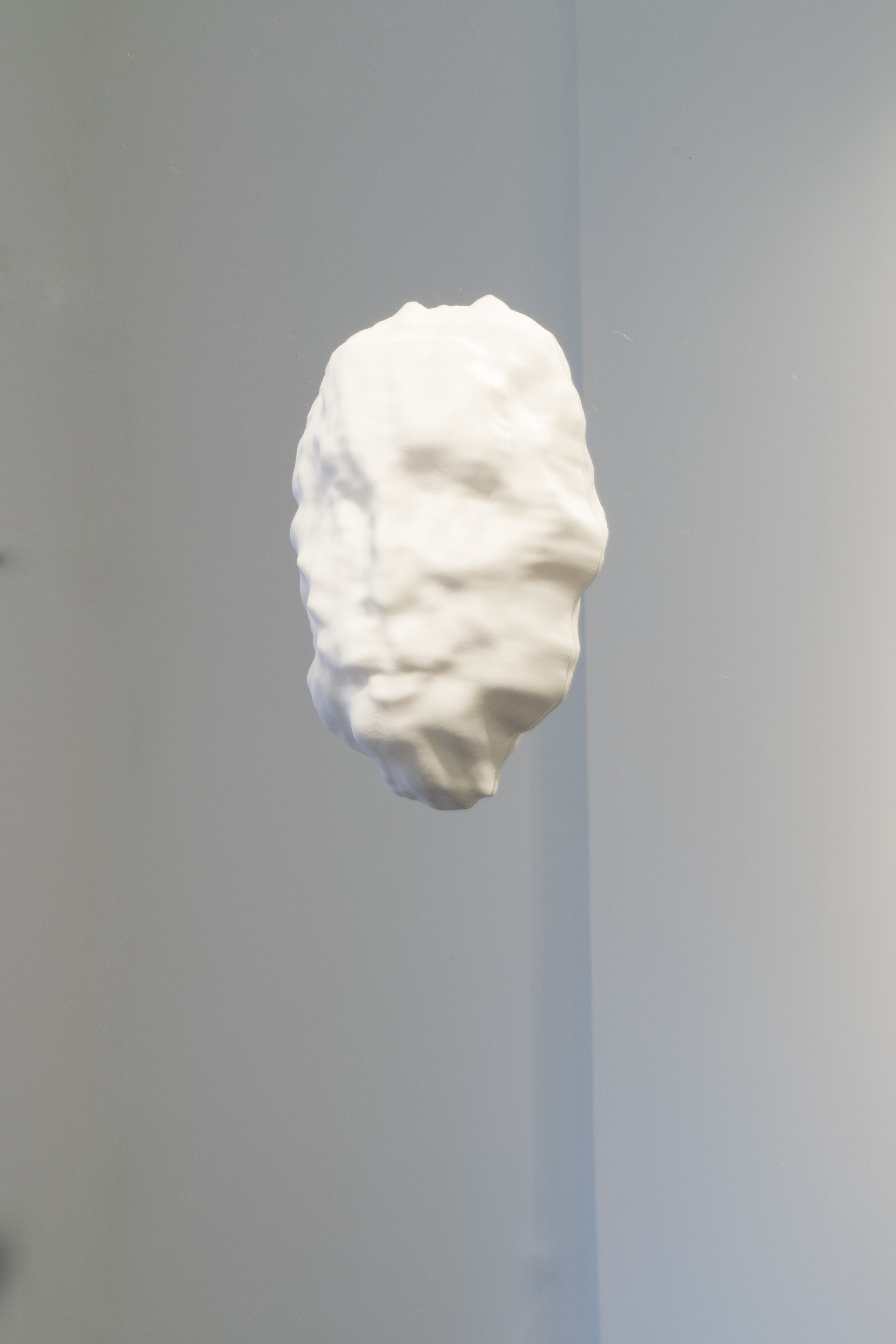



Sterling Crispin is an artist and technologist born 1985 in Maui, Hawaii. He addresses technology as both an extension of humanity, and as a distributed life-form pulsing on the surface of the earth with agency and its own agenda. His work investigates the relationships between this exponentially growing techno-organism as it relates to spirituality, human consciousness and impermanence. He received his Master of Fine Arts and Master of Science in Multimedia Engineering from the University of California Santa Barbara. His work has been exhibited in museums and galleries worldwide and has been published in Frieze, Wired, BOMB, Rhizome, Creators Project, Fast Company, Y-Combinator’s Hacker News, and the Post Internet Survival Guide. He was an invited speaker at the first annual Drones and Aerial Robotics Conference in NYC as coauthor of OpenDroneControl, an open source software platform for developing interactive artworks and research projects with aerial robotics. Lectures include NYU ITP, LACMA Art + Technology Lab, SFAQ, YouTube LA, and UCLA Art Sci Center.
Derek Curry & Jennifer Gradecki
Derek Curry’s artistic practice engages questions of agency and knowledge production through a variety of mediums from video games and data analytics, to participatory performance and sculptural data visualizations, and his research focuses on algorithmic modes of control, particularly in the electronic stock exchanges. Jennifer Gradecki’s research and practice focuses on the relationship between information and power, and aims to make specialized knowledge and technical information more accessible. Curry and Gradecki are both currently PhD candidates at SUNY Buffalo, in Media Study and Visual Studies respectively. They earned their MFAs in New Genres from UCLA’s Department of Art in 2010 and have participated in numerous international exhibitions and conferences, including the New Media Gallery in Zadar, the AC Institute in New York, the Science Gallery in Dublin, Critical Finance Studies in Amsterdam, the International Symposium on Electronic Art in Vancouver and Radical Networks at NYU Polytechnic | Eyebeam.
Maggie Flynn is an organizer, artist, and curator. Her version of life/work balance includes a mix of hopeful pragmatism and recreational dancing.
Maggie has presented projects at the Rhubarb Festival, Subtle Technologies, the Art Gallery of York University, the Hemispheric Institute’s Encuentro (Montréal) and Azad Art Gallery (Tehran). Her work also encompasses archiving and research practices which she has spoken about at conferences such as Creative Catalyst (Ryerson University) and This is Paradise (JMB Gallery). Her curatorial work has been shown by VSVSVS, Le Labo, and in her current role as Director of Whippersnapper Gallery.
Mathieu Lambert was born in France in 1986 and currently lives and works in Montreal. He has participated in numerous exhibitions both in Quebec and abroad, most notably at Margate Photo Festival, UK (2011); Triangle Gallery, Philadelphia (2011); Naçao Gallery, Shanghai (2013); Design Terminal, Budapest (2013). His work has been presented in two solo exhibitions in 2015 : Du besoin de transposer at French Restaurant, Montreal and La théorie du complot (Conspiracy theory) at gallery Les Territoires, Montreal. His project Fake Tales of America has recently been published by French Fourch publisher.
Jillian Mayer is an artist and filmmaker living in South Florida.
Mayer’s work explores how technology and the Internet affects our identities, lives and experiences. Through videos, online experiences, photography, telephone numbers, performance, sculpture and installation, her work investigates the tension between physical and digital iterations of identity and existence. Mayer has shown as museums, film festivals, and experimental art venues world wide.
She is a 2015 Creative Capital Awardee and a fellow of the Sundance New Frontier lab.
Genevieve Robertson takes up interdisciplinary strategies to investigate her relationship to specific landscapes. She is invested in durational and cyclical practices that expose the sincerity, longing and felt absurdity of her interface with nature. Robertson’s work is informed by a personal and intergenerational history of resource labor in remote work camps on the west coast of British Columbia.
Genevieve is currently a Master’s Candidate at Emily Carr University of Art and Design and holds a BFA from NSCAD University. She has recently been artist in residence at The Banff Centre and Common Opulence (Alberta), Space 118 (Mumbai), and The Contemporary Artist’s Centre (New York). She has also exhibited with James May Gallery (2015), Milk Glass Co. and the Gladstone Hotel (2014), Space 118 Gallery (2013), Xpace (2011) and the Anna-Leonowens and Khyber Arts Centre (2009).
Jay White is working with and through legal boundaries, the interactions between identities and colonial institutions, and nonhuman entanglements in human projects. Here, unseen and furtive spaces like railway right-of-ways and the edges of waterways become a mysterious and abundant more-than-human Commons where animals, plants, refuse, and people co-exist in non-dominant relations. Through performances and objects, these remote or unseen areas become shared spaces, and people become implicated in reciprocal and embodied relations with the animate entities that surround them.
White’s work has shown worldwide and his films have won various awards internationally, including Best Animated Short at the Worldwide Animation Festival (2010), and a longlist entry for a “Best Animated Short” Academy Award nomination. He has an upcoming solo exhibition in 2016 (at Modern Fuel), and his work has exhibited at the Istanbul Design Biennale (2014), the National Arts Centre (2013) the University of Glasgow (2011), and elsewhere.

Inflorescence of Bone
Kirstie McCallum
+15 Window Exhibition
October 4 — November 27, 2015
Inflorescence of Bone
‘Inflorescence of Bone’ is an excerpt from a larger collection of work called Ossa, a series of sculptural photographs and installations that explore the expressive potential of objects, while subtly responding to mountain ecology. In the background of this work are ethical questions about human and animal relationships, but the foreground is an engagement with traditions of still life, abstraction, and materiality.
‘Inflorescence of Bone’ is part of a distinctly process-based project that involves an intimate engagement with the materials. The deer skull salvaged for this project is a by-product of modern hunting culture. The reuptake of this skull into an aesthetic environment feels ethically ambiguous, and this tension is the source of its generative power. What does it mean to include organic matter in artistic discourse – can the object be simply linked to the visual history of similar objects (Western kitsch, American Modernism, historic still life painting, etc.) Does the skull always over-signify, with its own death and decay hovering around it in a subtle manner?
The photographs of ‘Inflorescence of Bone’ were born from these questions. However, as the collection evolves, I find that the skull becomes a catalyst for material exploration. The wrapped object is soft or sleek, depending on its wrapping, and its emotive potential is changed by the material that enrobes it. Texture offers pleasure or repulsion, and the wrapping signifies, conceals, and reveals. Perhaps the bone is nothing more than a frame on which the flesh is hung, and the reinterpretation of “flesh” is the aesthetic gesture? Each time I engage with this “object,” I learn something new about its resistance to interpretation and its persistent occupation of physical and psychological space.
Biography
Kirstie McCallum is a multi-disciplinary artist with a background in poetry, ceramic sculpture, and drawing. In 2007 she completed a poetry collection called Osmosis, which explored post-utopian poetics of place, in the Canadian tradition of eco-poetry. Themes from that project continue to surface in her work, as she explores the visual poetics of found and sculptural objects in her latest project, Ossa.
After completing an MA in poetry and literature, Kirstie attended The Banff Centre Writing Studio in 2008. She developed a new collection called Techne, which developed architectural and mechanical metaphors. Poetry from Techne was published in literary journals, including the Malahat Review, one of Canada’s finest poetry journals. The origins of Techne (in aesthetic theory) eventually led her to explore image-based and sculptural art.
In 2015 Kirstie was an artist-in-residence at The Banff Centre, in a six-week thematic program called Food+Water+Life, led by Lucy and Jorge Orta. During this time she began work on Ossa, her current collection of image-based sculptural works. Ossa explores tensions between living and manufactured environments; poetic close-looking; and imagist renderings of found objects and every-day environments.
Projects in development include Pulsar, on intangible animated objects, and Amorphous, a photo series about viscus substances.
MAINSPACE EXHIBITION /
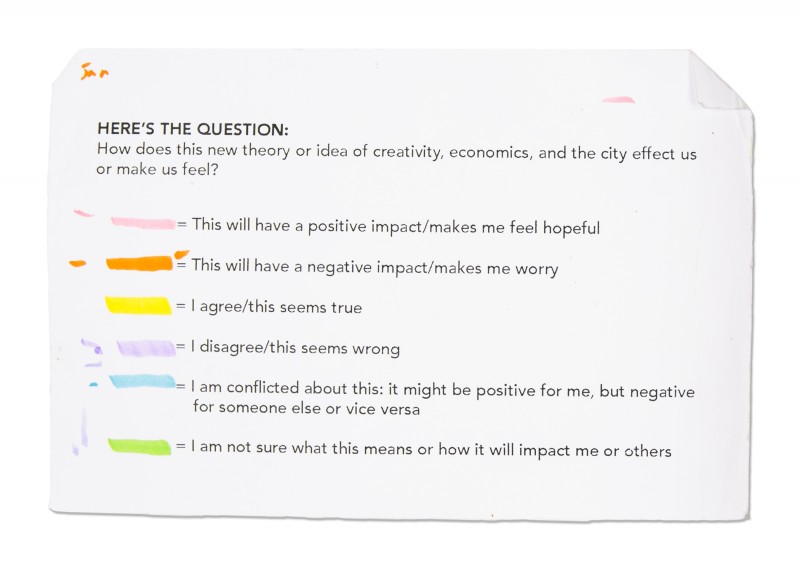
2 works, 3 talks, 6 questions
Eric Moschopedis with Keyede Osuntokun and Bryce Krynski
September 11 – October 10, 2015
Public Discussions
Talks are free and open to the public.
Placement and Displacement: Public Art and the Creative City in East Calgary
A talk and walk by Katie Varney
Sunday, September 13 at 2:00 pm
Meet at the Simmons Building (618 Confluence Way S.E.)
(approximately 1 hour)
Katie Varney is a cultural worker, designer, and recent graduate from the University of Calgary’s Communication and Culture master’s program. Her academic research looks at public art and its connection to urban development and gentrification processes. Join her on a guided walk and discussion about how the creative city script is playing out in East Calgary.
Dover Kids Club: Creating Grassroots Culture
A talk by Pam Beebe and Tito Gomez
Tuesday, September 29 at 7:00 pm
The New Gallery / 208 Centre St. S.E.
Started by Pam Beebe and Tito Gomez, Dover Kids Club is a grassroots youth initiative that seeks to create safe social spaces for the children that live in and around the community of Dover. Since its founding in September of 2014, Dover Kids Club has hosted different social events, spoken word and poetry workshops, and is working with the Greater Forest Lawn Senior Centre and Native Network’s youth program to create cultural opportunities within their community. Joining them will be spoken word artists and collaborators Wakefield Brewster and Jenny Chanthabouala. Come hear their story.
There is No Future, Yet: A Conversation between Hye-Seung Jung and Eric Moschopedis
Tuesday, October 6th at 7:00 pm
The New Gallery / 208 Centre St. S.E.
Hye-Seung Jung is a visual artist based in Calgary, Canada. Her art practice involves an observation of built-environments. She asks how societal values are embedded in these spaces and how, for instance, spaces relate to human interaction, a sense of belonging, and the creation of culture. In consideration with geographic and cultural contexts, Jung explores the themes of place, a sense of community, and spirituality. In July, Hye-Seung Jung and Eric Moschopedis sat down to have a conversation about artists, the city, spaces, economics, and cultural policy. They have been meeting regularly ever since to share information, wrestle with contemporary culture, and at times imagine possible futures. Come sit in on one of these conversations and add a voice.
On 2 Works, 3 Talks, 6 Questions by Eric Moschopedis (with Keyede Osuntokun and Bryce Krynski)
In his book The Rise of the Creative Class, guru Richard Florida famously proposes that economies are recentering around the appearance of a new economic class: the entrepreneurial free-agents of the “creative class.” In a way, the figure of the creative class with its aptitude for immaterial labour and its supposed desire for more flexible working conditions seems perfect in a post-Fordist, globalized moment where material factory labour has been moved across the globe by corporate bodies chasing greater profits through the frontier logic of uneven development. In separating creative work from factory and service work via the rubric of class, typically used to describe economic hierarchies, an unaware Florida ends up reproducing inequalities around race and gender, tapping into concerns over the exporting of production and the importing of migrant labour.
Working at this uncomfortable junction point between artistic production and the different and uneven subjectivities produced in and by the city, Calgary artist Eric Moschopedis’ playful practice focuses on performative and relational work that not only experiments with the way that people connect to and interact with each other, but also performs research into the ways those relations produce shared space. Largely working with collaborators (particularly his partner Mia Rushton), Moschopedis’ oeuvre asks its participants to find ways to produce the city otherwise, collectively mapping a neigbourhood (in Imaginary Ordinary and Council of Community Conveyors), treating the city like the shared space of a library book (in Each Other), or foraging for local plants to measure them against class differences (in Hunter, Gatherer, Purveyor). At the same time, the collaborative creativity Moschopedis asks of his participants intersects with the drive to incorporate creativity as an economic force to enliven the city. In other words, how critical is foraging for local ingredients when gentrifying entrepreneurs are doing the same, only to be served in their boutique restaurants alongside local craft beers? How can art stand as a critical intervention in a structure that treats it as another economic driver?
Bringing these concerns into the gallery space, the twinned collaborative works of Moschopedis’ 2 Works, 3 Talks, 6 Questions both critique the flattening out of difference in precisely this neoliberal and post-political moment where creativity and innovation turn economic. Taking the discourse around the creative city to task, Moschopedis and Keyede Osuntokun’s where our secrets meet and other derivatives of losing affectively reacts to Florida’s The Rise of the Creative Class, interrogating the texts that help code the production of our shared spaces. Facing the intersection of race and class, Moschopedis and Bryce Krynski’s 10 portraits of people in gold face captures ten portraits of individuals from different backgrounds and subject positions who sit, eyes closed, their racial differences effaced by gold paint that reduces each to an individualized economic actor.
Taken together, these pieces articulate a complex set of problematics about the value of creativity, and of artistic critique, in a version of the city that only values profit-generation. In his essay “How High is the City, How Deep is Our Love?,” Jeff Derksen asks how we might practice artistic critique in a post-Florida world. He suggests that strategies like Florida’s “try to take the very aspects that we love about the city – street life, alternative modes of production, mobility, and movement by choice – and incorporate[s] them into an economic force at the same time as it blunts artistic critique aimed at capitalism and everyday life” (39-40). What is left for artistic critique after it has been captured by what it hates? Moschopedis and Osuntokun overcode Florida’s text, inscribing their careful responses and gut reactions directly on it. In the process, they open up critical reading and affective response as forms of knowledge production that begin to untangle the neoliberal codes through which we organize and build our cities and communities. What if we start with critique, they seem to ask.
Moschopedis and Krynski’s 10 Portraits reacts to this question by posing the production of subjectivity (of race, gender, sexuality, class, and ability) under capitalism and neoliberalism as central to the problem. Each portrait presents a different person in “gold face,” their identity reduced to a symbolic representation of their value as an independent economic actor. But the gold paint fails to obscure the face of each subject – a white man still a white man, a black woman still a black woman. In this failure, Moschopedis and Krynski also dramatize the failure of post- discourses (post-race, post-feminism, etc.), arguing that attempts to erase difference (and the extreme social and spatial inequities that accompany it) only serve to grease the wheels of economic production and prop up ugly white supremacist and patriarchal structures. Within the frame of artistic critique, they ask what other things artists complicit with the connection of creativity and economic value might also be complicit with. In a historical moment where powerful movements have emerged around race, gender, and sexuality – Idle No More, Black Lives Matter, ongoing critiques of harassment and rape culture, an increasing acknowledgement of trans issues, etc. – how might we imagine more creative and critical cities that seek to crack apart the codes that allow us to unevenly organize in unjust ways? And how might we imagine new social and spatial processes and forms that don’t just reproduce injustice?
– Ryan Fitzpatrick
Derksen, Jeff. “How High is the City, How Deep is Your Love.” After Euphoria. Dijon, France: Les Presses du Réel; Zurich: JRP|Ringier, 2013. 26-43. Print.
Florida, Richard. The Rise of the Creative Class. New York: Basic, 2002. Print.
Florida, Richard. The Rise of the Creative Class. New York: Basic, 2002. Print.
Biographies
Eric Moschopedis is an award winning interdisciplinary visual artist, facilitator, and community organizer. During the past decade he has developed an exciting catalogue of community-specific and participatory works that operate in both a gallery and post-gallery context. His practice uses public space, participation, intervention, and performance to interrogate local day-to-day life. As a visual artist, his work crosses disciplinary boundaries and utilizes a number of materials and processes. He brings together elements of craft, performance, printmaking, and cultural geography, to create playful, but highly critical projects. This approach has harvested presentation, workshop, lecture, and publication opportunities in Canada, the United States, and Europe—largely with his long-time collaborator Mia Rushton.
Bryce Krynski is an independent photographer who began his photographic practice while studying journalism at SAIT. Since graduating he has shot and produced editorial images for national magazines and newspapers. Moschopedis and Krynski have worked together intermittently for well over a decade. In the late 1990s they co-authored a short surrealist play entitled “Pillage and Cover” (1999), that had a short run in the UK. More recently, Krynski has worked with Moschopedis and Mia Rushton regularly to collaboratively document their ephemeral works in Alberta and internationally. For 10 Portraits… Krynski and Moschopedis worked closely to develop the project from concept to its present form of representation.
Moschopedis met Keyede Osuntokun by chance in early 2014 at Bow Valley College Library (Keyede was a nursing student at the time and Eric works there). Osuntokun was carrying a copy of Richard Florida’s 2012 edition of Rise of the Creative Class. Moschopedis had long had the idea of highlighting the book based on a critical and affective criteria with somebody from outside of the arts community. Moschopedis and Osuntokun agreed to intervene into Florida’s toxic discourse by reading and studying their own copies of Rise of the Creative Class. Together they decided on a colour coded criteria in which to document their thoughts about the book. Over several months, Moschopedis and Osuntokun filled up Florida’s pages with highlighter ink and marginalia—inscribing onto the pages their own personalities, identities, histories, politics, and affects. Keyede Osuntokun is a graduate of Bow Valley College’s Practical Nursing program. Originally from Lagos, Nigeria, Osuntokun moved to Calgary in 2012. In addition to the creative arts, her interests include hiking, dancing, photography, psychology, and economics. She likes to volunteer and take care of people. Osuntokun is looking to become a pharmacist and a model. Keyede says this about working on the project: “This project helps to pull out things that you won’t necessarily think makes a difference in every day thinking, and also puts into perspective how economics shapes living, growing and adaption over the years and in various countries.”
Ryan Fitzpatrick is a poet and critic living in Vancouver (but originally from Calgary). He is a PhD Candidate in English at Simon Fraser University where he works on contemporary Canadian poetics after the spatial turn. He is the author of two books of poetry: Fortified Castles (Talonbooks, 2014) and Fake Math (Snare, 2007). With Jonathan Ball, he co-edited Why Poetry Sucks: An Anthology of Humorous Experimental Canadian Poetry (Insomniac, 2014). With Deanna Fong and Janey Dodd, he is working on the second iteration of the Fred Wah Digital Archive (fredwah.ca).
MAINSPACE EXHIBITION /

Untitled (It’s almost a one-liner)
Sarah Beck and Shlomi Greenspan
November 21 to December 20, 2014
Untitled (It’s almost a one-liner) is a multi-media installation that explores the ambiguity of a performance about to begin via an empty stage. Bearing the signifiers of a comedy club, the viewer is left to work out whether a show is about to begin. Here, comedic material becomes the material of the artwork. The installation cultivates expectations and then subverts them; waiting for a punchline is, in fact, the punchline of the work.
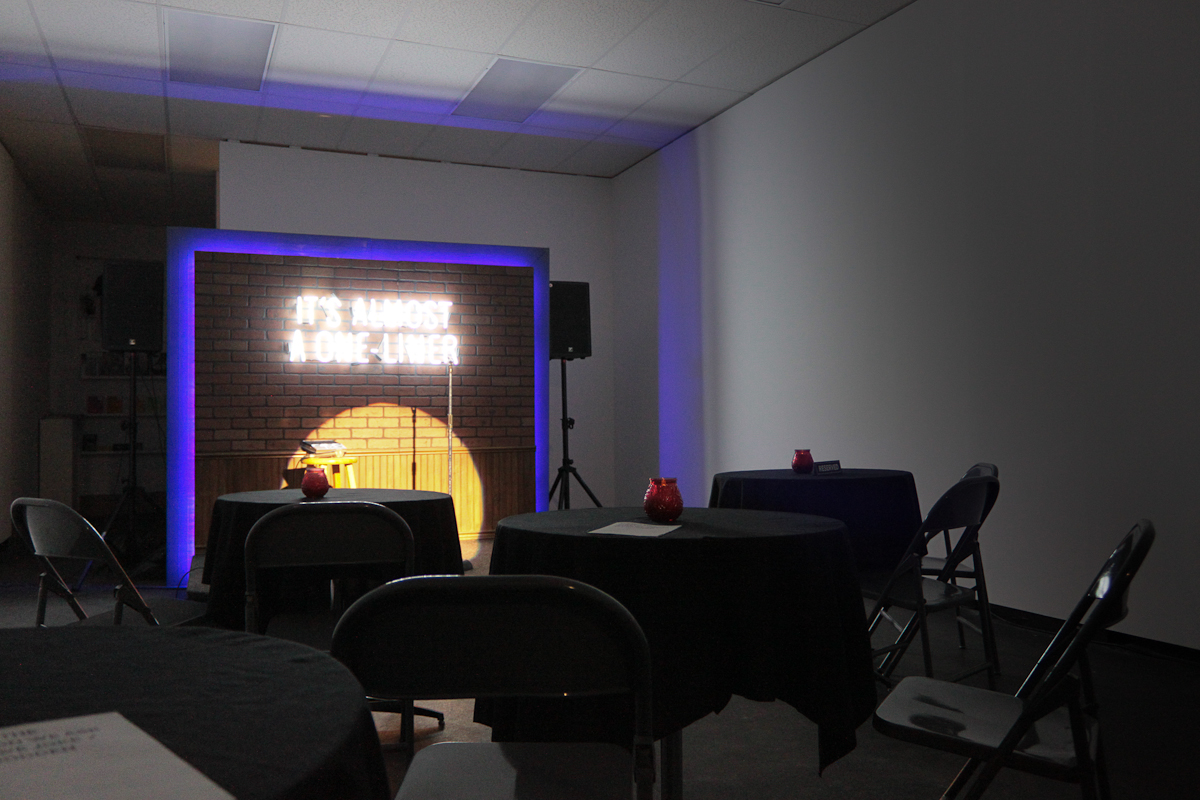
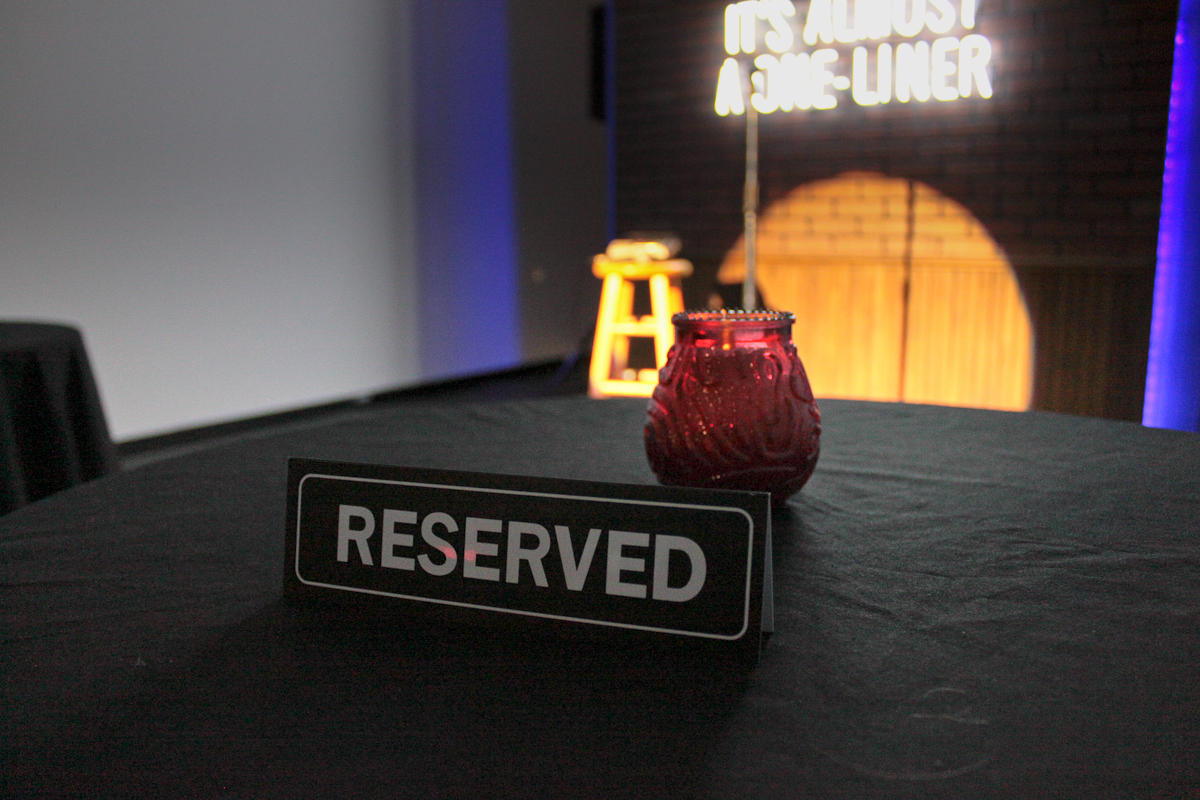
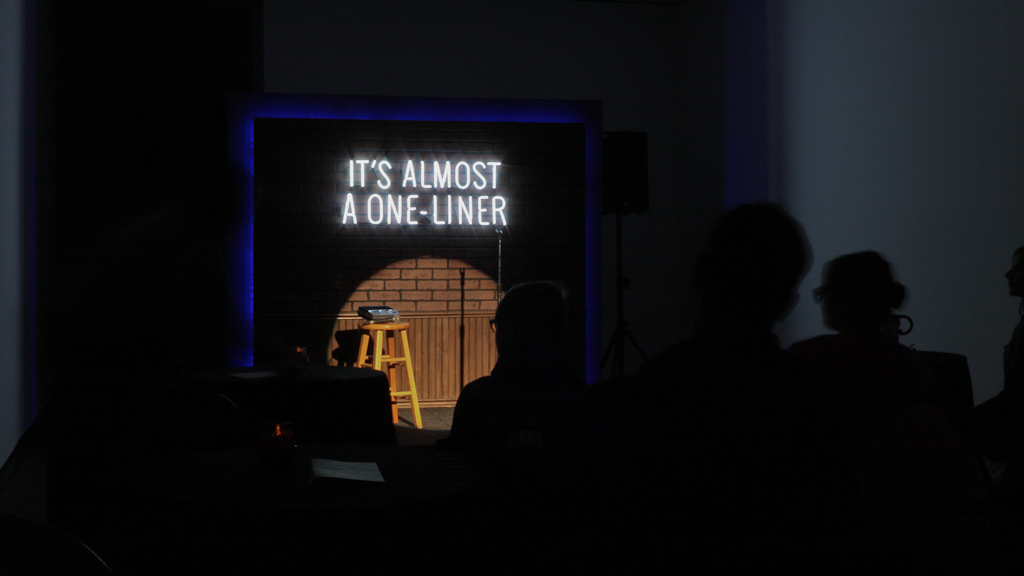
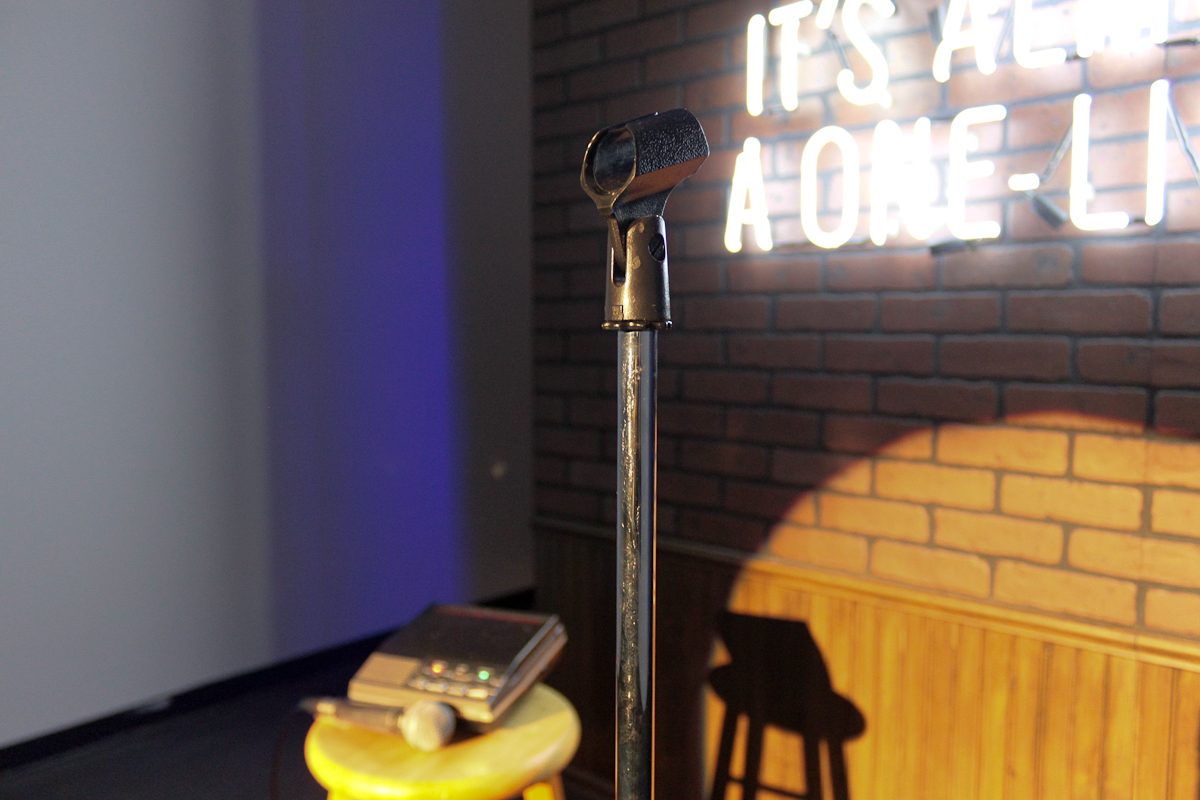

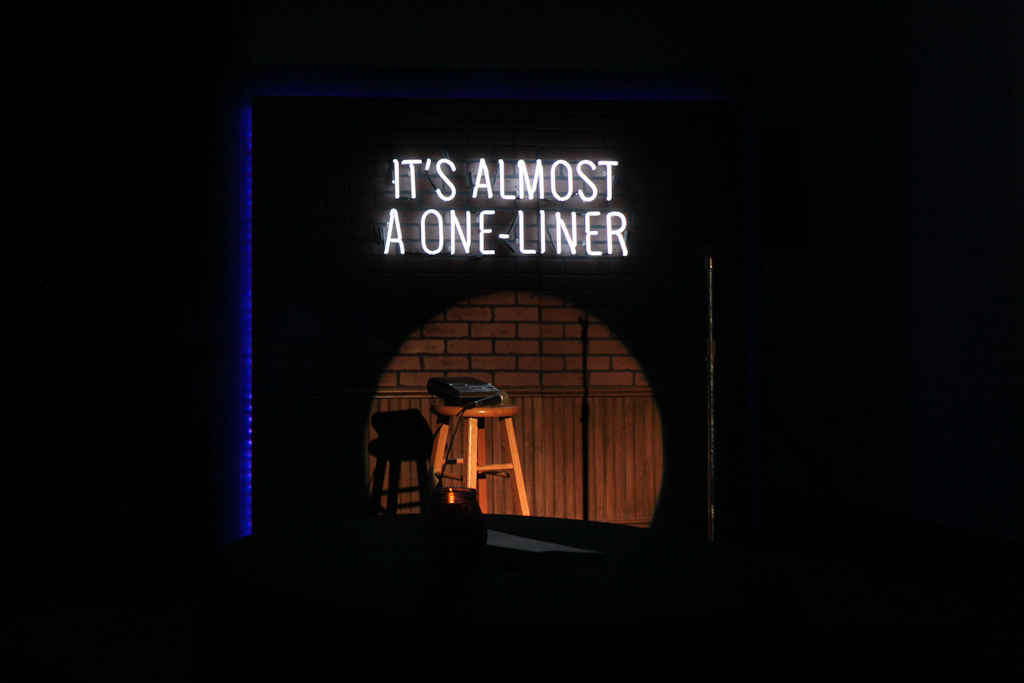


An old adage says brevity contains the soul of wit, but forgets the palimpsest that steadies it, and provides its punchline. A long-strung joke regarding modern and contemporary art confirms this (“my kid could do that”), but the biggest laugh’s still had by those who know art’s history. Art is a succession of attempts and redresses. It’s a medium that only becomes something once it’s complete, and upon its recognition, goes negated: the Renaissance painters finally mastered realism only to be undone by Mannerism; Romanticism loosened the picture plane that Neoclassicism roped-in; history painting found a thread that Modernism unspooled; and so it’s gone. Until recently. The joke, now, is harder to locate. It’s woven in and threaded out in such succession that we don’t trust what’s made sincere, or laugh at something stupid. “What does it mean?” has become the best joke of all.
Sarah Beck and Shlomi Greenspan are having fun with our confusion. Untitled (It’s almost a one-liner) recalls the risk-taking and self-effacing stand-up of Andy Kaufman, and marries it with our renewed investment in performance and installation art (think The Artist Is Present, Marina Abramović’s self-serious MoMA “event”; or the omnipresent darling, Tino Seghal, whose vapid action is all there is to hold). Punching their weight on a well-lit stage, Beck and Greenspan perform a joke that’s made better for its build-up, and a delivery formed by absence.
A recording device and mic sit on a stool, the word “ONE” reflected on its surface. A merrymaking comedian issues the first of many recordings, inviting his agent (the ever-absent “Bernstein”) to see his show. It beeps and another message goes issued (“just following up about those tables and those drinks”), and seven voicemails succeed. Again and again, the absent comic tries to seat his singular audience, but never lands him. In an unmoving frame, Beck and Greenspan deliver their joke: what would it add if the artist was present? When does absence become fame?
As with Andy Warhol, Bruce Nauman, and the chimeric Sophie Calle, Untitled (It’s almost a one-liner) performs a joke-as-commentary on the increasingly ephemeral matter of an artist’s presence and aura. With nothing active but the narrative of missing action, we’re made to query what it is we’re hoping to see. What would art look like, now, were it to present itself? How would it manifest, nevermind the thing it resists? Maybe that joke about Salvador Dali walking into a fish and ordering a pint of stamps (and the barman saying, “Why the bicycle wheel?”) utters something true. What is missing, and, moreover, would we know it to see it? I think of an Ad Reinhart cartoon: “An abstract painting will react to you if you react to it. You get from it what you bring to it. It will meet you half way but no further. It is alive if you are. It represents something and so do you. YOU, SIR, ARE A SPACE, TOO.” The text lies over a dead man, his eyes marked with an X. As with so much contemporary art, the punchline lands with a chill. We’re looking for meaning in a body that’s missing.

–Sky Goodden
Biographies
Sarah Beck uses her art practice to address contemporary issues, engaging the audience with humour and common signifiers. Her studio practice favors accessibility and moves between mediums. Beck is a Saskatchewan artist currently based in Toronto. She has won various awards, including the Canada Council for the Art’s Joseph S. Stauffer Prize. She was featured at Toronto City Hall’s Museum for the End of the World during Nuit Blanche 2012, and at the 2010 Winter Olympic Cultural Olympiad. Beck completed her Interdisciplinary Master’s of Art, Media & Design at the Ontario College of Art and Design University’s (OCADU) in 2010. In 2014 Beck was the first Artist in Residence at the International Space University.
Shlomi Greenspan is an Israeli artist, currently living and working in Toronto. He studied at the Avni Institute of Art and Design in Tel Aviv and at OCAD University where he received his BFA. Greenspanʼs practice is multidisciplinary, with an emphasis on painting, animation and video installation. His work interfaces elements of time, narrative and storytelling to explore the various ways information technologies and mechanical devices mediate and distort the perception of time and space. By calling attention to certain patterns, cycles and unfolding moments inherent in every day life, Greenspan examines the ambivalence and mutability of lived experience in the 21st century. Greenspan’s work is currently featured in Urban Fabric, an exhibition curated by Deborah Wang at the Textile Museum of Canada.
Sky Goodden is the founding editor of a new online art publication titled MOMUS, which promotes international art writing and journalism, and stresses a return to art criticism. She was the executive editor of BLOUIN ARTINFO Canada from 2011 to 2014, and regularly writes for Modern Painters, Art + Auction, Canadian Art, and C Magazine, among others. She was the 2010 Editorial Resident at Canadian Art, and holds an MFA in Criticism and Curatorial Practice from OCAD University.

We produced a 27-page catalogue in conjunction with this exhibition, it is available as a free PDF.


C.R.E.A.M.
is a fundraiser and party in support of The New Gallery.
Enjoy a cozy atmosphere, good company, newly commissioned artworks, and an array of complimentary fall soups and fresh bread provided by Sidewalk Citizen Bakery on Saturday, November 15, 2014 from 8:00 to 11:00 PM at the historical John Snow House (915 18 Ave SW).
In the spirit of supporting and celebrating Calgary’s own art history, funds will be raised from the sale of three limited edition prints. These works were produced on the historic letterpress that had belonged to the late John Snow—a renowned local artist known for his support of Calgary’s artist community. Available prints include works by Canadian artists Kyle Beal, Jillian Fleck, Wendy Toogood, and a limited edition t-shirt designed and silkscreened by Calgary artist Jeremy Pavka.
All proceeds will go towards supporting The New Gallery’s programming vision. For nearly forty years, The New Gallery has provided opportunities and venues for artists that foster social, political, and critical creative practices, while engaging and educating audiences on contemporary art.
Print images



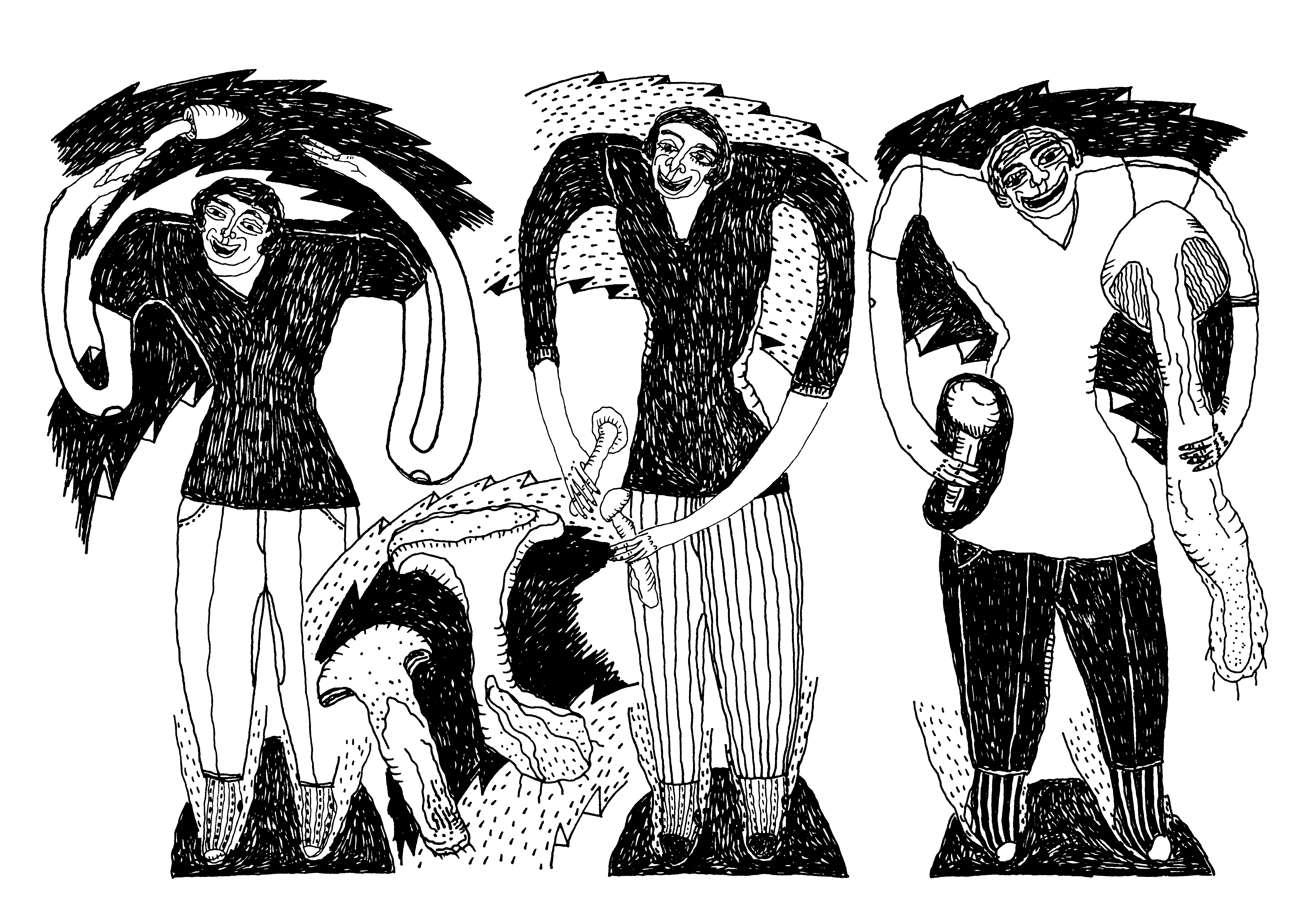
The letterpress prints are from an edition of 30, with only 20 available for purchase. They will be sold for $75 individually or $200 for a set of three. The t-shirts are $30 from an edition of 26. Adult sizes S, M, L, and XL are available. We are also selling raffle tickets for $10 each, offering a chance to win one of the six different gift baskets filled with an assortment of amazing prizes from our generous local supporters:
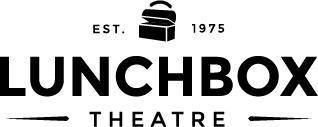




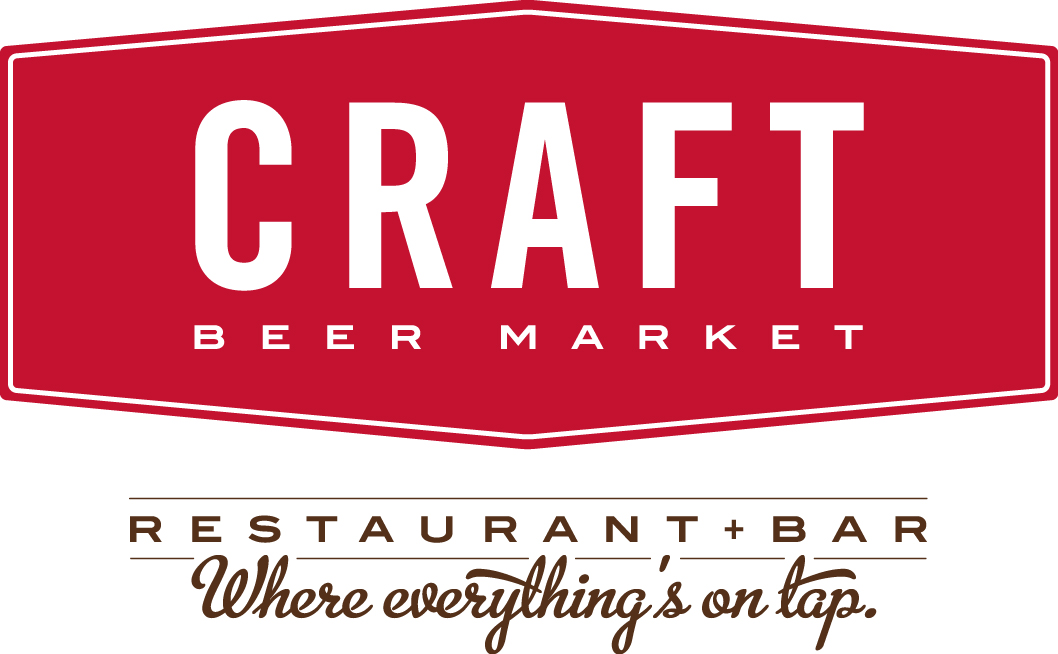


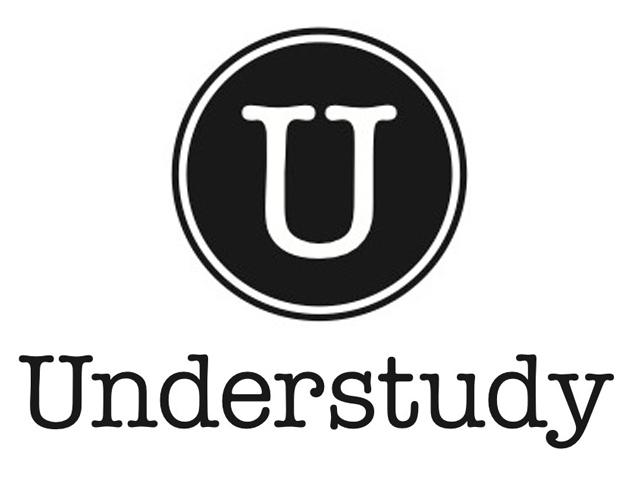

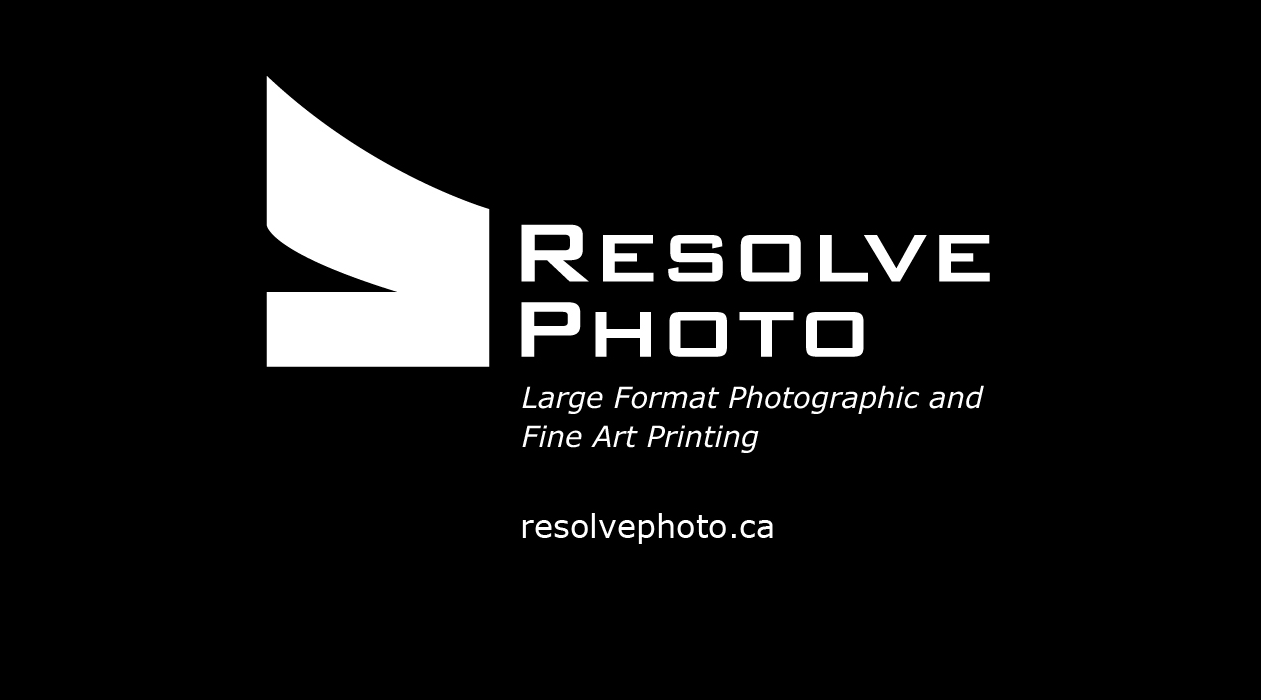
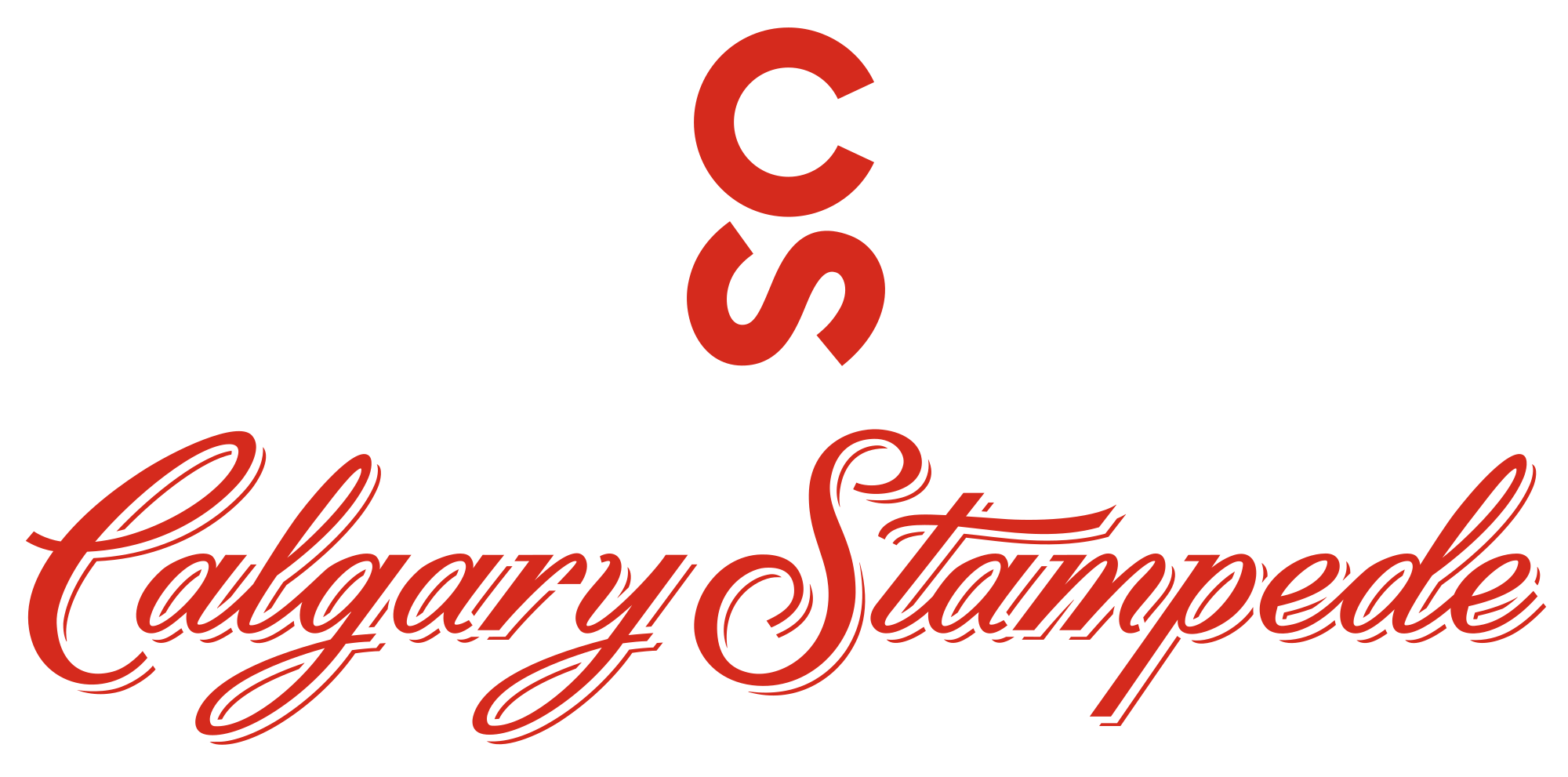
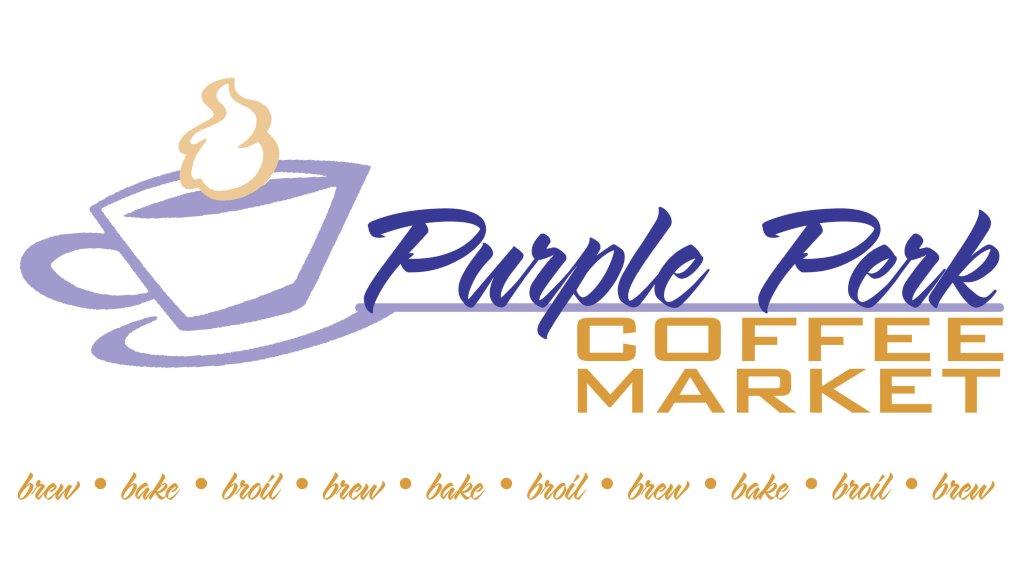
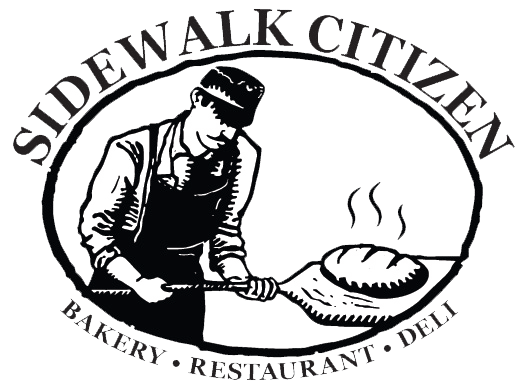
Thank you for your support!
> Facebook event
MAINSPACE EXHIBITION /
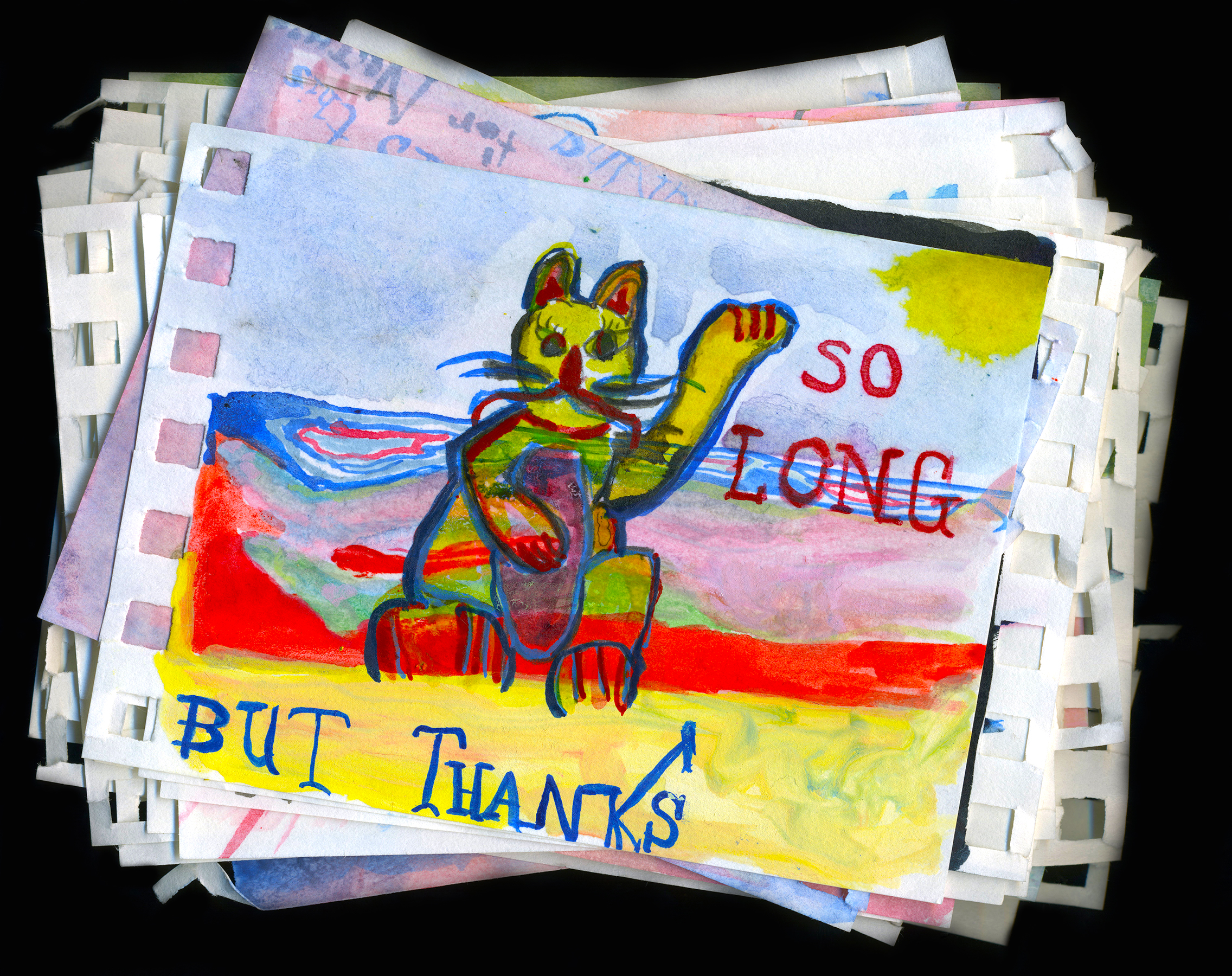
Pretty Boys, You Owe Me
Roselina Hung and Stacy Lundeen
October 17 to November 15, 2014
Pretty Boys, You Owe Me unites two artists who both work with text, self-deprecation, and lust.
| Beauty and Repetition by Karly Mortimer | |
| The Greek myth of Narcissus and Echo is of a forest nymph known for her voice and a young man admired for his beauty. When the goddess Hera became jealous of Echo, Hera cursed Echo so she is only able to repeat the words said to her, never being able to say anything on her own. Echo fell in love with the handsome hunter Narcissus as he wandered through the woods. Echo repeated Narcissus’s words back to him, speaking in a way that his words become her own. She appropriated his language and in repeating she responded. But Narcissus quickly tires of her and Echo subsumes to the grief of his rejection. She pines for him until all that is left is her voice. | public and personal histories reflections on past wrongs perpetrated on me by others; often close friends or relatives, for which I feel I am owed formulaic repetitionan aesthetic ideal of beauty with soft-featured young men serving as musetext messages sent and received during my romantic relationships public declaration of that debt to me interested in whether my drawing capability and the quality of the work would suffer because of the intense repetitiondeleterious effect of obsessive desire |
| While drinking from a pond Narcissus caught a glimpse of his reflection and falls hopelessly in love with what he saw. Upon the realization that it was himself that he was in love with and that he could never obtain the object of his desire, he wastes away. | subtle distinction between desire and obsessional reflection on my past experiences a labour of regret |
| Hands and eyes are the sites of recognition. These are also the parts of ourselves that we see the least easily. It is difficult to hold an image of our own act of looking or our own hands as they are moving. It is the Other who knows what our looking and our hands look like. Derrida argues that there is narcissism and non-narcissism, and that non-narcissism is just a more welcoming form of narcissism. This welcoming non-narcissism is more open to the experience of Other as Other. The attempt at narcissistic reappropriation allows us to have a relationship with the Other. Relation to the Other, even asymmetrical, and open without reciprocation must trace a movement of re-appropriation in the image of oneself for love to be possible. Love is narcissistic. | I injured my right hand and was unable to draw for several months an earnest lookI know its obsessive to make this kind of work. It feels like being in junior high and going over what I should have said to my grade 7 Social Studies teacher when he made me feel like an asshole (by the way Fuck you Mr. Frederic) Love becomes in pursuit I haven’t forgotten it, oh no, you still owe me. Not you personally, but that other person who I know you know. |
| Works citedCavendish, Richard, ed. Mythology: an Illustrated Encyclopedia. London: Orbis Publishing Limited, 1980. Print.Derrida. Dir. Kirby Dick. Zeitgeist Films, 2003. Film. Hung, Roselina. pretty boys kill me, Exhibition Proposal, 2013. Lundeen, Stacy. U Owe Me, Exhibition Proposal, 2013. Schmidt, Joël, Larousse Greek and Roman Mythology. New York: McGraw-Hill Book Company, 1980. Print. |





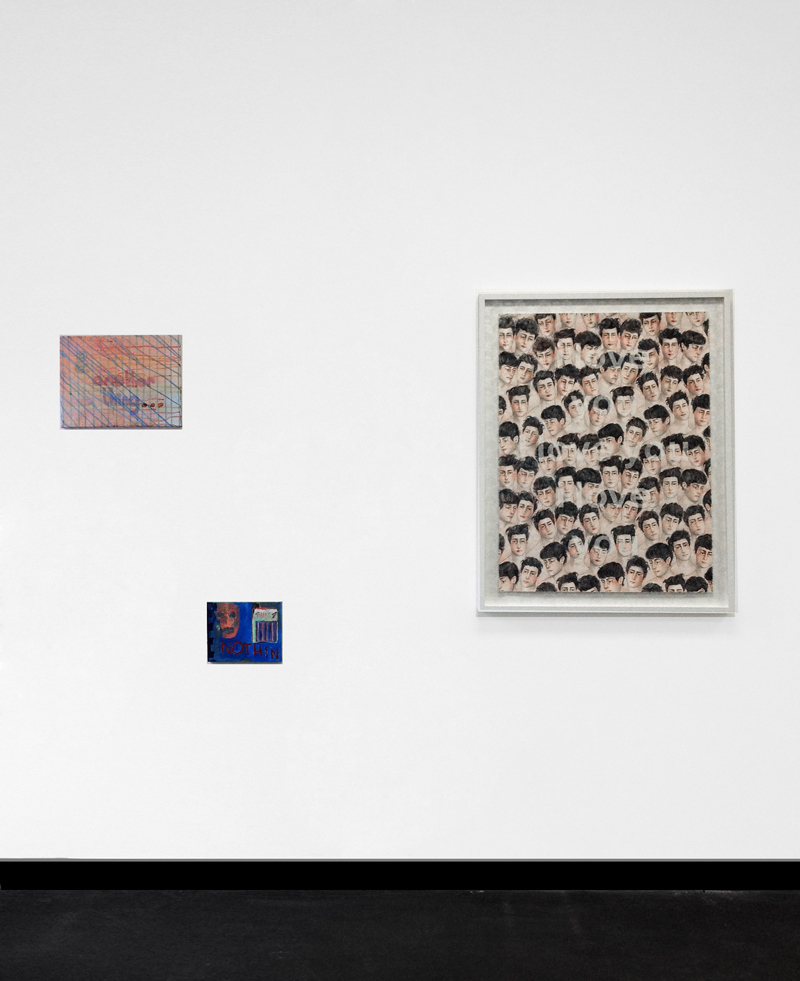
Biographies
Roselina Hung (b. 1980, Vancouver, BC) lives and works in Vancouver. She received her MFA from Central Saint Martins College of Art & Design, London, UK and her BFA from the University of British Columbia. She also spent a year abroad at L’Ecole Nationale Superieure des Beaux-Arts, in Paris, France. She has been an artist-in-residence at SIM, Reykjavik (2012); The Banff Centre, Banff (2011); and Ox-Bow School of Art, Saugatuck (2011). Solo exhibitions include Of Myth and Men, Initial Gallery (2014) and pretty boys kill me (2013), Gallery FUKAI. Recent group exhibitions include Small is Beautiful, Flowers Gallery, London, UK (2013), Scenes of Selves, Occasions for Ruses, Surrey Art Gallery, Surrey (2012); FLOE: New Work, SIM, Reykjavik (2012); The Kingston Prize, Royal Ontario Museum, Toronto (2011). Upcoming exhibitions include a group show, Now and Then, Pendulum Gallery, Vancouver (2015) and a public art piece at Banff Town Hall (2015).
Stacy Lundeen is a Vancouver-based visual artist born in Lethbridge, AB (1979). He studied Photography at Concordia University and spent the last ten years living and working in Montréal until his very recent move to BC. His work has been widely exhibited across Canada, including a recent solo exhibition at the Kyber Centre for the Arts in Halifax. Lundeen’s work encompasses a wide variety of mediums but he is probably best known for his humorous large-scale photographs that explore themes such as failed ideology, awkward social interactions and provocative double entendre.
We produced a 27-page catalogue in conjunction with this exhibition. Available in our online store or as a free PDF.

MAINSPACE EXHIBITION /
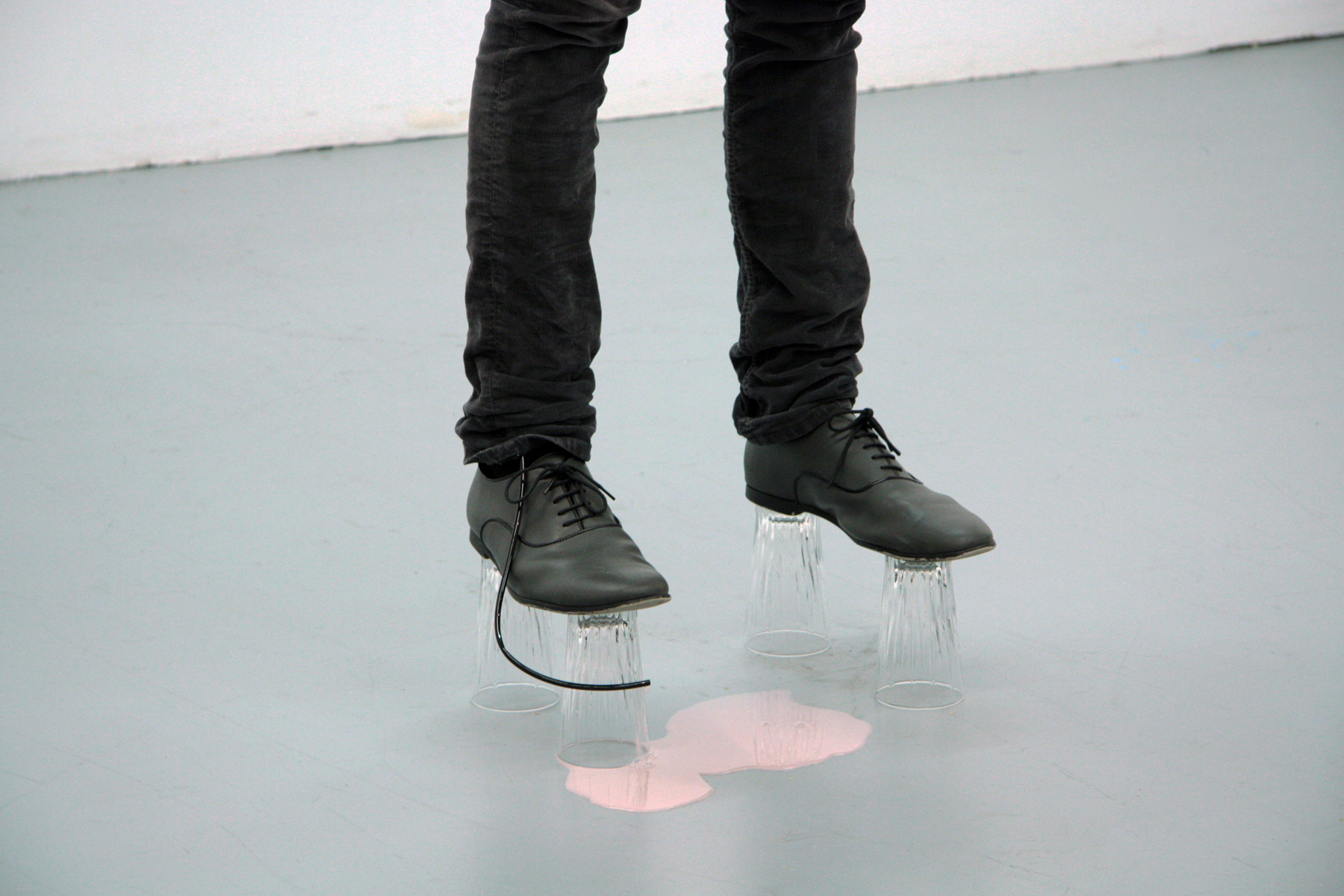
Inedited
Guillaume Adjutor Provost
Mainspace Event
October 6, 2014 from 9:00 to 11:00 PM
In collaboration with the Mountain Standard Time Performative Art Festival, we are pleased to present a one-night performance by Guillaume Adjutor Provost in our Main Space.
The work of Guillaume Adjutor Provost questions the presentation and representation inherent to autonomous objects. By association, he creates non-linear narratives where invested sources gather at the crossing of investigation and storytelling. Following an interdisciplinary approach, the projects of Guillaume Adjutor advocate a hybrid status between visual arts, design, literature and the curatorial. Therefore, he invests the artistic practice as a moving object seeing itself only by the fluidity with which it passes from one state to another.

Biography
Guillaume Adjutor Provost works and lives in Montréal. He is currently studying for a doctorate at the Université du Québec à Montréal. His area of research centres on the interchangeable role of artist-curators. Provost has received grants from Première Ovation and the Conseil des arts et des lettres du Québec, as well as a postgraduate scholarship from Hydro Québec. He has exhibited in both solo and group shows in Quebec, Ontario, the United States, Belgium, Germany, Austria and France.
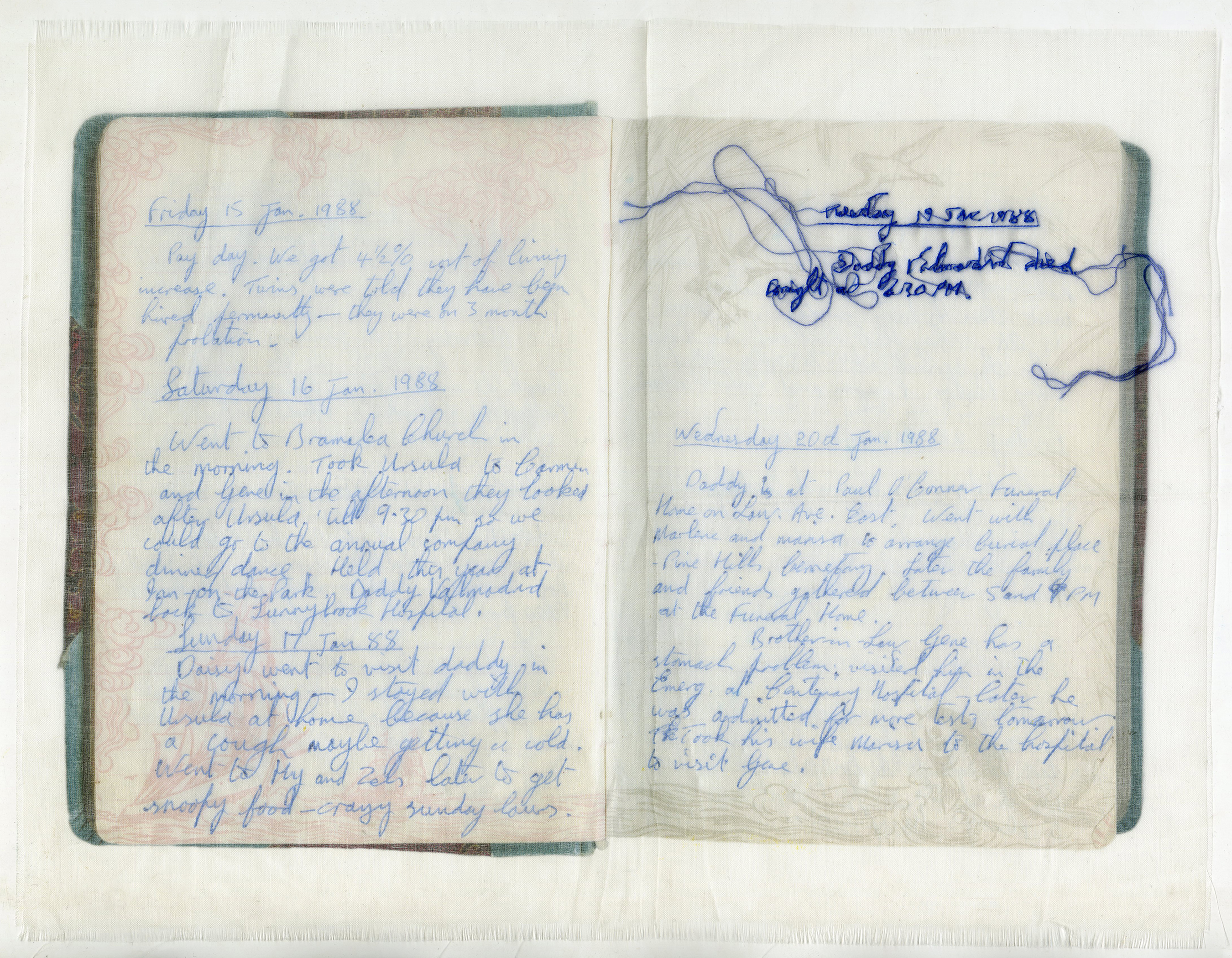
Journal
Ursula Handleigh
+15 Window Exhibition
October 1 to November 30, 2014
This body of work addresses the lingering ephemeral moment and the disintegration of memories. Journals act as physical extensions of our own memories, an external archive which we can flip through and recall specific moments. Memories are malleable and change over time, disintegrating and becoming more distant with each recollection. Journals, diaries, notes and letters all help to inform our memory, working with each other to fill in the gaps that have become blurred or lost with time.
Being the first generation in my family to be born in Canada, I have always felt detached from my family’s history. Growing up, I was surrounded by old family photographs and enveloped by the stories accompanied by them. The stories I heard about my parents and ancestors informed who I was and fill in the gaps of my own life’s story. These memories, created by others before me, became an extension of my own.
Using a needle and thread to retrace my father’s journal from the past, I am bringing forth memories which have been lost. Drawing from ephemeral moments, I am physically binding my own memories with those of my ancestors, drawing from my family’s history to create a history that is my own.
Biography
Ursula Handleigh is a visual artist based in Toronto and a graduate of OCAD University’s BFA program. Working with photography, film and historical processes of imaging making, her work explores questions of identity, perception, memory and familial relationships.
Ursula has participated in the XPACE/SPARK Art Space Residency in Syracuse, NY; the MC McCain Post-Graduate Residency in Toronto, ON; and the Spark Box Residency in Prince Edward County, ON. Her work has been exhibited across Canada, the United States, and Europe.

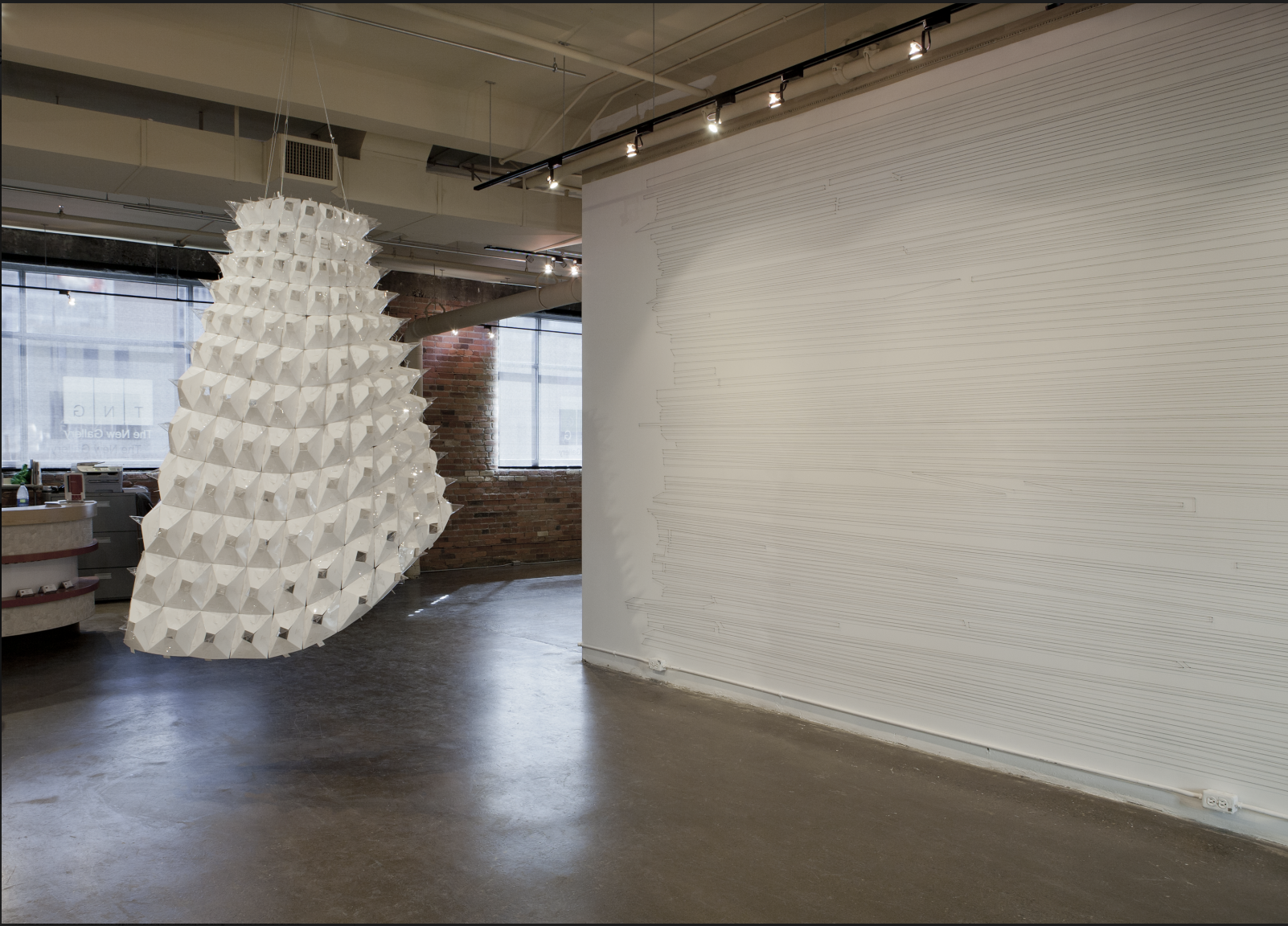
Similar But Different
Jayda Karsten, Asmaa Al-Issa, Neal Philipsen, Alyssa Haas
March 8 - April 13, 2013
Similar but Different
By: Jayda Karsten
I sense a return to the collaborative approach of art, architecture, and design with the inclusion of other
disciplines such as math, science, psychology and technology. Throughout history there has been much
debate about the connectivity or individuality of disciplines. Through this curatorial process I was able to
see convergences and departures of both Environmental Design Studies (EVDS) and Fine Art students at
the University of Calgary. These up-and-coming artists and architects have created works that bridge their
specific disciplines and opened a conversation on shared language, methodologies, processes, and
intentions. I would like to thank The New Gallery, who approached this project with the intent to provide
a bridge between the Alberta College of Art + Design (ACAD) and the University of Calgary (U of C) through
an inter-institutional exhibition.
Historically, during the Renaissance period in particular, artists such as Bernini and Michelangelo referred
to themselves as architects as well as sculptors and painters. In late Victorian Britain this division was put
into question by William Morris and John Ruskin through the Arts and Crafts Movement. The early
twentieth century saw groups such as Bauhaus and De Stijl advocating an increased dialogue between art,
architecture, design and technology. The quest for the Gesamtkunstwerk (total art work) continues into
the ’40s with Sigfried Gedion who influenced the Situationists International in the ’50s. Fast-forward into
the present day where the zeitgeist of Calgary’s artists, architects and designers continues to be one of
interdisciplinary exploration.
One observation is how technology is more than just a tool but also a medium for those in creative
disciplines. Stephen Rowe and Linds Horan both tuned to technology and the virtual world for the
language used to communicate their site-specific guerrilla installations. This is a surprising twist on how
objects are typically appropriated through remediation, taking something from the physical world and
reinterpreting it in the virtual world, has been completely reversed. Similarly, Alyssa Haas’ design for a
Cellphone Booth was created entirely in a virtual environment that is both weightless without human scale
and then brought into reality. This complex structure has both an architectural and artistic feeling to it;
combined with a design intention for function in a process she describes as “digital sculpting”.
Another observation was how concerned artists and architects are with social, physical and mental
wellbeing. Asmaa Al-Issa’s Surface is a site specific installation inspired by eastern philosophies and
through “ritualistic and meditative” processes. The result is a labyrinth like reflective space within the
gallery, while Elmira Aghsaei, Will Frank, and Jason McMullen’s installations try to alleviate social
awkwardness in the public realm and encourage playfulness in parks and LRT stations to increase public
wellbeing. In contrast, it is often the well-being of the lower class in society that is a predictably low
priority. Sol Aasland, Andrew Pun, and Alana Piche seek to draw our attention to the social injustices that
are prevalent in our city and how the social, physical, and mental wellness of the homeless goes
undiagnosed.
These are just some examples of the many interconnections that artists, architects, and designers share;
creating outcomes that are Similar but Different. Having arrived at this point, I ask myself how the
distinction of disciplines is either helpful or harmful in terms of generating dialogue around larger social,
political, and environmental issues, and is the term “interdisciplinary” becoming a cliché?


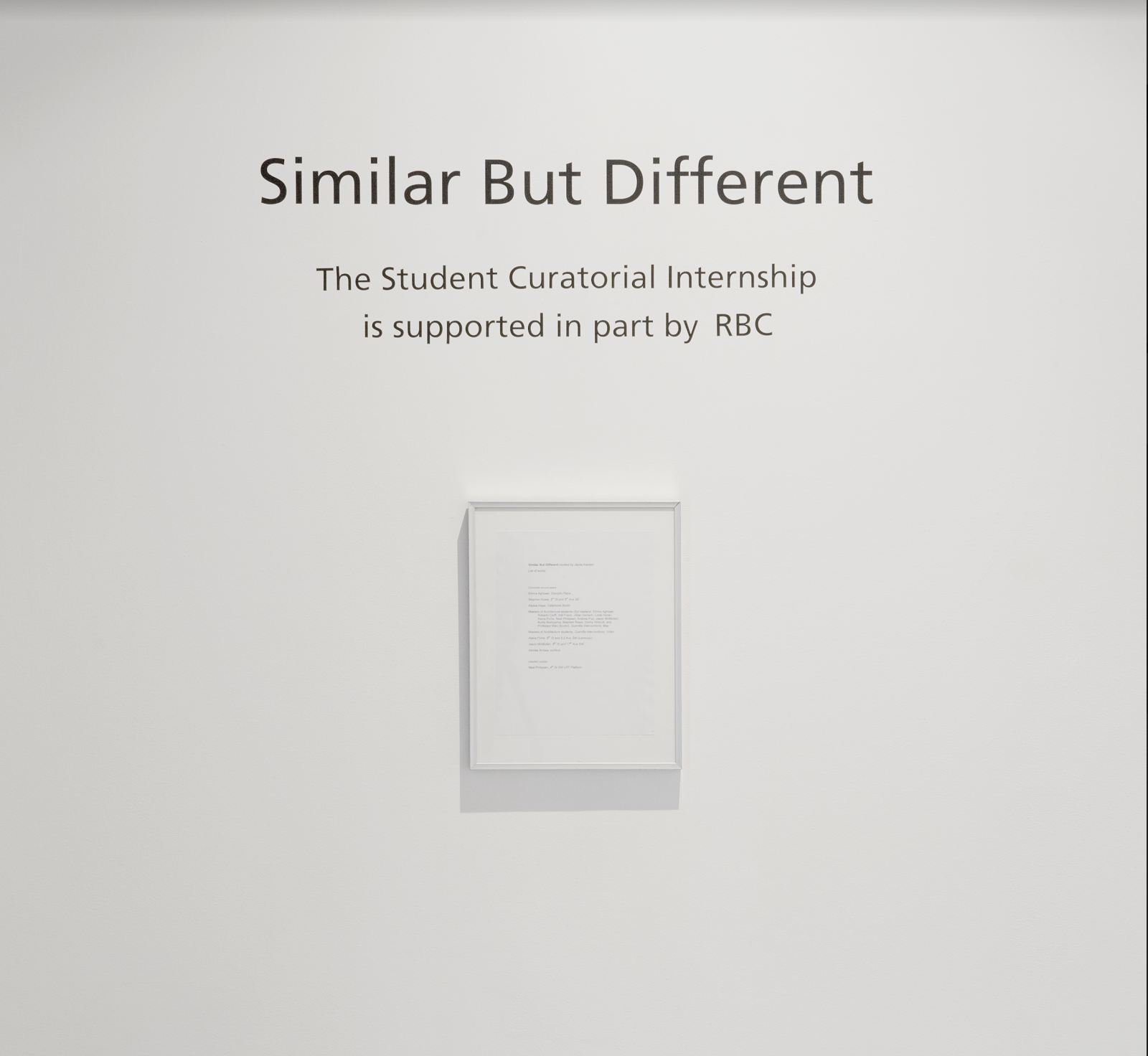
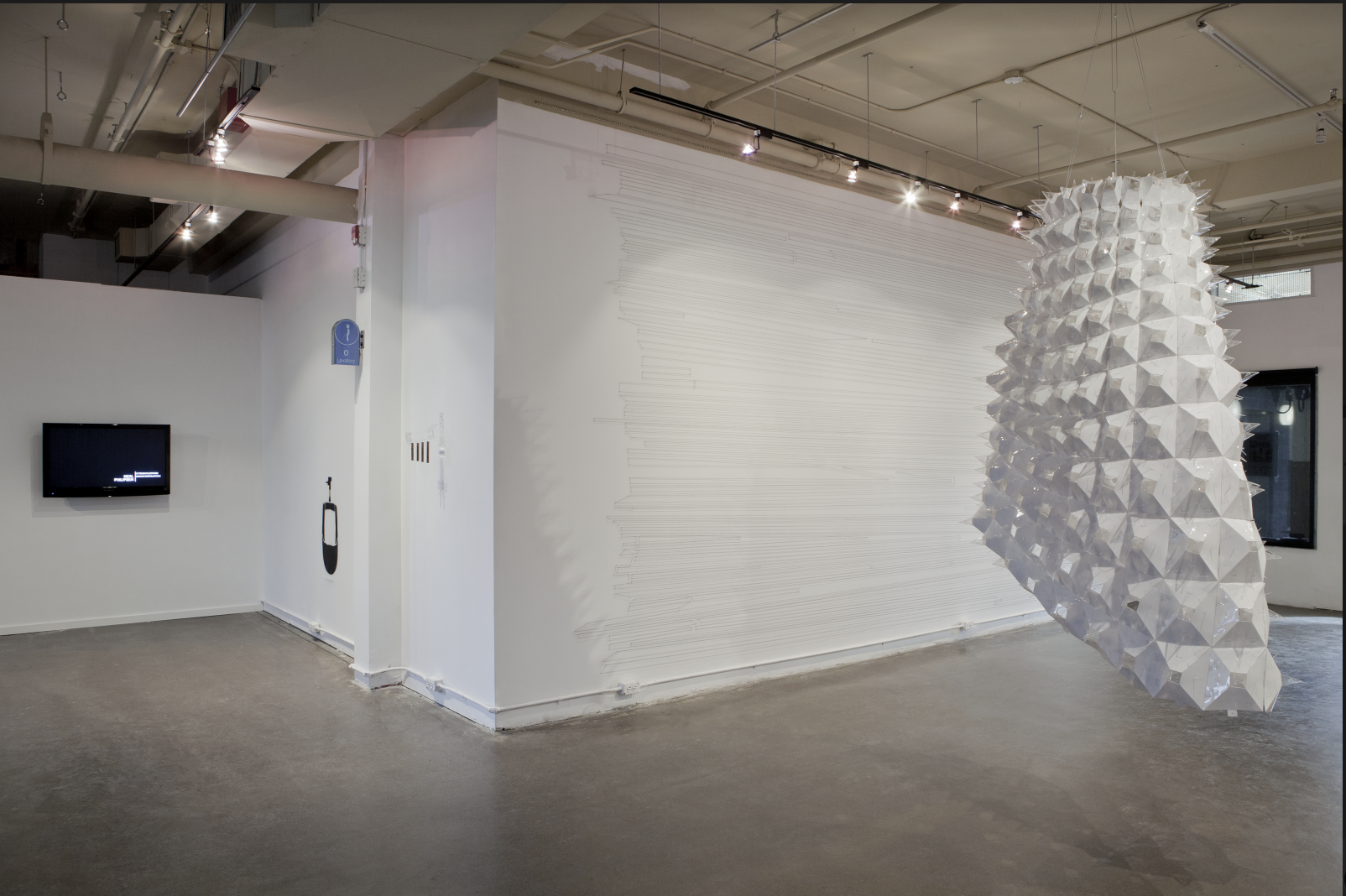

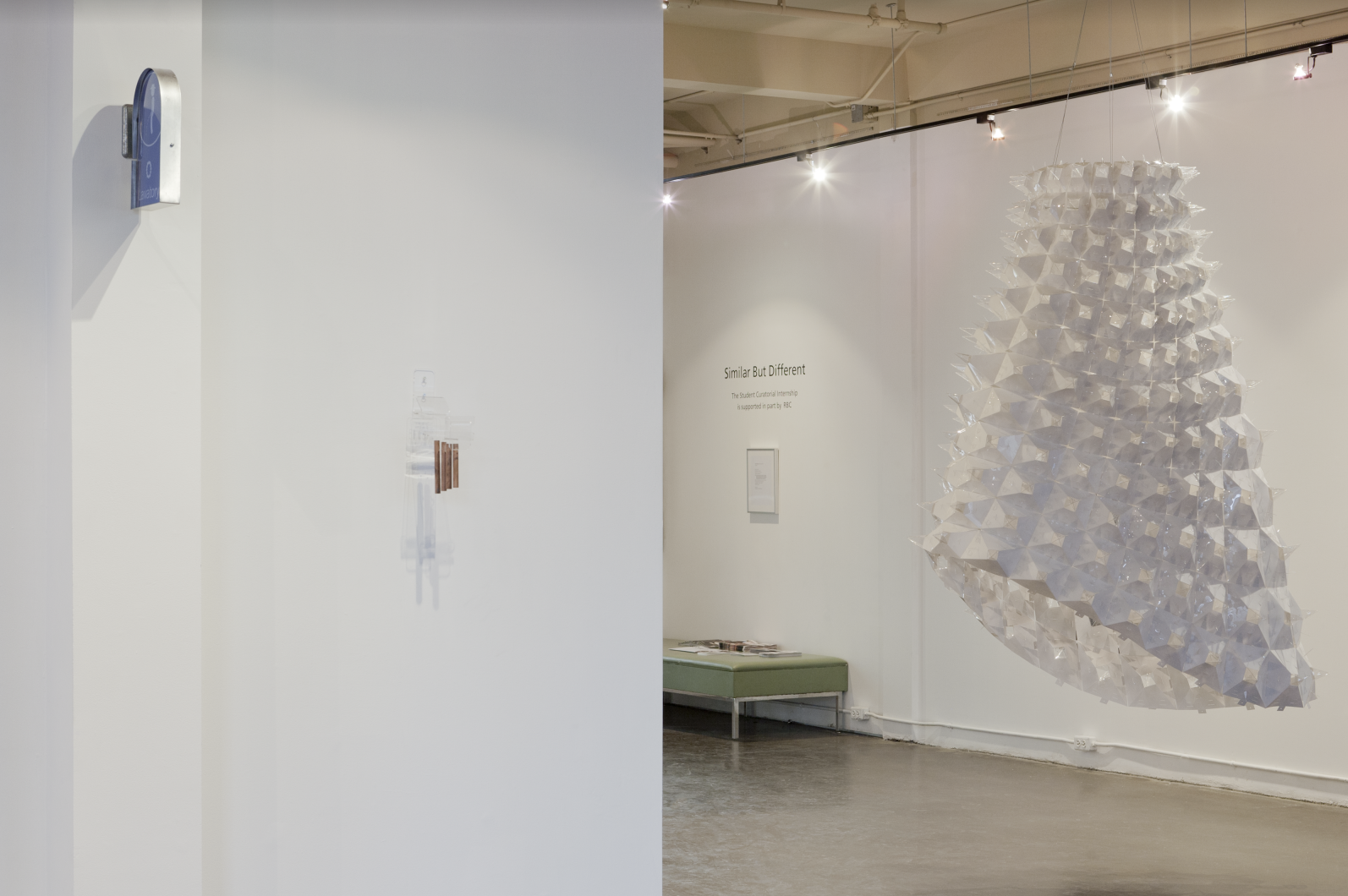
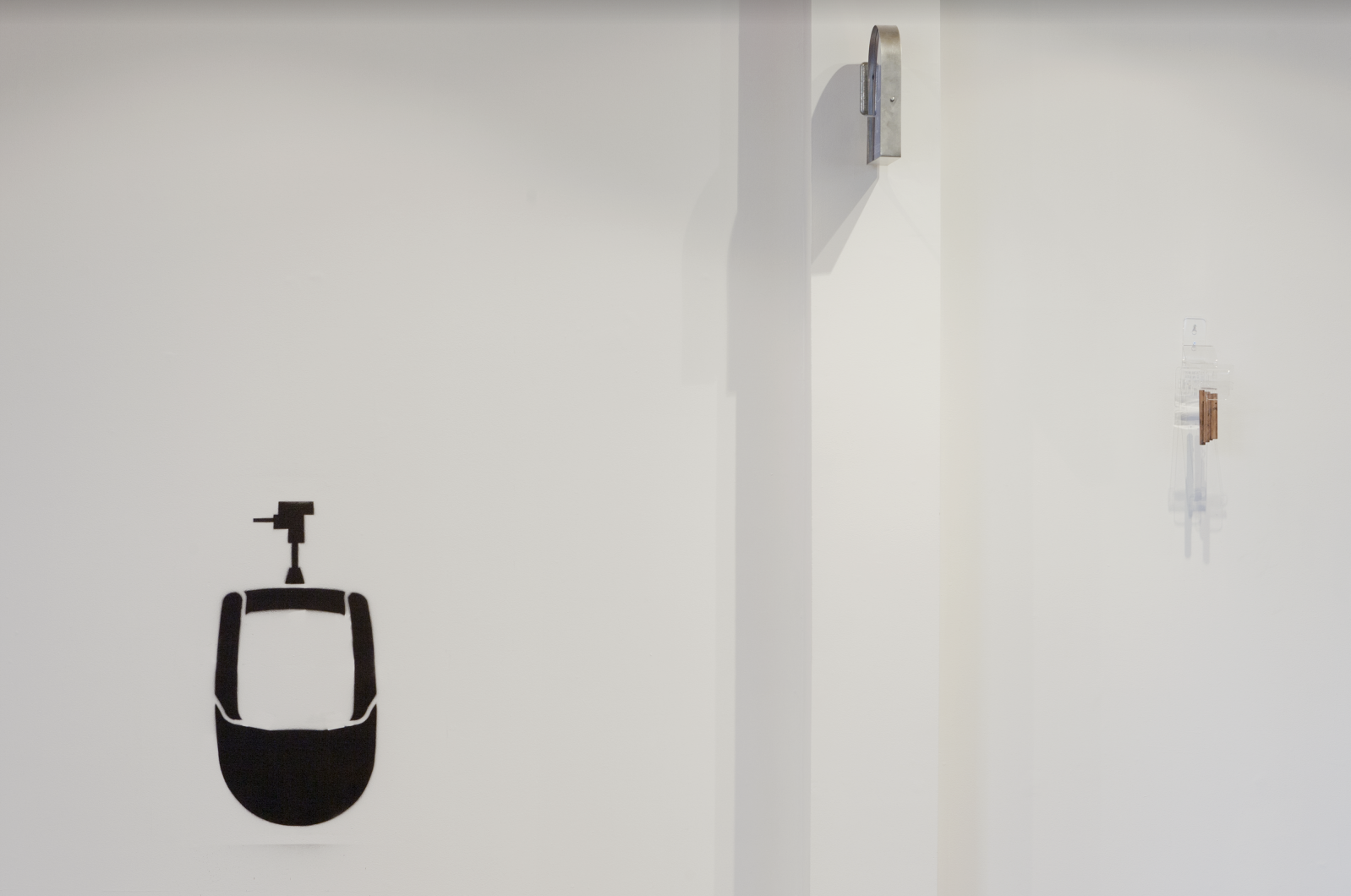

MAINSPACE EXHIBITION /

The Screen
Marie-Andrée Houde
October 11 to November 2, 2013
In The Screen, the cinematic canvas is presented as a fantasized surface. Its materiality is emphasized, reflecting upon the cultural desires of cinematic representation. Marie-Andrée Houde considers the screen unmediated by fiction, returning its photogenic potential so that it might become its own protagonist. One can therefore approach the remains of the canvas as what it is: a representational surface where various celebrities appear and vanish as other epic moments, symbols, and desires somehow transcend their artificiality or not.
Marie-Andrée will be giving a talk about her work as part of the Visiting Artist and Scholar Lecture Series on Friday, October 11 at 10:00 AM in the Gallery Hall at the Taylor Family Digital Library, University of Calgary.
A Certain Iconoclasm
If we tend to believe that creating is but a means for the artist to express an interior will ripe for the picking, it more often happens that the work of art stems from a trigger. The Screen by Marie-Andrée Houde is a work derived from the awe-inspiring experience the artist had when she was granted access to the Ouimetoscope [1], the very first theatre entirely devoted to motion pictures North America. The artist proposes a minimalist exhibit that takes this familiar object usually destined to erase itself in order to collect images – the screen – and she endows it with the power to provoke aesthetic contemplation.
The exhibit includes the projection of a photograph illustrating the forsaken state of the movie theatre’s main screen as the artist discovered it: punctured at its centre, drip-stained, bearing the marks of time as if it had been worn by the images projected upon it long ago. The image slowly fades into a complete monochromatic vanishing that sheds white light onto the surface which thus materializes in front of us, before gently fading back to the original picture. Interacting with this re-presentation is a series of fragments taken from the original screen itself, presented side by side in boxes, and set in such a way as to recall the gaping hole borne by the screen being projected onto the even screen. These screen snippets are actually riddled with tiny equidistant holes themselves and, as real pieces of a celebrated past, indeed represent precious relics to collect, inasmuch as they remain the silent witnesses of an important part of Montréal’s cinematographic history.
More broadly, Houde is fascinated by what she calls “the fantasy of cultural representation”, a phenomenon exacerbated by motion pictures. Movies, the powerful media that create the illusion of spatial and temporal reconstitution, have generated a sort of contemporary mythology strewn with stars offered up as models for us to draw from in the process of forming our lives and identities. They respond to and generate the common impulse of staging oneself in the limelight, of making it onto the movie screen, of responding to varied representation contexts.
The Screen forces its visitors into an iconoclastic experience. The images that are revered no longer are the cinematographic ones. Gone are the stories, the celebrities, the music, the sets. The focus is diverted from the fiction and towards the support of movie projection. As a result, the referential system is levelled out, since we are brought back to the material fixtures required for the emergence and staging of the moving image. A semiotic tension is indeed created between the removed cinematographic content and the fetishized materiality of the plane surface on which it typically is projected. Not unlike the minimalist tendency to restore the objectal value of materials linked to art, the artist here flattens the signified, that is, the cinematographic tale, onto the signifier, the projection plane. The resulting open, abstract, poetic, and materialistic relationship would surely have pleased Roland Barthes, for whom: “[…] the highest form of artistic expression is on the side of literality, i.e., ultimately of a certain algebra: all form must tend toward abstraction, which, as we know, is not at all contrary to sensuality.” [2]
– Ève Dorais
Notes
[1] Founded in 1906 in Montréal by electrician and filmmaker Léo-Ernest Ouimet, the Ouimetoscope sat on Ste-Catherine Street and the corner of Montcalm Street. A real success story for nearly twenty years, it closed in 1922. Many different administrations took over thereafter and renamed the movie house, which regained its original name in 1967 and stayed open until 1993. The premises were then abandoned for several years until a real-estate promoter capitalized on the building’s glorious past and transformed it into opulent apartments.
[2] Roland Barthes, Mythologies. Translated by Richard Howard, Edition Hill and Wang, 2012, p. 190.



Biographies
Marie-Andrée Houde lives and works in Montréal. She holds a Master’s in Visual and Media Arts from Université du Québec à Montréal in 2009. Her work explores and deconstructs the process of representation observed through popular culture. She elaborates devices that, by means of dissociation principles, reshape the archetypal codes at play within the construction of images. She has gained support from the Conseil des arts et des lettres du Québec. Since 2006, her work has been presented in various group and individual exhibits in Québec, Belgium, France, and Poland. She has also participated in a number of artist residencies.
Ève Dorais holds a Fine Arts Bachelor’s degree and a Master’s degree in Art History from the Québec University in Montréal. She works in the visual arts community as an art exhibition and catalogue coordinator, as well as an author, curator, and artist. From 2007 to 2011, she was involved in DARE-DARE, a mobile artist run centre in Montreal. In 2007, she co-curated with Aude Moreau a series performances and installations event presented in partnership with Articule and Cedex (UQAM) called 11:1/1. She also curated recent works of Françoise Sullivan (Galerie Simon Blais, 2010) and was in the curatorial team of ORANGE 2012: an arts event that functions like a living laboratory to explore issues related to art and the agri-food industry through exhibitions, interventions, and seminars showcasing works of professionals artists from Quebec, from elsewhere in Canada and abroad. She is curating a group show at SKOL in Montréal in April 2014.
MAINSPACE EXHIBITION /
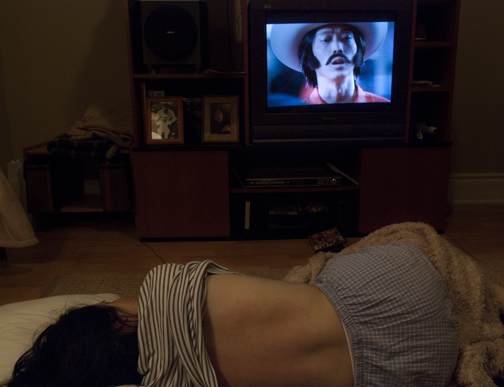
Water Torture
My Le Nguyen
November 8 to December 14, 2013
In Water Torture, My Le Nguyen looks at the barriers of geography, culture, and skin – the overwhelmingly minute things that keep us apart. Her work stems from attempts to meet with her estranged father in Vietnam and her regular visits to the country thereafter. In foreign and familiar places, on television screens or hotel rooms, she finds traces of her missing father, forgotten homeland, and unknown child. She gives us a sense of the distance, containment, and alienation that routinely define our lives – the barriers we can never truly escape.
Up All Night
Television knows no night. It is perpetual day. TV embodies our fear of the dark, of night, of the other side of things.
– Jean Baudrillard [1]
My Le Nguyen’s photographs and videos hold a disquieting sense of time. In contrast to the steady, sometimes too-quick flow of the life I experience, Nguyen’s worlds feel stuck, as though they’ve been taken outside of time. She locates moments of pause, spaces where the rhythm of daily life stagnates and only a persistent loneliness remains. Her spaces are familiar, but in a way that makes me a little uncomfortable, as though they represent a reminder of something I’d prefer to shelve away.
In these worlds, a barrier is always present. In Nguyen’s two photographic series, that barrier is the television screen, and it is omnipresent. The TV is a loaded metaphor, and an object that many of us have a complicated relationship with. We turn to televisions for comfort, for escape, for relaxation. But often, it comes with a sense of guilt, and the potential for dependency. For many, the television is a constant comfort, and that constancy is addictive. As Baudrillard implies, the television is our cultural nightlight – it’s always there to keep us distracted, if we want it.
Switch depicts a series of hotel rooms that contain only the tracings of an inhabitant: loosely placed clothing, open suitcases, various personal effects. These, along with scenes taken in austerly-lit restaurants and shops, are the underside of travelling, the quiet interludes that don’t generally get photographed. A television monitor appears in each scene, always containing a freeze-frame of a different on-screen character. I find myself trying to draw some connective thread between each setting and its accompanying TV portrait: in Binh Duong Hotel, the bifurcated face echoes the shape of the hotel wall behind the monitor; in Majestic Hotel, I imagine the screen couple walking into the hotel, as though viewed through a security camera.
My Parents is set in the living room of the artist’s mother. A television sits centre-stage: the mother’s unwavering companion. She lies in front of it in a restless state between sleeping and waking. Only one parent is visible in the room, yet Nguyen’s plural usage points to an absence. And so we come to associate the men who sequentially appear in the television screen as surrogate fathers. These surrogates are obviously inadequate, serving to underscore a sense of loss, and suggesting the root cause of the woman’s continual listlessness before the screen.
A different kind of barrier exists in Nguyen’s video, Water Torture. Here, an arch of skin marks the place of division between the exterior and interior of a pregnant woman’s body. Subtle movements that indicate both the woman’s breath and the movement of a fetus push the skin outward. The quiet, contemplative rhythm of water dropping on skin seems at odds with the emotionally fraught title. The disjunction between the two lends a sense of unease to the scene. “Water torture” is a loaded term; perhaps it speaks to the unfamiliar sensations of the fetus living under the skin, the strangeness of pregnancy, and the ultimate responsibility of giving birth and raising another human being.
Ultimately, a sense of disconnection pervades Nguyen’s work: between mother and child, between a mother and an absent father, and between the traveller and their environment. Despite our expectations for continual companionship, her work points to the isolation and loneliness that we can never entirely escape.
– Shannon Anderson
Note
[1] Jean Baudrillard, Cool Memories, trans. Chris Turner (New York: Verso, 1990), 169.
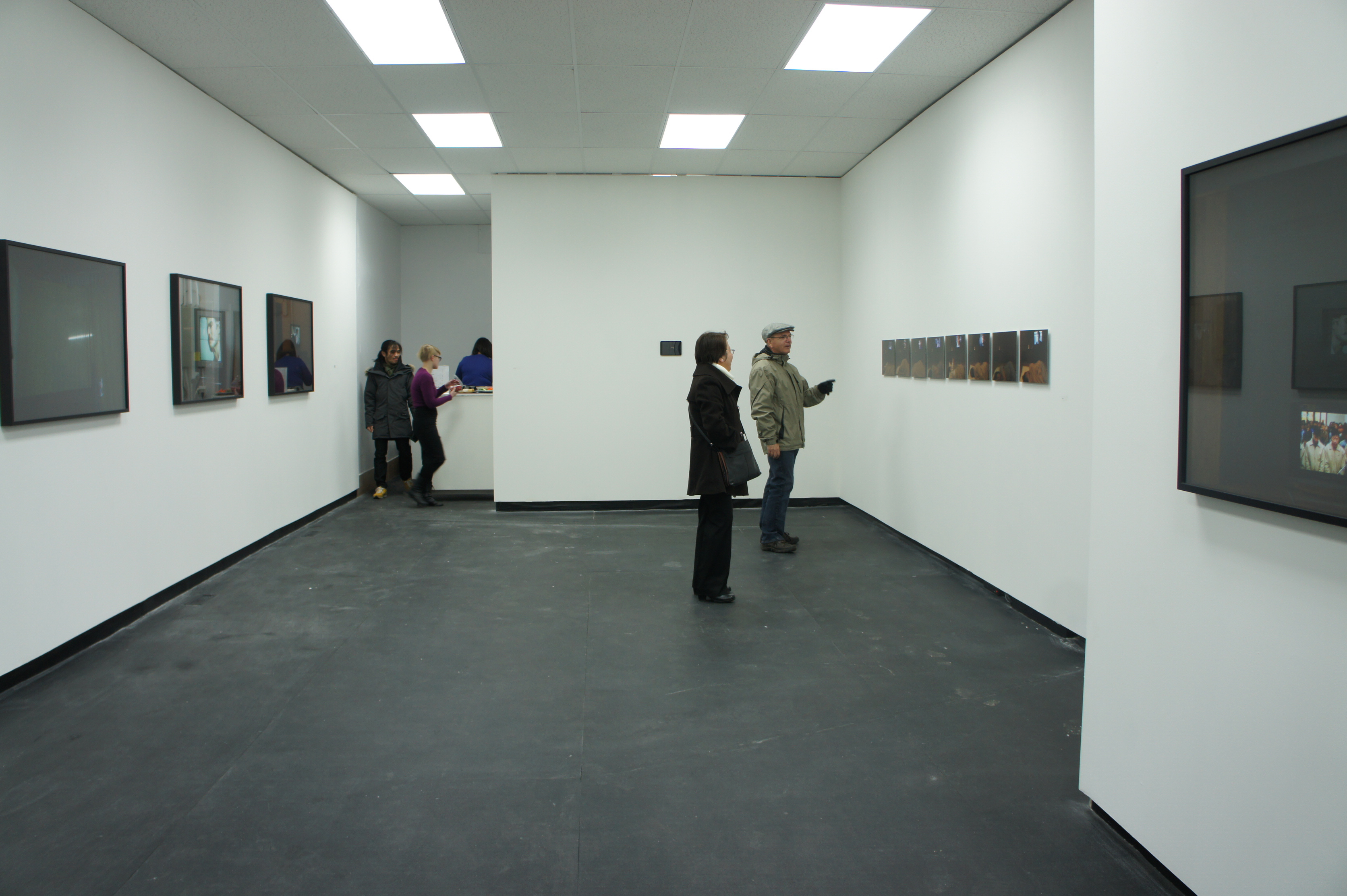
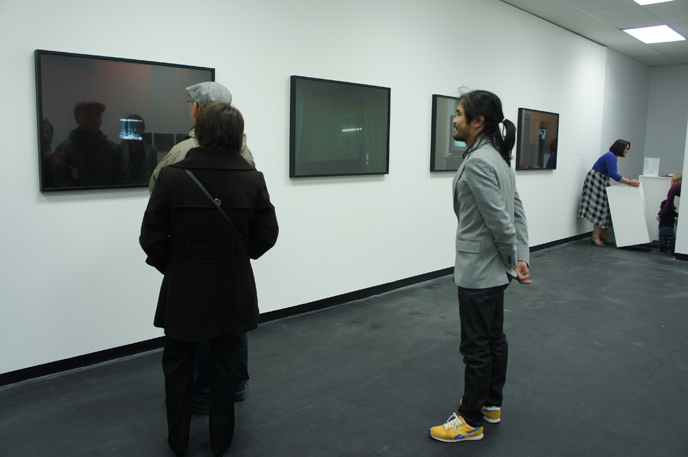
Biographies
My Le Nguyen was born in Danang, Vietnam. At age 9, she moved to Toronto.
Shannon Anderson is an independent writer, curator and editor based in Oakville, Ontario. She has contributed essays to publications produced by the Art Gallery of Southwestern Manitoba, the Koffler Gallery, Oakville Galleries, Stride Gallery, the Textile Museum of Canada and the Varley Art Gallery of Markham, and her writing has appeared in such magazines as Art Papers, Azure, C Magazine, Canadian Art, DesignLines, and EyeMazing Amsterdam.

Insignificance
JD Mersault
+15 Window Exhibition
October 1 to November 30, 2013
At the base of a monument, there is a detailed constellation map carved into the stone. The map shows the exact location of the star Alcyone in the September sky. Thousands of years from now, future viewers of the monument will be able to see the same sky, and the same stars, as the builders saw on the day it was completed, and the cosmic pith of the moment can finally be understood.
The monument is massive and beautiful, and everything about the place seems to demand the acknowledgment of a tremendous epiphany – that is, that objects wrought by human hands, once ideas in human minds, can become eternal.
As I stood underneath the monument the obvious truth broke upon me: nothing I would ever do would amount to anything. No star would shine forever in my night sky. My monuments would be made of sand rather than stone, and my name would be carved into water, only to evaporate. And yet I was calmed in a vast and imperceptible way. I had the singular feeling, alone in the shadow of this towering, terrible edifice of meaning and certainty, that my insignificance offered me something unequaled in value: A way to elude the otherwise inescapable hell of eternity.
JD Mersault is a writer from Canada. He laughs so loudly in the theatre that he is often asked to leave.
Listen to JD speak about his installation on CKUA Radio’s ArtBeat program.
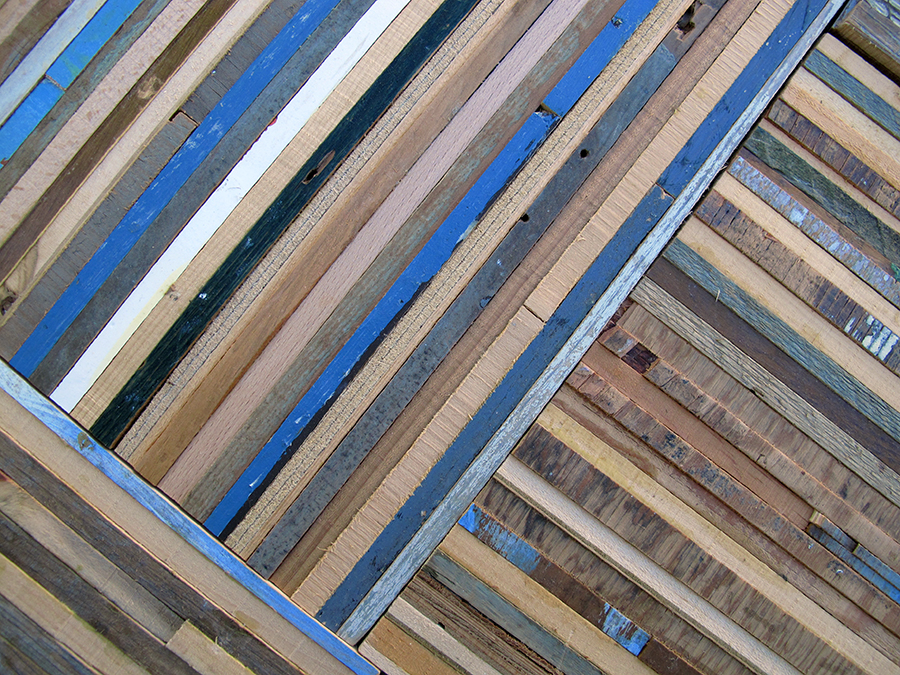
The New Gallery has partnered with the Calgary Public Library to implement a special residency program. Beginning in the fall of 2013, this collaboration encourages social practices and public engagement. Lea Bucknell, the inaugural artist-in-residence, will be building a wooden structure, Graphite Mountain, at the Library’s Central Branch (616 Macleod Trail SE) to act as a place for public gathering and a venue for cartographic and drawing-based workshops.
Both poetic and playful, Graphite Mountain resembles an idealized mountain form and provides a unique and unexpected experience for library-goers. Clad in old wooden fence boards that have been cut and arranged to mimic mountain stratigraphy, the structure’s interior cavity becomes a studio for the artist during her residency. A curiosity in the library, this mountain environment collapses notions of picturesque landscapes and retreat spaces into one stand-alone structure.
Lea Bucknell is a multidisciplinary artist with a history of showing in unconventional exhibition spaces and creating site-specific projects. Quick-witted and keen-eyed, her artwork often blends observation with playful and inquisitive commentary.
Lea studied sculpture and geography at Thompson Rivers University and graduated in 2008. She received her Master of Fine Arts degree from the University of Western Ontario in 2011 with scholarships from the Social Sciences and Humanities Research Council and an Ontario Graduate Scholarship.
She has participated in multiple community-based art projects such as Wreck City: An Epilogue for 809, the Storefront Residencies for Social Innovation and Homework with Broken City Lab; and Forest City Garden Project with the McIntosh Gallery. She has also received fellowships to participate in residencies at the Banff Centre, the Vermont Studio Centre, and Pilchuck Glass School, among others. In addition to her work with The New Gallery and the Calgary Public Library, Lea is also participating in exhibitions in Seattle, WA this fall.


Events and workshops
Residency kick-off reception
Please join us in welcoming Lea Bucknell as the Central Library’s inaugural artist-in-residence. Presented as part of Intersite Visual Arts Festival.
Saturday, September 28 from 7:00 to 9:00 PM.
Arts Club: Discover Drawing
Join others as you experiment with various drawing techniques.
Saturday, October 5 from 10:30 AM to 12:30 PM.
On the Map
Explore the streets and myths of Calgary and learn how maps and cartography can tell a story, real or imagined.
Wednesday, October 9 and 23 from 6:00 to 7:30 PM.
Dioramas: Creating Place
Join Lea Bucknell in creating a diorama of your favourite place. Like miniature stage sets, these three-dimensional scene creations can be real or fictional.
Sunday, October 20 from 12:30 to 4:00 PM.
Artist’s talk
Hear from Calgary Public Library’s first Artist-in-Residence, Lea Bucknell, about her artistic practice and previous projects.
Friday, October 25 from 12:00 to 1:00 PM.
Saturday Drawing Club
Unleash your inner artist at this drop-in drawing club open to all ages and skill levels.
Saturdays, October 19, 26, and November 2 from 1:00 to 4:00 PM.

Jon Langford
June 22 to July 28, 2012
The New Gallery (TNG) is pleased to present an exhibition of new work by internationally renowned, multi-disciplinary artist Jon Langford.
Langford’s unique visual style is somewhat familiar to Calgarians already, as it was central to the print promotional campaigns of both the 2009 and 2010 Calgary Folk Music Festivals. Jon Langford will be performing with his band Skull Orchard at the 2012 Calgary Folk Music Festival in July. For additional information please visitcalgaryfolkfest.com
Bio
Jon Langford was born in Newport, Wales, and has been based in Chicago since 1992. He is best known as a founding member of legendary British rock band the Mekons, who he continues to perform and record with after 35 years together. He is also a member of Skull Orchard, Waco Brothers, and The Three Johns. Nashville Radio, published in 2006 was Langford's first collection of paintings, writing, and music. Its recent successor, Skull Orchard Revisited (2010), is an intimate portrait of the South Wales he grew up in and left.
jonlangford.de
Essay
Jon Langford opens Nashville Radio, his first published collection of art, words and music, with a rhetorical question: “So what was the big difference between a song and a painting, or even a gig and an art show? . . . maybe a painting could be like a song? Maybe there is no difference.” It’s proved to be a fertile line of questioning and continues to infuse Langford’s creative processes as both professional musician and visual artist.
Widely recognized for his role in the indefatigable punk band the Mekons since it’s origin in 1977 at art school in Leeds, UK, Langford’s reputation as a painter/printmaker has developed more recently. For many years after leaving art school he didn’t paint at all, saying simply that: “A painter needs a subject and for a long time I didn’t have one.” The inspiration to start up again came to him quite suddenly at Tootsie’s Orchid Lounge in Memphis, Tennessee, in 1988.
Tootsie’s is an old beer joint across the alley from the old Ryman Auditorium, where many country musicians would come over to drink between their sets at the original Grand Ole Opry. It’s worth quoting Langford’s epiphany there at length: “Every inch of Tootsie’s walls is covered with old publicity photos . . . rabbits frozen in history’s headlights, signing their contracts and signing away their souls, used up, spat out, and finally forgotten like the waste products of any other industry or theatre of war. As you stand and stare, trying to take it all in, blind optimism and hopeless nostalgia race in opposite directions like freight trains.” The die was cast.
Opportunities to experience Jon Langford’s work in person remain fairly rare, at least outside of his hometown and Austin, TX, where he is represented at the Yard Dog Gallery. His art has gradually become more widely recognized in lithographed mass reproduction, through the cover art he does for his own supplementary musical projects, other indie bands and worthy causes he supports such as the Illinois Coalition Against The Death Penalty.
The suite of mixed-media prints which premieres at TNG this summer is a retrospective survey of many of the significant motifs and characters that have populated Langford’s potent visual art for the past twenty-five years. Skeletal guitarists, blindfolded cowboys, and the omnipresent eye of Hank Williams are all here; the sullied and scratched up depictions of western heroes that initially kick started Langford’s studio practice. Also included are symbolic reminders of his own history, growing up in the deeply permeated seafaring culture of the coast of South Wales – the stuff of sailor’s nightmares in the form of giant whales and other monsters of the deep. In homage to the artist’s preferred musical format, each print in this series is presented in the form of a 7” square, mimicking the cover layout of a 45 rpm vinyl single.
- Tim Westbury, 2012
Tim Westbury is an artist and musician. He holds an Honors degree in Cultural Studies from Trent University and graduated from the Alberta College of Art + Design in 1989. He worked in a broad range of capacities in Media and Visual Arts at the Banff Centre for the Arts from 1991 to 1996, including the role of Assistant Curator of the Walter Phillips Gallery. He has served as Programming Director at The New Gallery in Calgary since 2008.
MAINSPACE EXHIBITION /

Pioneers
Jaynus O’Donnell
November 16 to December 15, 2012
Pioneers is a new collection of work from Montreal artist Jaynus O’Donnell. Her practice uses collage, painting, and installation to examine representations of science and nature in visual culture. She regularly works with found paper materials including textbooks, field guides, posters, maps, and encyclopedias.
Artist Statement
In my practice I use a variety of mediums including collage, painting and installation to look at the language of visual culture objects. Much of my process involves collection, research and reflection on personal experience. The objects that I use most often in my practice are illustrated and photographic books and magazines, although I also take inspiration from films, architecture and games. My concern is with how these items share knowledge and shape identities and ideological structures. I am increasingly interested in imperialistic depictions of science, travel, tourism and landscape in Canadian cultural objects.
Essay
Traversing mysterious landscapes, we are pioneers navigating the imagined worlds of Jaynus O’Donnell’s collage works. These landscapes are playful, textural, ethereal, and sinister by turns, disrupting the viewer’s sense of scale and creating a series of indeterminate spaces.
Drawing source material from illustrated science texts, encyclopedias, technical manuals, and magazines, O’Donnell’s collages question the meaning of discovery in the post space age, reacting to and gently satirizing the naiveté and wonder of an earlier era of self-assured scientific and technical innovation and exploration. In place of the serious-mindedness of the original sources, O’Donnell gives us a giant jelly salad full of precious gems, an alchemist’s cloud machine floating in a watercolour sky, and a series of unidentifiable landscape formations. This reconfiguration through collage disrupts the triumphalist narratives about the “pioneering” technological and scientific breakthroughs that are presented in didactic and instructional publications. It also challenges the inevitability of official knowledge, suggesting-as the alchemist would-that everything that is assembled can be reassembled to constitute an entirely new form.
O’Donnell’s landscapes are reminiscent of a world that is increasingly experienced less as a whole physical environment and more as a discontinuous array of information. Exemplified by her series of Rocks, these formations, created from a range of disparate elements, are a reminder that objects (like knowledges) considered whole are in fact made up. Solid rocks are shown to be composed of assorted materials, while elsewhere a lanky walking figure is constructed entirely of bones, reminding us that even the human body is an assemblage of parts.
This indeterminacy is at the level of interpretation as well. Playing with scale and the scientific preoccupations of her source materials, O’Donnell’s Rocks can alternately be read as close-up mineralogical specimens or as the far-away geographies of unidentified planets. Are we looking through a microscope or a telescope? And on closer inspection one wonders if the various elements of these formations are really distinct at all. Alongside the ominous Storms, perhaps these formations illustrate multiple perspectives on the same surface, revealing changes in colour, texture, and luminosity, for example under various weather conditions or types of light.
O’Donnell’s interventions into her source material mirror the disruptive acts of previous readers, which she displays alongside her collages, pointing once again to the indeterminacy of knowledge and interpretation. These personalized intrusions, hand drawn beards and penises among them, undermine the original intentions of the publications. By including them here, they also challenge a narrative that might suggest the artist alone has the capacity to reimagine the radical possibilities of these materials. O’Donnell is aware that alchemy is inexact, and that the combinations she proposes are not the only possibilities available. She suggests new patterns of discovery, but ultimately each viewer is a pioneer, charting their own path through the detritus of the age of exploration.
– Sara Spike
Biographies
Jaynus O’Donnell received her BFA from the University of British Columbia and her MA from Concordia University. She has lived and worked in Montréal for the past seven years. Her work has been shown in artist-run centres and galleries throughout Canada and the U.S. Her most recent solo project, Landed, was part of the Burnaby Art Gallery’s outreach exhibition series.
Sara Spike is a PhD Candidate in History at Carleton University. Her work focuses on histories of vision and visual culture in Canada. She has published on both contemporary and historical photography.

Chogak Jogak
Diana Un-Jin Cho
April 01 to May 31, 2012
Chogak Jogak is comprised of two-dimensional paper collages and embroidery inspired by the traditional Korean textile known as Jogakbo.
Bio
Diana Un-Jin Cho is a fibre/textile artist based in Calgary, AB. She received her BFA with distinction in fibre from the Alberta College of Art + Design and her art has since been exhibited in solo and juried group exhibitions in Alberta, as well as in Toronto, New York and Rhode Island. Diana Un-Jin's work is defined as a visual reconciliation of the dramatically different aesthetics of Korea and Canada. Her recent artwork focuses on hues and patterns inspired by fourteenth century Jogakbo quilting in Korea. She enjoys the interplay of color, pattern, and texture and strives to create a visual energy within each piece. Her work is included in public and private collections, including the Alberta Foundation for the Arts and The City of Calgary Civic Art Collection
Essay
My visual endeavors are concerned with cultural identity, along with pattern and texture making. This +15 exhibition consists of a series of paper collages and small embroideries inspired by Jogakbo (also known as Chogakbo) designs. Jogakbo is a form of Korean patchwork originating from the 14th century when Korean women used up their scraps of silk, cotton, or linen from making hanbok (Korean traditional clothing) to make blankets and multipurpose covers. Jogakbo was made by sewing remnants of small pieces of cloth together with a multitude of crossing lines not unlike quilting in North America. It is a humble object used by common people in Korea for over 200 years but each design is unique and timeless.
As a Korean Canadian, I became particularly interested in the beauty of Jogakbo and began to create a series of work in 2007. It involves experimenting with brightly colored cotton and silk threads and hand-made mulberry papers imported from Korea. For every piece, my focus is on reinterpreting jogakbo designs and incorporating my colour aesthetics. I am also interested in creating a labyrinth of repeated geometric shapes and patterns to create the effect of an optical illusion. In my recent pieces I have integrated white mulberry papers with Hangul (native alphabet of the Korean language) printed on it to further emphasize the beauty of the Korean heritage and language. Each piece is an assemblage of patterns and colours inducing memory and cultural identity.
- Diana Un-Jin Cho, 2012
MAINSPACE EXHIBITION /
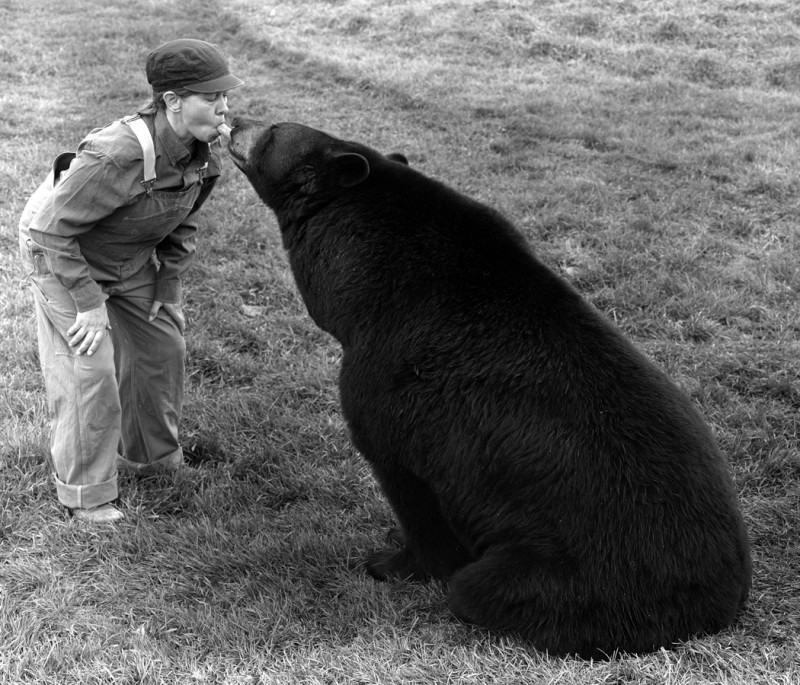
The Shoe Collection of Hortense Muriel Walker & The Other
Kay Burns
October 12 to November 10, 2012
Kay Burns is a multidisciplinary artist based in Newfoundland. She is involved in the creation of performance art, photography, locative media, audio, video, and installation. Her art work has been presented at venues internationally including New York, Reykjavik, Amsterdam, Belfast, and Los Angeles; as well as at numerous galleries and festivals across Canada from Dawson City, Yukon to St. John’s, Newfoundland. She was a curator for 5 years at the Muttart Public Art Gallery in Calgary, and she taught for 10 years through the University of Calgary Art Department and the Alberta College of Art and Design Media Arts Department prior to her move to Newfoundland.
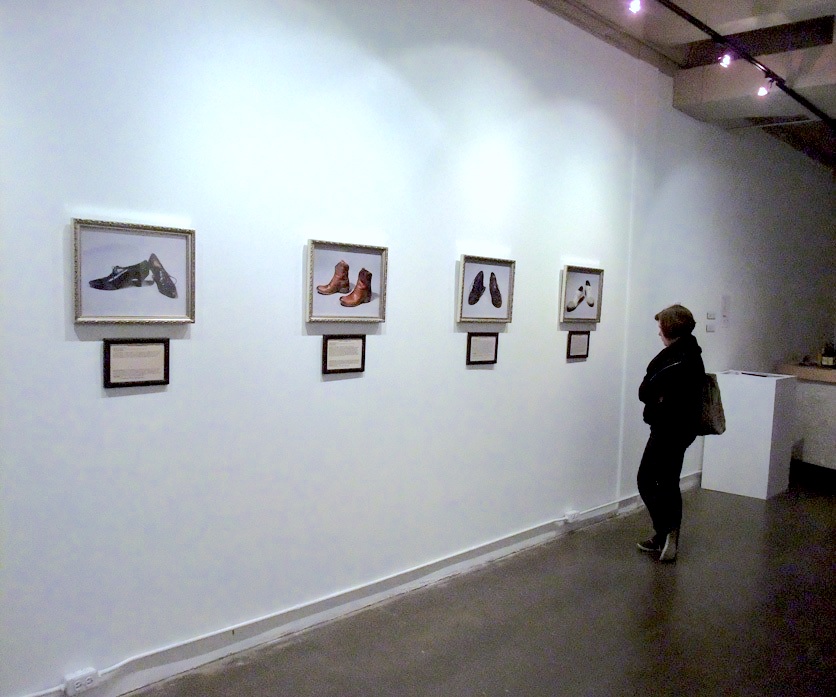

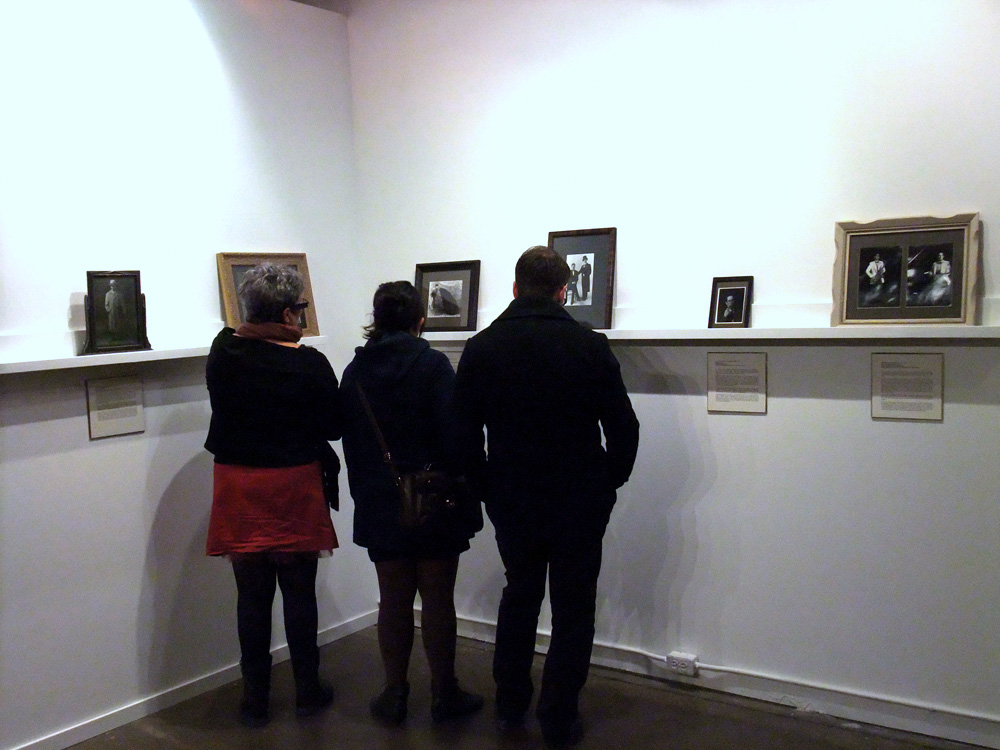
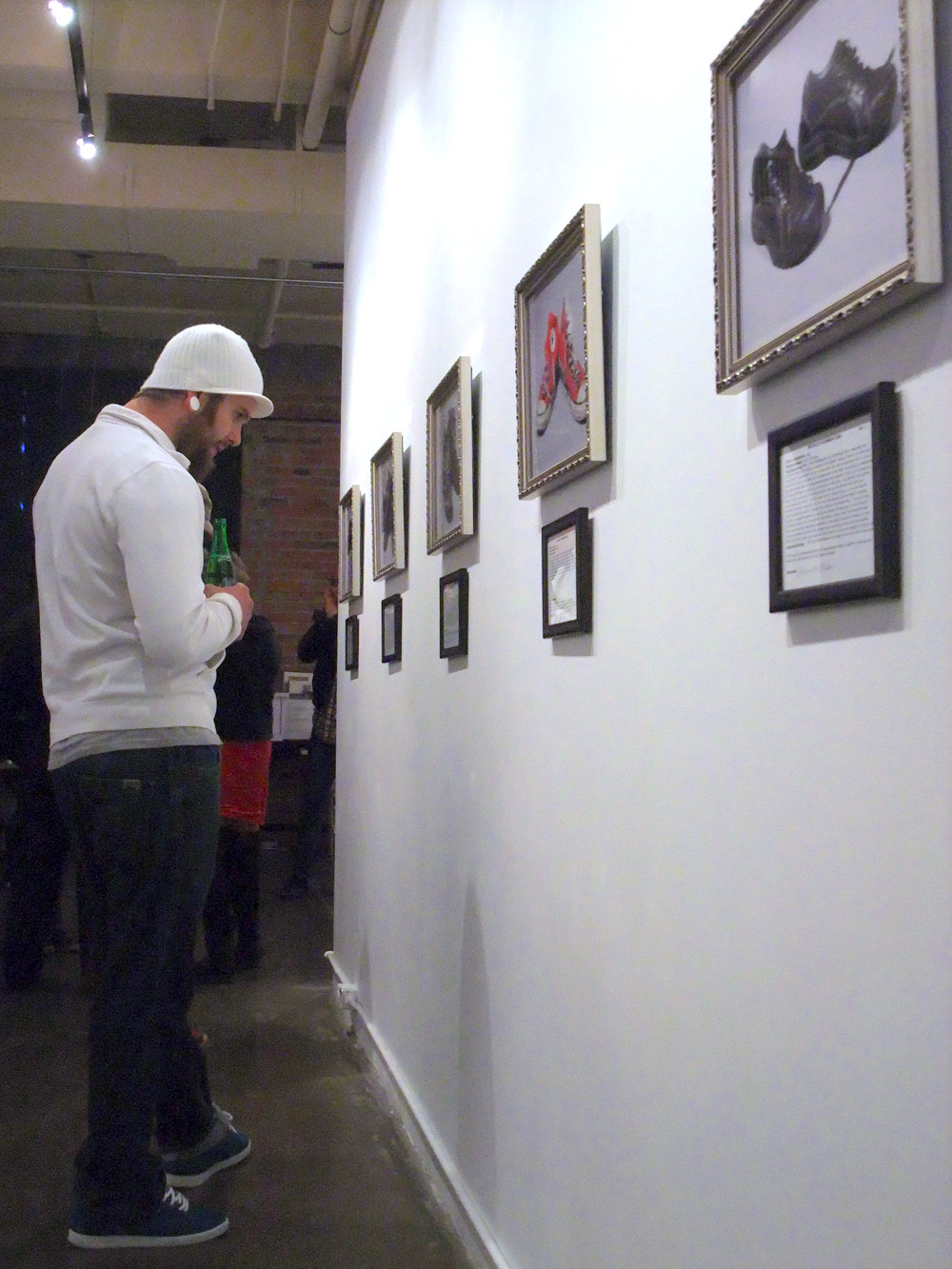
Much of my artwork, in all media, involves a somewhat elastic approach to the inclusion of fact and fiction. For several years I have explored ideas related to the creation of and enactment of alternative identities. Many of my performance art projects have been undertaken as an alternative persona, Iris Taylor, ethnographer and historian. Underpinning my performance work as Iris are questions of identity – what constitutes identity, how identity evolves, the malleability and flux of identity, and the interplay between my own identity and that of my fictional ‘other.’
Within each of the 2 photo-based installations at TNG, different concepts are explored that pertain to outsider and/or marginalized identities. The installations are presented as the collected documentation and materials of an anonymous archivist. The archivist is an ageless, nameless, genderless, timeless, institution-less, individual. Through these installations, broad questions surface regarding the impetus to collect, to archive, to annotate, to scrutinize the lives of others and to make them public in a curious way. The archivist is fictional, as are numerous aspects of the content of the installations themselves, alluding to questions of who defines the truth within museum and archival contexts.
The Shoe Collection of Hortense Muriel Walker is presented as the archivist’s collection of photos representing the de-accessioned collection of shoes with curious histories that was assembled by Hortense Walker (thus a collection of a collection).
The Other is a project that explores the notion of identities nested within identities. History offers evidence of women who lived convincingly as men for decades. In a series of performative photographic tableaux I have ‘performed’ several identities of women-performing-as-men, recorded through B&W photography. Through darkroom processes I have sought to make the photographs look old, augmented through their presentation in antique frames accompanied by the authoritative voice of the archivist within the didactic materials.
kayburns.ca/
Double Standard
“The collection is a form of art as play, a form involving the reframing of objects within a world of attention and manipulation of context.”[1]
Like the personal histories that make up the annotation cards and didactics that accompany this collection of photographs, this observation is also not definitive. Instead the focus on the doubling or pairing of images and objects constitutes a shift in thinking about both identity and subjectivity. By witnessing the enactment of these alternative and multiple identities, Kay Burns invites us into the marginalized worlds of all 32 characters [2] in this drama. We are requested to suspend our disbelief and allow each to tell their own version before we decide what is real, what is authentic, and what purpose, if any, truth may serve.
Stereography, the optical illusion of combining two into one by placing a metal instrument up to your eyes, was, revolutionary for its time, not only because it promised the sensation of depth, but also promised the experience in isolation. A private, cinematic moment in which the world was blocked out by the very machine that offered the escape. As one passionate advocate of stereography noted in 1861, “ a dream like exaltation, in which we seem to leave the body behind us and sail away into one strange scene after another, like dismembered spirits.”[3] The power of photography to evoke an out-of-body experience is one we now associate more with cinema or the immersive environments of the digital world. Leaving the body, dismembered spirits, this is also the language of death, used to describe an early understanding of photography as a magic trick of light and chemical on paper.
Ironically it is through the death of Hortense Muriel Walker that her collection of 43 pairs of shoes is released back to the world. The haunting of her legs becomes the basis of her initial need to collect, the obsession with shoes and of the action of feet and legs -walking – comes to symbolize her loss and her need to reclaim it. The value of this collection is now based on sentiment rather than content, and for us it is the abstracted double of the photograph through which we experience this.
In the case of The Other series, it is the magic of photography that we must respect, as these portraits have three double readings; first the photograph itself is a replica of the real event touched up and staged to look “real”; the second is that of female artist masquerading as historical female character masquerading as male; the third is the real life experience of the characters undoing their assigned gender, woman choosing to look, pass, and therefore live out their lives as men. Our hierarchical understanding of the original is dissolved, the copy, with nothing to measure it against, becomes the original. As Rosalind Krauss proposes “In being seen in conjunction with the original, the double destroys the pure singularity of the first. Through duplication, it opens the original to the effect of difference, of deferral, of one-thing-after-another, or within another: of multiples burgeoning within the same.” [4]
The value of these two collections is not based on empirical standards, gender, authenticity, or proof, but instead finds meaning in a series of counter positions, double meanings, and shared experiences. These photographs present a case for double temporality, where results can be, and are, fleeting and irrefutable.
– Naomi Potter
Notes
[1] Susan Stuart, On Longing (Duke University Press, Durham & London, 1993),152.
[2] These characters include; The Archivist, Hortense Muriel Walker, Dr. James Barry (Margaret Ann Bulkley), Harry Stokes (Harriet Stokes), Charley Parkhurst (Mary Charlene Parkhurst), Monroe Rickard (Mona Richards), Murray Hall (Mary Anderson), Charlie O’Leary (Charlotte O’Leary), Carlton & Ambrose Smith (Karina and Amelia Schmidt), Dr. Alan Hart (Alberta Lucille Hart), Billy Tipton (Dorothy Tipton), Richard Raymore, Clara T. Witness, Sid Hughes, Jack Horner, Ingimar Gunnarsson, Peter Hemmingway, Francis Alys, Fritz “Od” Klein, and Kay Burns (The Artist).
[3] Oliver Wendell Holmes, “Sun-Painting and Sun-Sculpture”, Atlantic Monthly VIII, July 1661, pp 14 – 15. Originally referenced by Rosalind Krauss, The Originality of the Avant-Guard and Other Modernist Myths, (MIT Press, 1991).
[4] Ibid p 90.
Naomi Potter holds a BFA from the University of British Columbia, Vancouver, and an MFA in sculpture from Concordia University, Montreal. Potter has developed curatorial, artist, and residency projects in Canada, Central and Eastern Europe. She was the curator of Walter Phillips Gallery at The Banff Centre from 2009 – 2011, and is currently the Artistic Director at the newly opened Esker Foundation in Calgary.
[1] Susan Stuart, On Longing (Duke University Press, Durham & London, 1993),152.
[2] These characters include; The Archivist, Hortense Muriel Walker, Dr. James Barry (Margaret Ann Bulkley), Harry Stokes (Harriet Stokes), Charley Parkhurst (Mary Charlene Parkhurst), Monroe Rickard (Mona Richards), Murray Hall (Mary Anderson), Charlie O’Leary (Charlotte O’Leary), Carlton & Ambrose Smith (Karina and Amelia Schmidt), Dr. Alan Hart (Alberta Lucille Hart), Billy Tipton (Dorothy Tipton), Richard Raymore, Clara T. Witness, Sid Hughes, Jack Horner, Ingimar Gunnarsson, Peter Hemmingway, Francis Alys, Fritz “Od” Klein, and Kay Burns (The Artist).
[3] Oliver Wendell Holmes, “Sun-Painting and Sun-Sculpture”, Atlantic Monthly VIII, July 1661, pp 14 – 15. Originally referenced by Rosalind Krauss, The Originality of the Avant-Guard and Other Modernist Myths, (MIT Press, 1991).
[4] Ibid p 90.
Naomi Potter holds a BFA from the University of British Columbia, Vancouver, and an MFA in sculpture from Concordia University, Montreal. Potter has developed curatorial, artist, and residency projects in Canada, Central and Eastern Europe. She was the curator of Walter Phillips Gallery at The Banff Centre from 2009 – 2011, and is currently the Artistic Director at the newly opened Esker Foundation in Calgary.
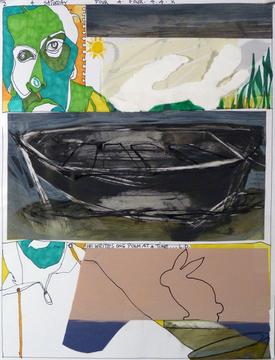
Gut'er to Bleed
Corinne Duchesne
December 03 - February 02, 2013
Gut'er & Bleed is domestic the way that crazy-quilts and home-deaths are domestic. The work developed slowly and in the dark - as if the itch on your back that you can never reach suddenly grew into a third arm.
It began simply as a doodle around a prep list for my next painting but quickly spread, engulfing my imagination like a swarm of bees. The protagonist, Dïq, is a genderless being faced with the existential question of how to communicate with its mother, who has lapsed into a coma. Dïq begins by awkwardly reading poetry to the mother's decomposing body, but soon realizes that her ears have closed and her eyes no longer see. The works then fall into a stream of consciousness, drawings and captions cataloging internal dialogue. Flat image drawings mix with pop-up pages and abandoned or reclaimed fragments while characters, symbols, and totem animals writhe or dance across the drawings, all morphing and twisting through a memoir of visual addiction and homeless, restless love.
Bio
Corinne Duchesne has exhibited across Canada and internationally in the United States, South Korea, and Europe. Recent solo exhibitions in Canada includeStories to Myself (2008), Of Angels and Demons(2009), In Memorandum (2010), and Transformation is an Ambiguous Condition (2011). Duchesne is currently engaged in the forthcoming project Reflections and Illuminations: An Ekphrastic Collaboration in Art, Music, and Poetry with composer Garrett Hope and poet Jill Johnson to be exhibited at the Berman Museum of Art, in Collegeville, PA. Currently, Duchesne is a fulltime Drawing Professor at Sheridan College School of Animation Arts and Design in the Visual and Creative Arts Program and is a recent recipient of the Ontario Arts Council Mid-Career Artist Grant. She graduated from the Ontario College of Art and Design, having studied abroad at the Off-Campus Program in Florence Italy with Tom Lapierre.

Lifespan
Jarod Charzewski
October 7 - November 12, 2011
Jarod Charzweski and a team of local volunteers will construct an immersive sculptural installation with second-hand clothing, carefully sorted, folded and then positioned to mimic the geological appearance of layers of sedimentary rock.
Jarod Charzewski was born in Winnipeg and holds a BFA from University of Manitoba and an MFA in sculpture from University of Minnesota. His work has been shown widely across North America. He is currently assistant professor at the College of Charleston in Charleston, SC. www.jarodcharzewski.com

Bio
Karen Ann Myers is an artist, educator and curator. She received an MFA in Painting from Boston University and a BFA in Studio Art from Michigan State University. She is currently serving as the Assistant Director at the Halsey Institute of Contemporary Art in Charleston, South Carolina. In addition, Myers is an active artist and her paintings and works on paper have been shown throughout the US. To learn more about Karen Ann Myers, please visit www.karenannmyers.com.
Essay
The scale, stratified layering and topography of Jarod Charzewski’s site-specific installations suggest landscape. The work illustrates the reality of consumer culture’s effect on the landscape by reconstructing a cross section of the earth made mostly of used clothes. Obtaining material is always a challenge for the artist, as it is important not to buy pieces that would inevitably lead to further consumption to make the piece. As a result, Jarod obtains the clothing by chance. It is always donated, and never altered.
Often, he obtains used clothes from local Goodwill stores, which are given on loan from the store and returned at the closing of the exhibition. The choice of used cloths as apposed to other discarded items makes his work more identifiable, as most everyone can relate to the accumulation and disposal of it.
Charzewski’s work is about consumption and the lifespan of our belongings. The bridge in his most recent installation symbolizes the way our parents lived, the gap that exists between generations and how each generation consumes differently. Today, we are full swing into a consumer culture. It’s ironic to note that as a consumer culture, we are supposed to go shopping more to save our economy.
Our discarded items are literally reforming the layers of the earth to create simulated natural environments. They are complete distortions of what natural is. The organized disposal of waste in landfills represents years of accumulation as a choreographed synthetic landscape. What would it look like if we took a graphic section of the earth? The section of the earth would unveil the items we discarded and archeologists will try to understand why we discarded layers of electronic waste, untrendy clothing and other reusable or recyclable items. Today’s consumer items are made with a shelf-life, ready to become a new layer of our earth.
Charzewski’s installations are shifting towards incorporating geometric and architectural structures into the vocabulary of forms that he regularly uses. With this development one gets the impression that the conceptual narrative in his installations is keeping pace with an active formal inquiry. The result is a cohesive statement that has the potential to include many new ideas. Variation and innovation are built into Jarods studio practice as his material change along with the site of each installation. This resourcefulness is one of the many things that is attractive about his work. Another is the unselfconscious artifice. Colorful detailed layers form structural elements, which seem to have accumulated over time. While his installations reference landscapes they are sculptures; metaphors, events.
Jarod Charzewski offers us the opportunity to reflect on our consumer culture—to see our own discarded items recorded in these new permanent layers of the earth.
- Karen Ann Myers, 2011
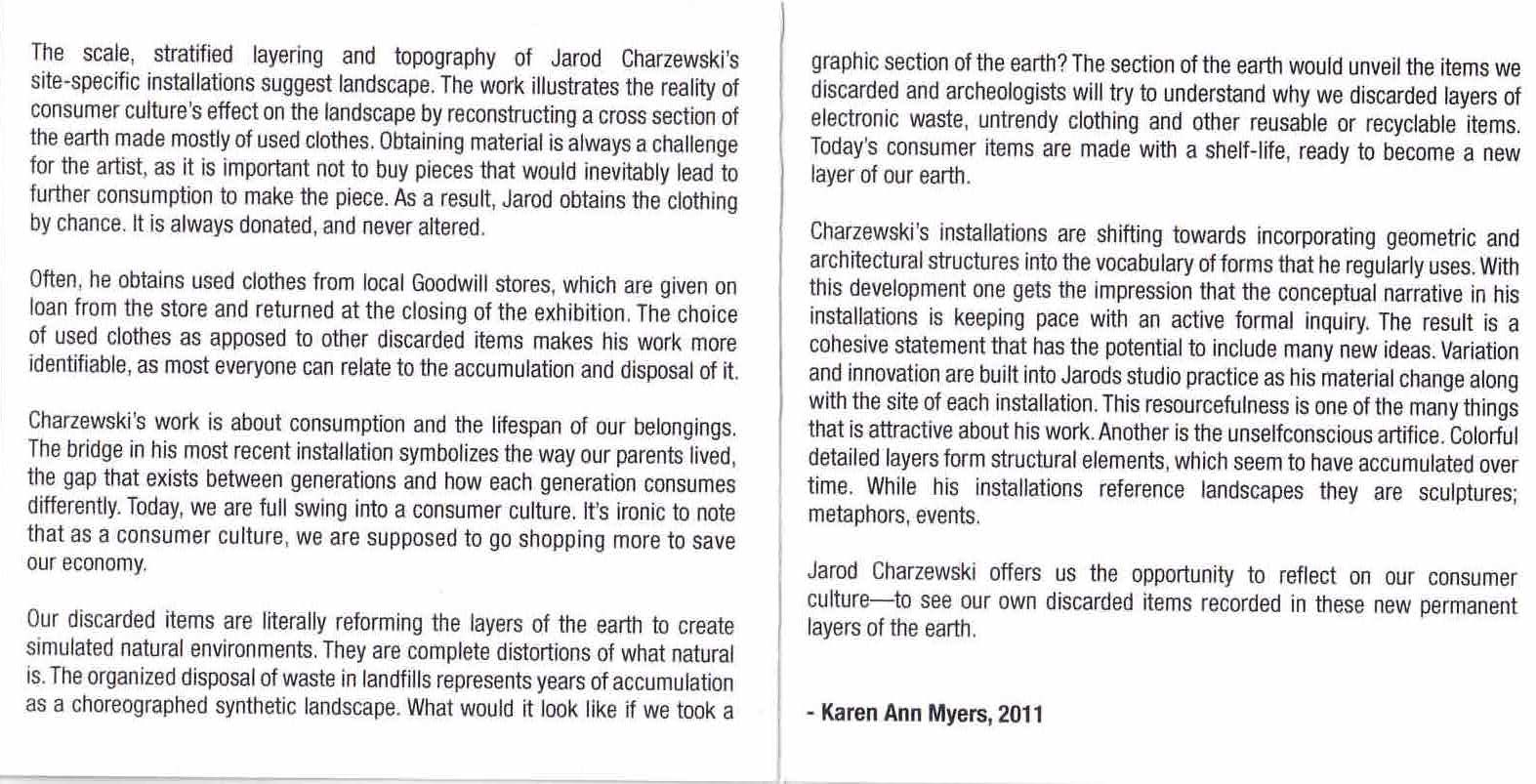
MAINSPACE EXHIBITION /

Separation Point
Sean Caulfield & Royden Mills
Mainspace Exhibition
November 18 to December 17, 2011
Following from their critically acclaimed exhibition at the Glenbow Museum in 2010, Caulfield & Mills’ latest immersive multi-media installation will continue to explore themes of mutation, metamorphosis and the biological/technological dichotomy.
The Observed Moment
In the latest installation by Sean Caulfield and Royden Mills, an implied future meets an observed past. As if in a lab experiment, the moment is suspended and movement forward or back seems possible. The scientists – or were they artists? – have disappeared; the project sits in limbo. Rich visual evidence of biological and technological processes awaits discovery.
The artists – or are they scientists? – Caulfield and Mills have partnered previously to explore the uneasy exchange between technology and humanity. Their collaborations on this theme intentionally blur boundaries and question the value of such categorizations, such ‘separations.’ Up to this point, the artists’ individual works have remained distinct, with Caulfield’s drawings and prints and Mills’ sculptural works shown side by side to express a jointly conceived idea. For Separation Point their respective two- and three-dimensional voices combine to create a drawing/sculpture hybrid. Paradoxically, the artists have collaborated more fully than ever on this inquiry into disconnection.
The exhibit title also refers to the central piece in the installation. Flowing through the work’s core is a drawing-in-progress on a long sheet of translucent film. Neatly wound at one end, the encoded expanse extends horizontally to pass through a wooden boxlike structure. A set of magnifying lenses permeates the box’s top surface, allowing detached views of otherwise hidden, microscopic marks, marks that increase in complexity as the drawing advances on its course. Exiting the box, the sheet is pulled upward over a supporting frame then spills down toward the floor. Though the structure itself is static, it manifests an unmistakable impression of process. There is a sense that a force within the work is reaching out to something that moves in us as viewers. It hints at the potential for an organic transformation inside the machinery of science.
The title Separation Point suggests a finite moment, the exact position at which such a metamorphosis might occur. The installation is full of possible instants that might be so identified, similar to how personal defining moments register amid the randomness of life experience. The artists offer us a laboratory in which to pinpoint transition.
Additional works in the exhibition might be seen as products of the ‘machine’ or human attempts to understand our changing sense of self in relation to the tangled interface of biology and technology. The installation’s multiple lenses remind us that observation is a key process uniting the fields of art and science, of nature and technology. A macroscopic perspective acknowledges that once observation takes place, both the viewer and the object of her gaze are forever changed. Separation Point embodies the optimism and apprehension of this prospect.
– Linda Hawke
Biographies
Sean Caulfield and Royden Mills have extensive independent careers exhibiting prints, drawings and sculptures nationally and internationally including: Recent Prints, Yanagisawa Gallery, Saitama, Japan; The Alberta Biennial of Contemporary Art 2002, The Edmonton Art Gallery, Edmonton/ The Nickle Arts Museum, Calgary, Alberta; The 14th Seoul Space International Print Biennial, Seoul Museum of Art, Seoul, Korea, and the Grounds for Sculpture, New York, U.S.A., among many others.
http://www.seancaulfield.ca/
http://www.roydenmills.ca/
Linda Hawke earned a BFA in art education at the Nova Scotia College of Art and Design and has applied it for close to twenty years in public museums and galleries. Her fine art writing is an extension of this work. Recent projects include Celebration of the Bow River 2010 for The City of Calgary and exhibition essays for the artist-run centres Stride and TRUCK.
MAINSPACE EXHIBITION /

White Lies
Harri de Ville
September 1 to October 1, 2011
For this exhibition, Harri and de Ville presented two of their collaborative works in the gallery’s main space. The first piece, visible up entering the gallery was Untitled #3, a piece created from Plexiglas that is lit internally and contains a projector and DVD player. Resembling a pedestal, the piece reveals itself through the faint shadow of a hand against the Plexiglas and the silhouette of a head within.
The second piece in the exhibition, No Fear, No Hope comprises an assemblage of flickering industrial lights. The pattern of the lights spells out, in Morse code, “No fear, no hope.”
The title of this exhibition refers, on one hand, to a text by the French philosopher Gaston Bachelard about the way we comprehend our environment and, on the other, to ongoing research into the re-appropriation of iconic sculptural forms representative of 1960s Minimalism.
The artists, according to exhibition essayist Zsolt Kozma, use beauty in a paradoxical manner. “Attraction is meant here as a starting point for engaging the viewer in an emotional exchange, and, subsequently, in reflection on universal questions and notions of the human condition: fear, anxiety, attraction, sensuality, identity, social context and determination, femininity, hope, the personal and the impersonal,” he says.
Essay
In a scene of chapter 2 of Huxley’s Brave New World, attracted to beauty, babies crawl happily towards roses. When they get there and reach out to touch them, and alarms go off shrieking and shrilling. The effect is similar to the uneasiness that we come to feel when we encounter the subtle beauty of Harri de Ville’s works.
The paradoxical use of beauty, or rather, a demonstration of its paradoxical nature unfolds from their ongoing experiment with the re-introduction and with the possible functions of the aesthetic in art after the conceptual age. With a visual syntax constructed of the most basic elements, such as darkness and light, shadow, the outlines of parts of a human body confined to a cuboid lit from inside, or flickering light bulbs almost touching the ground in the space of the installation, their works add up to highly complex structures of meaning.
Reduced to the level of abstraction, the elements connected by the architectural framework of the space speak strongly to the senses – their function is to attract but not to delight. Delighting would mean being content, pleased, absorbed in beauty. Attraction is meant here as a starting point for engaging the viewer in an emotional exchange, and, subsequently, in reflection on universal questions and notions of the human condition: fear, anxiety, attraction, sensuality, identity, social context and determination, femininity, hope, the personal and the impersonal.
In No Fear No Hope, the flickering of the lights seems irregular and senseless, but in fact, it is an explicit message in Morse code (no fear, no hope). However, decoding the message brings no ease, understanding the meaning does not eliminate the anxiety, and brings no relief.
While remaining a symbol inviting a wide circle of possible associations all along, a hand tapping the walls of the cuboid from inside (Untitled #3), with the light also coming from inside, gradually becomes a synecdoche of the self limited by the rigid boundaries of the body (plexiglas cuboid with sharp, rectangular edges), and then, reinforced by the appearance of the outlines of the female head, the synecdoche of the female (the sharp and cold edges contrasted to the soft lines of the hand and head), also tied to the constraints of the body. From outside, in interaction with the world, the body is the outward appearance, the direct connection of the individual to the world, and the object of gaze. Identity is defined in the long process of this dialogue.
Harri de Ville, the initiator of this dialogue is also an abstraction (a very concrete one, at that) – an identity that came to be from the meeting of two artists in 2005. Impersonal through the elimination of certain individual qualities and limits, and highly personal because of the significance of the questions explored through this artistic entity, Harry de Ville demonstrates how entity evolves into an identity. Liberated from the constraints of the body and the private individual, the existence of Harri de Ville directs attention to these very constraints. At the same time, freed from these constraints, the issues raised can be explored with less individual bias, and the artist here is ultimately identified by the work itself. Personal in the impersonal – the timeless essence of art in a perfectly 21st century manifestation. This is what Harri de Ville does – and so, this is what Harri de Ville is.
– Zsolt Kozma
Biographies
Harri de Ville is a duo project formed in 2005 by Sabrina Inkeri Harri (Finland) and Alexia de Ville de Goyet (Belgium). The project was initially based on VJing experimentations and video performances that took place at festivals across Europe. In 2009, their work extended to objects and installations, defining an interdisciplinary language in which abstraction and narrative elements merge. Since then, they have been extensively exhibiting together under the name Harri de Ville, conducing the project in parallel with their solo careers.
Sabrina Inkeri Harri studied Fine Arts at La Villa Arson in Nice, France and at Geneva’s University of Art and Design in Switzerland. Alexia de Ville de Goyet studied Fine Arts at the ERG in Brussels, Belgium and at Central Saint Martins in London, UK.
harrideville.blogspot.com
Zsolt Kozma is a critic and curator with Videospace Gallery, an international media art centre located in Budapest, Hungary (www.videospace.hu). He has been publishing essays, reviews, articles and translations of theory on contemporary arts since 1997. He currently divides his time between Brussels, Belgium and Budapest.
This exhibition was written about in FFWD Weekly.

Labyrinth of the Eternal Archetype
Shyra De Souza
October 01 to November 27 2011
Local artist Shyra De Souza’s +15 installation will combine a large number of found decorative elements with ornate classical form into a symmetrical structure reminiscent of a baroque altarpiece.
"Old canons collapse and continually fold into themselves like a fractal that repeatedly feeds the remainder back into the equation, with their forms repeatedly reinterpreted; context has become content. Objects of status often rely on forms related to a system of classical rationality, but leave us without personal meaning. Mysticism and pseudo-science fills the space where knowledge ends and the personal begins, creating a space that is both intimate and impersonal. Exploring the symbolic and emotional connections between people and objects, I wish to present an open-ended narrative where sensual and rational experience intersects. This work embodies the utopic melancholy induced by the continual disconnection between form and meaning." - Shyra De Souza, 2011
Bio
Shyra De Souza is an interdisciplinary artist based in Calgary. She attended the Sculpture department at the Alberta College of Art & Design where she earned her Bachelor’s Degree in Fine Arts with distinction in 2006. As well as maintaining an artistic studio practice she holds the position of President at the Untitled Art Society in Calgary and is a founding member of the Media and Visual Arts Housing Association of Calgary. She was awarded the 2009/2010 Quickdraw Animation Society Production Scholarship (Calgary) during which she developed an experimental animated film, and has exhibited her work in Canada and the United States.

karen elaine spencer
Artist Residency
August 3 to September 12, 2011
Performance on September 11
karen elaine spencer obtained her BFA from NSCAD in 1986 and an MFA from Université du Québec à Montréal in 2001. Her work questions the hierarchy inherent in use values and investigates how we, as transient beings, occupy the world we live in. The widely held belief in a linear movement forward, or “progress”, is confronted through her repetition of actions that lead nowhere. Rambling, dreaming, loitering and riding the metro are all activities spencer has previously undertaken as part of her practice. Actions are sustained over time (often a year or more) rendering her artistic practice indistinguishable from her daily life. She works with what is near at hand, materials that speak of our day-to-day existence: cardboard, oranges, bread, chalk. Through a détournement of materials or intentions spencer intervenes into spaces; hoping to shift, even if only ever so slightly, our perceptions of what is possible. http://likewritingwithwater.wordpress.com
Video: http://vimeo.com/28966372 This video is a document of karen’s spoken word piece entitled Home Less, performed in front of a small crowd at John Snow House, where she was in residence from August 3 to September 12. Introduction by John Snow House Director, Shara Rosko.
The larger event was a combined book launch for karen’s porteur de rêves / dream listener book, published by Sagamie, and for MST 5, a publication celebrating the 5th incarnation of Mountain Standard Time Performative Art Festival in 2010 as well as highlighting the rich roots of performative art in Calgary. mstfestival.org/
Bio
karen elaine spencer is an artist who maintains a studio practice, performs, curates and writes. Her work questions the hierarchy inherent in use values and investigates how we, as transient beings, occupy the world we live in. The belief in a linear movement forward, or progress, is confronted through the repetition of an action that leads nowhere. rambling, dreaming, loitering and riding the metro are all activities karen has undertaken as part of her practice. An action is sustained over time (often a year) enabling a process whereby karen’s artistic practice is indistinguishable from her daily life. She works with what is near at hand, materials that speak of our day-to-day existence: cardboard, oranges, bread, chalk. through a détournement of materials or intentions, karen intervenes into spaces; hoping to shift, ever so slightly, perceptions of what is possible. likewritingwithwater.wordpress.com
karen wishes to acknowledge the support of the Conseil des arts et des lettres du Québec who have made her TNG residency possible.

Whodunnit Holiday Tree Show
December 16 - 17, 2010

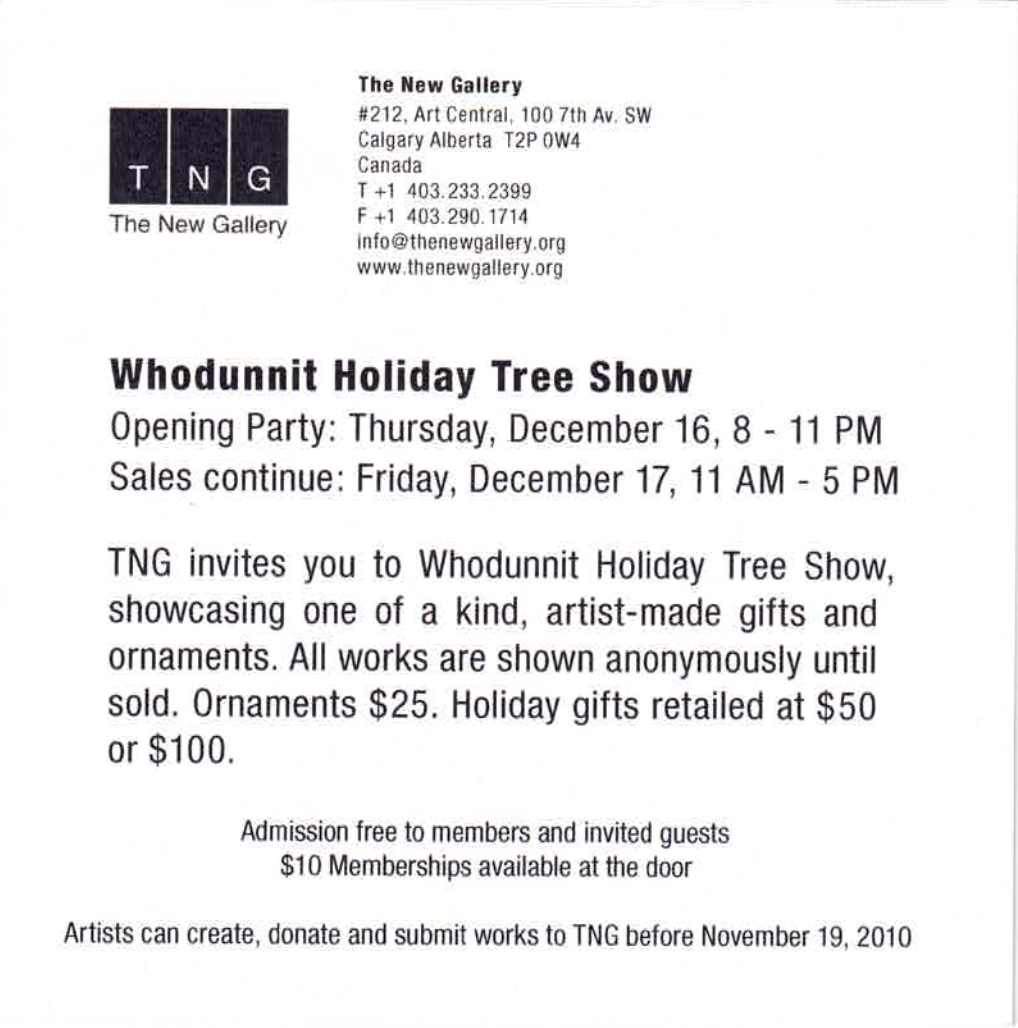


Duet
Andrew Forster
October 7 to November 6, 2010
In conjunction with 5th biennial Mountain Standard Time Performative Arts Festival (M:ST), TNG is pleased to present the performance-based video installation Duet, a dramatic reiteration of the disarming of a would-be teenage suicide bomber by Israeli soldiers near Nablus in 2004.
On March 24, 2004, Hussam Abdo, just 16 years old, made international headlines when he entered a checkpoint in the West Bank with 8 kilos of explosive strapped to his body. Suspicious Israeli soldiers directed their weapons at the boy, and startled, he raised his arms without detonating the suicide bomb he was wearing. A bomb disposal robot was sent out carrying a pair of scissors, so Abdo could cut himself out of the explosive vest. When he was later interviewed by the BBC and asked about the reason for his attempted suicide attack, Abdo replied "Because of the people." When this was repeated back to him in the form of a question, he simply responded, "They don't love me.”
In Duet, Andrew Forster’s 2008 "performative echo” of this widely televised news event, viewers encounter a video projection of Abdo’s gestures being mimicked by an adult male performer – dressed in a suit and tie. Here the series of performed actions appear to be random and disconnected, devoid of either context or obvious intention; the looping video makes his disarming/undressing process seem to be a Sisyphean program of repetitive, unproductive labour. Eventually a second actor, a woman, enters the frame and begins to assist (or subdue?) him, also offering calming gestures occasionally to allay the man’s obvious discomfort. This second performer seems to embody all that intervenes in the picture plane; the soldiers, the viewer and ultimately the relentlessly neutral eye of the video recorder.
As demonstrated in several previous pieces, Forster often seeks to expose the innate communicative power of repetitive gesture. Duet dramatically liberates these actions from their original historical moment and geographical situation. In doing so Forster isolates and abstracts this series of movements, allowing the actors pas de deux(literally “step of two” in French) to begin to speak for itself.
The endlessly unfolding narrative presented in Duet is complex and perhaps even opaque - but its structure suggests that cycles of violence tend to perpetuate, whether the human interaction occurs at the micro level of individuals or entire religious ideologies. Through this highly stylized recreation of a singular, emotionally complex occurrence, the artist’s apparent ambivalence to the original source material mirrors the viewer’s own difficulty in parsing the actions being portrayed in the video. It may even point further afield to a collective inability to comprehend how hatred becomes institutionalized to the point of terrorism.
- Tim Westbury
Biography
Andrew Forster lives and works in Montréal. His work crosses over between installation, performance, dance, new-media and projects for public space. He studied visual art at York University, Toronto, NSCAD, Halifax, and the Jan Van Eyck Academie, Maastricht, the Netherlands. Early work consisting predominantly of forgeries and deliberate biographical falsifications was encapsulated in an exhibition entitled Museum Stories at the Power Plant, Toronto. Recent work includes: a production of Samuel Beckett's That Time (with Michael Fernandes); the winning design in a competition for a new entrance to Place des Arts, Montréal (with architects Atelier Big City); a performance for 75 people entitled En masse, (with choreographer Suzanne Miller); and Cinéma, an outdoor multi-media performance for an audience seated indoors at the Société des arts technologiques, Montréal. His critical writing about performance, photography and visual art has appeared in several publications and catalogues. In 2003 Forster established the production company Push [Montréal] as an umbrella for collaborative and cross-disciplinary work. Since 2005 he has taught in the Department of Design and Computation Arts at Concordia University, Montréal. www.reluctant.ca
Tim Westbury holds a Honors degree in Cultural Studies from Trent University and graduated from ACAD in 1989. He worked in a variety of capacities in both Media and Visual Arts at the Banff Centre for the Arts, including Assistant Curator of the Walter Phillips Gallery in 1995. He has been Programming Director at The New Gallery in Calgary since 2008.

A brief history of The New Gallery 1975-2010
January, 2010

Contours in the Crosshairs
Nancy Nisbet
September 2 to October 2, 2010
Contours in the Crosshairs is a multi-media video installation that exposes fluctuating grays evident in any black and white critique of North American car culture, social responsibility and the human affect on global climate change.
Contours in the Crosshairs is an installation combining video projection, broken glass sculpture and still images. The video presents the slow motion passage of a mountain highway from the driver’s perspective. Layered over the highway clip is another that shows the gradual erasure of the contour lines of the Athabasca Glacier. The 20 min. looping video is projected onto the frosted surface of a suspended car windshield.
Essay
The allure of the Columbia Icefield continually beckons travelers, explorers and artists alike, tempting visitors with an overwhelming sense of discovery and awe with their looming majesty. Located in Alberta between Banff and Jasper National Parks, the average traveler driving through the Northern Rockies has only a glimpse of the ice capped mountains, but few of them recognize that the exposed Athabasca Glacier is one of the world’s most evident and drastic examples of climate change.
Quite matter of factly, as the glaciers are rapidly receding, sea levels rising, and unprecedented climate and temperature shifting, Alberta-based artist Nancy Nisbet recognizes how human presence has intervened with the natural landscapes, specifically the change in the earth’s physical contours. Showing no judgment, no agenda, but exuding a sense of the poetic in the unspoken data presented in her latest piece, Contours in the Crosshairs, Nisbet puts it forward to the viewer to engage with a series of interlinking imagery about the current state of the Columbia Icefield. Walking into the gallery, the first thing visible is a suspended used windshield being used as a screen for a looping projection of Highway 93. From the concave side, the viewer experiences that of the driver, the one seemingly in control; while on the convex, with the projection light shining into your sight line, the experience is comparable to that of a deer caught in the headlights, an innocent tragedy that occurs with frequency along these same highways. Nearby, a luminescent pile of aquamarine tinted glass shards sits on the ground, at once drawing comparisons to ice, and yet remaining very much a broken pile of discarded and unrecyclable automobile windshields. Along the back windows, a looming image of the glacier in its present moment holds your attention, anchoring the literal melting point of ice into visibility. Coming back to the suspended windshield, the projection footage is slowed down, and there is a sense of the road, touching down on any one of the thousands of drivers cruising along this stretch of road each day and night.
Looking closely and at length over the course of a 20 minute loop, imposed on the footage and visible from both sides of the windshield is a simple white outline of the glacier contour being gradually erased. Silent, yet consistent, the quiet disappearance of the contour comes off as abstract at first, but there is a merge between a sense of exploration and its gradual threat to climate change. Temporally adjusting to a monumental sense of time, Nisbet elicits a direct and tangible correlation between climate change and automobiles that does not favour one over the other, but embraces both together in unison.
Amy Fung is a Canadian-based art critic and curator. Her writings appear in print and online in publications including Akimbo, Border Crossings, C Magazine, Canadian Art, Fuse Magazine, Galleries West, etc. Fung is also the founder and author of Prairie Artsters.com
Biography
Nancy Nisbet is an interdisciplinary artist working in installation, photography, and performance. Having presented her works and lectures across North America and internationally, Nisbet focuses on provisional identities, faltering memories, and improvised narratives within the broader socio political landscape. With a background in Genetics, before completing her MFA from the California Institute of the Arts under the mentorship of Catherine Opie, Nisbet will be teaching at ACAD as of the Fall of 2010.
www.nancynisbet.ca

I am JUST not good at following directions
Rolande Souliere
June 25 to July 31, 2010
A member of Michipicoten First Nation now living and working in Australia, Rolande Souliere presents an installation of flowing patterns rendered in reflective traffic sign material and abstracted from traditional Northwest Native art motifs; a nexus of North American indigenous culture, abstraction and the Modernist project.
Rolande Souliere’s Sign Language
Each episode of Thomas King’s CBC radio show The Dead Dog Café Comedy Hour (1997-2000) closed with the line "Stay calm, be brave; wait for the signs." The program routinely poked fun at Indian Romanticism—producing with the spin of a wheel, for example, ‘genuine’ Indian names for lucky callers. And, yet, as with much of King’s comedy, uncomfortable truths lurked beneath the irony. Dead Dog often tackled The Indian Act, the legacy of the Residential schools, and the contrast of contemporary urban Aboriginal identity and rez life—usually with the citified King as the butt of his own jokes. The show was both a send-up and an education. The sign off, "Stay calm, be brave, wait for the signs," sounded simultaneously like corny movie Indian dialogue and good advice.
Rolande Souliere’s I am JUST not good at following directions, shares King’s self-deprecating humour. The exhibition title pokes fun at the stereotype of the Indian as infallible pathfinder and scout who has an innate sense of direction. An Anishinabe (a Michipicoten band member) from Ontario, who has lived in Sydney, Australia, for the past 12 years, Souliere created for this exhibition an environment of textless street signs and barriers whose bold colours and shapes resemble several First Nations designs. Her Indigenization of these seemingly neutral objects reveals the inherent political nature of ‘universal’ signs and the possibility of the reversal of their homogenizing agenda.
Street markers and barriers are meant to be read the same way by everyone. They are signals that are not subject to interpretation. Street signs are to be recognized and obeyed. They remind Souliere of the ‘pass’ system, The Indian Act and other means of controlling Aboriginal people. By decorating them with First Nations designs, she shows that ubiquitous, ‘neutral’ signifiers are always already of the dominant culture. They are a display of power. By Indigenizing them, she breaks one kind of spell and imposes another: here is how part of the world might have looked if First Nations people had been partnered with rather than colonized.
At first glance, the markers seem slickly executed, but closer inspection reveals that the curves are awkwardly cut; the edges are not perfectly smooth and gaps appear between some shapes. The artist seems to be “not good at (following) directions.” Souliere explains that she could have had laser cut neatness but wanted a rougher look that reveals that these things are hand-made, and closer to domestic textiles than manufacturing. Handmade signs lack authority. Imperial signs should appear as if generated by a perfect, objective and rational machine. They should be expressive of ‘the law’ rather than of an individual person. Handmade signs suggest that the law is imperfect, malleable, a human product. An imperfect sign opens a gap in a seemingly impenetrable sign system. Ruffling the space between signifier and signified, the handmade and imperfect hints of an unruly presence, a body, even an agency and intention that exceed and even undermine the task of the sign.
In Toronto in the 1970s, the Canadian government helped urban Aboriginal kids like the young Souliere keep in touch with their culture through a distinctive program. ‘The Native Children’s Program’ provided elders from a range of cultures to teach art, singing, dance and other culture classes to children also from many Nations (Cree, Mohawk, etc.). This variety of Indigenous teachers and urban influences continue to circulate in Souliere’s work. Her signs quote Haidaish designs along with her own Anishinabe Turtle clan motif, numerous beading sources, and the curvier European abstract art from the 1930s-50s (Sonia Delaunay, etc.). None of the designs quite captures the original sources, nor violates actual or moral copyright, but they do come teasingly close. Like Sonny Assu and Brian Jungen, Souliere may be underlining how North American culture is consciously or unconsciously influenced by Aboriginal design (the similarity of Nike and Haida design, for example); or, she may be actively promoting the Indigenization of mainstream material culture. Her mash-ups are a promiscuous collage of influences digested into an Indigenous urban design for the future.
One of the great powers of abstract art is its ability to stimulate a flood of associations in viewers. A few lines and colours can signal that we are in Canada and nowhere else. They can also show which Canada it is. Lawrence Paul Yuxweluptun, well known for didactic environmentalist paintings, has recently turned to making abstract works featuring Haida shapes. These simple forms evoke a whole cultural presence while giving nothing away. Political abstraction is a means of taking up and transforming visual space. In this case, Indigenizing visual culture helps to re-orient the dominant imaginary without compromising Aboriginal spiritual content.
Abstraction can also thaw Indigenous culture by becoming a space for innovation rather than reiteration of tradition. In conversation about her attraction to the plastic, bright colours, reflectors and mirrors, Souliere referred to “powwow bling.” Powwow’s attract people from all over North America. Numerous tribes display their material culture for admiration and a certain amount of emulation. Nowadays, regalia of traditional beading, quilling, leather work and feathers and supplemented by flashy day-glo plastics. Innovations seen at one pow-wow (a cd used as a decoration, for instance) soon appears in next year’s regalia.
One way of reading this work is to see it as an attempt by the artist to take charge of the visual field and impress her hybrid education upon it. I am JUST not good at following directions might be read not as a failure to live up to expectations but as an expression of individuality. She is not good at taking directions; she’s better at creating them.
Australian Indigenous people share parallel colonial histories and live lives similar to Canadian Aboriginal people. Australian Aboriginal artist Vernon Ah Kee, upon returning from a reserve in Alberta, told his friends in Australia that it’s not that the experience of Canadian First Nations people is the same as Aboriginal Australians, but that it is “exactly the same!” However, he explains, that although the Aboriginal population of both countries is close (about 3%) he senses a distinct difference in the understanding and treatment of Canadian First Nations people who have a treaty relationship with their neighbours. Visiting New Zealand recently, where the Maori make up about 15% of the population, where their language is taught in the schools and where their culture is a proud and substantial aspect of the place, there is an example for a possible future for those parts of Canada and Australia with similar concentrations of Indigenous people. With streets and places re-scripted in Maori, I saw non-Aboriginal people speaking Indigenous words daily, physically testifying to their sharing of that space.
In this light, Rolande’s signs have a serio-comic cast. She may be making these street markers as a means not just of disturbing the dominant imaginary but also redesigning it. These signs could actually be adopted. Such a change would signal the (a)priority of a particular First Nations culture in a specific location. It would also create a distinct visual culture for Canada’s regions. Following the 1967 World’s Fair in Montréal, the world’s signs have become nearly universalized. There has been a virtual visual colonization of street signs to make everywhere feel somewhat like home. Rolande is signaling a new possibility, one that privileges the local over the general. Indigenization is an effort to resist the prioritizing of the global over the vernacular and trouble the rationalization and colonization of direction and advice. Souliere asks us to imagine a post-Modernist, post-colonial world where design does not strive to streamline and unify the world; does not become a tidy Esperanto, but shifts from location to location and reflects the varieties of local discourse and preference. "Stay calm, be brave; wait for the signs."
- David Garneau
June 2010




Biography
David Garneau is an Associate Professor of Visual Arts at the University of Regina. He holds a BFA in Painting and Drawing, and an MA in American Literature, both from the University of Calgary. Garneau’s practice encompasses painting, drawing, curating and critical writing. He was born and raised in Edmonton and has lived in Regina since 1999.
Rolande Souliere is a Canadian, member of Michipicoten First Nation and an Australian citizen. She has lived in Chicago and San Francisco before relocating to Australia twelve years ago. It is in Australia Souliere pursued her artistic interests by becoming art school trained and as a result exhibiting in art world contexts nationally and internationally. She has a Masters of Visual Arts from Sydney College of the Arts (SCA)(2006). In 2010 Souliere commenced a Doctorate of Visual Arts at Sydney College of the Arts, University of Sydney.

On Site review 22: WAR magazine launch
November 10, 2009
On Site Review - 76 Pages of architecture and culture, urbanism and landscape. infrastructure and space, art and performance. This issue is all about the architecture and landscapes of war and peacekeeping, reconstruction and infrastructure, urbicide and memorials, renewal and re-occupation.
Join us for the launch of On Site 22: WAR at The New Gallery, November 10th, 2009
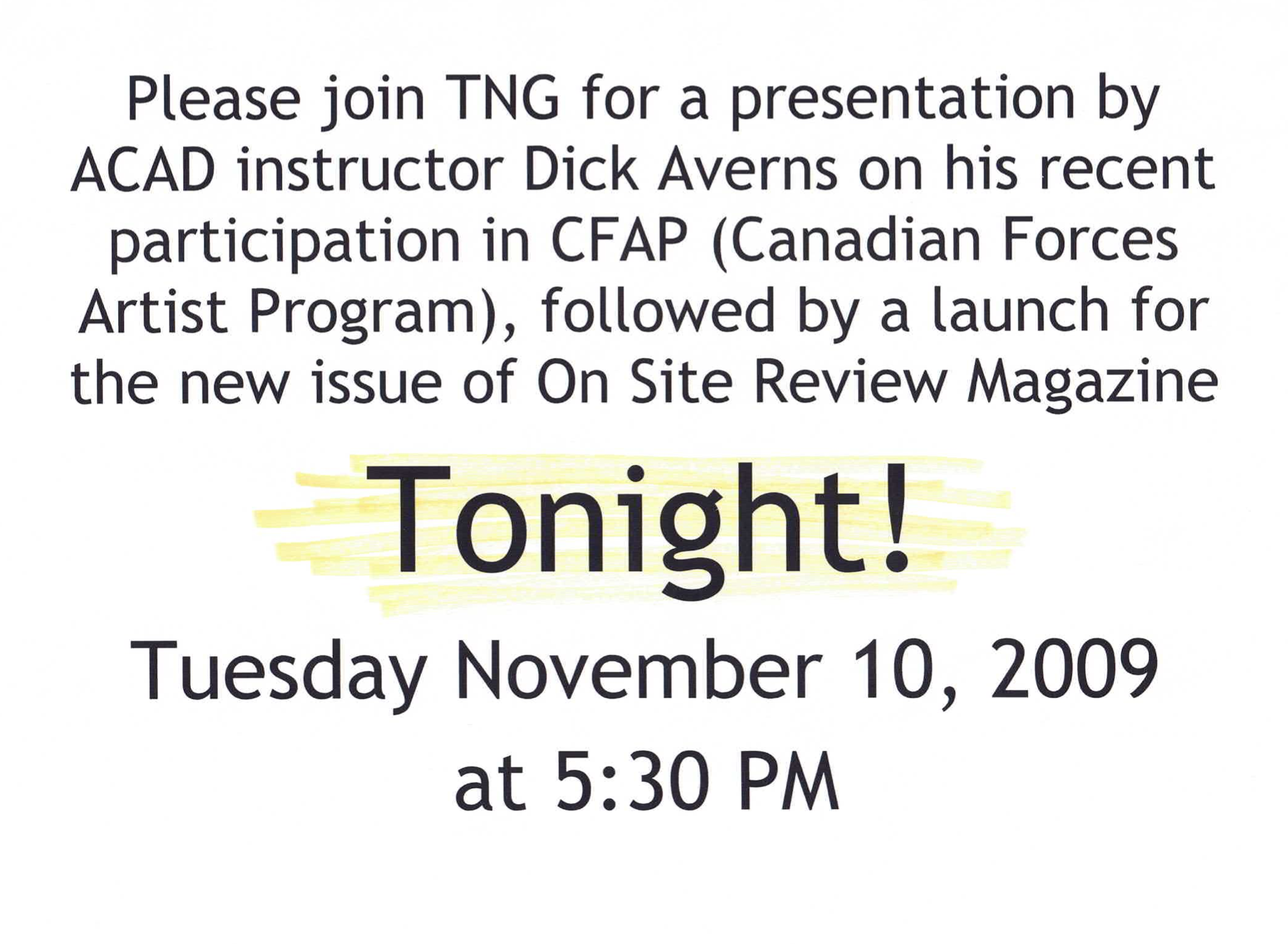
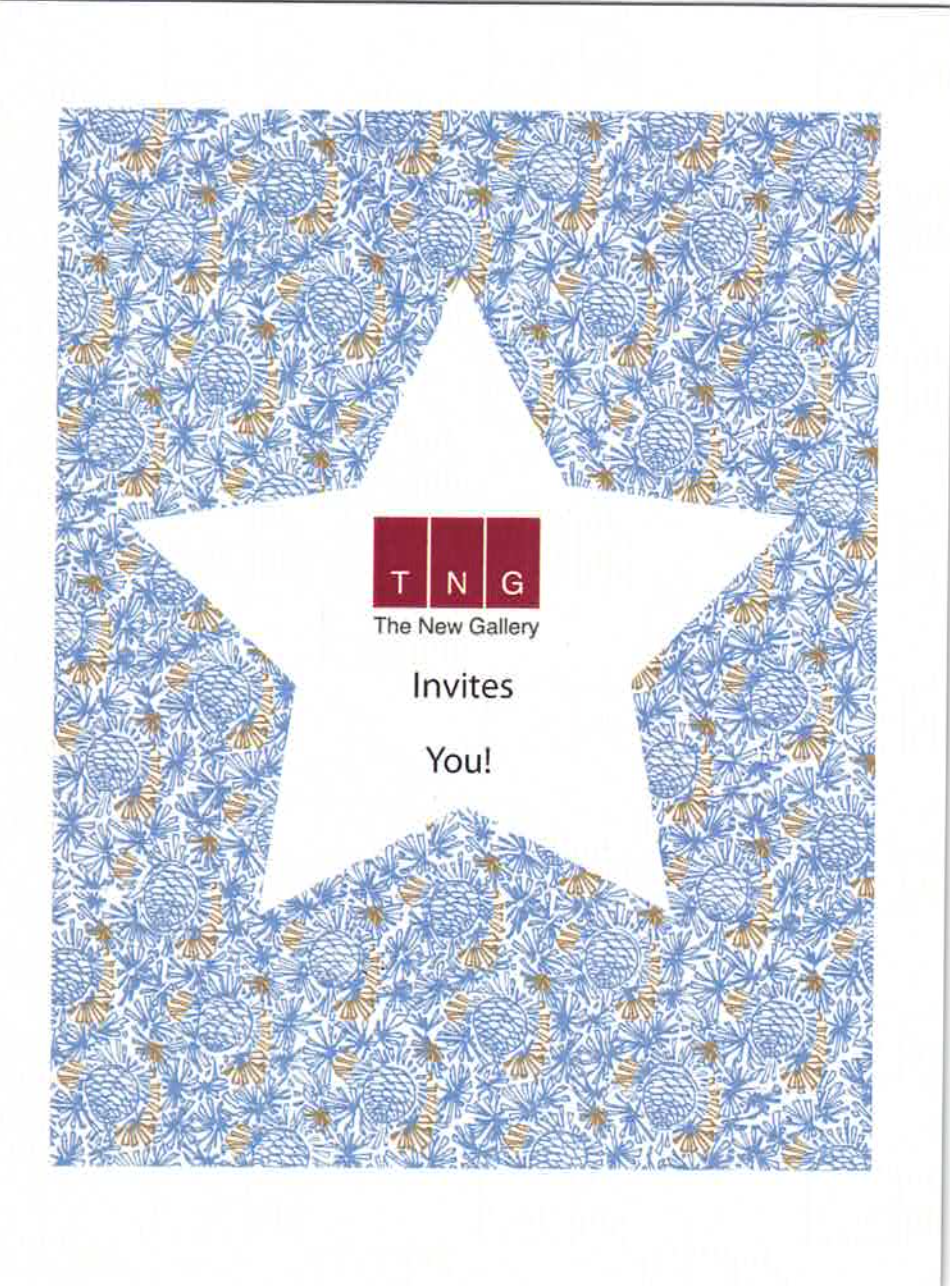
Holiday Tree Show
December 18, 2009

“Please join us for our annual Holiday Tree Show Party & Fundraiser. This fun-filled event will feature live musical performances by Shon Anderson and Phil Withers, As well as a special installation by local artist Larry McDowell. Unique artist-made ornaments will be displayed on the Gallery tree and can be purchased for $25 each.
-
-
-
-
Sincerely, The New Gallery
Calgary’s Original Artist-Run Centre”
-
-
-
-
Sincerely, The New Gallery
Calgary’s Original Artist-Run Centre”

DCLXVI
A Second Treatuse on the Number of the Beast (666)
Andrew A. McLaren
November 25, 2009

Impulse
Marbella Carlos and Chris Mandseth
February 20 - March 28, 2009
Chris Manseth is a media artist in his senior years as a BFA undergraduate at the University of Calgary. Born and raised in Edmonton, his work has been shown locally in Alberta as well as nationally in Toronto. He is currently undertaking collaborative, project-based research investigating digital media creation with artists from Vancouver, Montreal and London, England.
Marbella Carlos was born in Manila, Philippines. Since making the move to Canada with her family as a child in 1989; she has been living and growing in Calgary, Alberta. Currently attending the University of Calgary, Carlos is enrolled in the Department of Art working towards a Bachelor of Fine Arts degree in Visual Studies with a Studio Concentration and intends to graduate in the winter of 2010.

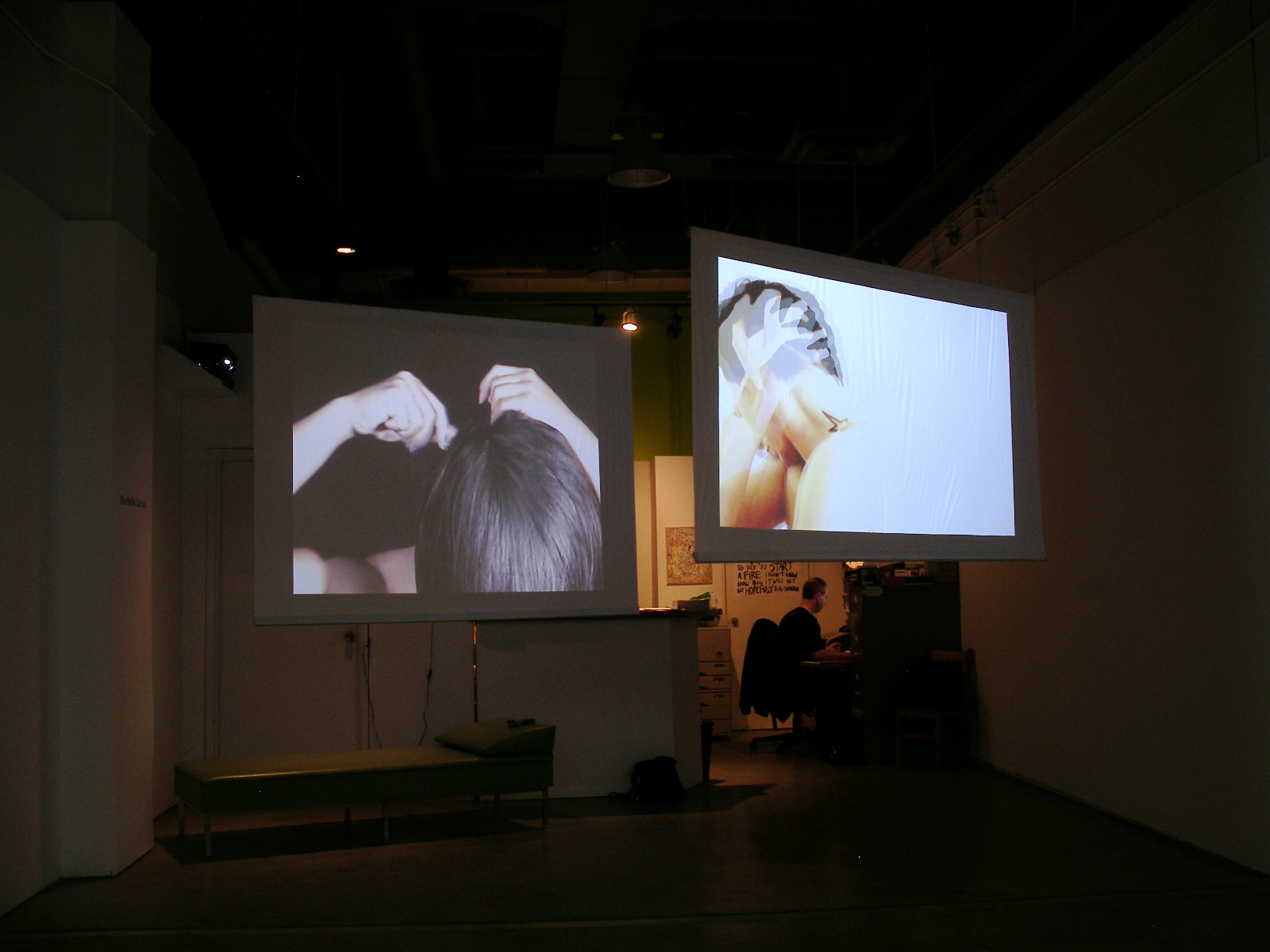


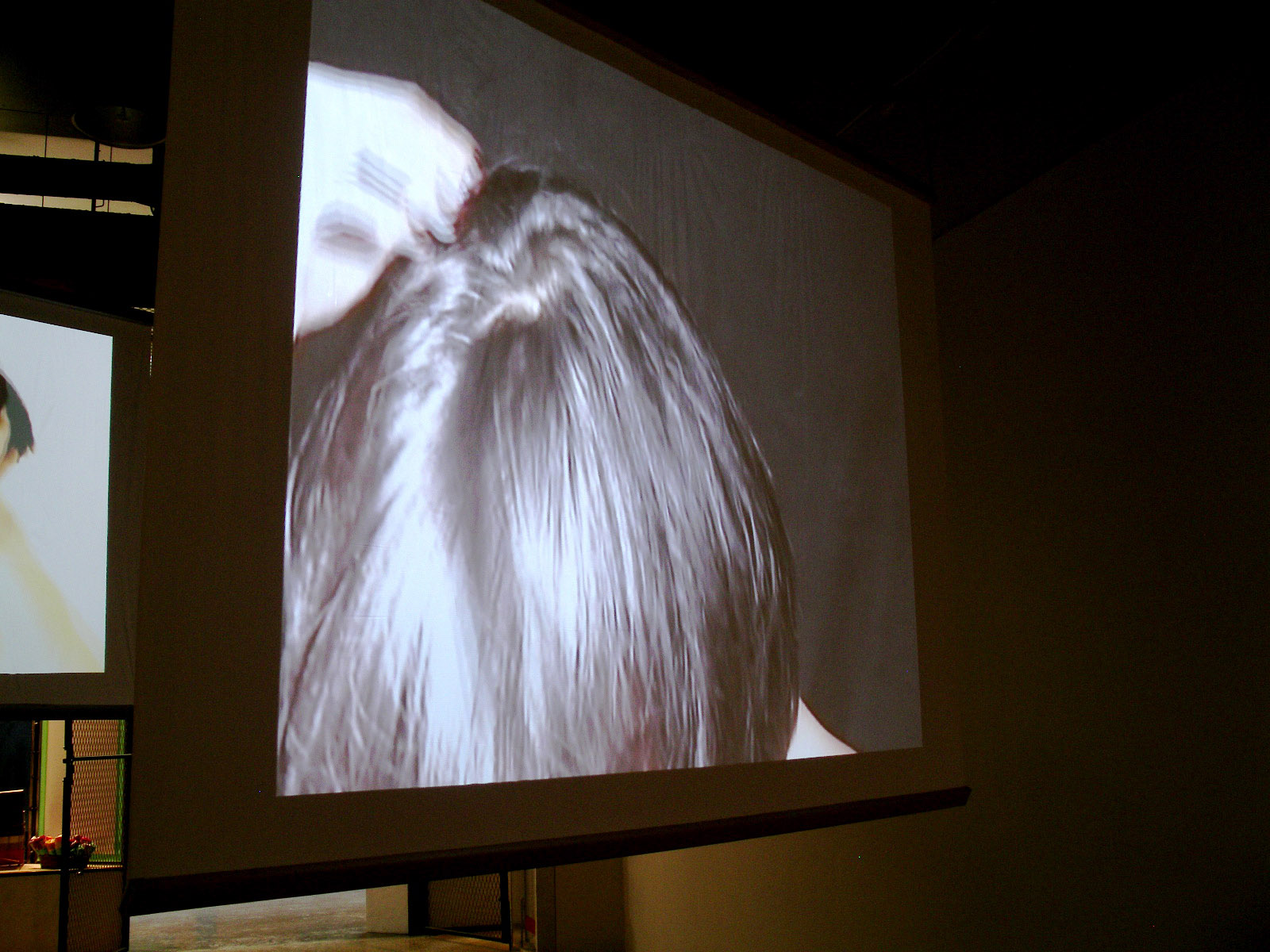

Impulse
Marbella Carlos and Chris Mandseth
Discomfort is often characterized by the duality between seemingly opposing forces: the contradictory link between pleasure and pain, fascination and disgust, love and loss, scratch and stroke. There is an uneasy connection formed by repetitive acts with ambiguous intentions, particularly when one considers the ritualistic plucking of hairs or the jerky act of excessive scratching.
While Marbella Carlos’s Of Love and Loss and Chris Mandseth’s Itch, share the common element of gentle repetitive self-mutilation, they also share a similar fascination with the process of soothing discomfort. Both itching and losing hair are normal parts of day-to-day life; however, when these seemingly ordinary events become controlled and obsessive they appear strange and unnatural. Through a voyeuristic desire to watch, the viewer becomes part of this process, even if only through physical empathy.
The role of the viewer-participant is taken a step further by Mandseth’s Hello, which directly solicits the viewer to become, willing or not, an object of display. By putting the viewer in a position both of uncertainty and control Mandseth invites the audience to place themselves in an uncomfortable position, while simultaneously allowing for the contradictions inherent in accepting such an invitation.
Impulse invites viewers to experience the work both as audience members and potential collaborators. This combination allows the viewer a great awareness both of the self and the experience of the artist. Through direct self-portraiture and repetitious commonplace actions, Carlos and Mandseth evoke discomfort using the unlimited potential of interactive new media technologies. - Caitlind Brown
Caitlind Brown is an installation artist, photographer and filmmaker in her final year at the Alberta College of Art and Design. A native Calgarian, she volunteers for the Calgary International Film Festival, is an occasional writer for FFWD magazine and a radio co-host on Film Clips, a weekly program on CJSW 90.9fm. As a first-time curator, she hopes to emphasize the importance of experimental mediums and interactive art forms.
While Marbella Carlos’s Of Love and Loss and Chris Mandseth’s Itch, share the common element of gentle repetitive self-mutilation, they also share a similar fascination with the process of soothing discomfort. Both itching and losing hair are normal parts of day-to-day life; however, when these seemingly ordinary events become controlled and obsessive they appear strange and unnatural. Through a voyeuristic desire to watch, the viewer becomes part of this process, even if only through physical empathy.
The role of the viewer-participant is taken a step further by Mandseth’s Hello, which directly solicits the viewer to become, willing or not, an object of display. By putting the viewer in a position both of uncertainty and control Mandseth invites the audience to place themselves in an uncomfortable position, while simultaneously allowing for the contradictions inherent in accepting such an invitation.
Impulse invites viewers to experience the work both as audience members and potential collaborators. This combination allows the viewer a great awareness both of the self and the experience of the artist. Through direct self-portraiture and repetitious commonplace actions, Carlos and Mandseth evoke discomfort using the unlimited potential of interactive new media technologies. - Caitlind Brown
Caitlind Brown is an installation artist, photographer and filmmaker in her final year at the Alberta College of Art and Design. A native Calgarian, she volunteers for the Calgary International Film Festival, is an occasional writer for FFWD magazine and a radio co-host on Film Clips, a weekly program on CJSW 90.9fm. As a first-time curator, she hopes to emphasize the importance of experimental mediums and interactive art forms.
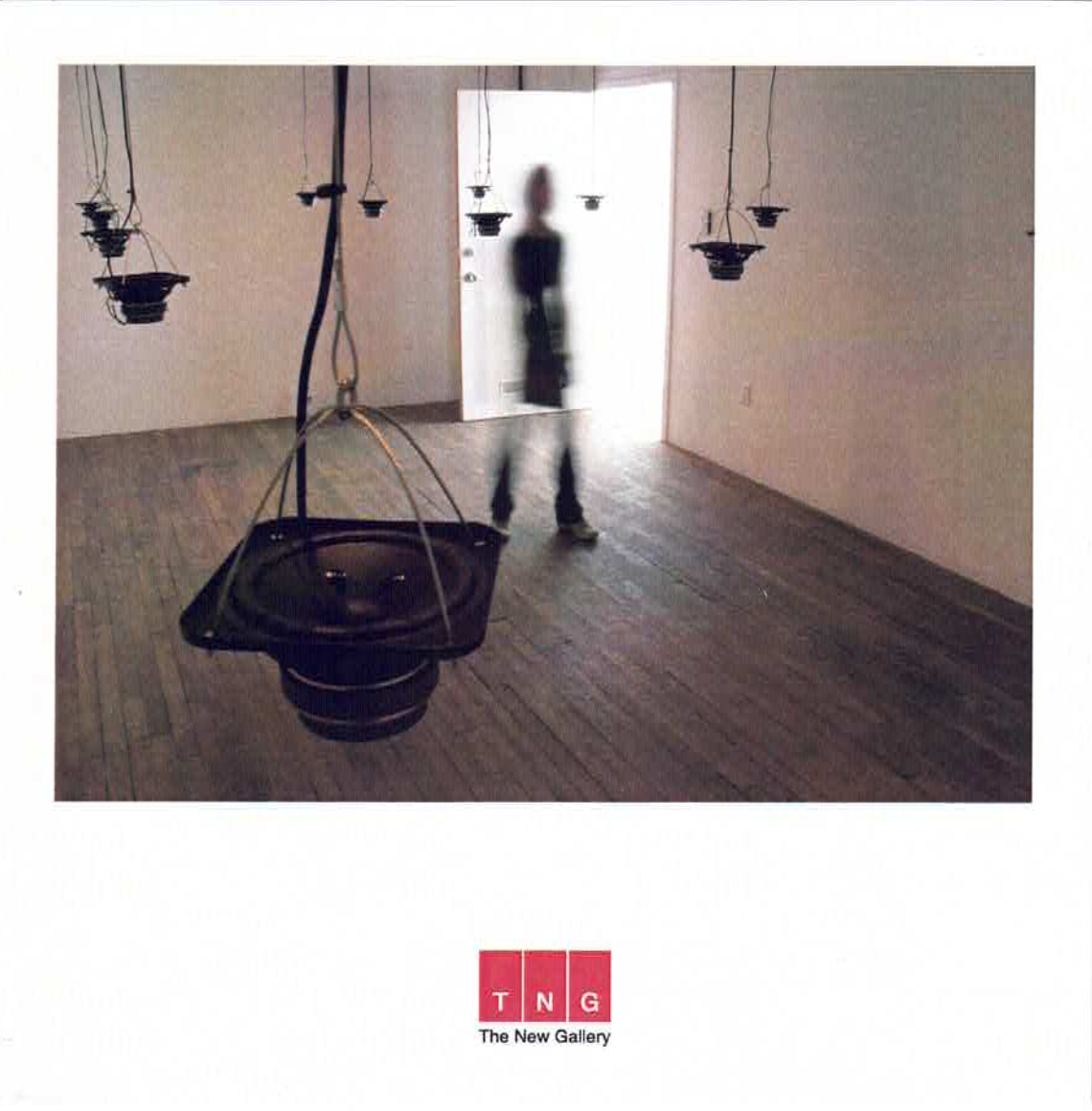
Conciliabule
Myriam Bessette & Robin Dupuis
June 26 - August 1, 2009
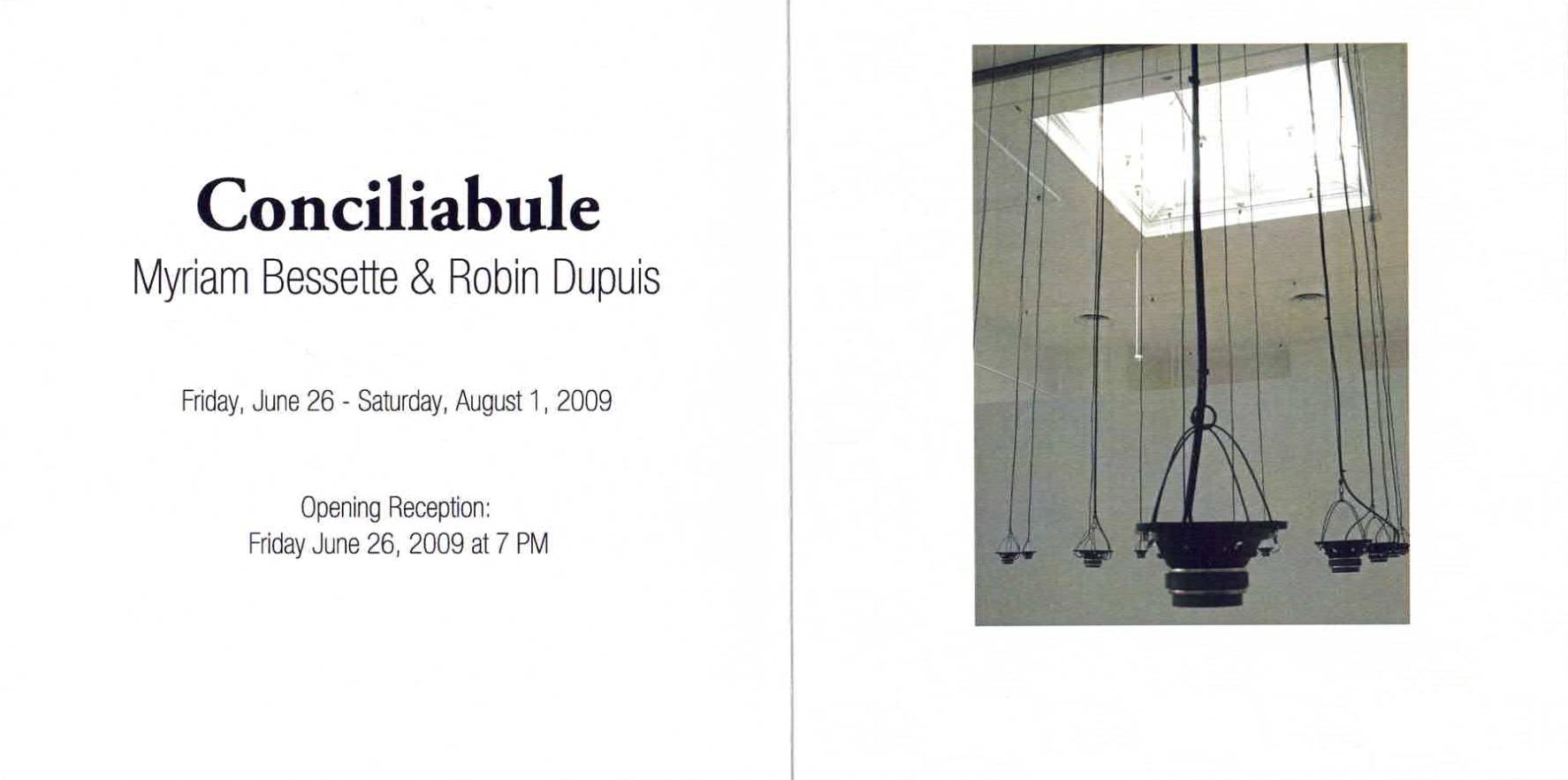
Myriam Bessette and Robin Dupuis each have their own approach to the use of sound as material.Bessette collects samples of her own voice, which she sources in all her sounds and incorporates into iinstallations or with digitized images that she mounts, colors, animates and modifies. Dupuis uses synthesized sound to generate immersive installations or abstract animations. Sound material is the genesis of both artists’ projects.
The audio installation Conciliabule (2006-2009), a collective work in progress, explores the nature of the acoustic object and the transmission of complex voice messages through an electric signal. Starting with vocal samples, the artists have filtered out all references except for very low inaudible frequencies. The almost silent audio installation creates its own materiality in the form of vibrations that become visible on the speakers. It isn’t the captured voice whispering in the visitor’s ear, but the quivering of the device that animates the piece.
This multi-track work invites visitors to perambulate through an auditory visual architecture and to enter into a conciliable with the materiality of sound.
The audio installation Conciliabule (2006-2009), a collective work in progress, explores the nature of the acoustic object and the transmission of complex voice messages through an electric signal. Starting with vocal samples, the artists have filtered out all references except for very low inaudible frequencies. The almost silent audio installation creates its own materiality in the form of vibrations that become visible on the speakers. It isn’t the captured voice whispering in the visitor’s ear, but the quivering of the device that animates the piece.
This multi-track work invites visitors to perambulate through an auditory visual architecture and to enter into a conciliable with the materiality of sound.
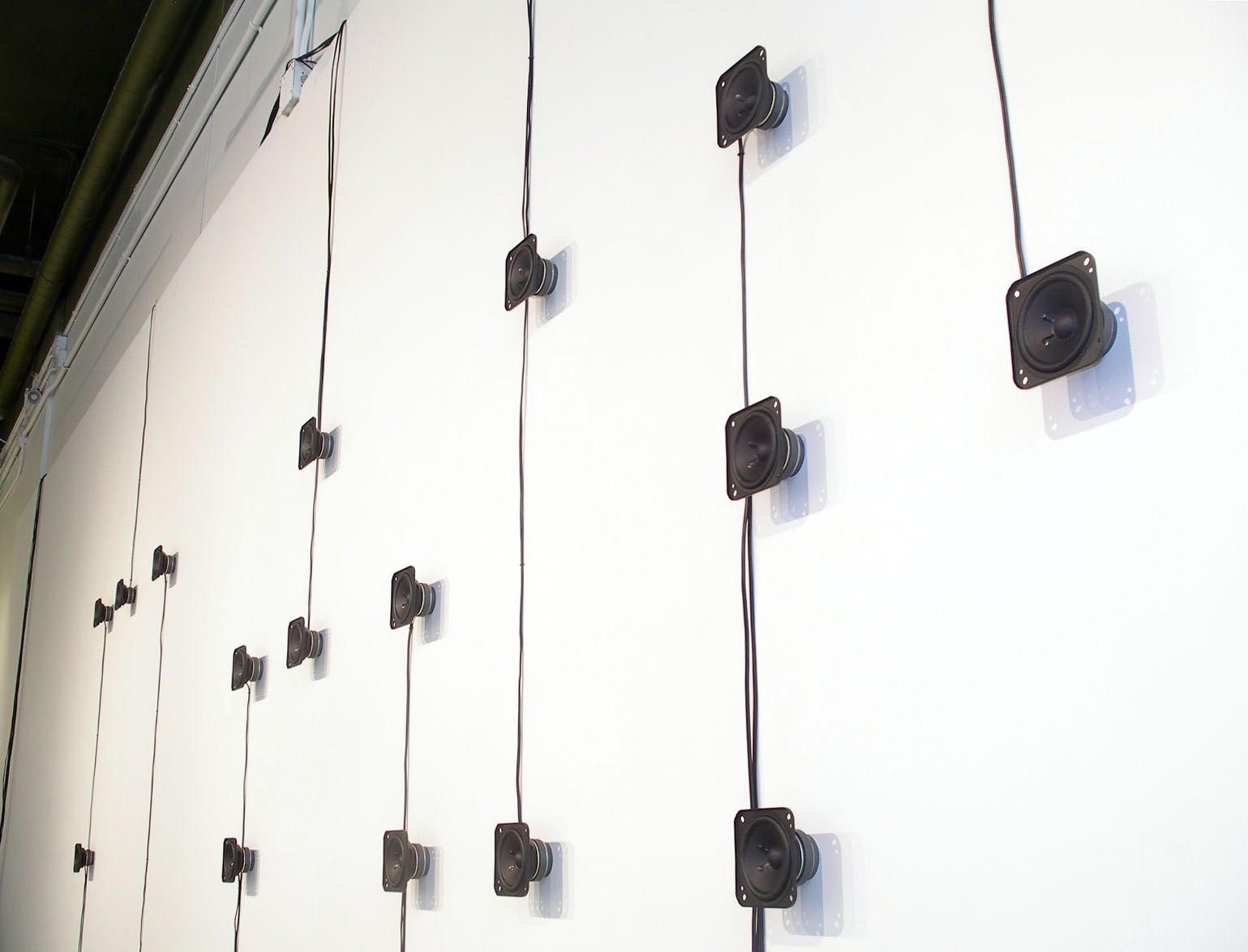


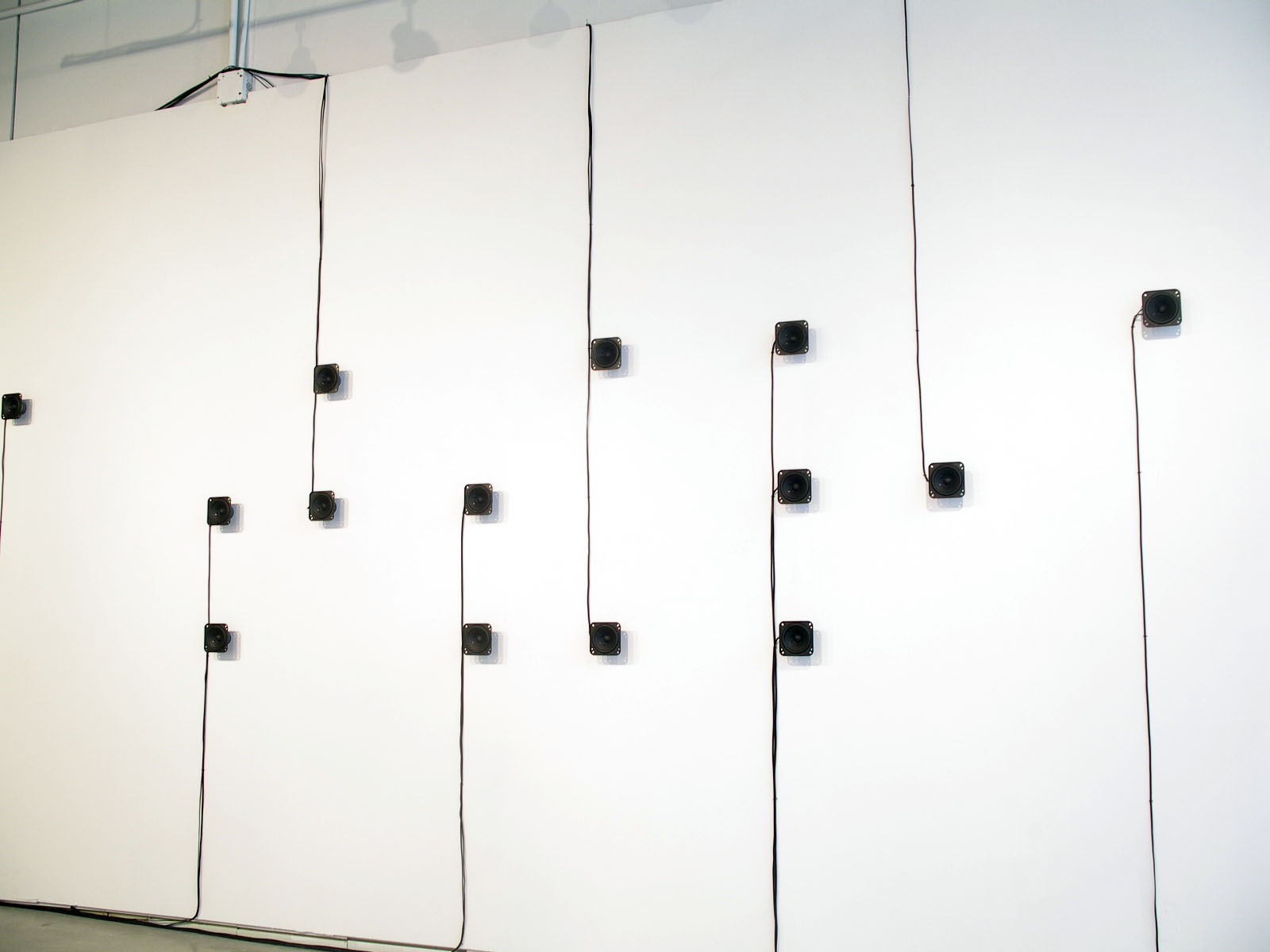



BIOS
Throughout Myriam Besette’s art, sounds mingle with images - not in a juxtaposition or superimposition, but as a form of video art that issues from the interface between the two and derives from experimental animation. She has a BFA from the École des arts visuels et médiatiques de Montréal (UQAM).
Robin Dupuis’s work doesn’t attempt to represent the world in which we live. Instead, he endeavors that take full advantage of the digital platform. Dupuis holds a BFA from Concordia University and an MFA in Media Arts from the École des arts visuels et médiatiques de Montréal (UQAM). He is currently the director of Perte de Signal, an independent media arts research and development center in Montréal.

Launch:
Music for Insomniacs
Annie Martin
November 28, 2008
Annie Martin is delighted to present and launch a new audio CD project, “music for insomniacs''. Composed of a suite of compositions based on sounds from the intimate domestic sphere, “music for insomniacs” explores listening as presence. Sounds consciously produced by playing everyday objects and musical children’s toys- the crystalline resonance of the everyday- are transformed through juxtaposition to become quasi-musical soundscapes. This work will be available as an artist’s multiple and will be the basis for multi-channel audio installation.
“Music for insomniacs'' is the second in a series of audio CD projects by Martin. The first in the series, “relaxation: songs for city dwellers'' mimicked relaxation music, integrating urban field recordings, and was exhibited as an installation in Aural Cultures at the Walter Phillips Gallery in 2005 and Found at the University of Lethbridge Art Gallery in 2007.
Annie Martin is a multi-disciplinary artist living and working in Lethbridge, Alberta. Her work in recent years has spanned installation, audio aer, listening walks, and short video works. Martin’s work has been exhibited across Canada, as well as in the US and UK. Upcoming exhibitions include an In Situ residency and exhibition at AxeNéo7 in 2009.
“Music for insomniacs'' is the second in a series of audio CD projects by Martin. The first in the series, “relaxation: songs for city dwellers'' mimicked relaxation music, integrating urban field recordings, and was exhibited as an installation in Aural Cultures at the Walter Phillips Gallery in 2005 and Found at the University of Lethbridge Art Gallery in 2007.
Annie Martin is a multi-disciplinary artist living and working in Lethbridge, Alberta. Her work in recent years has spanned installation, audio aer, listening walks, and short video works. Martin’s work has been exhibited across Canada, as well as in the US and UK. Upcoming exhibitions include an In Situ residency and exhibition at AxeNéo7 in 2009.

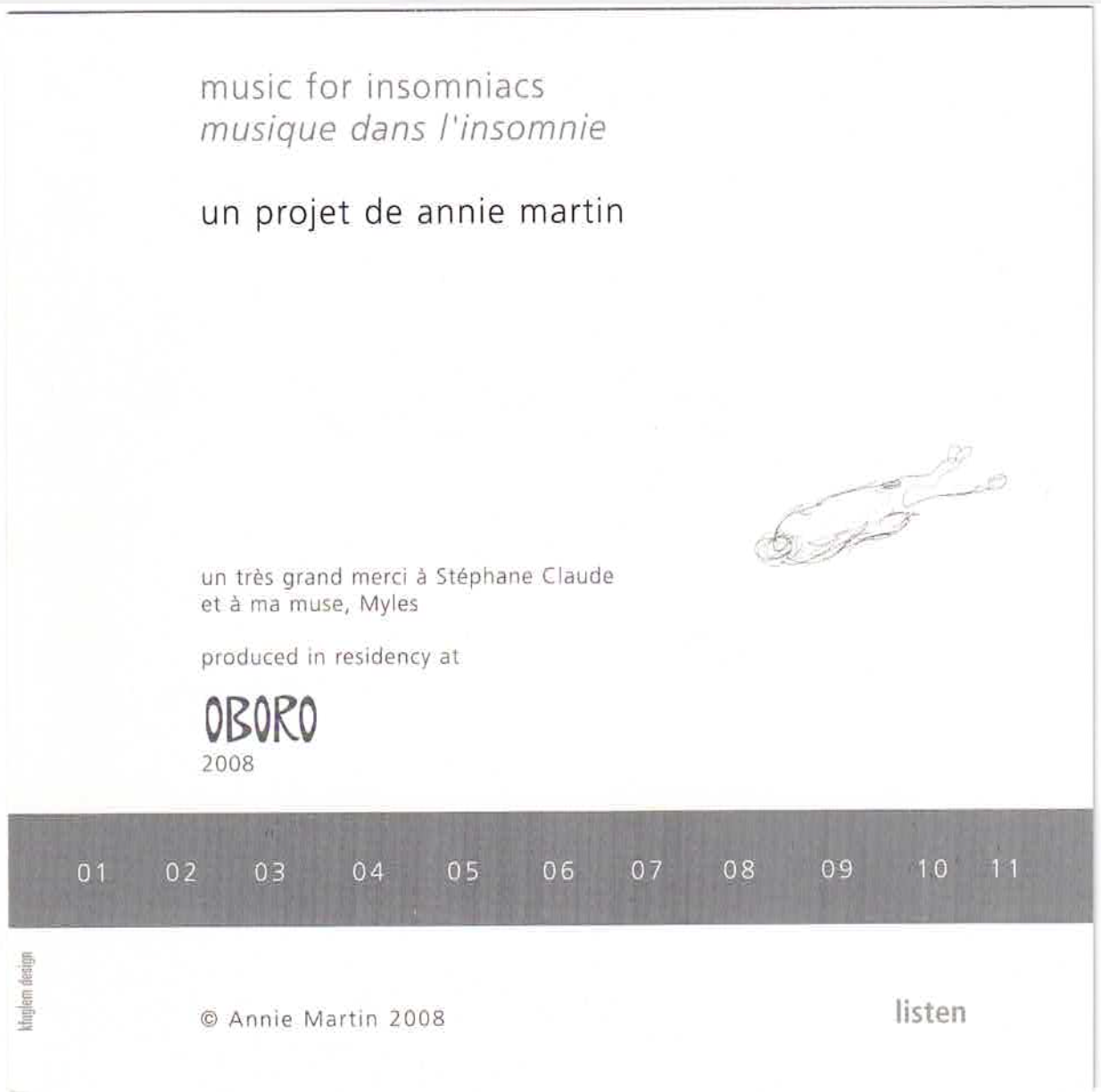

Holiday Tree Show
December 14, 2008



Lab #4
Shanell B. Papp
October 27 - December 27, 2008


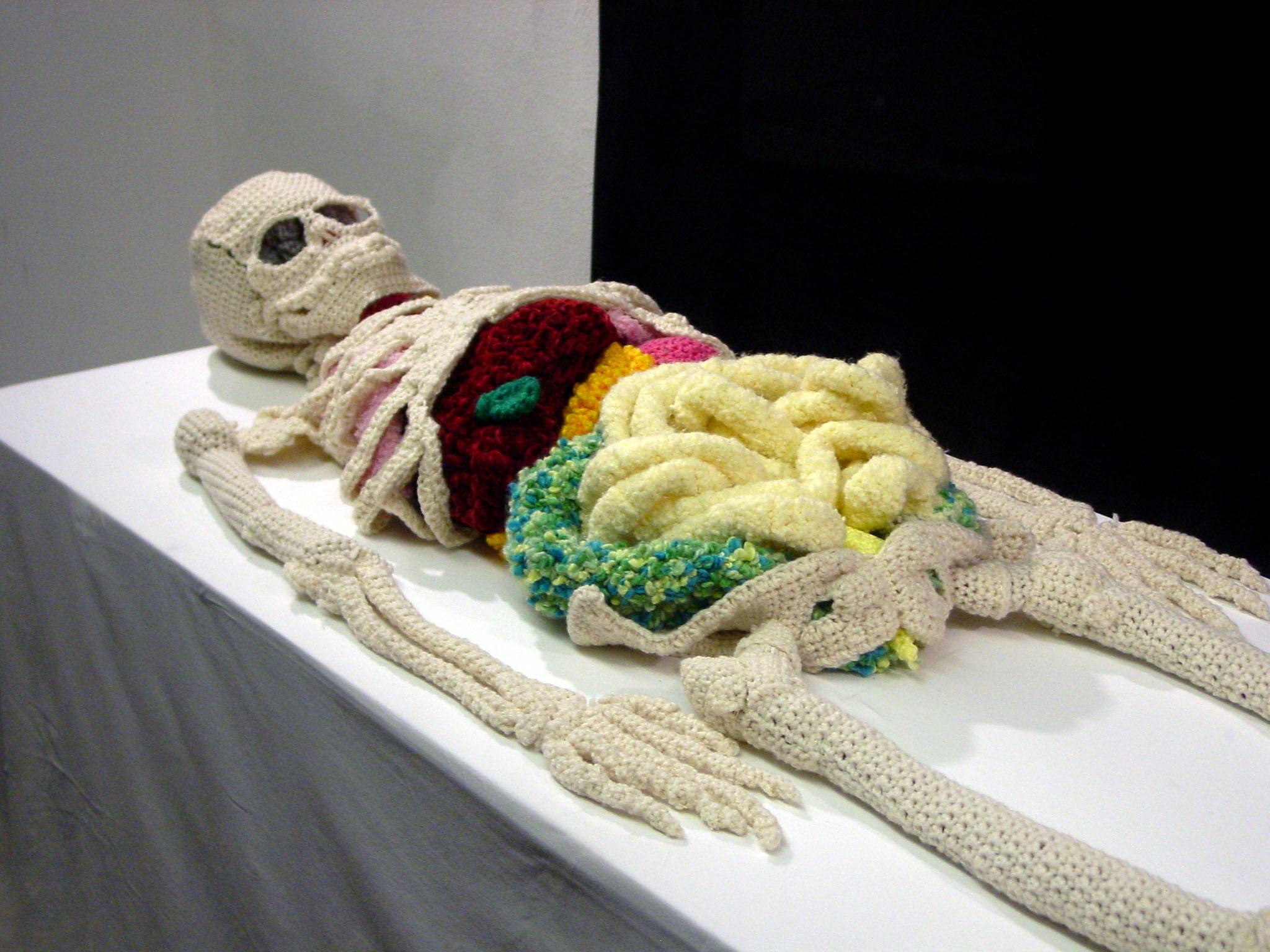


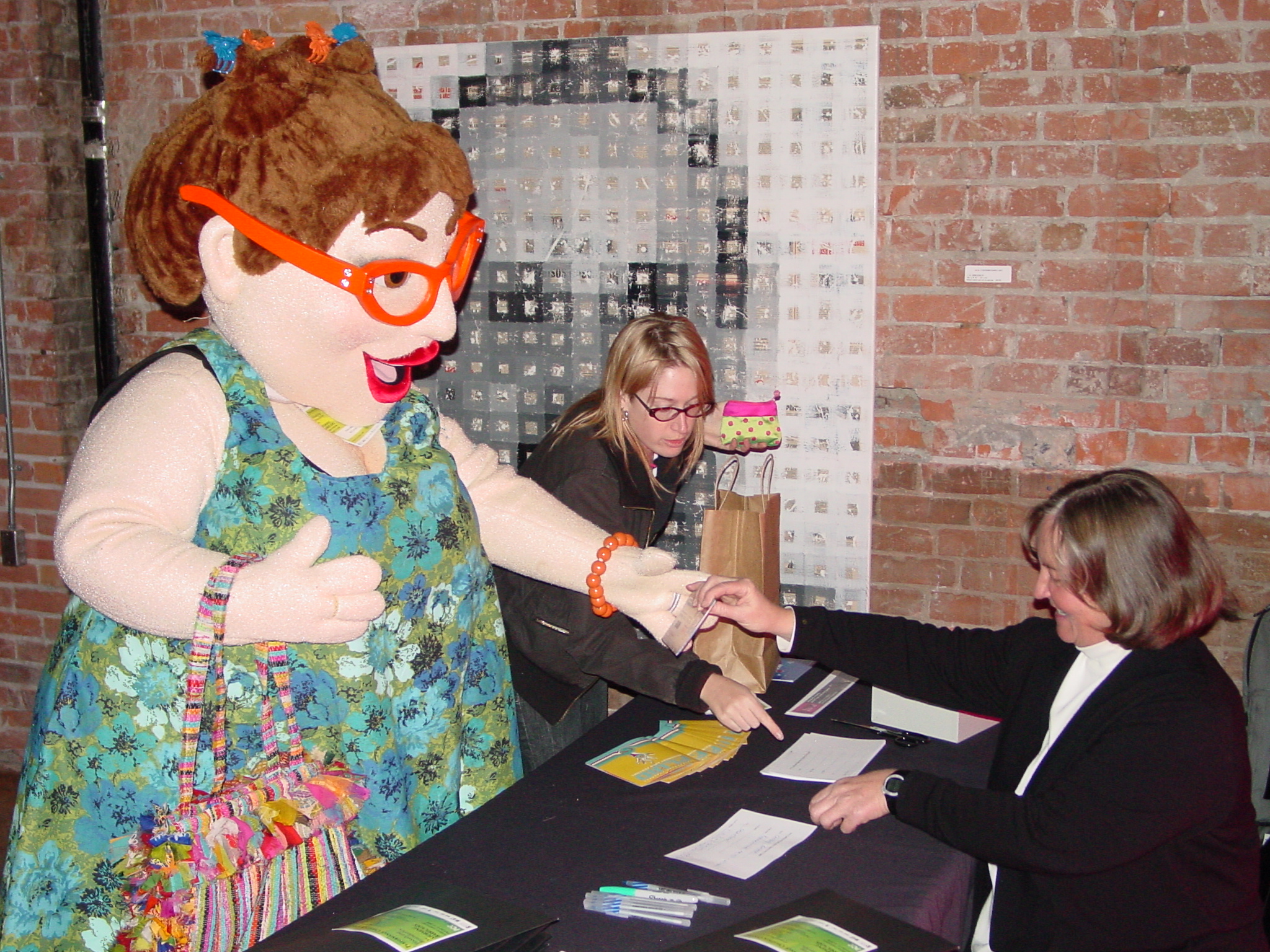
M:ST Performative Art
Personal Appearance
Cindy Baker
October 2008
Calgary - Various Locations
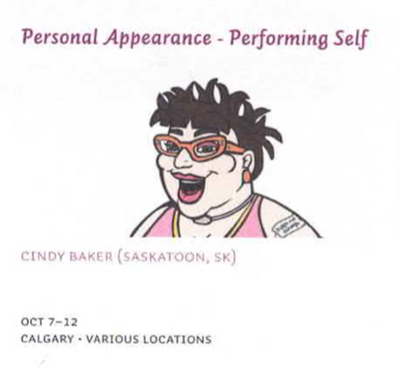
With a professional mascot costume of herself, Baker travels across North America making public appearances as Cindy Baker. The cuddly and approachable mascot costume both amplifies and disguises the characteristics of the person inside and encourages a new kind of mediated interaction between artist and audience. In this project, Baker investigates the way we present public versions of ourselves and the feelings of being sheltered yet vulnerable; plain yet larger-than-life; on display, yet invisible. Watch for Baker’s appearances at events throughout the M:ST 4 Festival. (2008)
Cindy Baker is an interdisciplinary and performance artist whose practice is influenced by gender culture, queer theory, fat activism, and art theory. With a background of working, volunteering, and sitting on the board for several artist-run centers in Western Canada, she has a particular interest in the function of artist-run centers as a breeding ground for deviation. She has exhibited and performed across Canada, and recently made an appearance at the Soap Factory in Minneapolis as part of Artery 24, a 24-hour performance festival. www.populust.ca/cinde
Cindy Baker is an interdisciplinary and performance artist whose practice is influenced by gender culture, queer theory, fat activism, and art theory. With a background of working, volunteering, and sitting on the board for several artist-run centers in Western Canada, she has a particular interest in the function of artist-run centers as a breeding ground for deviation. She has exhibited and performed across Canada, and recently made an appearance at the Soap Factory in Minneapolis as part of Artery 24, a 24-hour performance festival. www.populust.ca/cinde
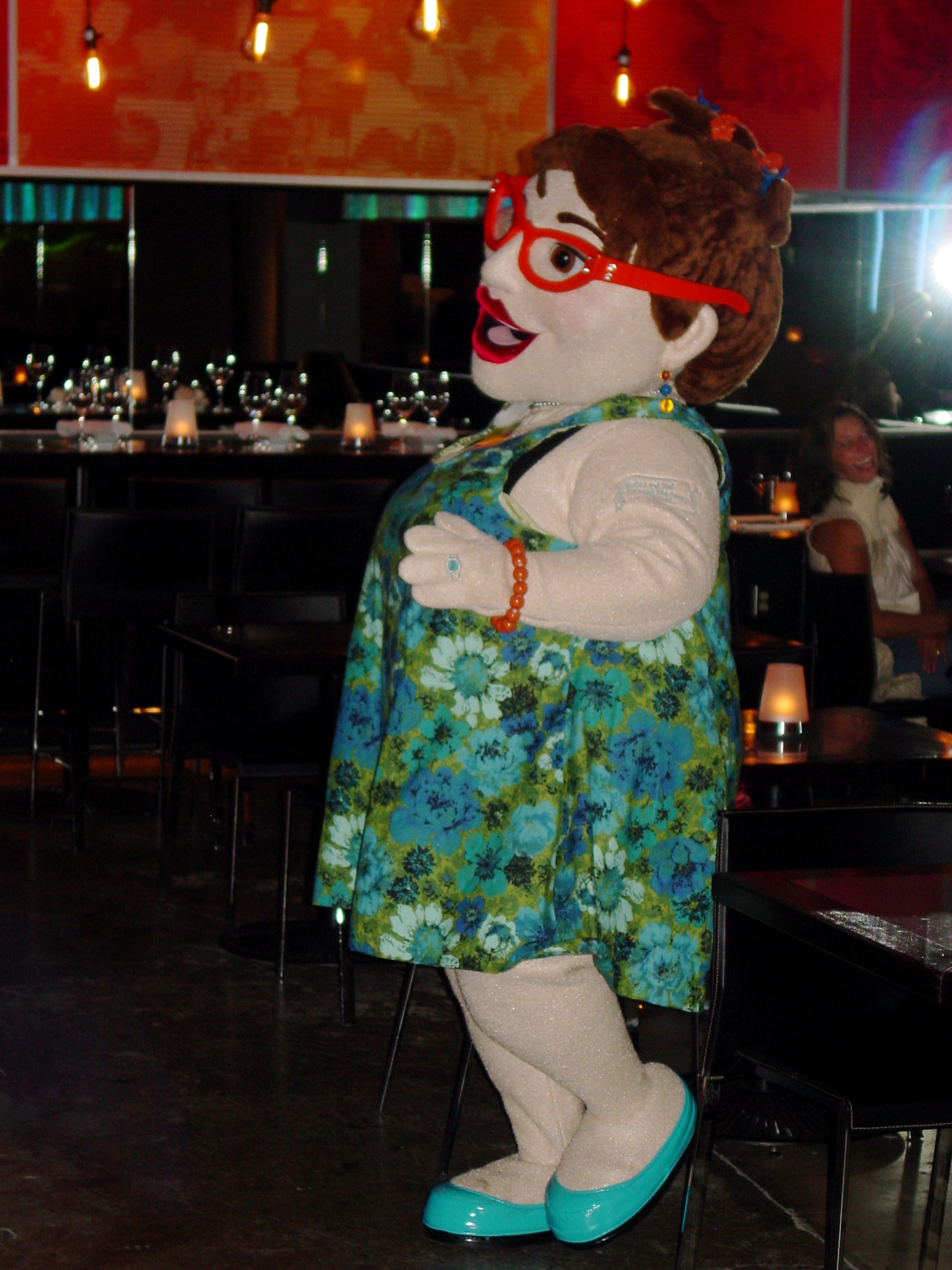
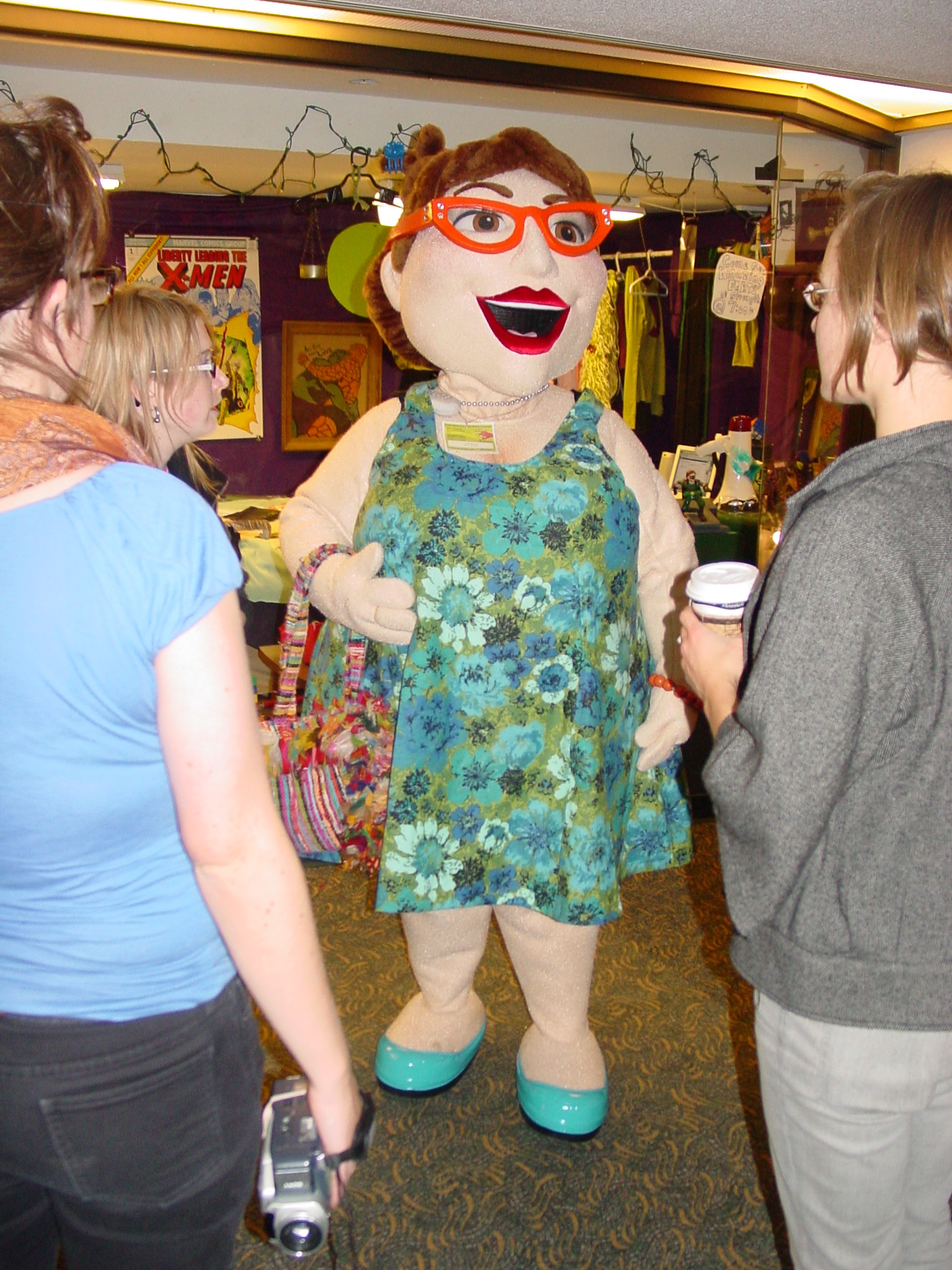
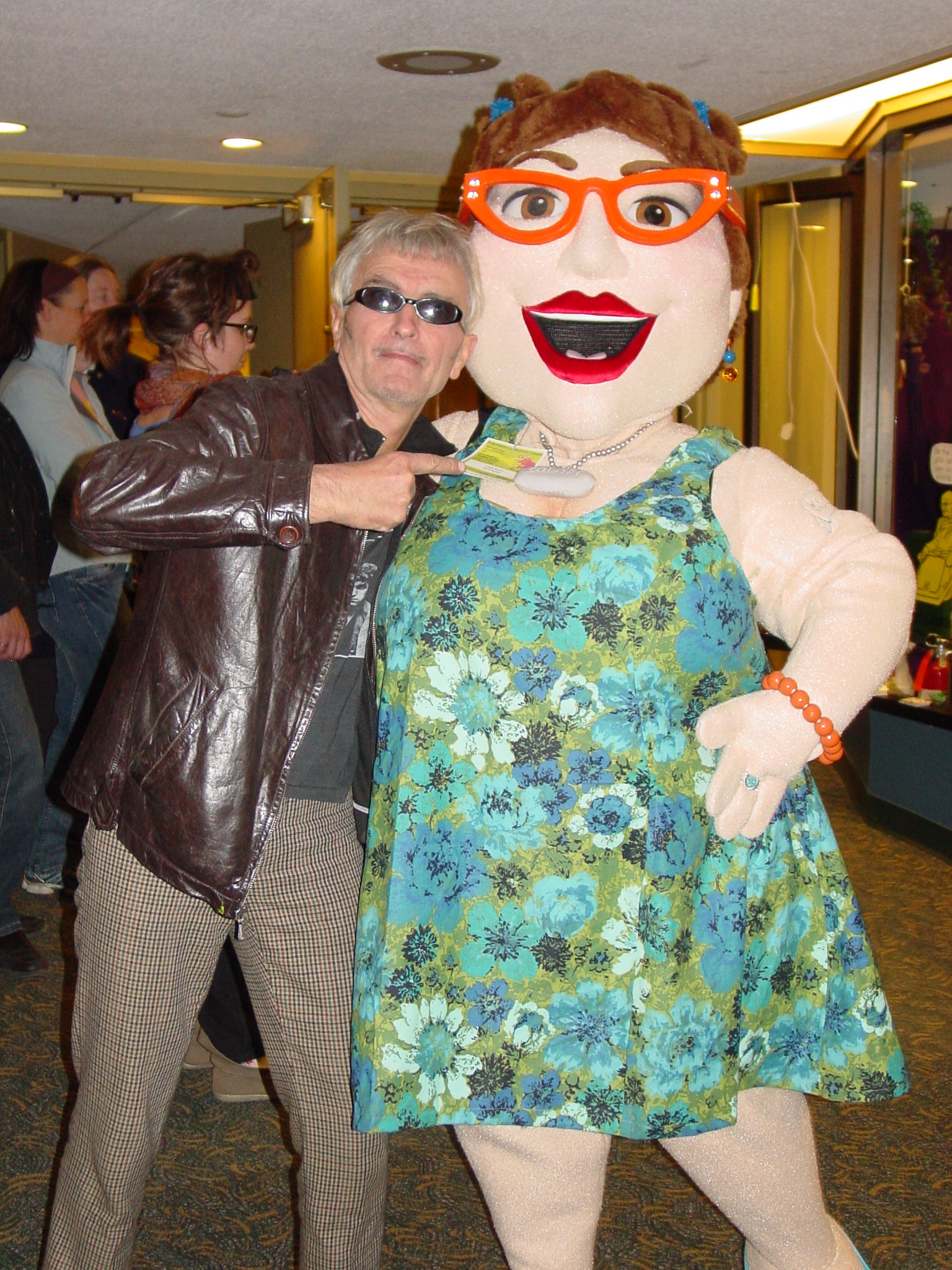


The Film Dioramas
Maria Raponi
December 2007 - January 2008

This installation involves several dioramas which reconstruct pivotal moments from classic films such as Hitchcock’s Vertigo and Amélie. The scenes are created to emphasize a particular perspective and all display an instant where paths are about to collide. The familiar characters are removed and the details are abstracted, reduced to bare elements. The remainder is a close study of the importance of setting in these essential moments in film and how the stories still seem to unfold when only place is left behind to tell the tales.
Currently (2008) living in North York, Ontario, Raponi completed her MFA at The School of Museum of Fine Arts in Boston. She has exhibited throughout Canada and the USA.
Currently (2008) living in North York, Ontario, Raponi completed her MFA at The School of Museum of Fine Arts in Boston. She has exhibited throughout Canada and the USA.
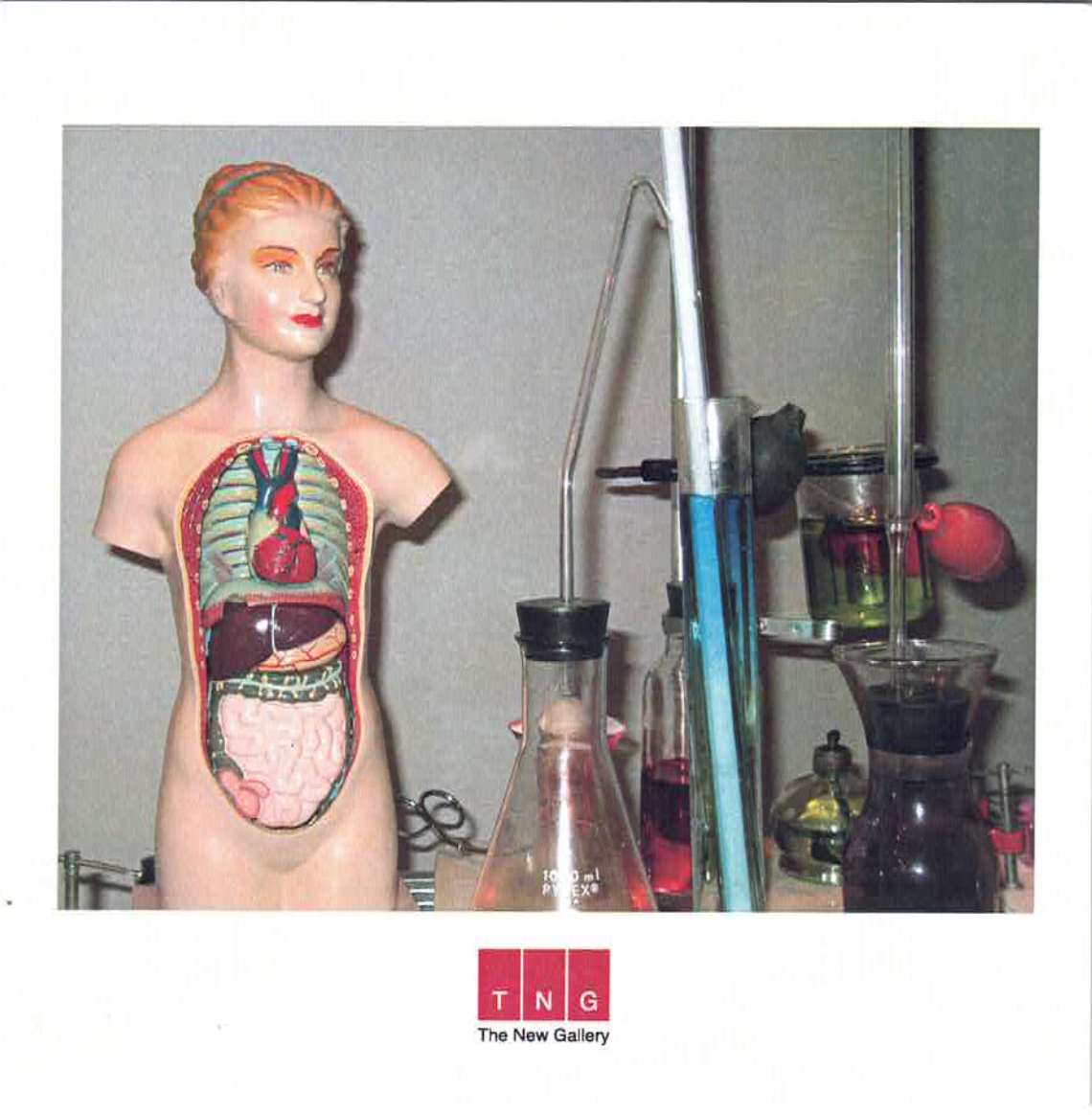
The Laboratory of Feminist Pataphysics
Mireille Perron
February 24 - March 31, 2007



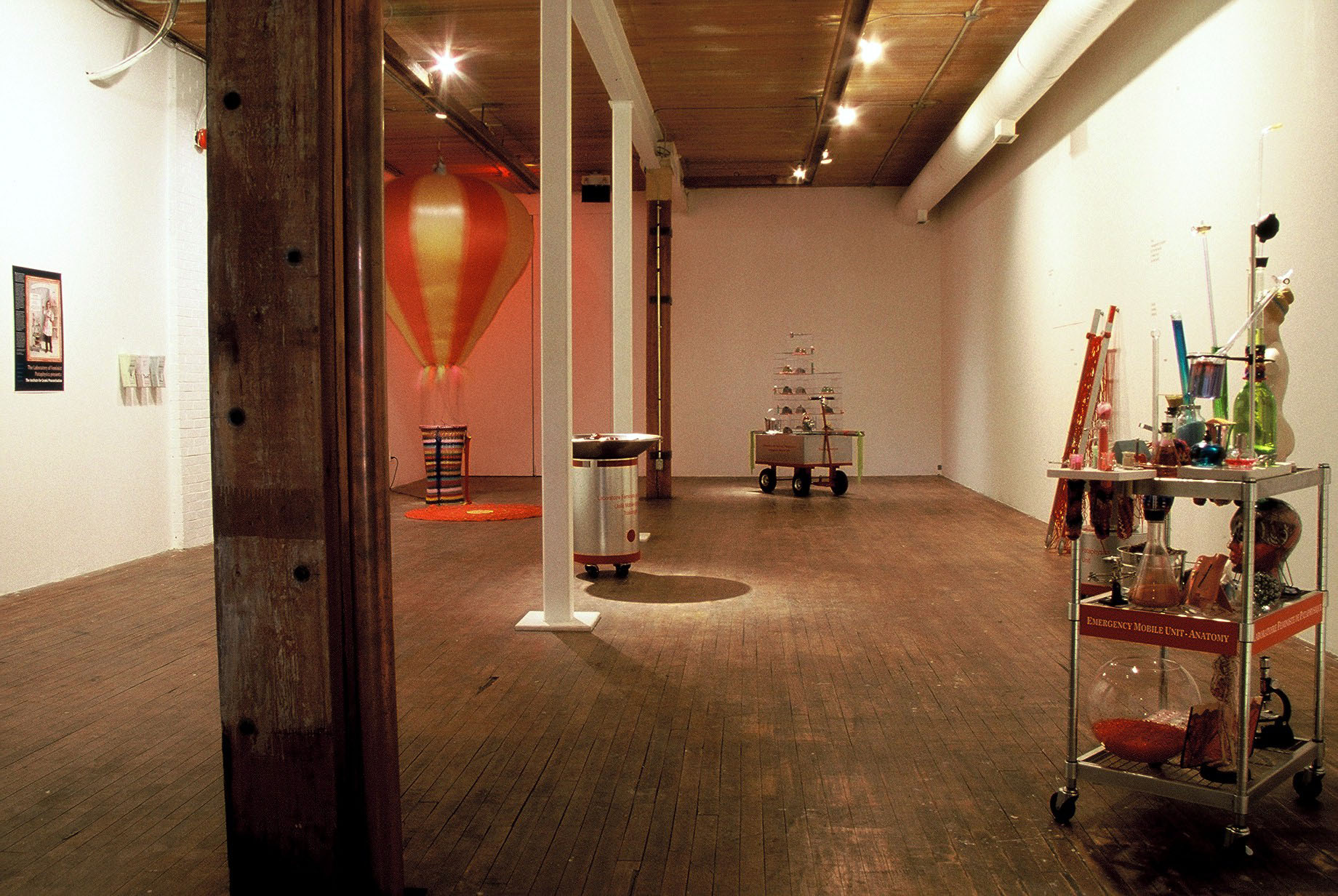

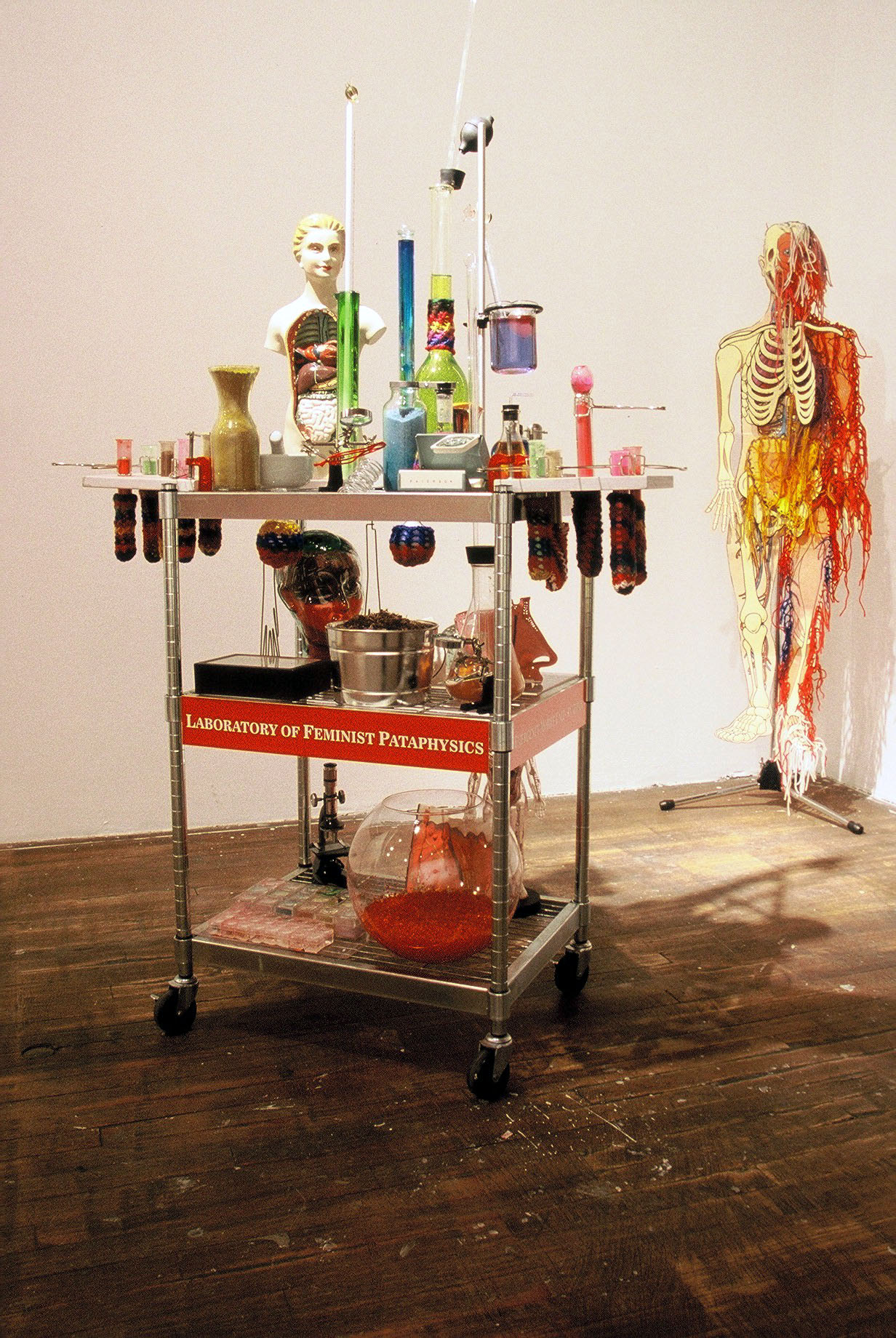



Presentation Speech by the Chairwoman of the Swedish Nobel Committee, Stockholm, December 10th, 2007.
Your Majesties, Your Royal Highnesses, Ladies and Gentlemen, welcome to this year’s special Nobel Prize Award ceremony.
This evening is marked by a special announcement of the first Nobel Prize in 40 years.[1] Tonight we will champion an undisciplined field that is much wetter behind the ears, but has already established itself in the worlds of science, culture, medicine, gender and visual arts. It derives its roots from Alfred Jarry, who invented and described Pataphysics as “the science of imaginary solutions.”[2] Since her productive insight into Feminist Pataphysics, just a few short years ago, “discoveries followed each other in rapid succession, and it was obvious that a new science was in course of development.”[3] The work of one intrepid researcher has defined this emerging field with outstanding feats of the feminist imagination.
Ladies and Gentlement, the first Nobel Prize in Feminist Pataphysics is awarded to Mereille Perron for her reinvention of gendered science through embodied fictional narratives. Congratulations!
APPLAUSE
The Laboratory of Feminist Pataphysics (L.F.P) has achieved a far-reaching impact by highlighting the practices of many Pataphysiciennes who have been neglected from conventional science for decades.
The L.F.P’s Emergency Mobile Units are wheeled sculptural interventions that careen their way across disciplines. Each one of the Units -- Anatomy, Identity, Transgenetics, Toxicology and Incorporation -- use their curious collections of narratives and objects, to re-inscribe institutional spaces as sites for sensual interaction. The L.F.P. has made another important contribution with the launch of three new auxiliary Institutes: The Institute for Confounding Pretension, The Institute for Cosmic Procrastination, and The Institute for Corporate Pudding (I.C.P.) Under Perron’s strong direction, the Institutes' unruly references to the natural world, the female body, fables and craftiness, interrupt the corporate spaces and power structures that often colonize the art world.
Despite their mimicry of institutionalized science and corporate cultures, each intervention of the Emergency Mobile Units and the work of each Institute refers to our infinite capacities for intimacy, imagination, sight, touch, taste and smell. Through her squishy, embodied approach to science, “we have gained new methods, infinitely superior in subtlety to any we had in this sphere.”[4] Perron’s practice re-appropriates ideas developed in artistic cultures and too often co-opted into corporate regulations, and critiques from within the institutions and the administrative structures that it wishes to transform.
It would behoove me to briefly introduce the meal in honour of tonight’s occasion. It was prepared in the spirit of the L.F.P. with “science, magic and cookery blended into one another with no formally distinguished limits.” [5] Perron’s menagerie of sugared fishy-bits, gelatin lagomorphs and mammalian genital confections is the inspiration for our special culinary selections. We present an edible replica of the Transgenic Unit’s fluorescent bunny: a mint julep gelatin bunny atop a crocheted lattice of caramelized sugar for your delectation. In honour of the new Institute for Corporate Pudding, our chefs have also attempted the first pudding made of beavers’ testicles: only under extreme pressure do the molecules from this homogenous pudding, a process “which we might well call the chemistry of the imponderable”. [6] Finally, we will be paying homage to two early Feminist Pataphysiciennes Shawna Dempsey and Lorri Millan, by serving vagina shaped chocolate cakes, [7] with shoelace licorice twirls.
“I beg you, Madam [Perron], to see in this circumstance a proof of the importance which our Academy attaches to your most recent discoveries, and I invite you... to receive the price from His Majesty the King, who [will] present it to you.”[8]
+++
Mirielle Perron, Nobel Prize in Feminist Pataphysics Lecture/Intervention, Stockholm, December 2007.
Your Majesties, Your Royal Highnesses, Ladies and Gentlemen,
By way of accepting this great honour, I would like to simply extend an invitation for the distinguished guests to watch for the members of the L.F.P. who are roaming the reception for new recruits. As many of you know, Mary Poppins [9] is an honorary Feminist Pataphysicienne credited with the development of an eco-friendly, lighter-than-air locomotion. [10] Yes, my dears, in the spirit of Poppins, it is time to conjure your joie de vivre and throw this “culture of caution” to the wind!
Thank you, but we must not delay. Goodnight!
+++
Mme. Mireille Perron and the members of the L.F.P. leap into their fleet of knitted escape pods (sponsored by the Institute for Cosmic Procrastination,) inflate the hot air balloons, and leave the reception through the skylight of the reception hall.
- Anthea Black 2007
[1] Actually 39 years! But what’s wrong with a little creative diction? “The Nobel Prize Award Ceremonies and Banquets,” http://nobelprize.org/award_ceremonies/history.html
[2] Mireille Perron, “History,” Laboratory of Feminist Pataphysics.
[3] Marie Curie, Nobel Lectures, Chemistry 1901-1921, Elsevier Publishing Company, Amsterdam, 1966.
http://nobelprize.org/nobel_prizes/chemistry/laureates/1911/marie-curie-lecture.html
[4] Dr.H.R.Törnebladh, Nobel Lectures, Physics 1901-1921, Elsevier Publishing Company, Amsterdam, 1967.
http://nobelprize.org/nobel_prizes/physics/laureates/1903/press.html
[5] Felipe Fernández-Armesto, Near a Thousand Tables, A History of Food. Toronto, Free Press, 2002, p.119.
[6] Marie Curie, ibid.
[7] Mireille Perron, Feminists, Colporteu(r)ses and Pataphysicien(n)nes, Culture of Community, Ed. Vera LeMecha, MAWA, Mentoring Artists for Women’s Art, 2004, p.80.
[8] Dr. E.W. Dahlgren, Nobel Lectures, Chemistry 1901-1921, Elsevier Publishing Company, Amsterdam, 1966.
http://nobelprize.org/nobel_prizes/chemistry/laureates/1911/press.html
[9] MP < = > MP. For the origins of this formula, please see JB < = > JB, the work of a brilliant Feminist Pataphysicienne, Joanne Bristol.
[10] Poppins’ use of an umbrella preceded the knitted escape pod.
[11] Chris Creighton-Kelly describes “bureaucratic culture and its habits” as a “culture of caution.” Chris Creighton-Kelly, “bleeding the memory membrane, Arts Activism and Cultural Institutions, “Questions of Community: Artists, Audiences, Coalitions, Eds. Daina Augaitis, et al. Banff Centre Press, 1998. p.107-8.
Biographies
Mireille Perron was born in Montréal, Québec. Since 1982, her installations have appeared in solo and group exhibitions in Canada, the United States, France, the United Kingdom, and Italy. Her work explores the connections between gender, culture, visual arts, science and medicine. She has also written and published critical essays on a variety of subjects related to representation. Recent examples of the range of her work includes, Les Belles Ratoureuses/ The Beautiful Pranksters, curated by Christine Sowiak Nickle Arts Museum, 2000, an installation at the crossroads of medical, sensual and a critical imagery and an essay titled Feminists, Colpoteu(r)ses and Pataphysicien(n)es published in the anthology Culture of Community, edited by Vera Lemecha, MAWA, 2004.
Mireille Perron lives and works in Calgary, Alberta where she teaches at the Alberta College of Art and Design.
Anthea Black is an artist and art writer based in Calgary. She is an honourary member of The Laboratory of Feminist Pataphysics.

Mountain Standard Time Performative Art Festival
Scentbar: Fragrances for Troubled Times
Shawna Dempsey and Lorri Millan
October 3 - 6, 2007
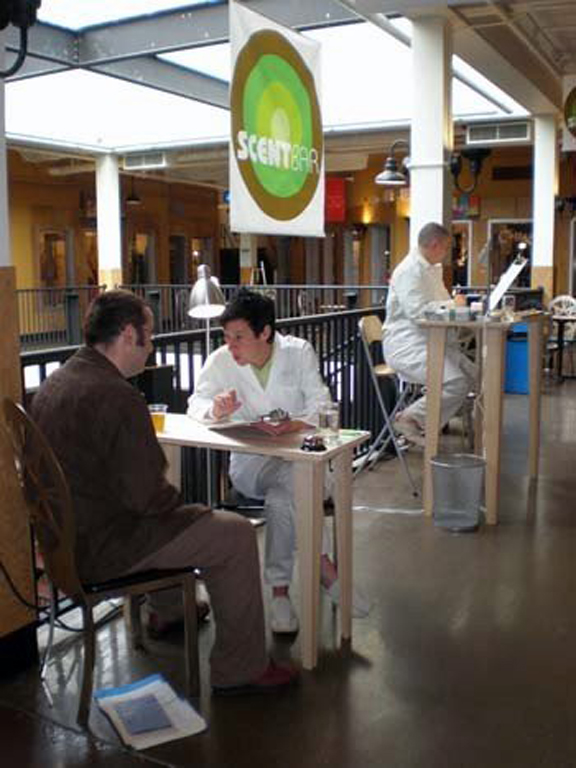

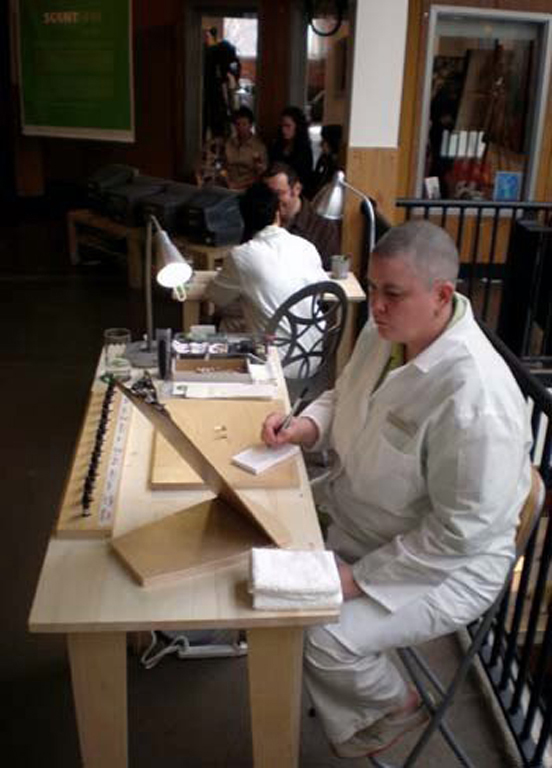
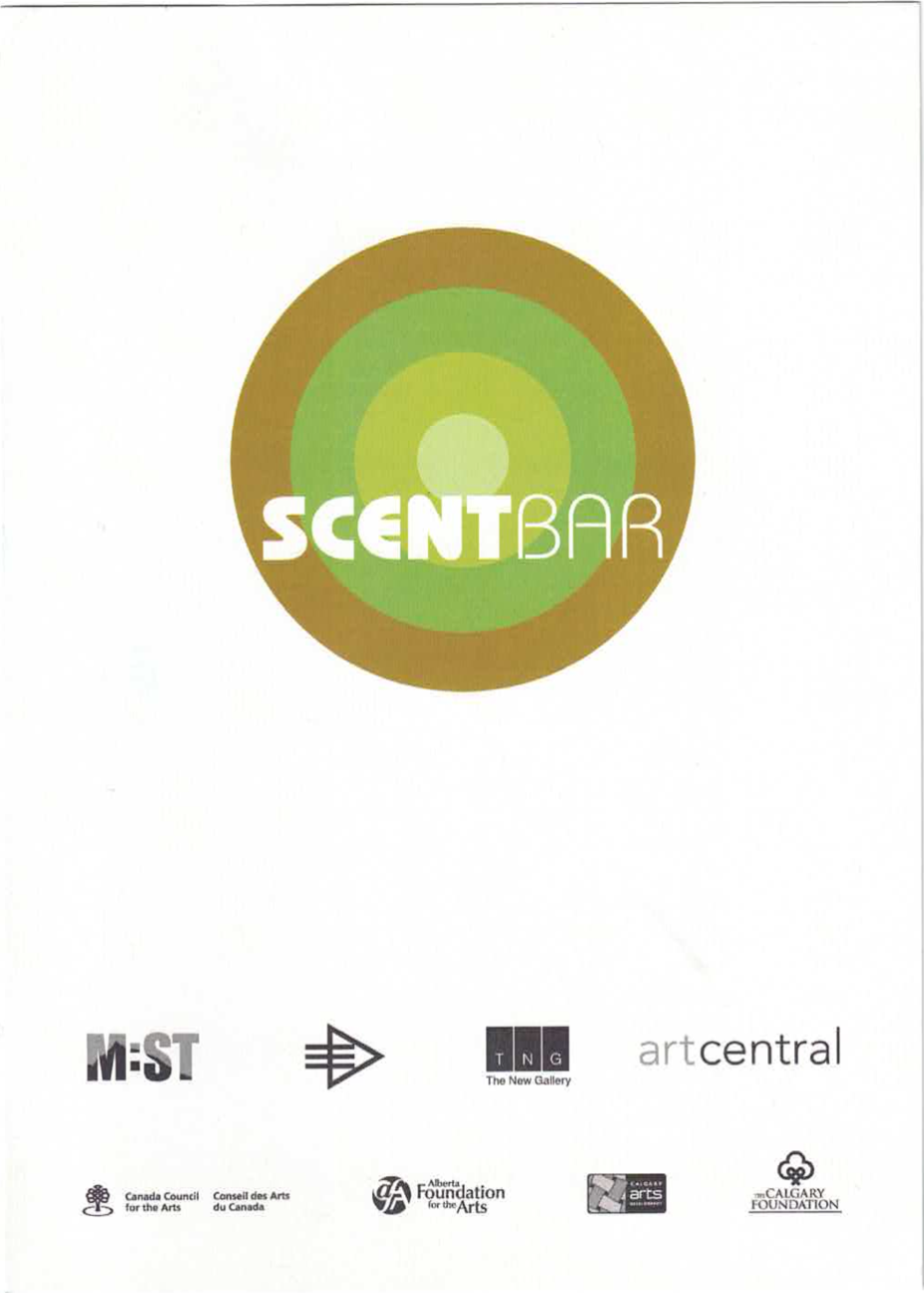

Unnatural History
Ryan Wolters
April - May, 2007


A Chance of Circumstance
Shawna Reiter
June - July, 2007
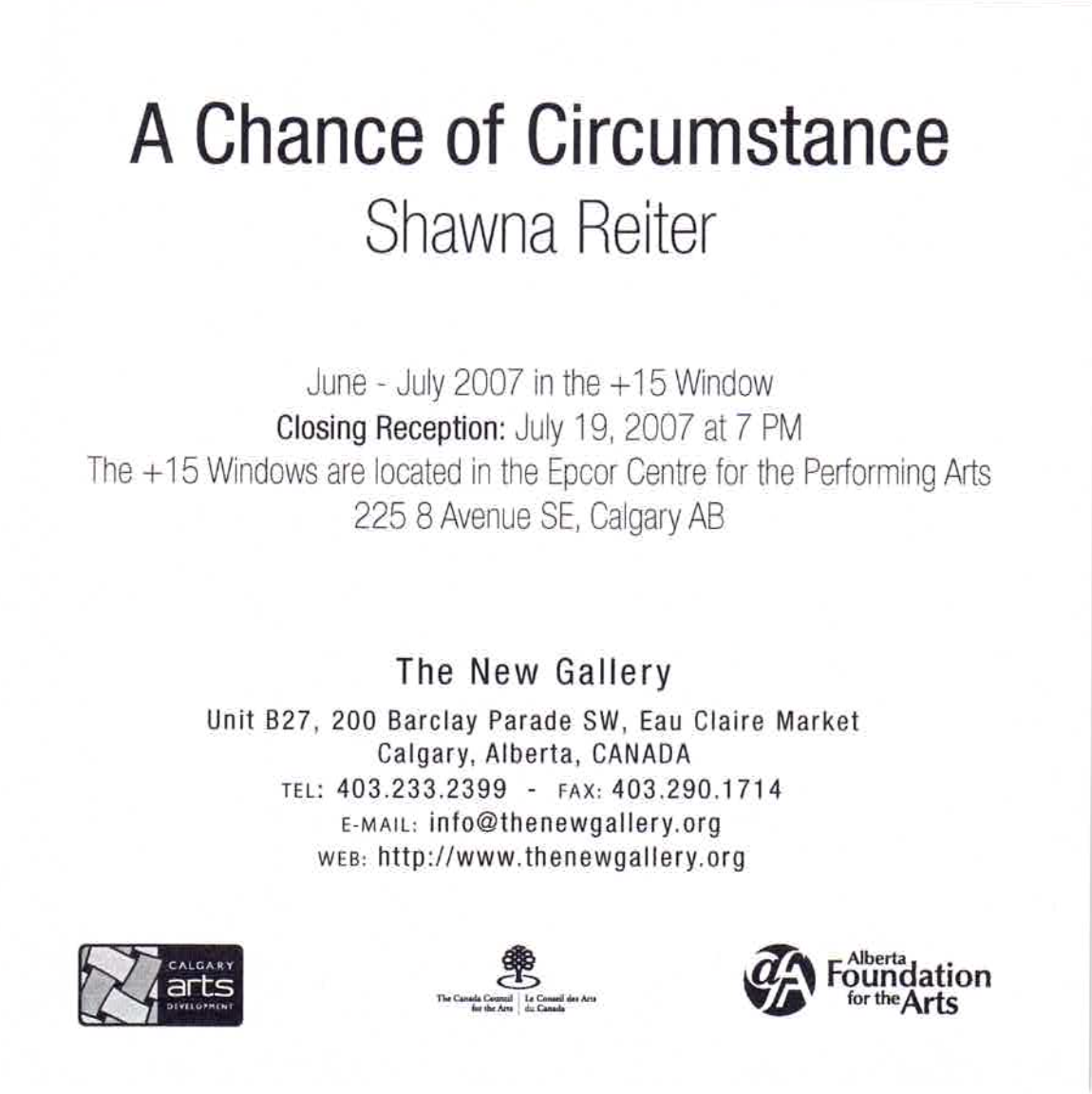

When We Are One
Masks, Regalia and Art of ‘Ksan juxtaposed with photos of Tsimphsian village life in Hartley Bay
Presented as part of The International Festival of Animated Objects, January 19 - 28, 2007
+15 Window Project Space
December 2006 - January 2007
An Exhibition of the Masks, Regalia, and Art of ‘Ksan juxtaposed with photos of Tsimphsian village life in Hartley Bay.
Three figures pose questions of faith, spirituality and daily lise in reference to Contact. Photos by Sean Dennie, masks and regalia courtesy of ‘Ksan Performing Arts. www.ksan.org
‘Ksan Performing Arts is a Gitxsan mask dance troupe from Hazelton BC. ‘Ksan performed their traditional mask dance “Breath of Our Grandfathers” in “Our Traditions” presented by Enbridge on January 25 at 7:30 pm, Jack Singer Concert Hall. Sean Dennie is a freelance photographer based in Calgary.
Presented as part of The International Festival of Animated Objects January 19-28, 2007.
The International Festival of Animated Objects gratefully acknowledges the support of Enbridge Canadian Heritage, the Alberta Foundation for the Arts, the Alberta Foundation for the Arts Community Initiatives Program, the Canada Council for the Arts, the Calgary Arts Development Authority and Wandering Spring.
Presented in association with: Stride Gallery, The New Gallery and TRUCK Gallery


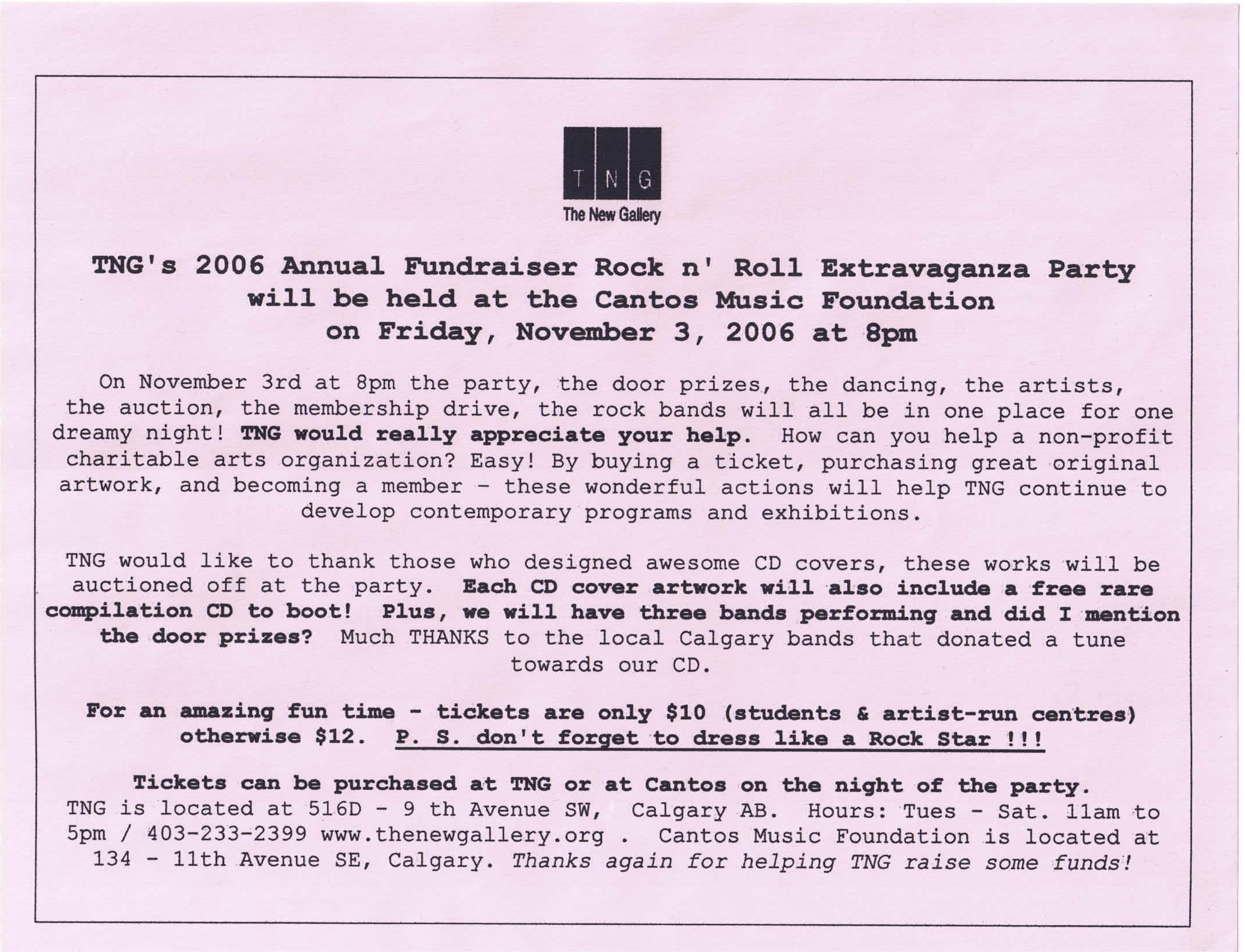
2006 Annual Fundraiser Rock n’ Roll Extravaganza Party
Cantos Music Foundation
November 3, 2006


Lucy and Sartre
Jason W. Fowler Fitzpatrick
March 25 - April 23, 2006
‘There is neither fate nor misfortune, but forces to overcome.’ -Niurgun Bootor, Siberian folk hero
At the end of Roman Polanski’s film The Pianist (2002) we see the protagonist disappear from view into the detritus of what was once Warsaw. A similar passage inThe Rings of Saturn by the late German author W.G. Sebald recounts an anecdote about the reconstruction of German cities in the immediate aftermath of the Second World War. Salvageable bricks were collected from the bombed-out debris and systematically stacked amidst the refuse in perfect piles of a thousand, the one-thousandth brick positioned on end atop each pile denoting its finally tally.
Jason Fitzpatrick’s work addresses notions of ruination peripherally. Through an interactive process of establishing and refining spatiotemporal boundaries his work seeks to encompass the act of constructing and reconfiguring a place within the gallery where,for all intents and purposes, the activity of work itself is displayed and disseminated. Sculptural and performative interventions are orchestrated to harness, reorder and rebuild a kind of surrogate habitat. In this manner the very process of labour yields a sculptural environment in perpetually sustained rather than suspended animation.
This is poignantly addressed in the ongoing work entitled Sartre (2001), through the artist’s initiative of sending additional bricks to the gallery for the duration of the exhibition to be added to the installation in his absence. Rather like pieces salvaged from analogous ruins located elsewhere, the bricks become the physical manifestation of their own metaphoric transformation.
Fitzpatrick’s continual envelopment of the gallery and its occupants in a work entitled Lucy (2004) invites comparison with the various tent-like dwellings of nomadic peoples across the globe, thereby invoking a survival strategy for proposing alternate modes of aesthetic contemplation.
True metaphors are spatial in that they literally encompass the trajectory along which meaning is rendered manifest. What this in turn suggests is that work itself, this traversing from one orientation to another, is vital to the unveiling of metaphor. In Polanski’s film the aftermath of destruction is precisely that which sustains metaphor. The ruin as metaphor will generate scenarios for building anew because vision itself cannot be sustained without the apperception required to evoke change. In other words,metaphor is the phoenix that will precipitate the resurrection of ruinous structures.
Human enterprise invariably employs aesthetics to recover from catastrophe. The building of a tower of bricks, not unlike Inukshuks, grave markers or temple mounts, serves as both physical marker and visual testament to the potential for metaphoric regeneration. These traces of human endeavor culminate in the Great Wall, witnessed from a lunar vantage point, like a geographical scar on the earth’s surface.
Jason Fitzpatrick’s work invites these interpretations, by surpassing the inherently corporeal negotiation of space and time, and addressing the specifically peripatetic nature of inanimate bodies existing in tandem with bodies proper. Healing, usually thought of as a process of physical or psychological renewal or regeneration, might here be more generously reinterpreted as the means by which ethically conscious aesthetic action is both possible and sustainable.
- Roy Meuwissen
Jason W. Fowler Fitzpatrick
Jason Fitzpatrick graduated in 1993 with a Bachelor of Fine Arts from the Nova Scotia College of Art and Design in Halifax, Nova Scotia. A resident of Saint John, New Brunswick from 1996 to 2000, his work appeared in several exhibitions across Canada and was active in co-founding an artist-run centre. Jason moved to Vancouver in 2000 to pursue an Independent Research Grant (New Brunswick Government) and co-founded 536 Arts Society. In April 2004 Jason Fitzpatrick received a Masters of Fine Arts from the University of Windsor. Presently (2006) Jason Fitzpatrick lives and works in a studio in downtown Vancouver, is on the board of Access Artist Run Centre and is working on solo exhibitions in Vancouver, Alberta, New Brunswick and Ontario.

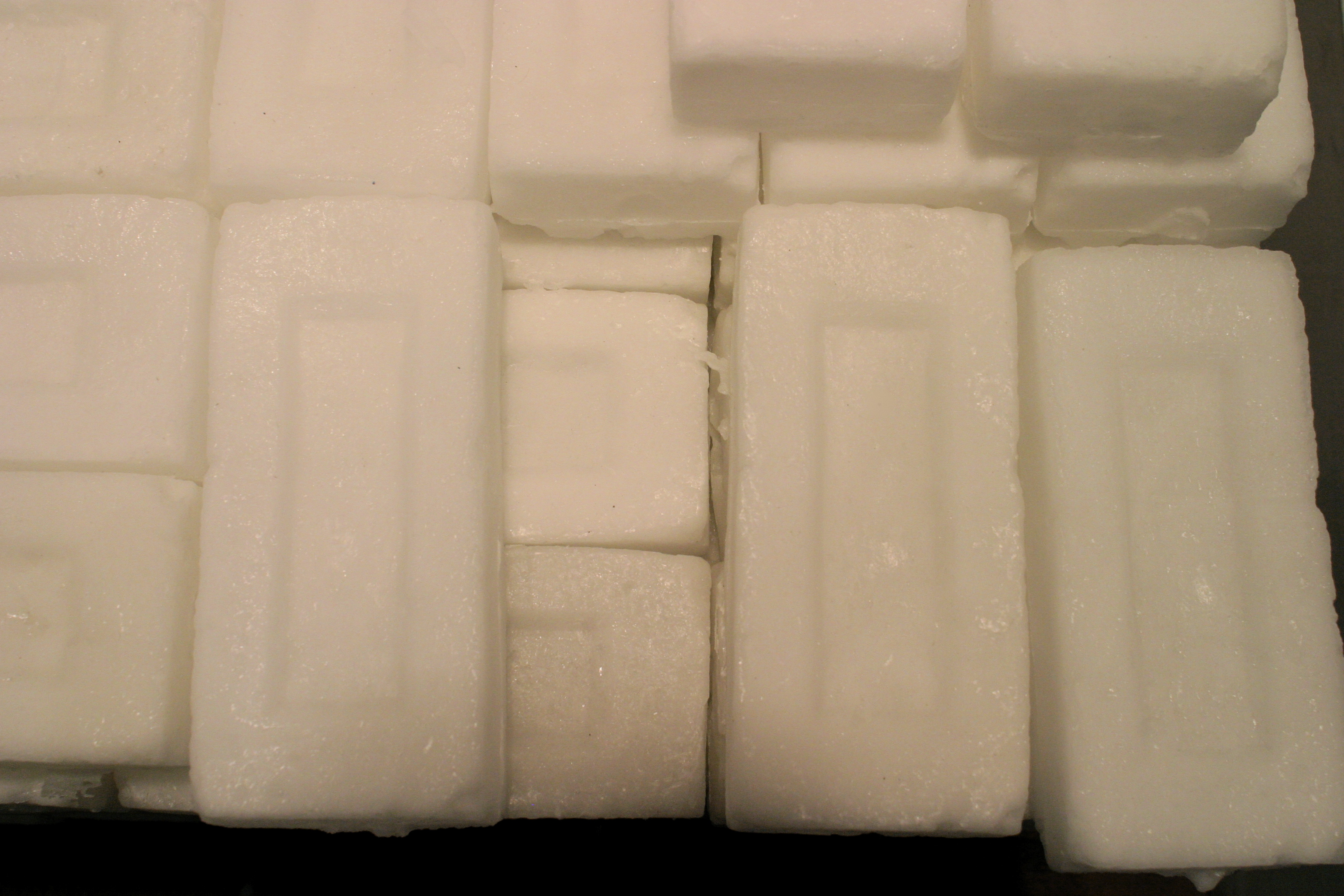
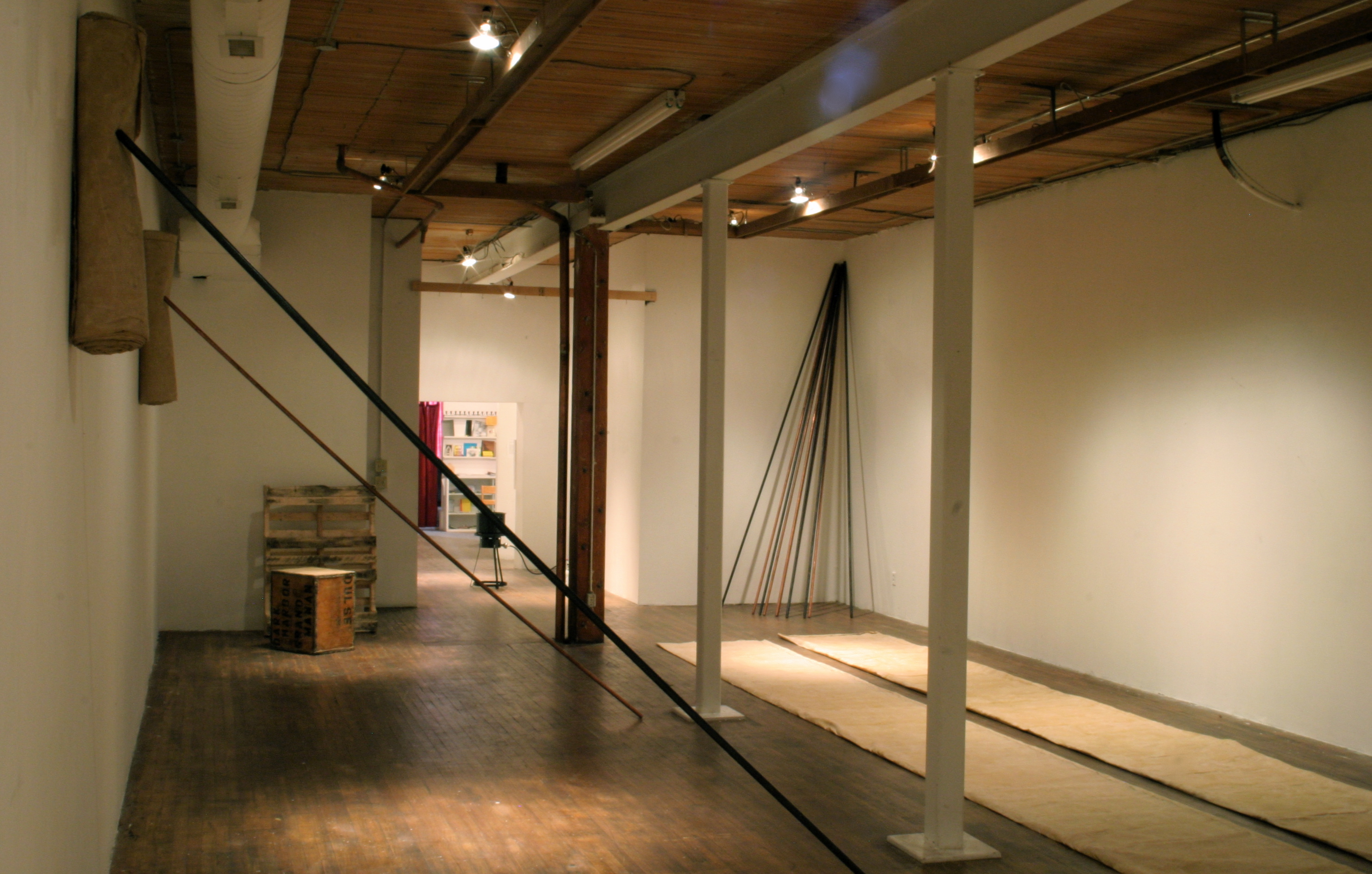
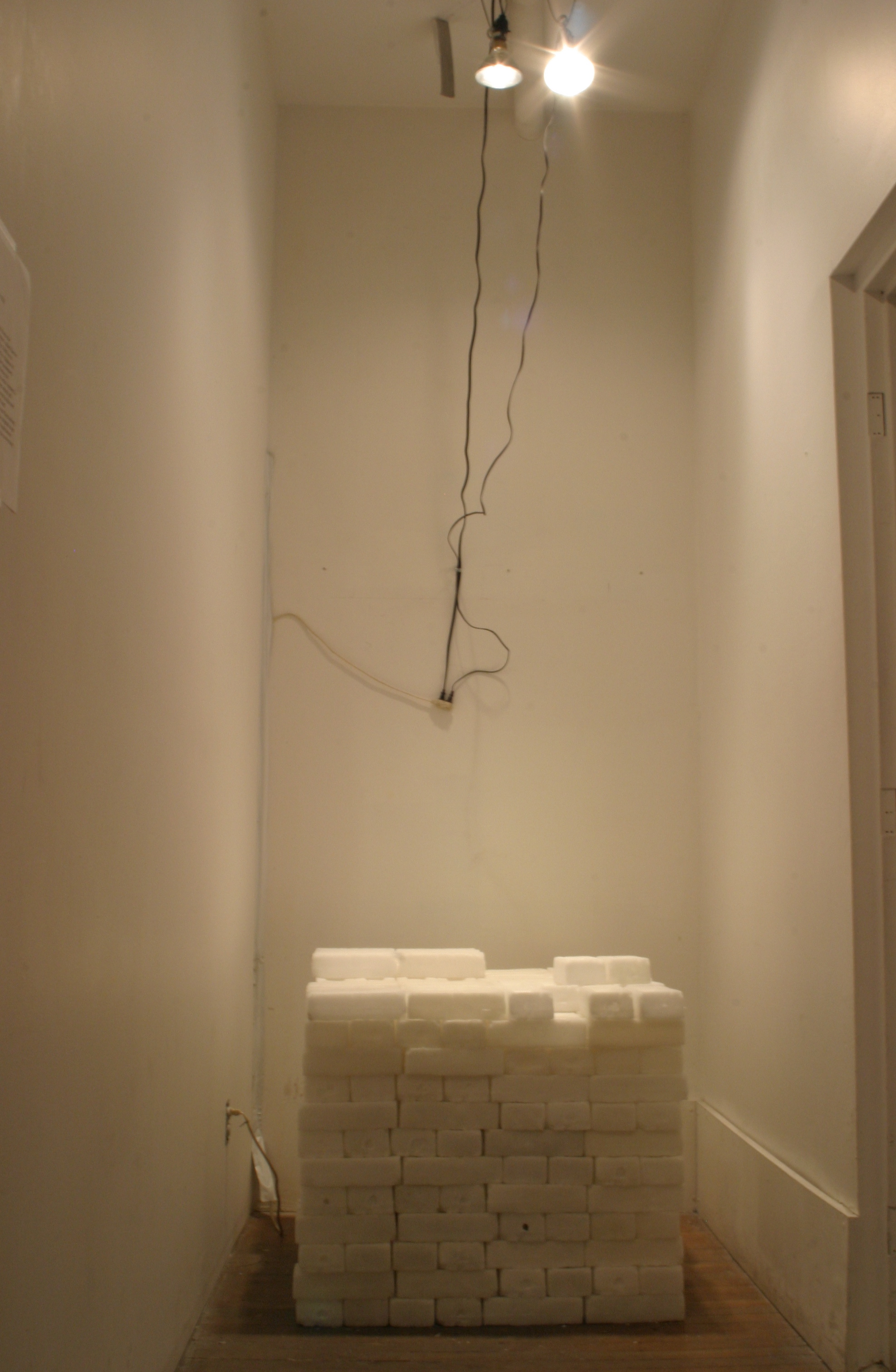
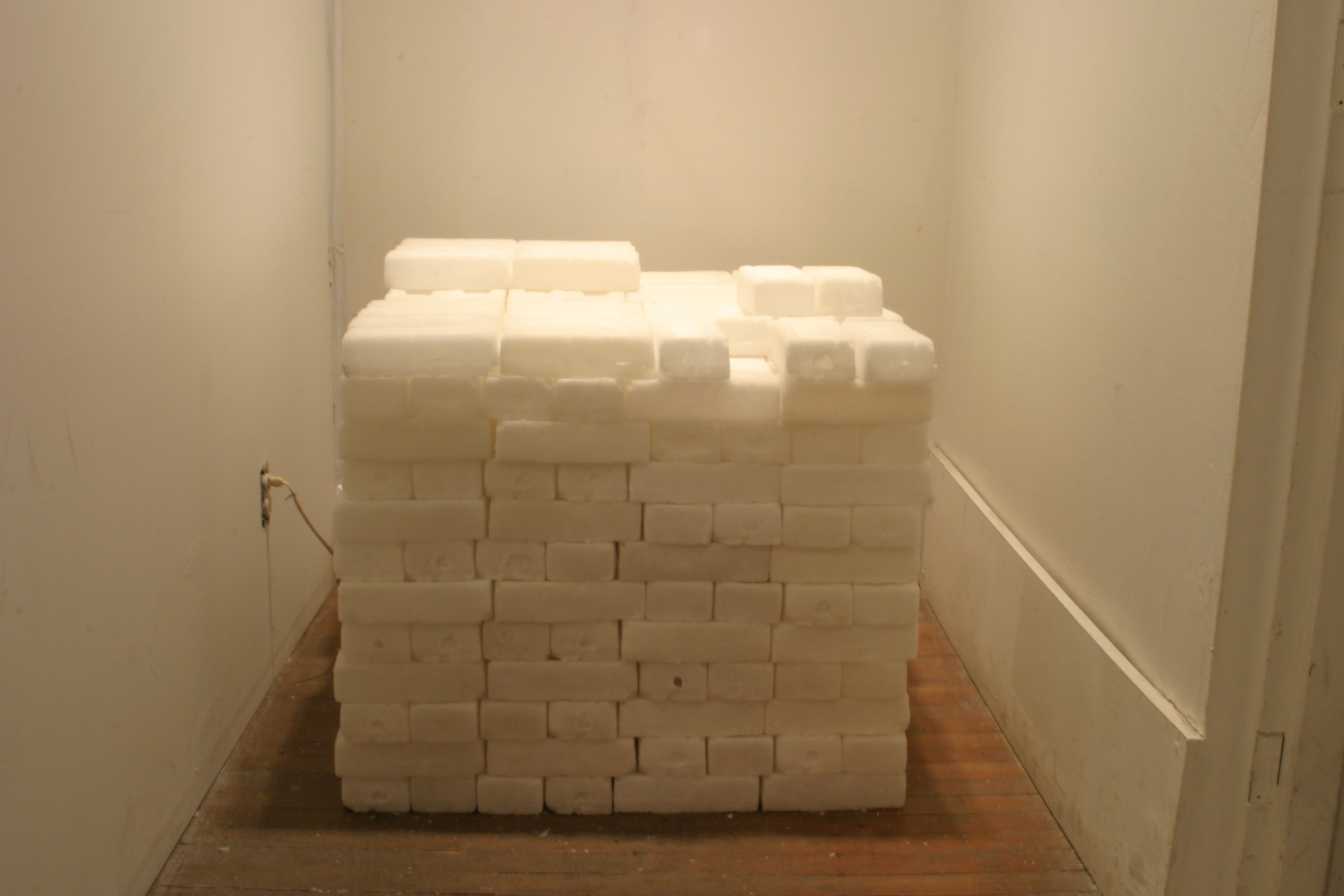


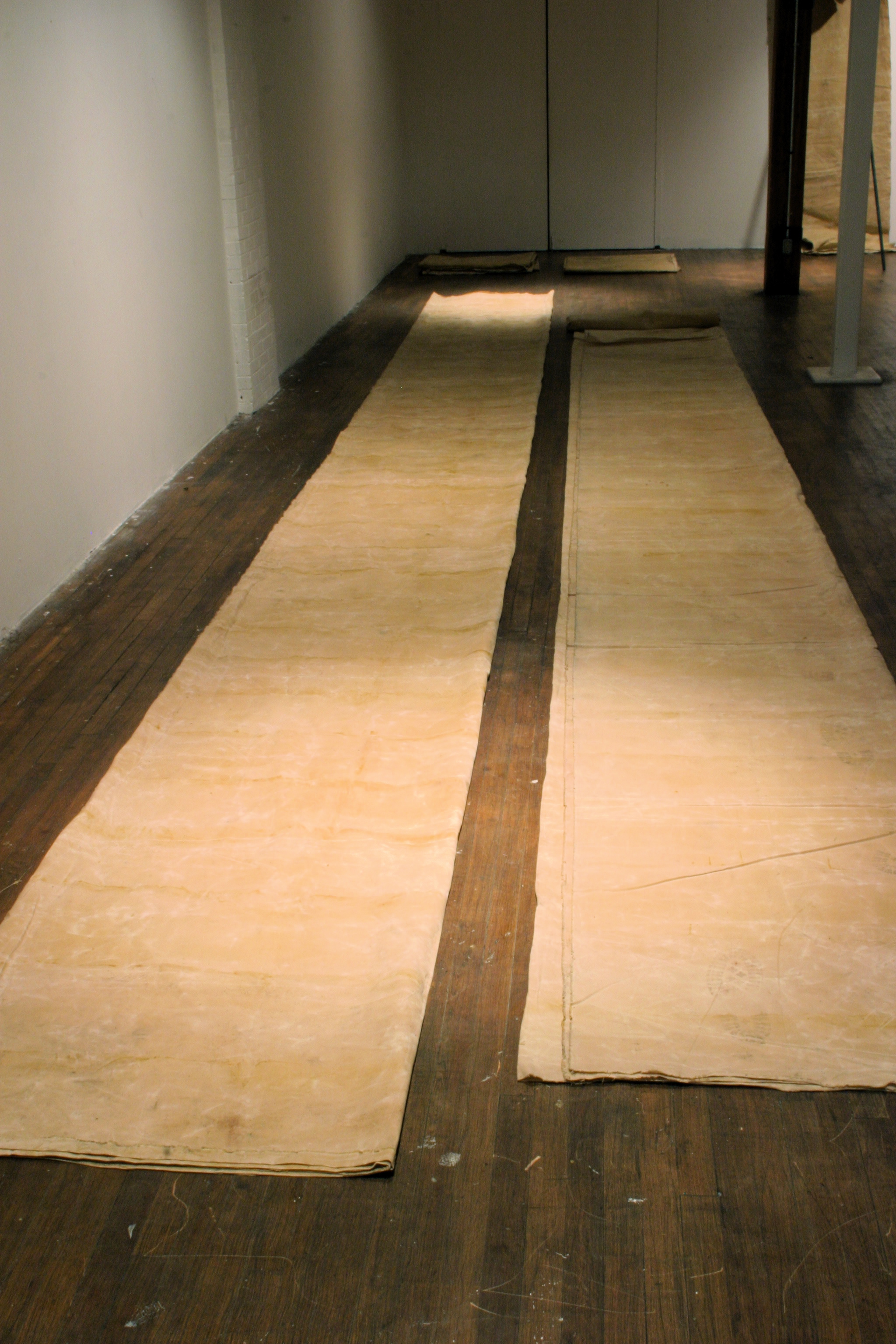
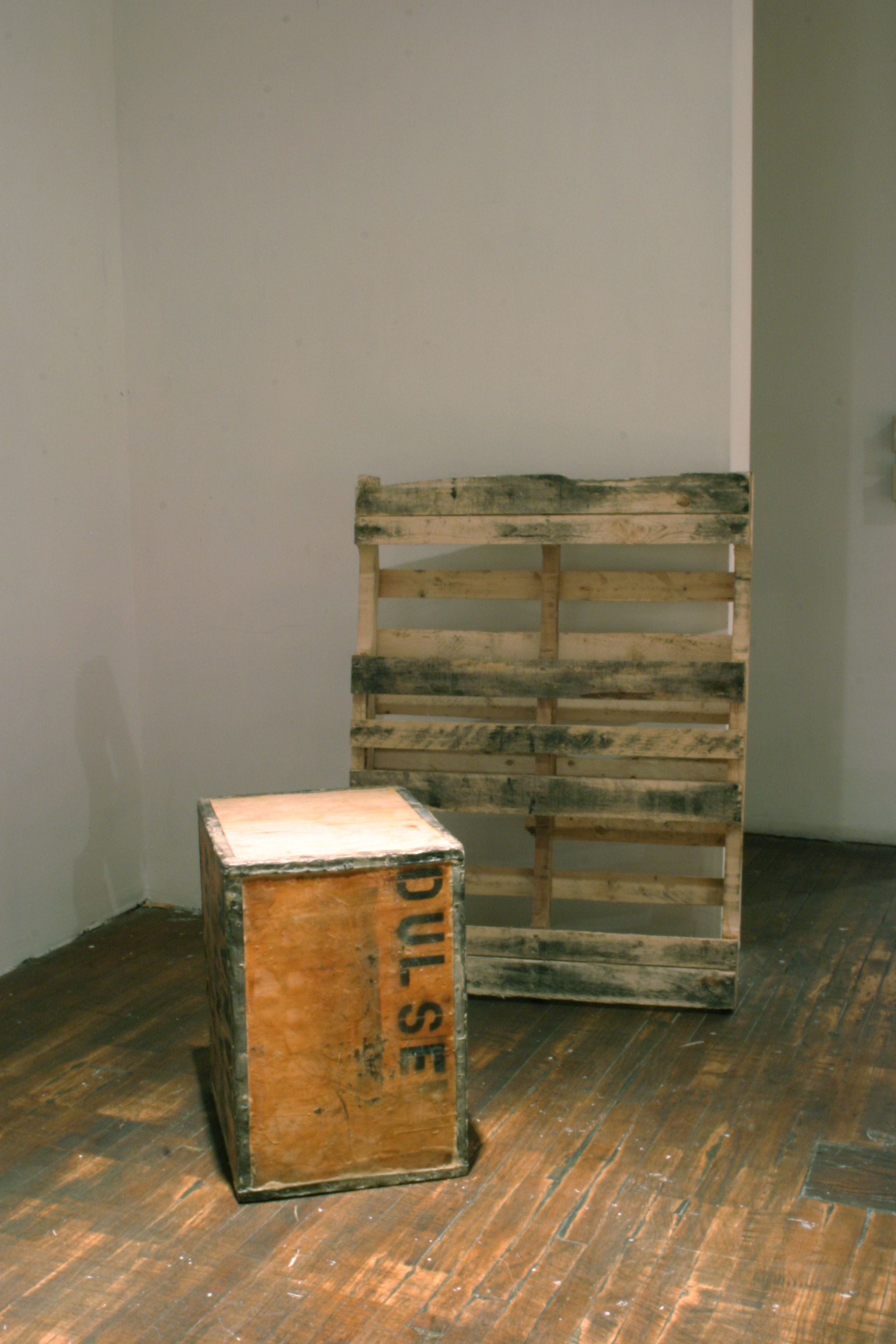
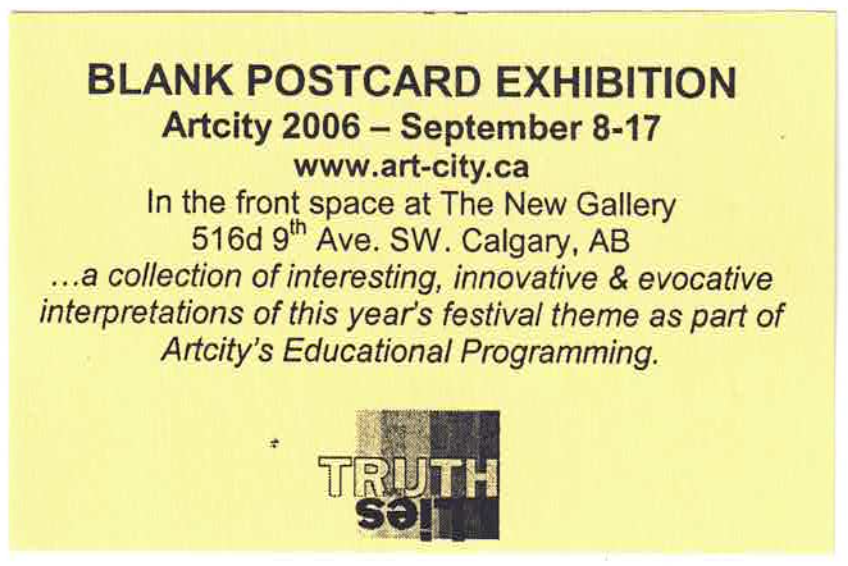
Blank Postcard Exhibition
Artcity 2006
September 8 - 17, 2006
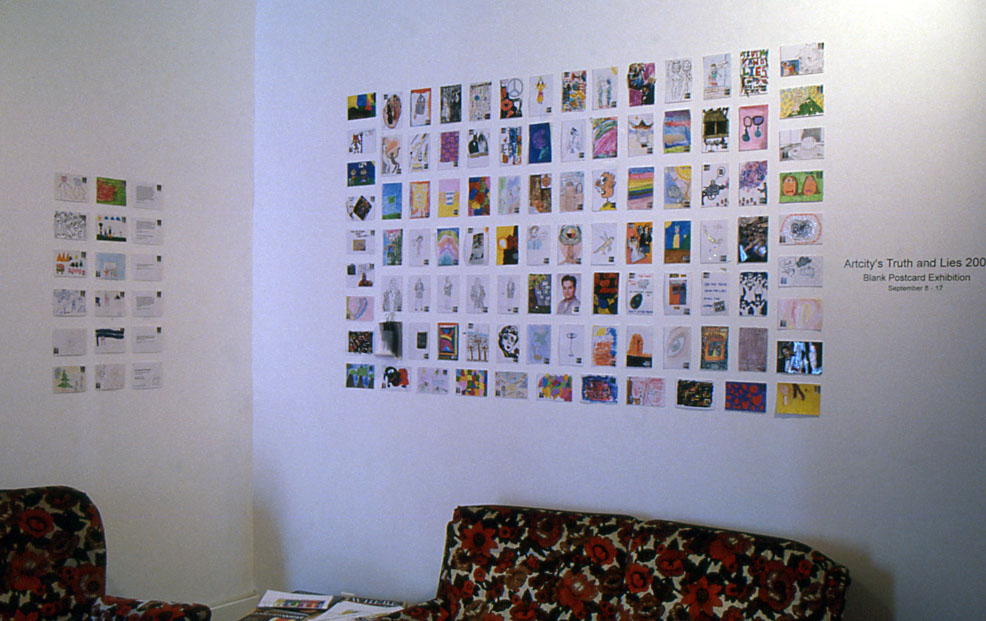



Sisyphus
The WhiteBoxPainters
Brent Budsberg, Mark Escribano, and Shana McCaw
September 9 - October 7, 2006

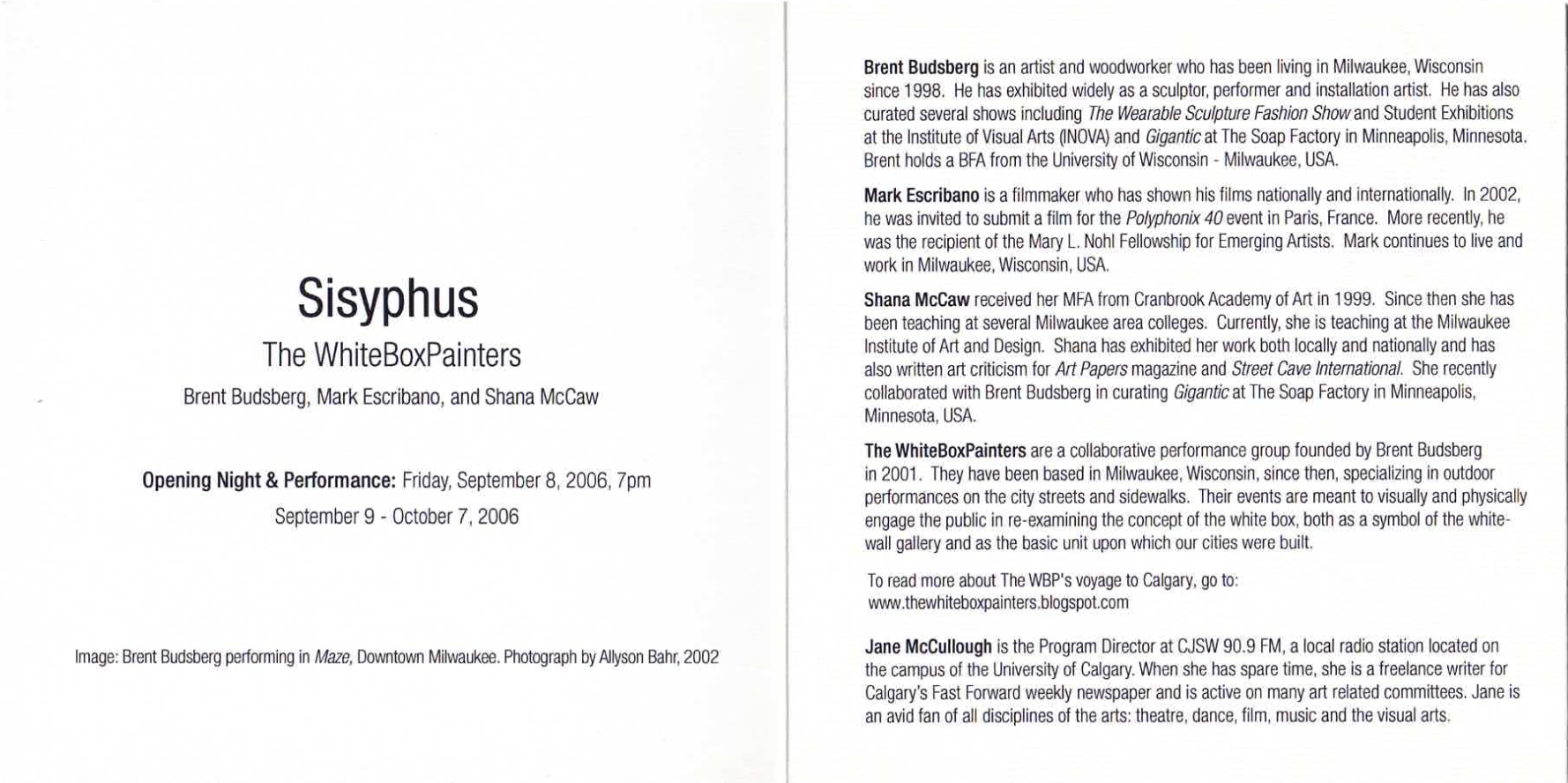


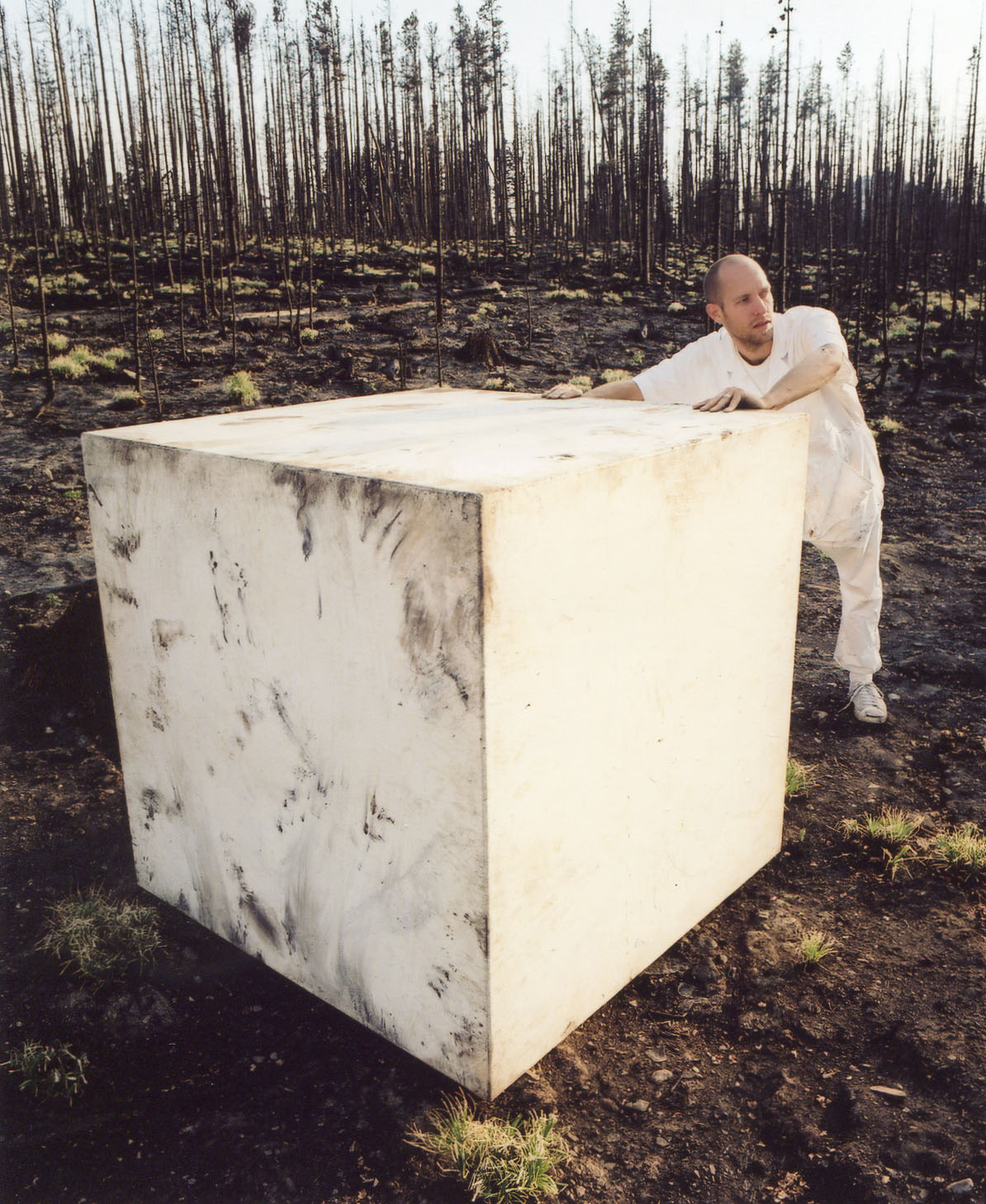
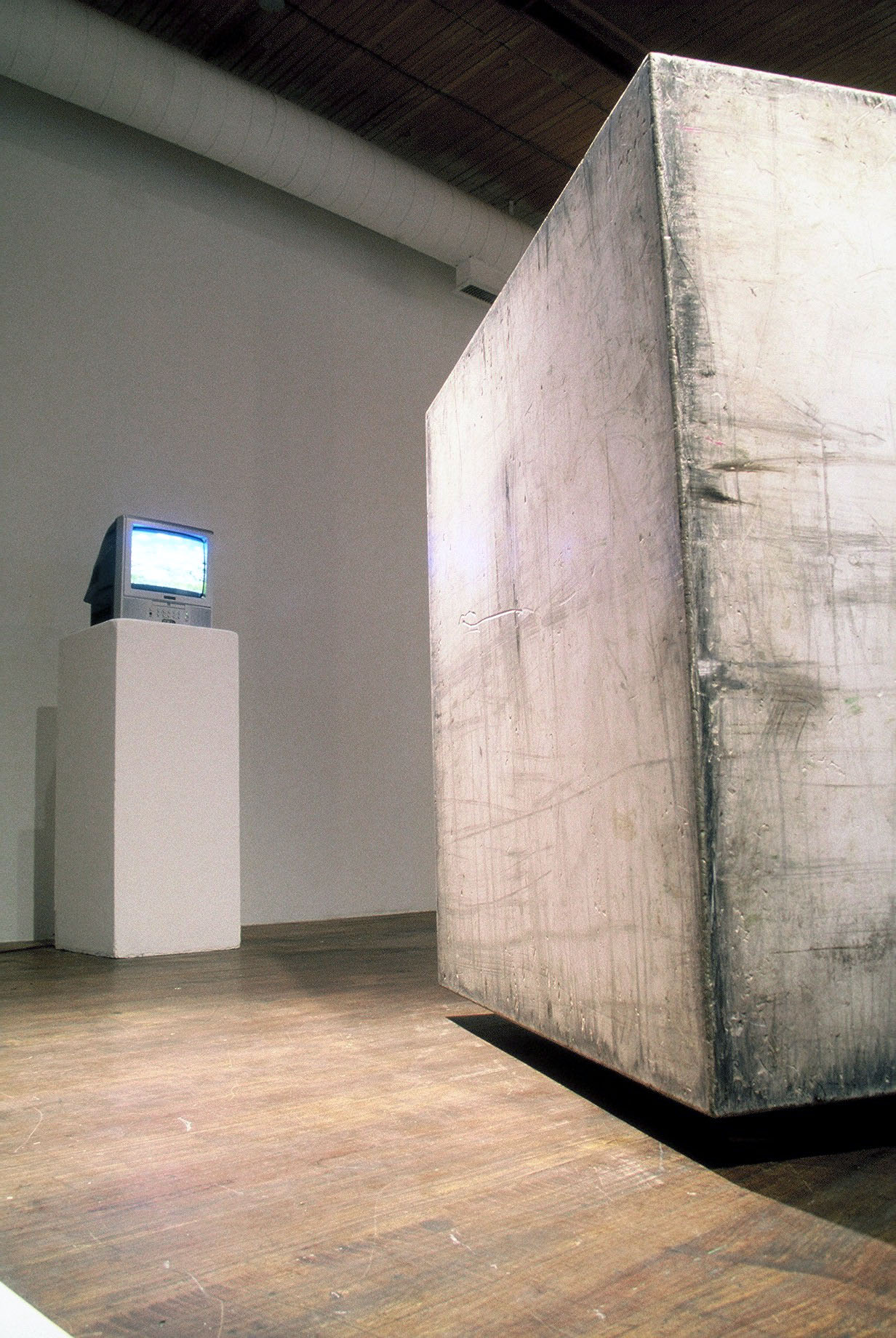


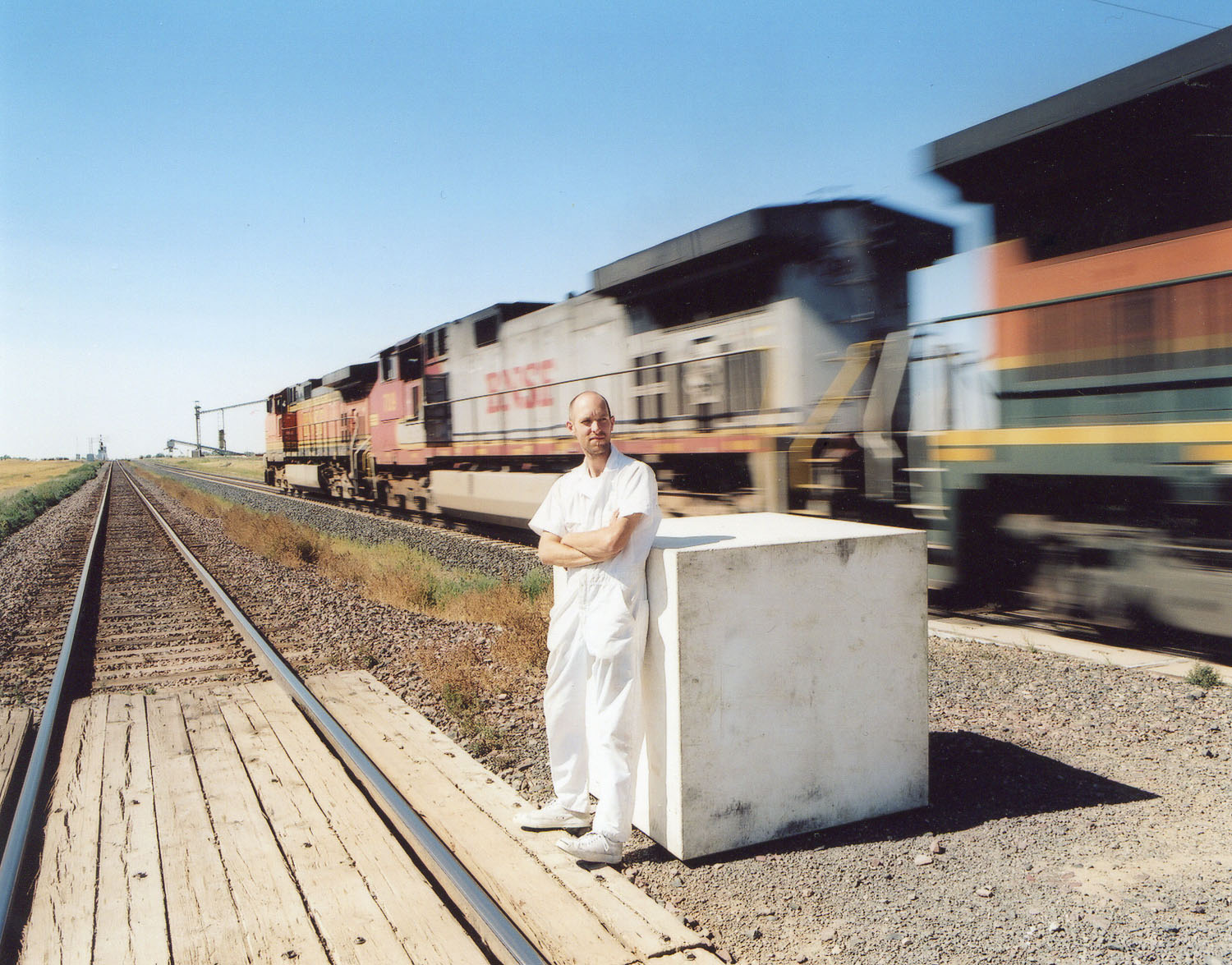
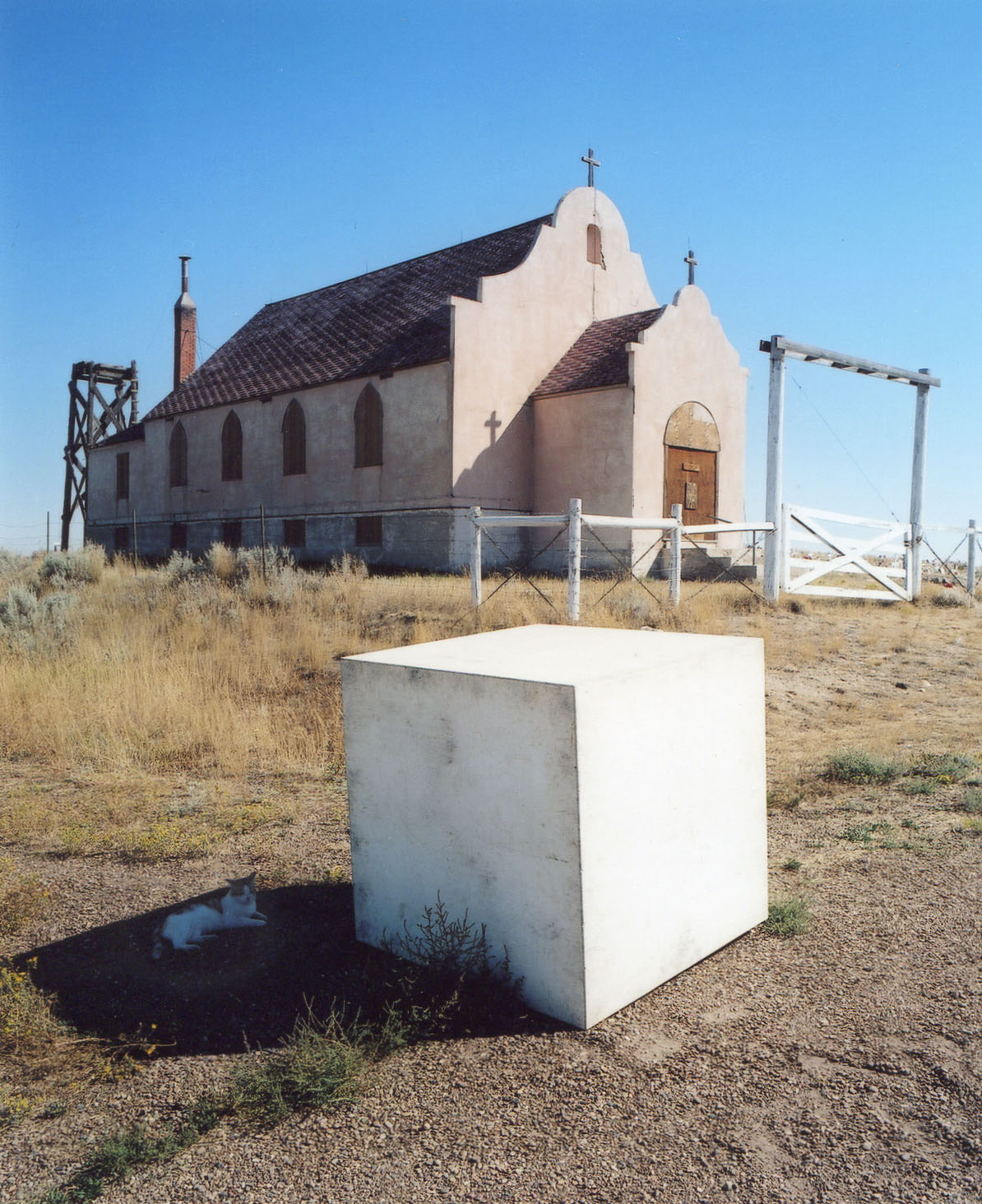

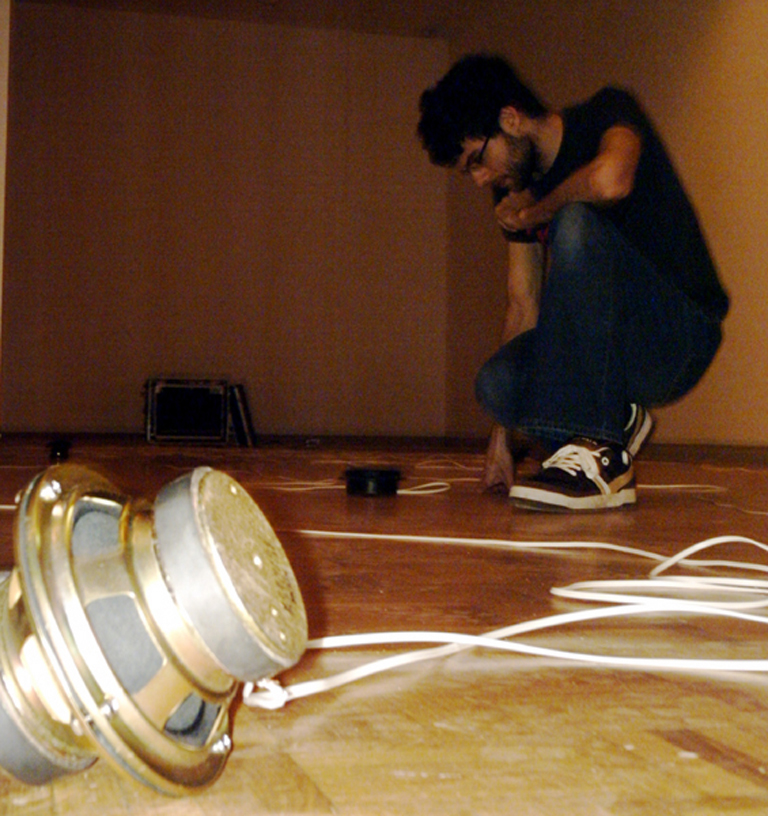
Nervouse
Ellen Moffat
February 18 - March 19, 2006
Nervous chatter: a syntax synapse.
By derek beaulieu
Jacques Attali argues that “Today, it is unavoidable, as if, in a world now devoid of meaning, a background noise was increasingly necessary to give people a sense of security. And today, wherever there is music, there is money.”
While background noise may create a flattened, democratic, capitalist background hum, it also produces an uneasy anxiety, the fretting of overheard conversation, eavesdropping and (mis)understanding.
Composer John Cage describes entering an anechoic chamber - a room engineered to be as silent and echo-free as possible. He reported to the sound engineer that two continuous sounds were audible: one high and one low. The engineer replied to him that the high sound was the electrical whine of Cage’s own nervous system, while the low was the churn of his circulatory system. The speakers arranged through the gallery space in Nervouse broadcast from a rhizome web - nodes of the speaking nervous system - a tying together of independent conversations into a larger unplaceable architecture of sound.
Through this structure of syntax Ellen Moffatt builds a fugue of phonemes, gathering the phonetic particles of language - its smallest sub-syllabic spoken pieces - into a contrapuntal arrangement of spoken musicality. Nervouse builds an architectural space through the accumulation of particles of conversation. All the sound-pieces that make a place hum with activity are isolated and re-presented.
But isn’t the sound of place, as we have the Nervouse, the very place itself?
As the viewer interacts with the surrounding form of Nervouse, she constructs the fugal arrangement of the work by timing her arrival at the ‘speakers’ (and here the electrical speakers replace the human speakers of poetic text in an uncanny dance of voice) creating the means to physically inhabit the cacophonic schizophrenia of daily life. With Nervouse, language proves itself, as Steve McCaffery posited, “less a communication than the loss of communicabilities.” The phonic fragments - the loss in language - leaves us tongue-tied and anxious.
In Nervouse, sound becomes a physical presence, the black speakers and entwined wires snaking across the room adding to the sound-scape that is created by the dynamic relationship of the viewer to the installation itself. The wires and the speakers reverse the biological map of sound-waves from the ear through the auditory nerve of the brain. The walls and floors of the gallery are covered in raw auditory nerves. The viewer’s passage through the gallery space becomes a sensual biological space. We are confronted with an unsettled eroticism, an awkward anxiety, that settles upon us as we move through the vibrating hum of Nervouse’s polyphonic fragments.
Our sounds, ourselves.
- derek beaulieu
Ellen Mofat’s multi-media installations, public art and cultural contract work explore notions of place, time and voice. She has organized and participated in numerous public art projects, off-site events, exhibitions and residencies with public galleries, artist-run centres and rural communities across the country. She is currently (2006) based in Saskatoon.
derek beaulieu is the author of 3 books of poetry, the most recent being fractal economies (talon books, 2006.) His artwork, poetry and criticism have been published and exhibited internationally, though he lives in Calgary, where he is the Administrative Director of The New Gallery. (2006)

Satellite
Nelson Henricks
November 25 - December 23, 2005


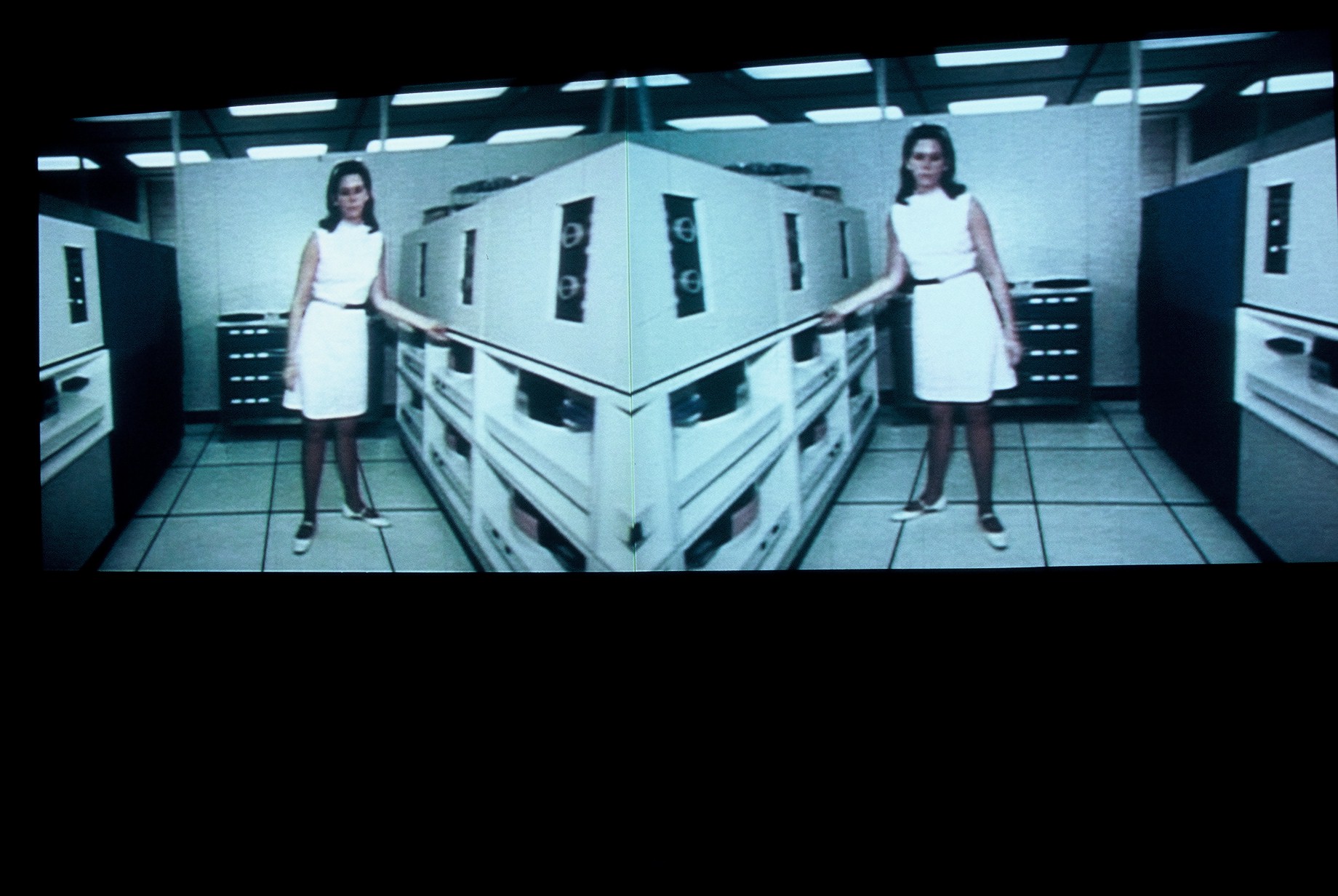







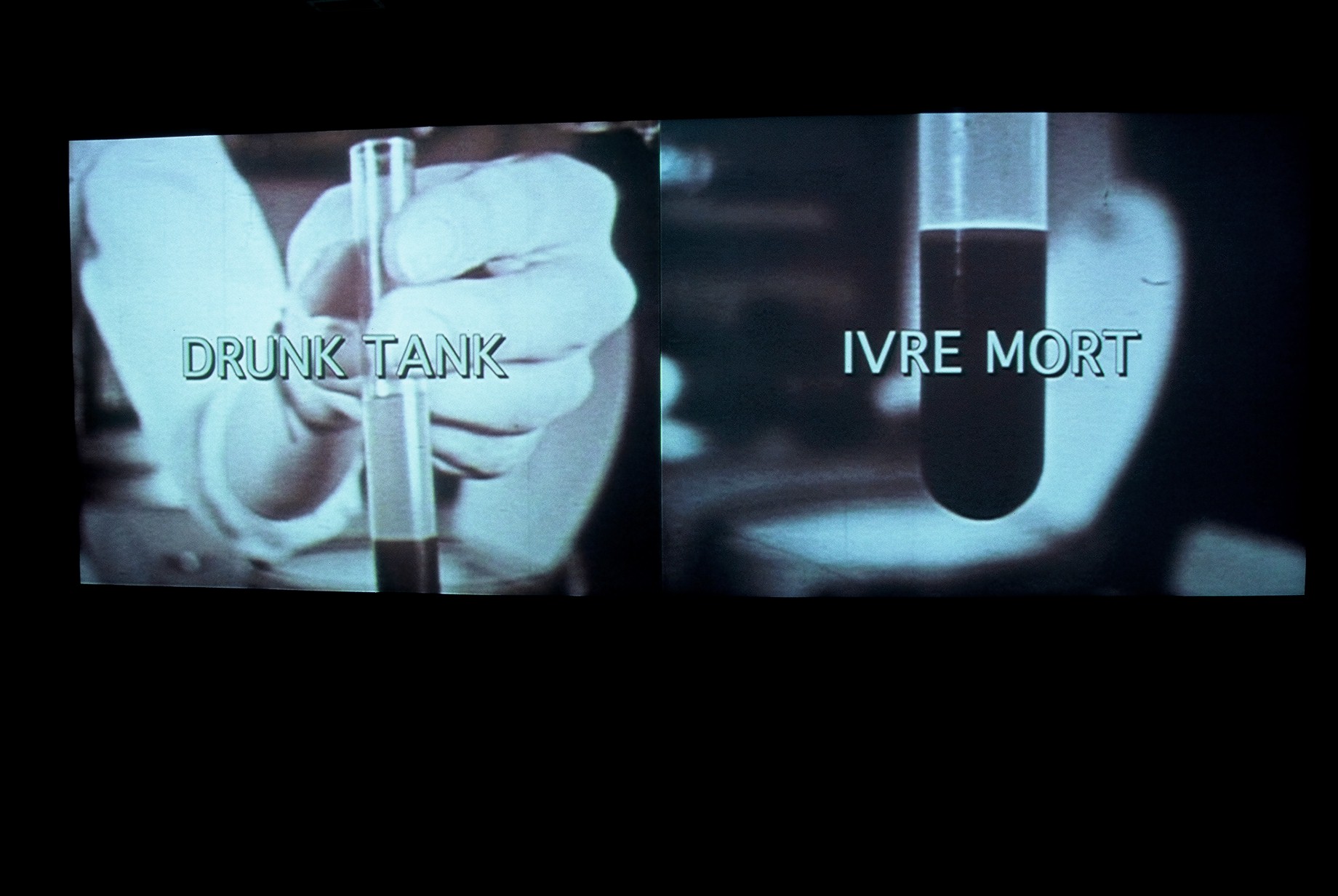
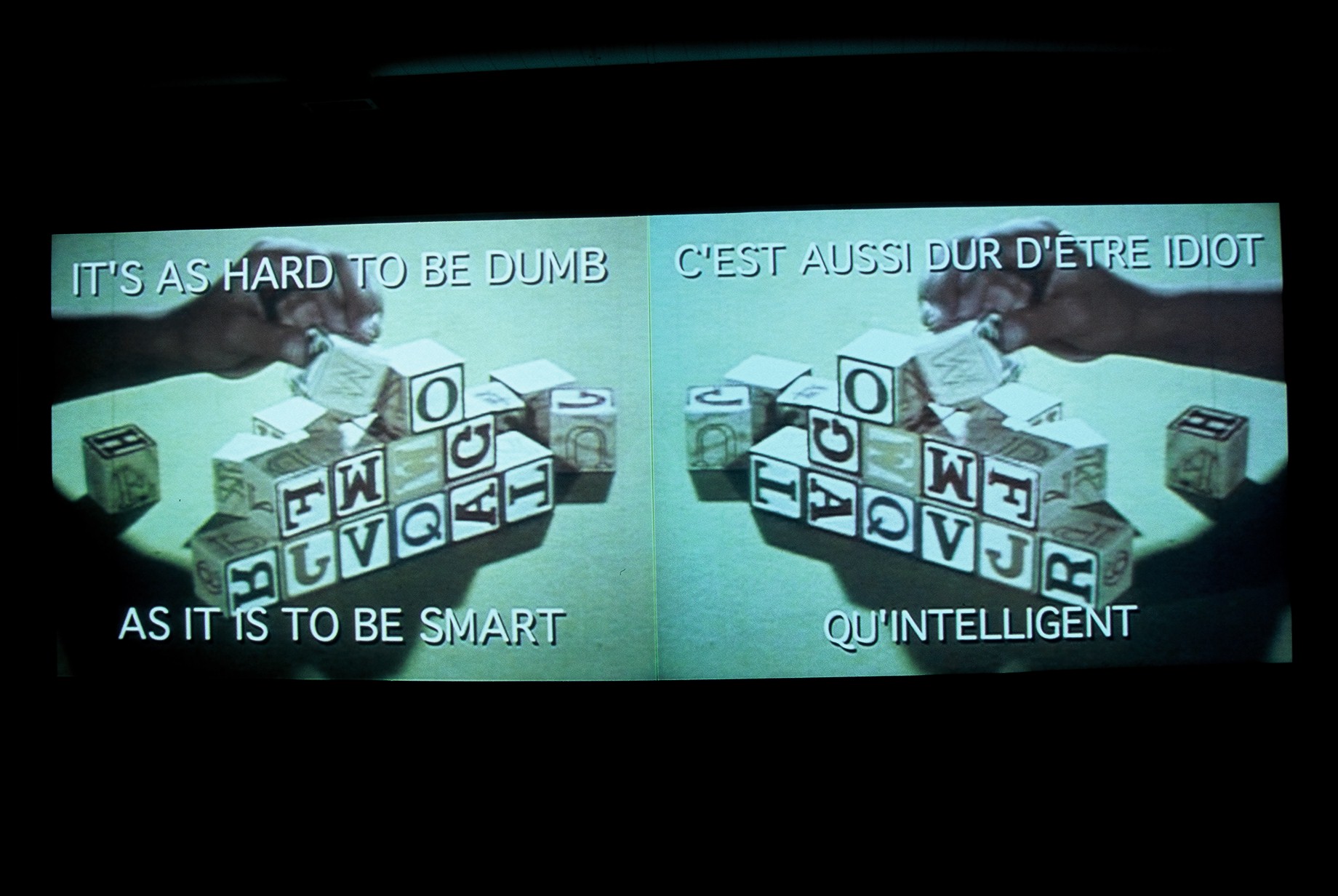


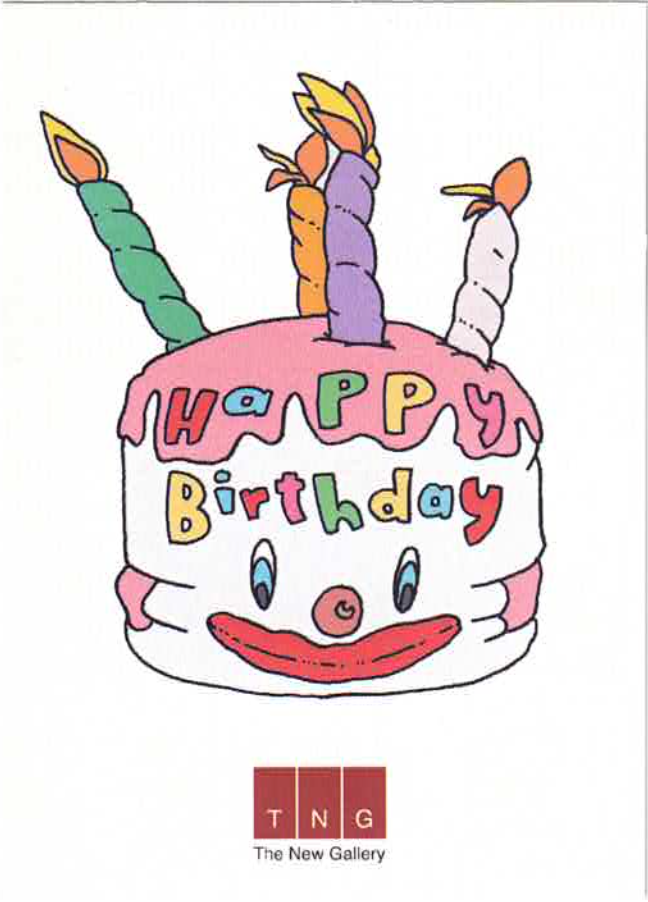
Art’s Birthday!
January 17, 2005
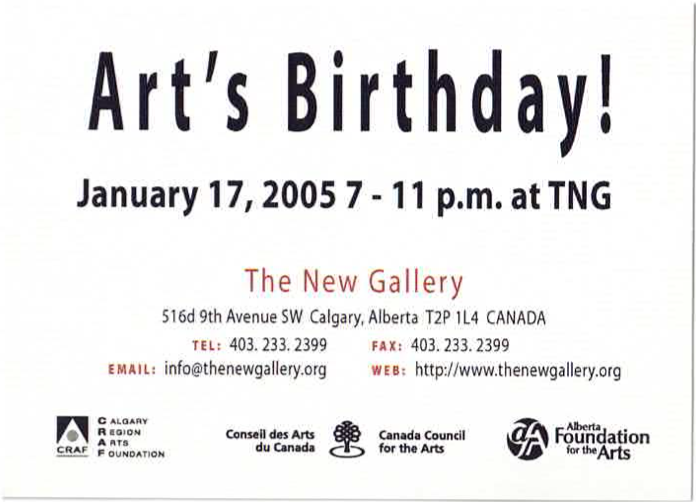
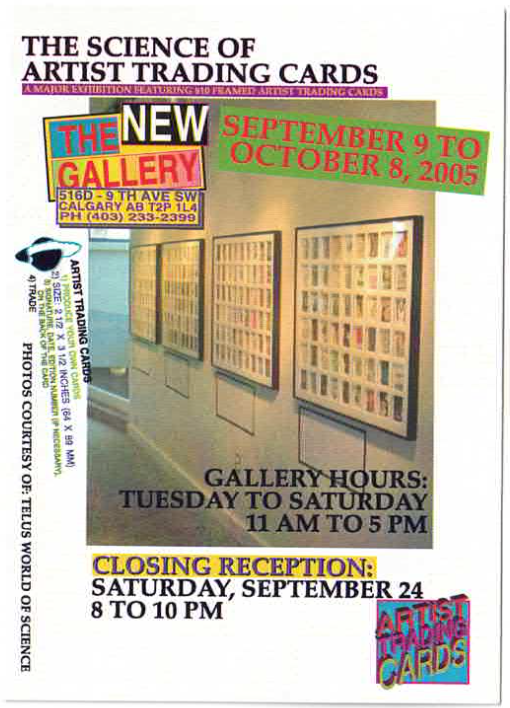
The Science of Artist Trading Cards
September 9 - October 8, 2005






Residual
Performance Art Relics and Ephemera
Dave Dyment, Melody Jacobson, Michael Coolidge
October 8 - 30, 2005
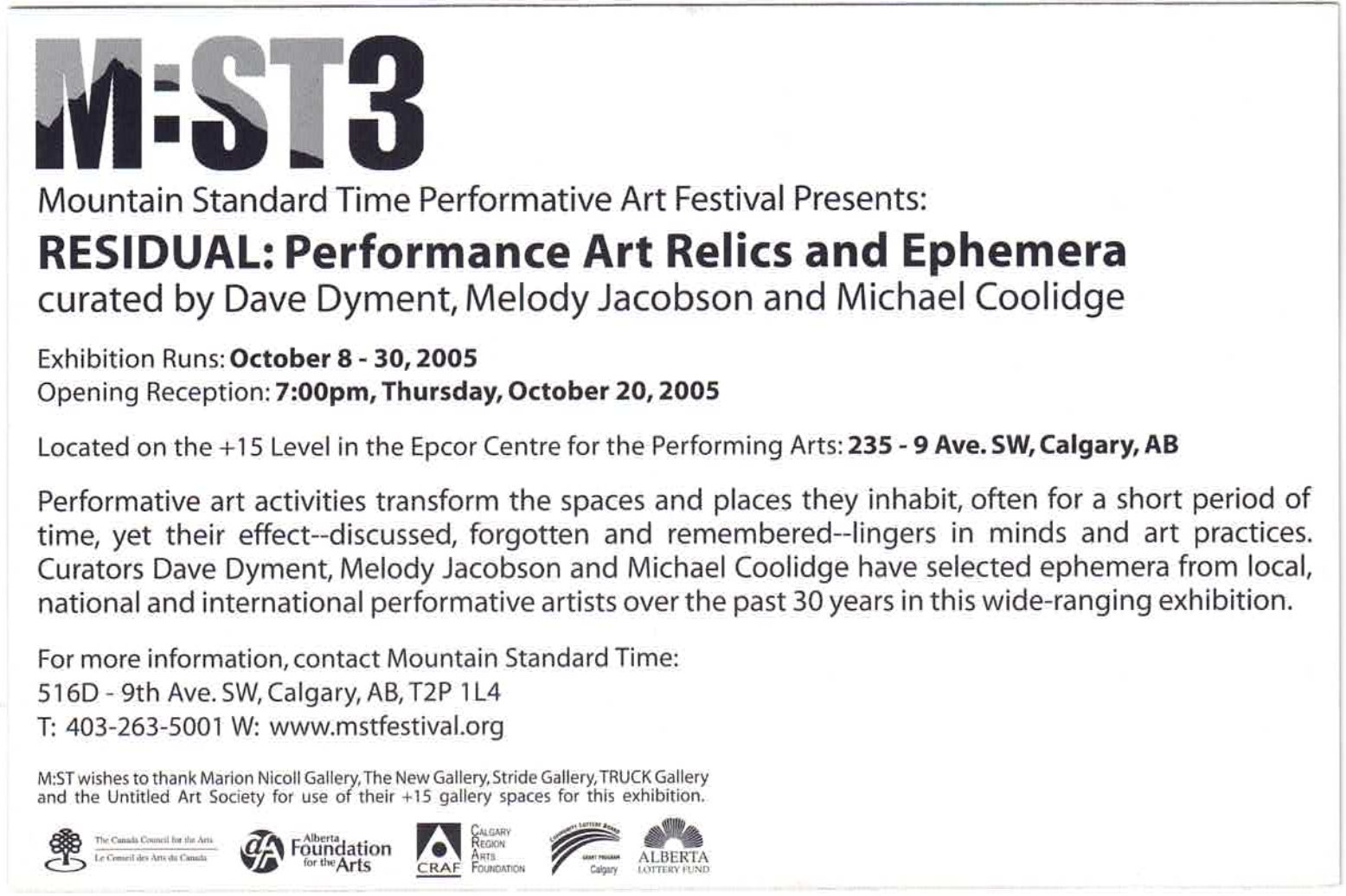



comfort studies
Paméla Landry and Les Newman
January 14 - February 14, 2005


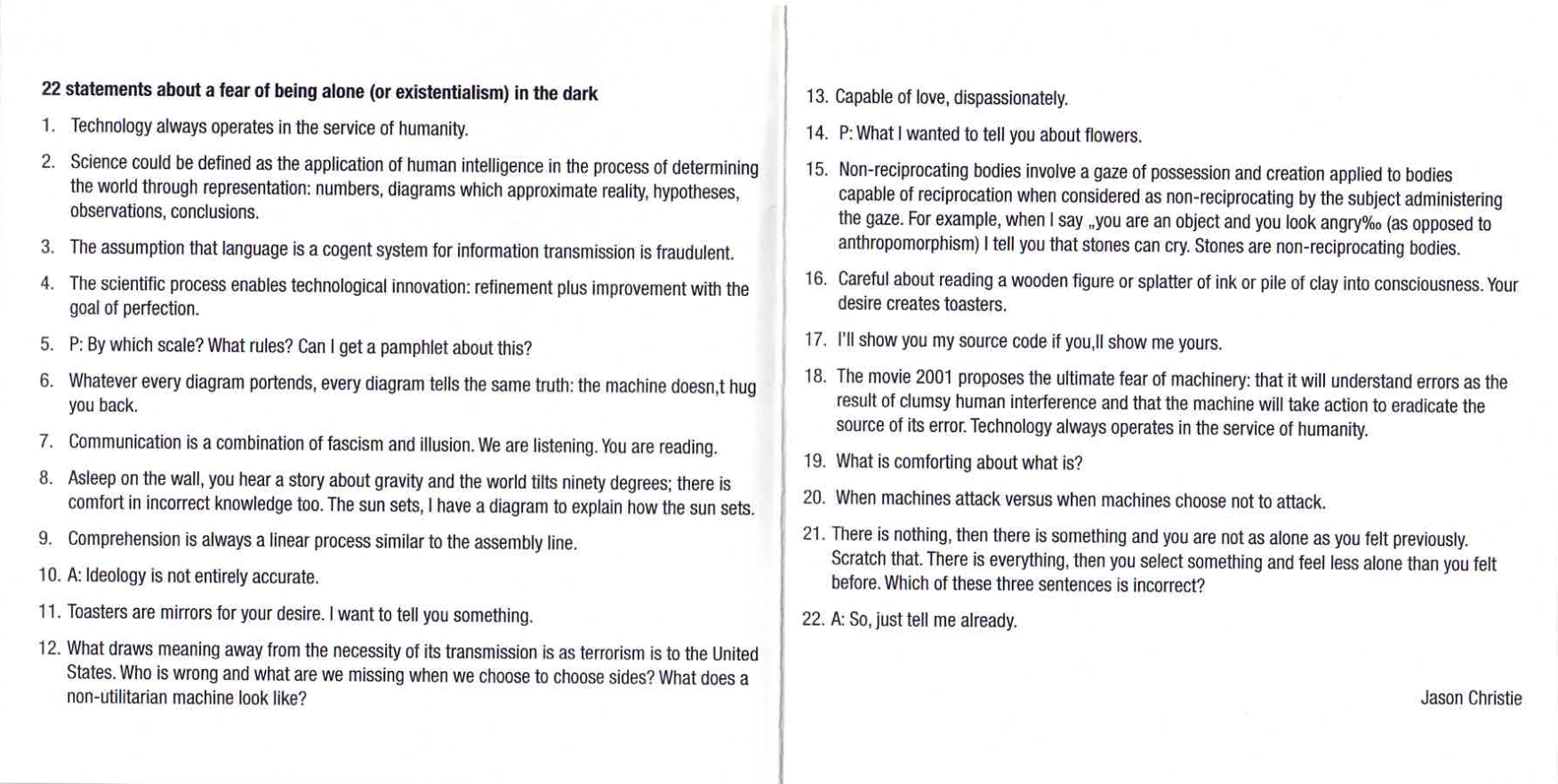
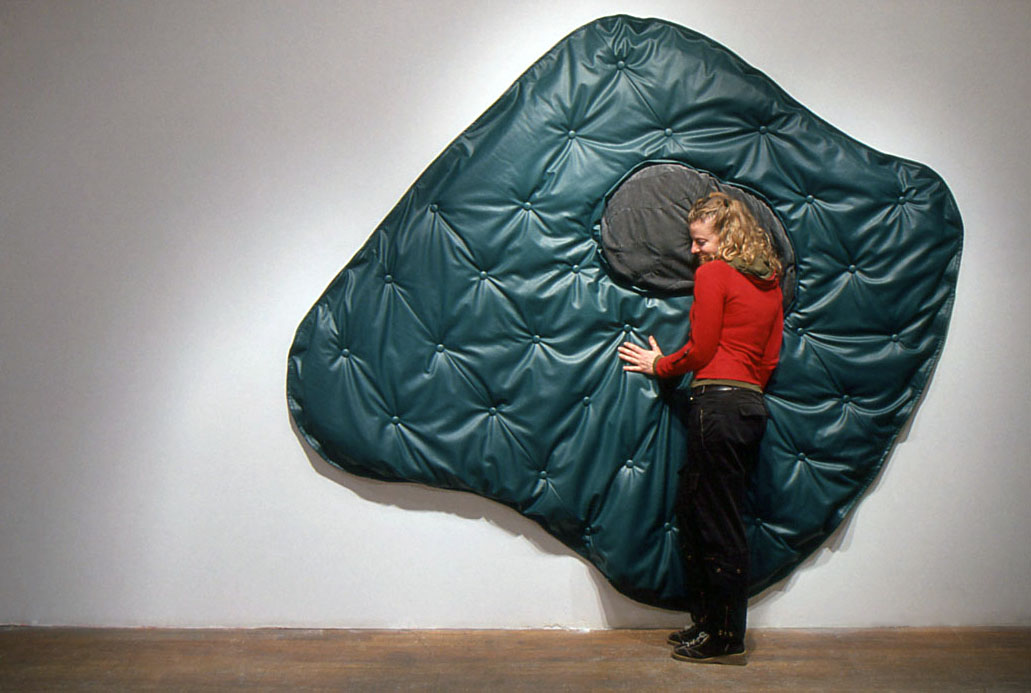
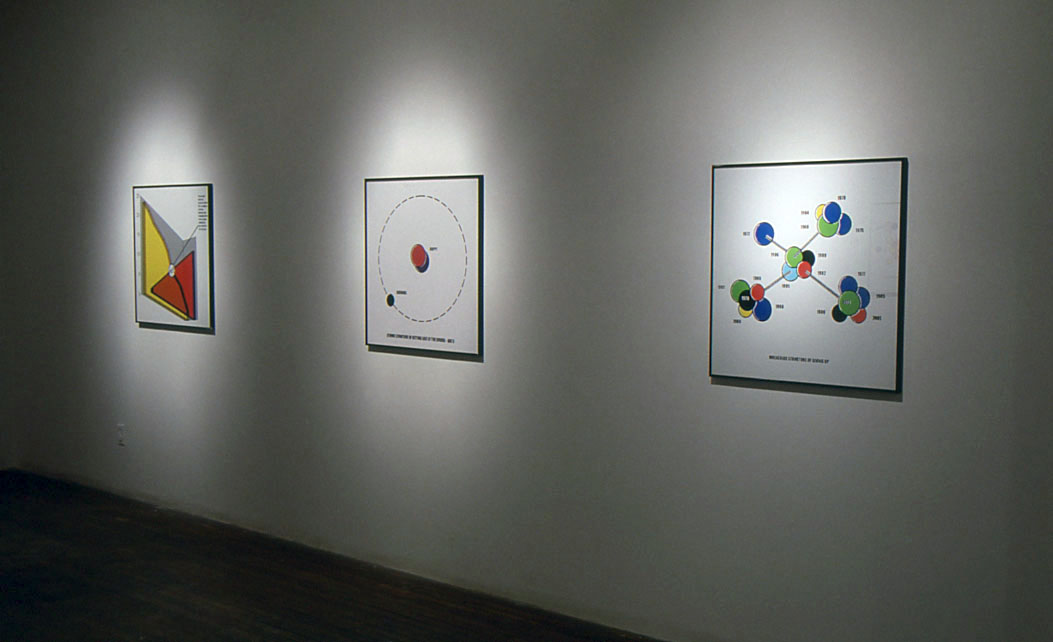
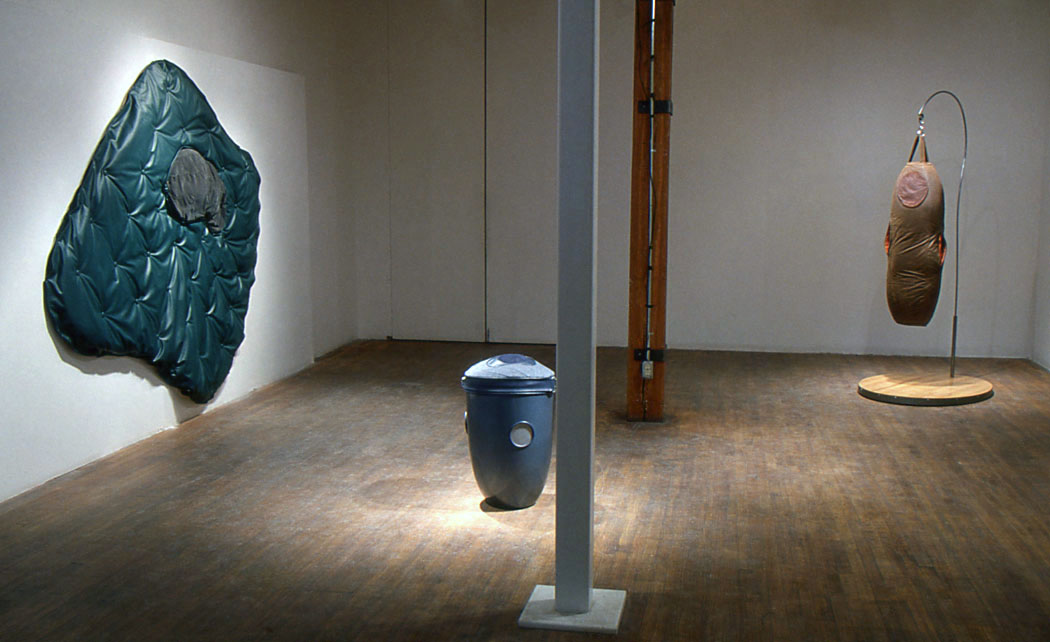



Book Launch: Pornograph
Jonathon Wilcke
January 16, 2004

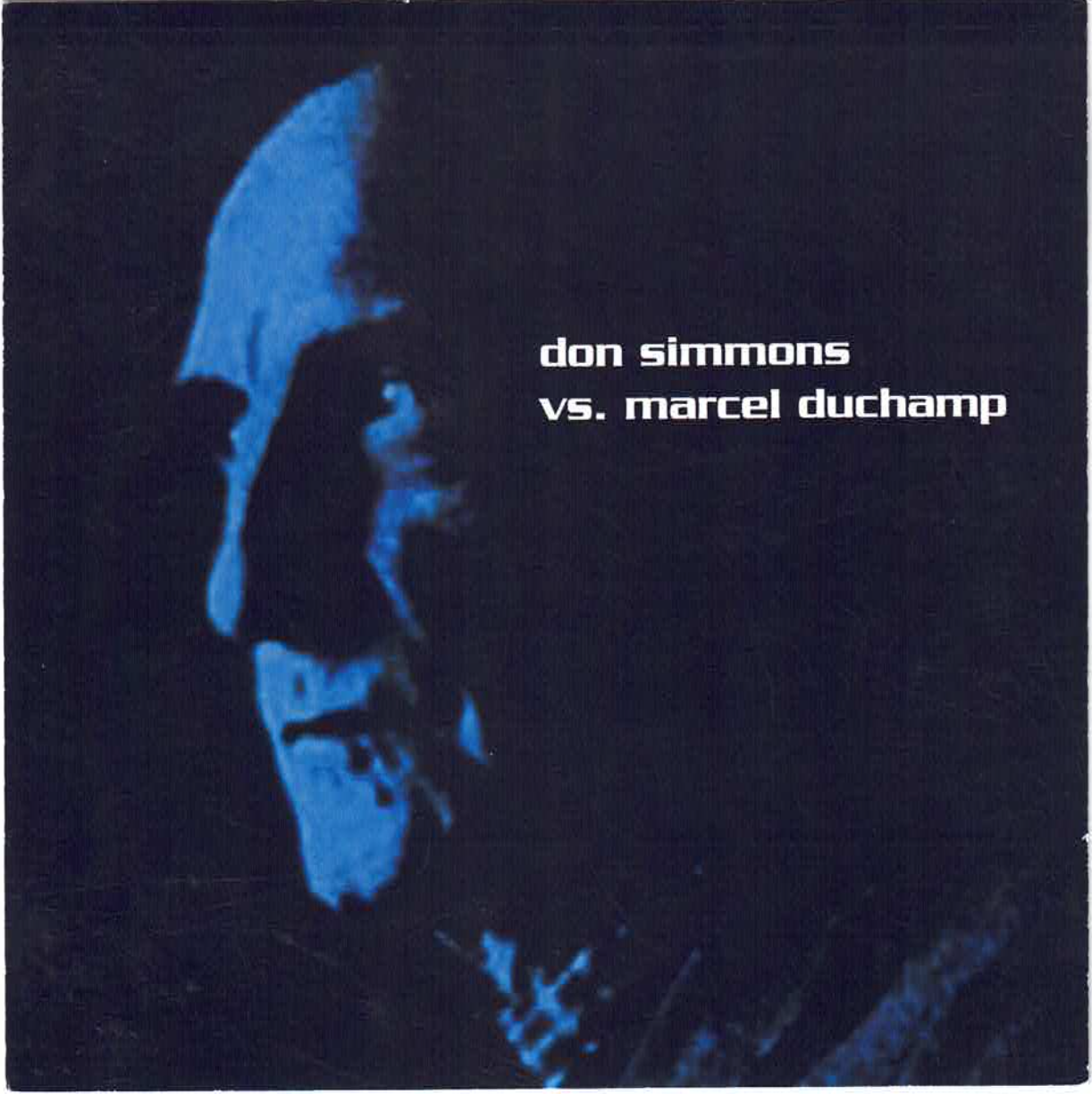
Don Simmons vs. Marcel Duchamp
May 2004
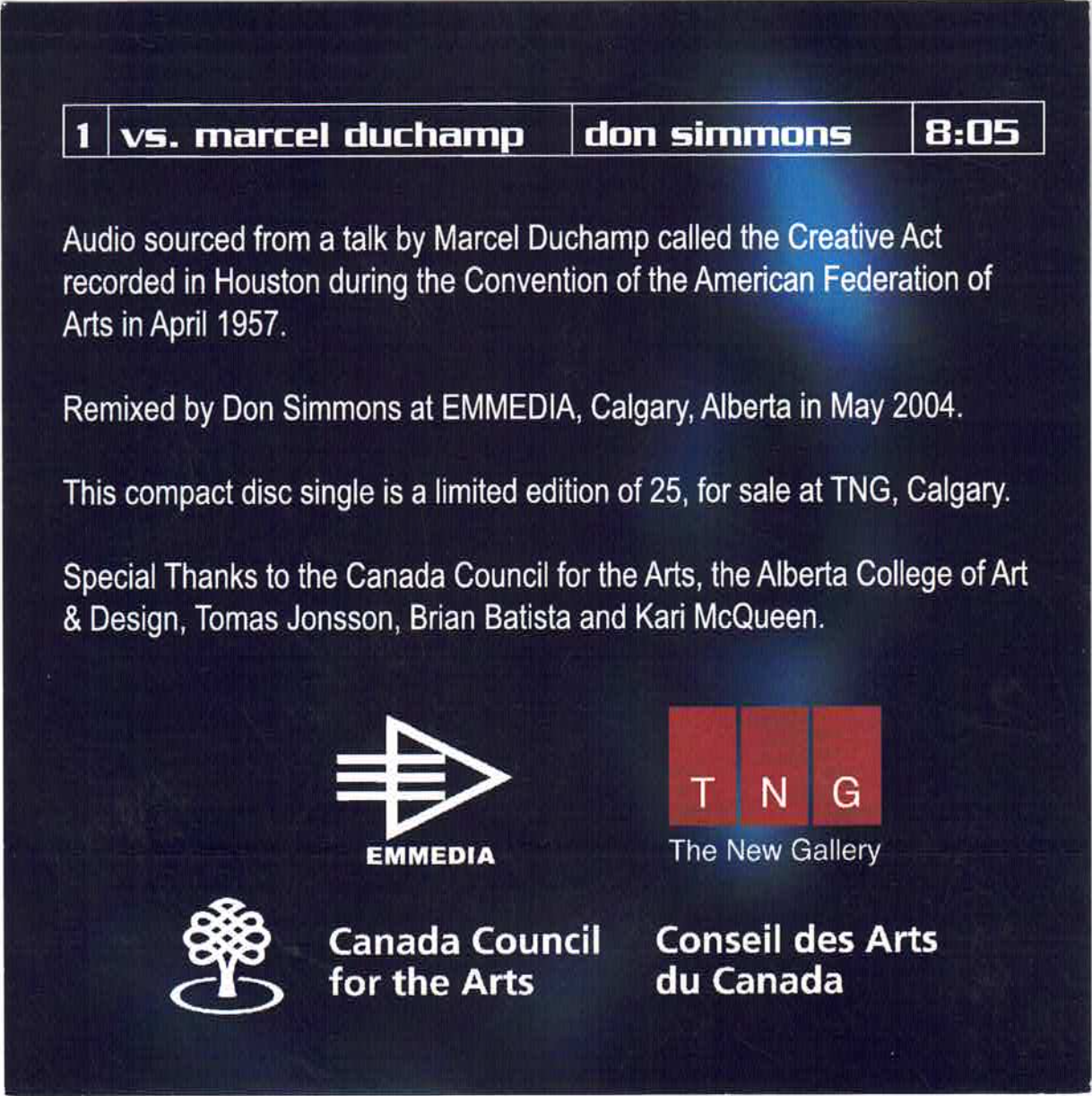
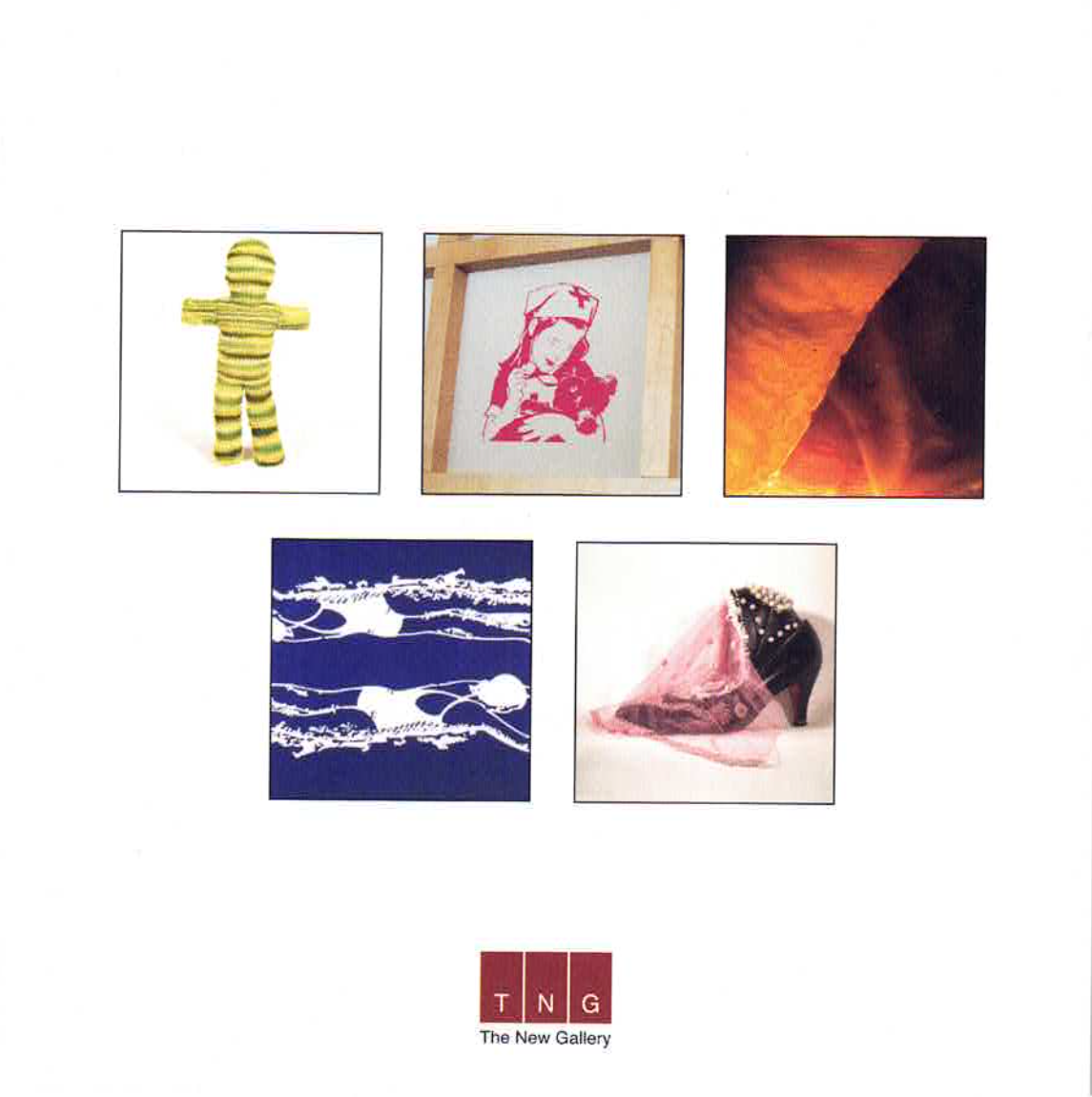
Stand Ins
Tamara Rae Biebrich, Heidi Eigenkind, Elizabeth Garlicki, Lesley McKenzie, Lynne Schulz
Curated by Shawna Dempsey
January 9 - February 7, 2004
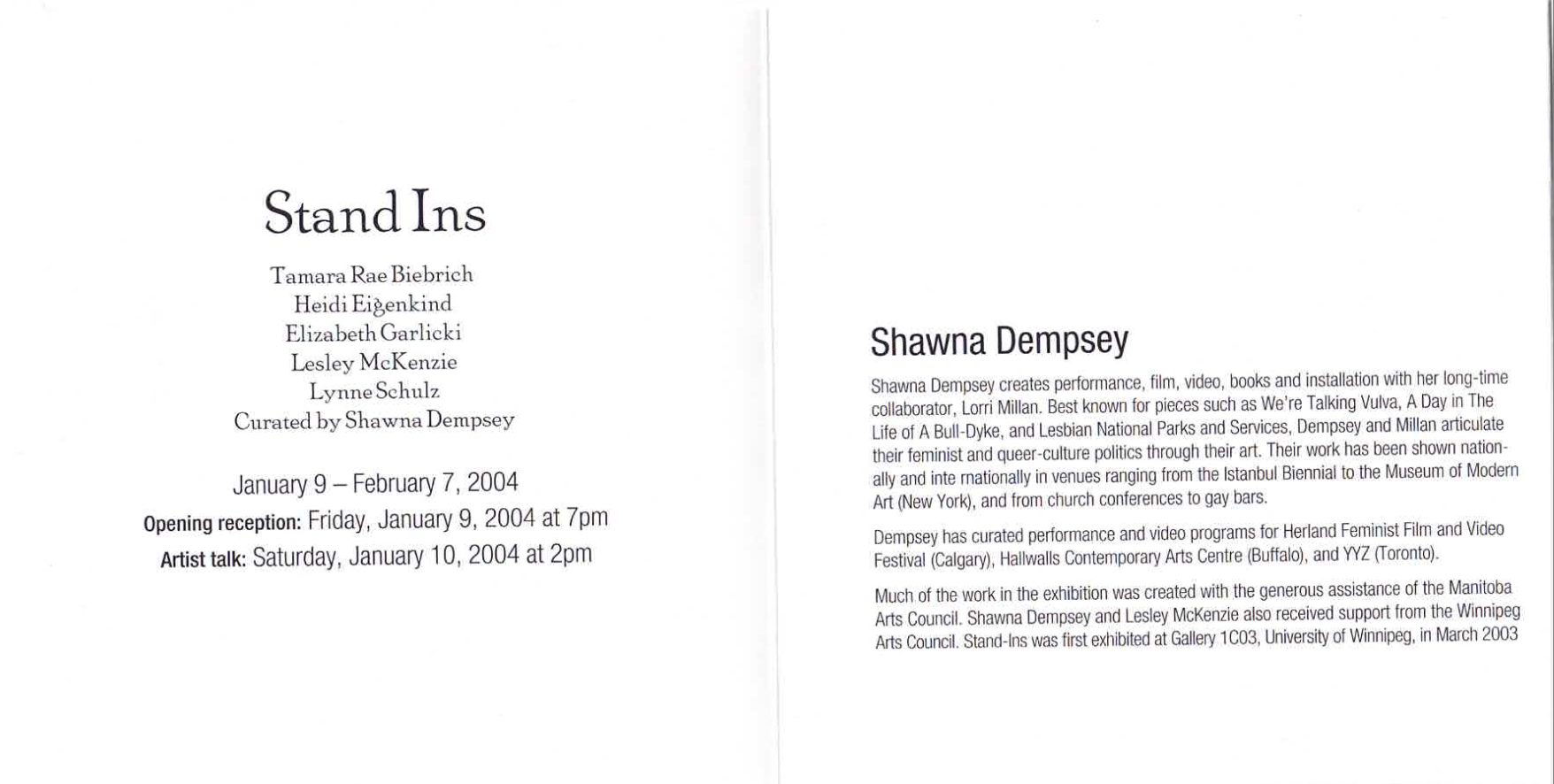
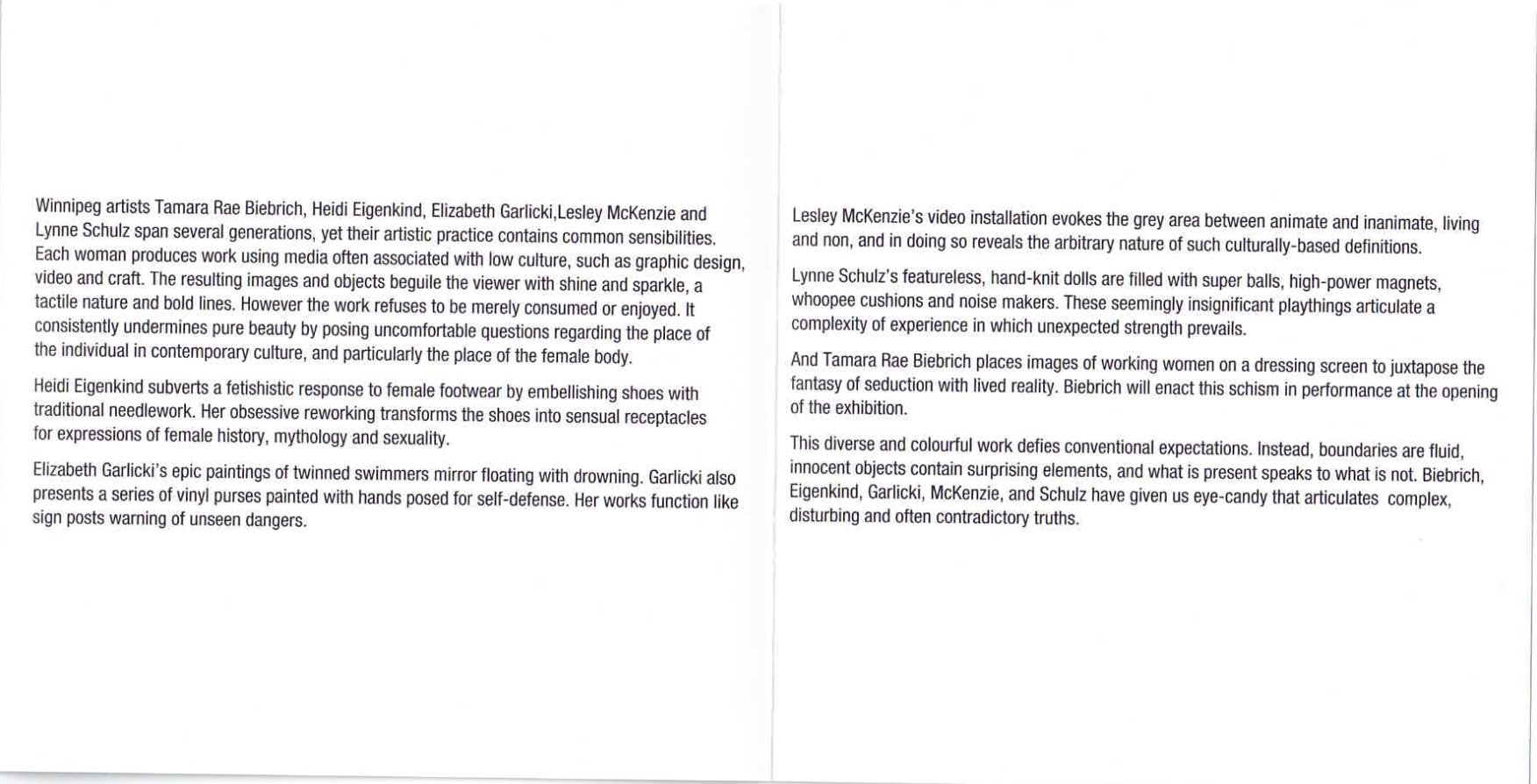
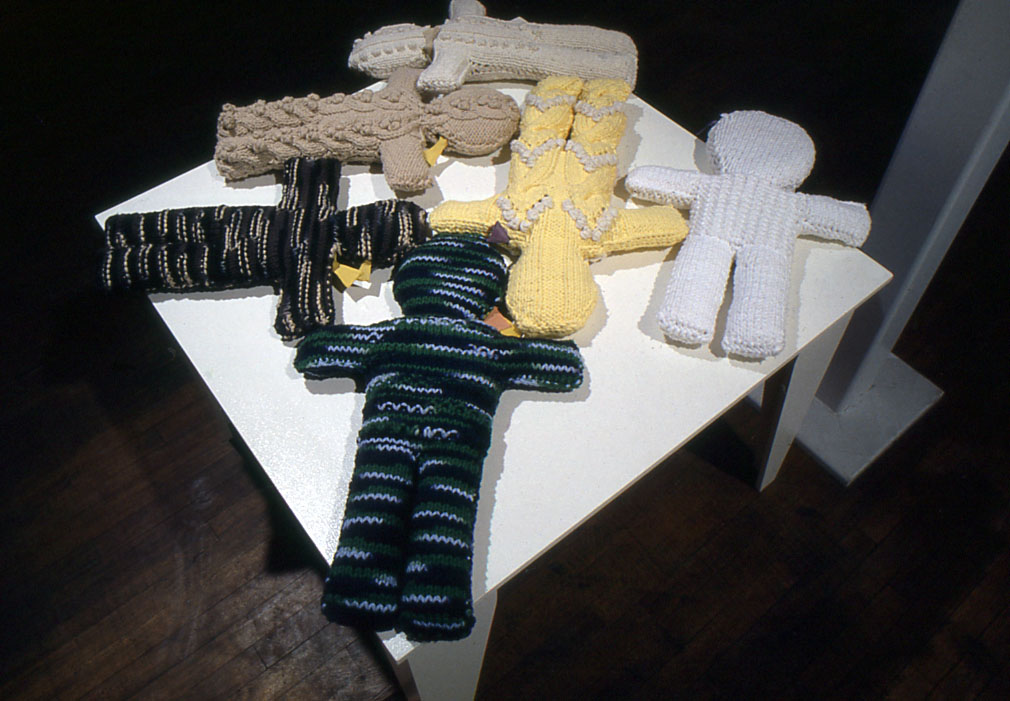

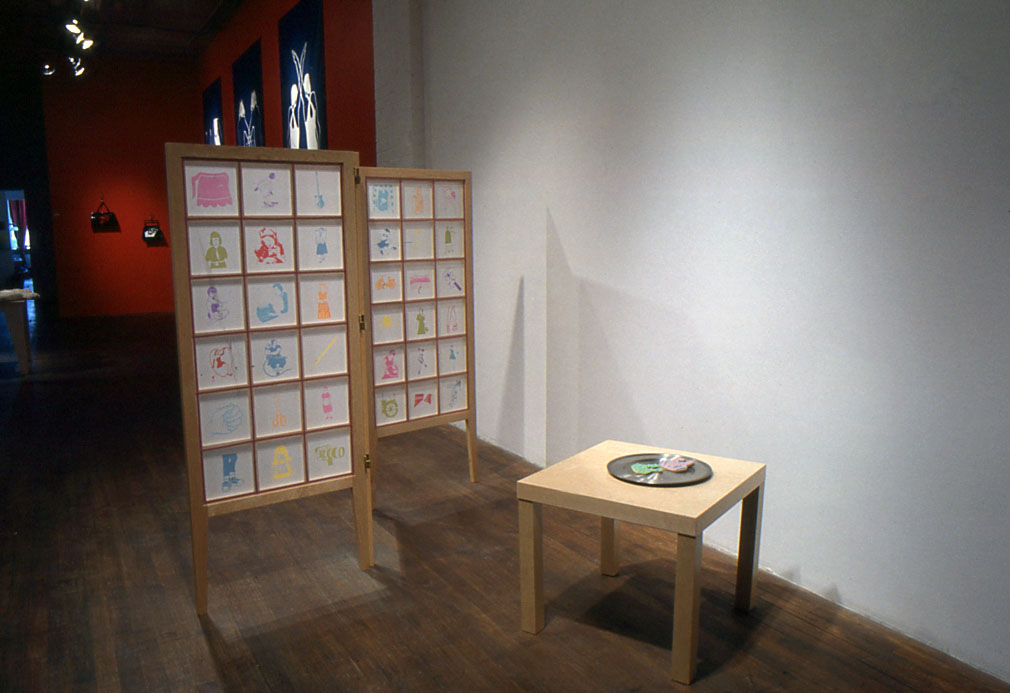

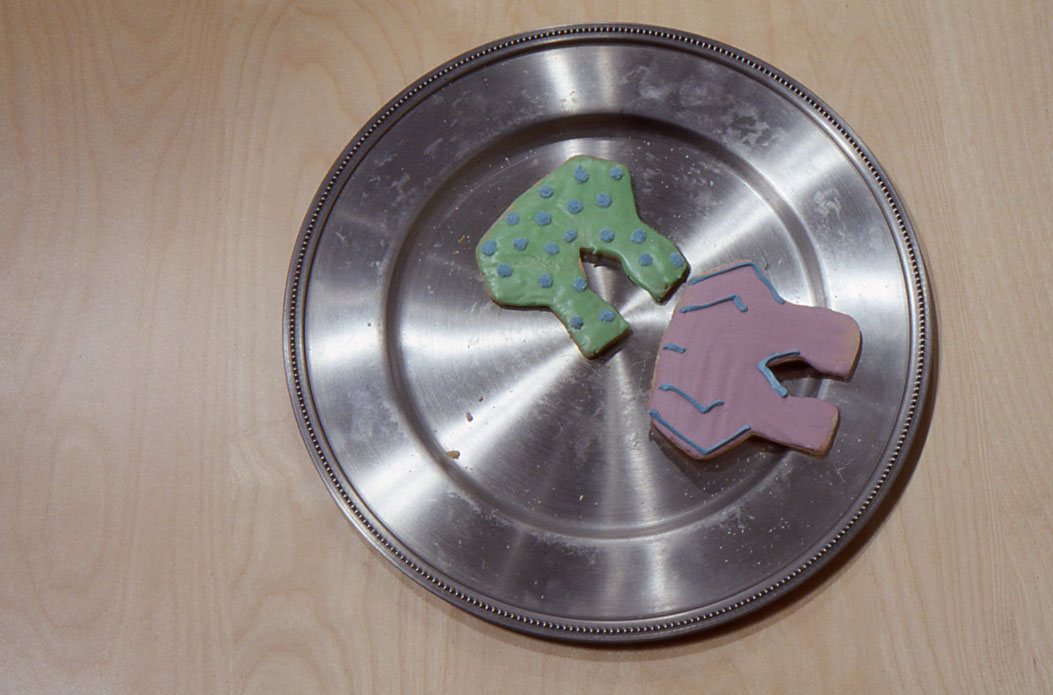
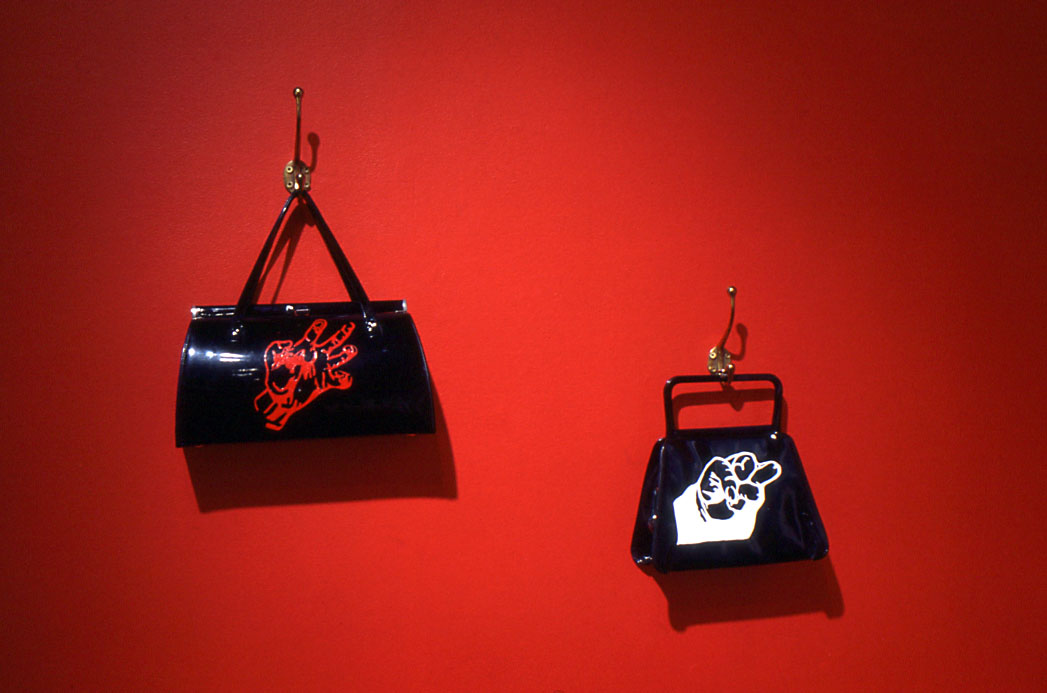
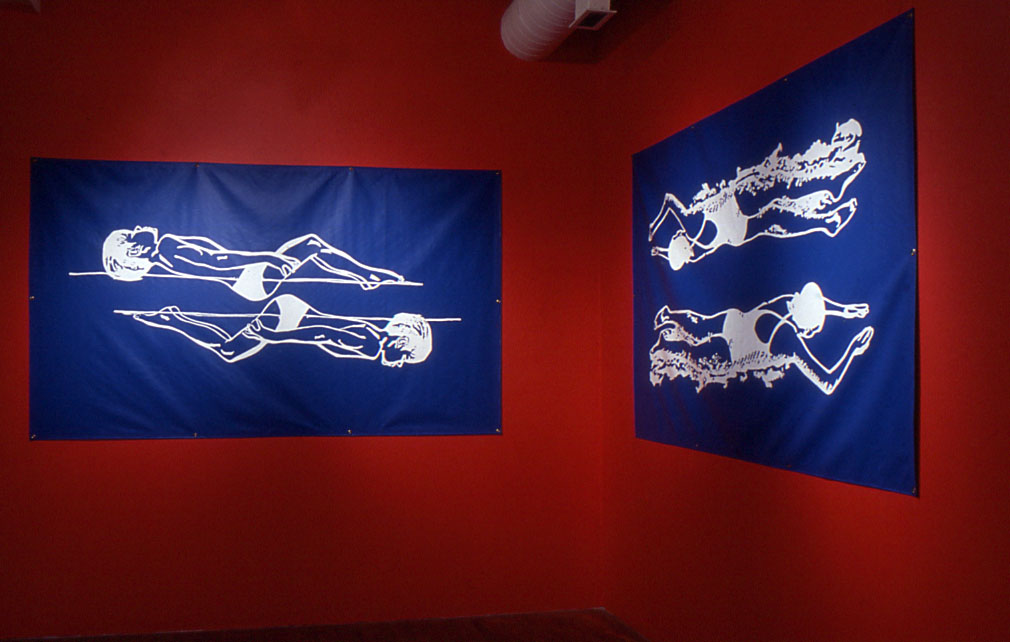
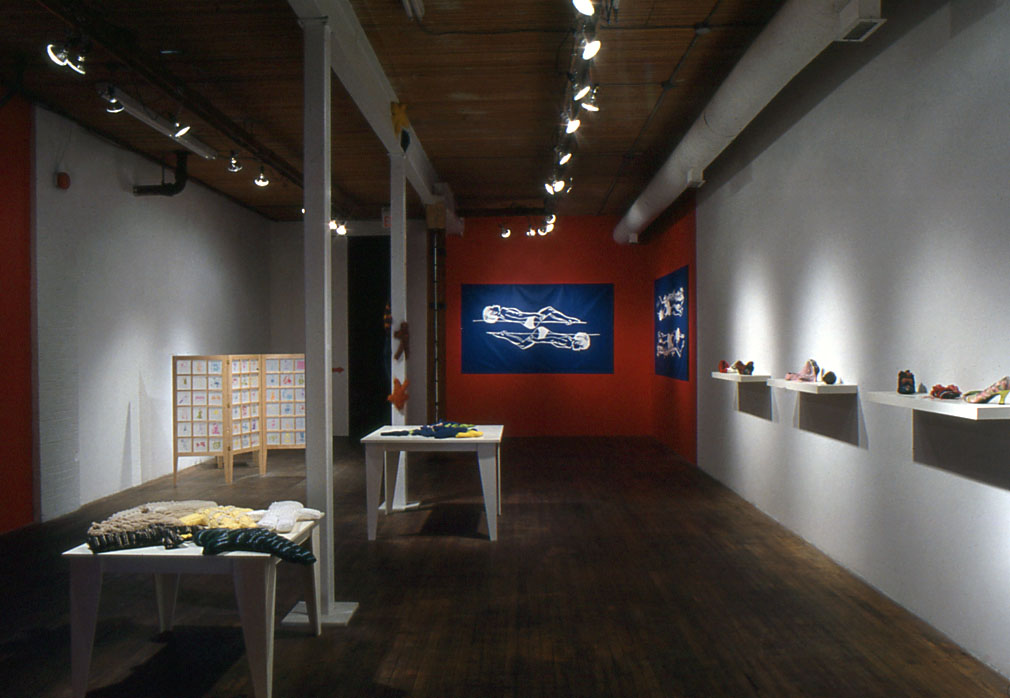


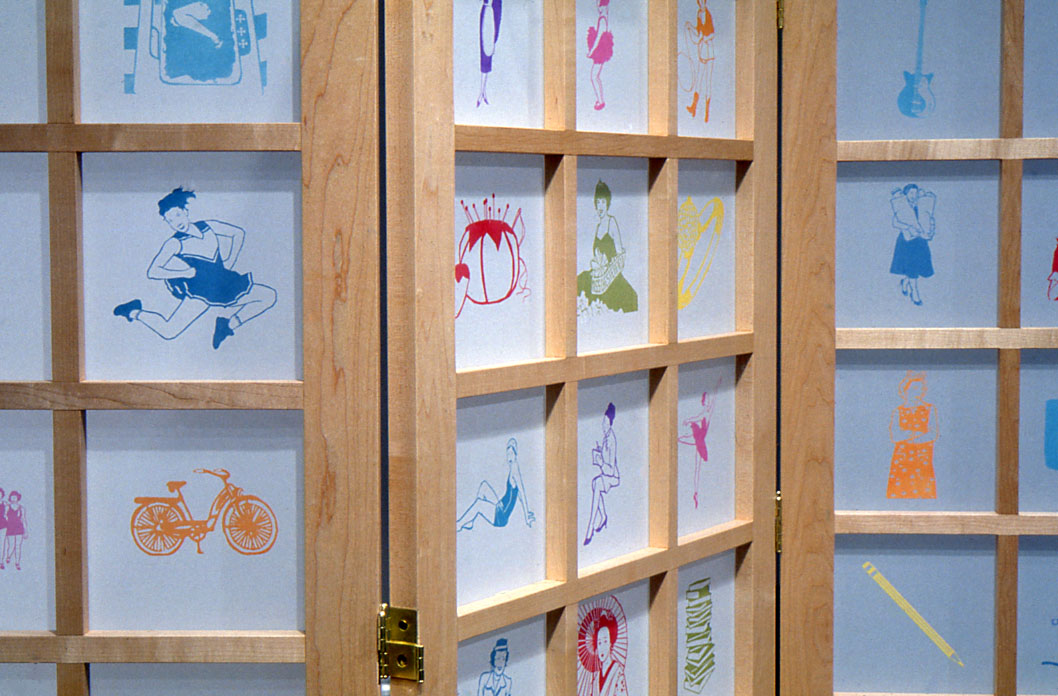
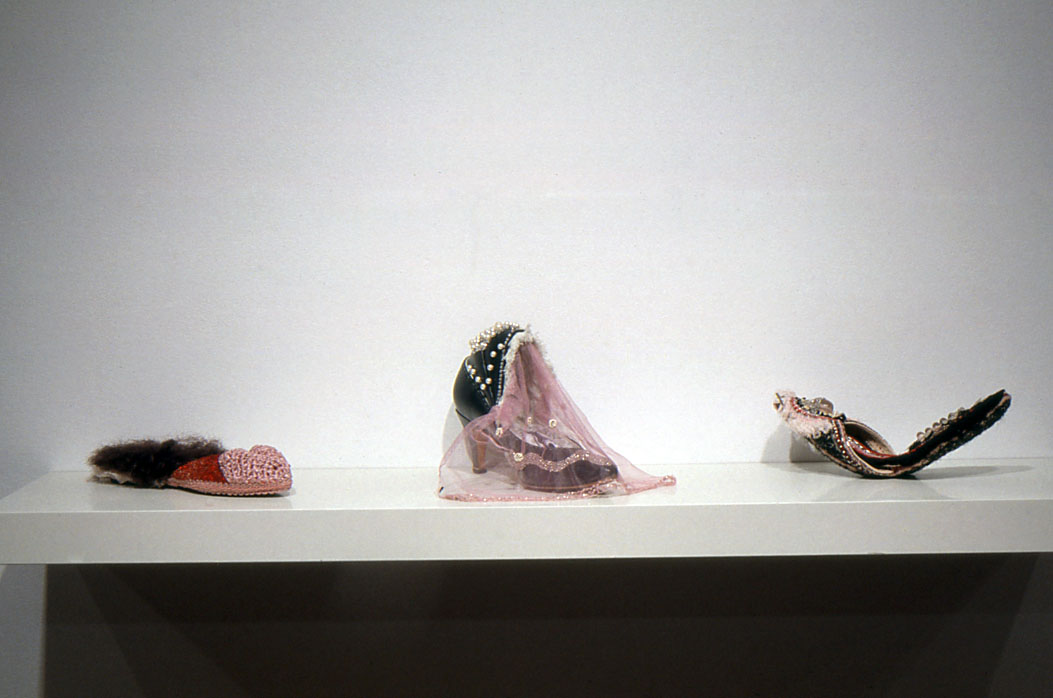
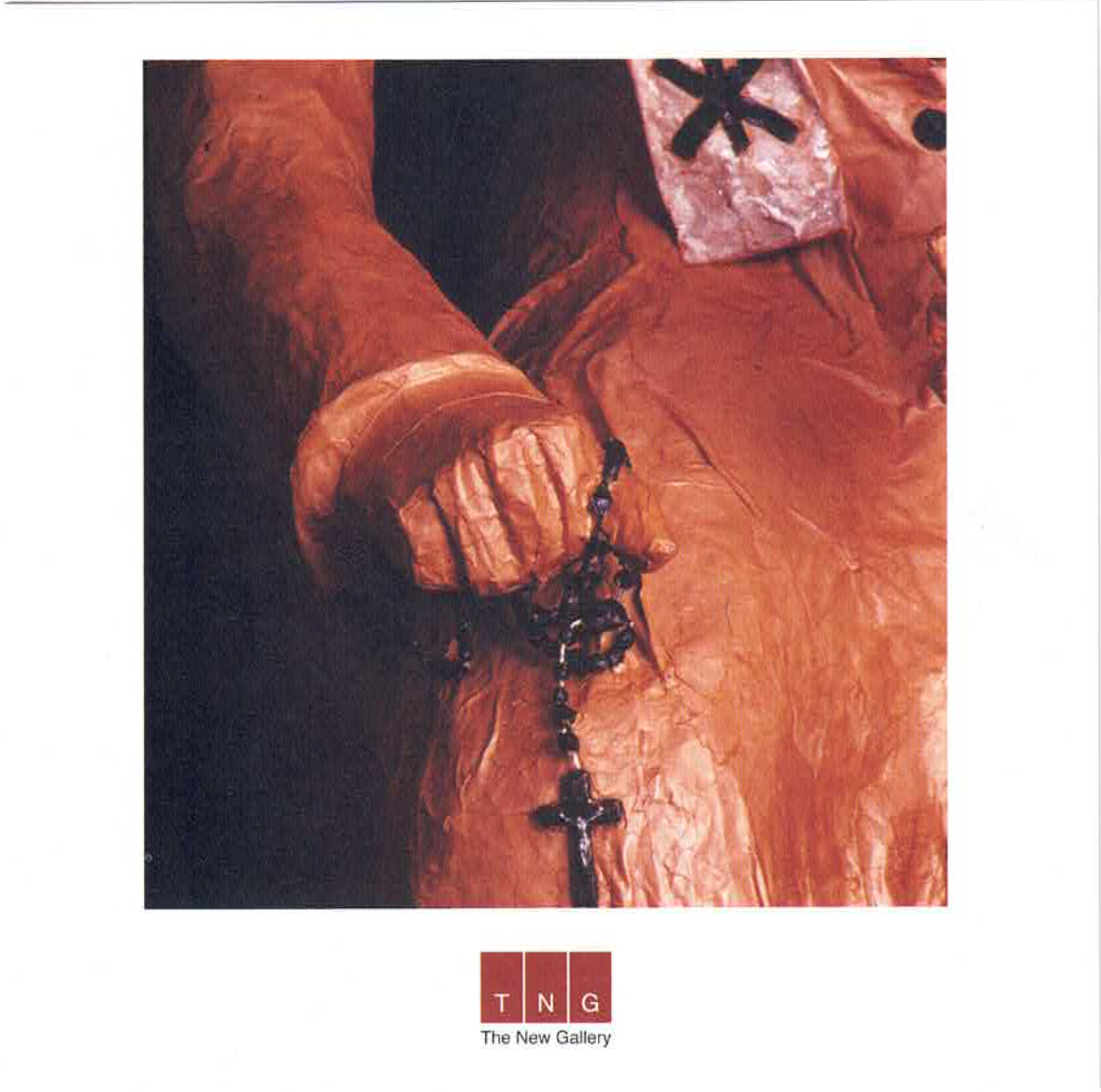
Windows Part 2:
“The Appalling Sin”
Adrienne Jenkins
February - March, 2004

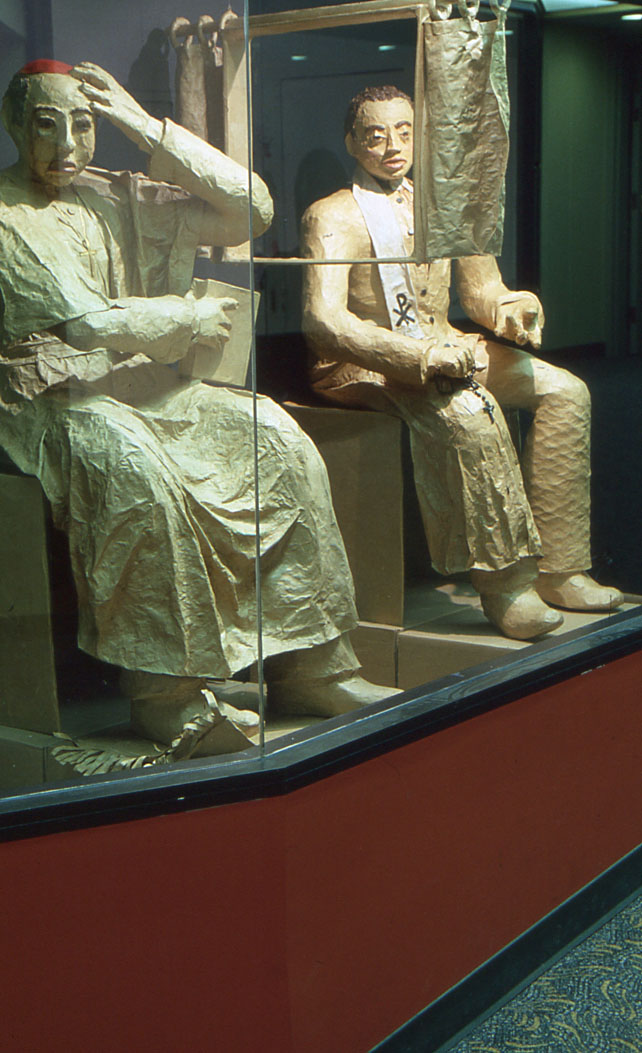




Seeing and Being Seen
Shelley Ouellet
February 13 - March 13, 2004

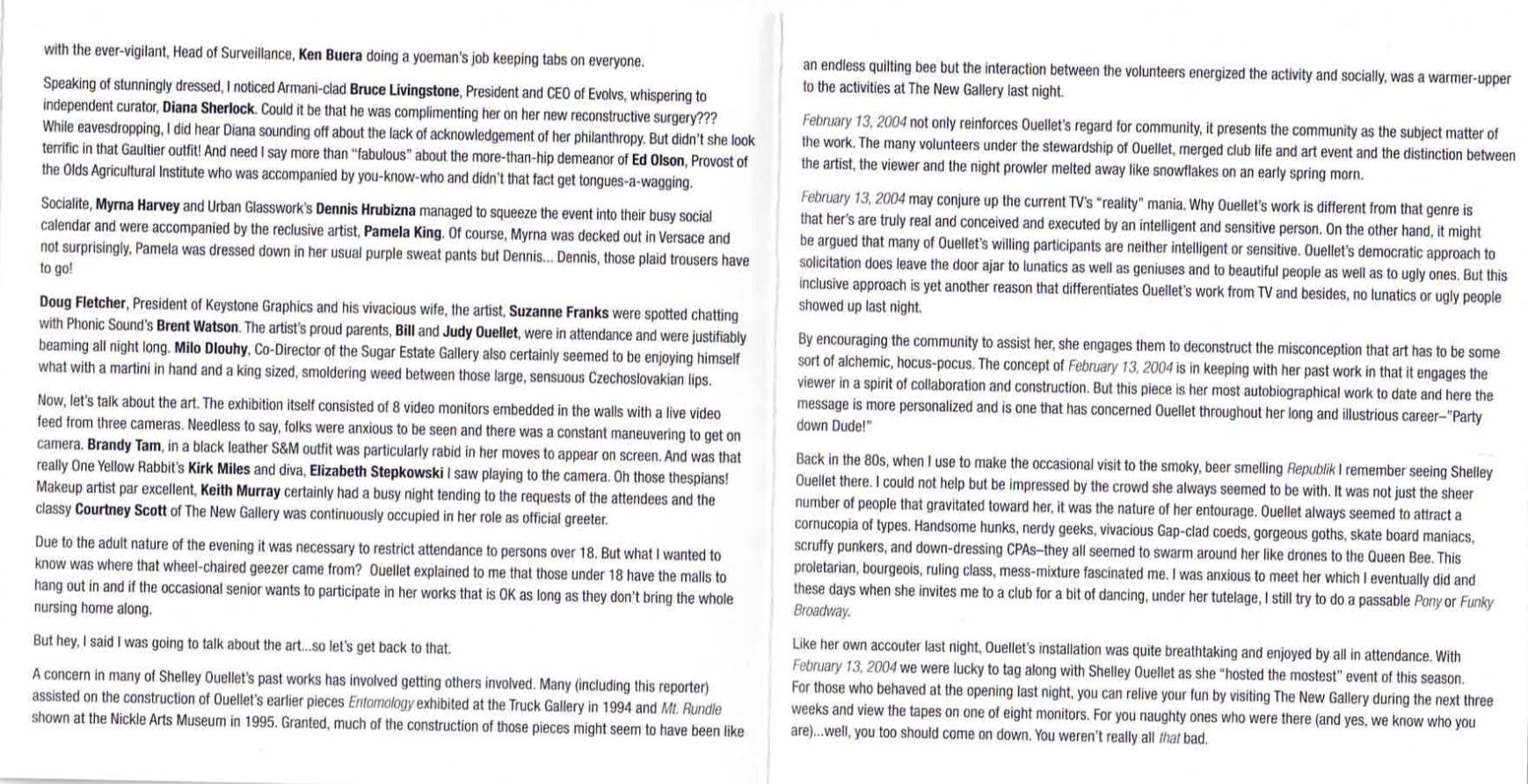



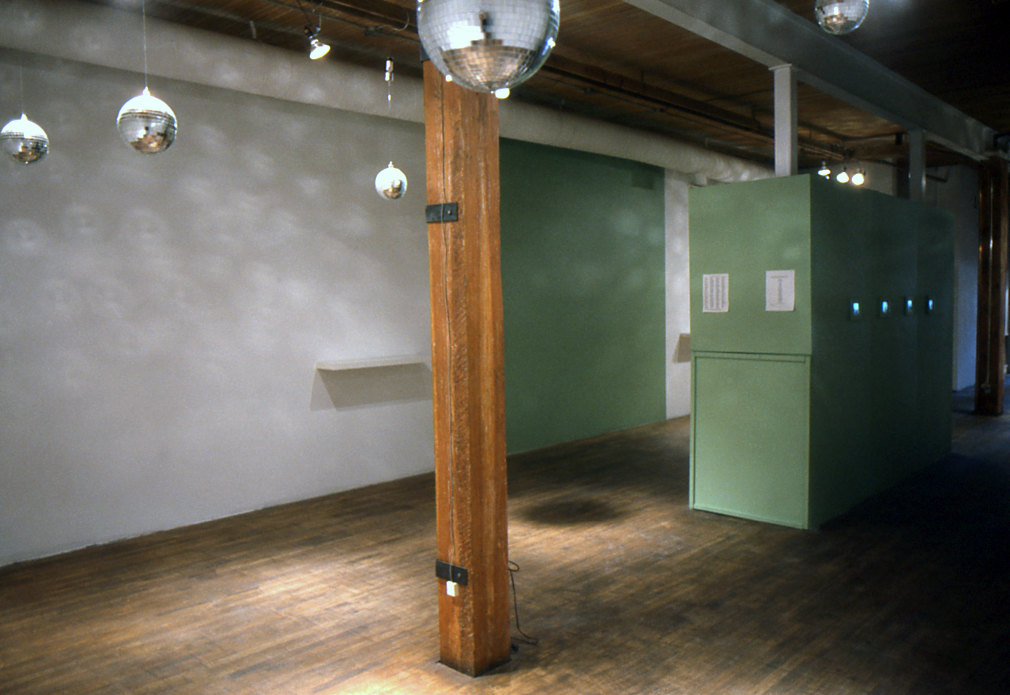
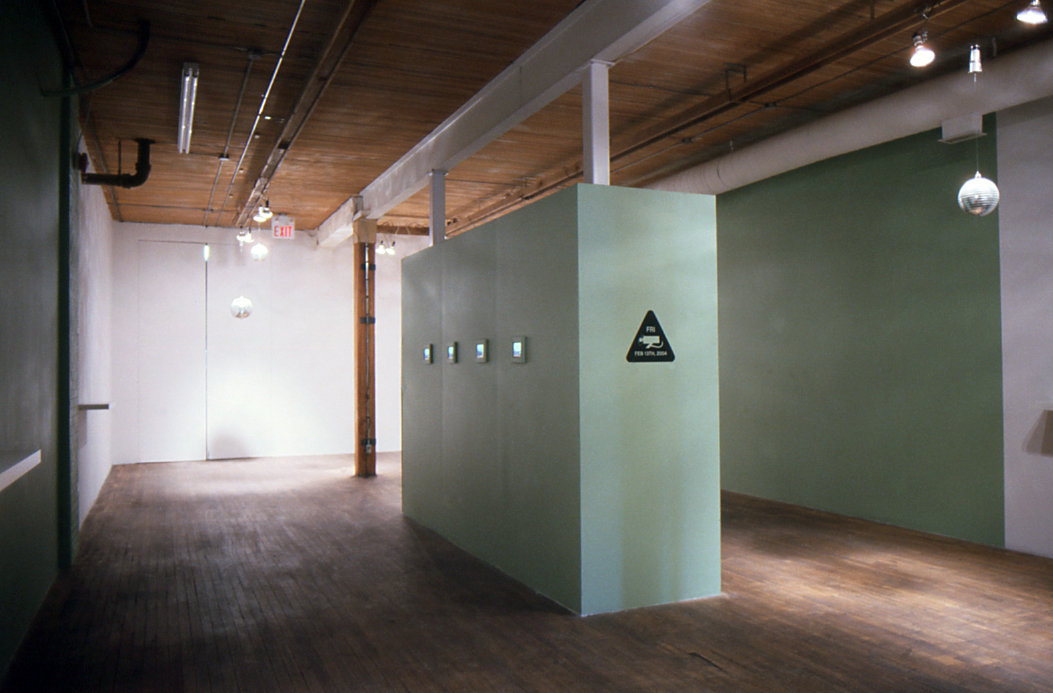


nach House Presents...
The Ab Baars Trio
October 25, 2003

Matchmaker
Silent Auction & Fundraiser
April 22 - 25, 2003
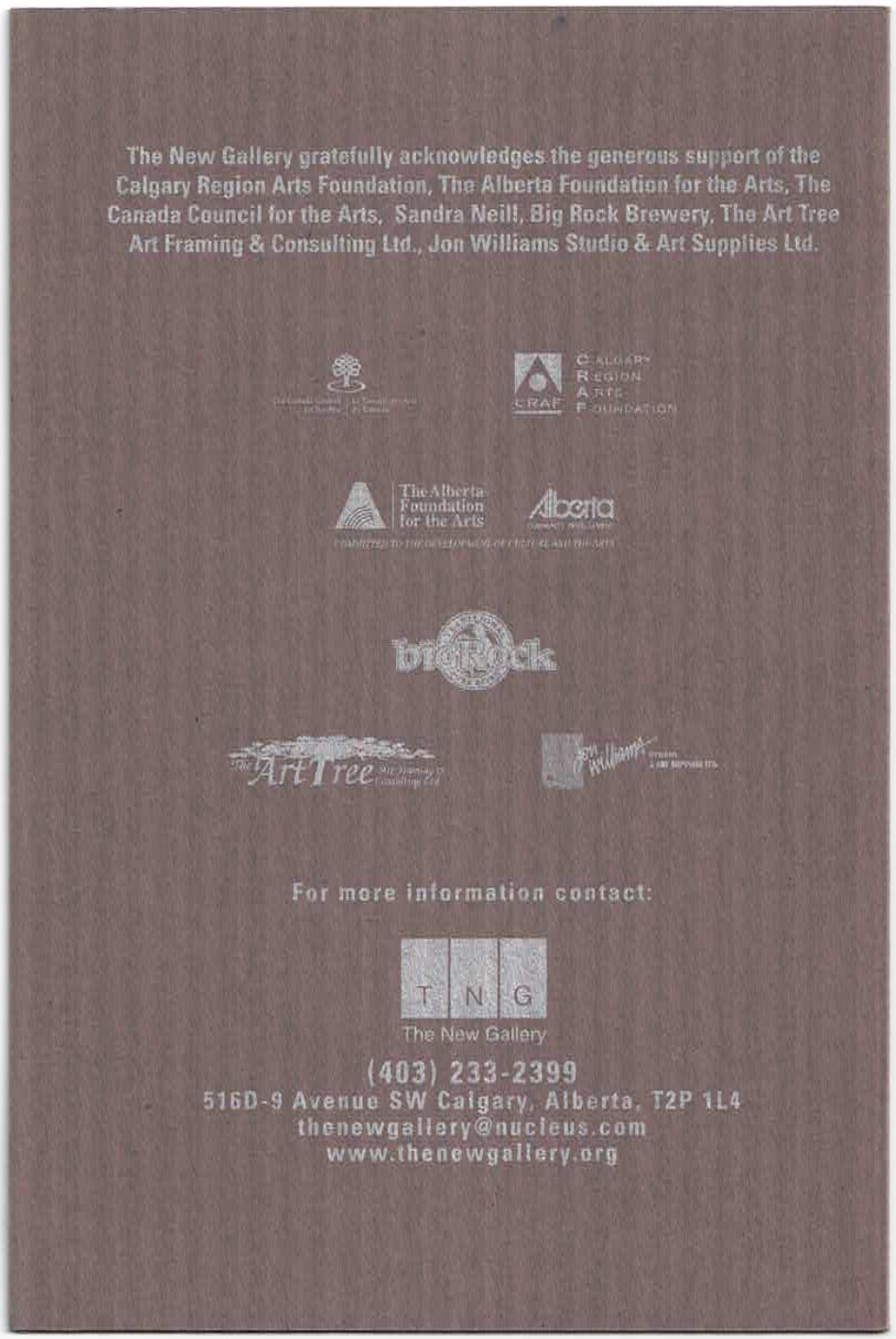
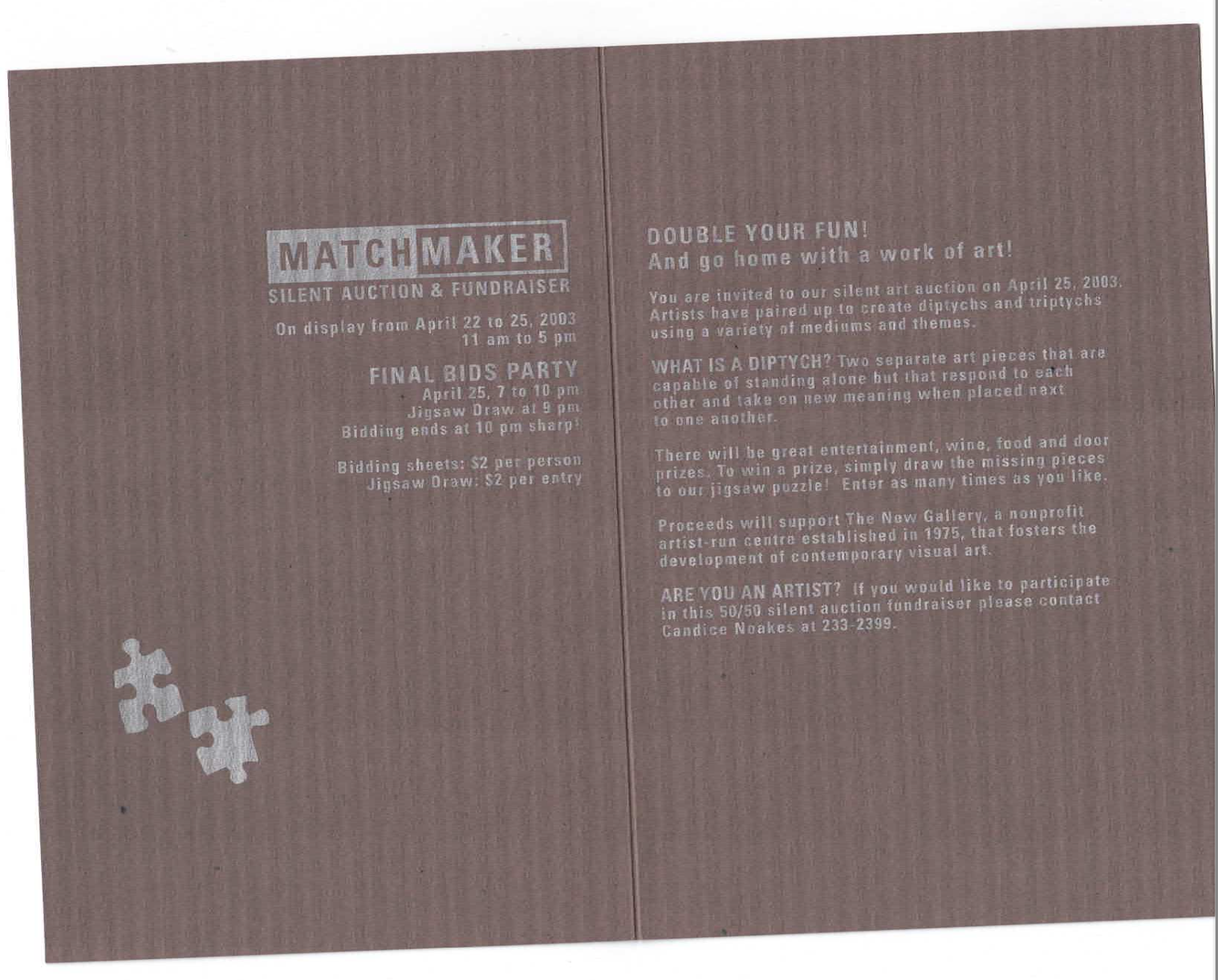

Lily, Lotus and Caterpillars
Maymee Ying Lum
March 14 - April 11, 2003
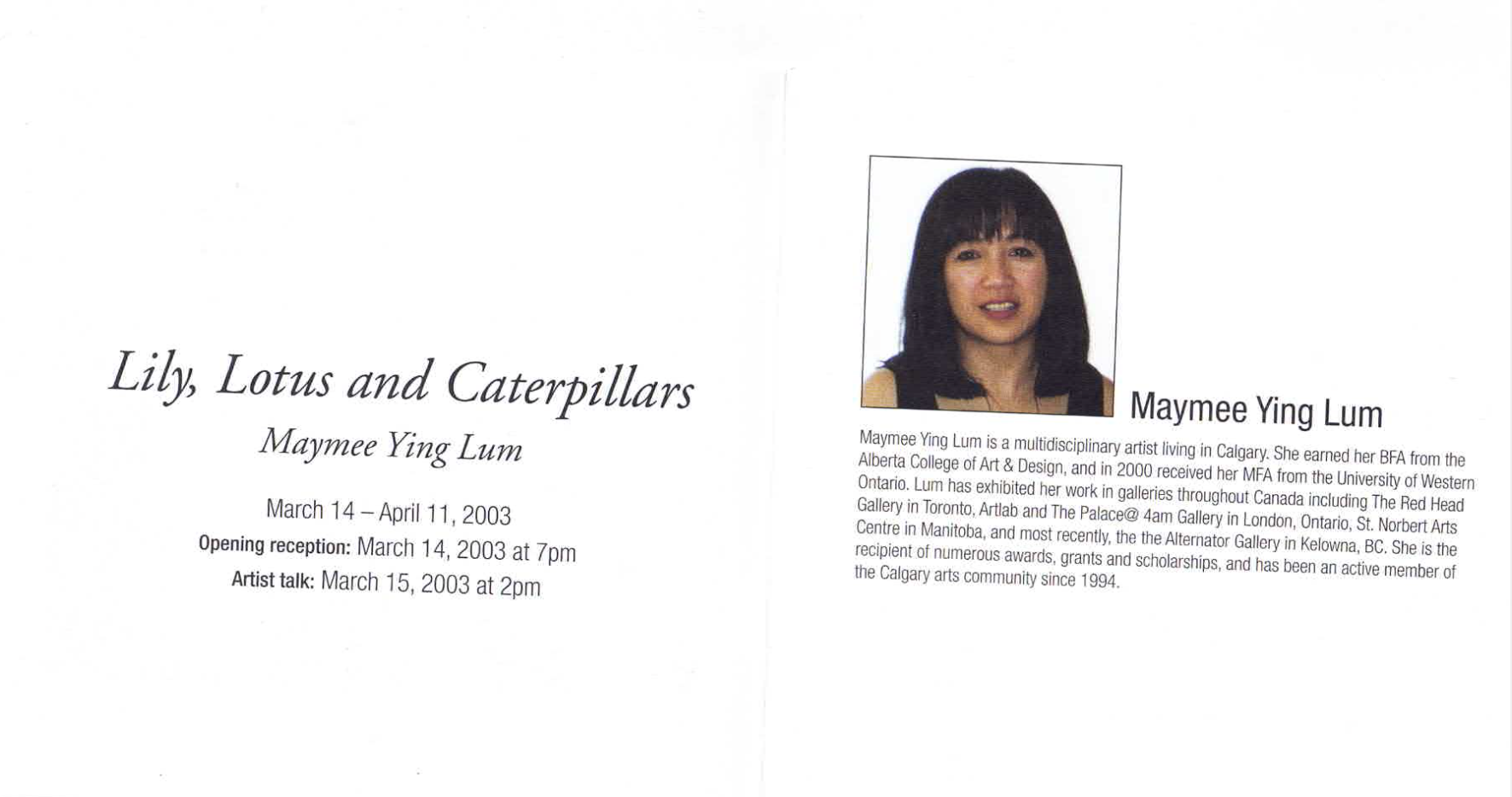
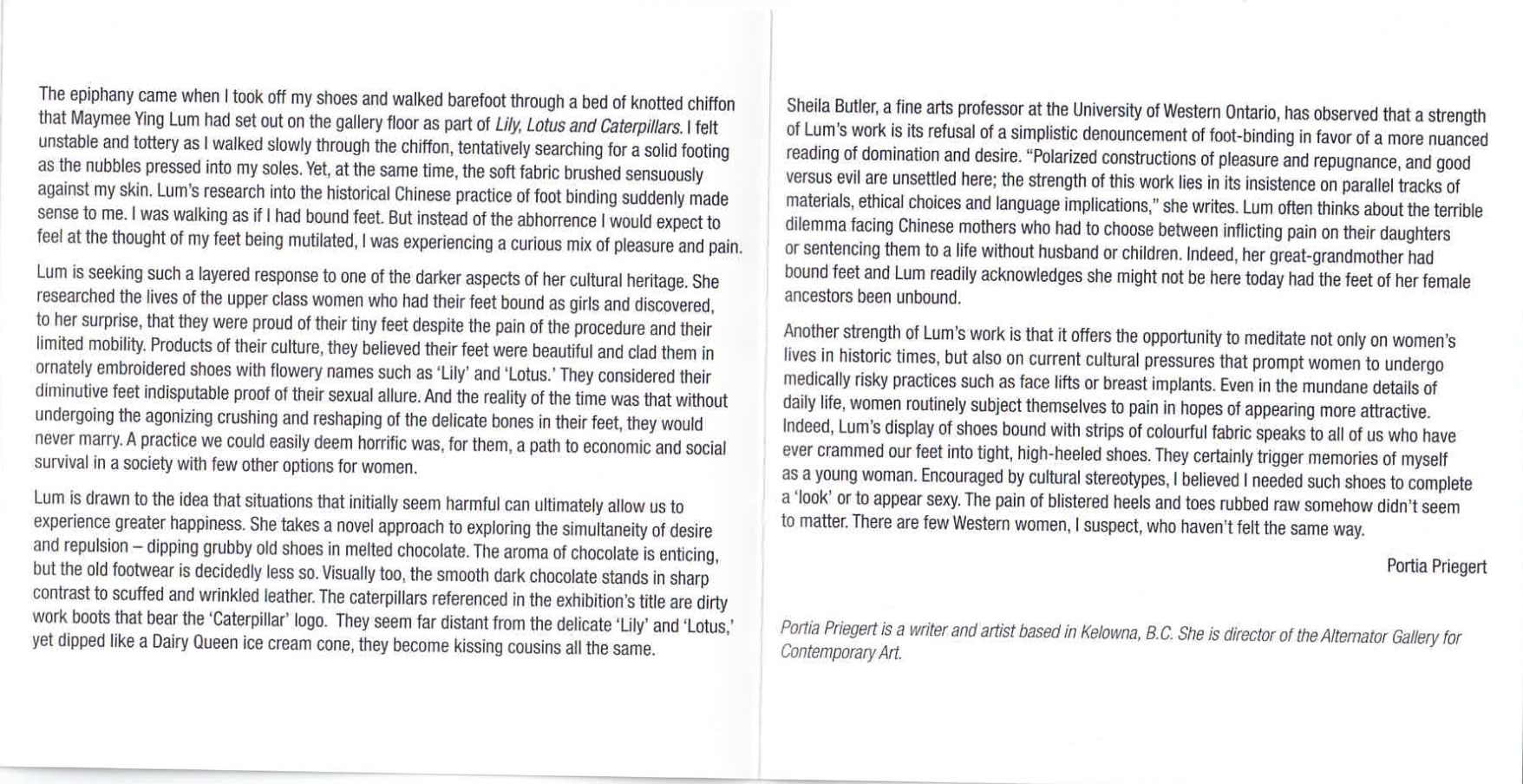



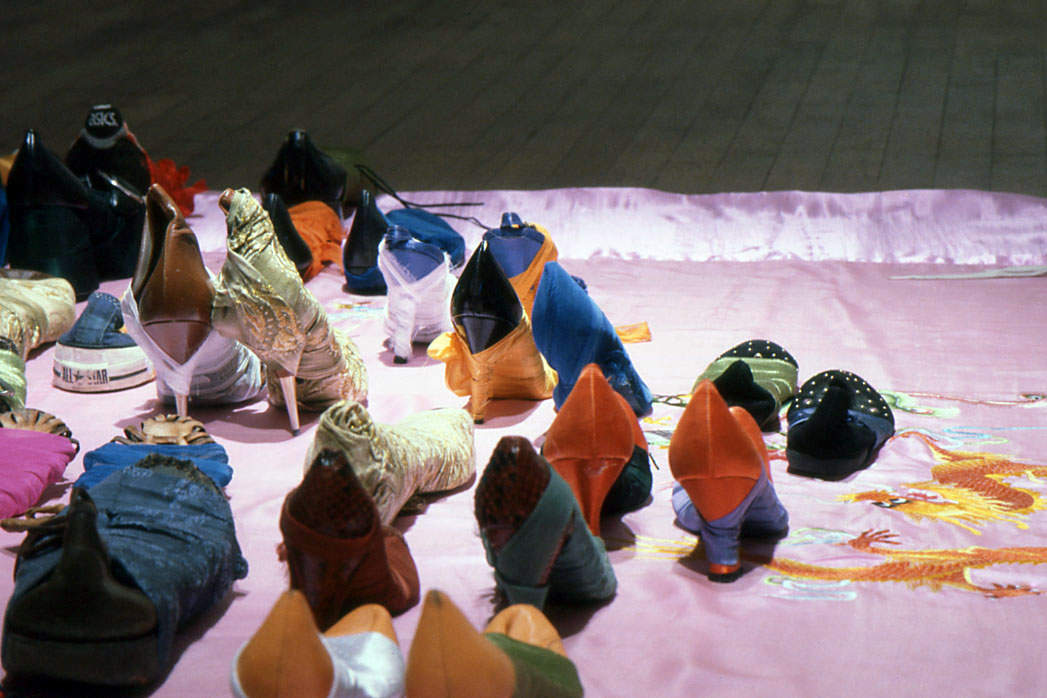





Heckle and Jeckle
Daniel Olson
May 2 - 30, 2003
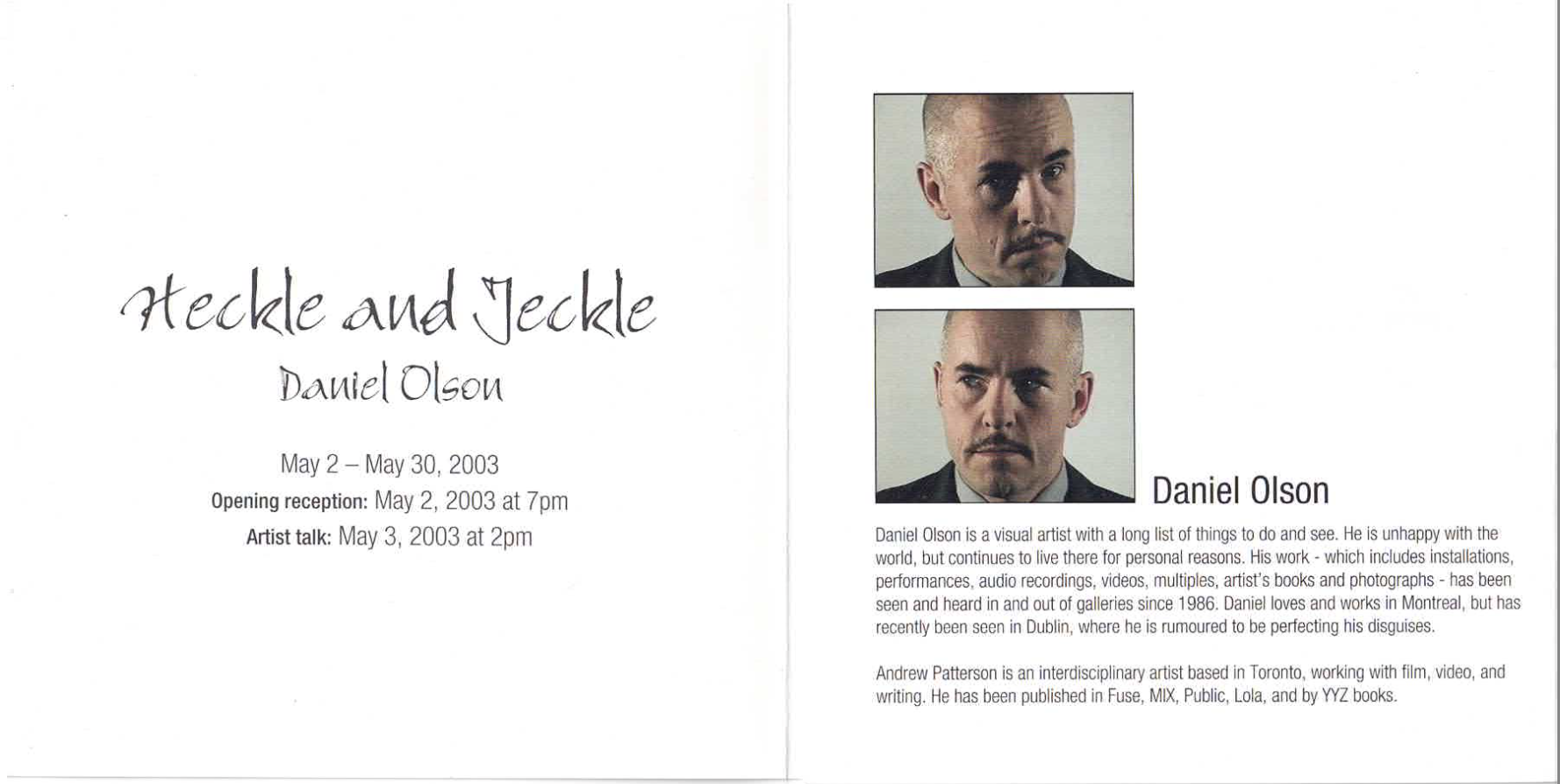


Canvasback
Dan Painchaud
June 6 - July 4, 2003







EVERYMANerism
Richard SMOLinski
Front Space
February 8 – March 2, 2002
Calgary artist, SMOLinski will exhibit approximately 20 black and white images executed on paper with water-based media that portray male figures in a variety of roles. By examining the male gender’s conventions, stereotypes and roles, the artist illustrates a number of motivating factors and societal influences that contribute to this behaviour.



Animals
Wendy Tokaryk
June 7 - 29, 2002
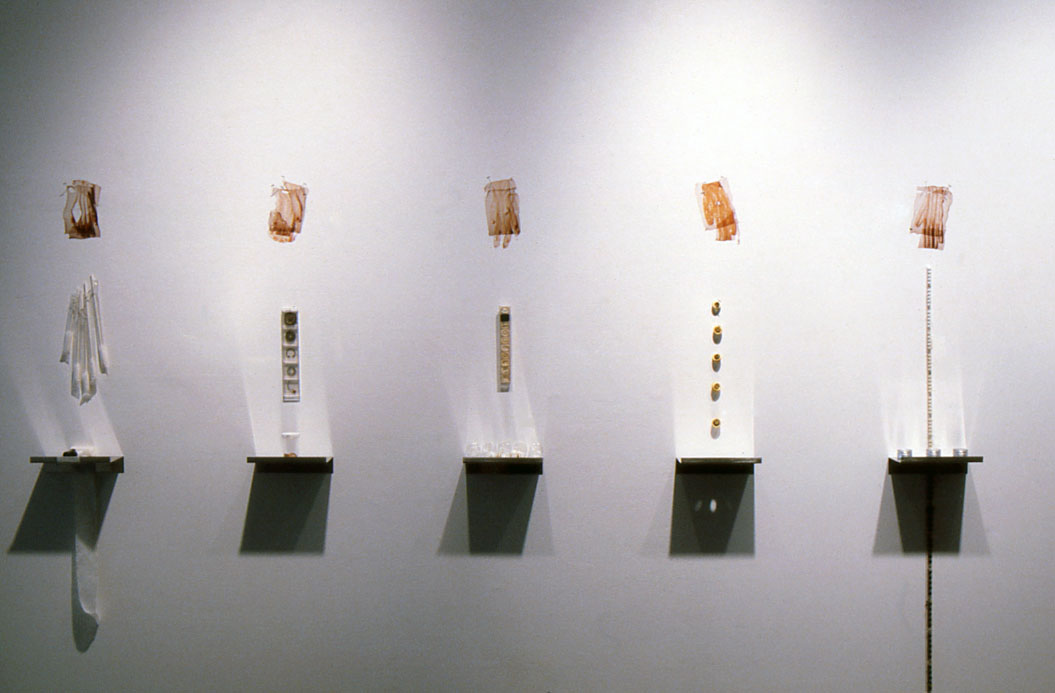
glove: an examination
Colleen Rauscher
September 6 - October 5, 2002



Conformed
Anyes Fabre-Dimsdale
January 11 - February 2, 2002




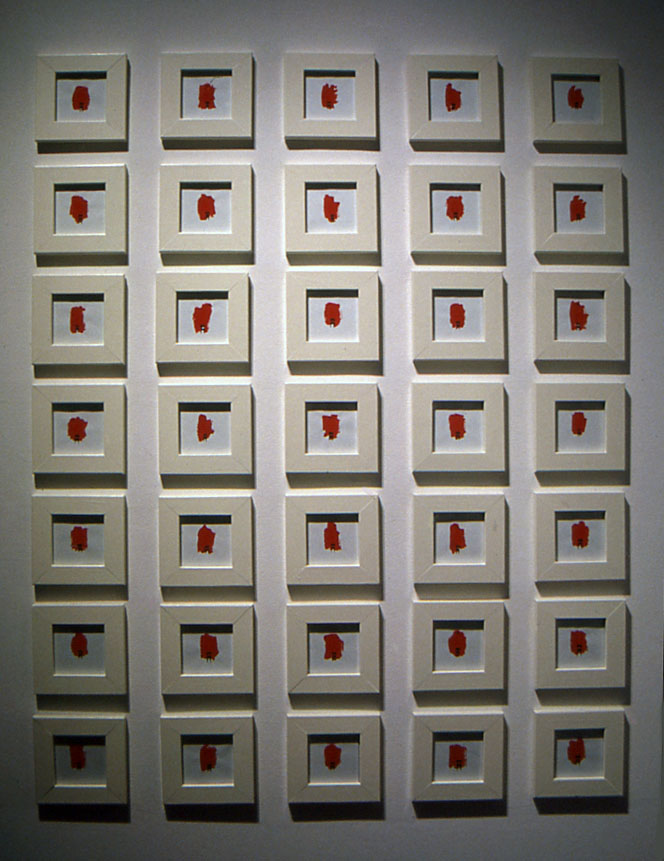

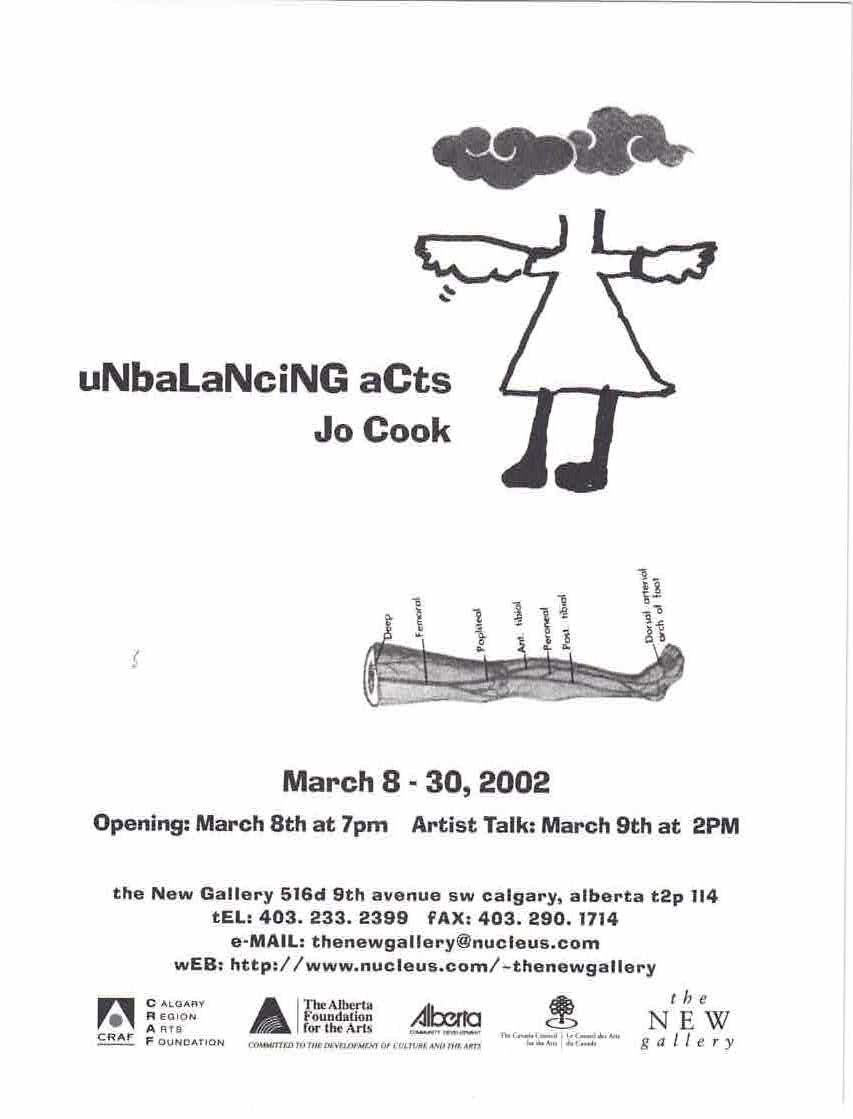
Unbalancing Acts
Jo Cook
March 8 - 30, 2002

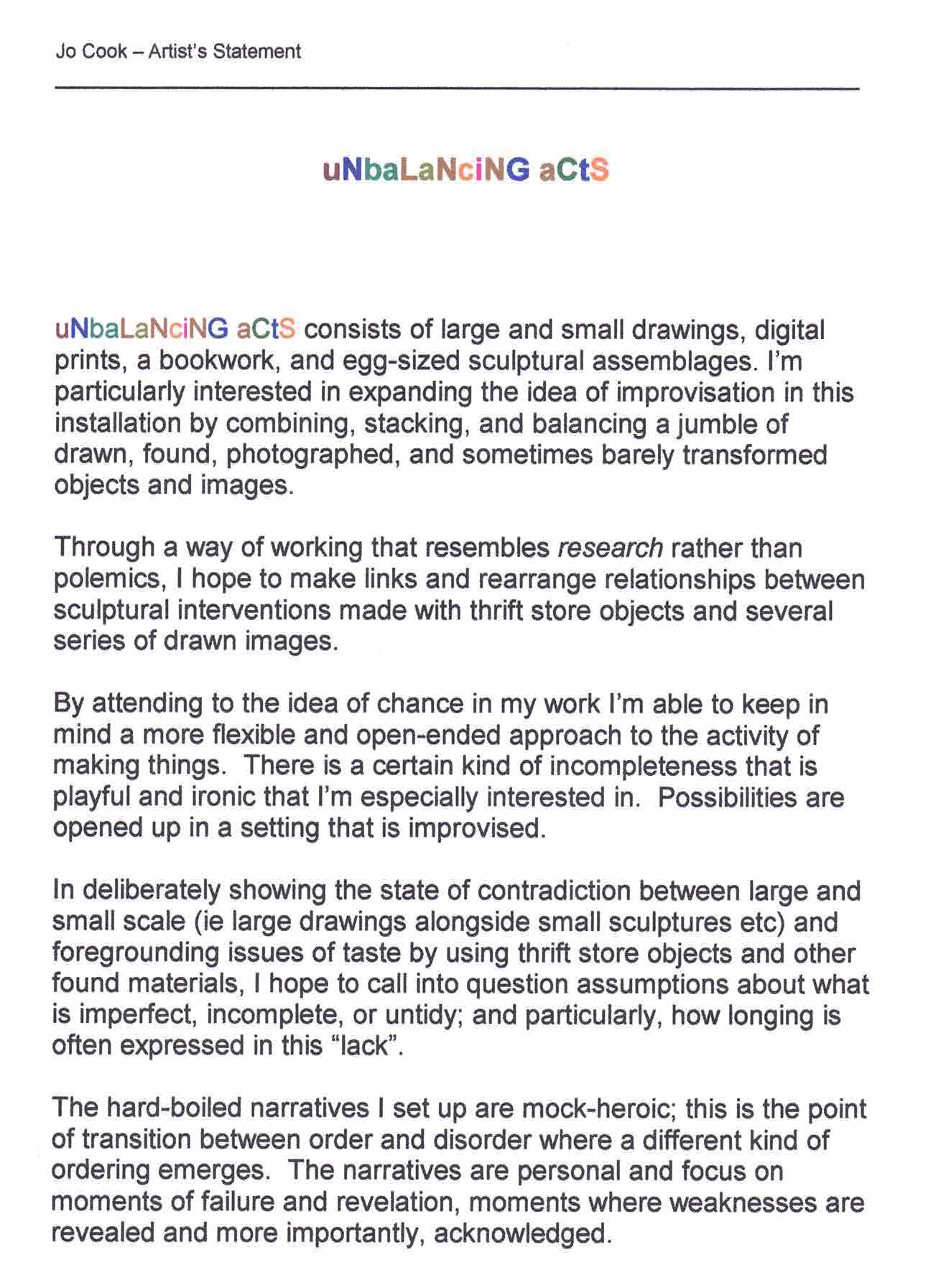

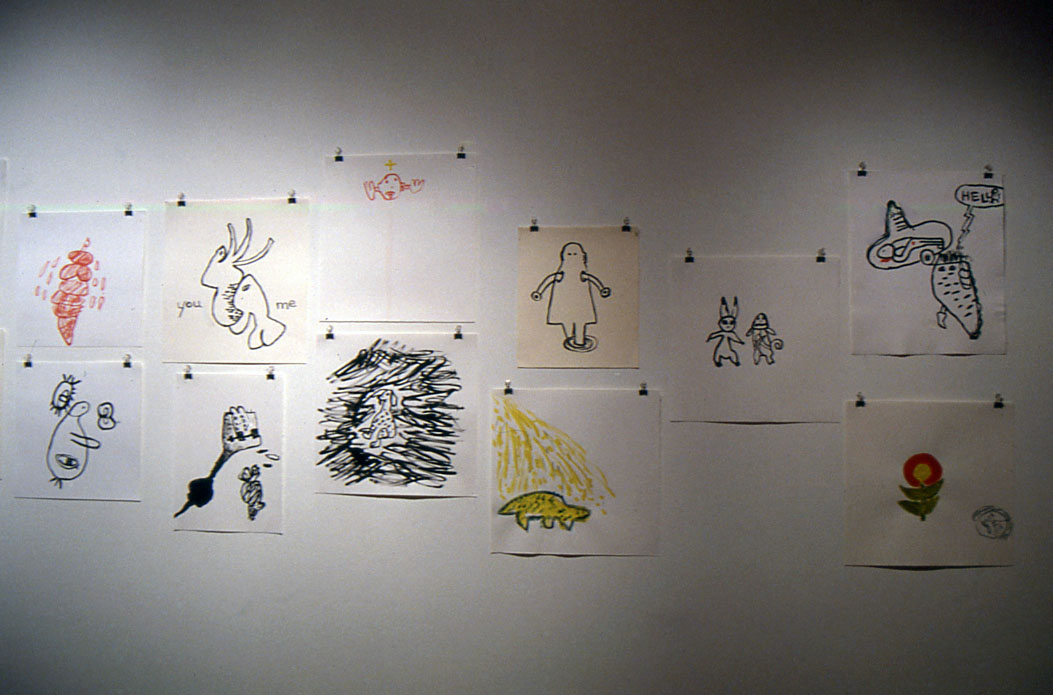

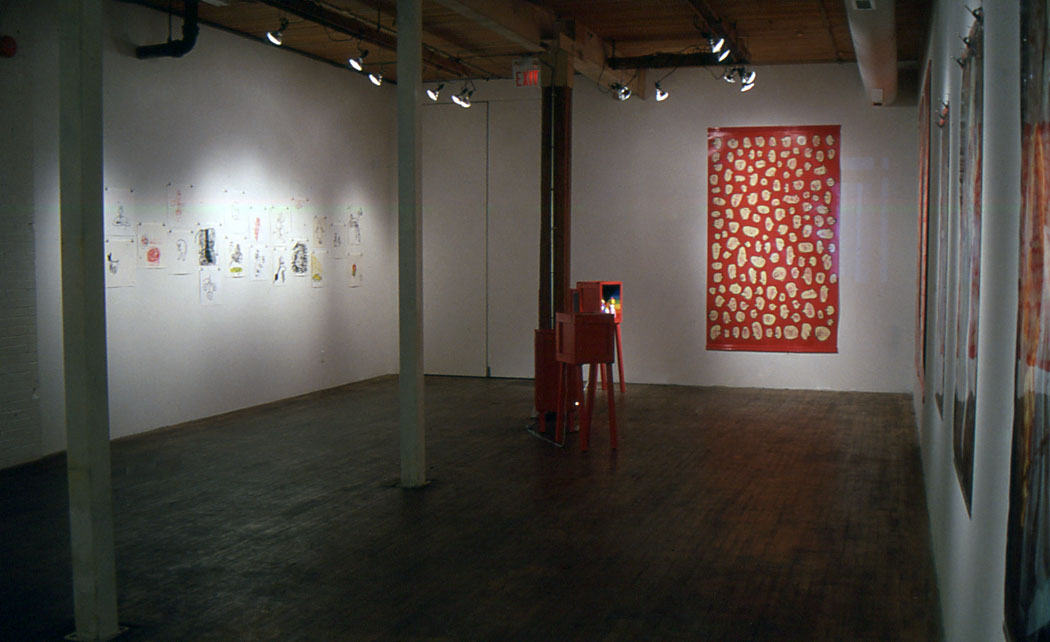
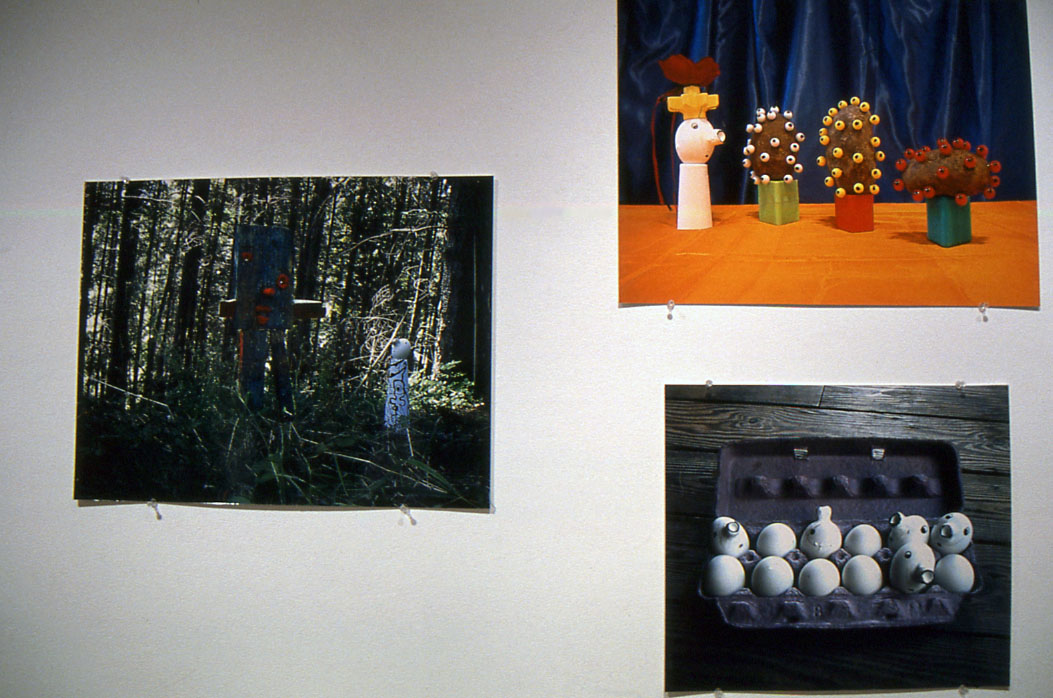
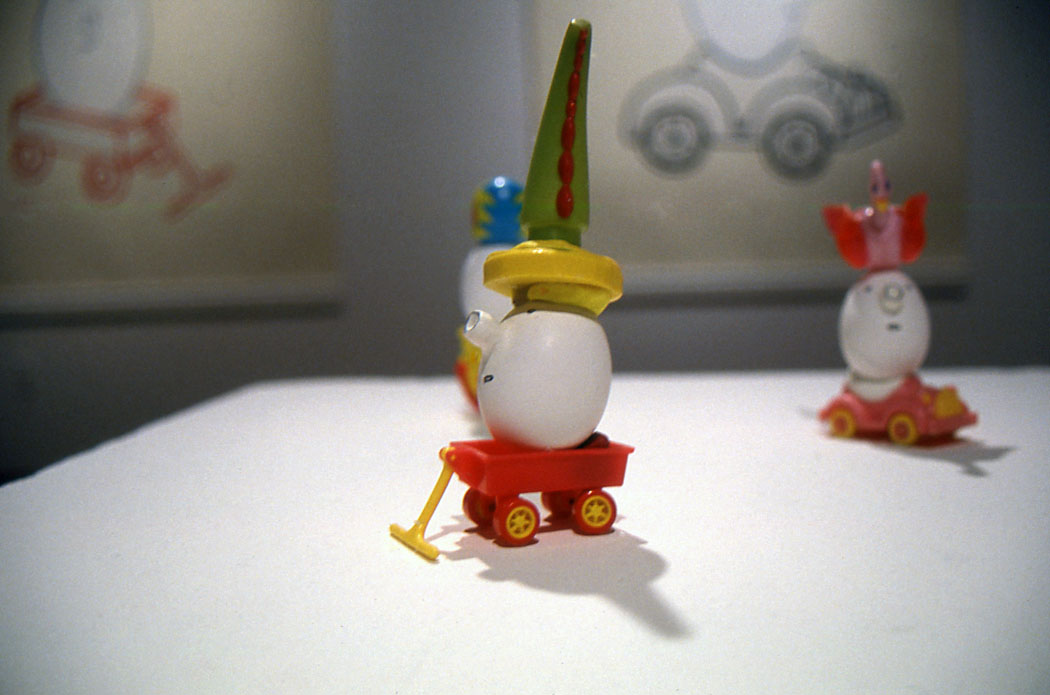

India-Images
Ashok Mathur
January 5 - 27, 2001

 monk/scroll 90” x 36” text by Fred Wah and Rita Wong
monk/scroll 90” x 36” text by Fred Wah and Rita Wong
A Thousand Words Exactly
Alden Alfon
Kathryn Burns
Mark Clintberg
David Graneau
Amy Gogarty
Mireille Perron
Grant Poier
Mary Scott
Teak Sato
Diana Sherlock
November 2 - 24, 2001

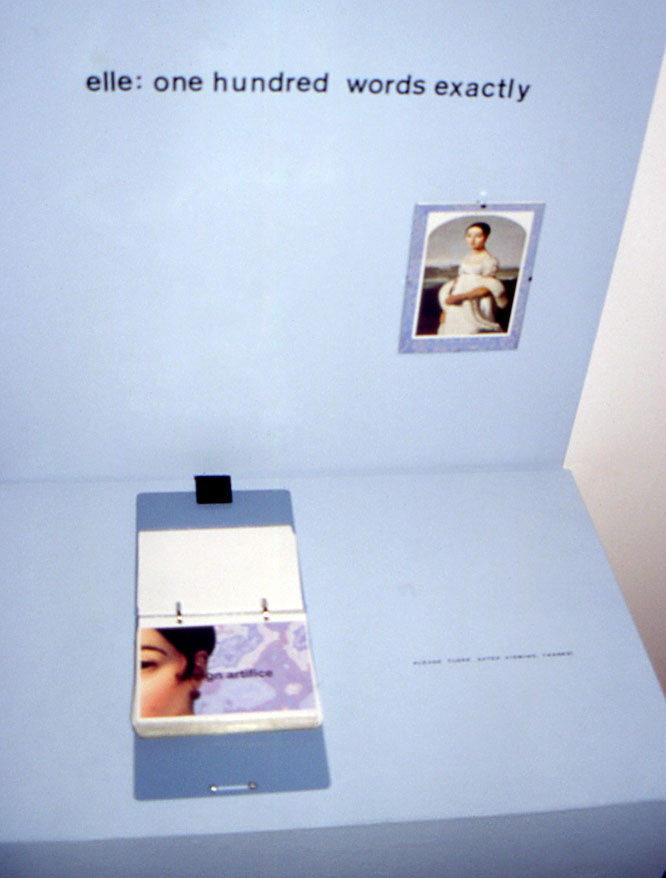
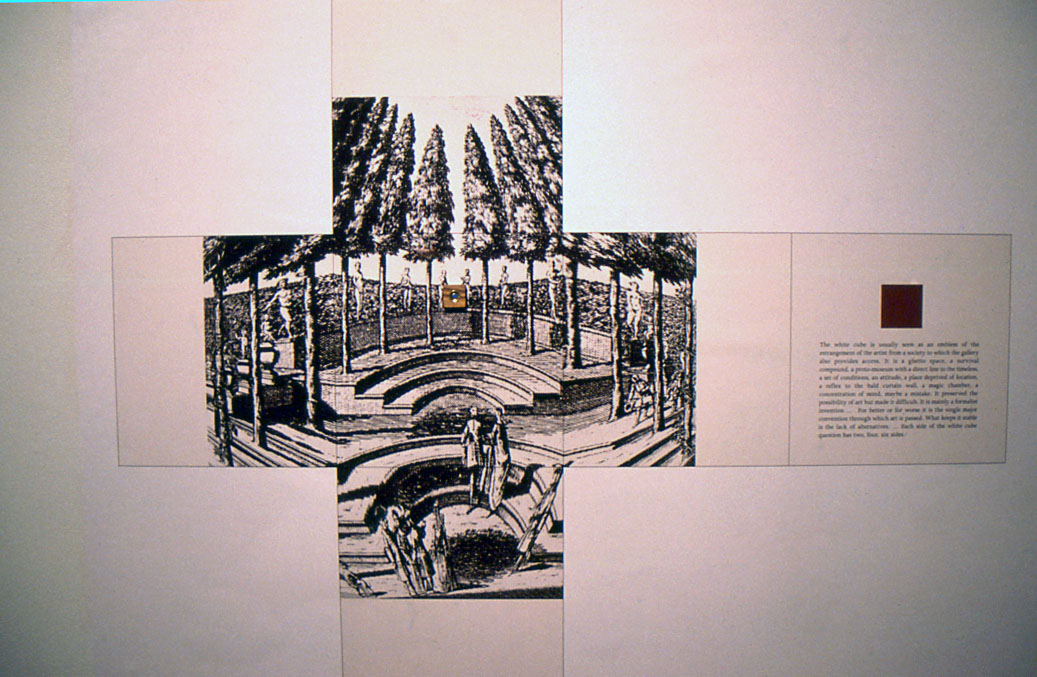


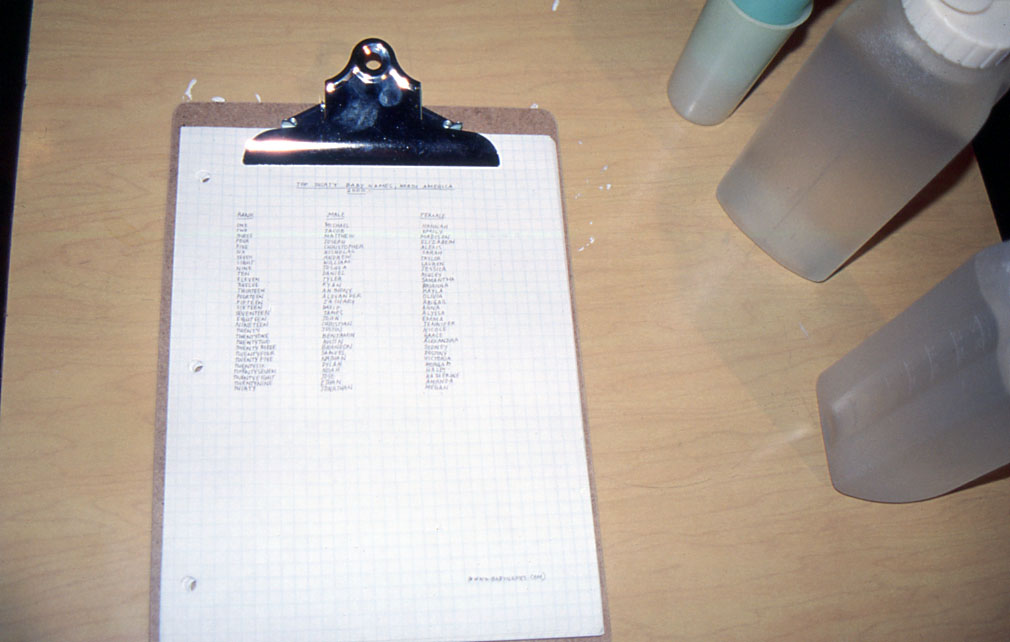




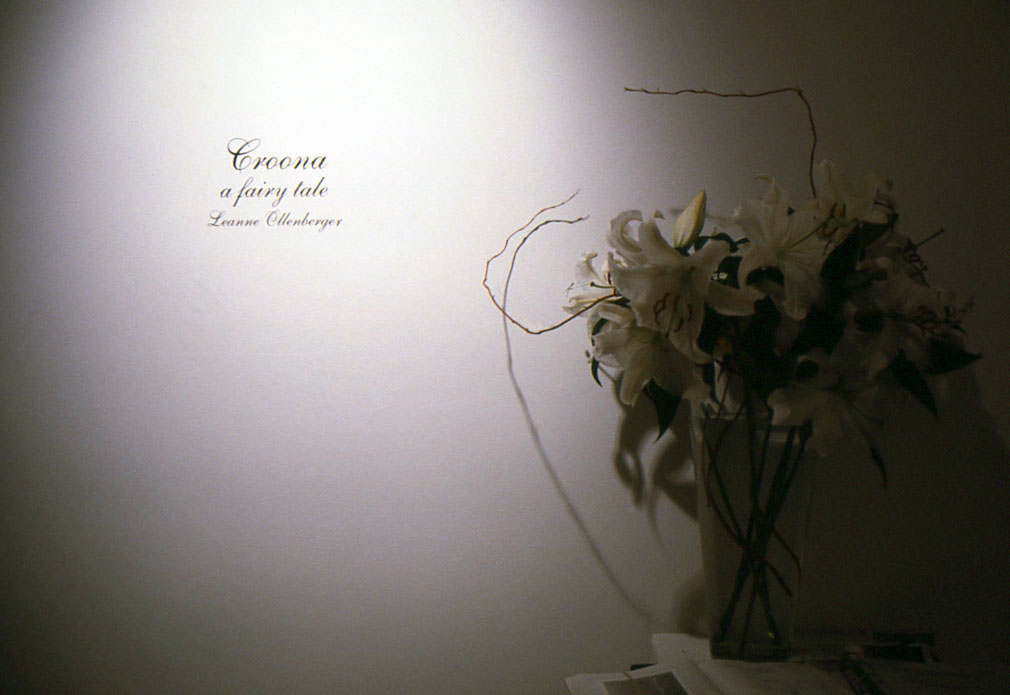
Croona: a fairy tale
Leanne Ollenberger
February 2 - 24, 2001

Higher the Lower
Shauna Kennedy
September 7 - 29, 2001




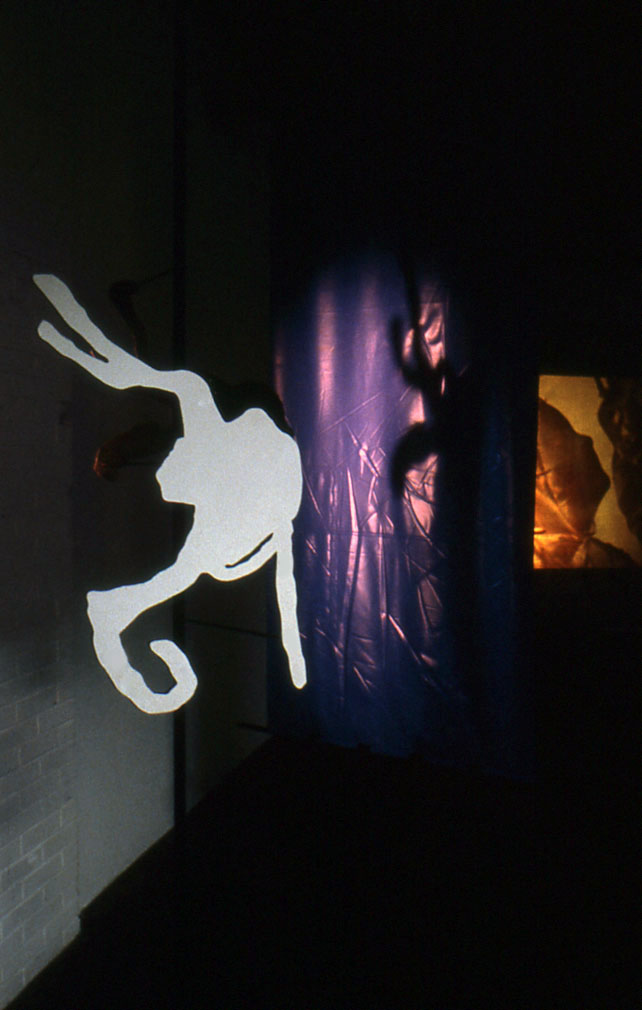
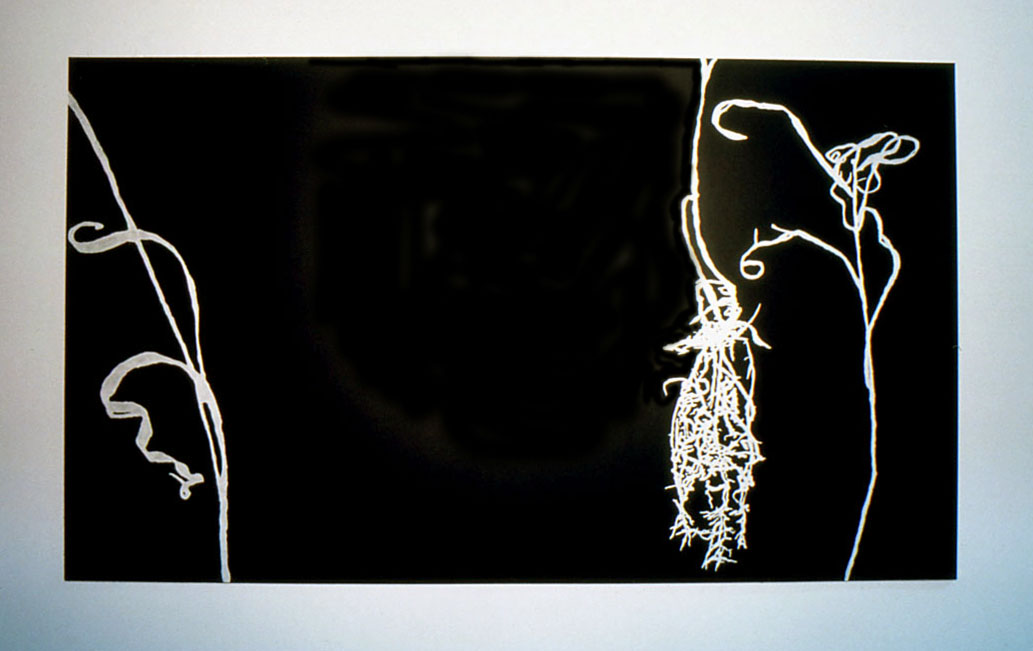


Pieces
Dafina Gueourguieva
October - November, 2001


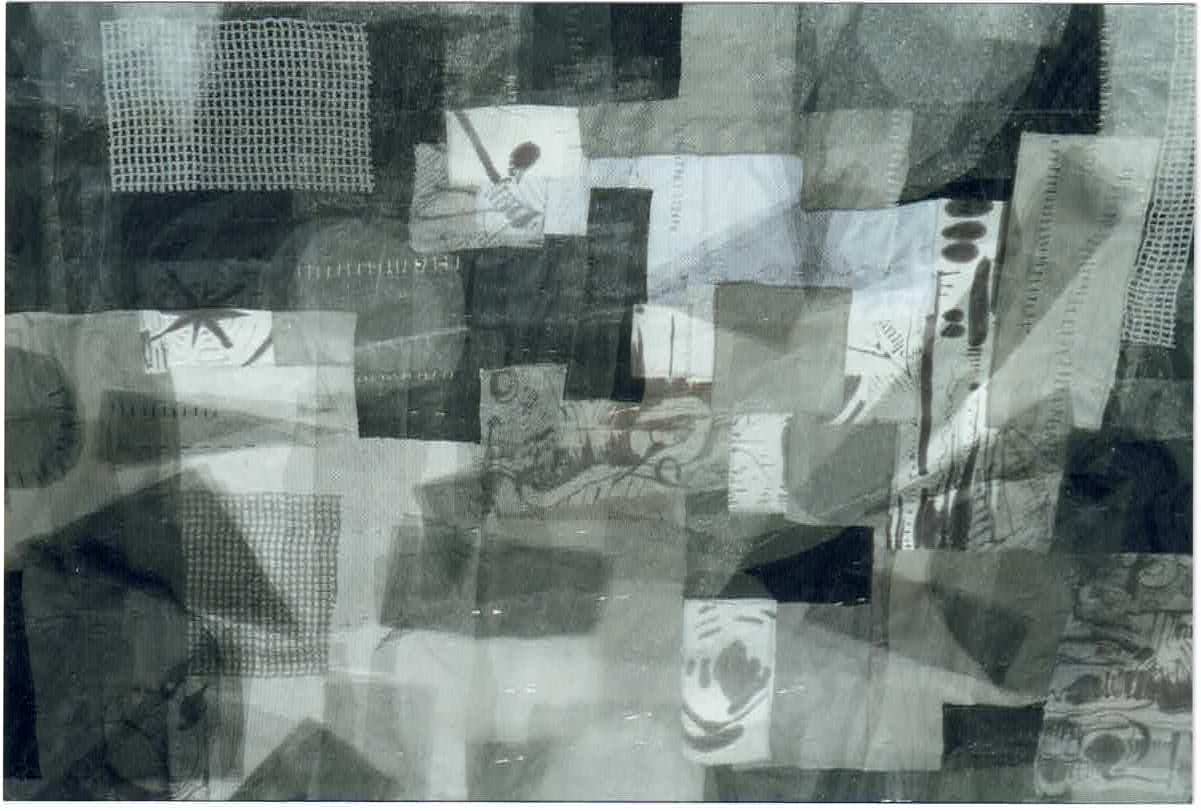


 Adrienne Jenkins, Leroy “Brownie” Green (1999), mixed media, 32”x40”
Adrienne Jenkins, Leroy “Brownie” Green (1999), mixed media, 32”x40”Windows
Adrienne Jenkins
January 18 - 29, 2000


Space for Space Event #14
October 30, 2000
 Dan Miechel and Cody Oliver, “David Lynch’s Cow”
Dan Miechel and Cody Oliver, “David Lynch’s Cow”

Vi An and others

Summerlad, “Yin Yango Pongo”
 Julie Shanks and Milan Chevalier, Performance
Julie Shanks and Milan Chevalier, Performance Shecky Formé Trio
Shecky Formé Trio Shecky Formé Trio
Shecky Formé Trio

SNOOD
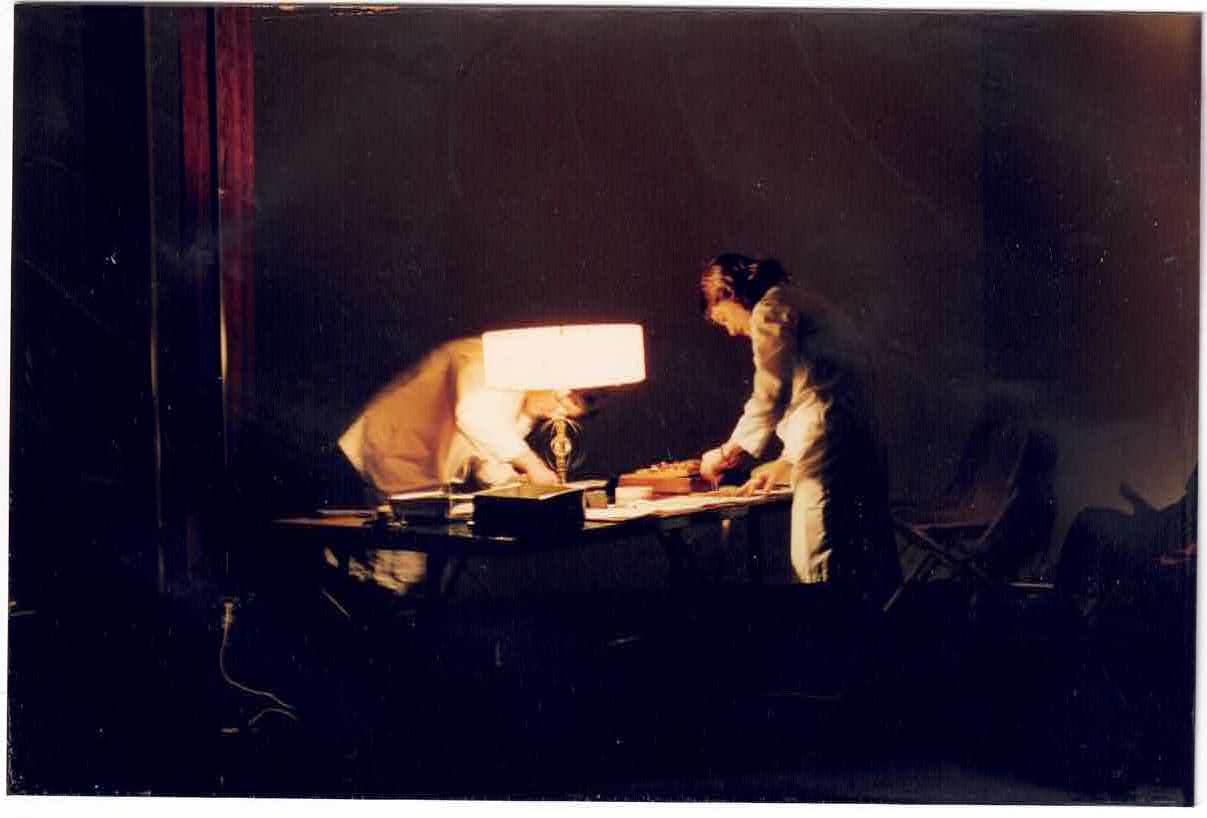 Julie Shanks and Milan Chevalier
Julie Shanks and Milan Chevalier

Julie Shanks and Milan Chevalier’s keyboard player
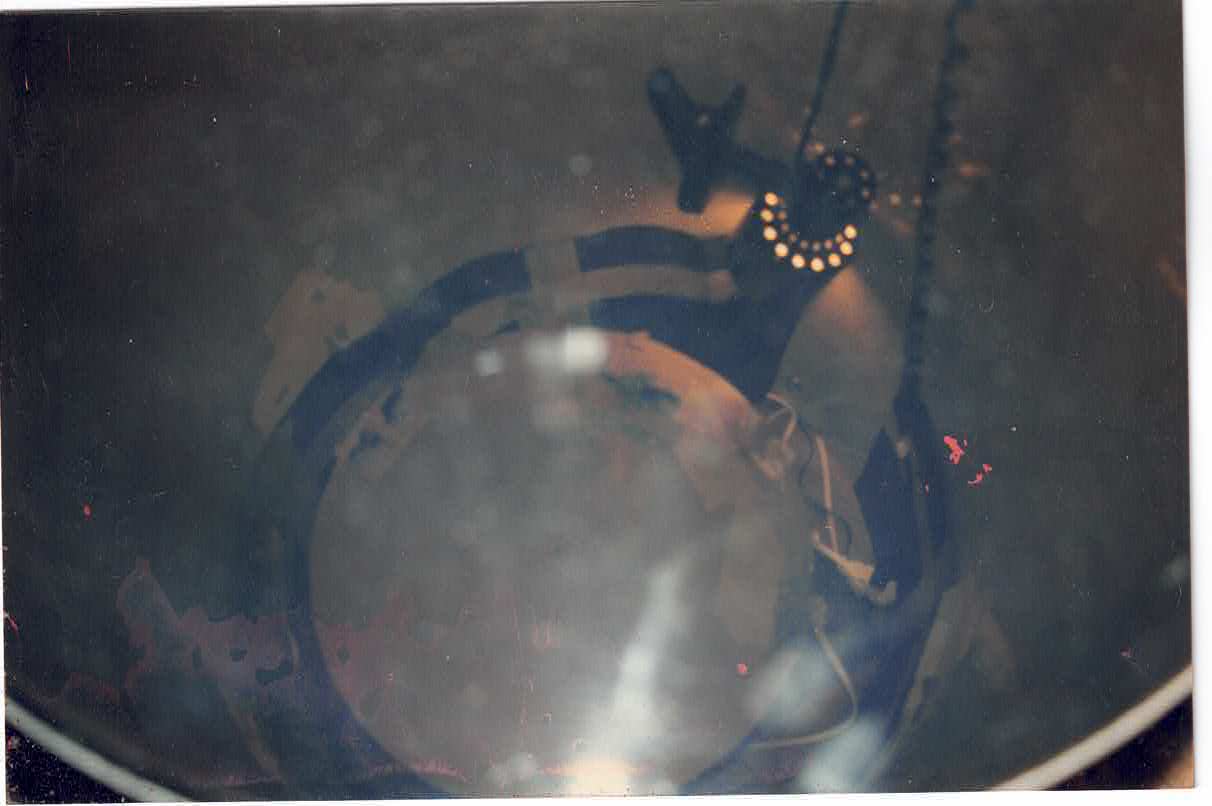

Space for Space Event #11
April 16, 2000

Space for Space Event #10
January 31, 2000

Scotch and cigars: The Jeff Viner Retrospective Exhibition
Curated by Mark Dicey, organized by Arts Catalyst
January 7 - 29, 2000
 Exhibition catalogue for Scotch and Cigars
Exhibition catalogue for Scotch and Cigars
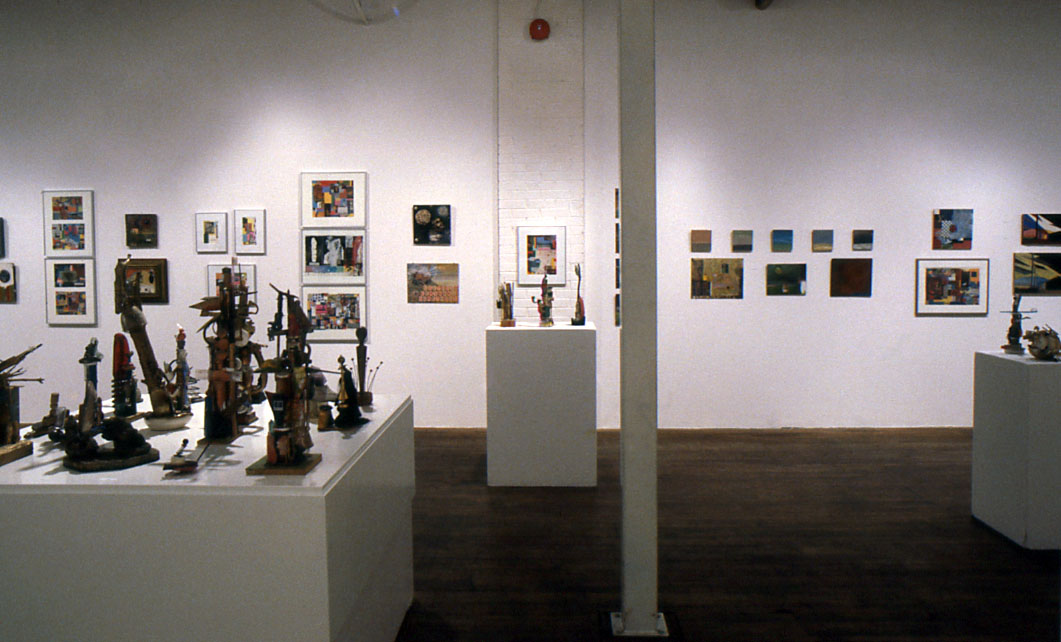
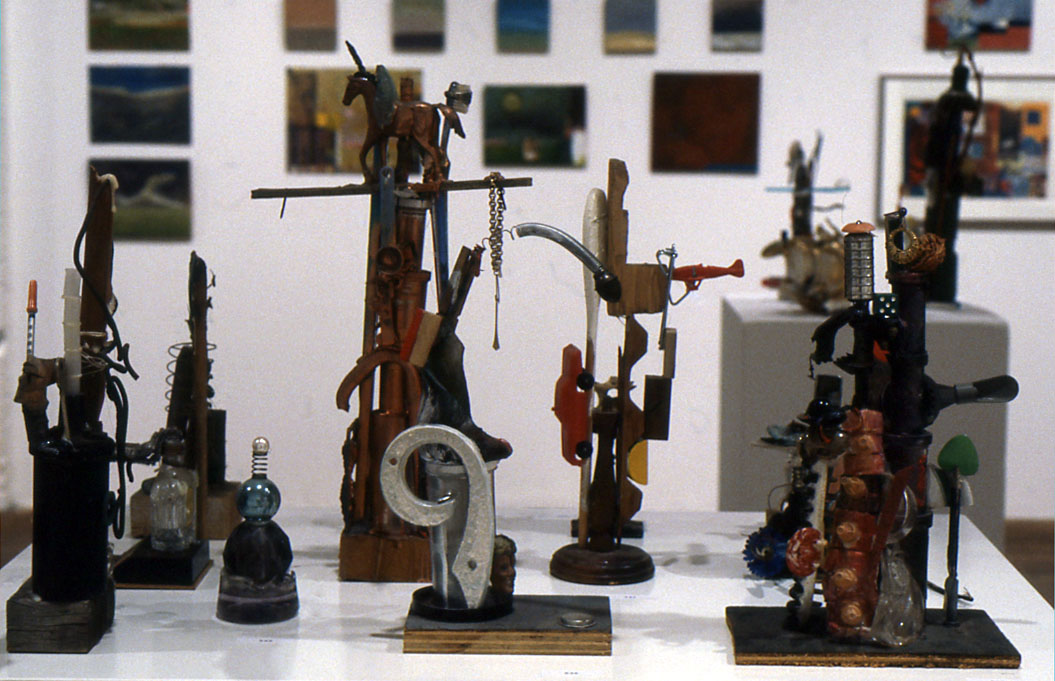



Sweet Decay
Tracy Stewart and Teresa Johnston
October 25 - November 6, 1999


Where Are You Wonderful?
Mathew Kabatoff
November 29, 1999
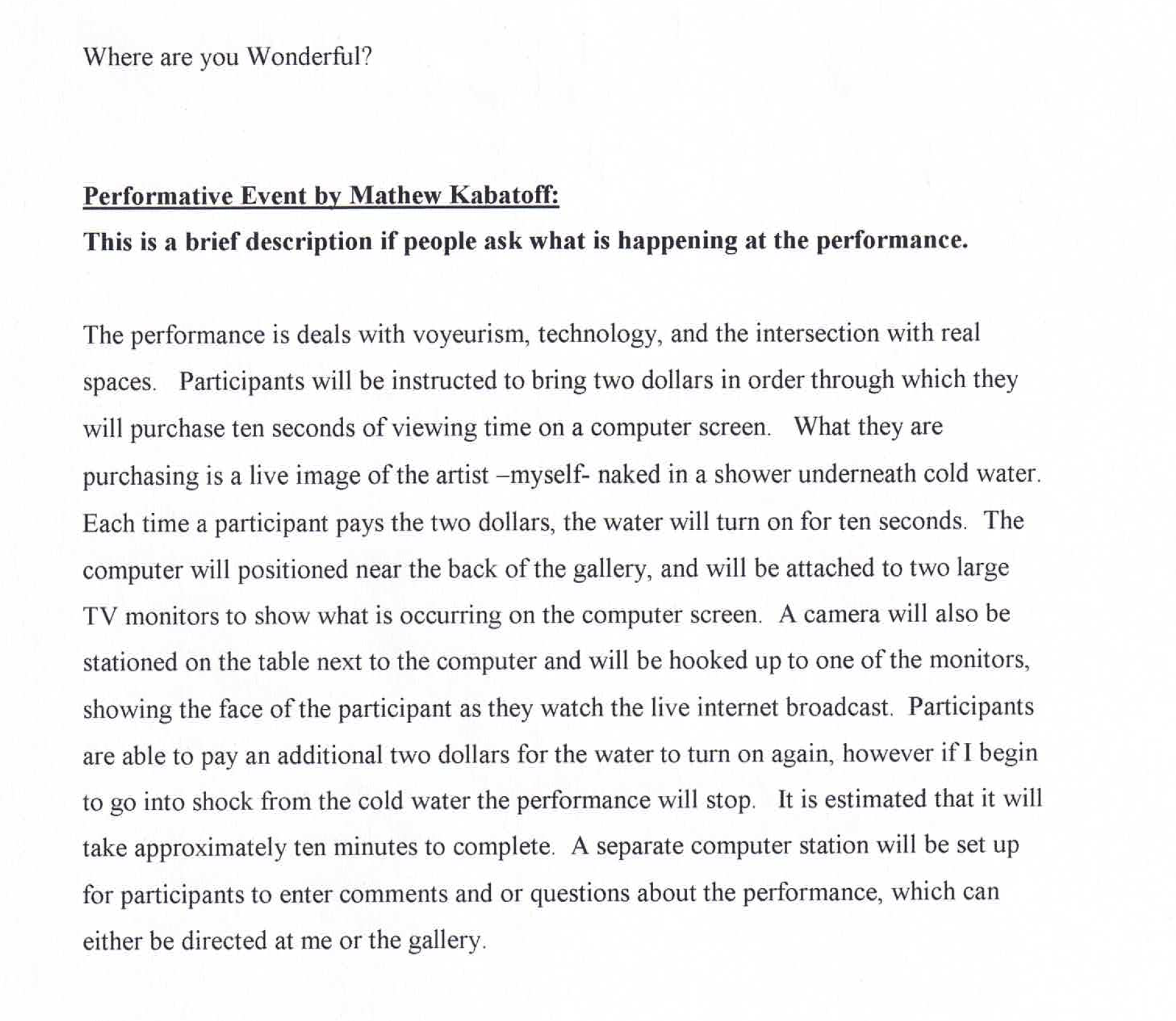

Space for Space Event #9
December 13, 1999

Space for Space Event #7
September 26, 1999


Space for Space Event #4
May 31, 1999

Emerging Identites
Angela Yee, Mary Kim, Carl Danker
December 1997 - January 1998


Constructs
Artist in residence Alexandria Patience
February 8 - March 28, 1997


Loose Connections
Kathy Kennedy
Magpie
Kenny Doren, Steve Heimbecker, Colleen Kerr
February 6, 1997

Swell
Myfawny MacLeod
November 7 - 29, 1997



What if the Earth Could Meet the Sky?
Susan Fae Haglund
August 13 - October 13, 1997


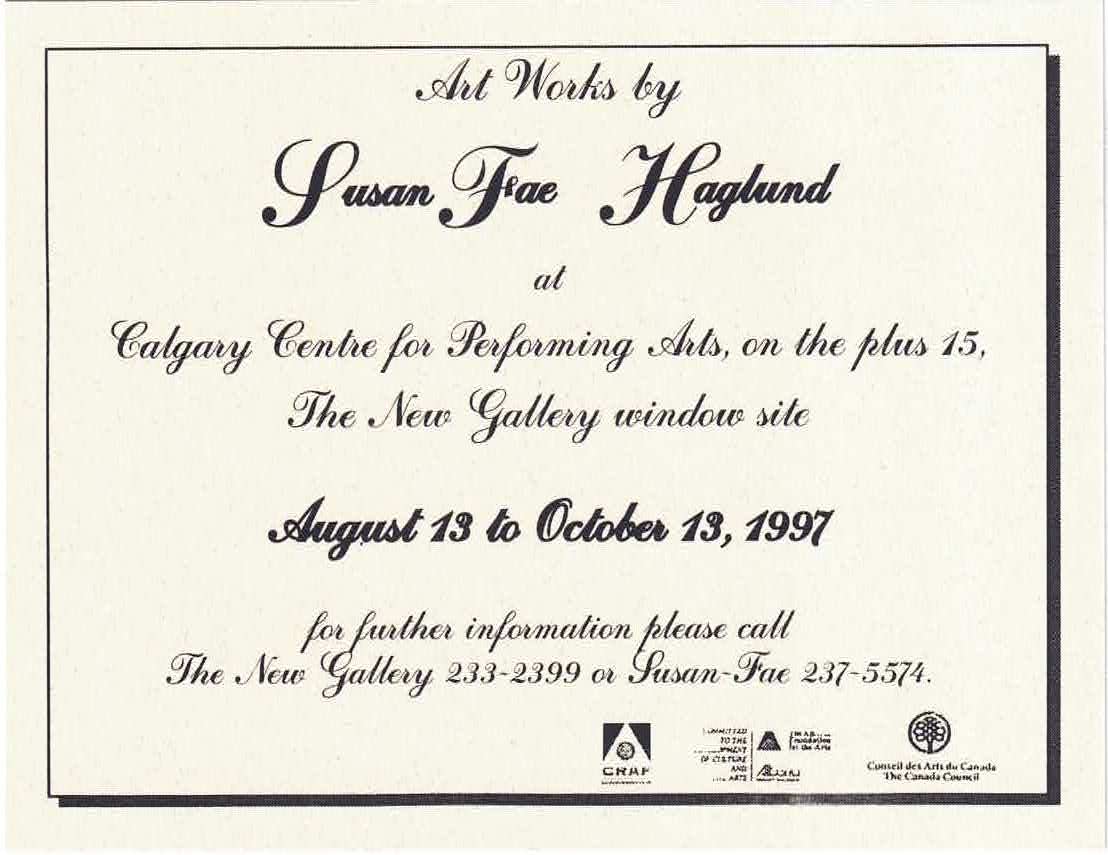

Letting Go
Mary Kim
September 29 - October 10, 1998


Beyond Good and Evil
Aaron Jarvis
November 6 - 28, 1998






Erasable You
Paul Jackson
February 6 - 28, 1998


Looking & Seeing
an exhibition of contemporary work of First Peoples Artist of Alberta
Curated by Joane Cardinal-Schubert
Richard Agecoutay
Bruno Canadien
Cindy Deslile
Alex Janvier
Fred McDonald
Celine Ritter
Jacinta Wostenberg
June 5 - 27, 1998


Space for Space
November 30, 1998
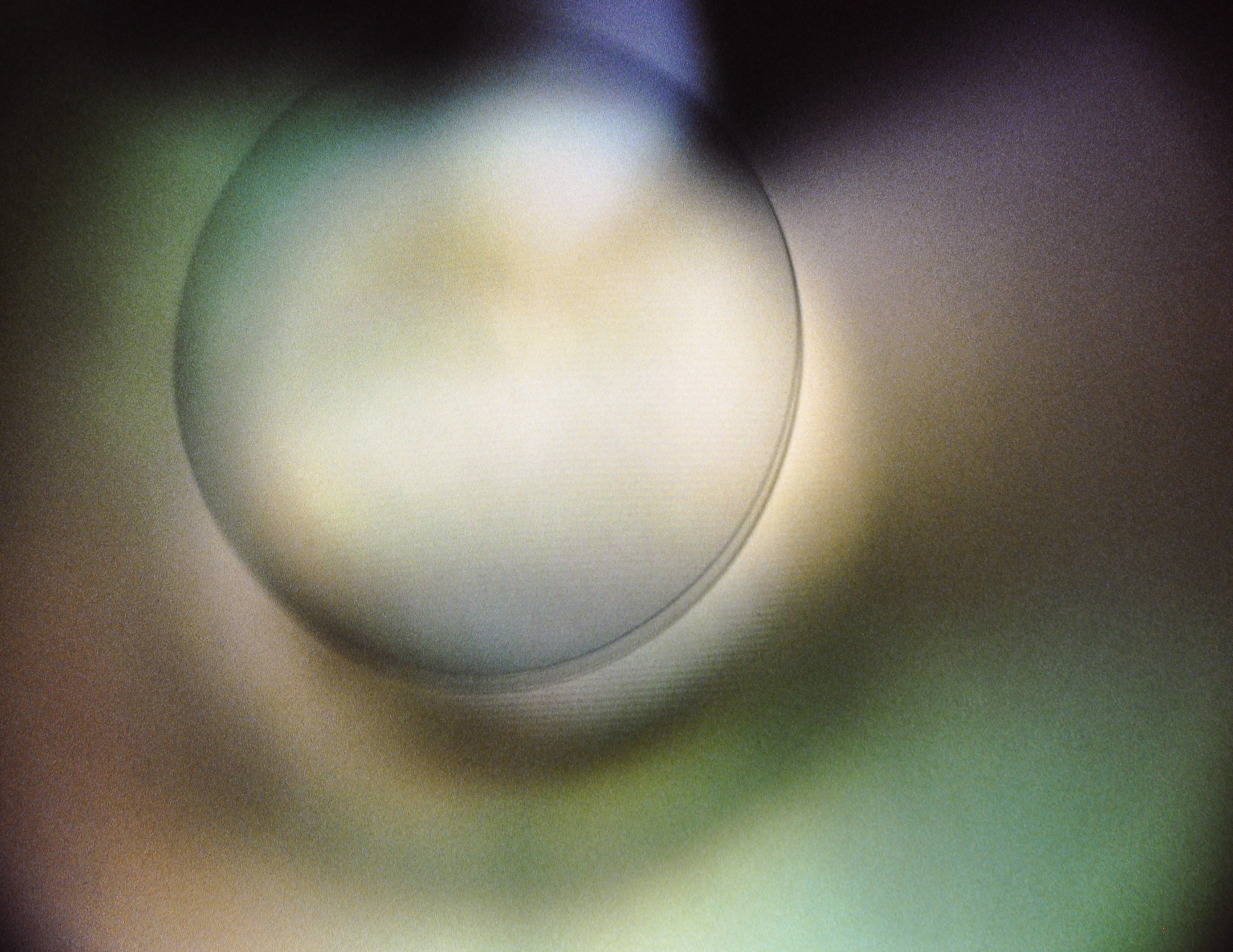
Brushism
Yoko Takashima
September 8 - 30, 1995
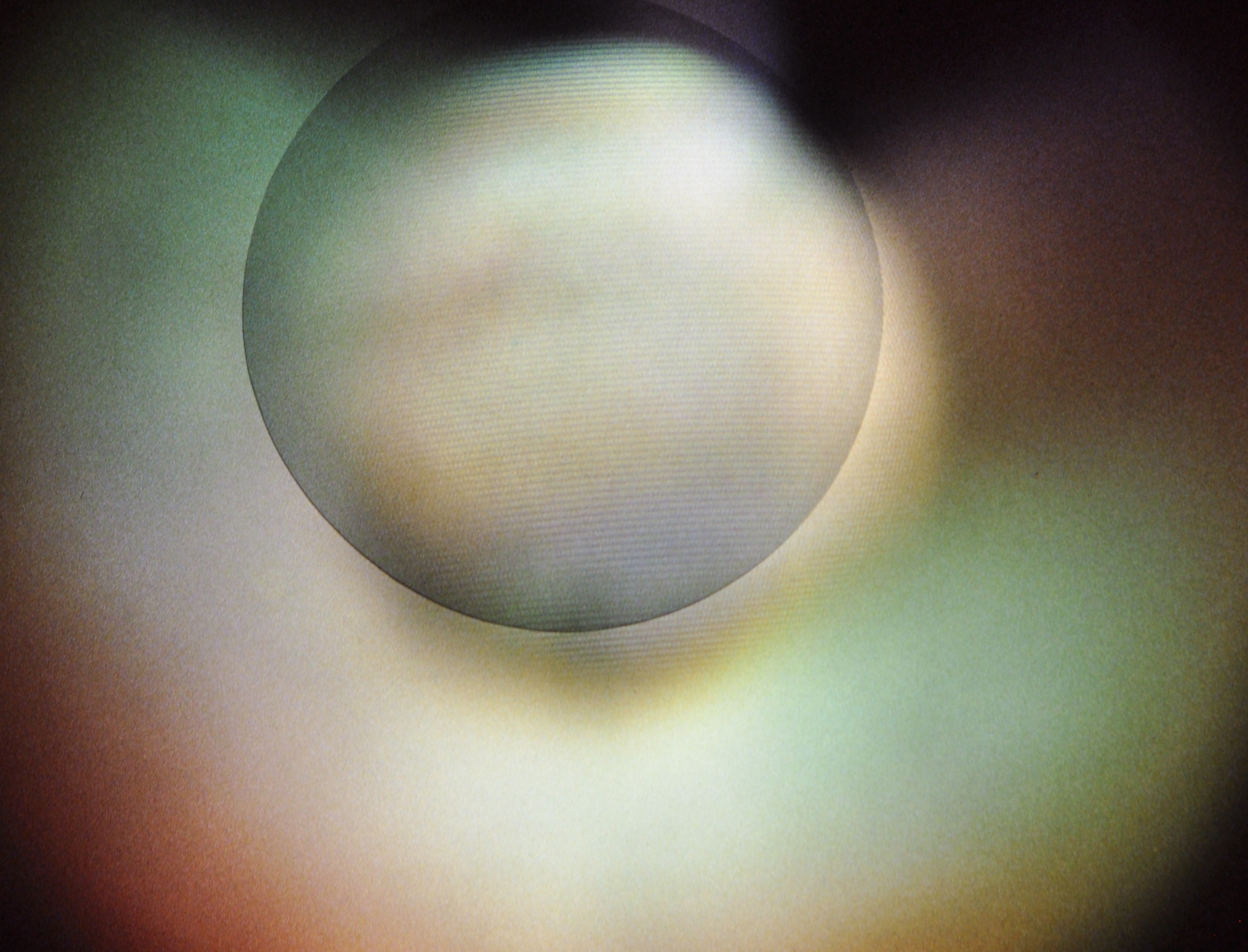
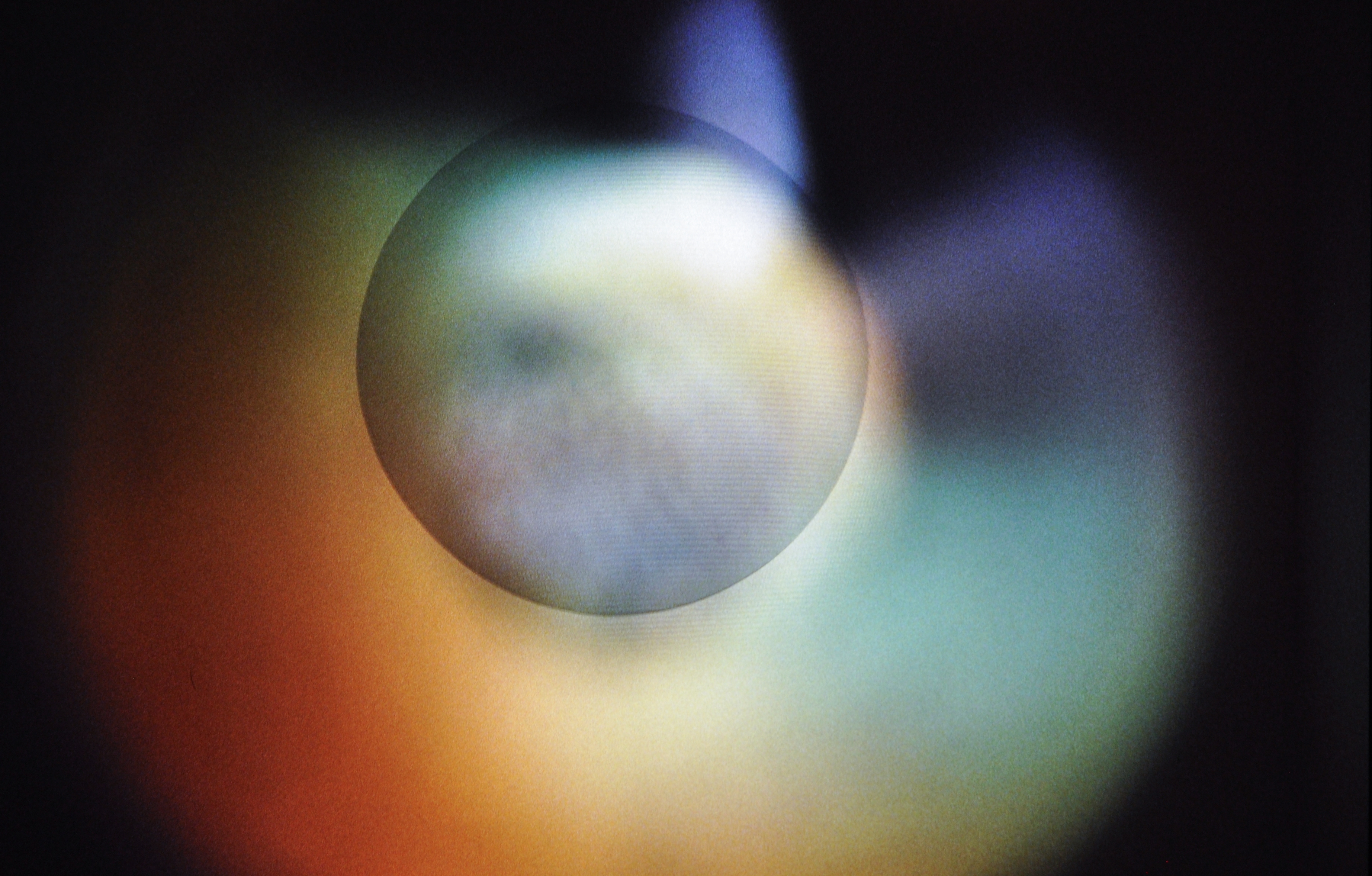

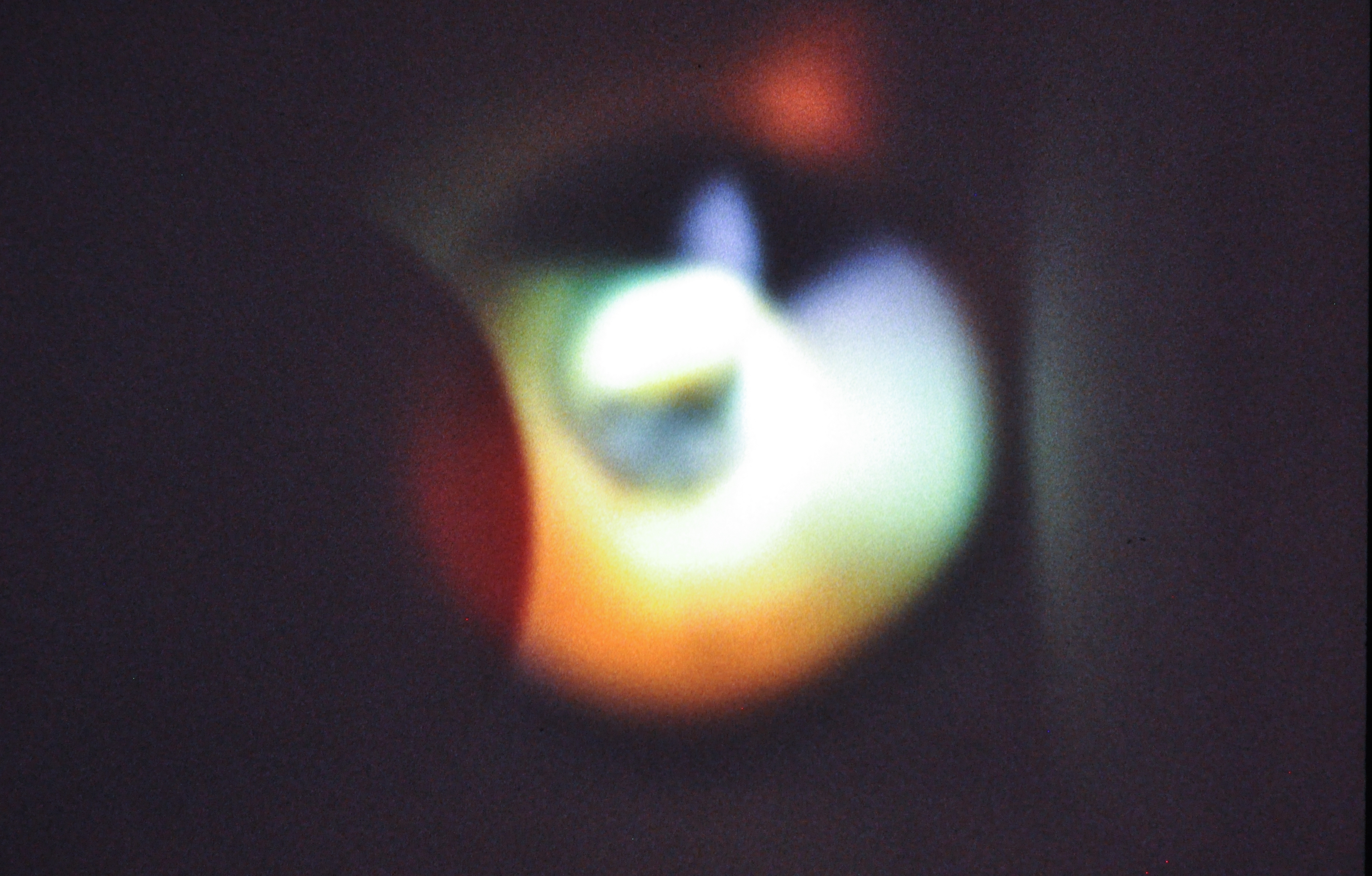





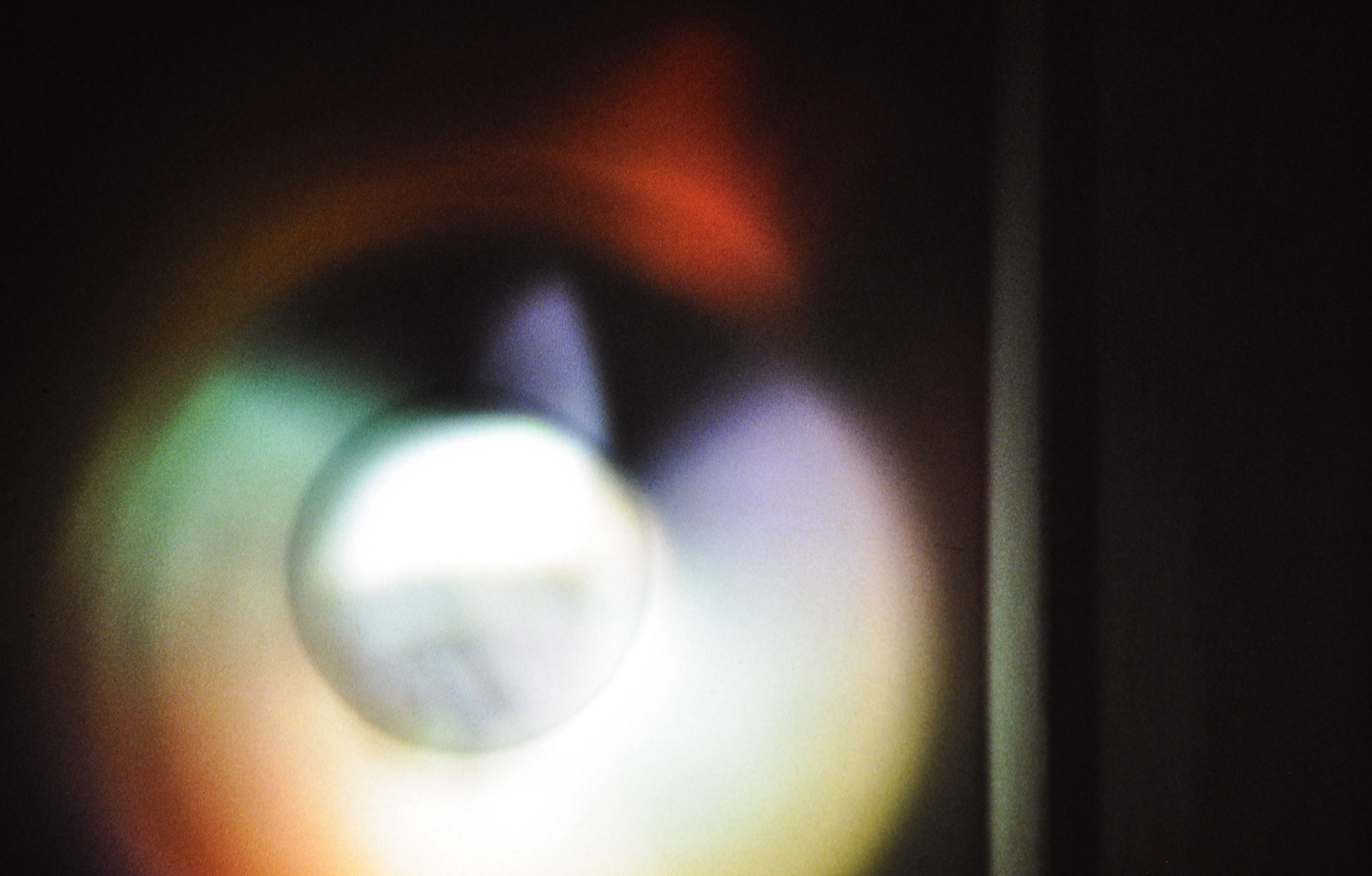


The Lint Project
Audrey Jahraus
April 16 - May 12, 1995
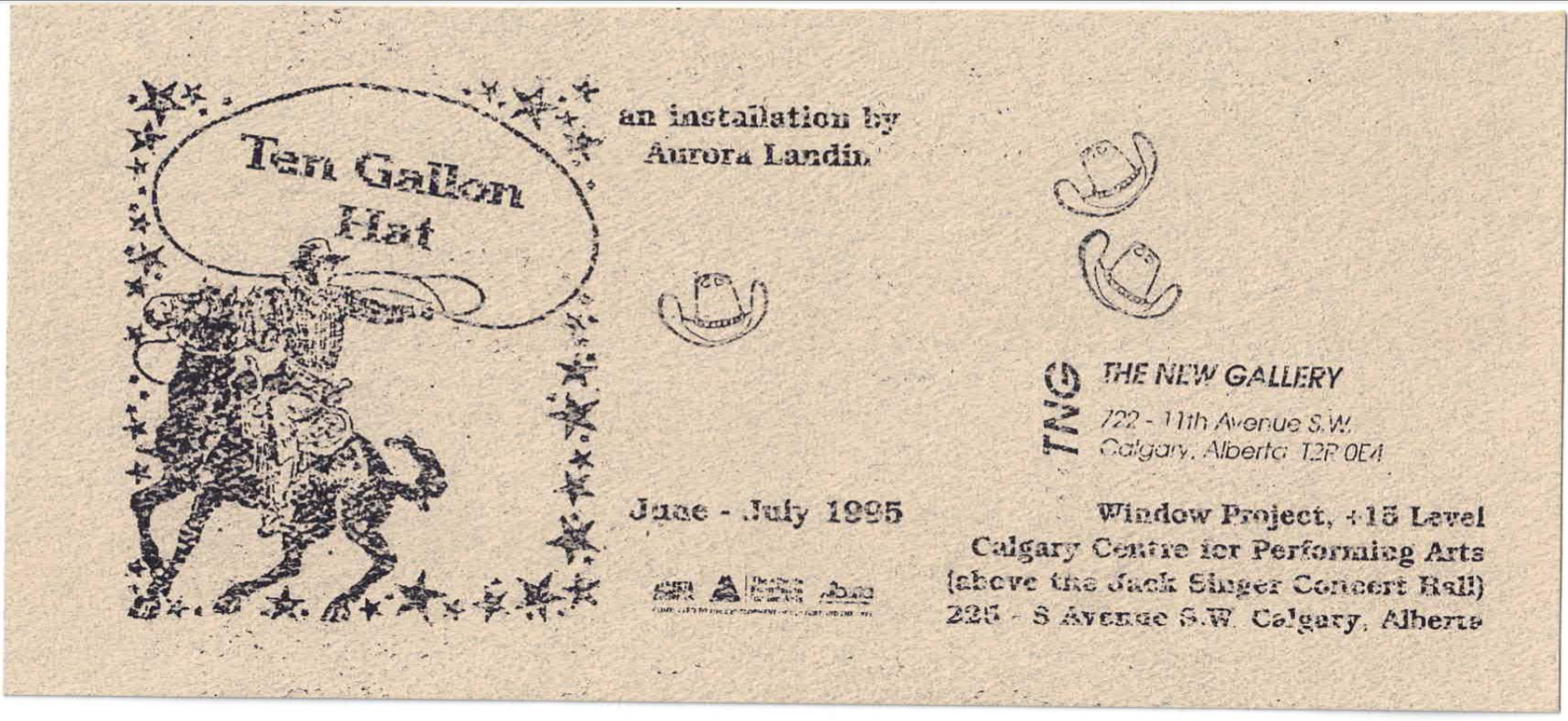
Ten Gallon Hat
Aurora Landin
June - July, 1995
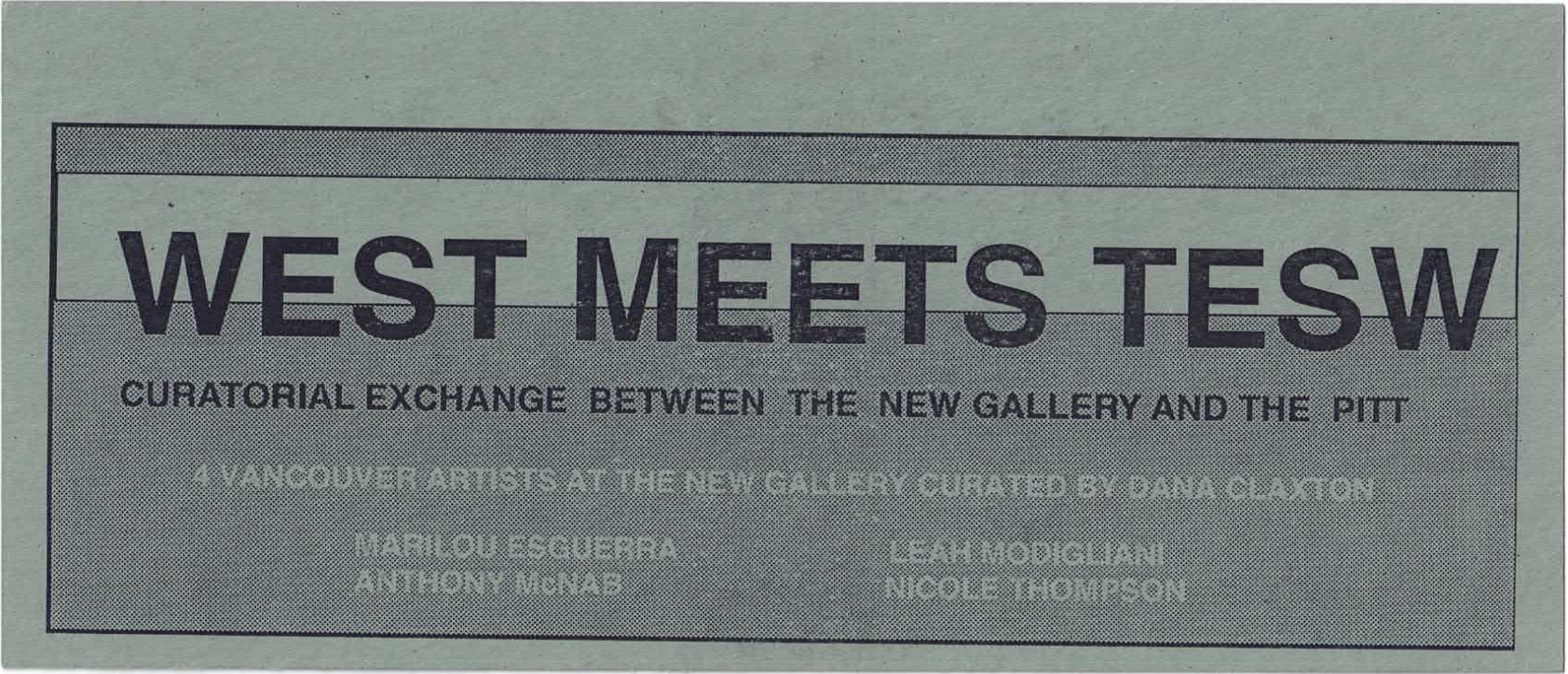
West Meets Tsew
Curated by Dana Claxton
Marilou Esguerra
Anthony McNab
Leah Modigliani
Nicole Thompson
March 17 - April 8, 1995


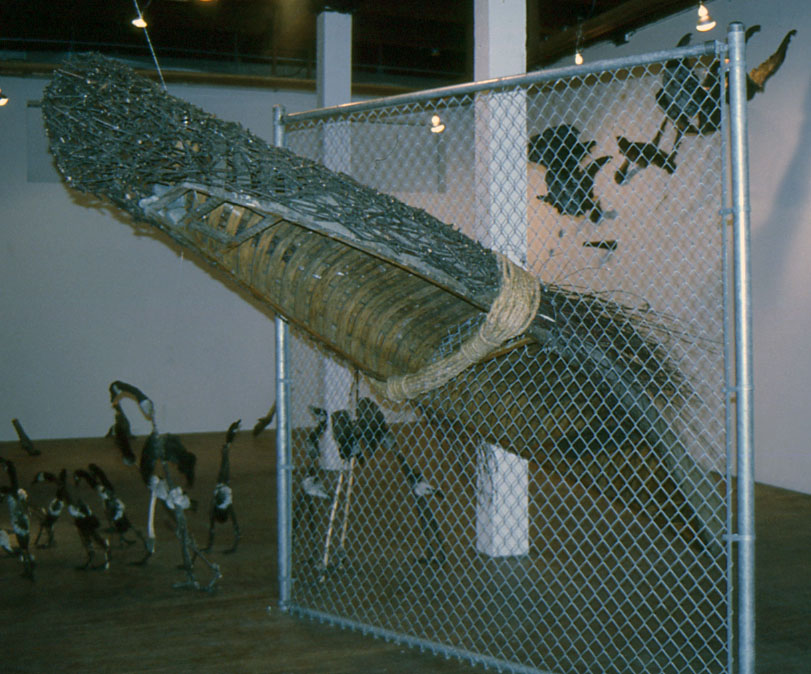
Constitution of a Nation
Curated by Suzan Dionne Balz
Alison Binder-Ouellette, Karilee Fuglem, Lisette Lemieux, Khadejha McCall, Fred McSherry, Diane Robertson, Dyana Werden
February 17 - March 11, 1995
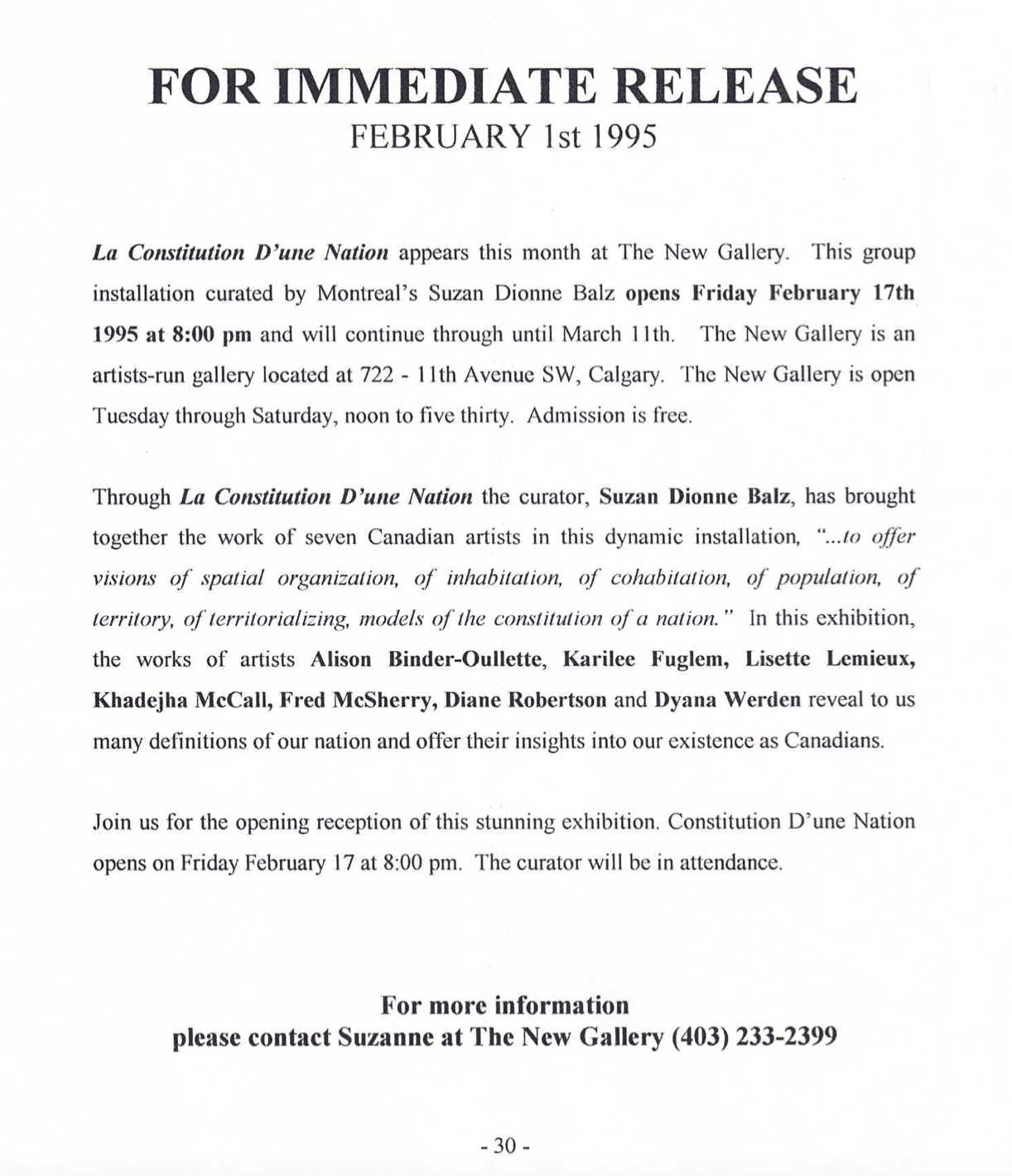

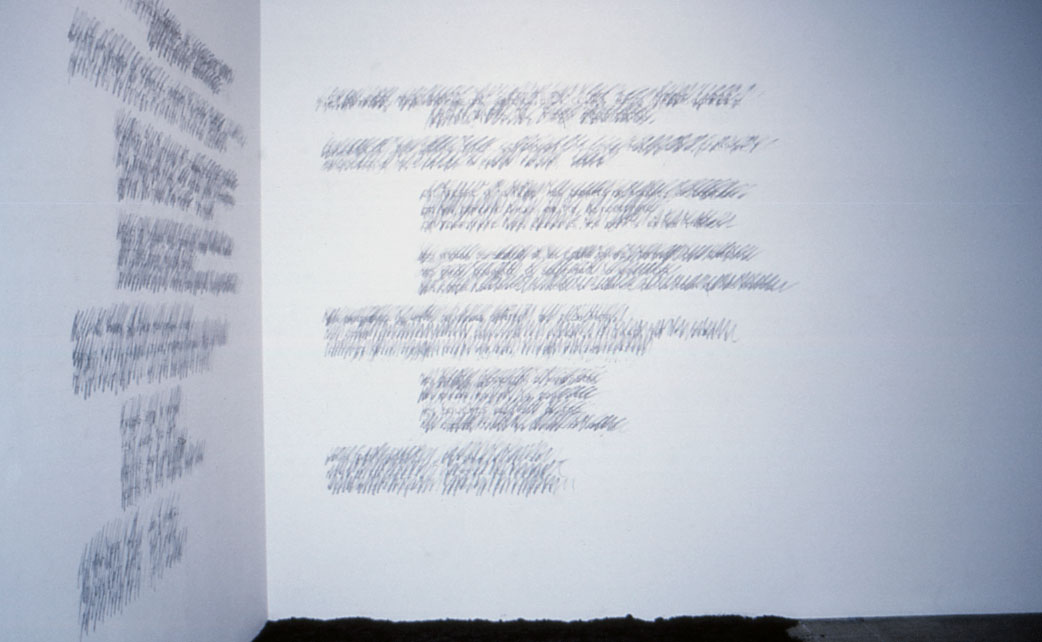
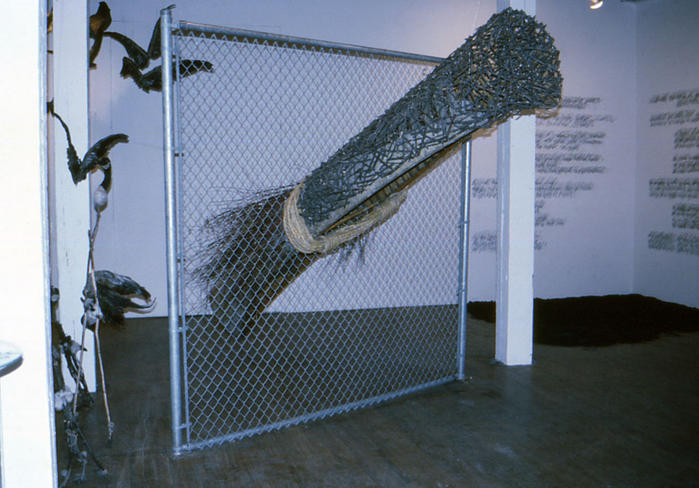
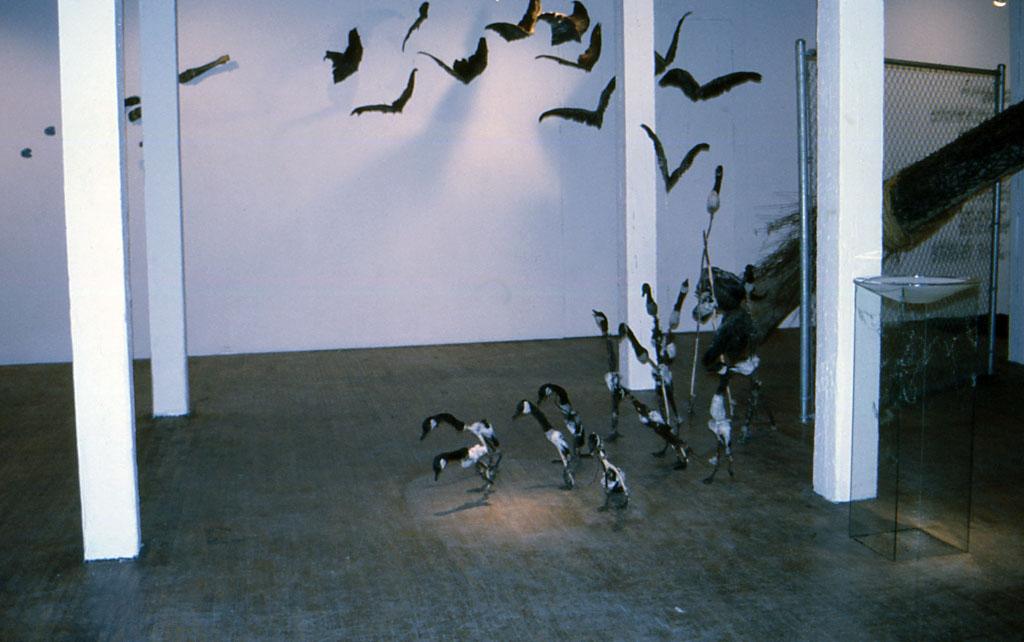
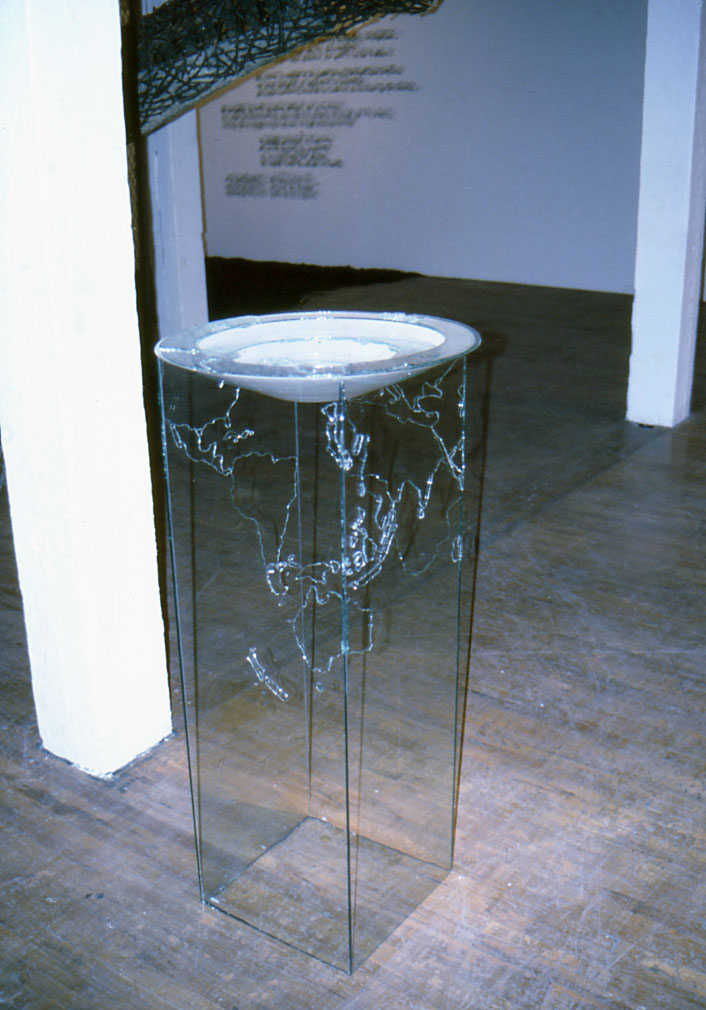
Representations of Nature
June 1994

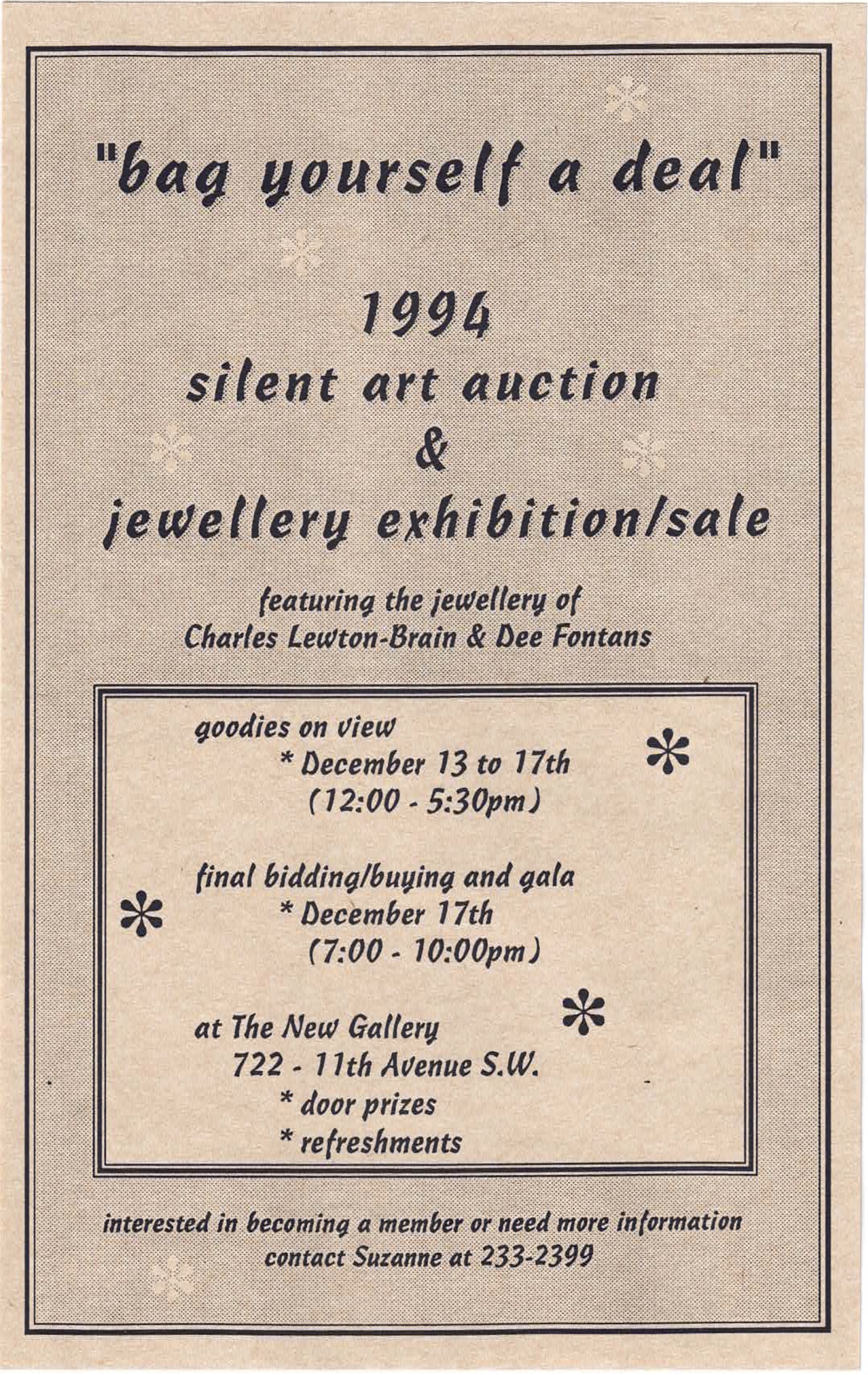
”bag yourself a deal”
Silent Art Auction & Jewellery Exhibition/Sale
December 13 - 17
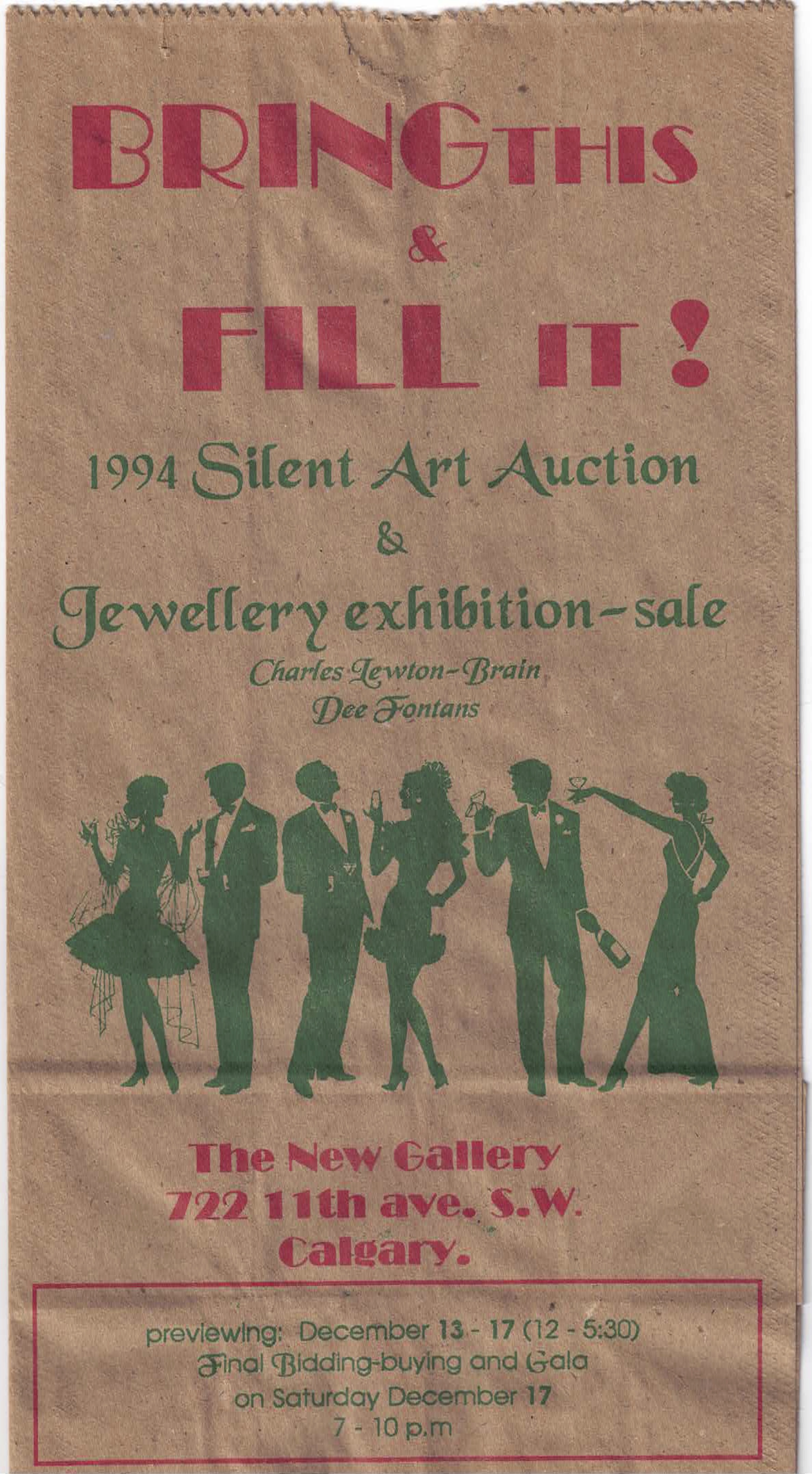


Canada Council Visiting Artist Program
Nicole Jolicoeur
November 23, 1994
November 24, 1994
November 25, 1994
The River of Blood Flows On
Rojo Nuevo Collective
April 8 - 30, 1994
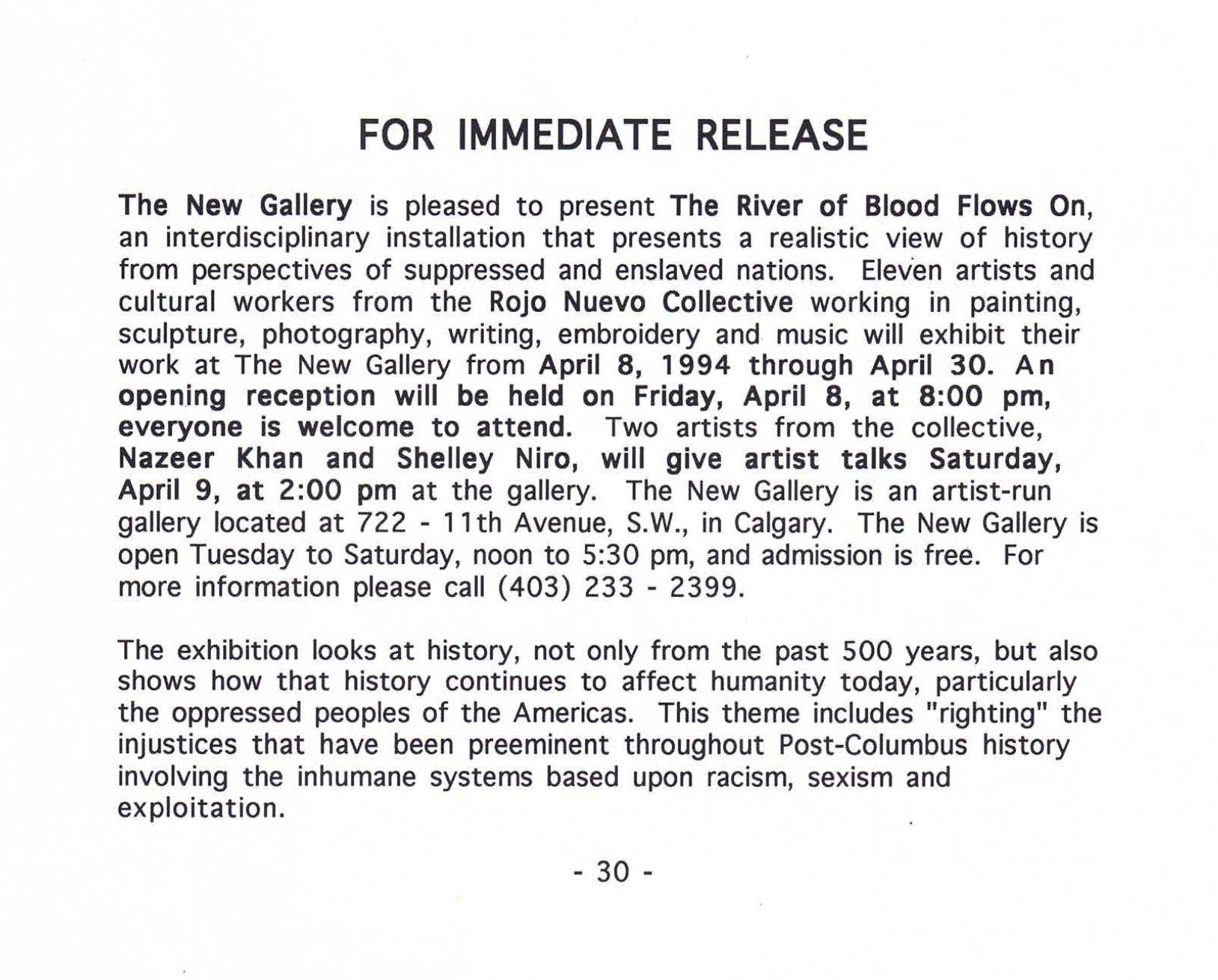
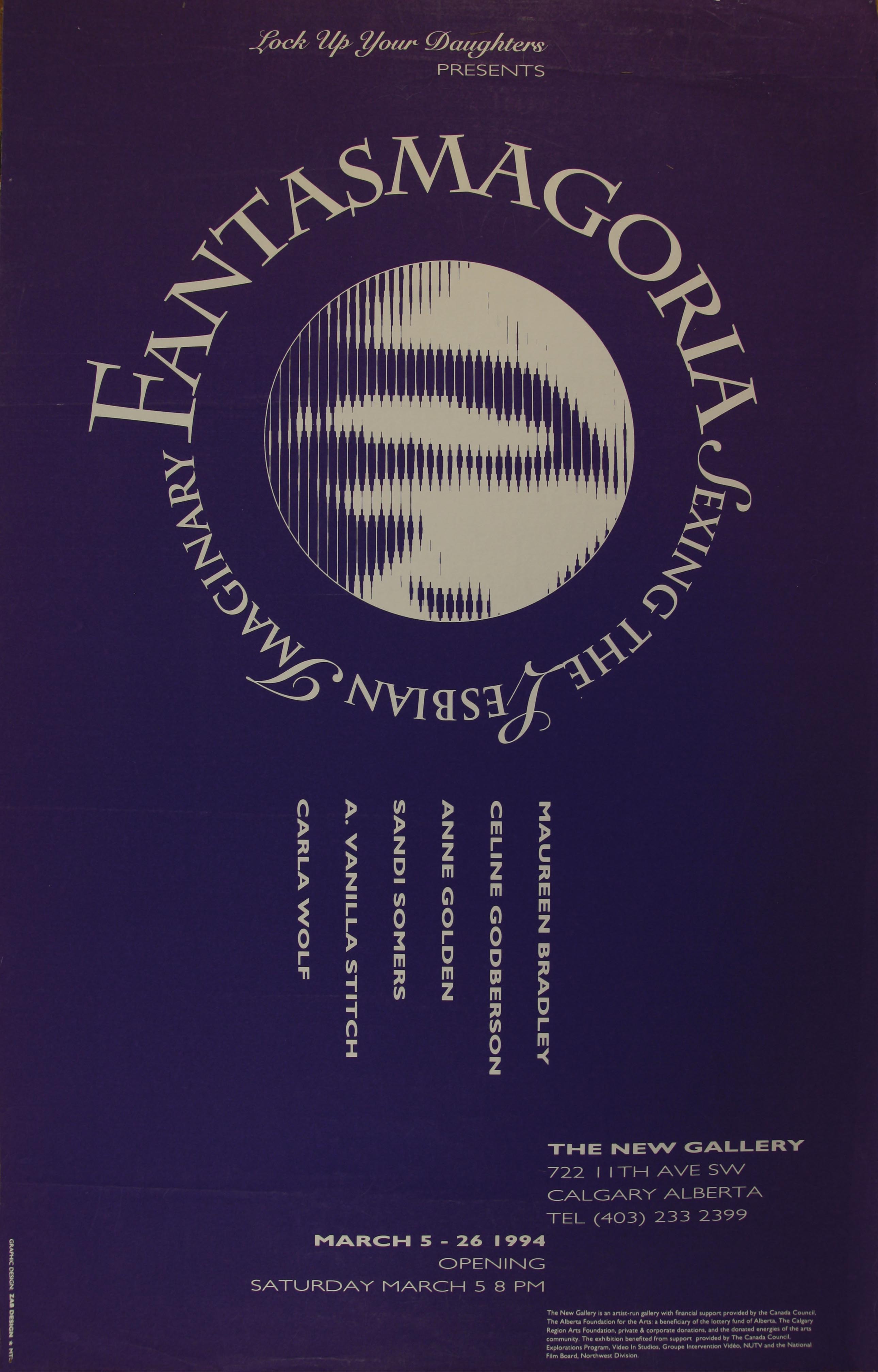
Lock Up Your Daughters presents
Fantasmagoria: Sexing the
Lesbian Imaginary
Maureen Bradley, Celine Godberson, Anne Golden, Sandi Somers, A. Vanilla Stitch, Carla Wolf
March 5 - 26, 1994
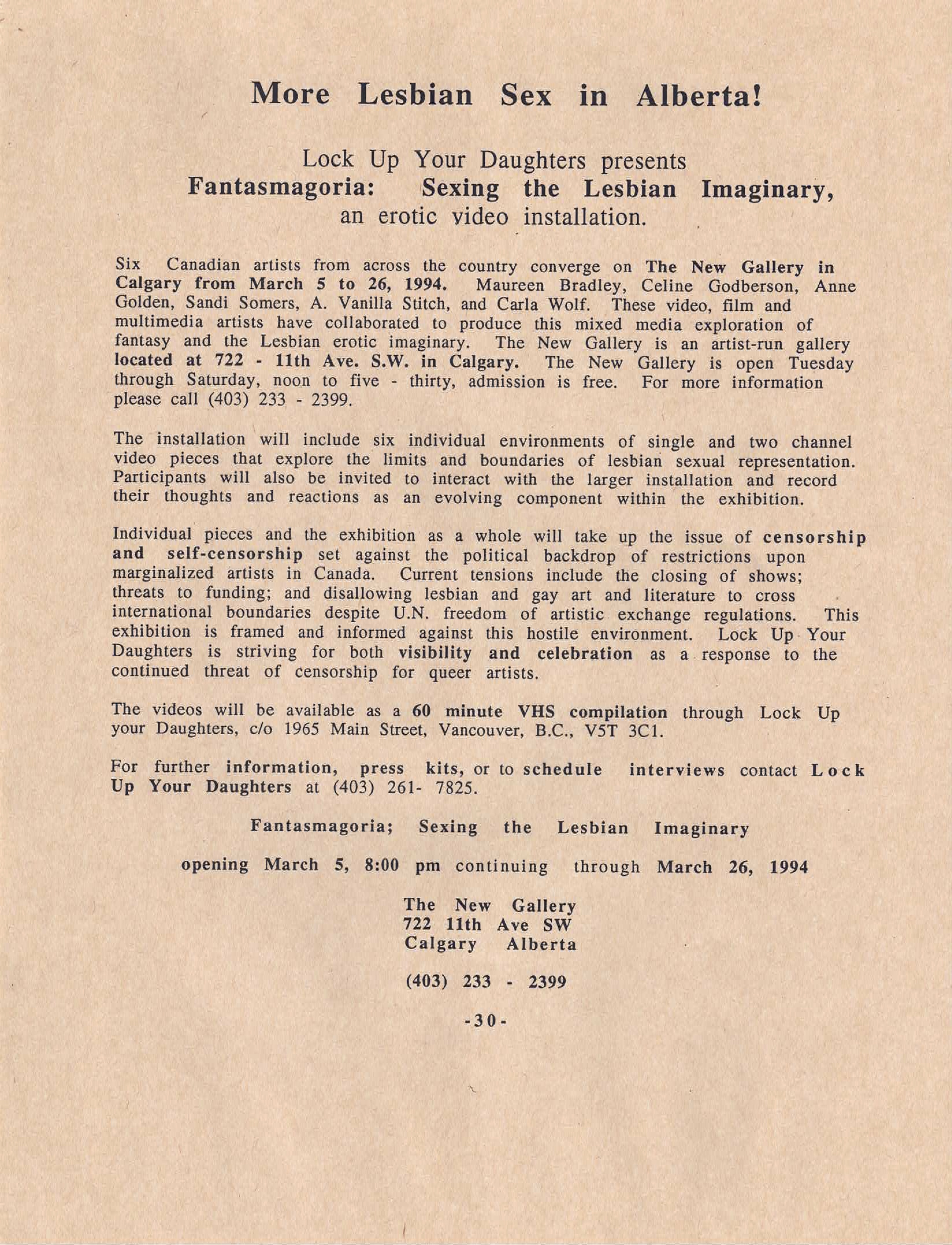
Everybody Loves Dessert
The Green Fools:
Dean Bareham, Christine Cook, Peter Stinson
October 16 and 17, 1993
The Project on Women + Mathematics
Lynn Hughes
April 8 - 24, 1993
Hochelaga
Robert Houle
June 13 - July 3, 1993
The Rubber Tree
Gordon Filewych
Curated by John Heintz and Maureen Hodgan
October - November, 1993
A Moth in a Glass
Alexandra Keim
Curated by Doug Zech
May 1993
Red Reflection
Yasufumi Takahashi
August 9 - 31, 1996
Technology as Art II
Colleen Kerr, Nancy Paterson and Sheila Urbanoski
Curated by Judy Cheung
May 3 - 25, 1996
Real Martian Gas Music
Street of Crocodiles
Being Human
Paul Lukeman & Laine Hoogstraten
October 7, 1996
Still Life
Sadashi Inuzuka
November 8 - 30, 1996
1500 Shadows
One Yellow Rabbit
June - December, 1992
Die Frage nach der Architektur oder Sozio-architektonisches Mauer-Gefüge
Urs Kick
September - October, 1991
Mz. Frankenstein
Tanya Mars
Collaborators: Sandra Tivy and Colleen Kerr
April 7 - 22, 1992
Intimacies
Janet Cardiff, Charles Cousins, Nelson Henricks, Jon Winet
May 7 - 9, 1992
Reading
Clifton Joseph
July 19, 1992
Recovery
Leslie Reinhold Pinter
November 6 - 30, 1991
Mentoring
Manitoba Artist for Women’s Art: A Catalytic Situtation
An exhibition of work by:
Eleanor Bond, Shirley Brown, Sheila Butler, Aganetha Dyck, Bev Pik, Reva Stone, Diana Thorneycroft, Diane Whitehouse
February 6 - 23, 1991
PULSE: An Intermedia Festival
Jane Evans, Vera Lemecha, André Jodoin, Jeff Norgren, Peter Stinson, Grant Poier, Tim Westbury
January 15 - 23, 1991
Neighbours
Brent Hume
May 8 - 25, 1991
Video Maligna
Clark Nikolai
May 8 - 25, 1991
Lecture
CARFAC Copyright Collective
Marcia Johnson
June 8, 1990
Public Collection
André Jodoin
June 6 - 23, 1990
Lecture
Doug Melnyk
March 9, 1990
Square Deal Cubed
Miniature Art Exhibition & Silent Auction
December 4 - 15, 1990
Lecture
Paul Hewson and Linda Marie Walker
April 14, 1990
Media Blitz II
November 28 - December 8, 1989
The Journey
Colleen Kerr
February 7 - 25, 1989
Experience
Gail Hill
November 8 - 25, 1989
Simple Solutions to Easy Problems
Geoffrey Hunter
June 7 - 24, 1989

Heatwave II Opening:
Politics and Fireworks & Familiar Songs
Steven Heimbecker
July 4, 1989
Heatwave
Linda Apps, Susan Balz, Cynthia Boisvert, Vera Greenwood, Izabela Owoc, Mark Walton
July 6-23, 1988
Mr. Caldwell
Micah Lexier
June 8 - 25, 1988
Lecture
Ivo Costa Mesquita
November 27, 1988
Judy Radul
October 5, 1988
”as snow before a summer sun”
Images of recent events at Little Buffalo
Jackson Mitchell
November 2 - 19
Performance
Nigel Rolfe
November 9, 1987
Devices
Angus MacKinnon
November 28 - December 12, 1987
Recent Paintings
Elsbeth Rodger
October 7 - 25, 1987
Rotation 35
Janine Hall
Selected by Nelson Henricks
December 3 - 12, 1987
Rotation 33
Marcia Perkins
Selected by John Hall
November 18 - 21
We Want Your Money
Rob Milthorp and John Will
November 5 - 23, 1986
Artist Residency
Jürgen Kierspel
October 8 - 26, 1986
Pièce de Résistance:
Danse Multi-Média
Dena Davida & Louise Parent
April 25 & 26, 1986
Guatemala: The Road of War`
Freda Guttman
Exhibition November 29 - December 14, 1986
Exposure Three
Orange/Earth and Other Images
Amy Gogarty
February 4 - 15, 1986
Making Art, Making Meaning, Making Money
Chris Creighton-Kelly
April 3, 1985
Chris Creighton-Kelly by Marek Goertz
When I Was a Cowboy
Chuck Stake Enterprizes & Mark Dicey, assistance from Ann Given
June 3 - 20, 1985
When I Was a Cowboy featured over 400 artworks by 350 artists from 35 countries. This exhibition later traveled to Modern Realism Gallery, Dallas, TX.
Aurora Borealis
René Blouin
October 12, 1985
THE FIRST TEN:
The Exhibition
Jack Anderson
Quentin Caron
Mark Dicey
Alan Dunning
Richard Edwards
Gordon Ferguson
Wayne Giles
John Hall
Joice Hall
Don Mabie
Walter May
Rita McKeough
Ron Moppett
Arthur Nishimura
Clive Robertson
Bill Rodgers
Helen Sebelius
Blake Senini
Brad Struble
Nancy Tice
Sandra Tivy
Wendy Toogood
Tim Watkins
Ken Webb
John Will
February 19 - March 15, 1985
ARTEXTS
Kenneth Coutts-Smith
November 30 - December 14, 1985
Currents
Jack Anderson, Vern Hume, Gerald Hushlak, Grant Poier, Kyle
Wagner, John Will
February 8 - 25, 1984
Ernie: Alive and Still Kicking
Ground Zero
June 1 - 3, 1984
Views of the Calgary Tower
July 3 - 14, 1984
Toy Number 1600AD
Michael Zeindler
July 1 - September 29, 1984
How a Painter Evolves to Electronics and Video, A Personal Development
Tim Forcade, Sound Imagist
October 24, 1984
Visiting Artist Program
Lecture
Mark Prent
January 26, 1983
Quantum Environment
Patricia Hardy
September 14 - October 1, 1983
Anna Gronau
March 24, 1983
Calgary Society of Independent Filmmakers’ Theatre
Co-sponsored film screening. Gronau was the second of three experimental filmmakers.
3 Experimental filmmakers was a series from The Funnel, an experimental film theatre in Toronto.
r Douglas Berquist at Off Centre Centre, March 24, 1983. Photo: Barry Saunders
Thoughts of a Dry Brain
A Performance by Richard Fowler
June 24 and 25, 8:00 P.M. at Off Centre Centre
also at The World Theatre Mosaic, Pumphouse Theatre, July 02, 8:00 P.M.
Perpetual Dependance Integrator
Juan Geuer
May 4 - 21, 1983
Radio Radio
10 Years on the Air
The Tenth Anniversary Celebrations
August 28, 1982
In Concert
Sitcomm
June 5, 1982
A Party Piece
Charlie Fox, Brian Hoey, Debbie Lepley
December 4 - 18, 1982
Off Centre Centre Poets: Two Montreal Poets
Tom Konyves & Ken Norris
May 27, 1982
”Teiresias”
A Play on Verse and Voice
Script by Will Ross
Music by Rosemary Smith
VOICES: Tracy Archinuk, Wade Bell, Marcella Bienvenue, William
Carlson, Will Ross, Betty Ann Starr, Sandra Tivy
VOICES/MUSIC: Rita McKeough, Ana Cristina Werring
MUSIC: Rosemary Smith, T.D. Turner
COSTUMES: Jane Ross
October 29, 1982
Jupitter-Larsen, Lecture on Nothingness, at OFF CENTRE CENTRE, July 10, 1981
The Nothing Show
Gerald Jupitter-Larsen
July 10 - 25, 1981
Jupitter-Larsen, “Opening of the Nothing Show,” performance, OFF CENTRE CENTRE, July 10, 1981
Jupitter-Larsen, “Opening of the Nothing Show,” performance, OFF CENTRE CENTRE, July 10, 1981
The Killing Room: An Introduction
Walter Jule
April 14 - May 2, 1981
Penguin Ponk Goes West
Matchbox Purveyors
October 15, 1981
Video Screening:
Marconi Amplified
Discussion facilitated by Mark Frutkin, Dr. Robert Arn, and Willoughby Sharp
November 18, 1981
Geometrisations
Serge Tousignant
May 12 - June 6, 1981
The Jumble Sale:
an O.C.C. Rummage Sale
November 29, 1980
Monuments
September 10 - October 4, 1980
Victor Anselmo
Ryan Arnott
Derek Besant
Denis Blue
Ian Cook
Brian Cooley
Judy Davis
Alan Dunning
Pat Durr
Brian Dyson
Wayne Friesen
Tommie Gallie
Trevor Gould
J. E. Hall
Nicholas Hall
R. A. Hambleton
Pat Hurst
Bob Iveson
Jupitter-Larsen
Grant Leier
Franco Lo Pinto
Walter May
Cam Millhouse
Peter Moller
Dave More
Jeff Stellick
Rosemary M. Smith
Harry Stooshinoff
Bradley Struble
Sandra Tivy
Tim Watkins
Jane Zednick
Music at Off Centre
Steve Lacy Quintet
October 20, 1980
Bricks Go Up and Ladies Fly
Mary Jo Fulmer and Leslie Altman
October 30, 1980
Reading
Gerry Gilbert
December 5, 1980
Photo: Taki Bluesinger
It’s My Party
Mary-Jo Fulmer
June 18, 1979
Tomatoes
Shirley Hall
October 30 - November 10, 1979
Hot Town! Summer in the City
Mary Jo Fulmer
July 25 & 26, 1979
Doors
Steve Burger
October 3 - 13, 1979
Cabin Fever
Charlie Fox
December 4 - 11, 1979
TRIO
Maury Coles, alto sax
Randy Hutton, acoustic guitar
Peter Moller, percussion
November 26, 1978
A Showing of Photography
Mad Madeleine (Madeleine Azad)
May 25 - June 18, 1977
Judy Davis, Shirley Christianson, and Wendy Walsh
April 5 - 23, 1977


